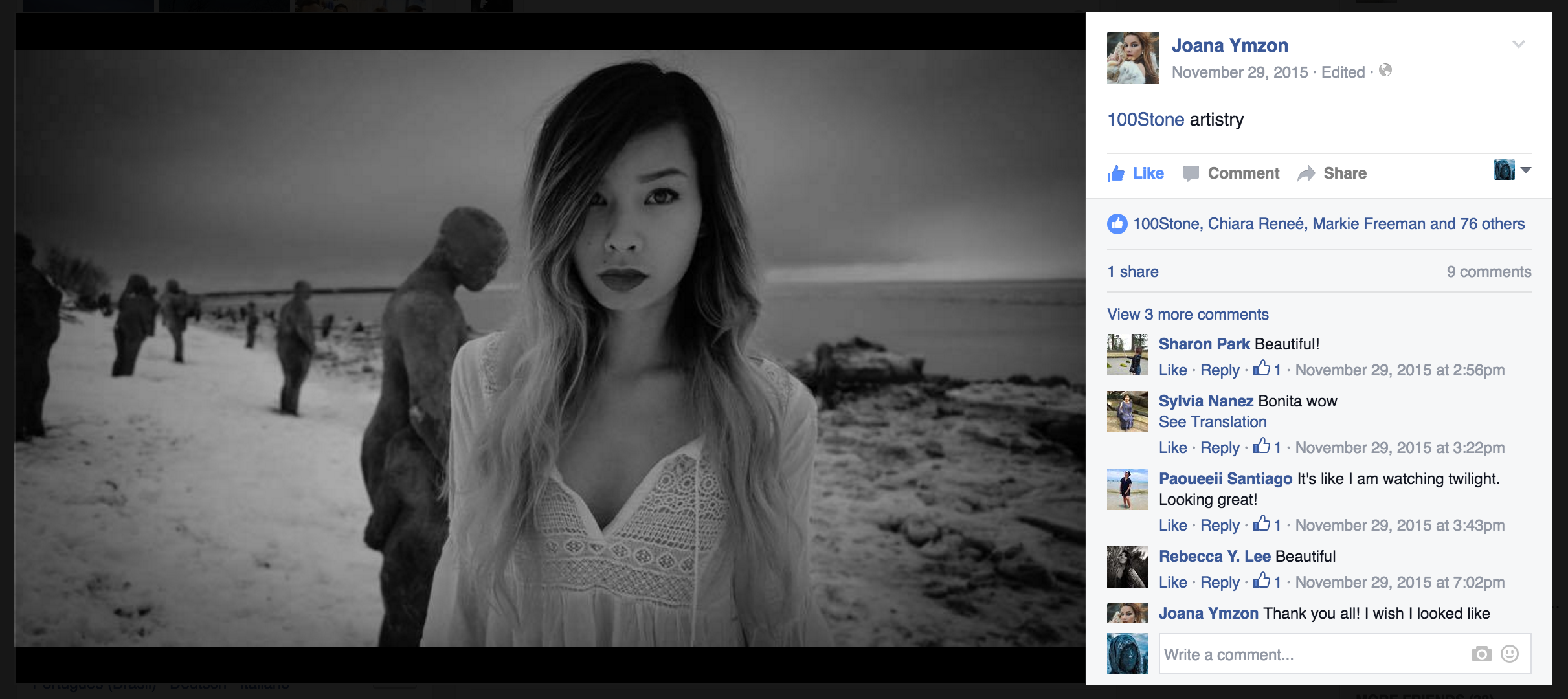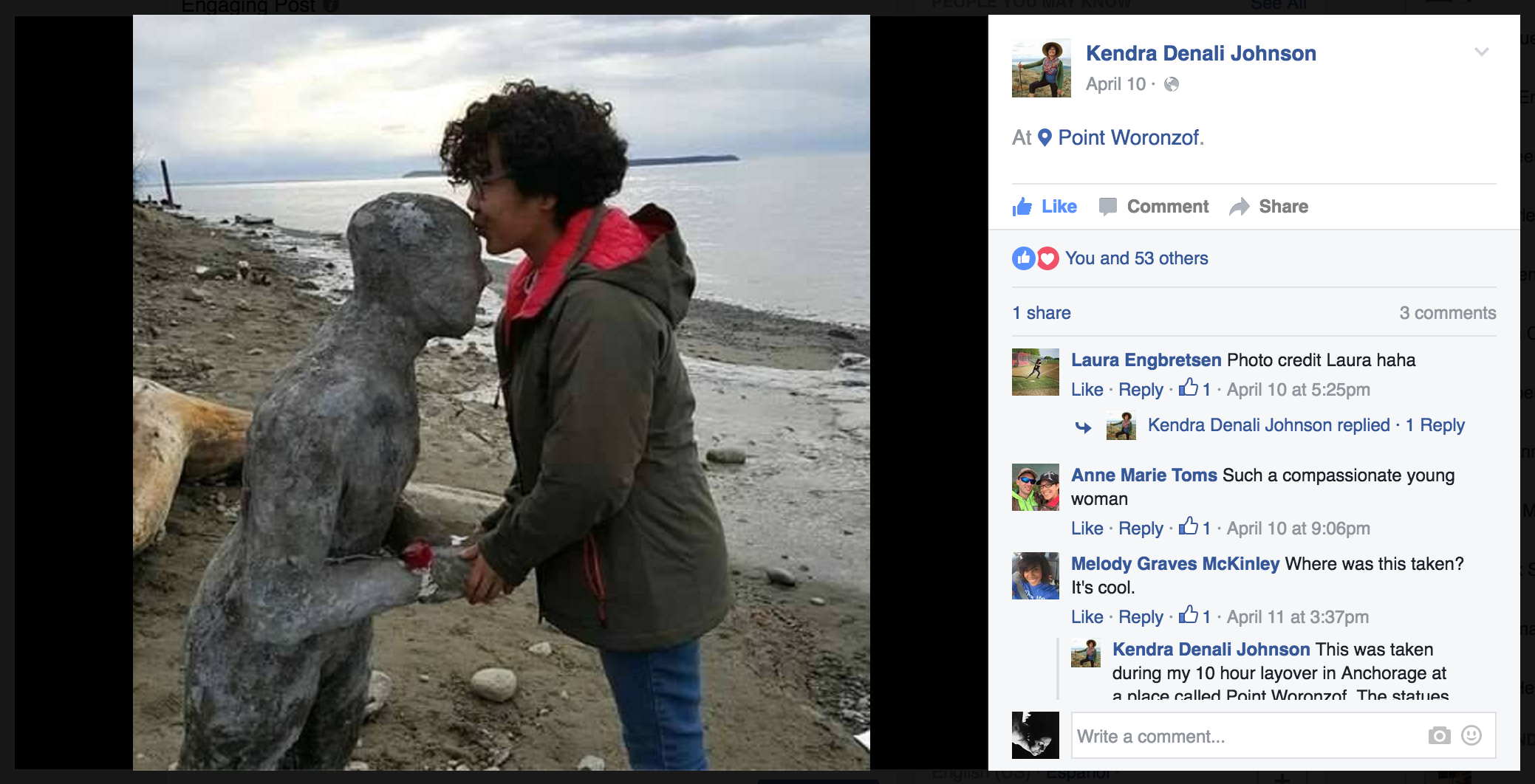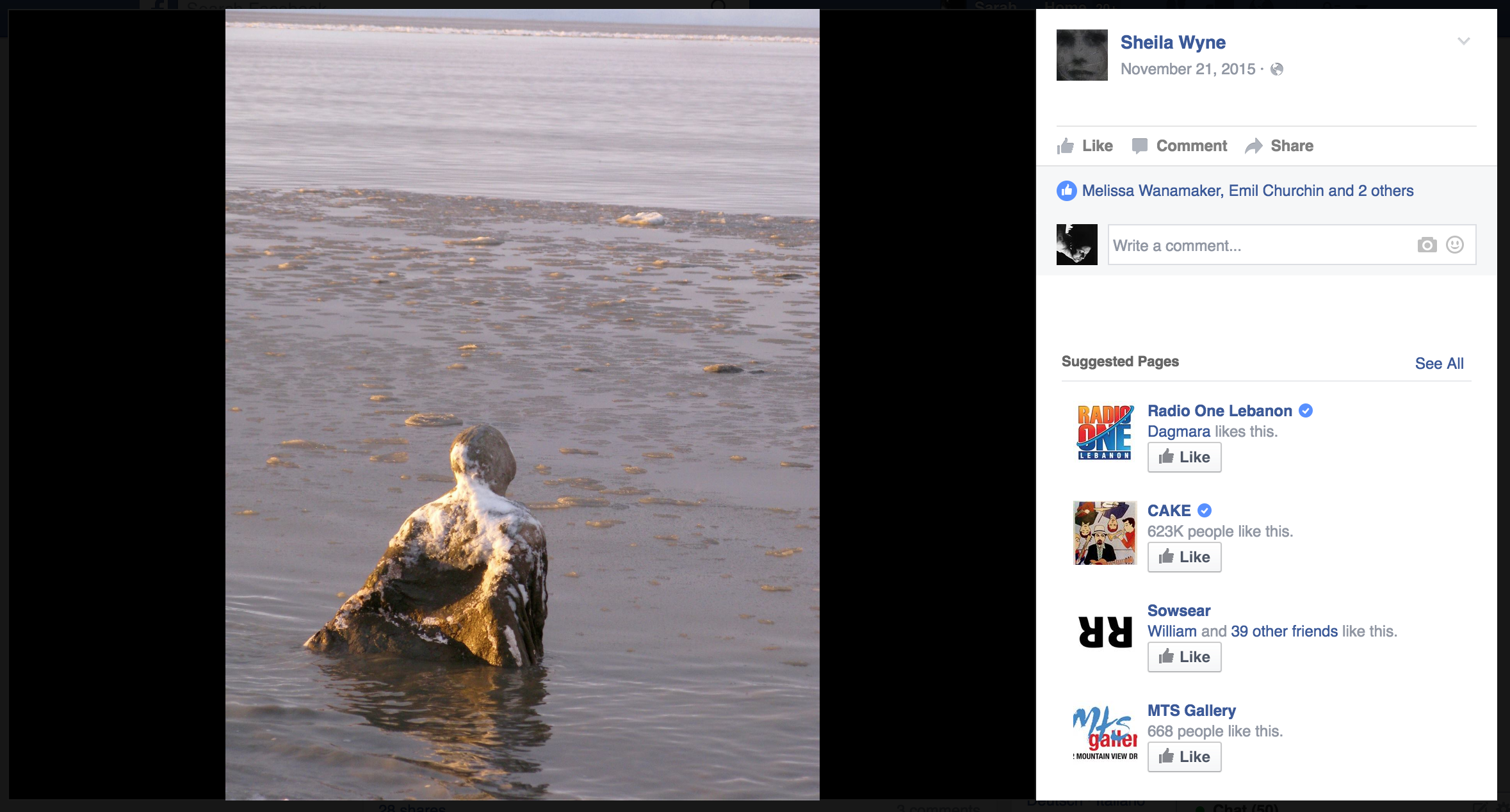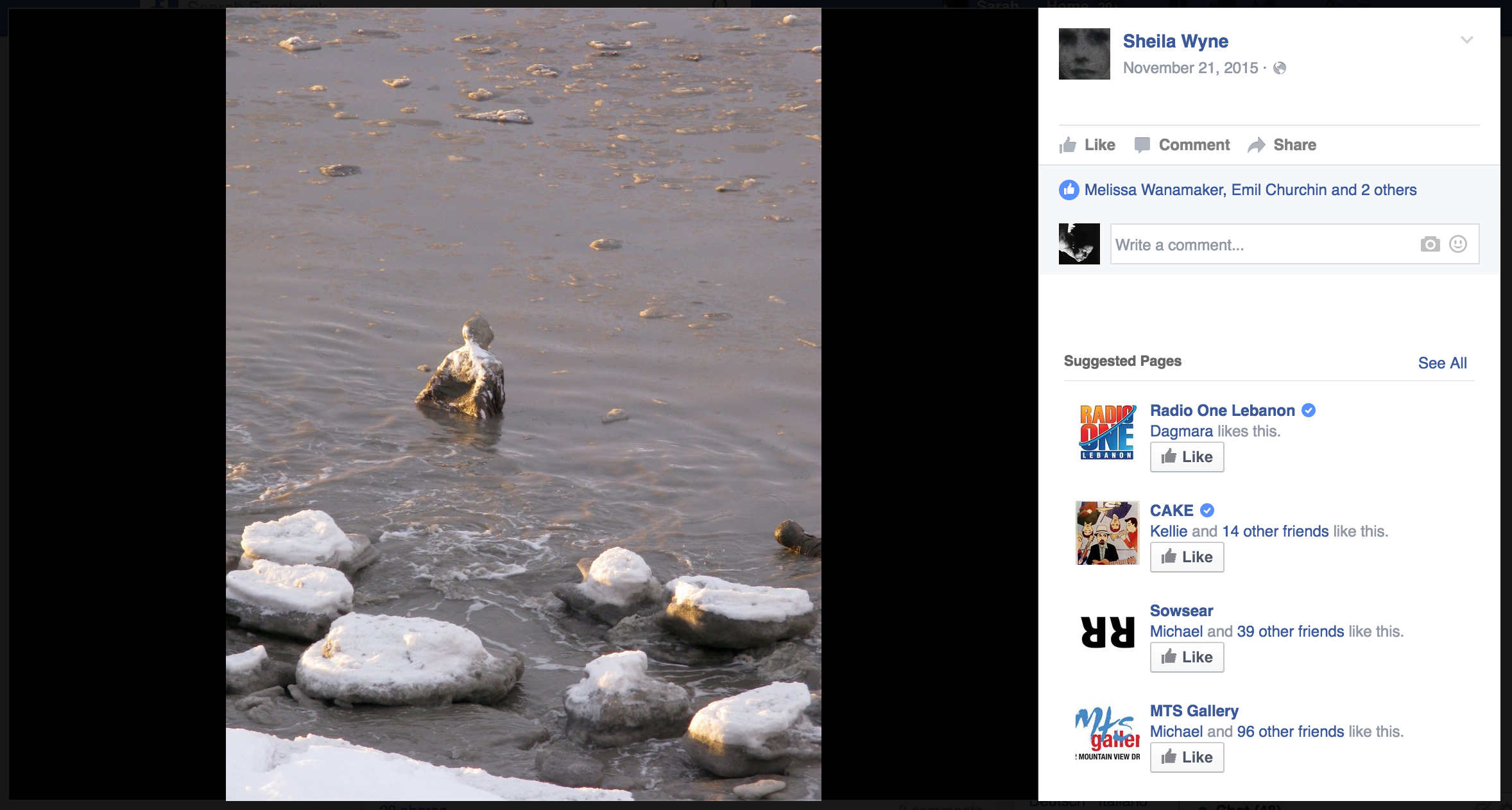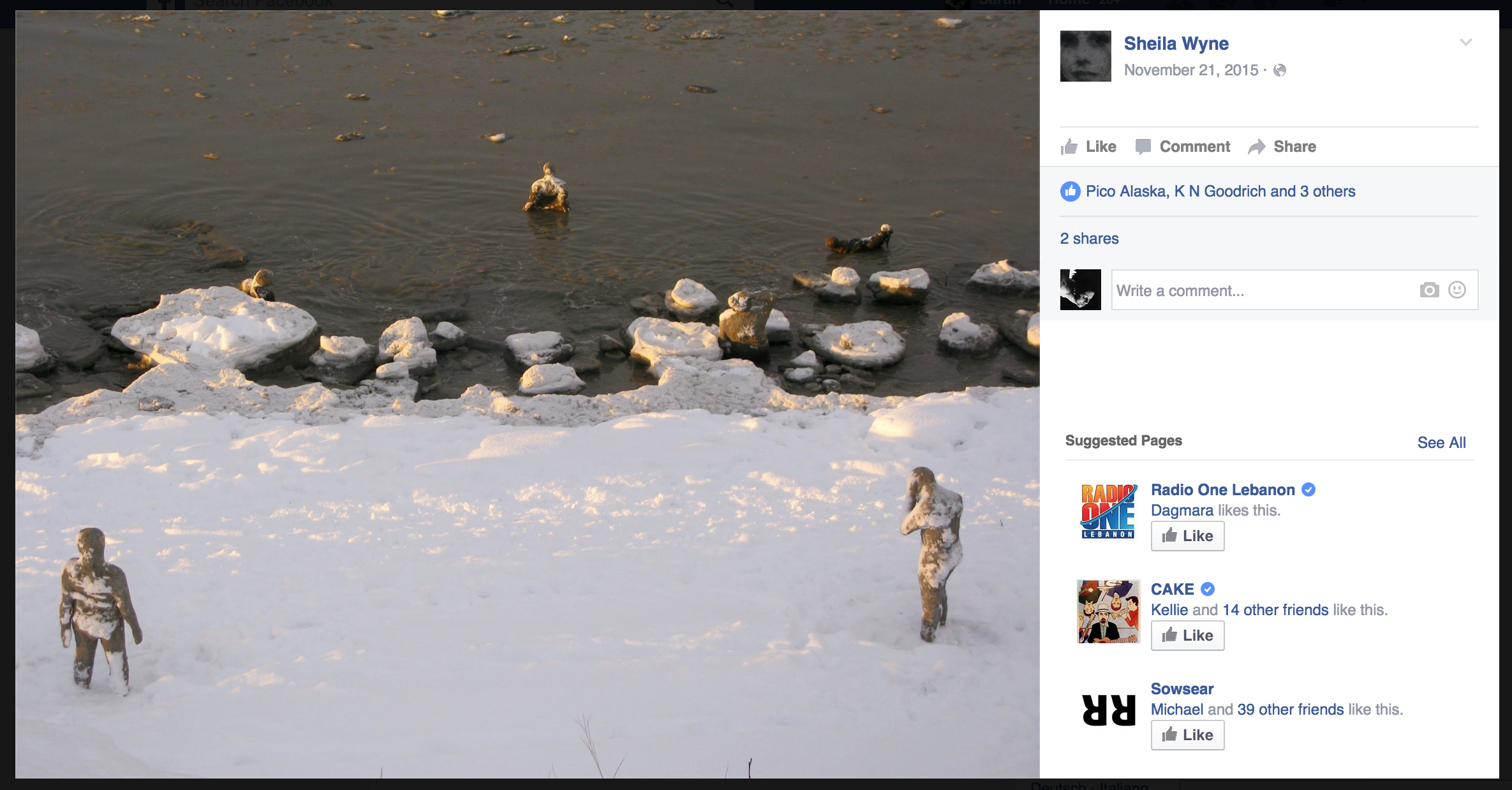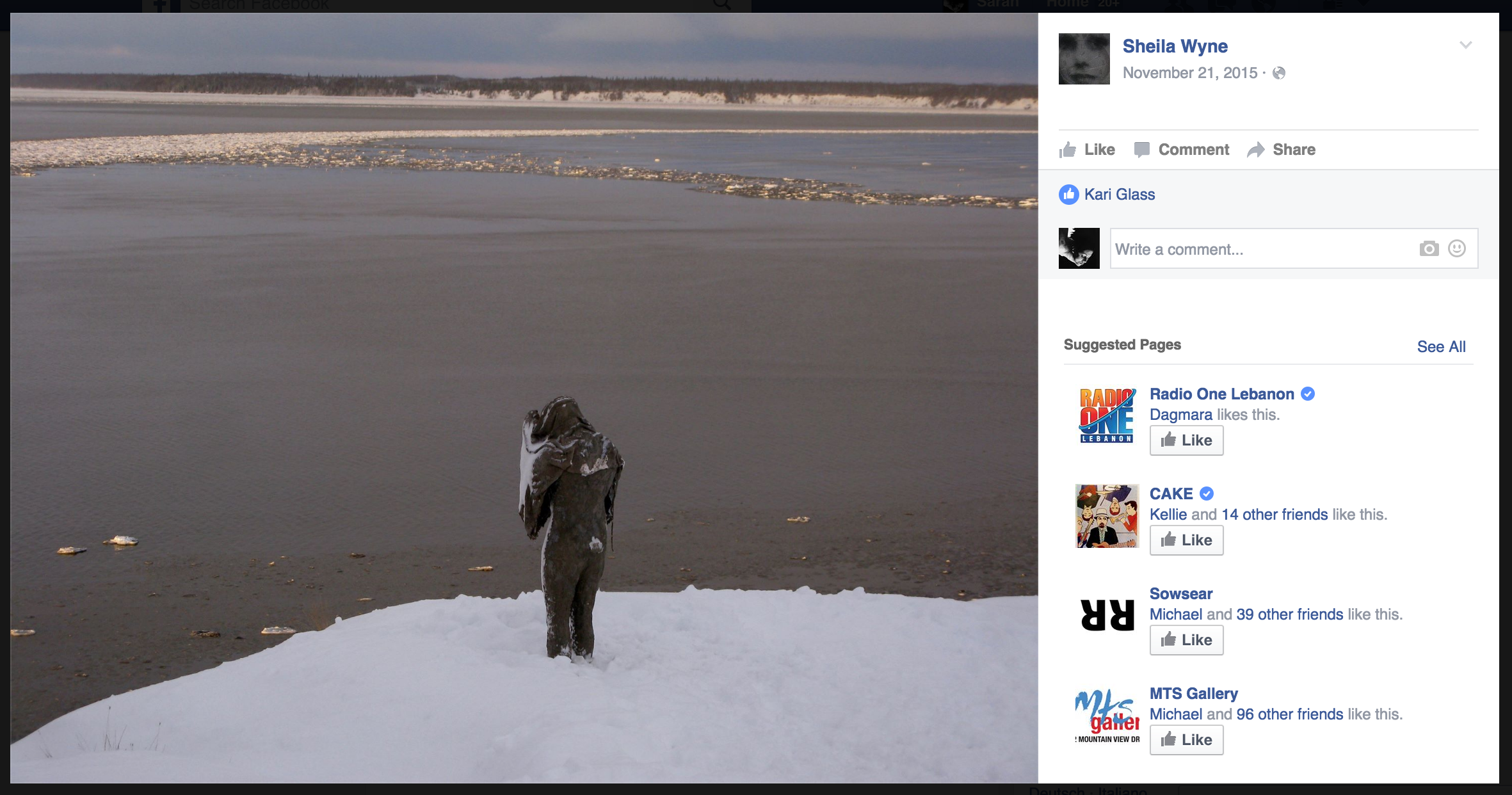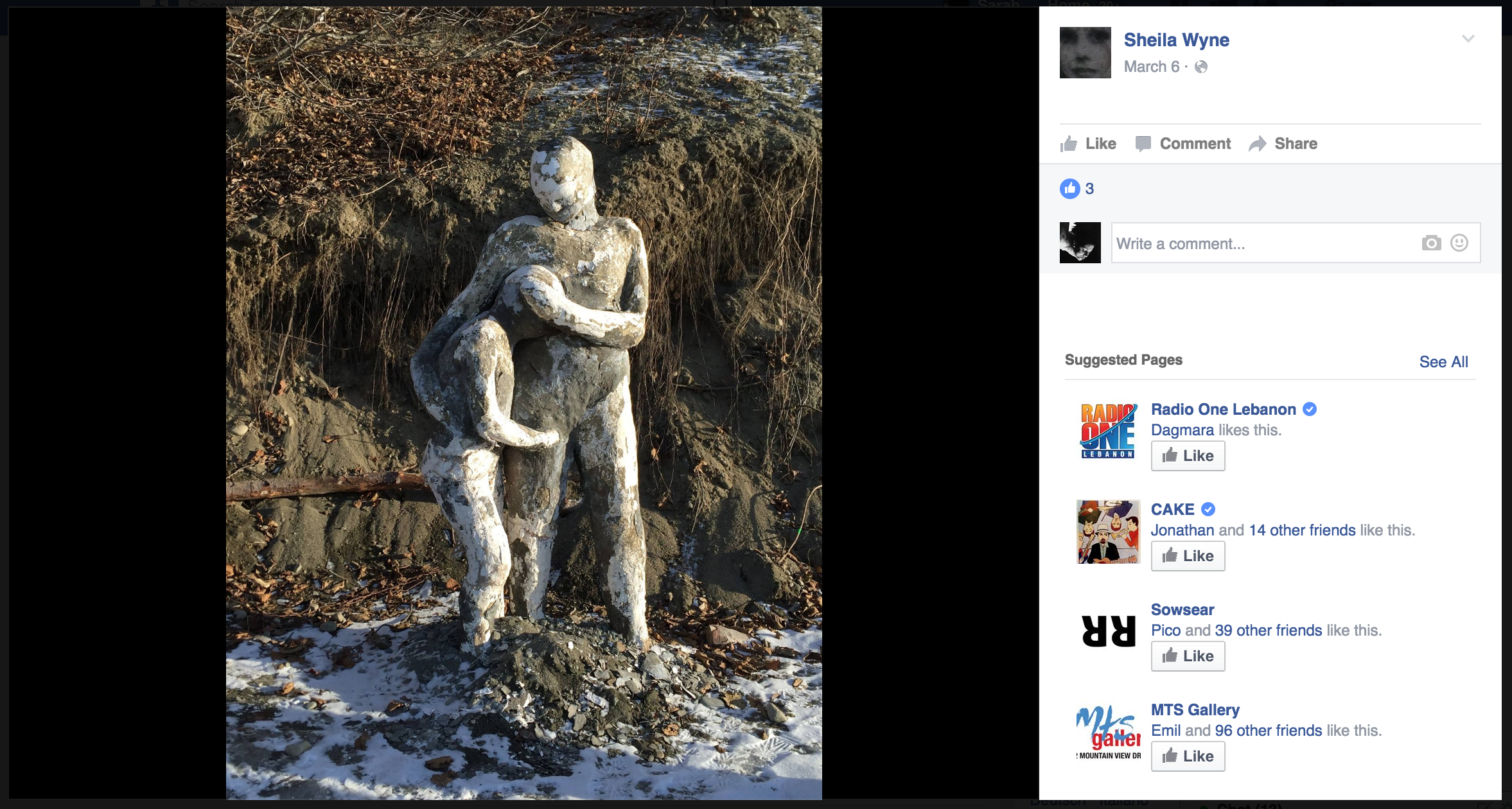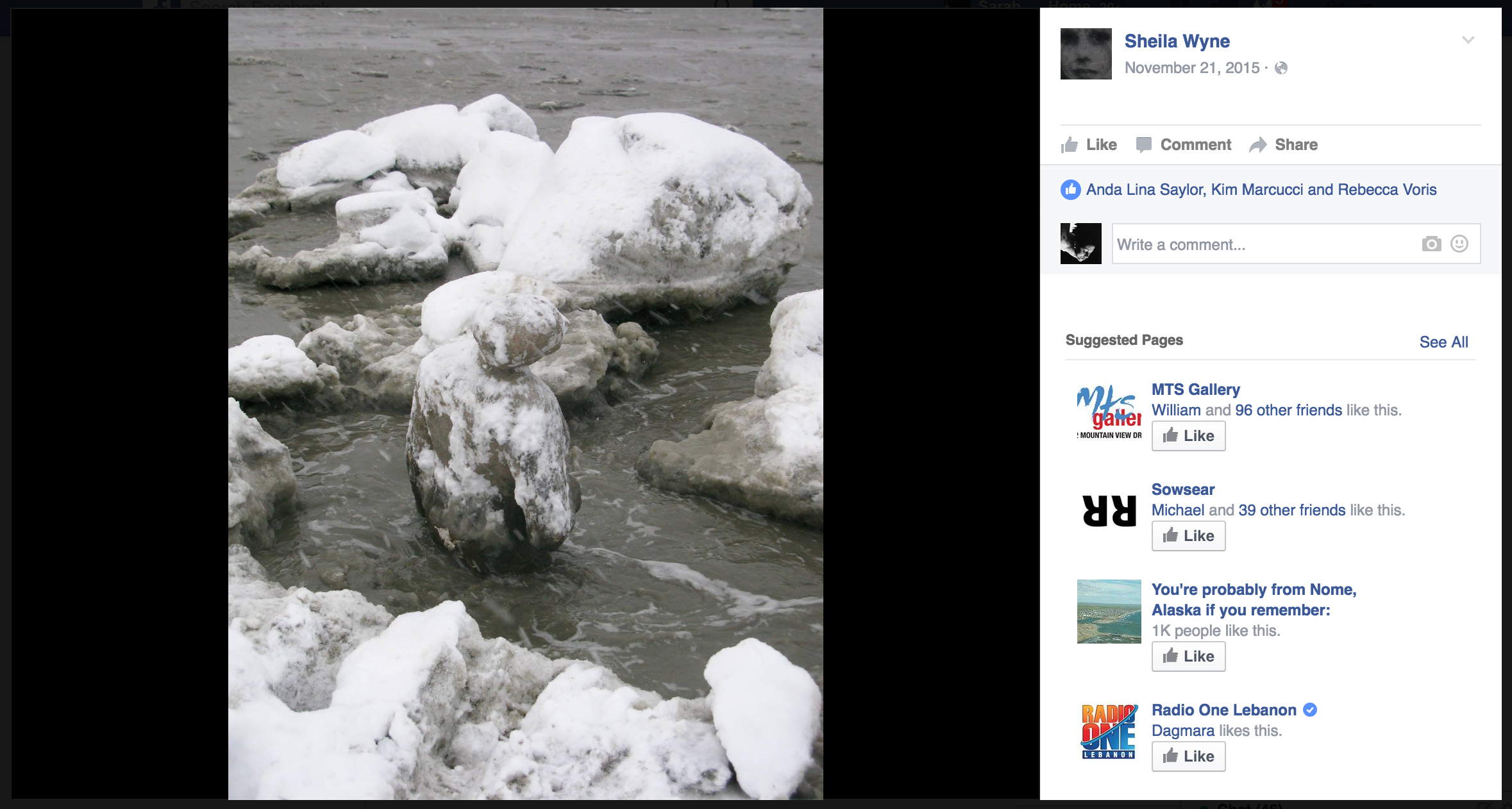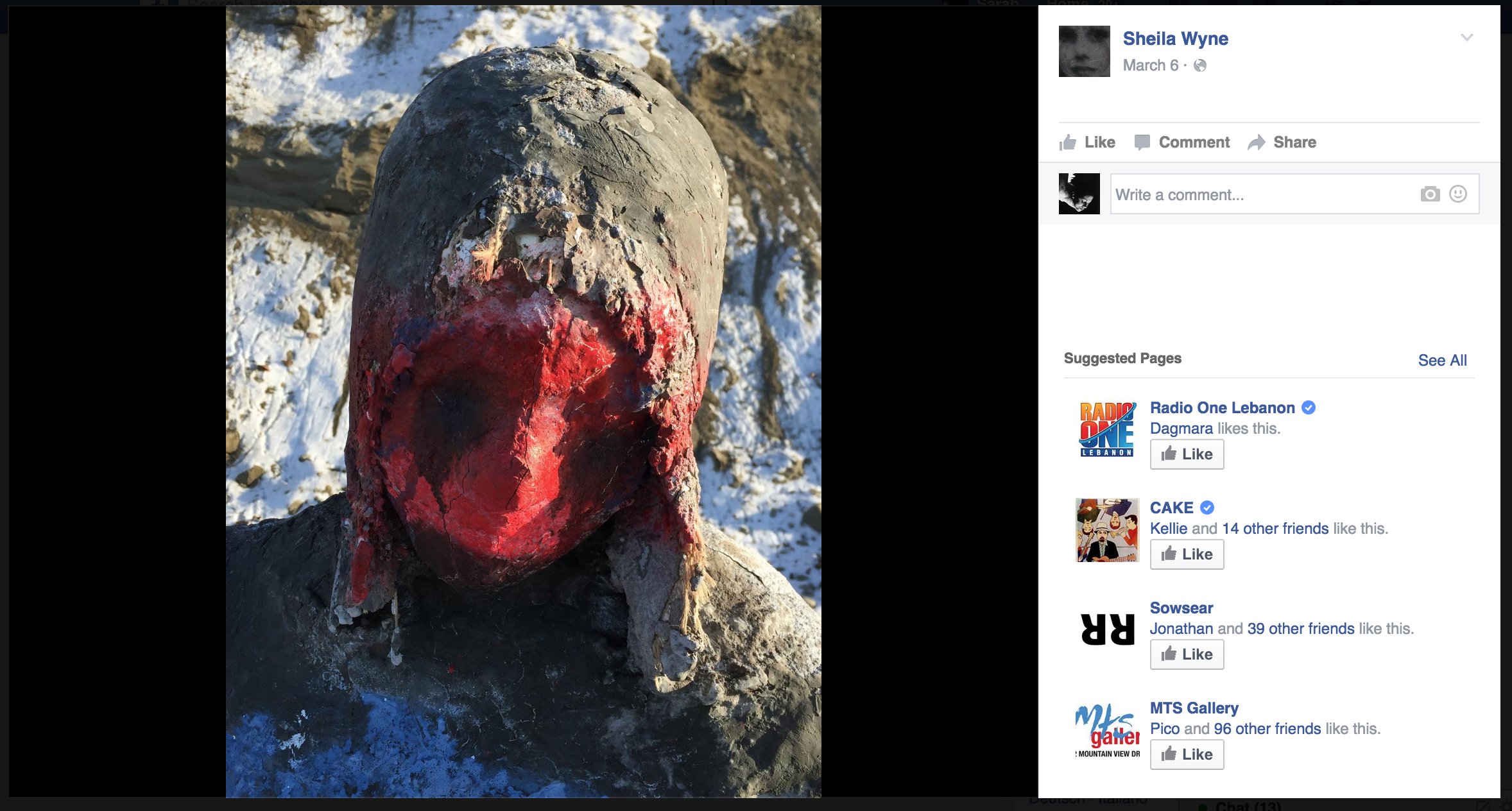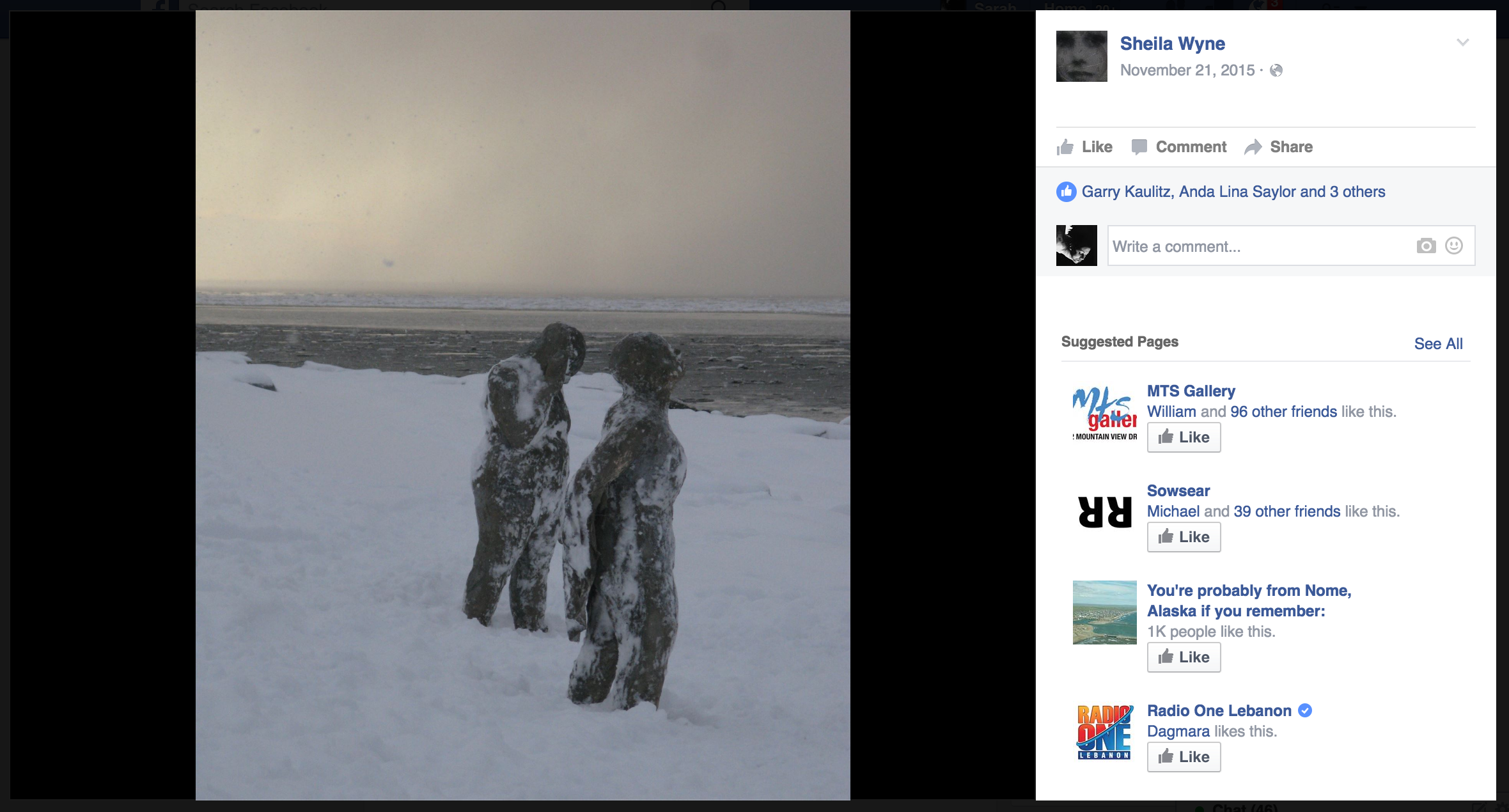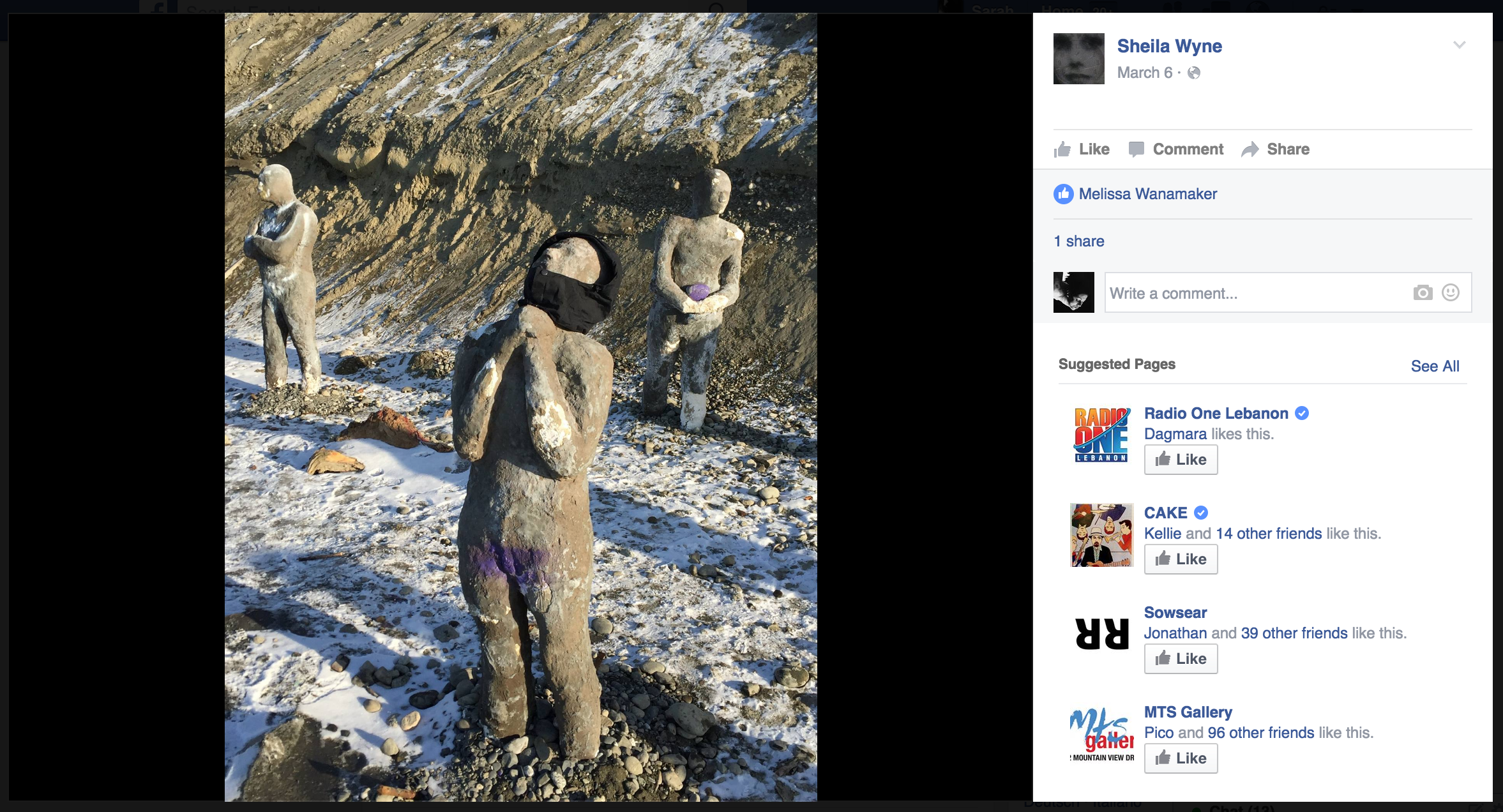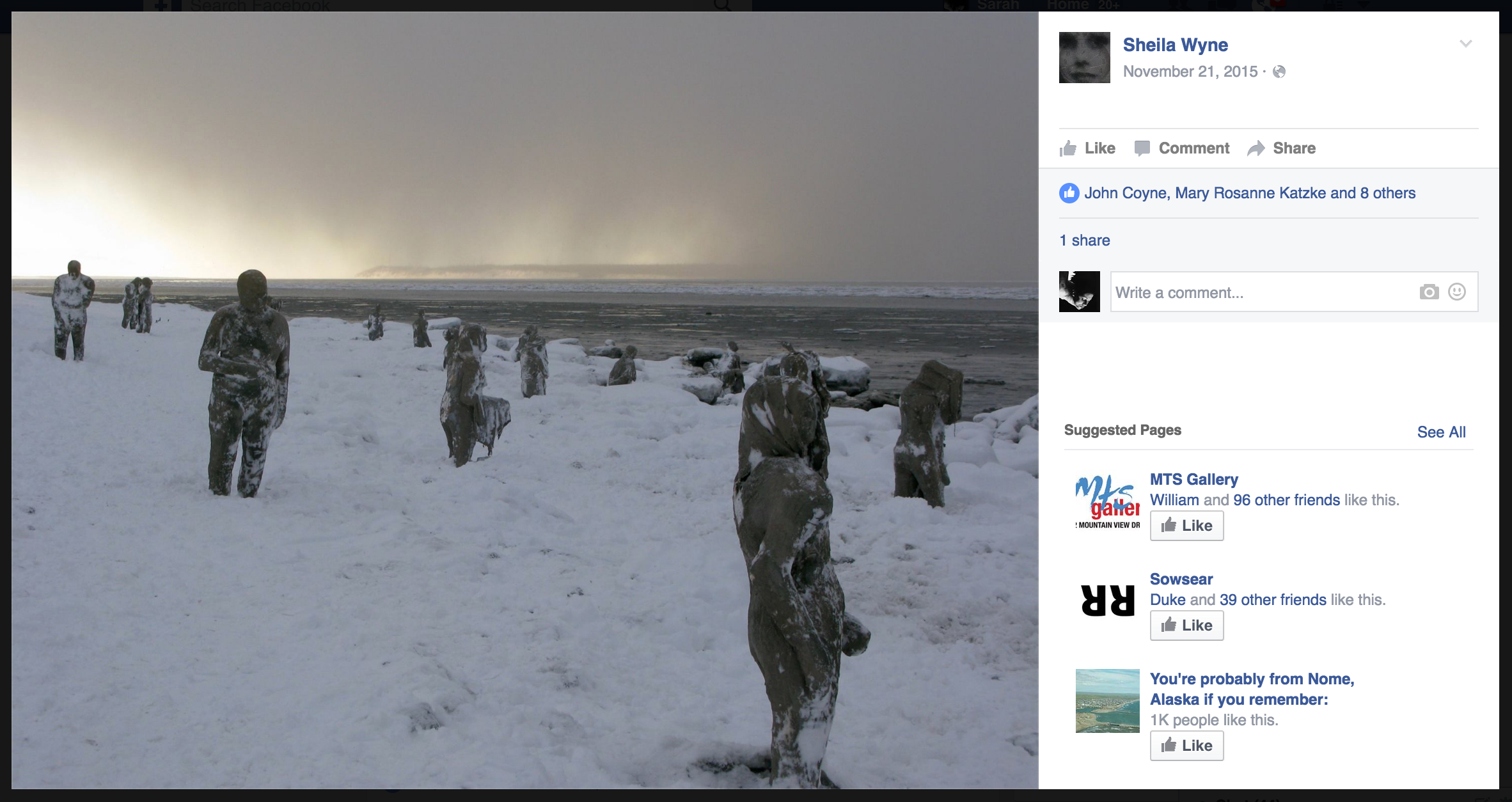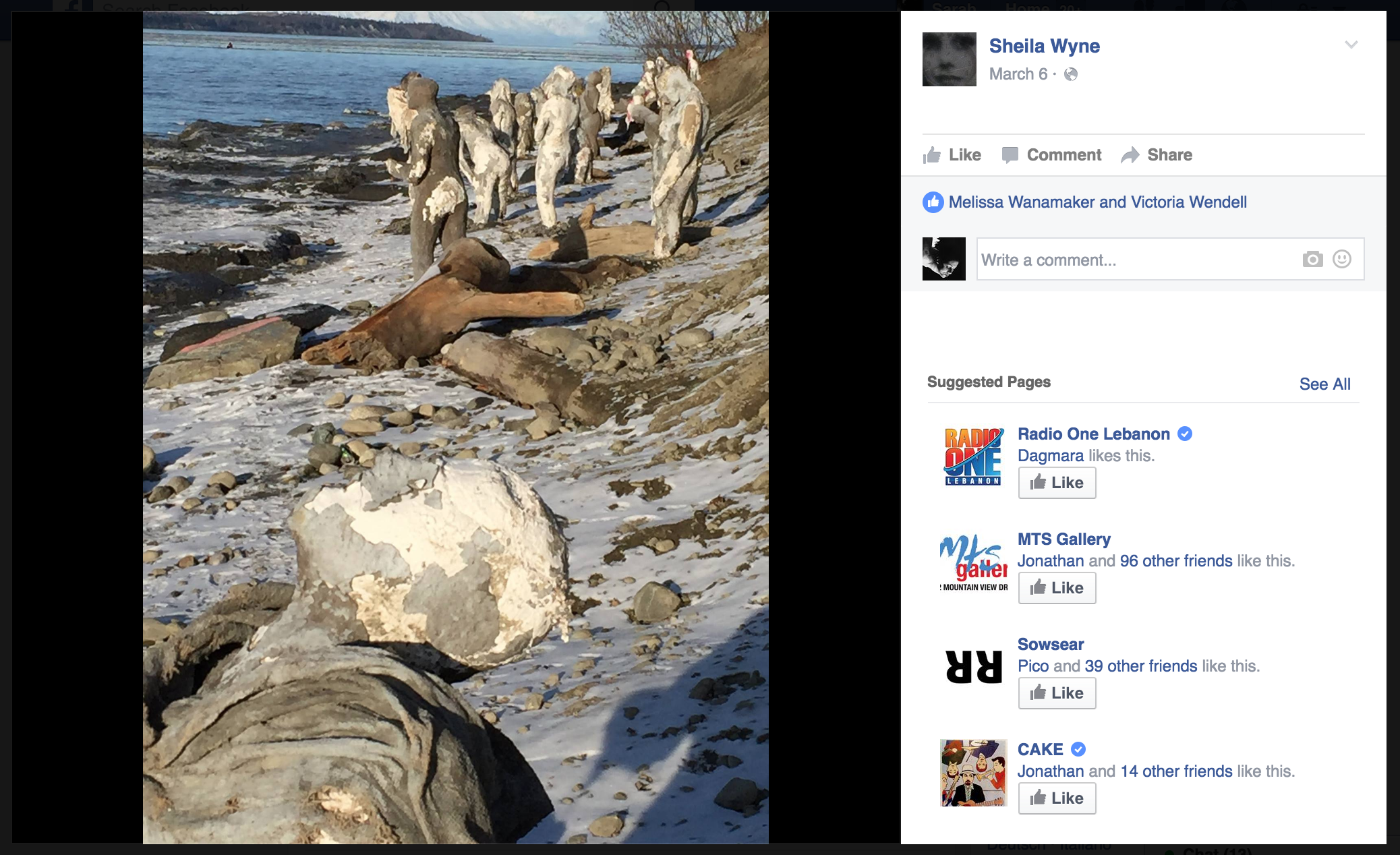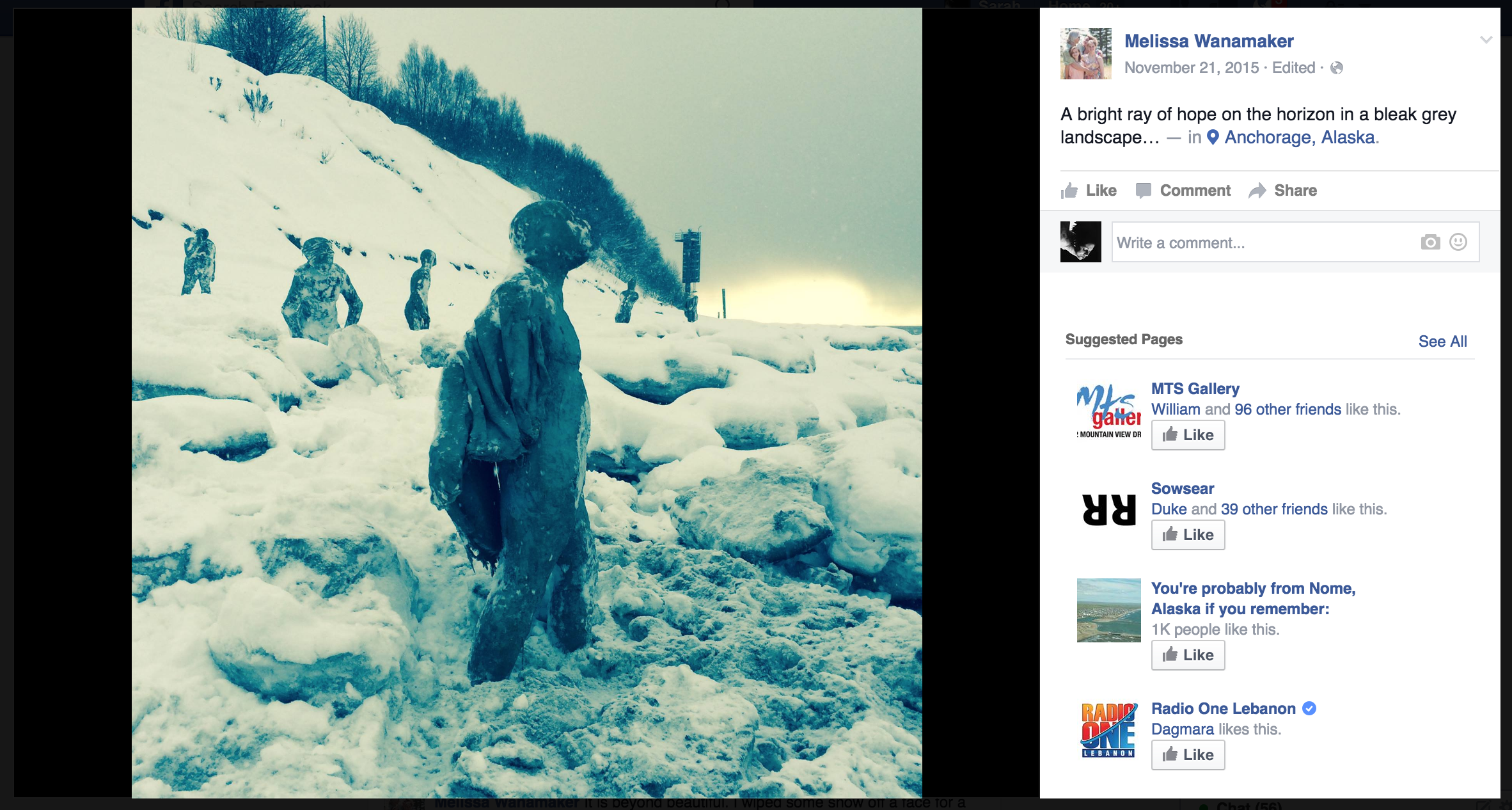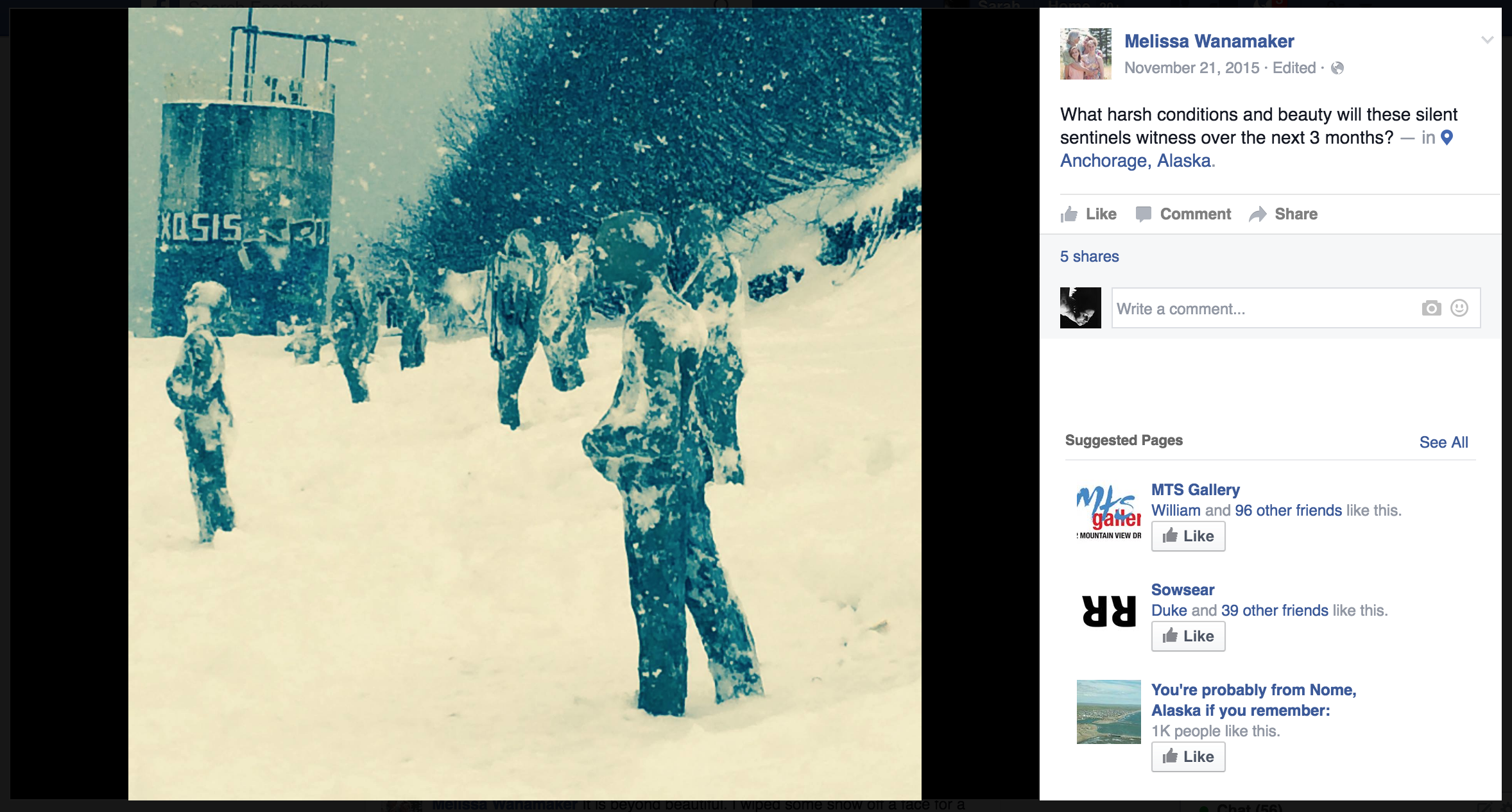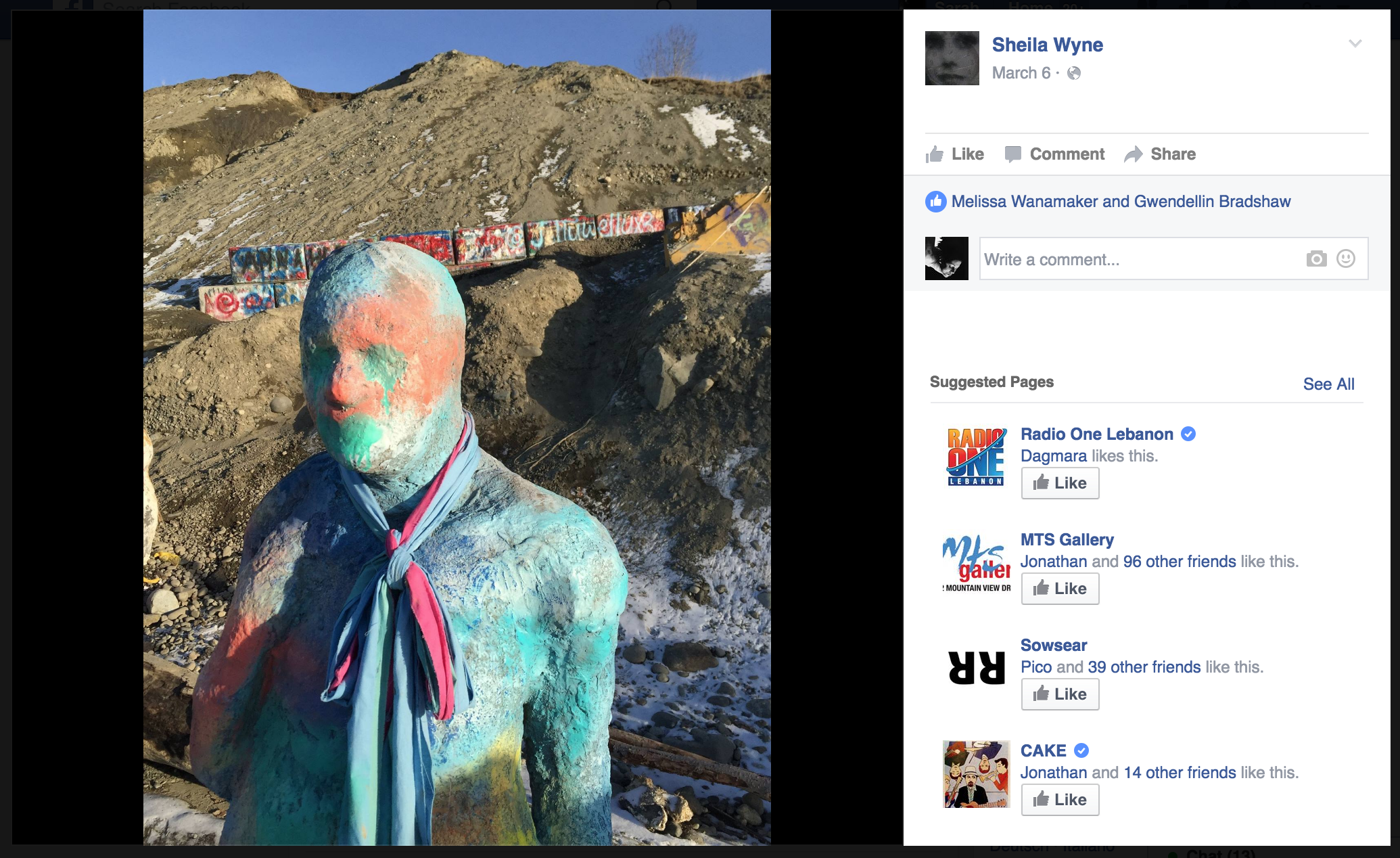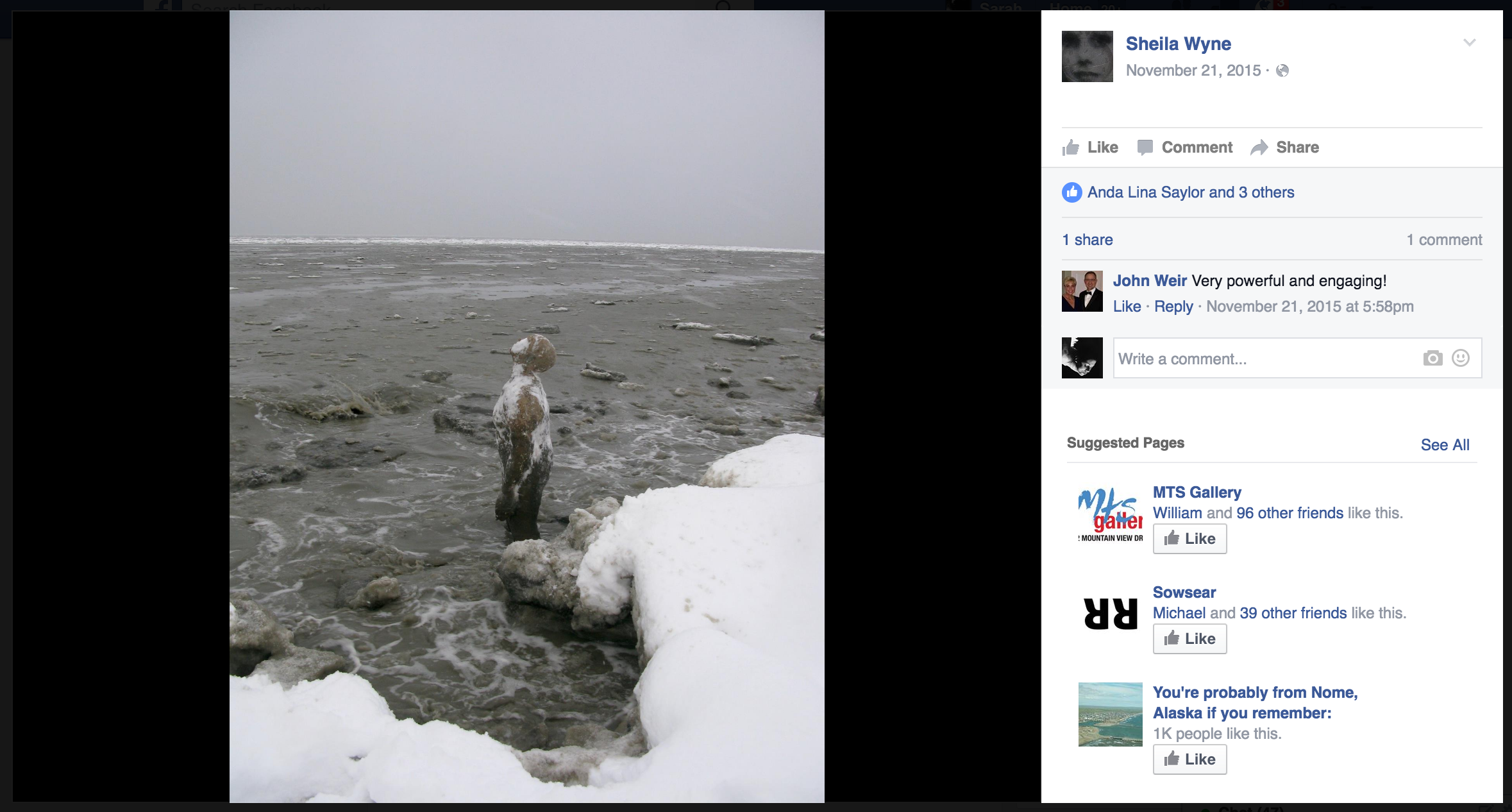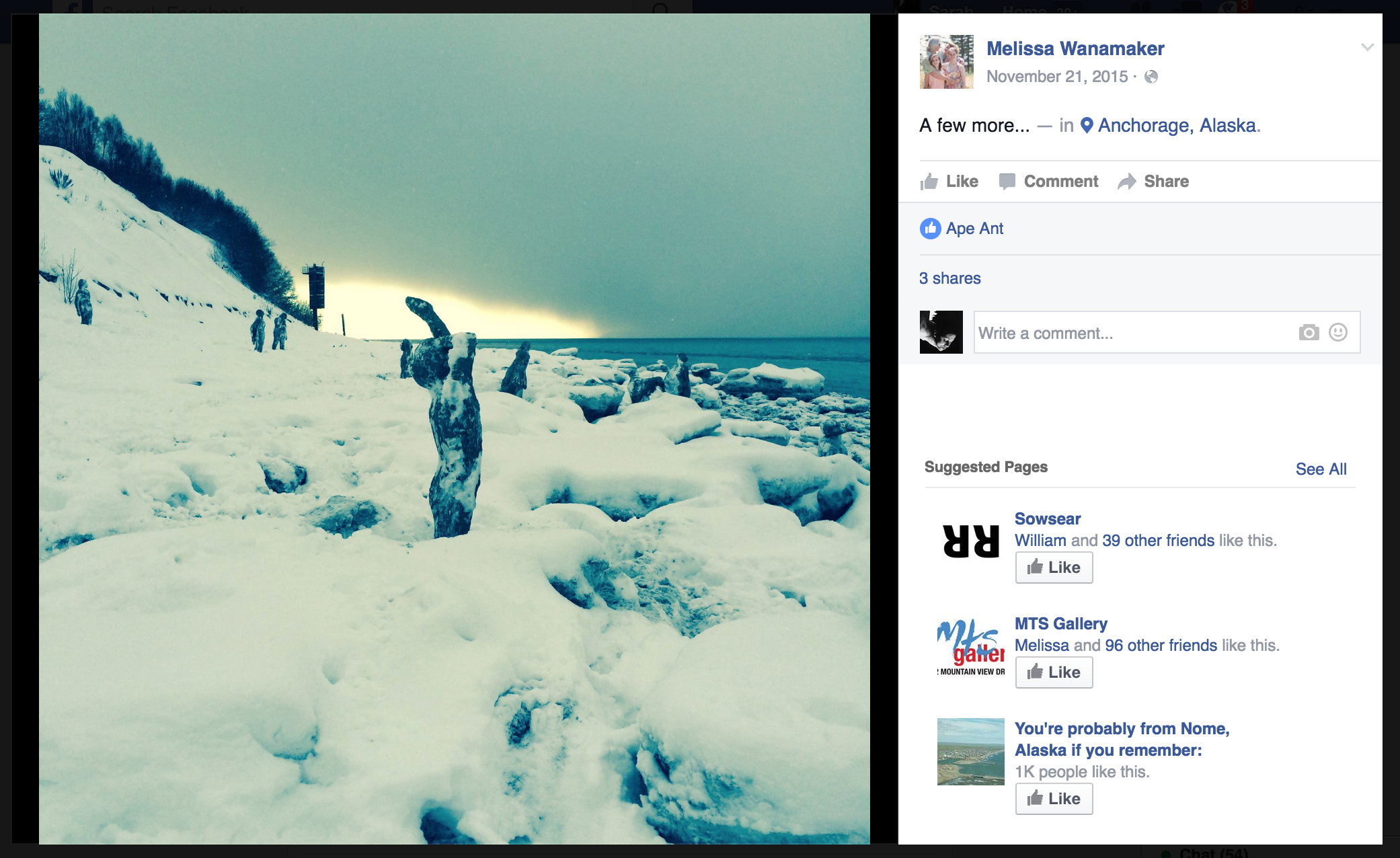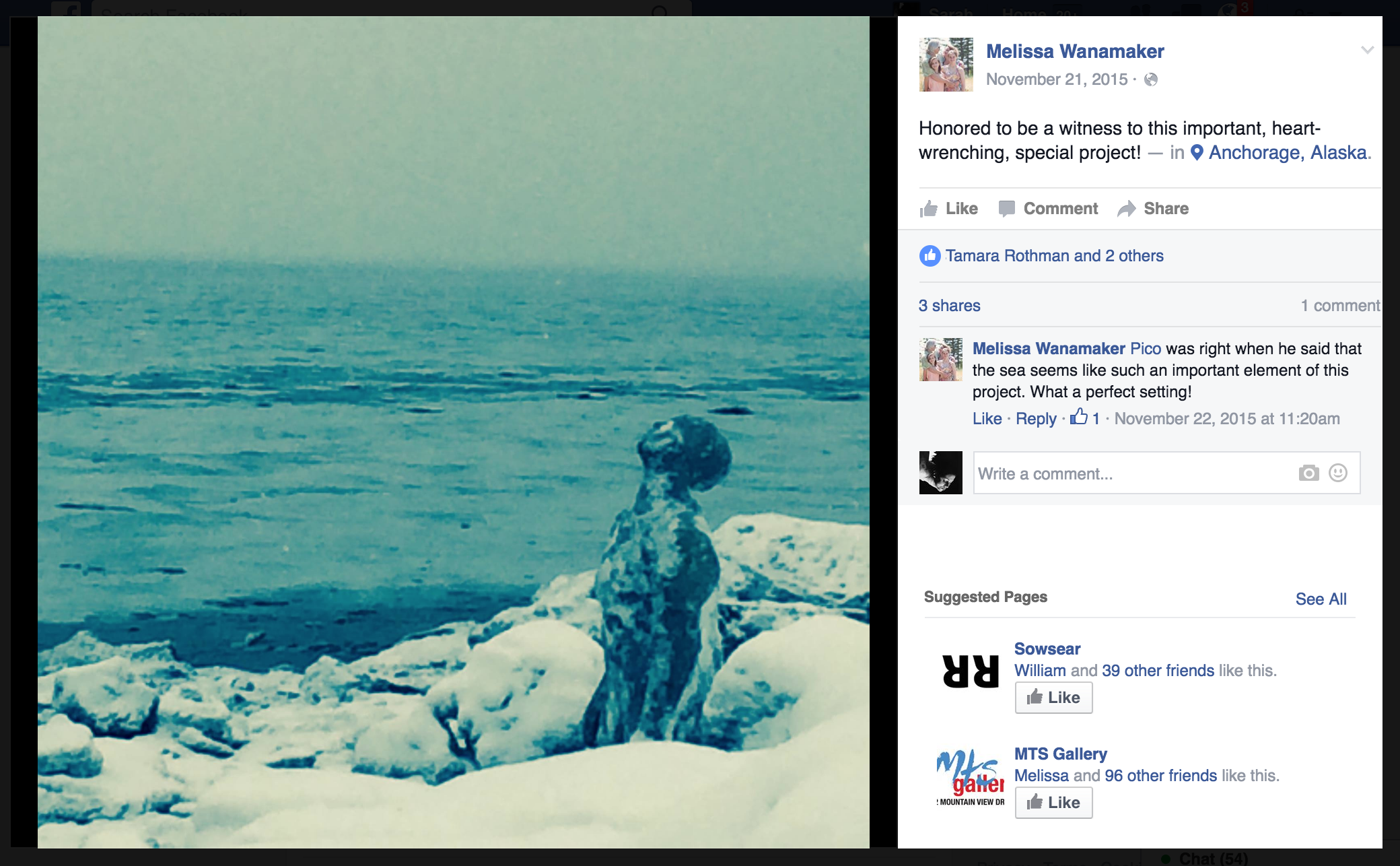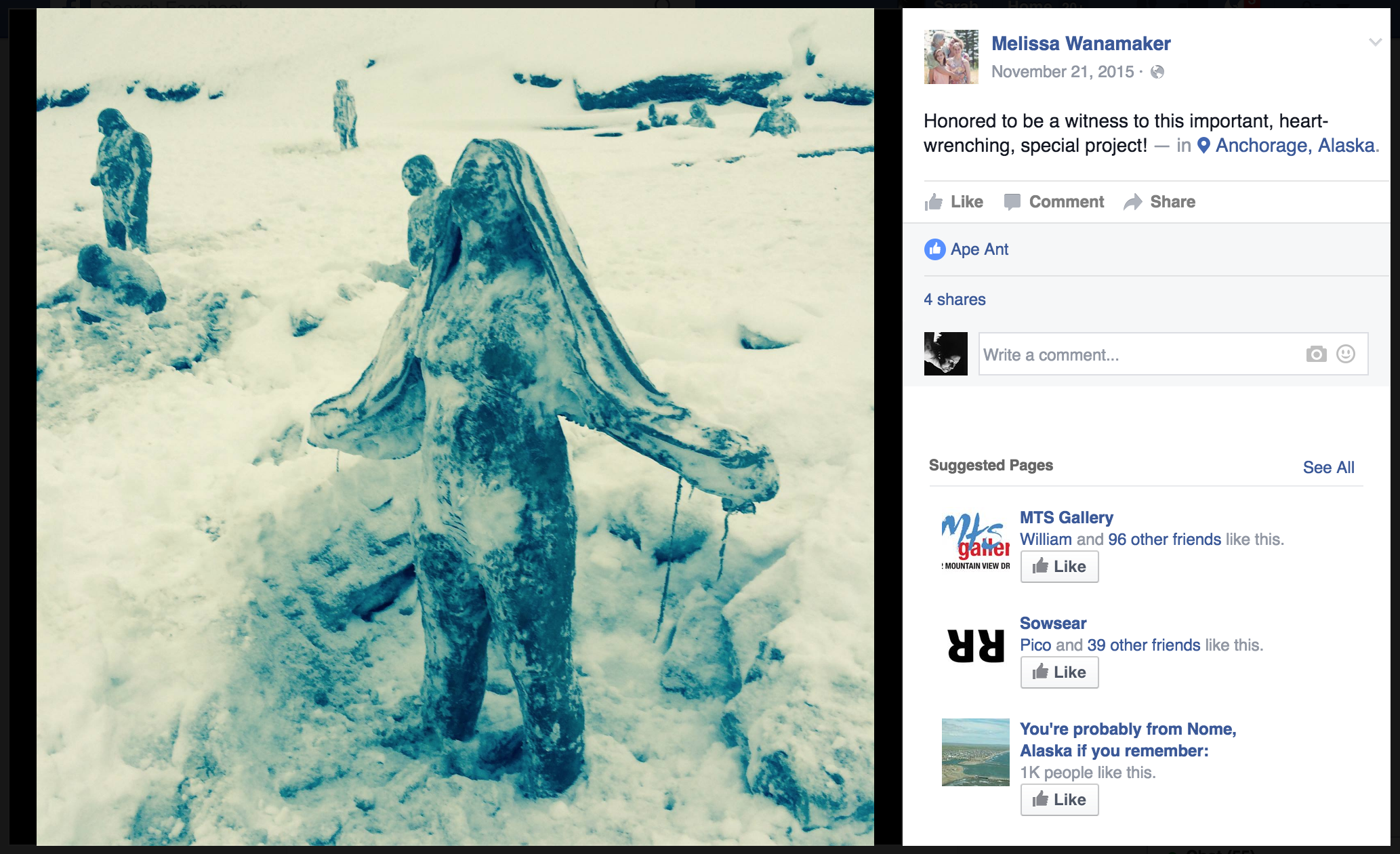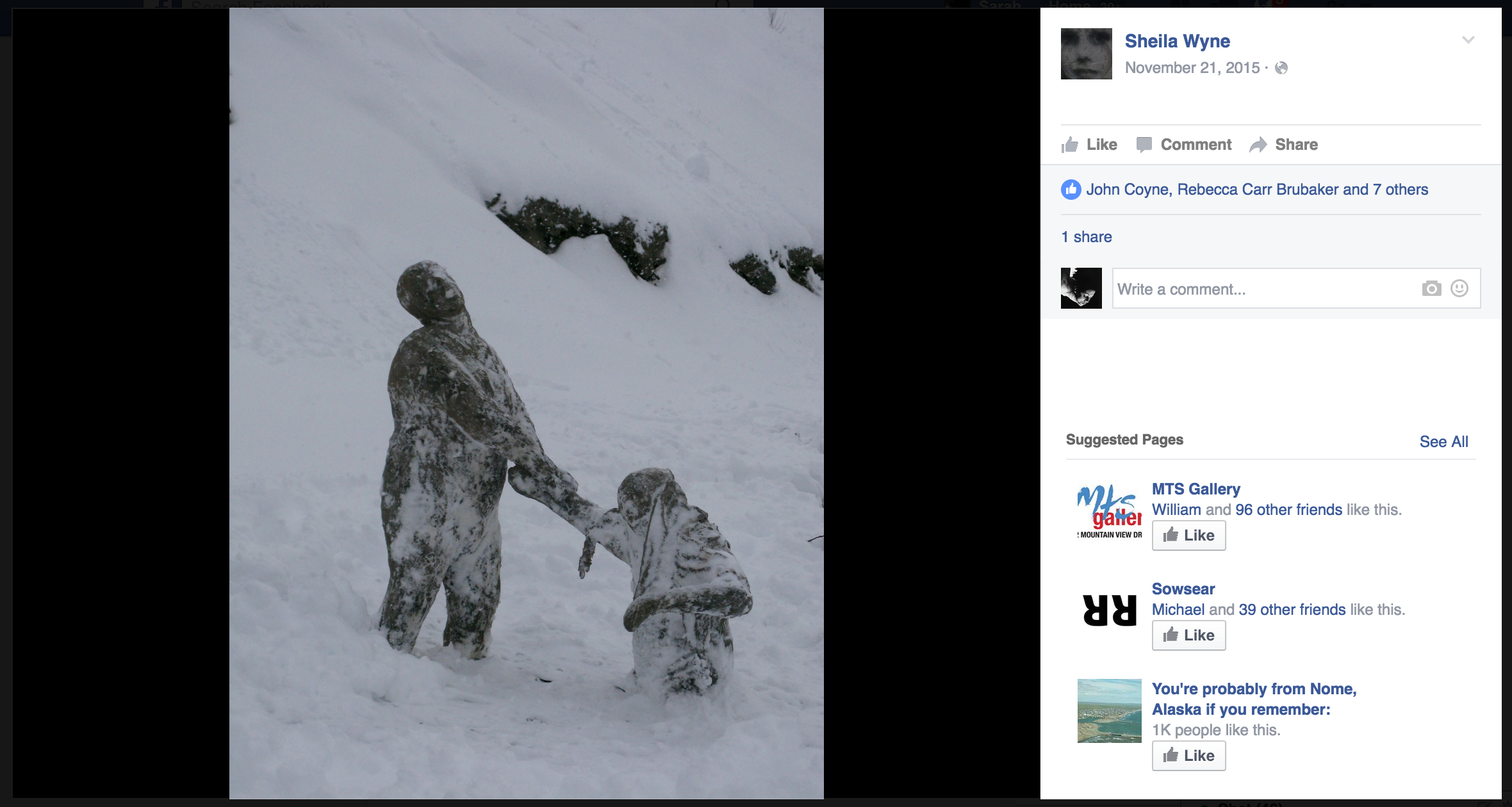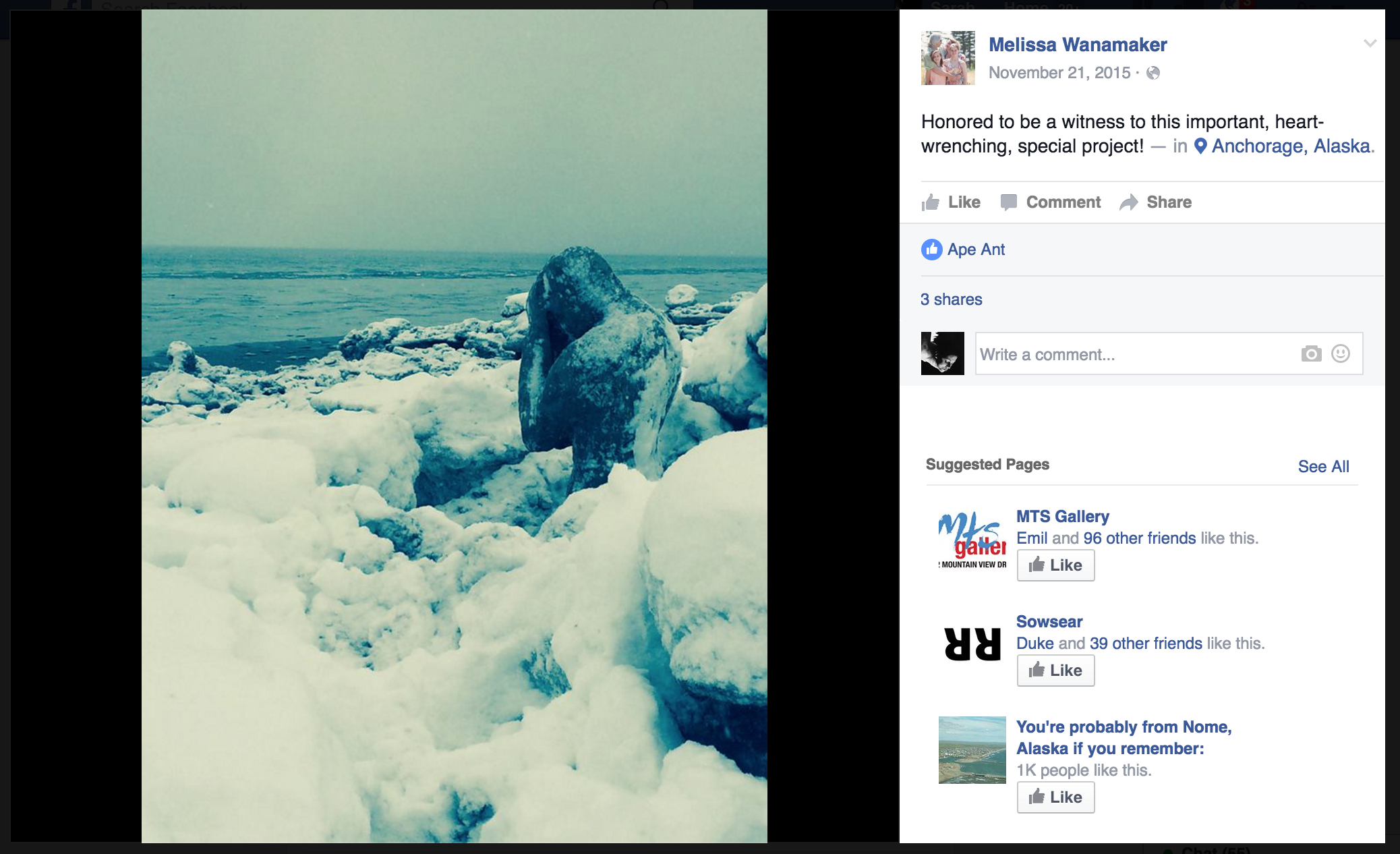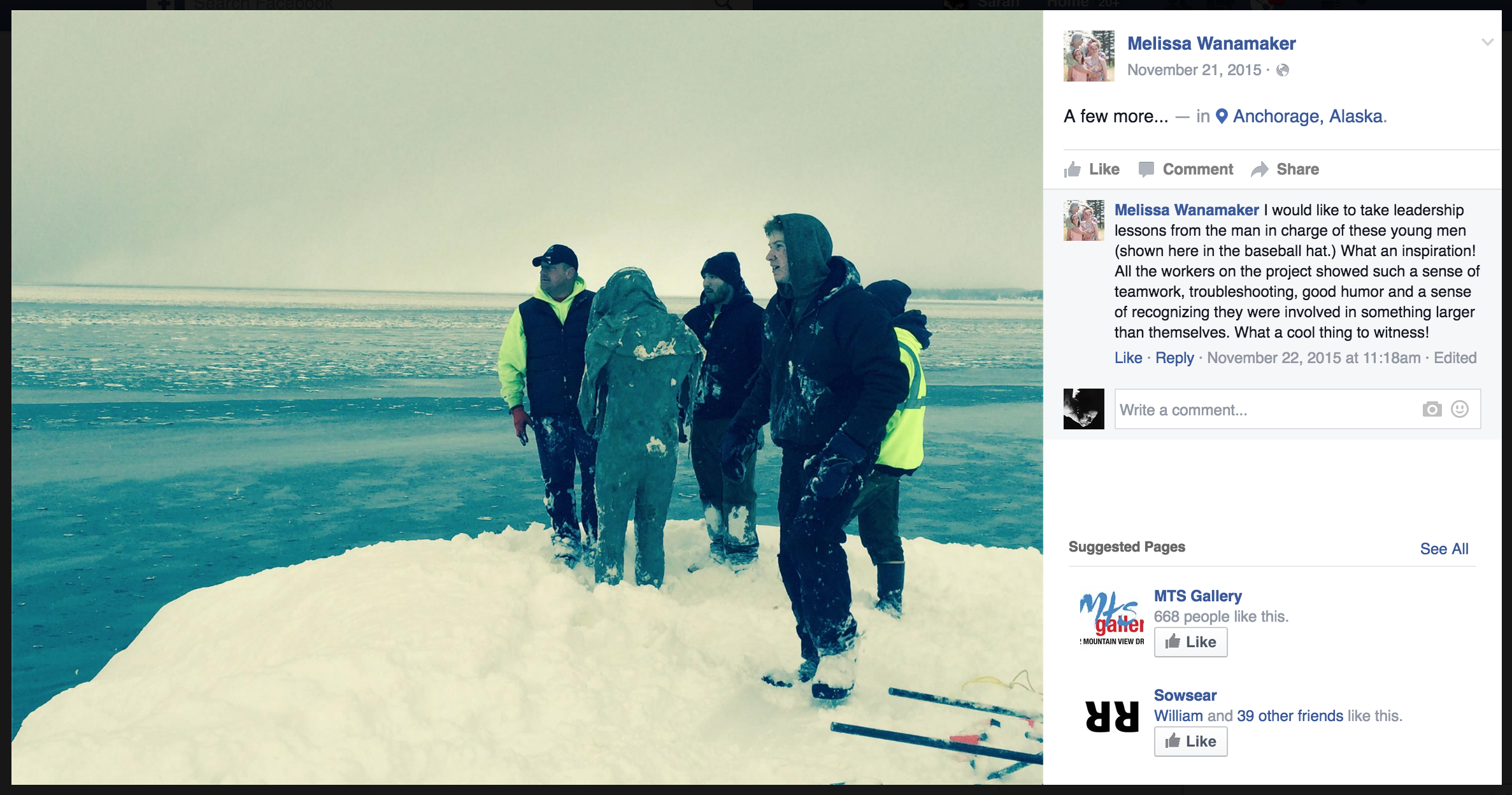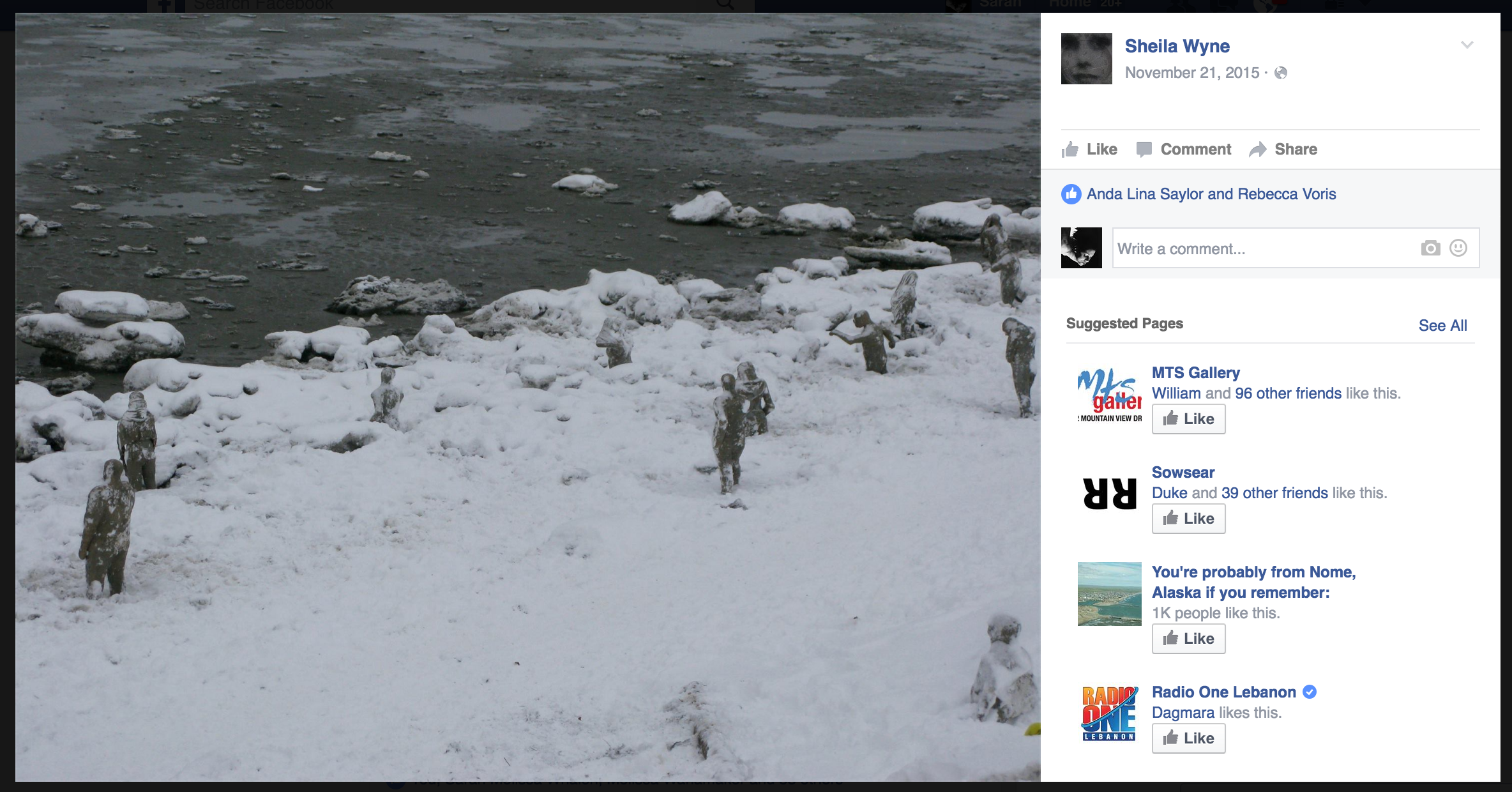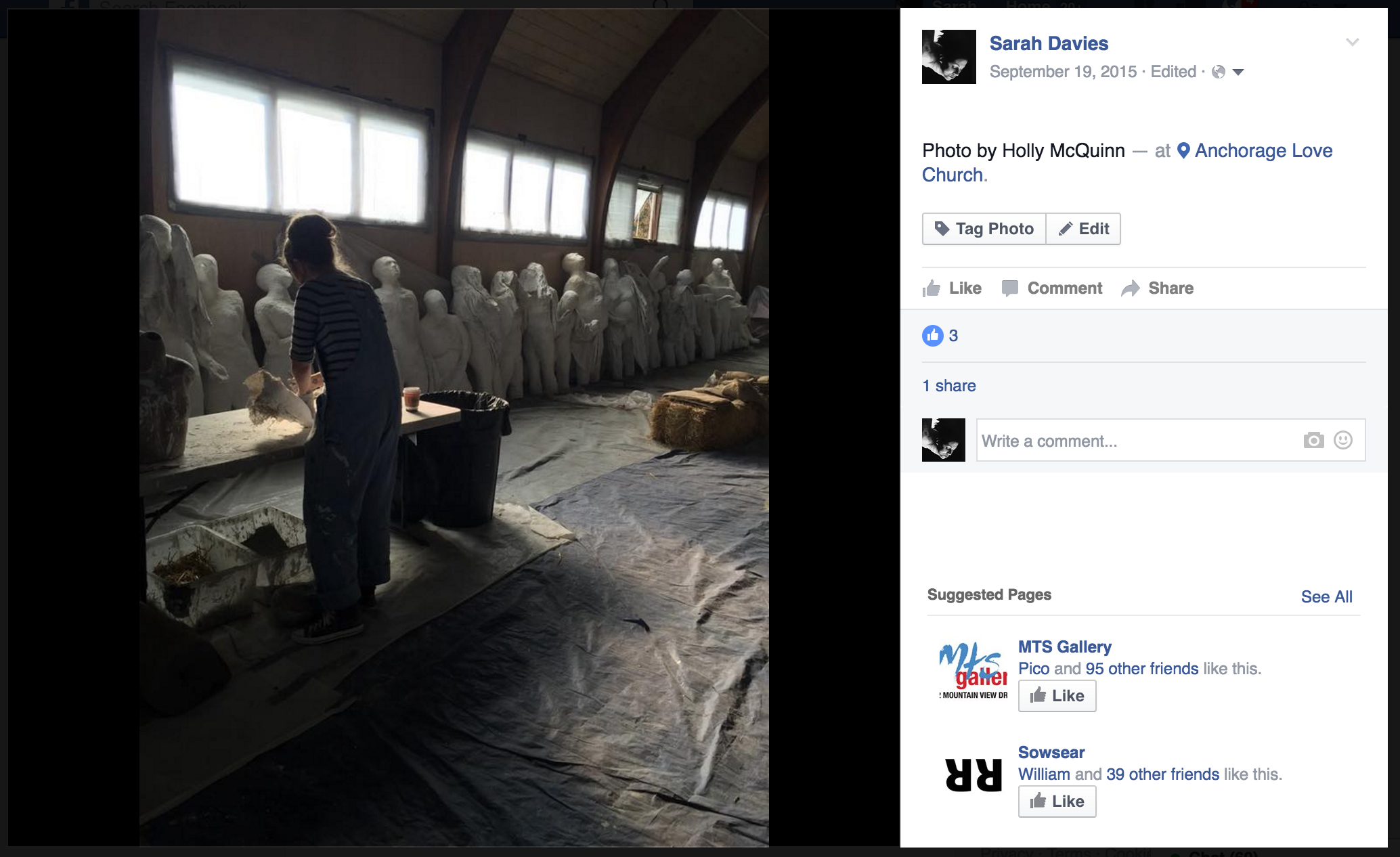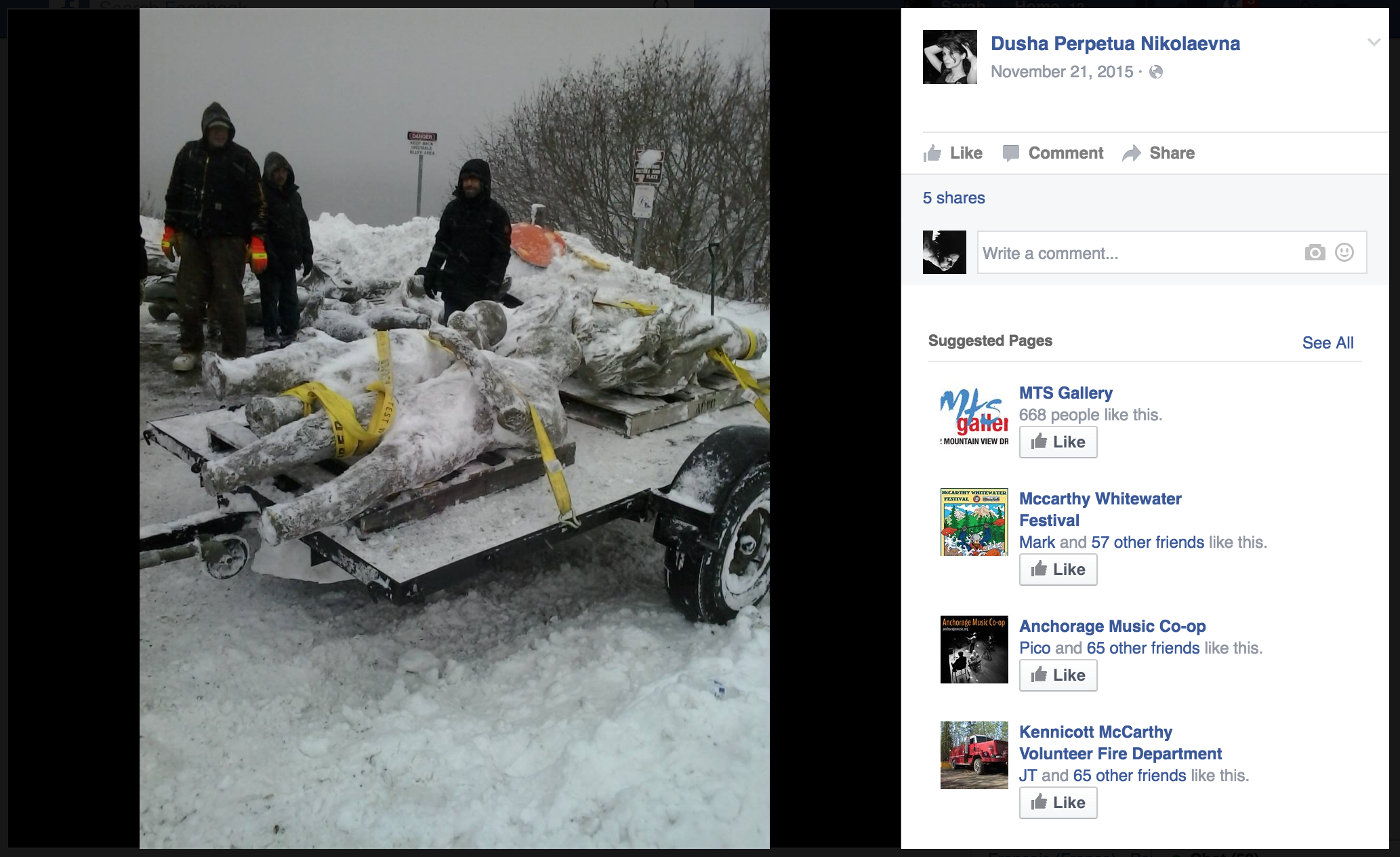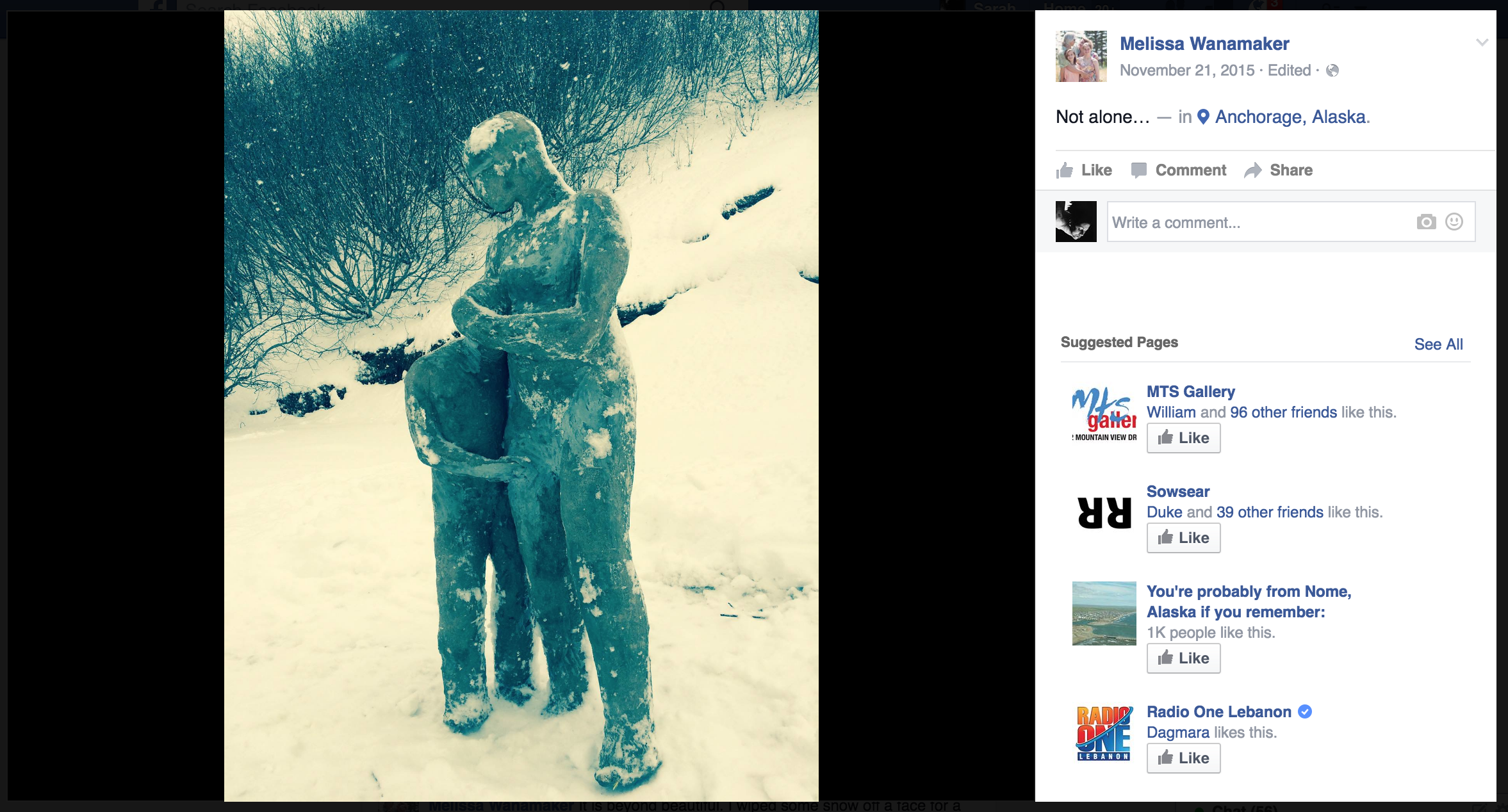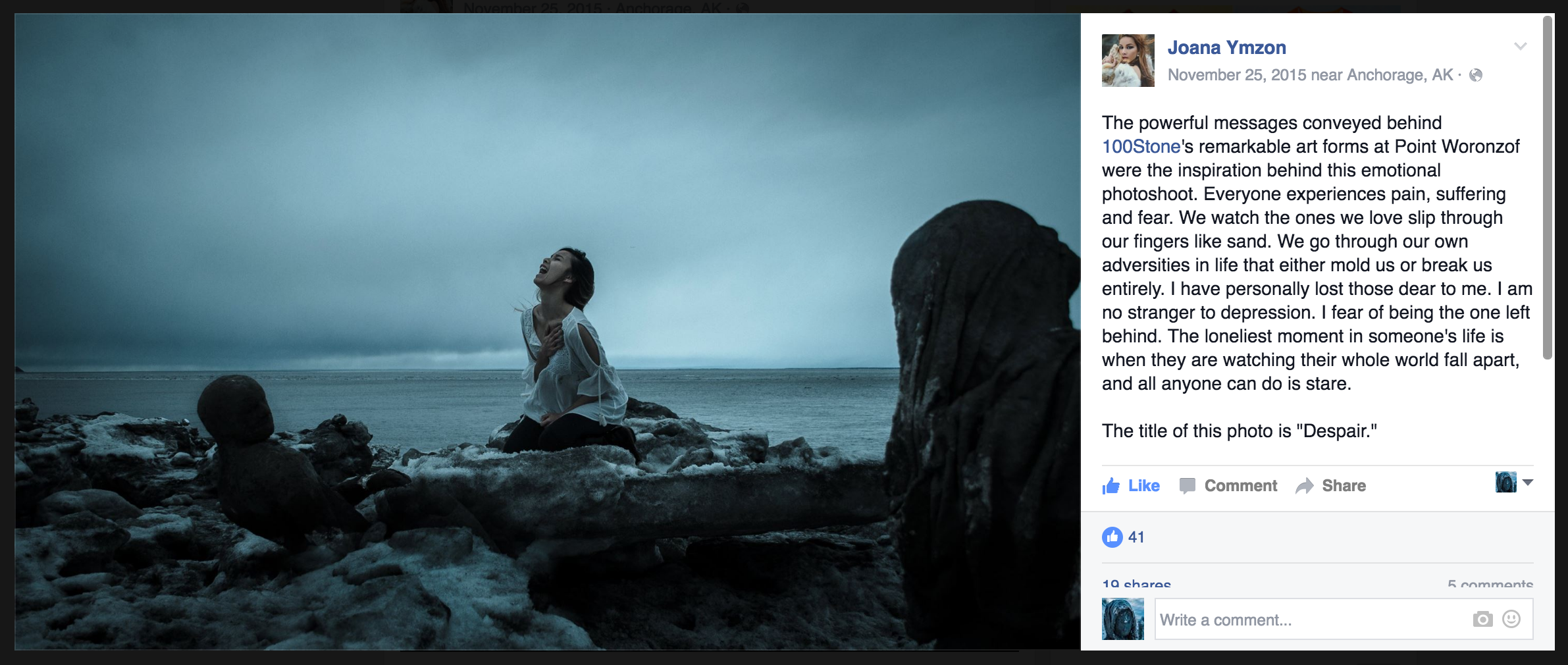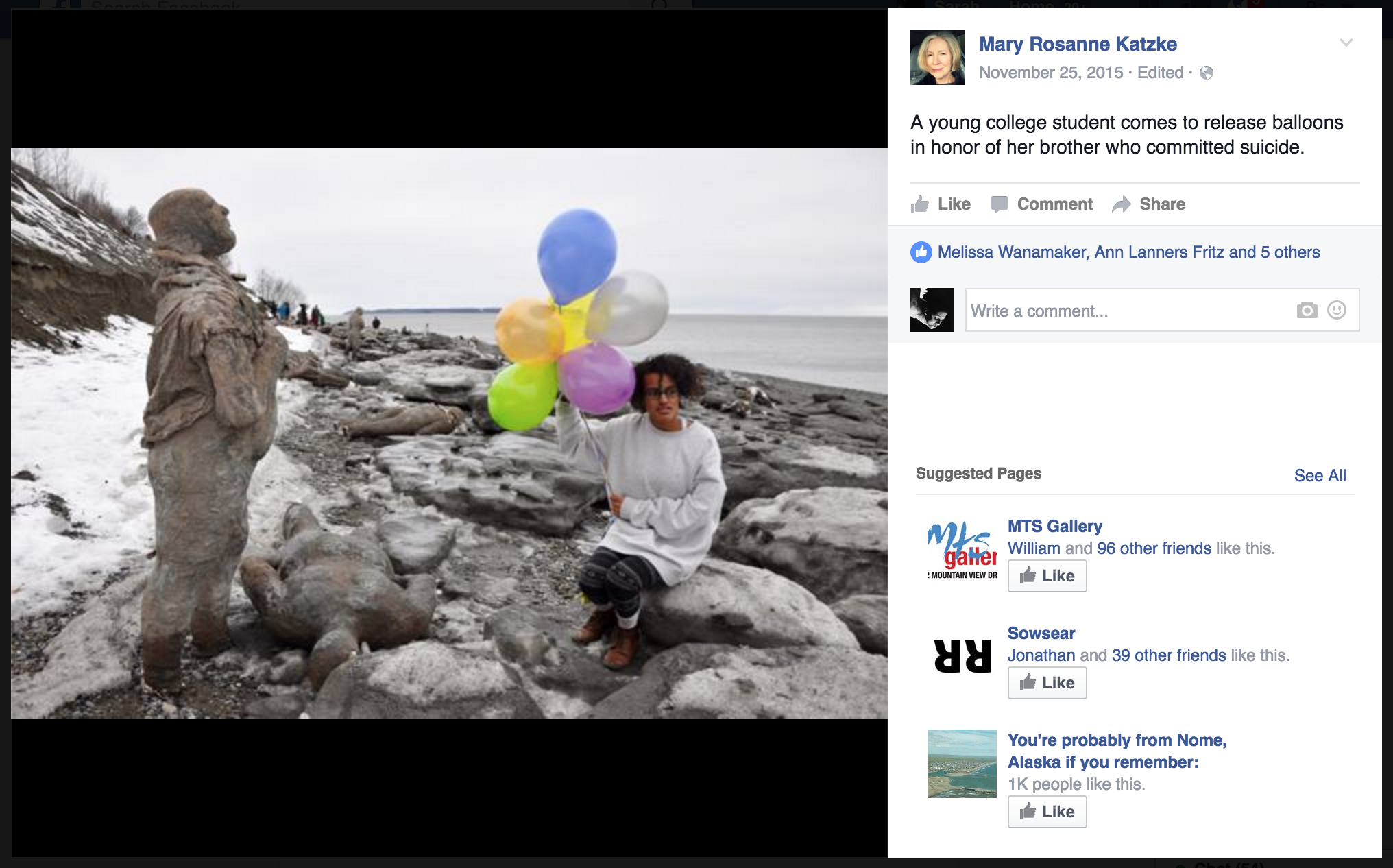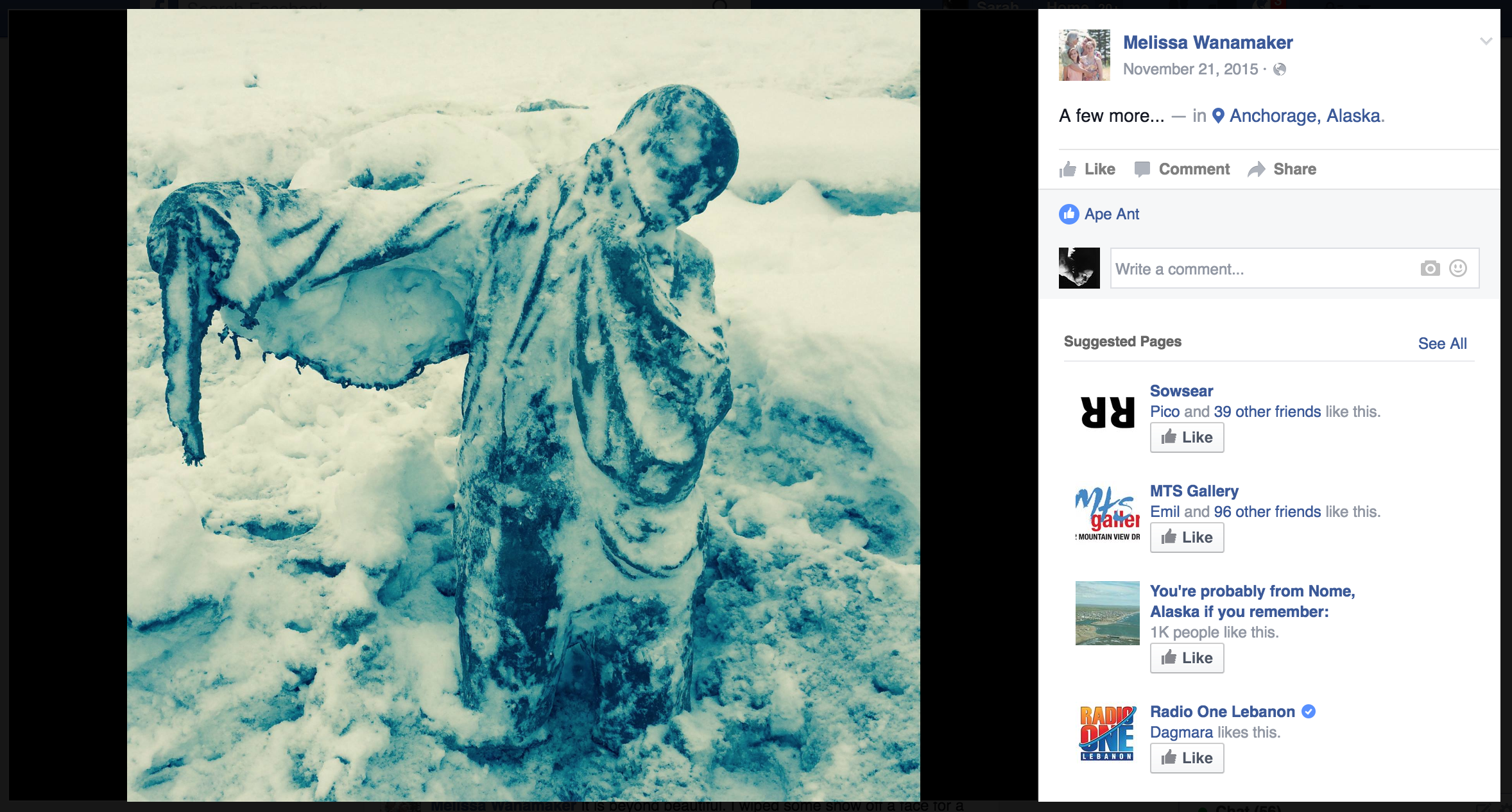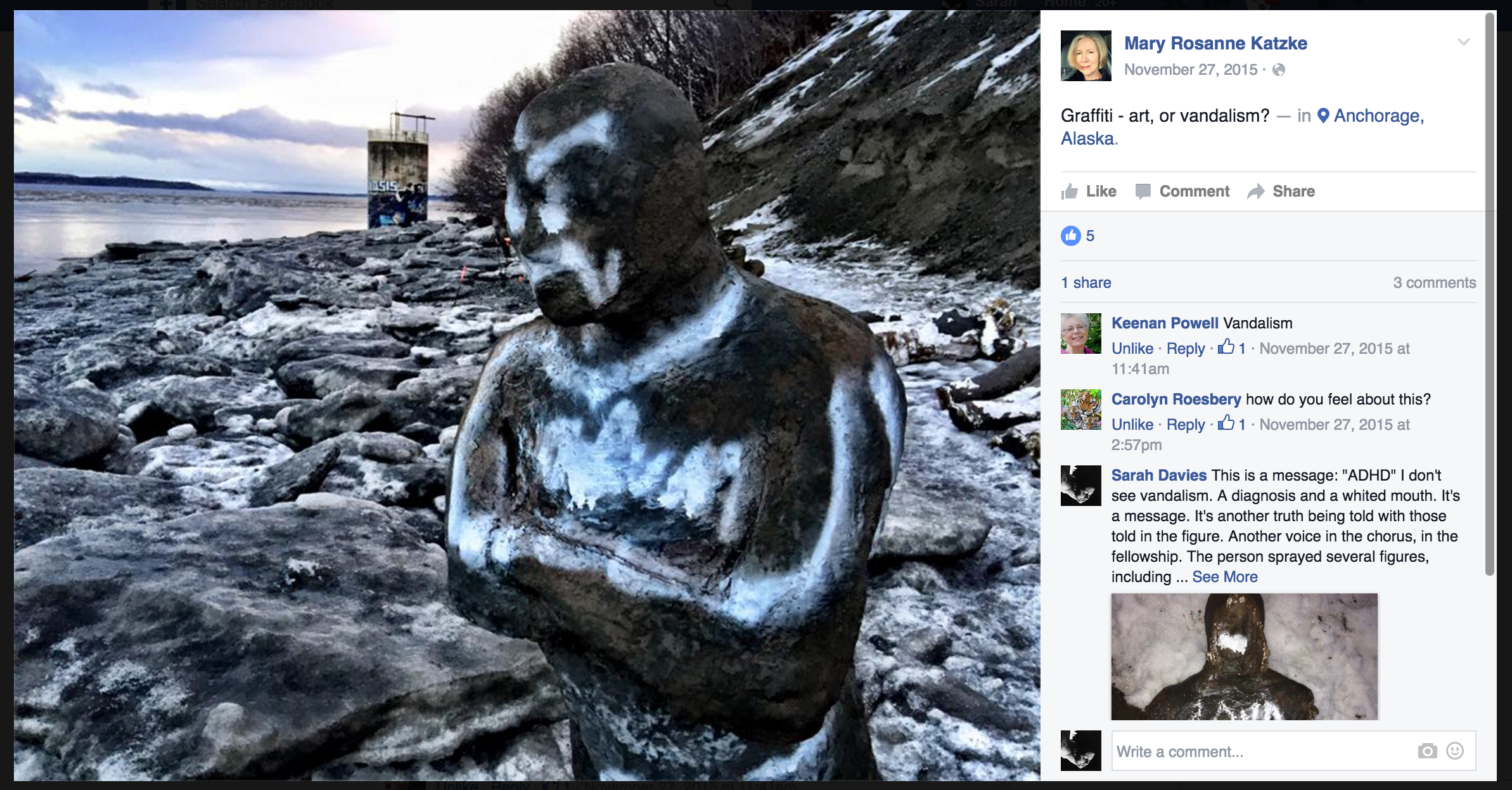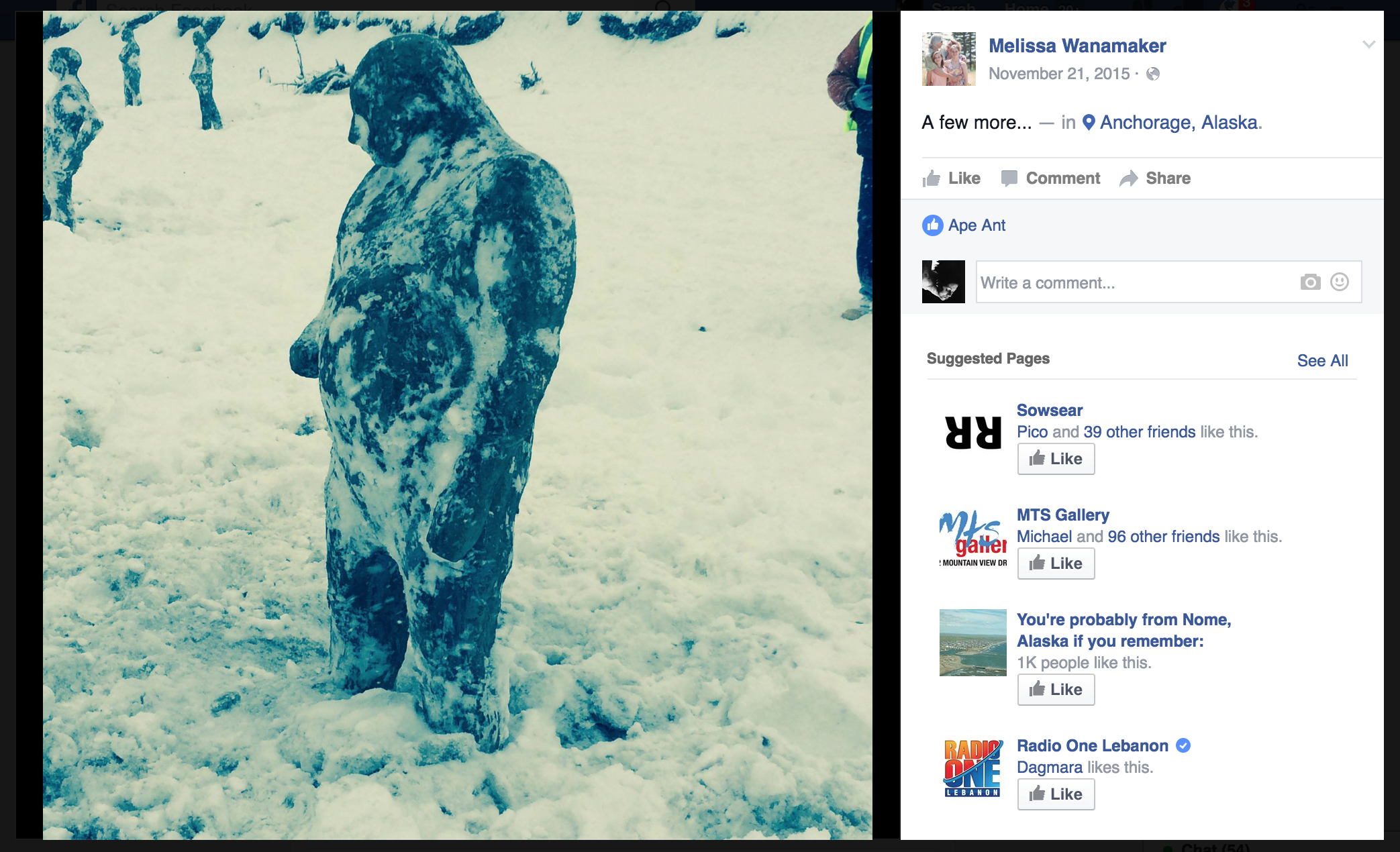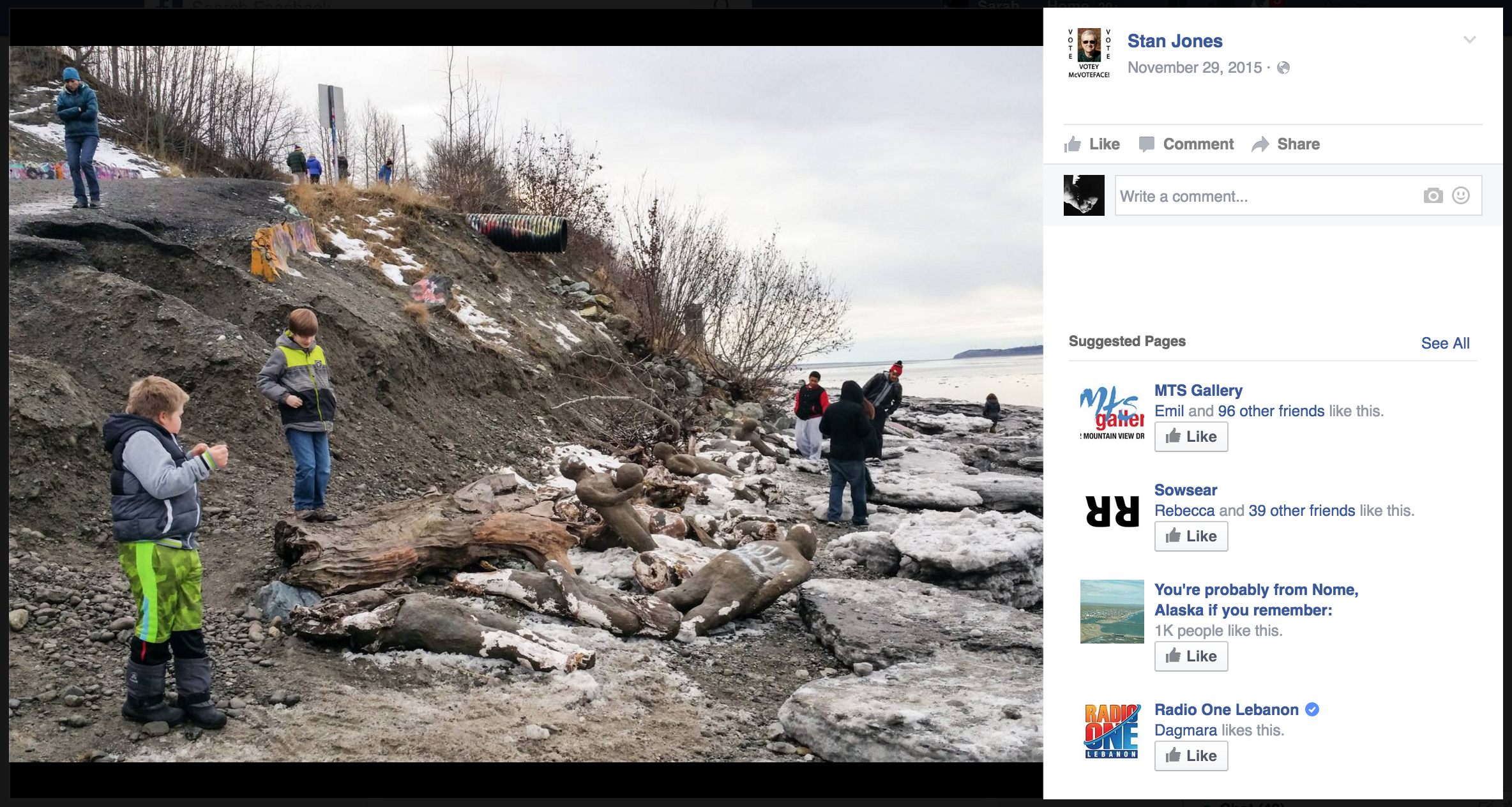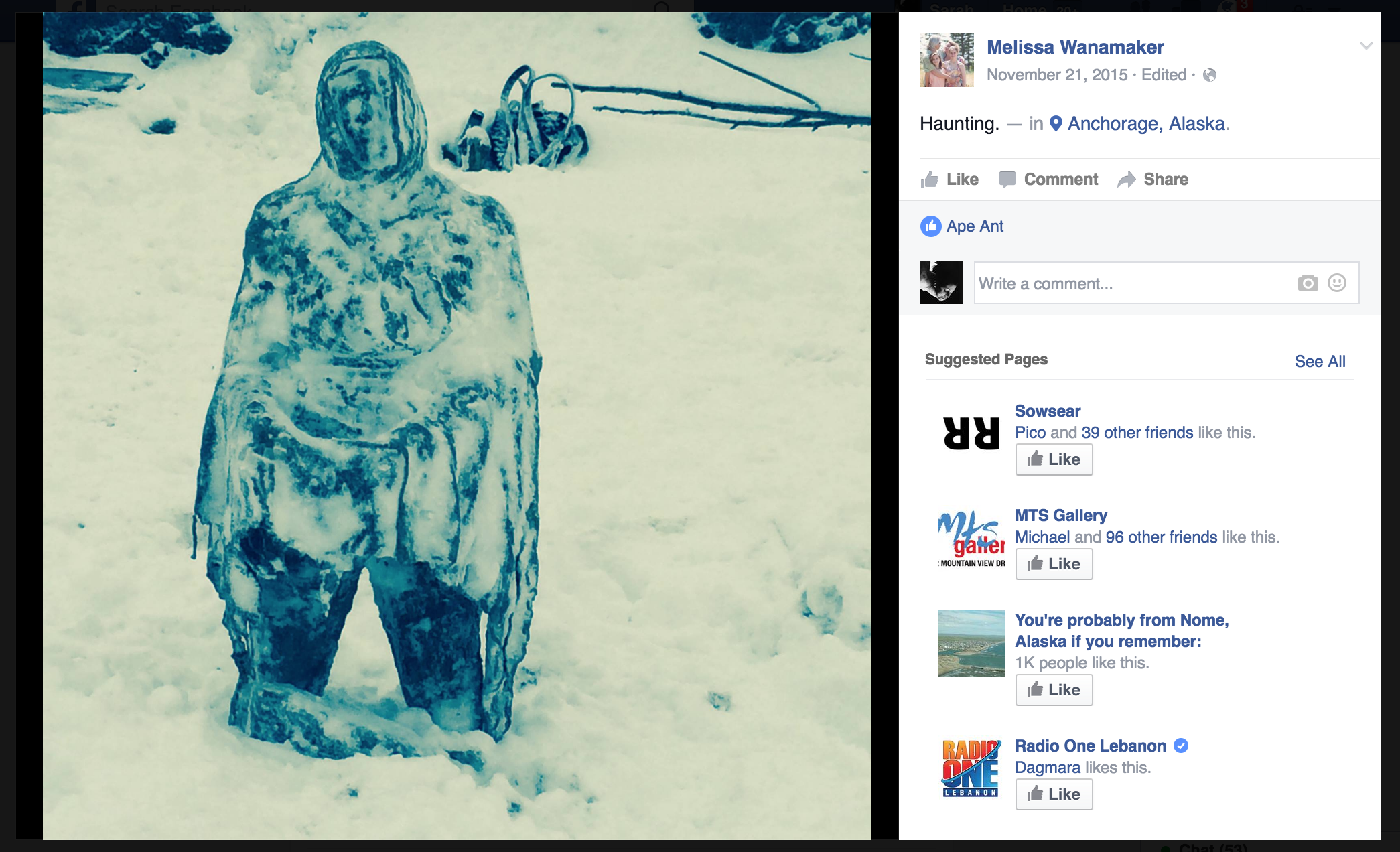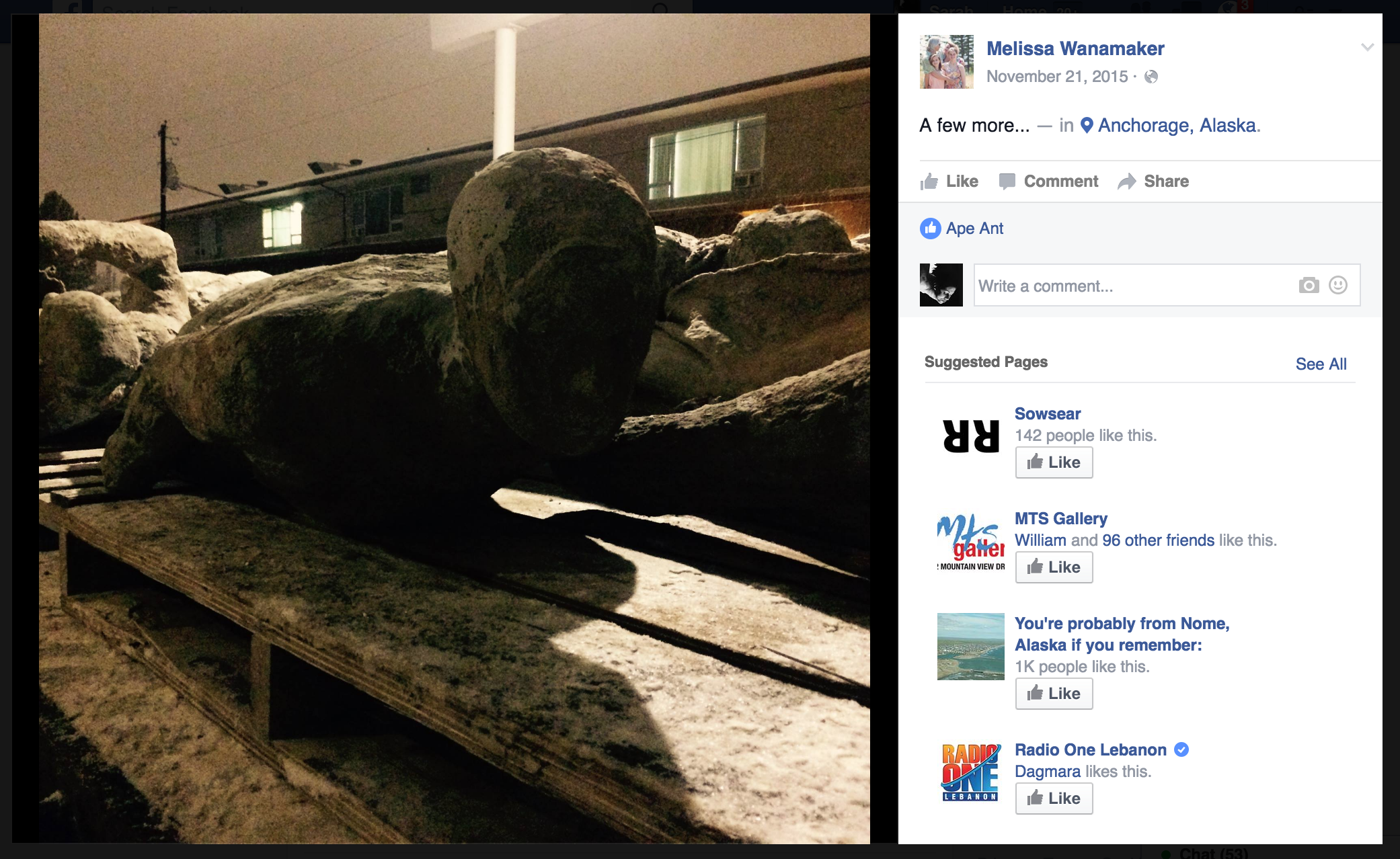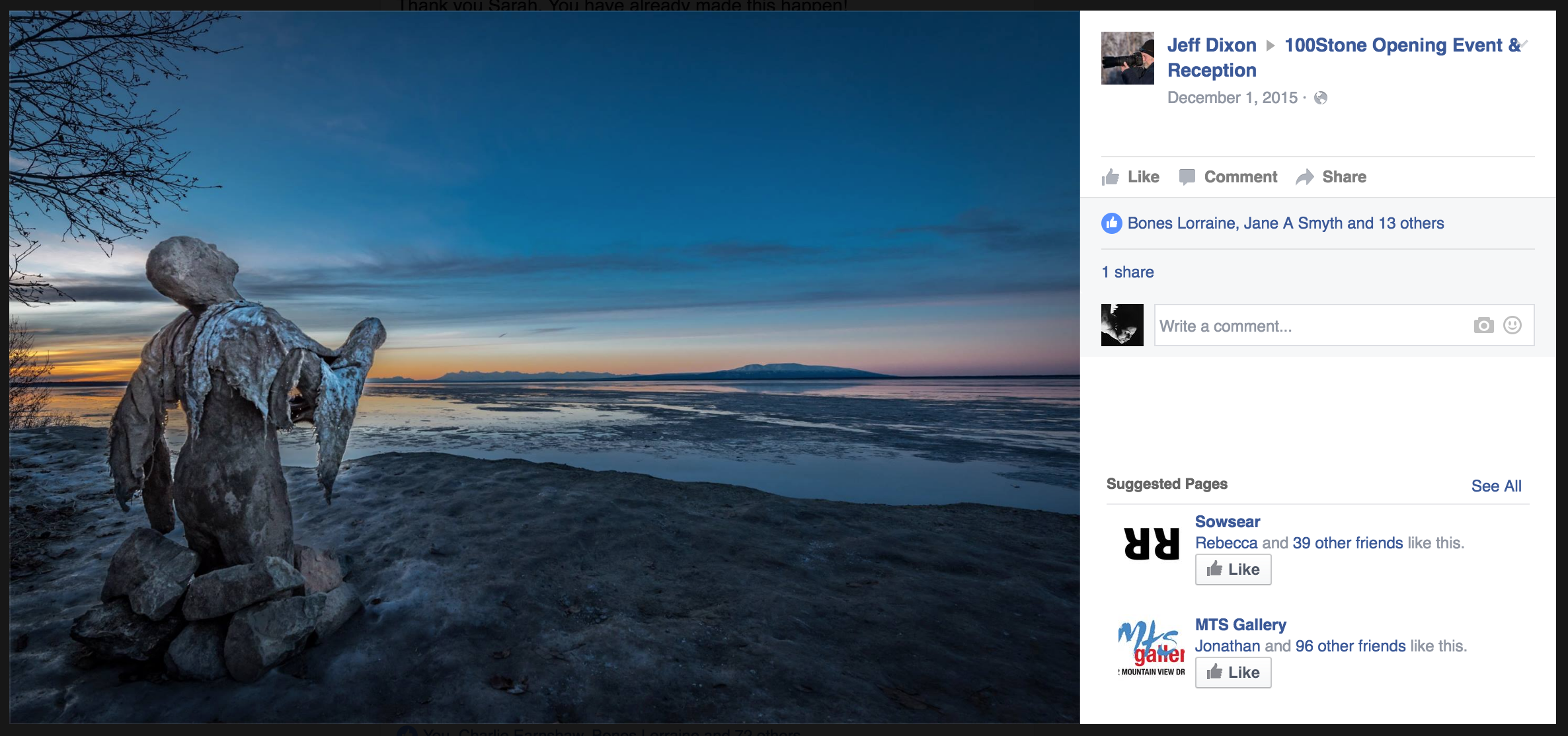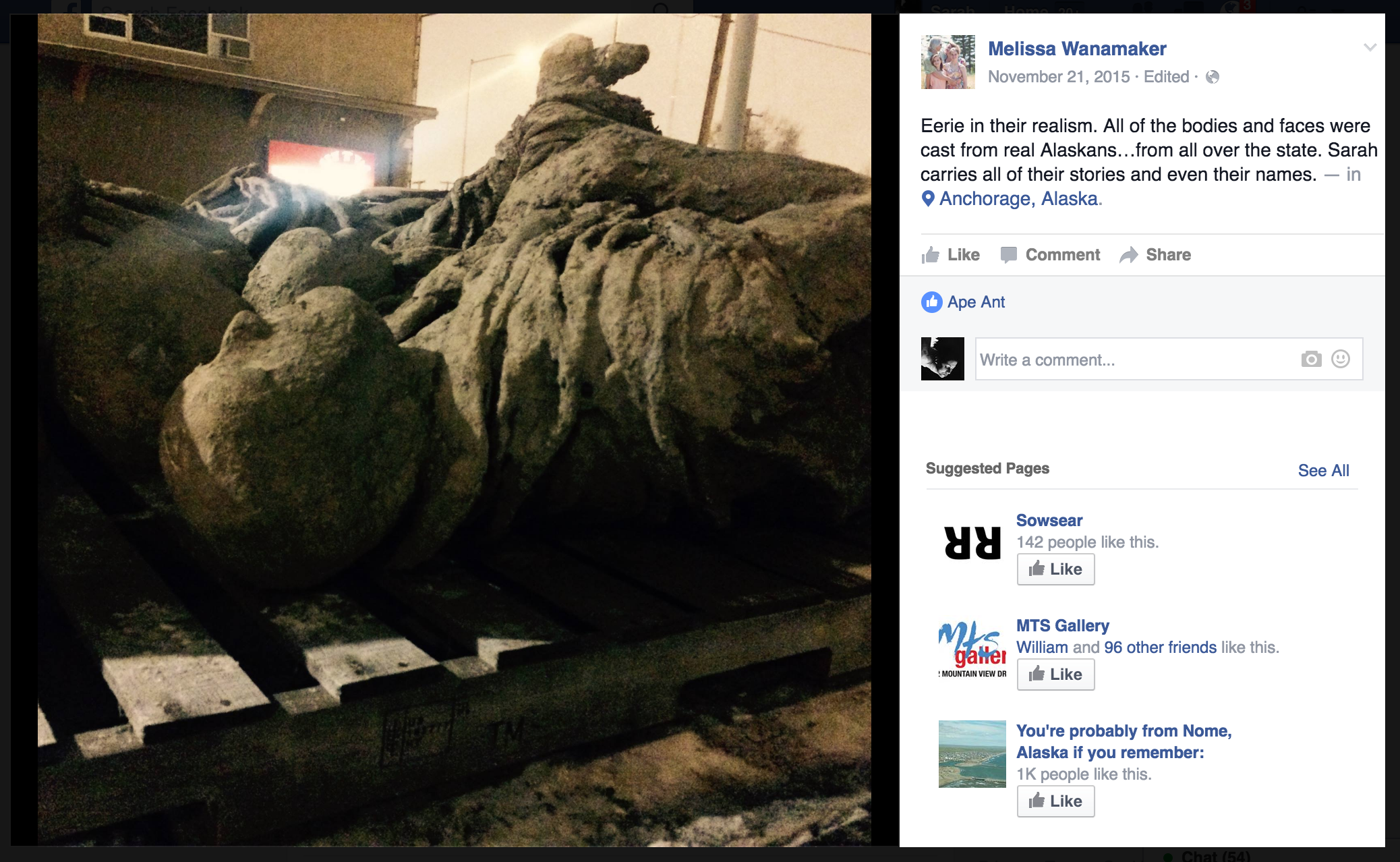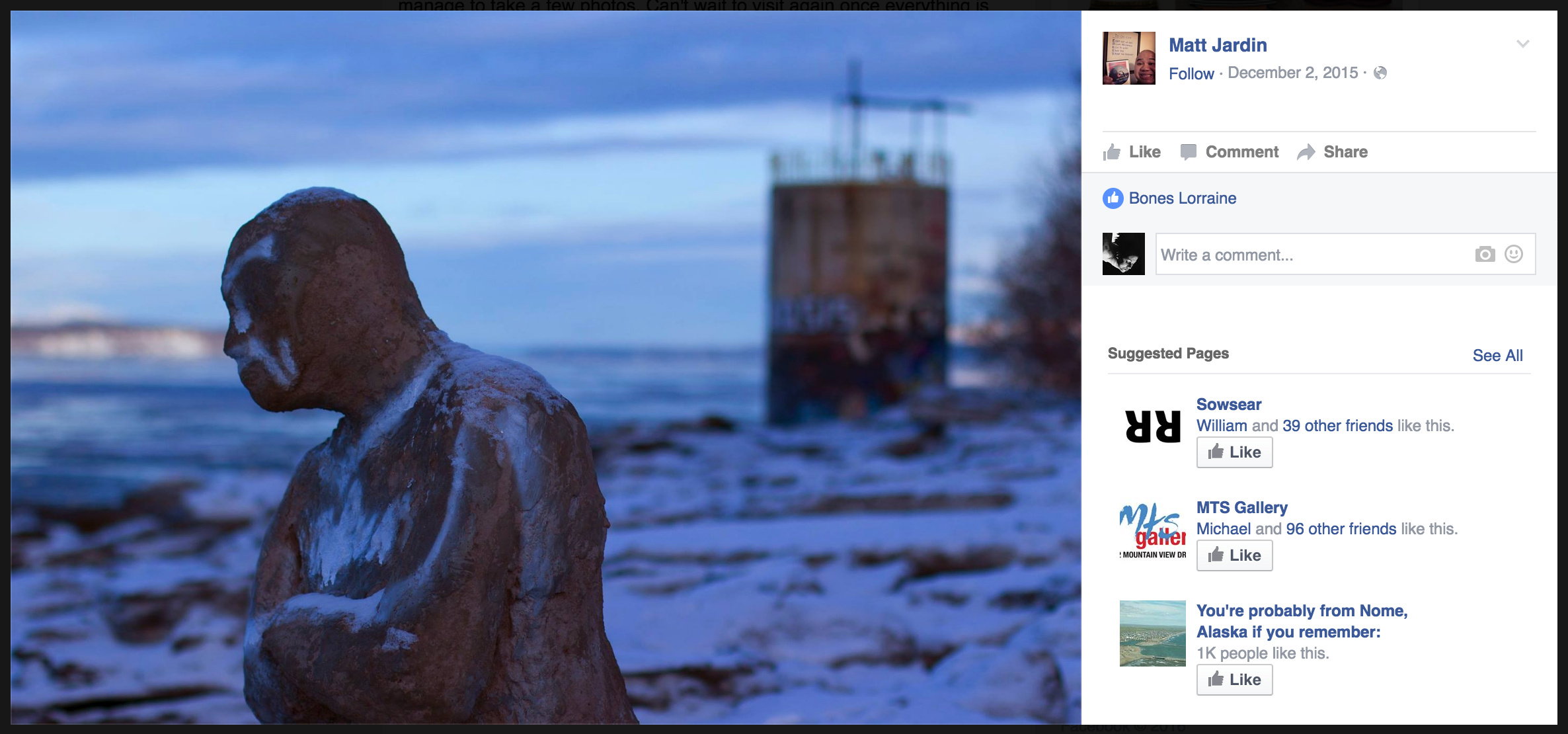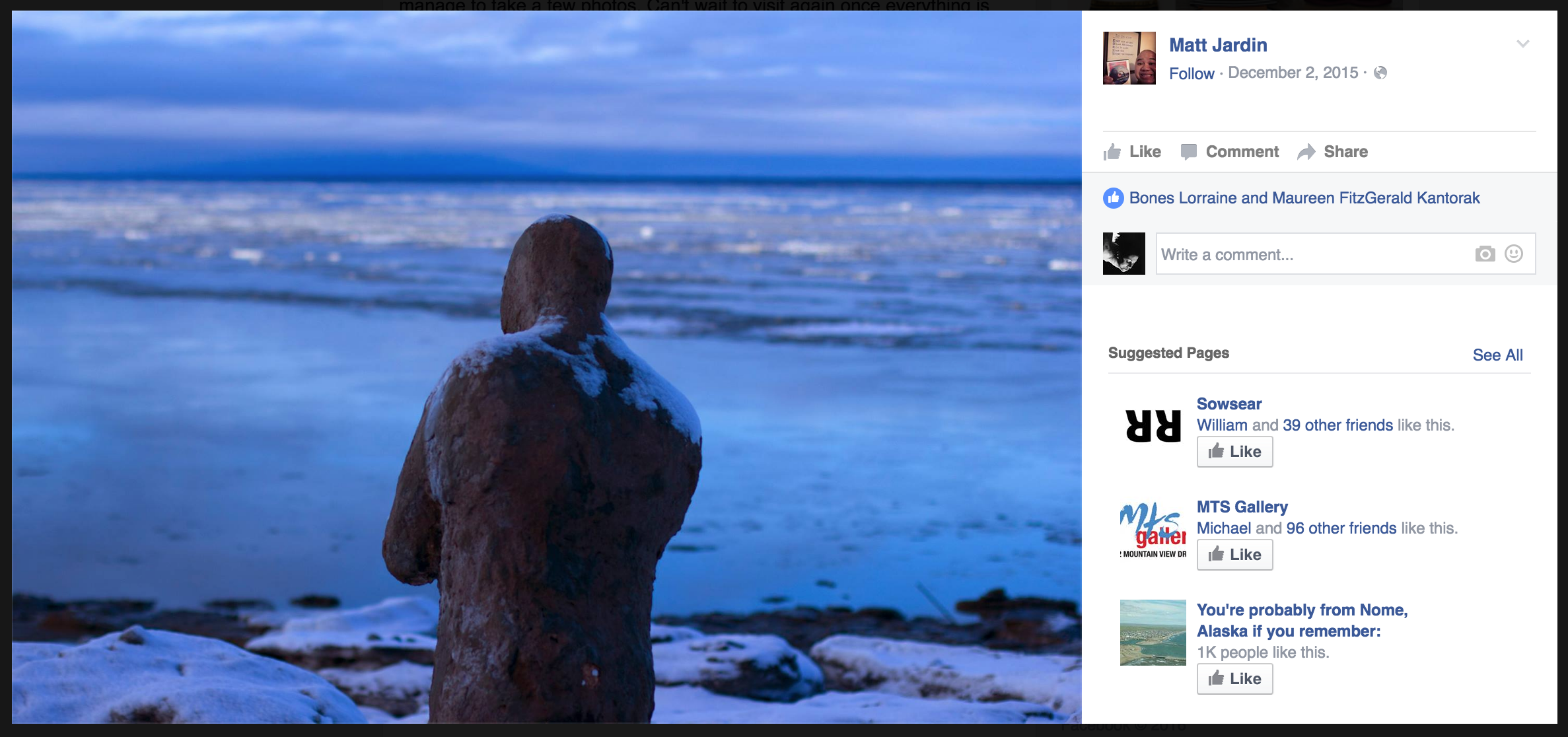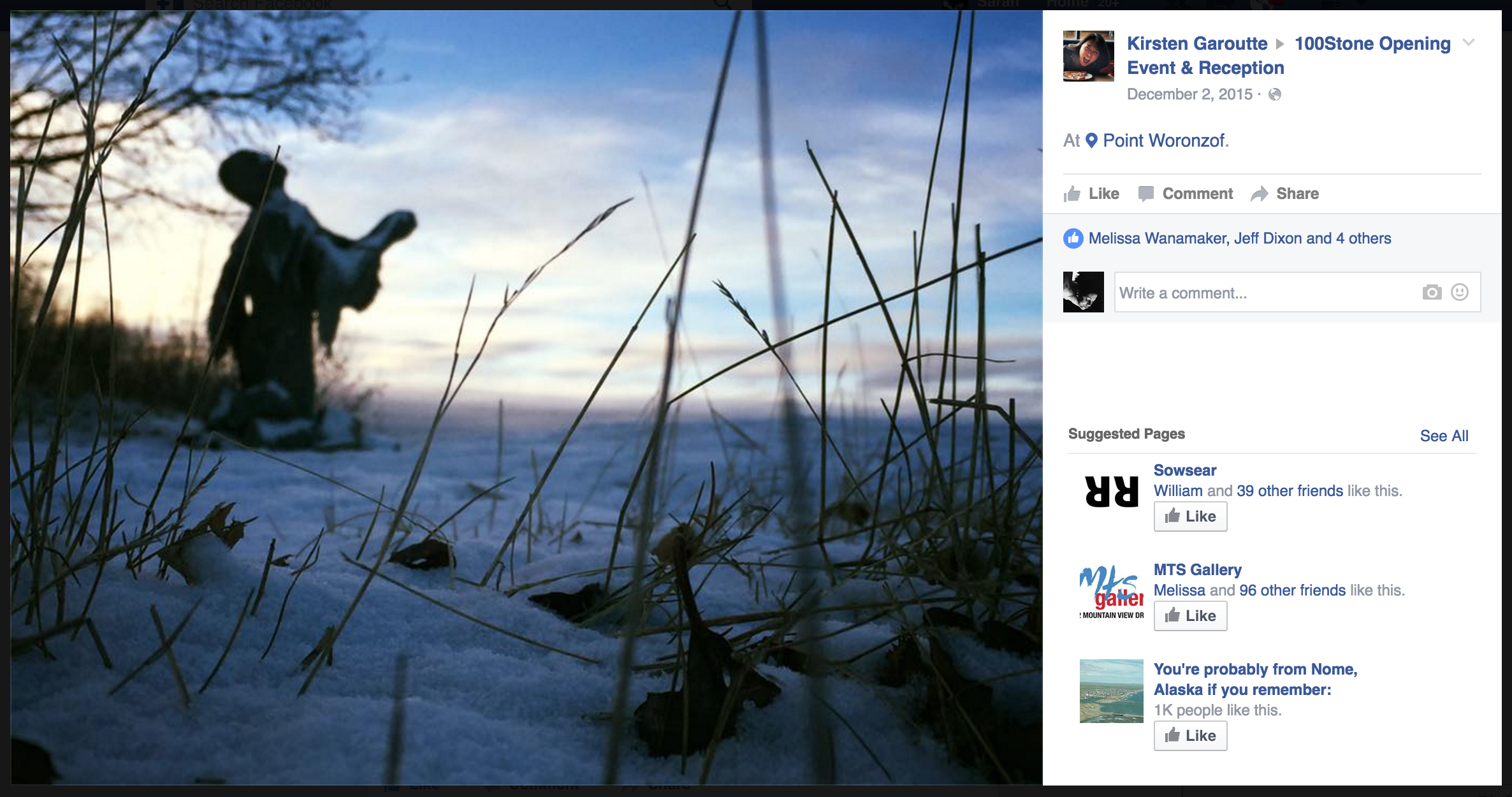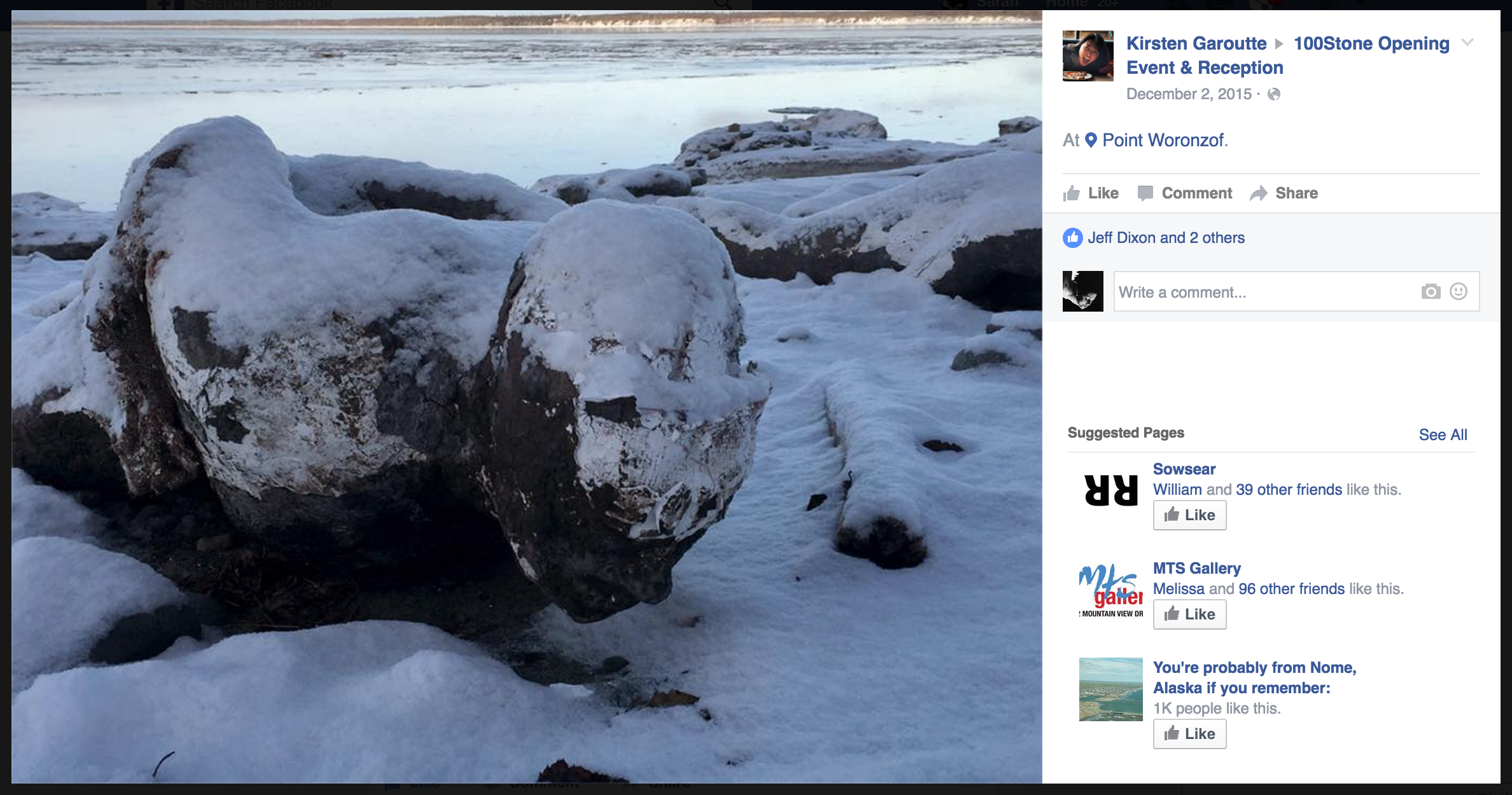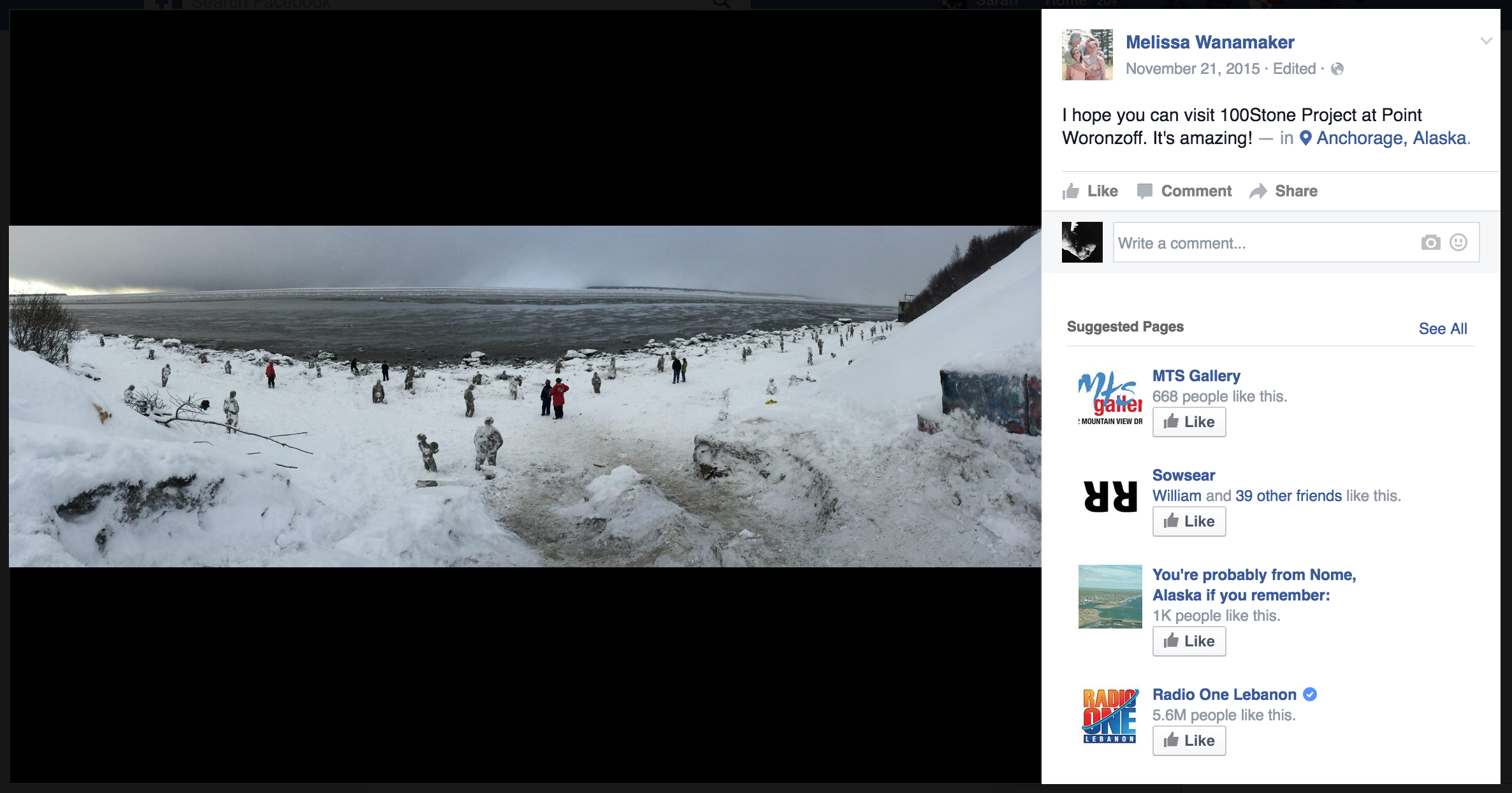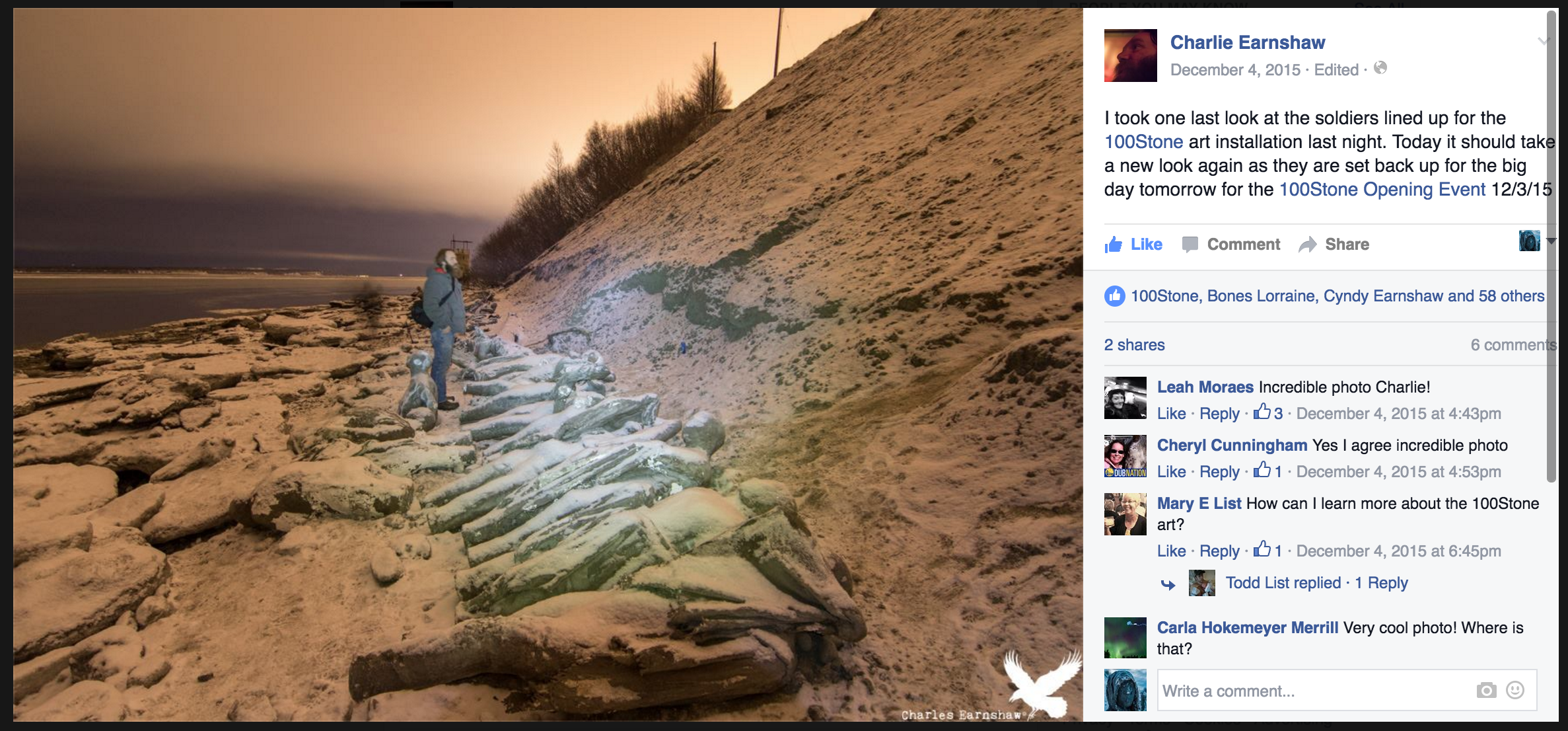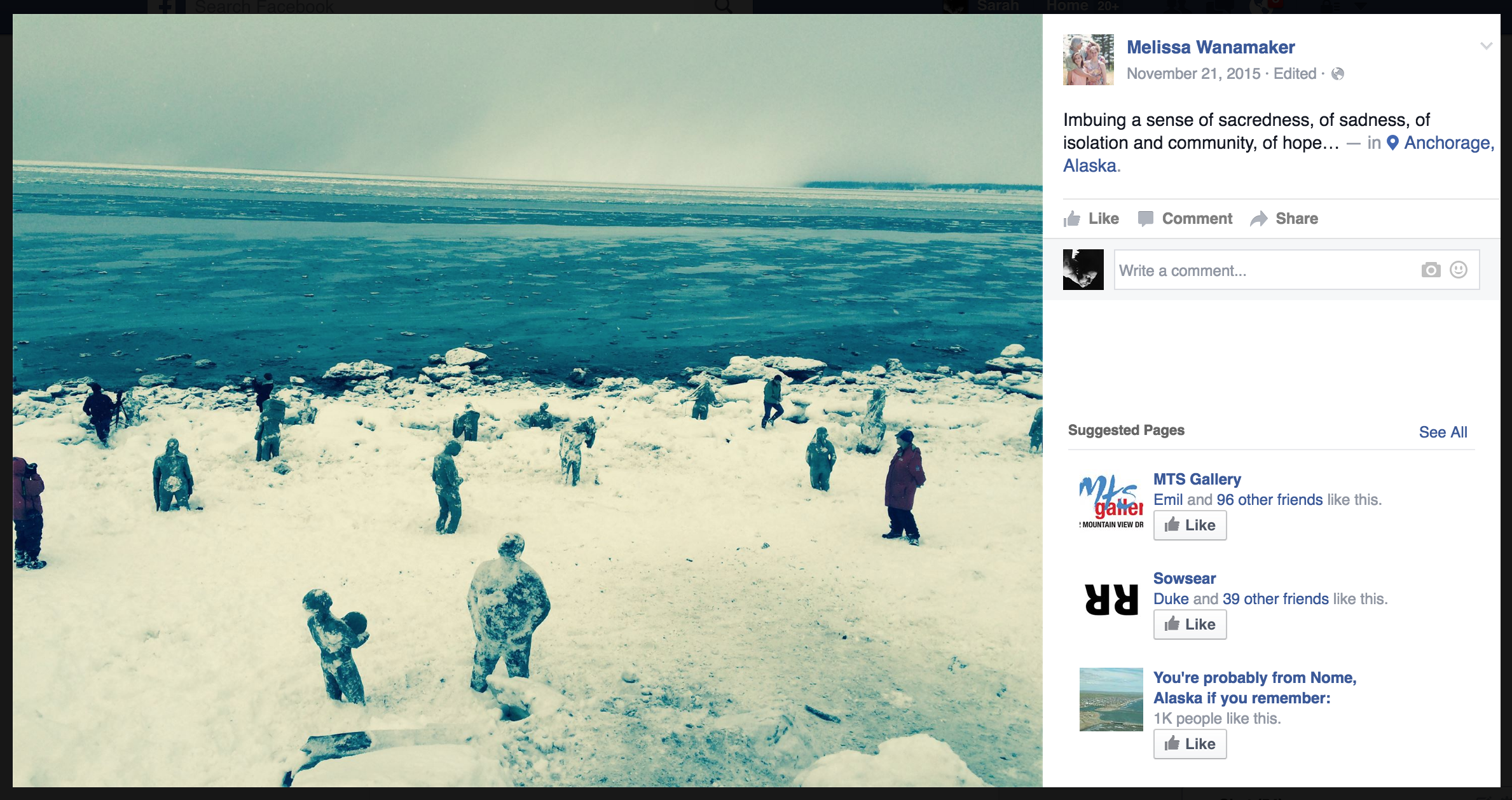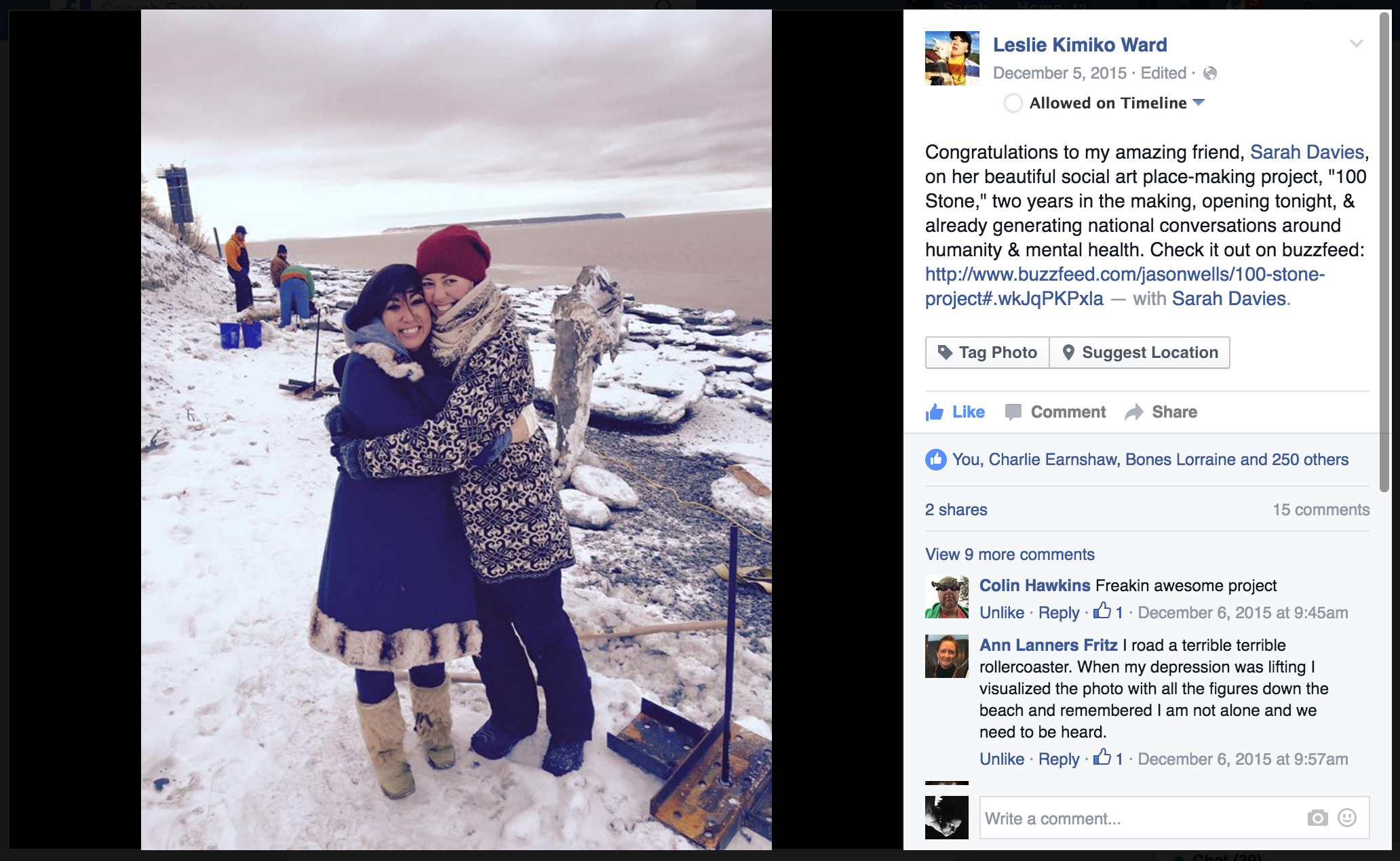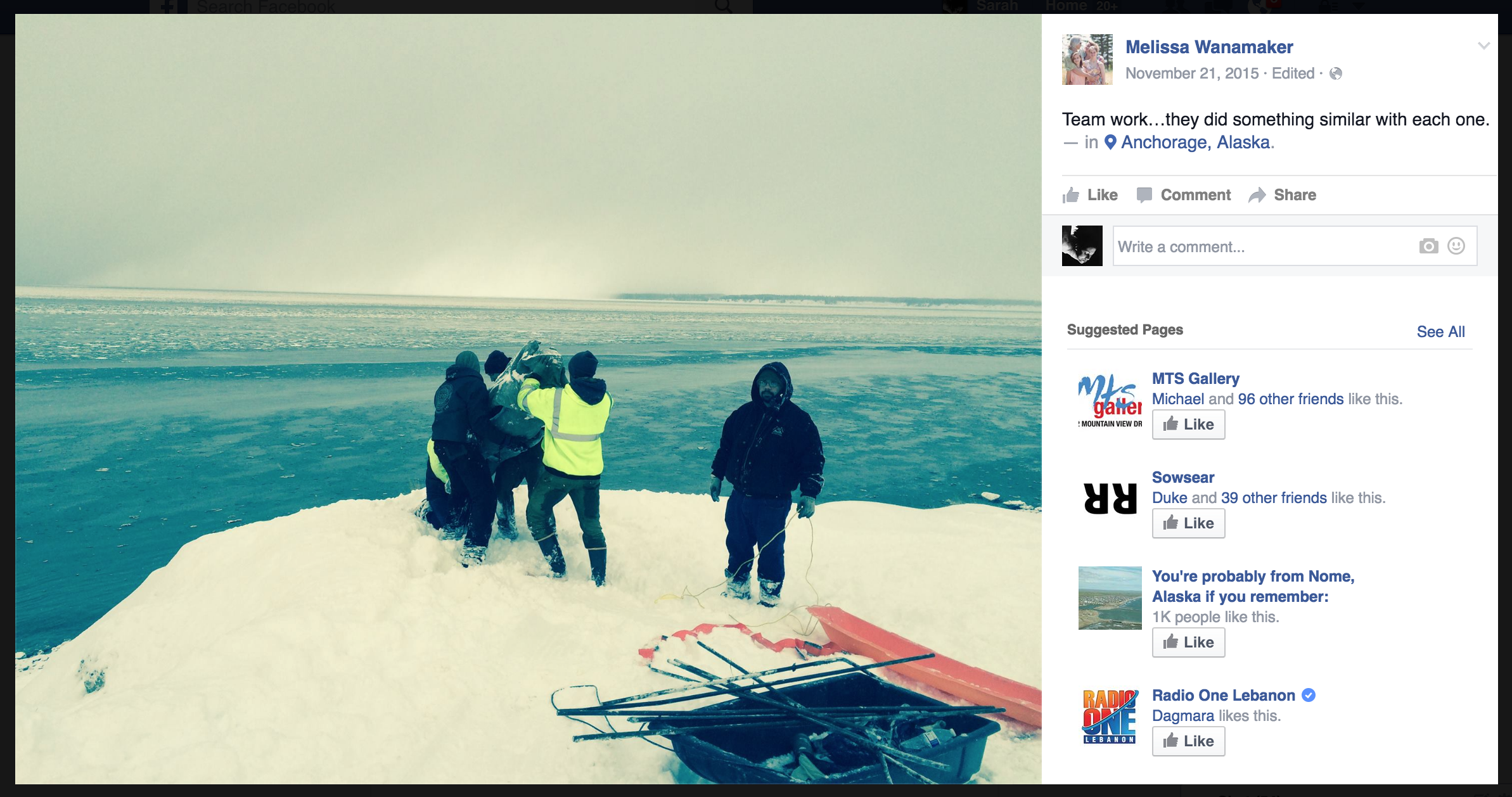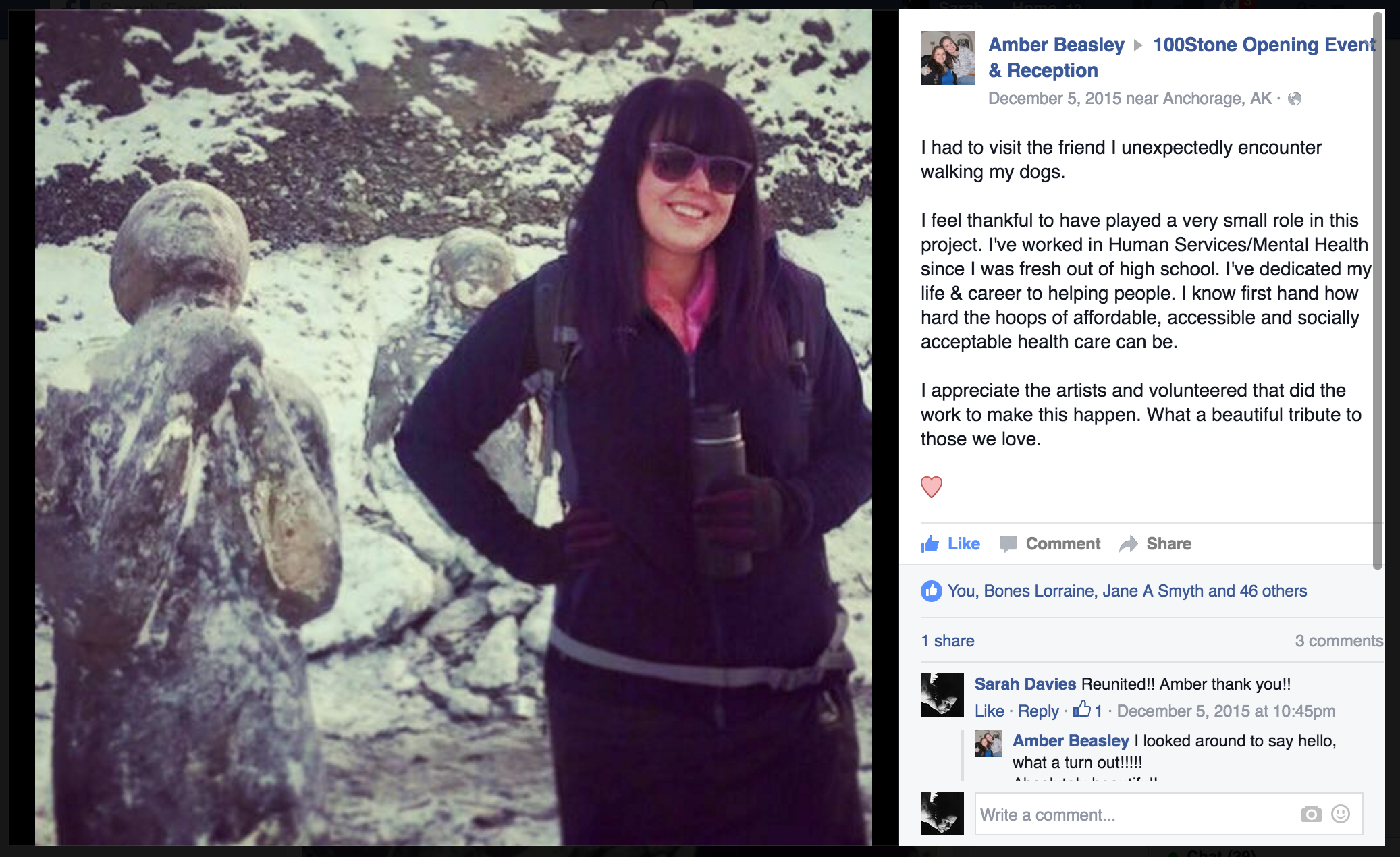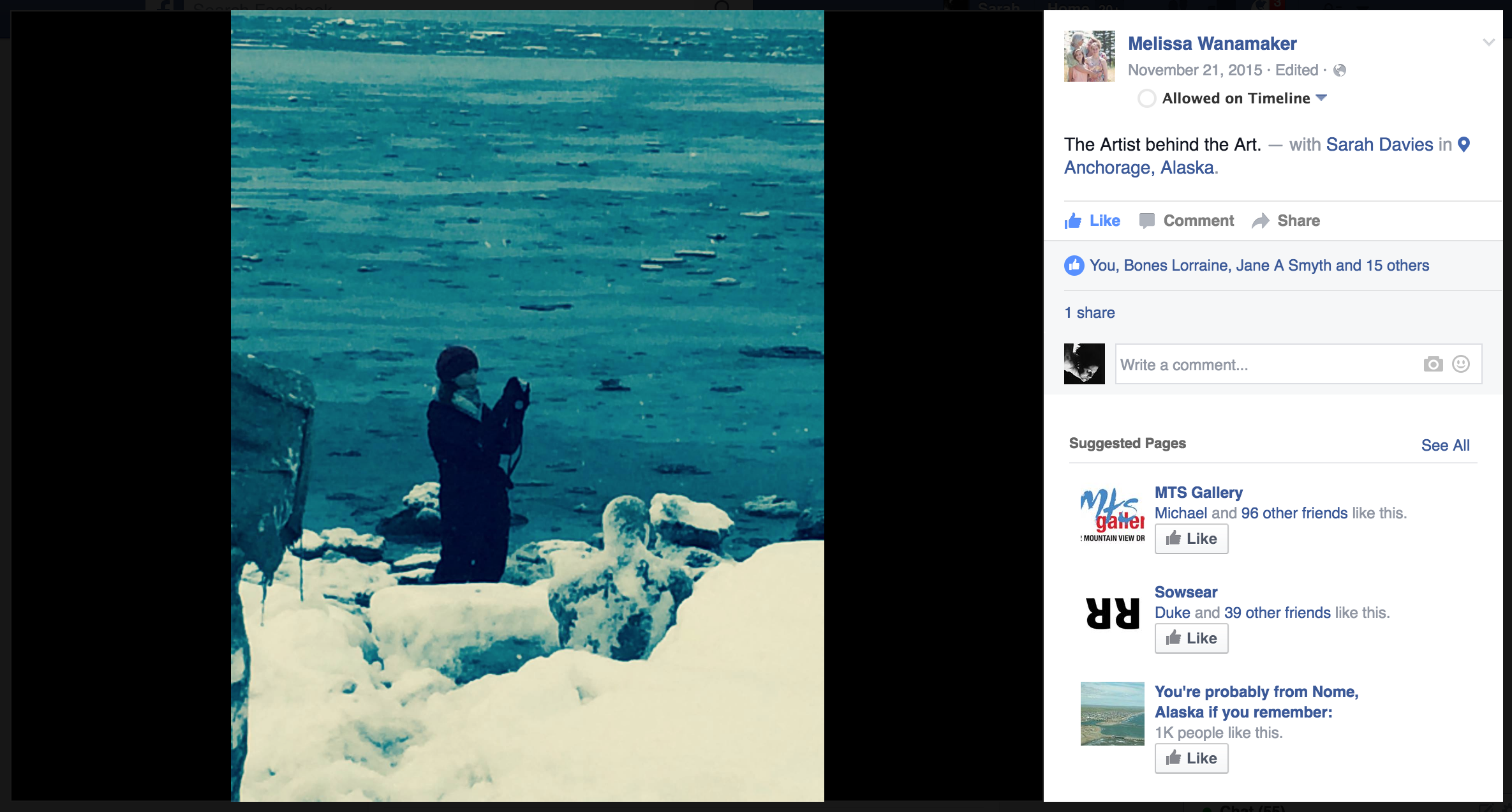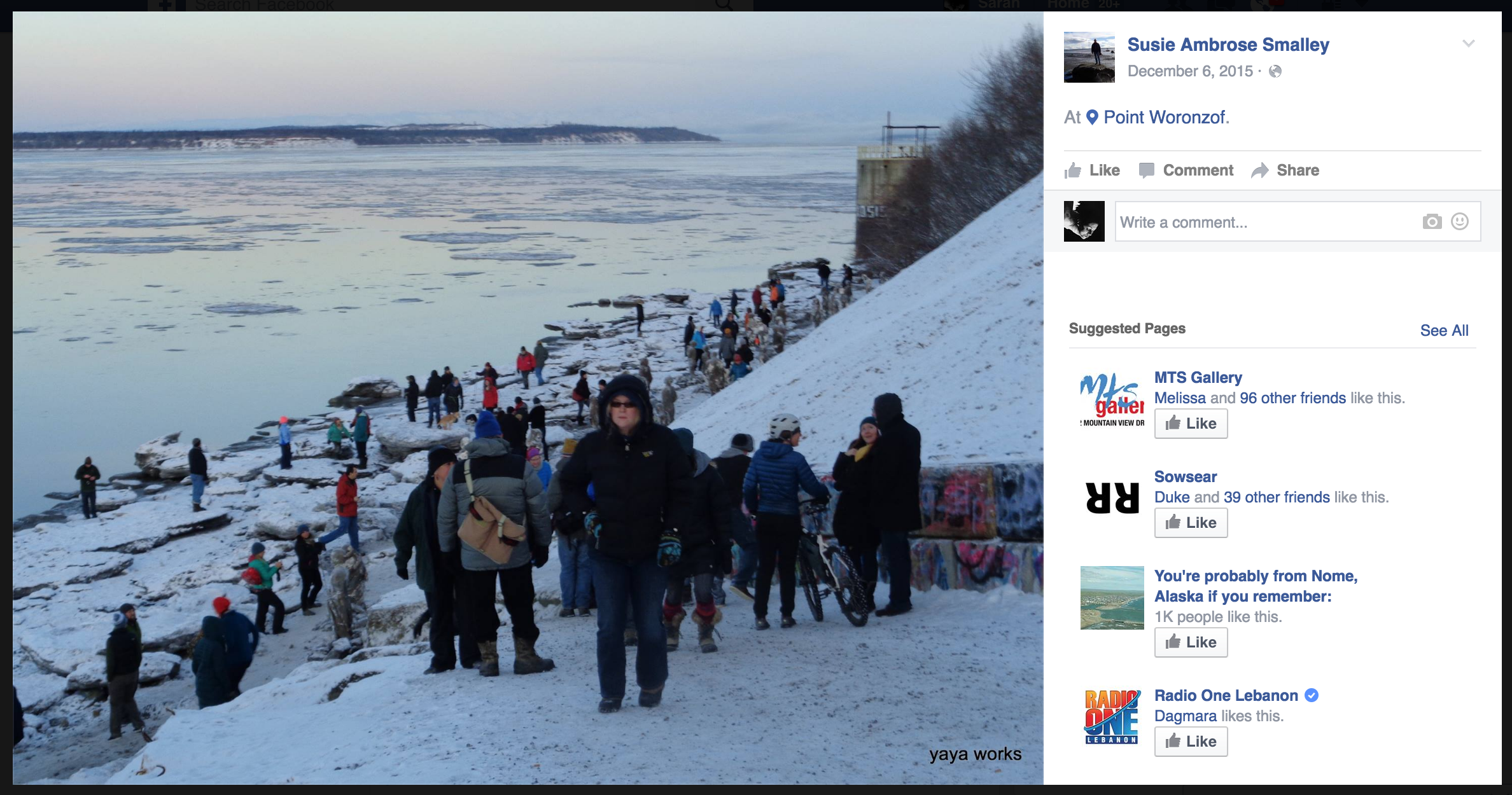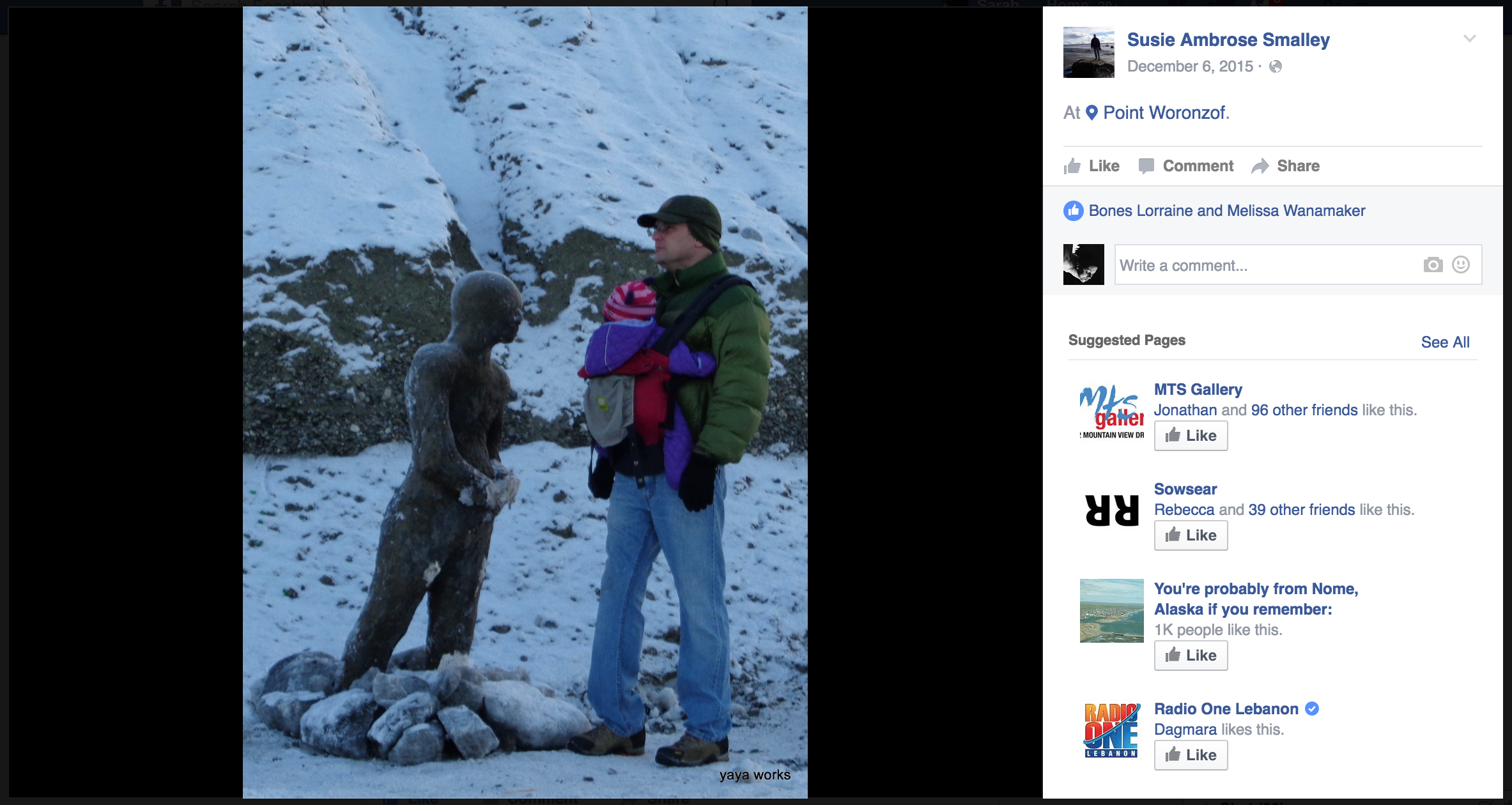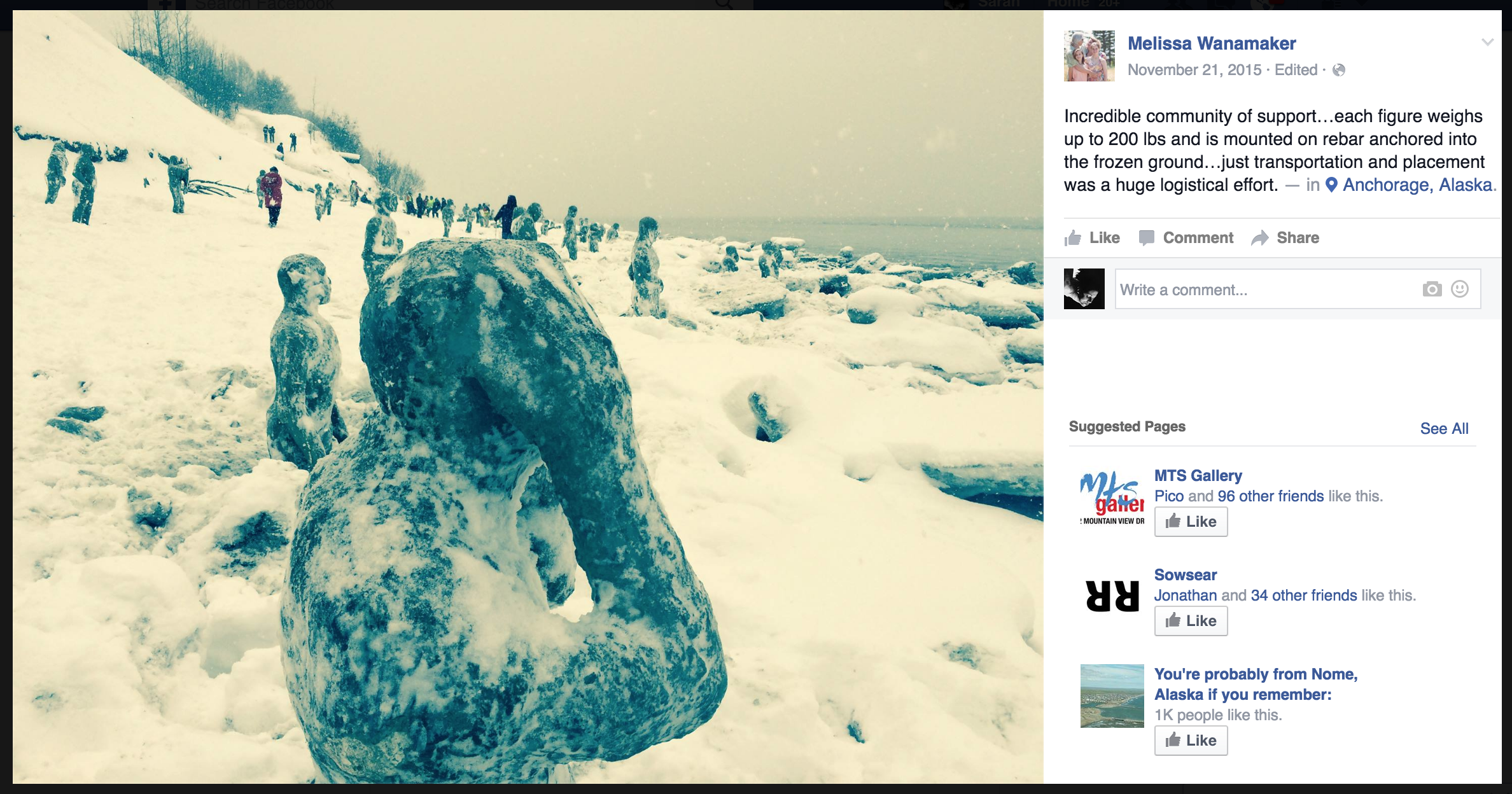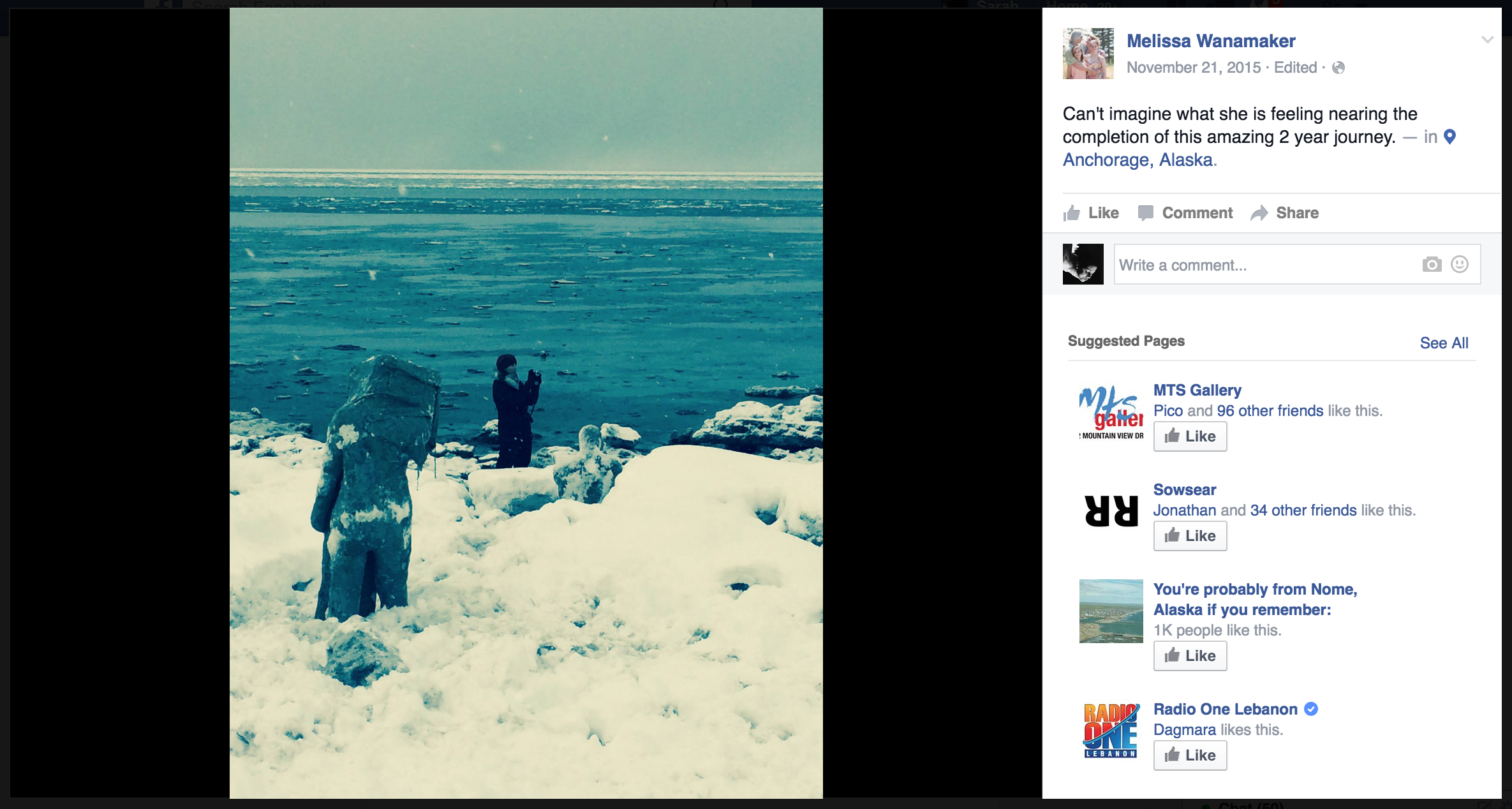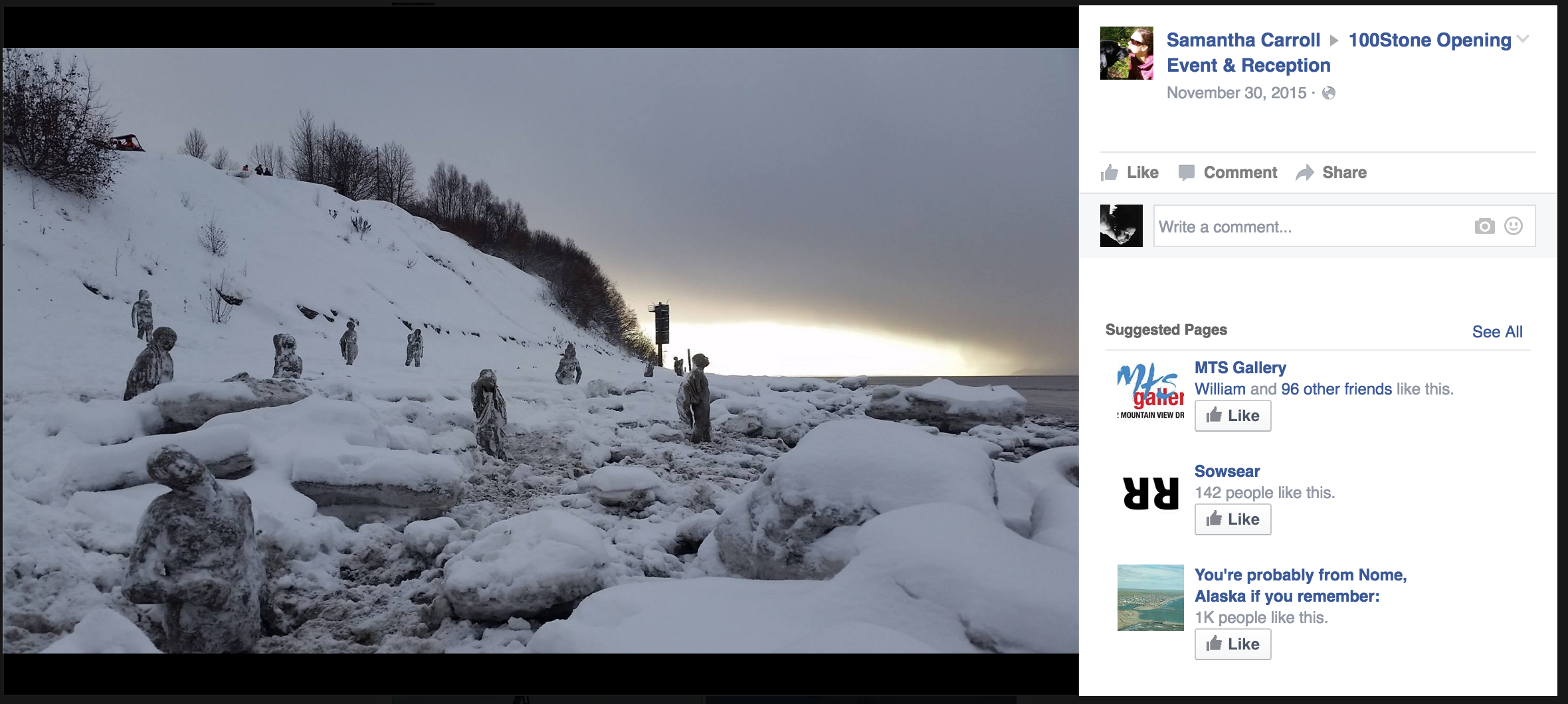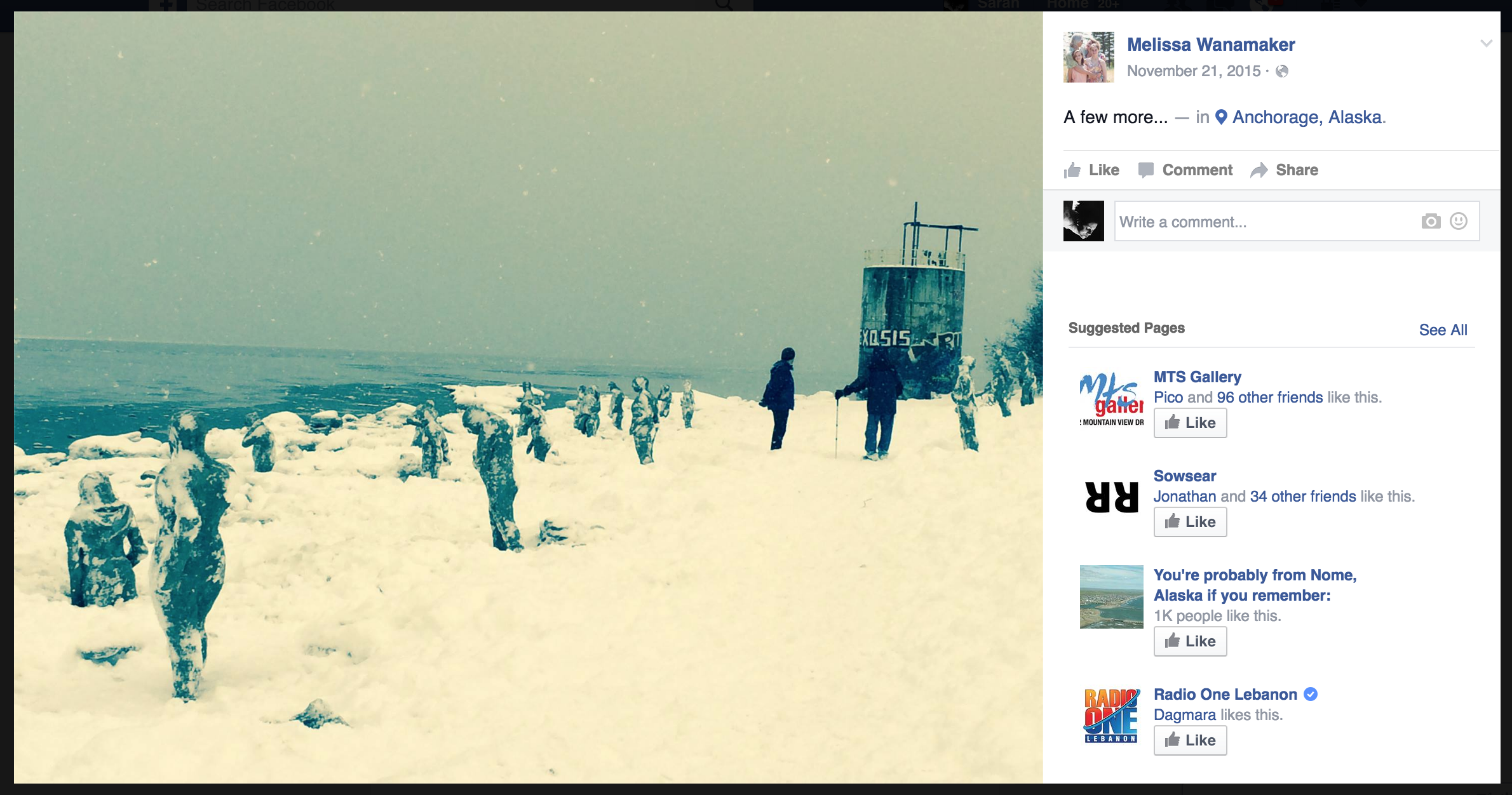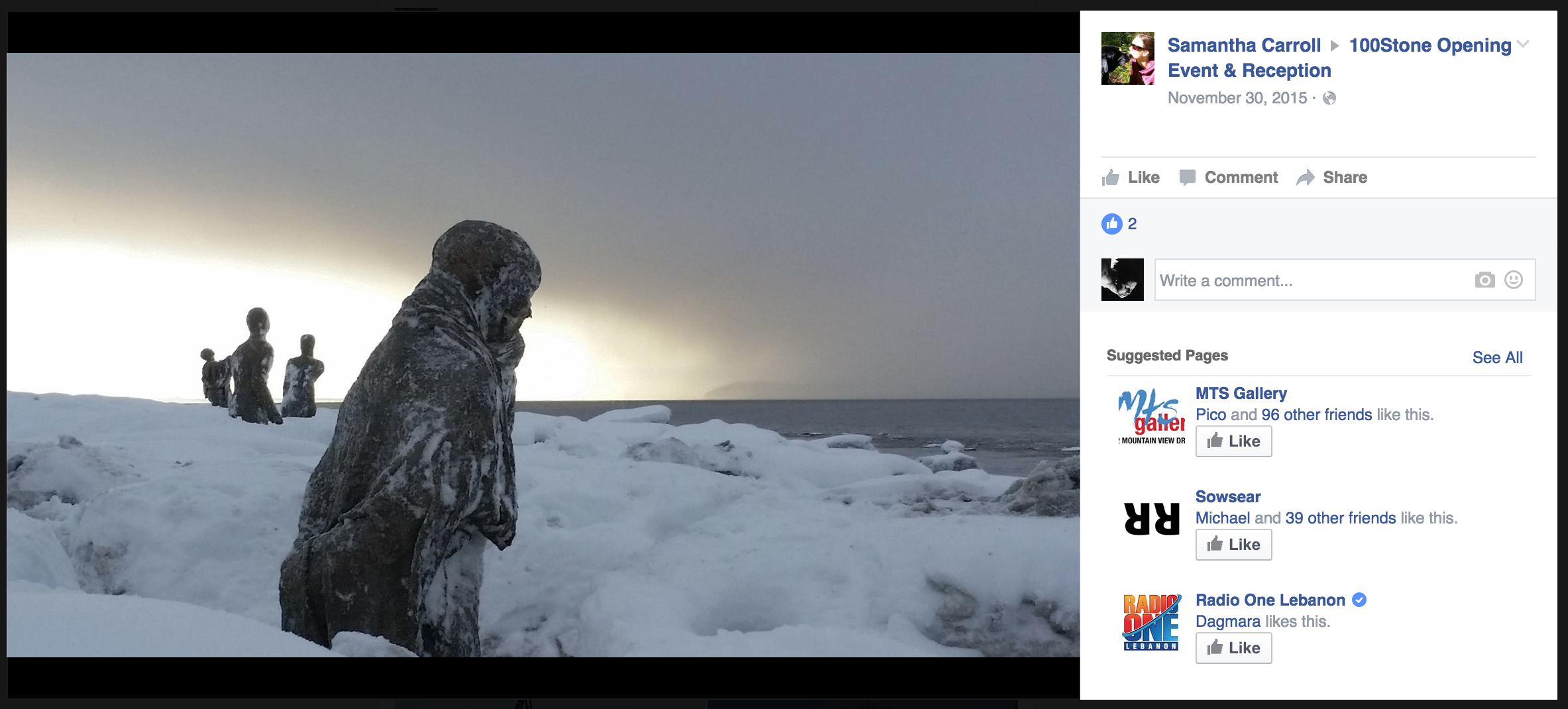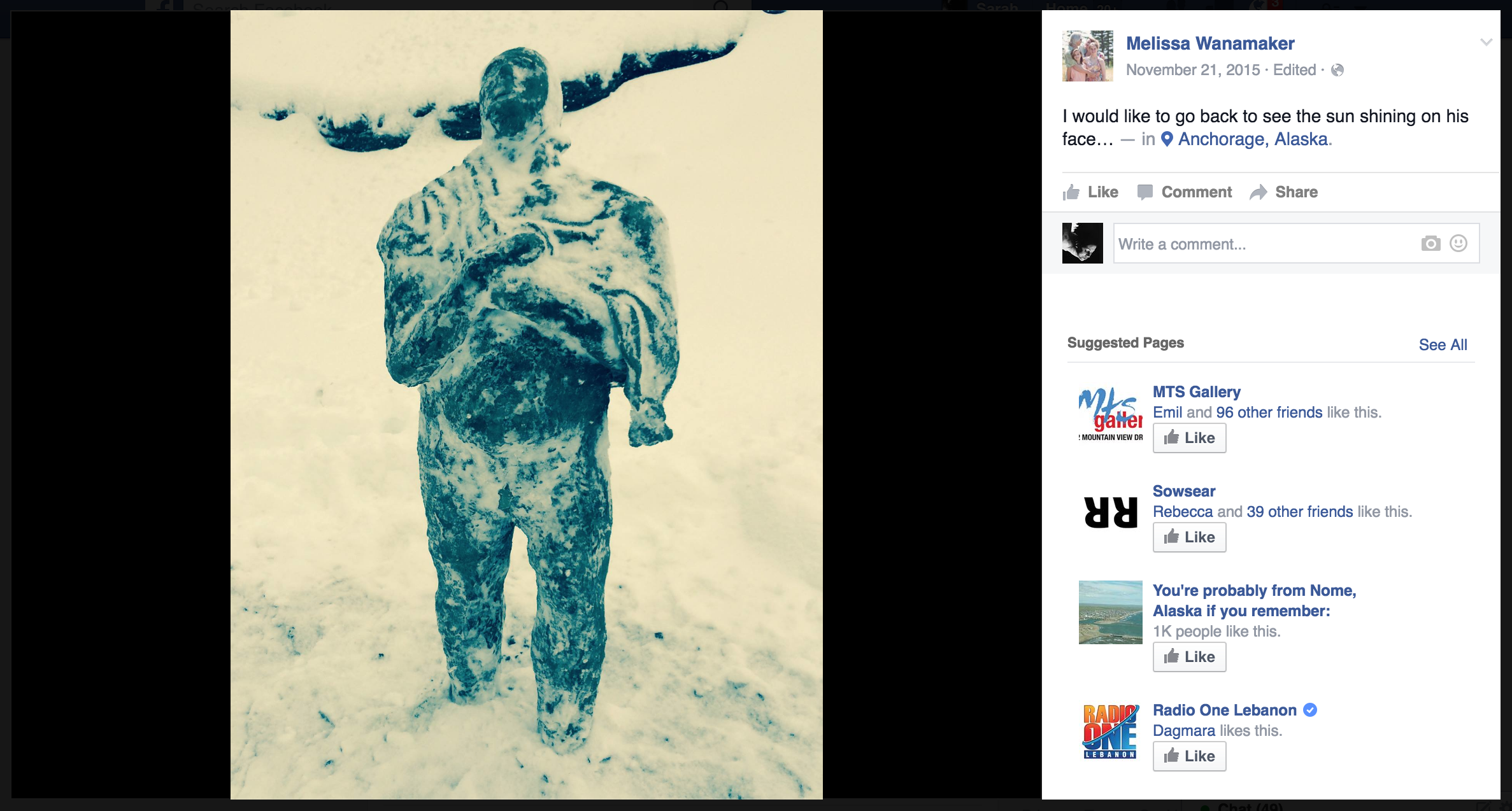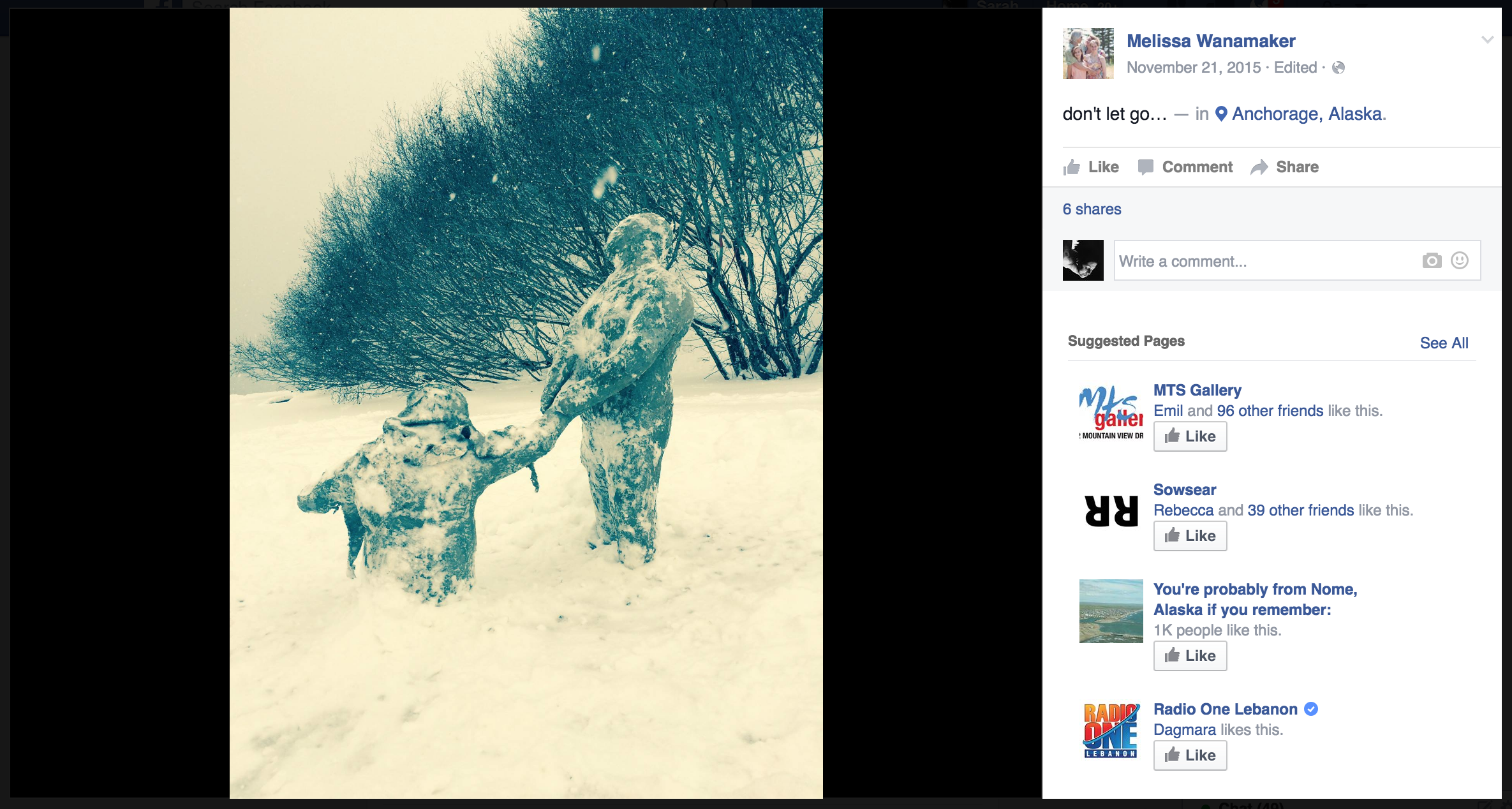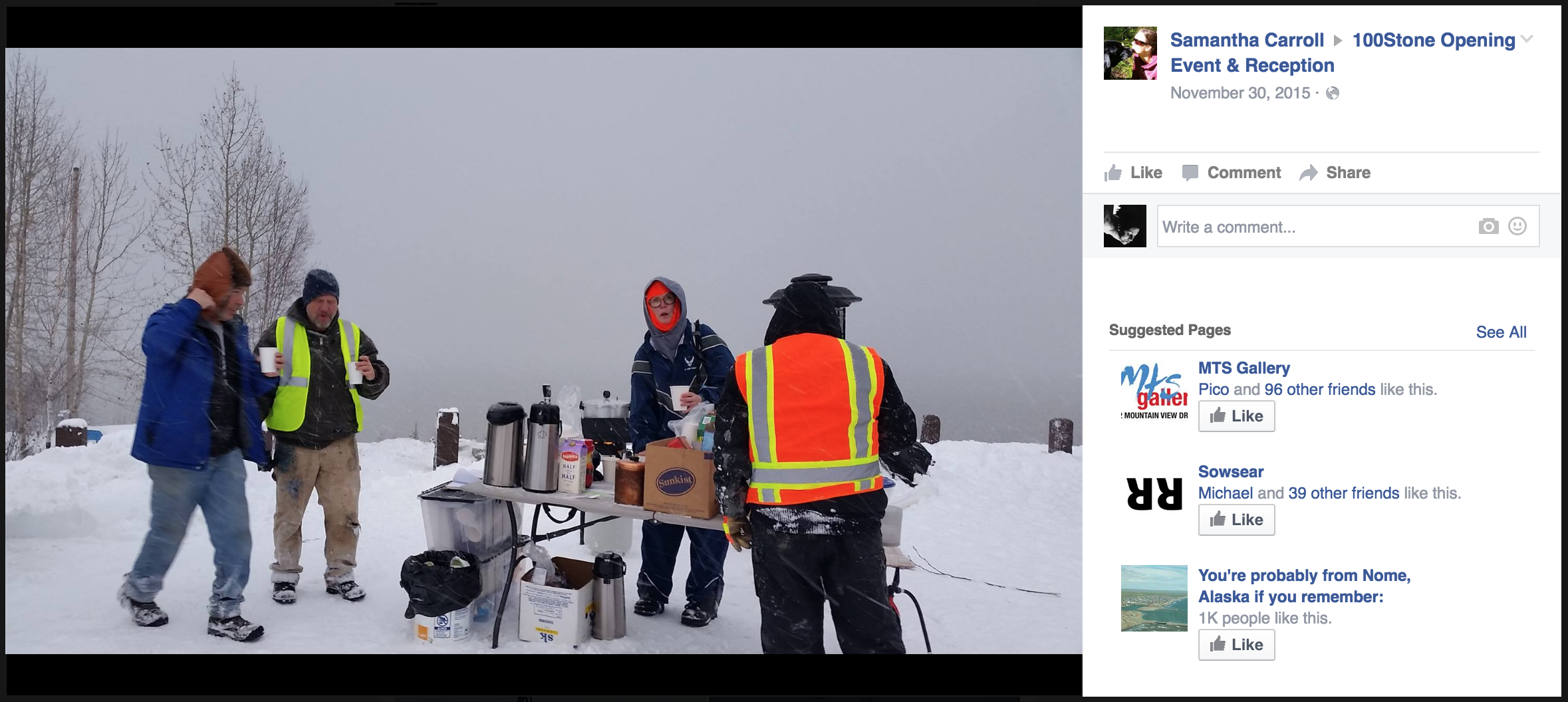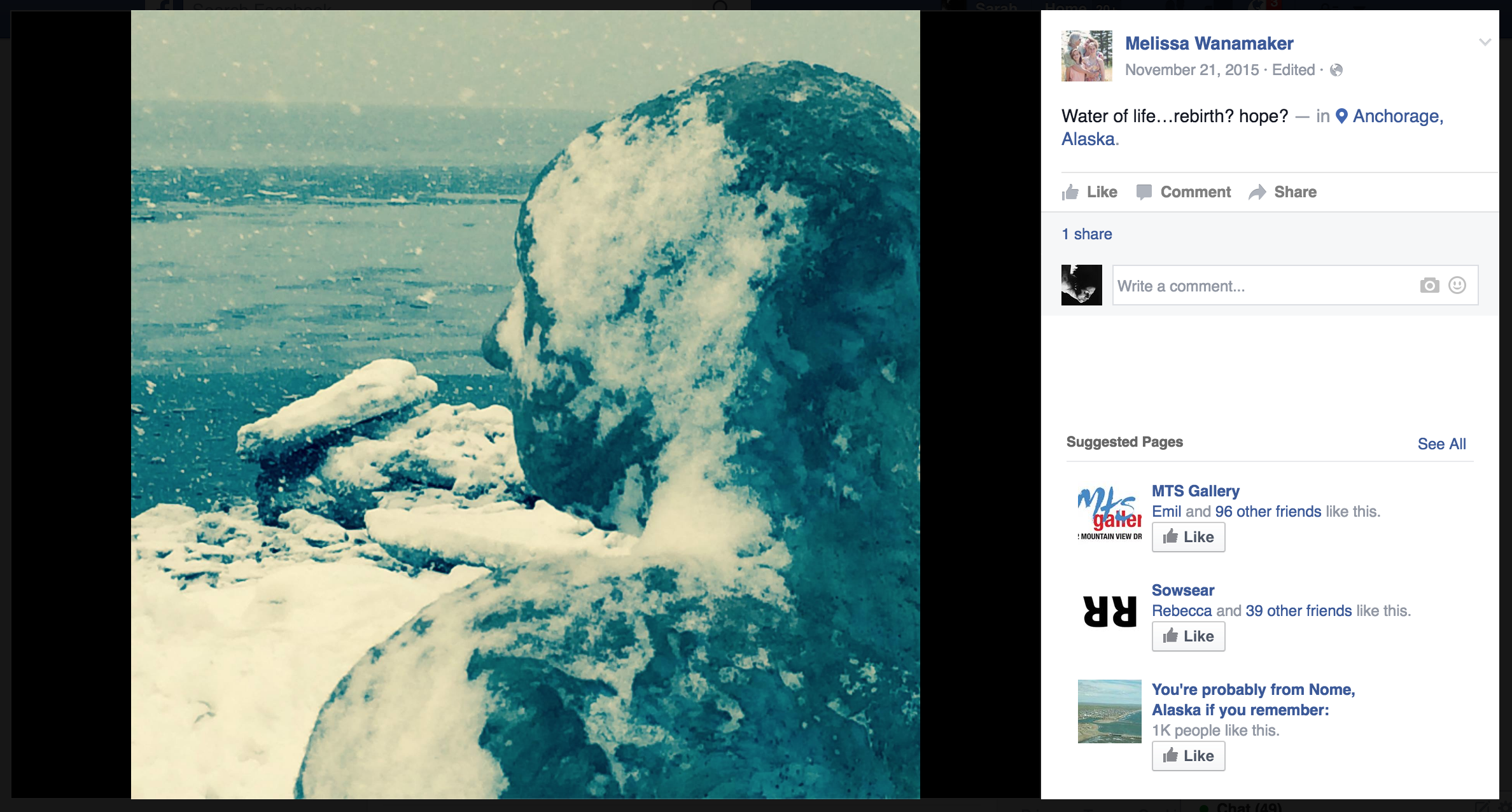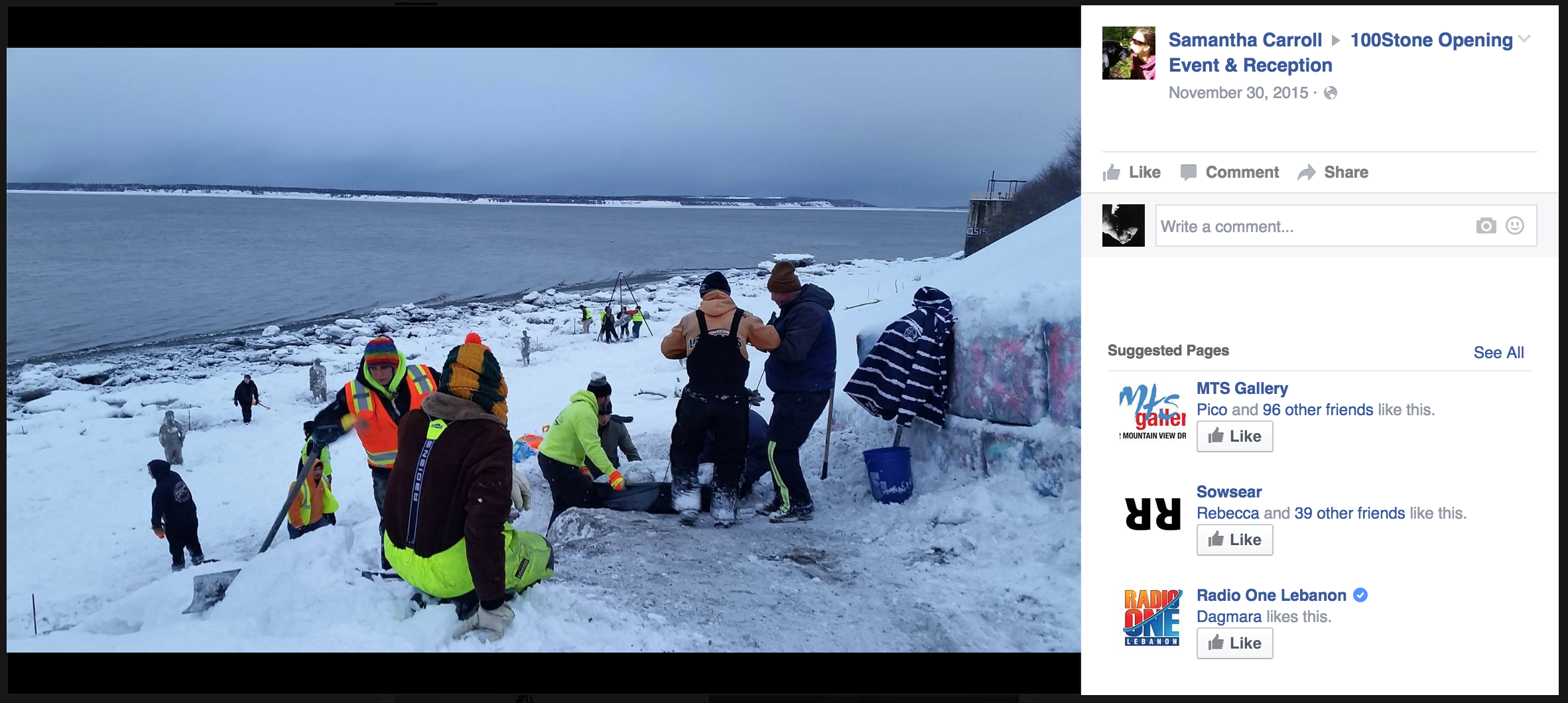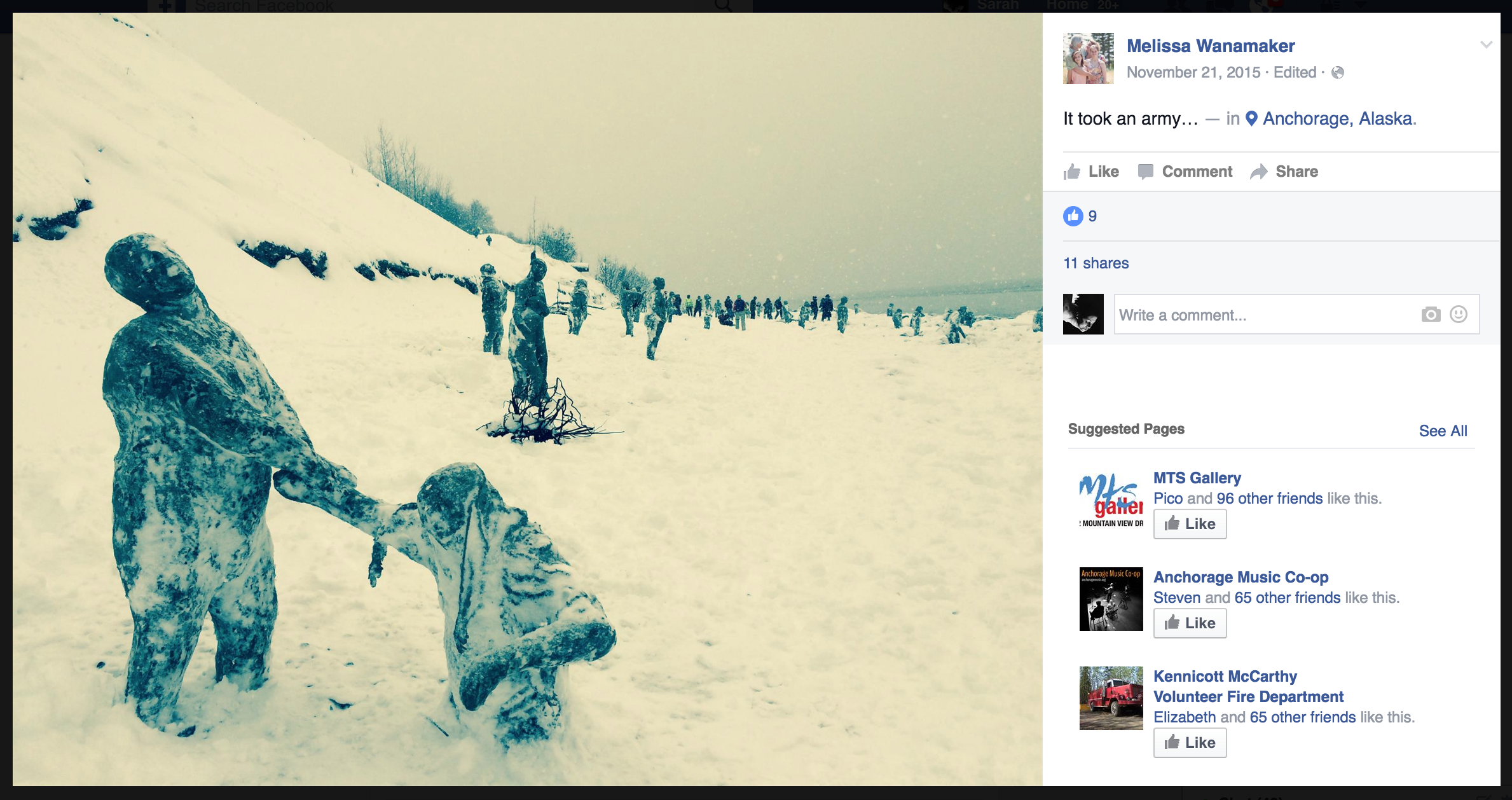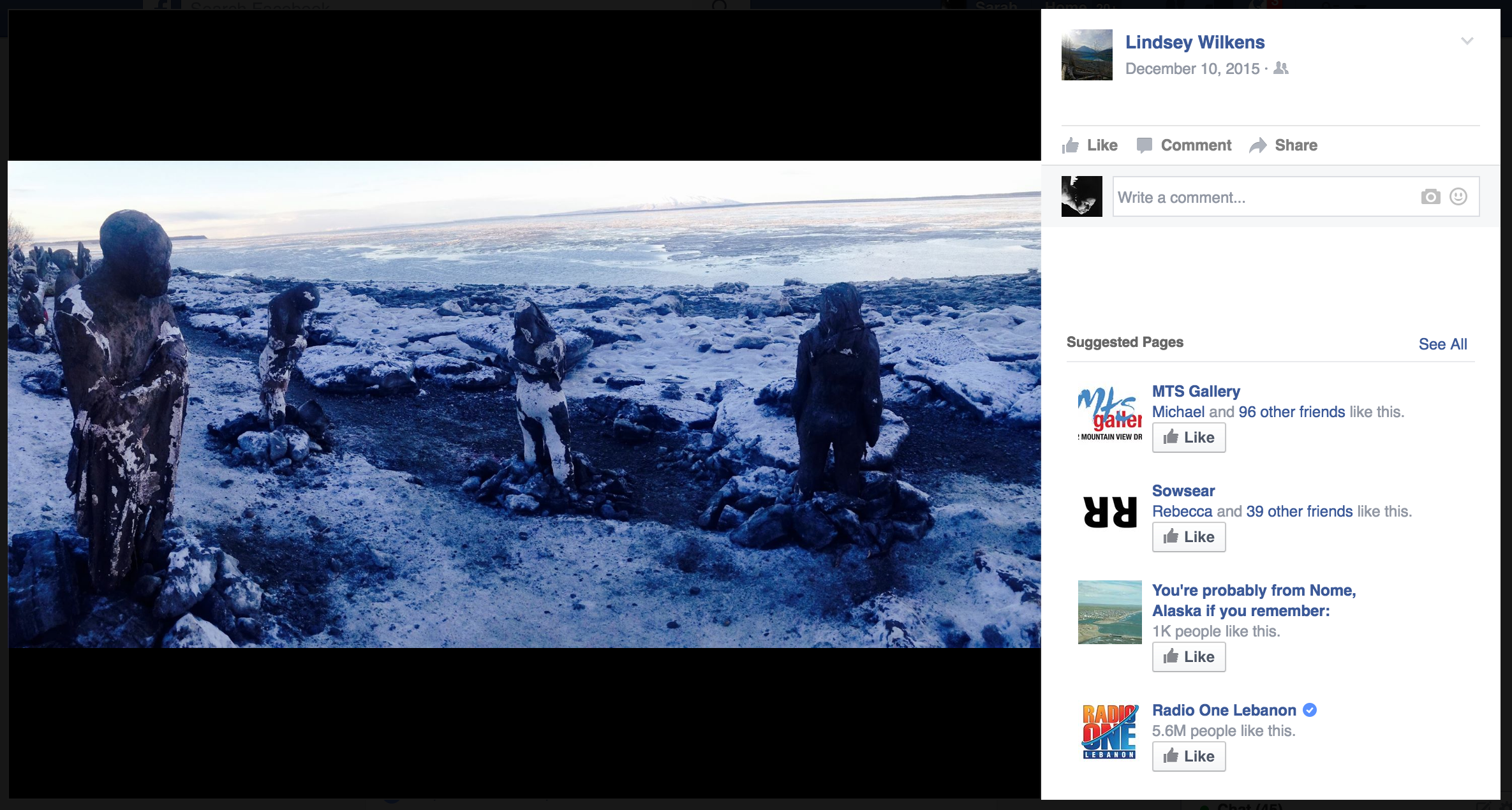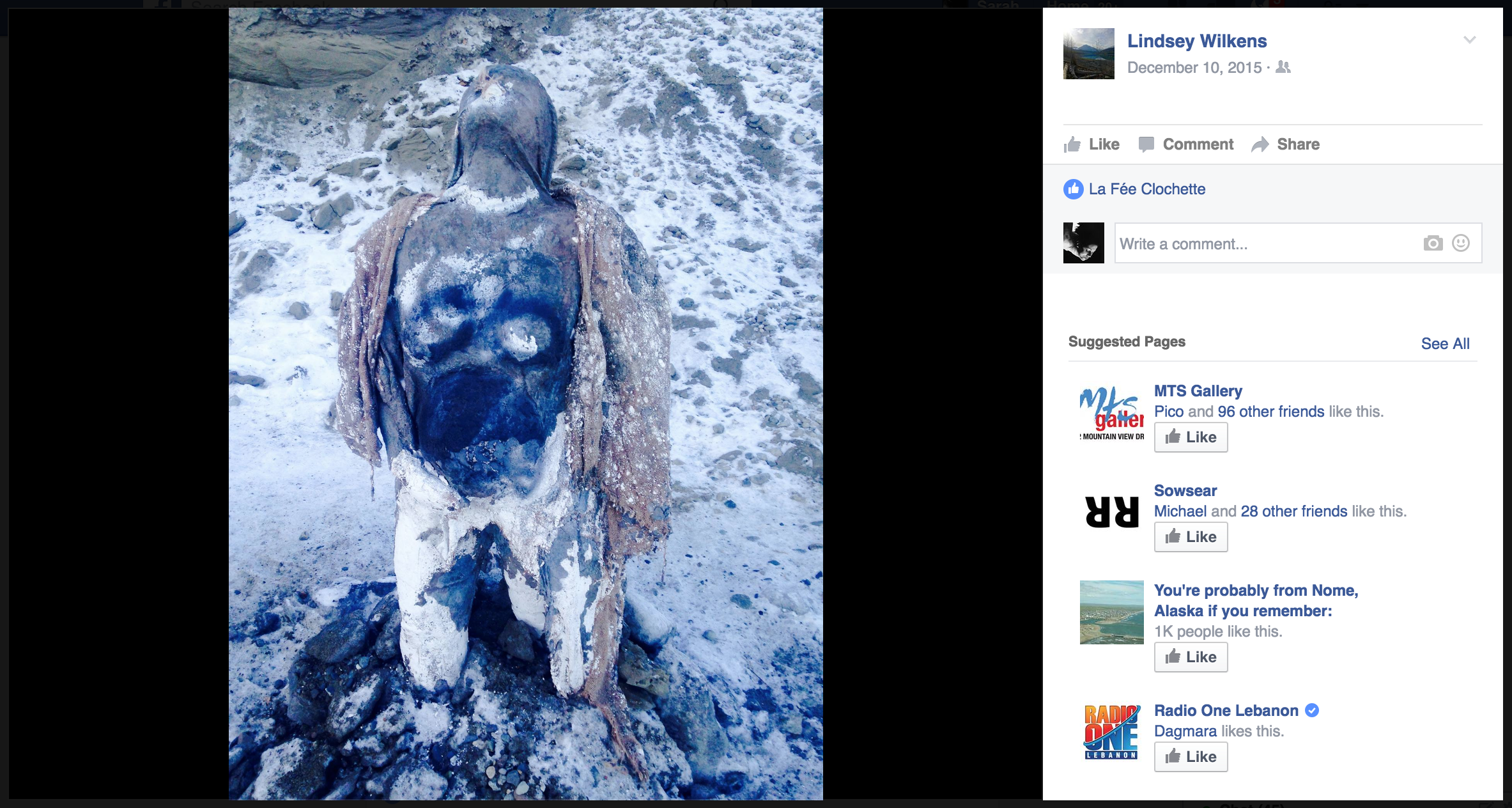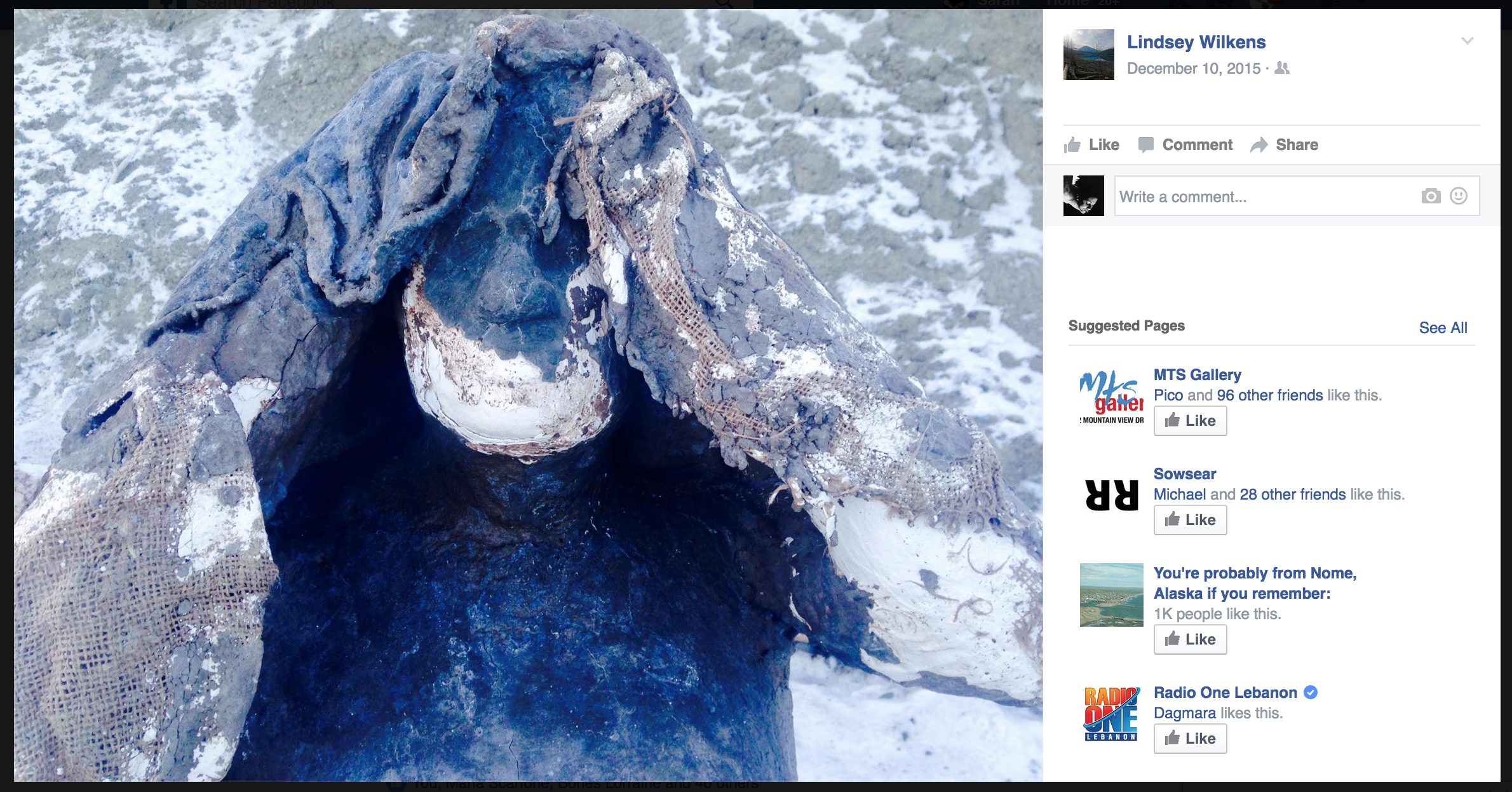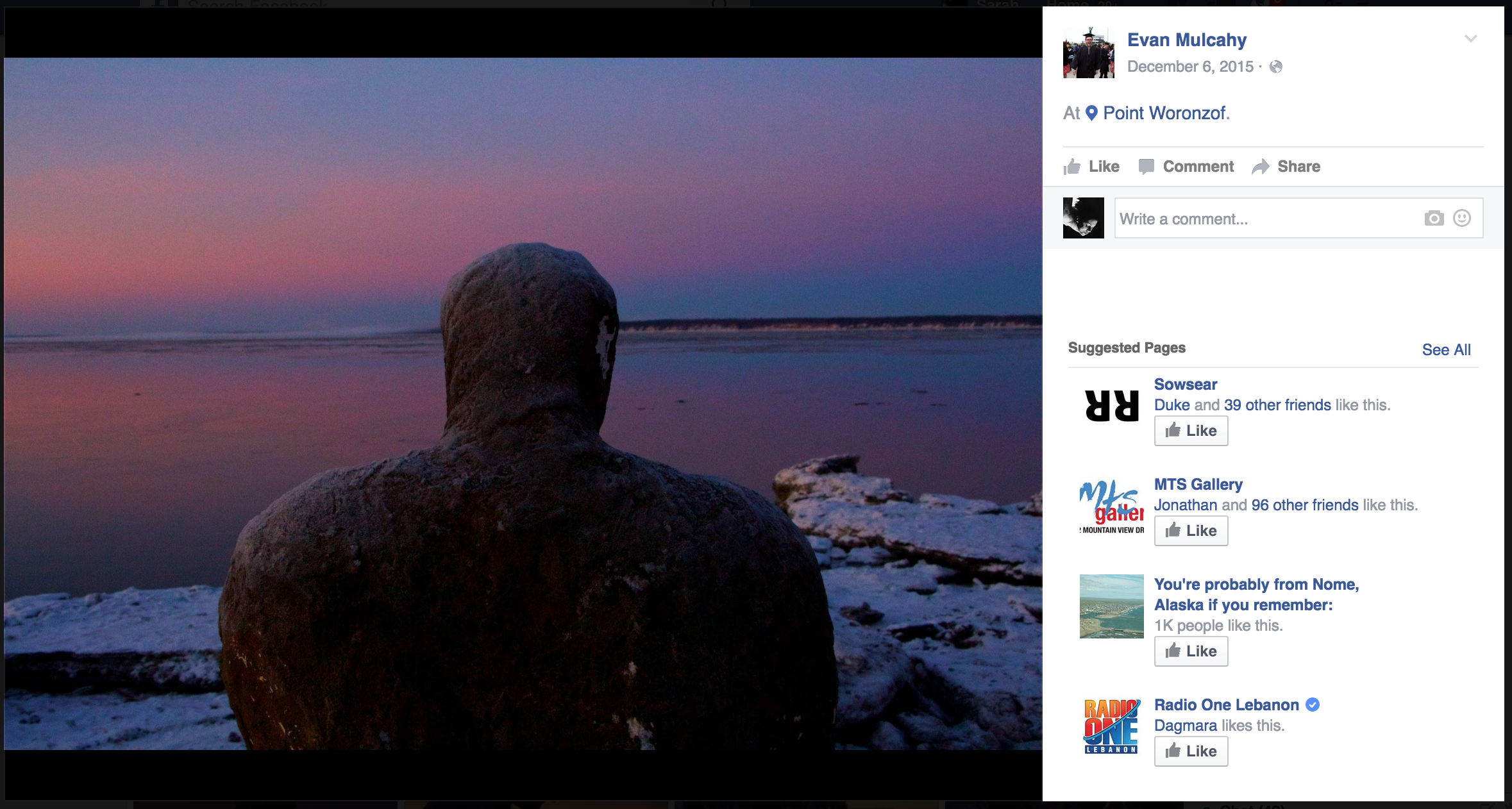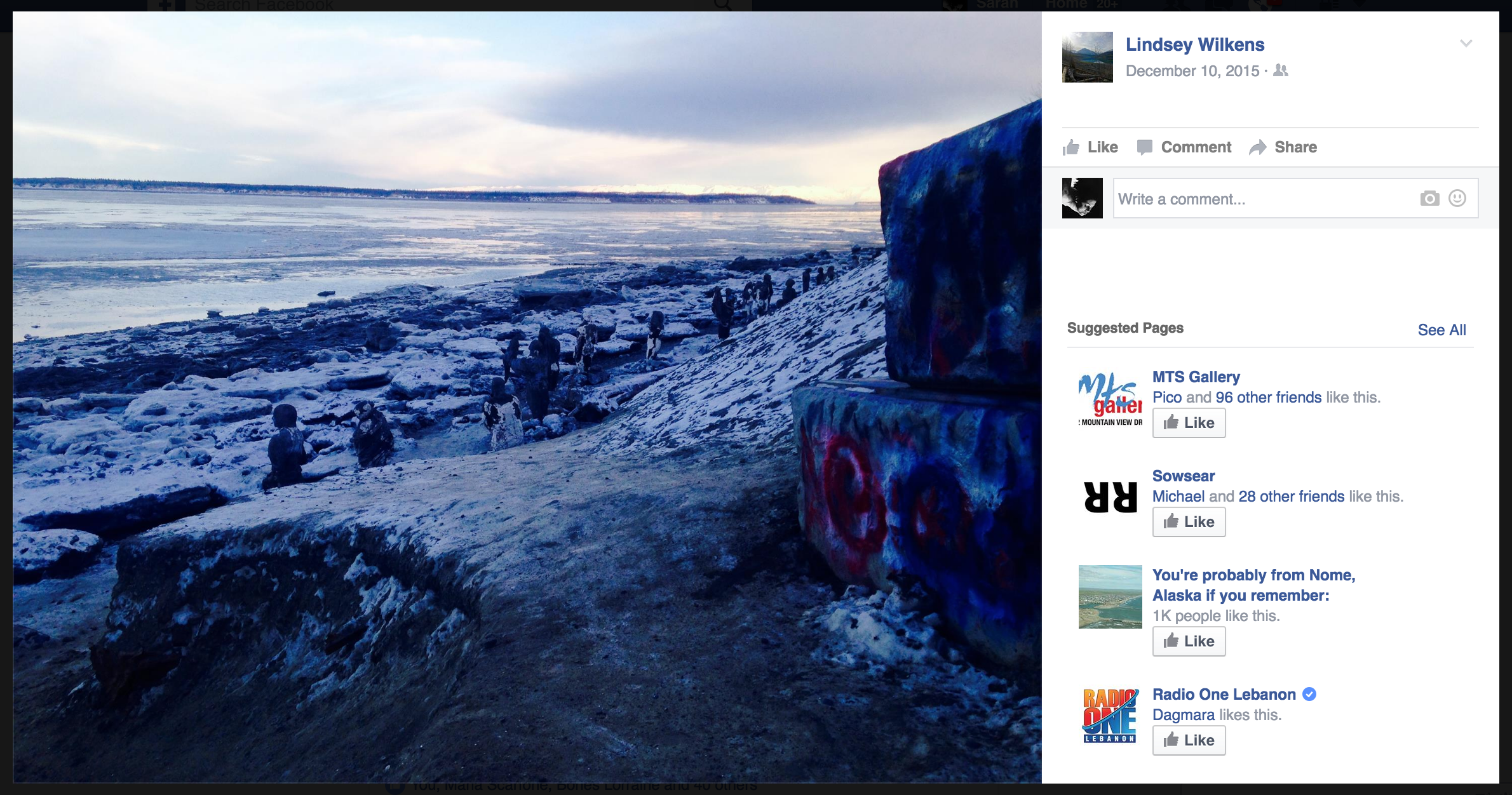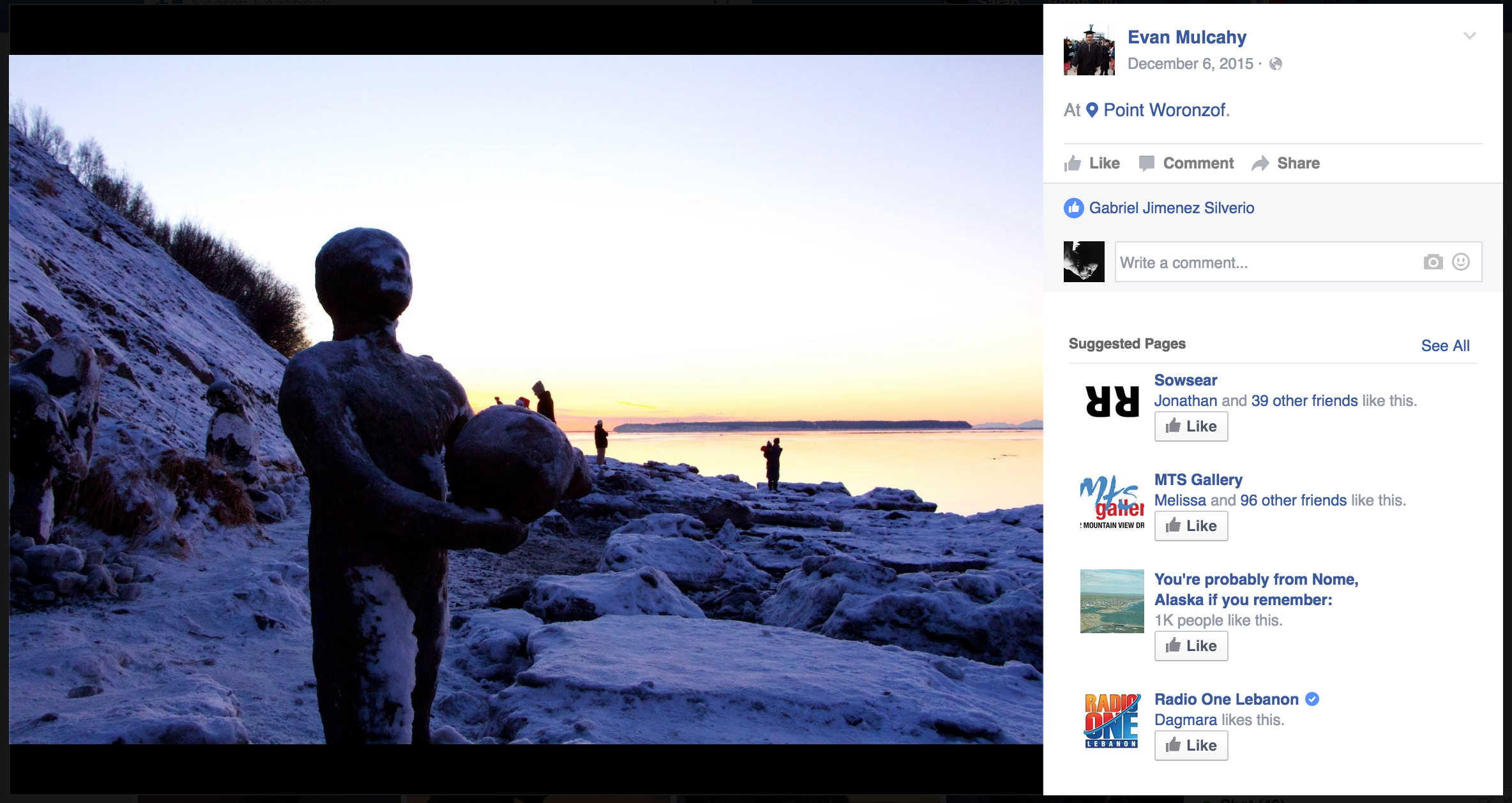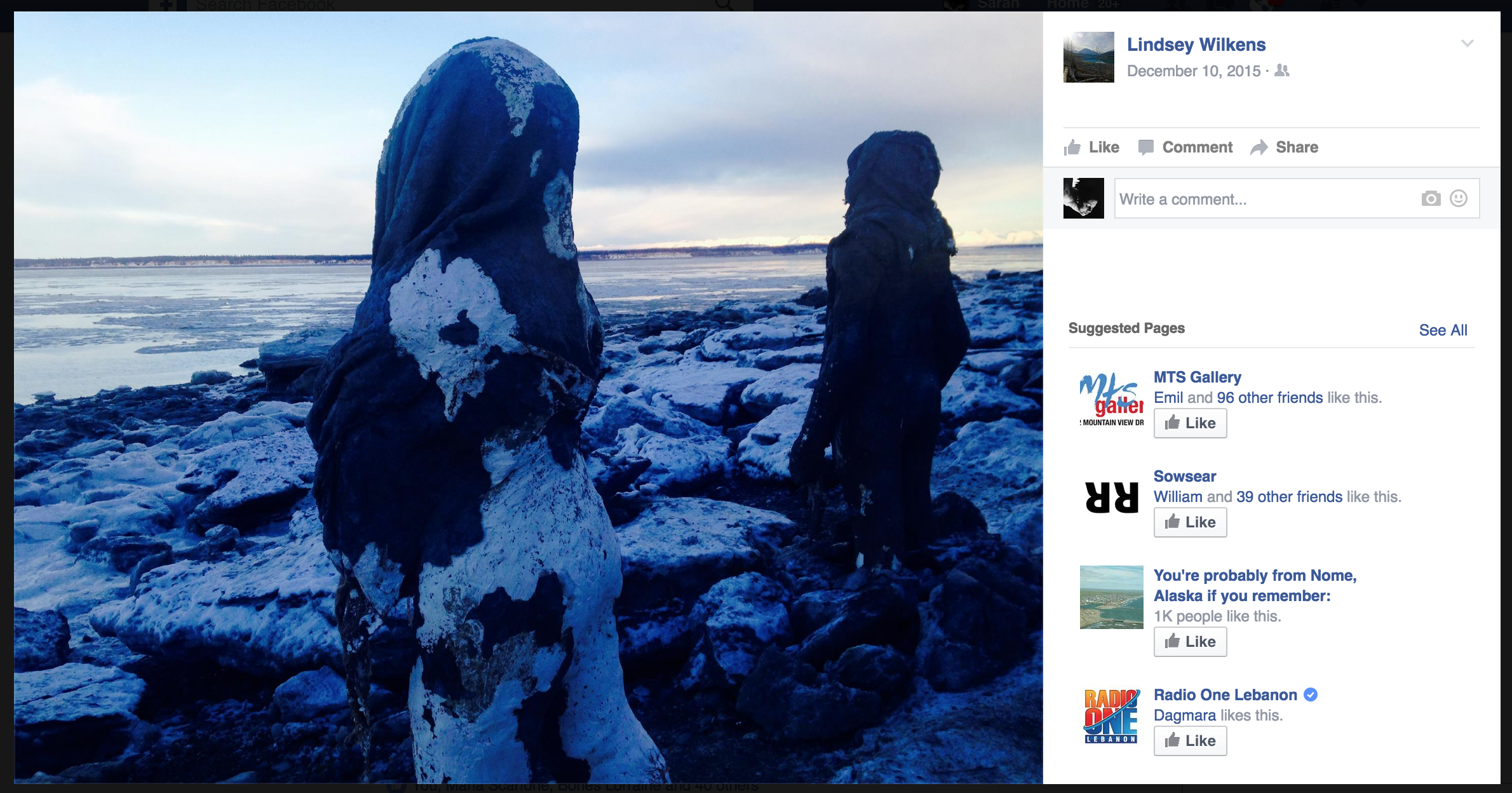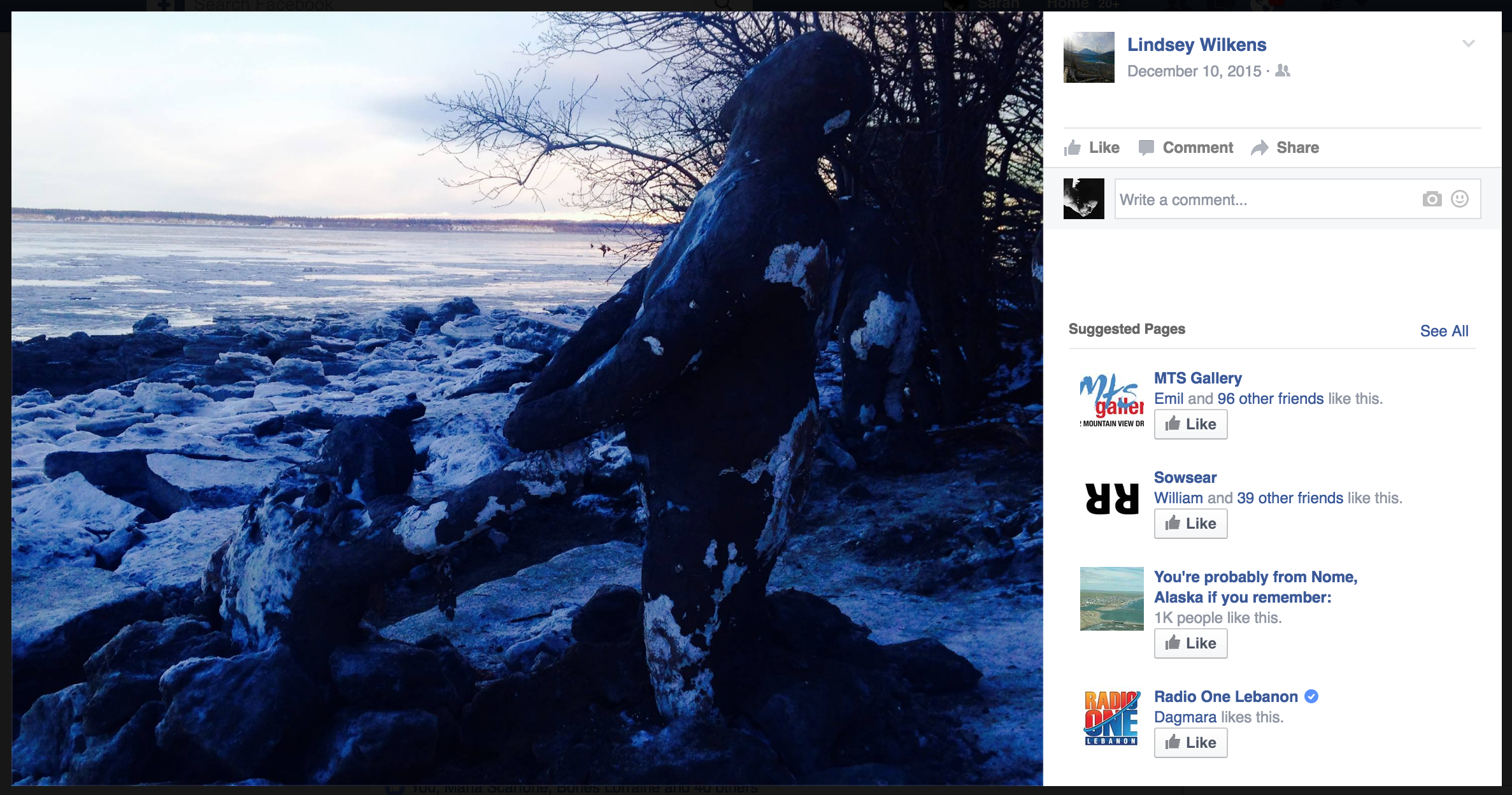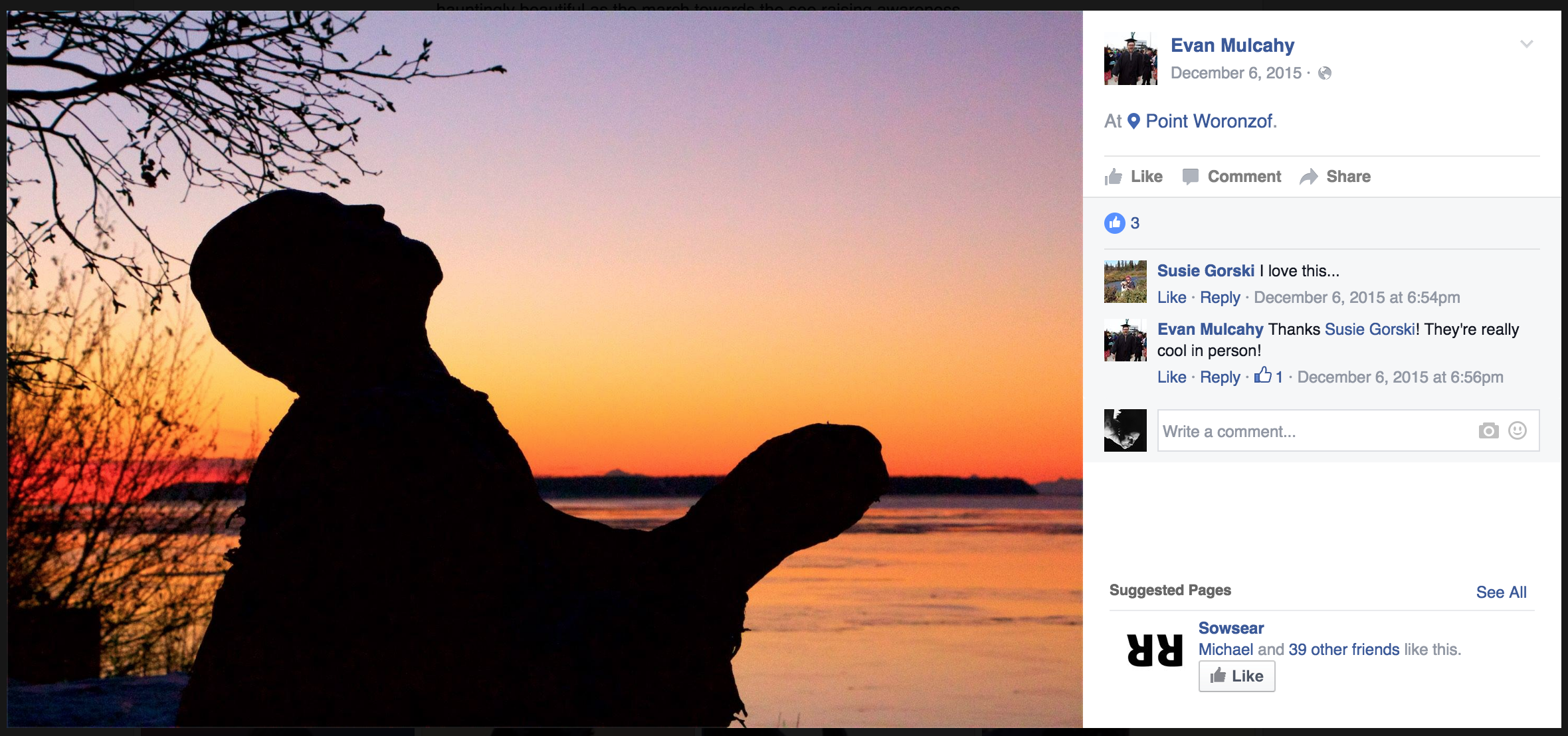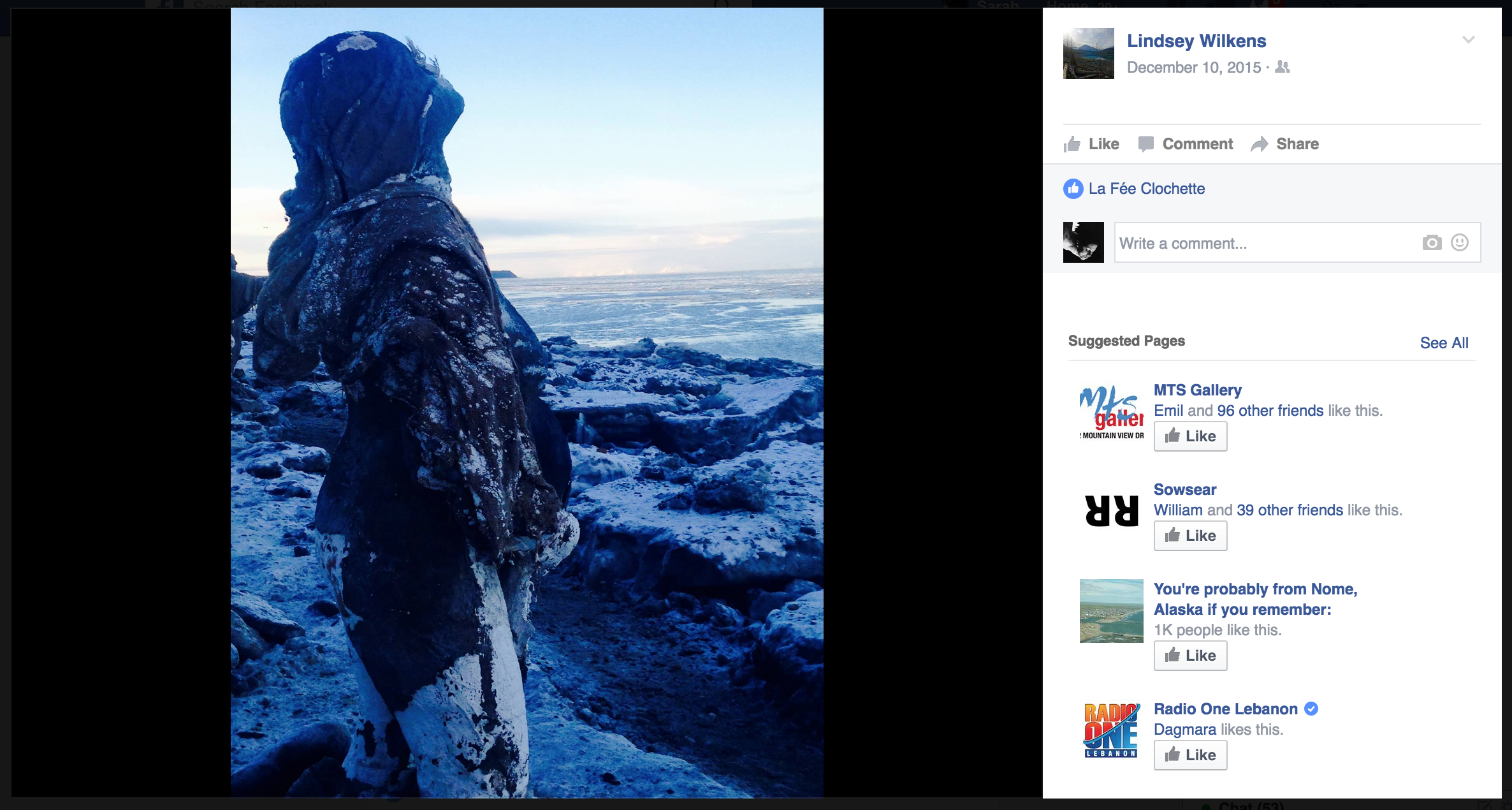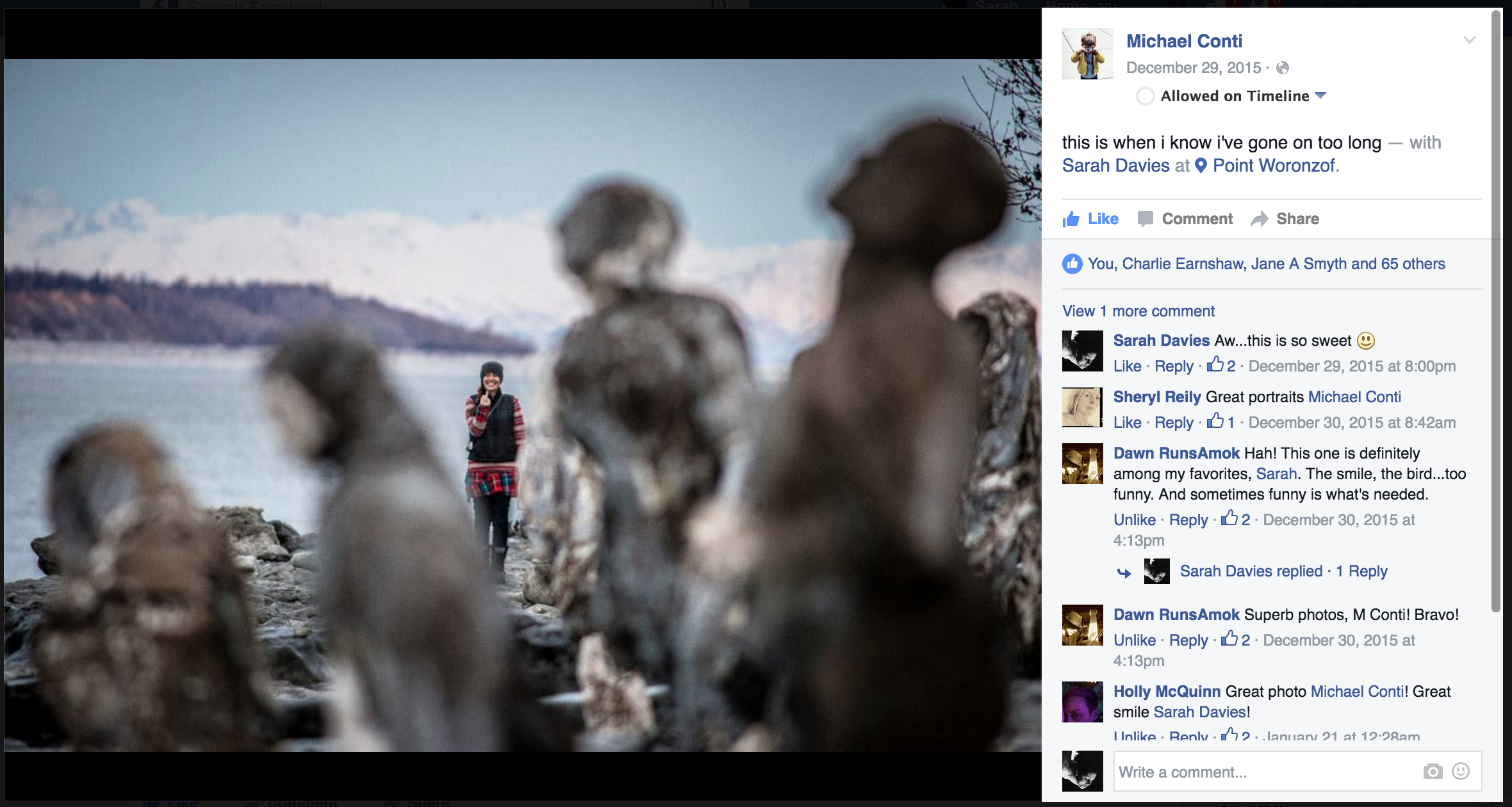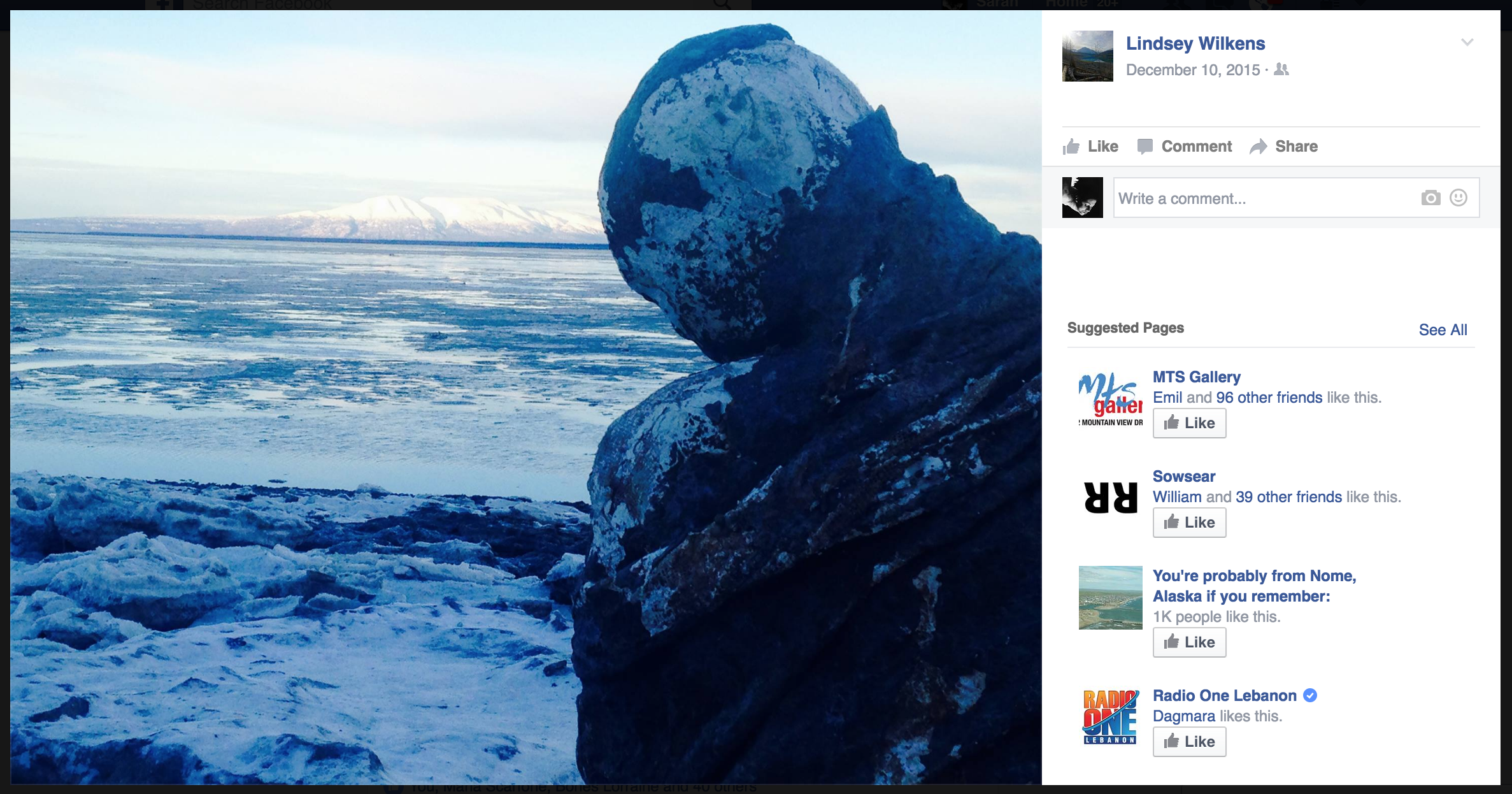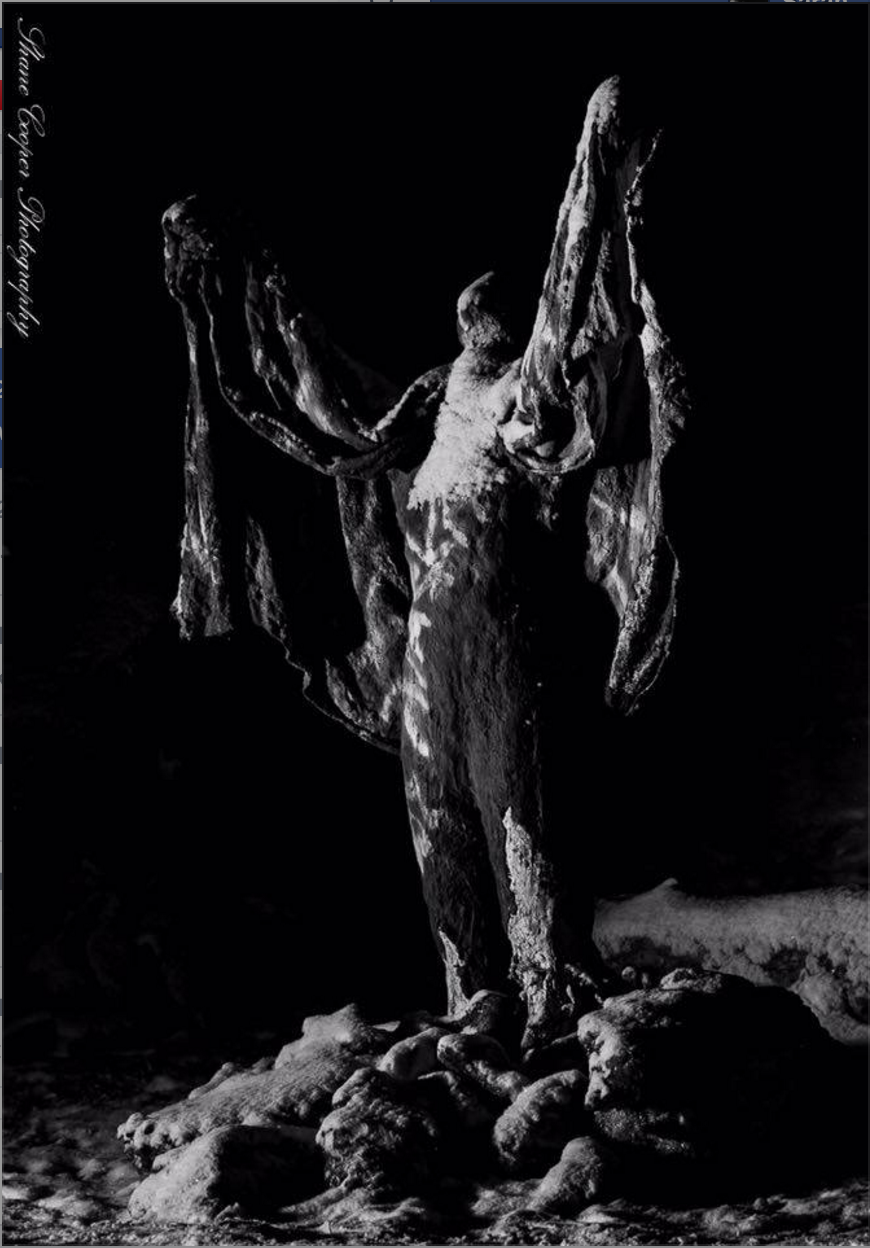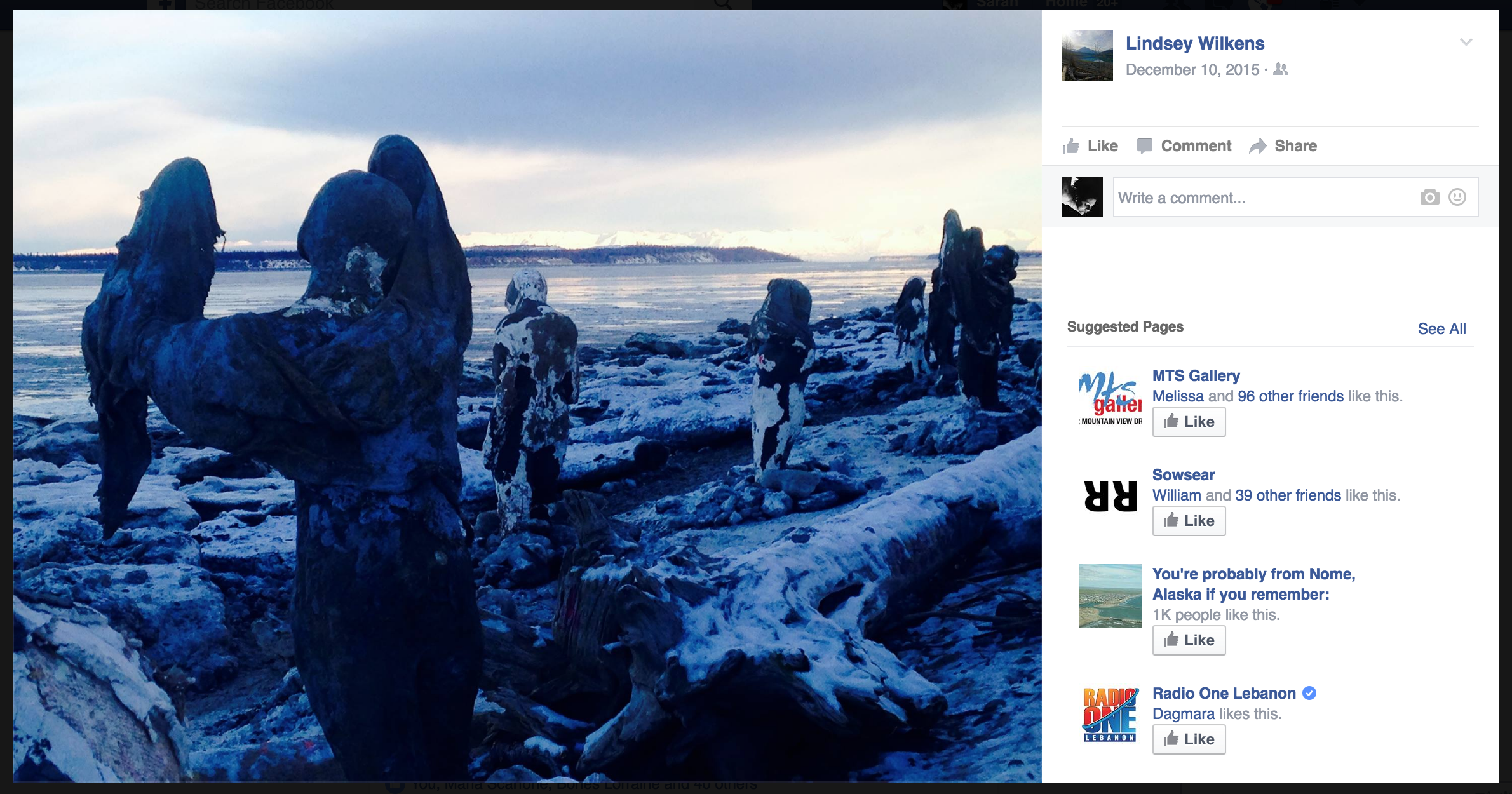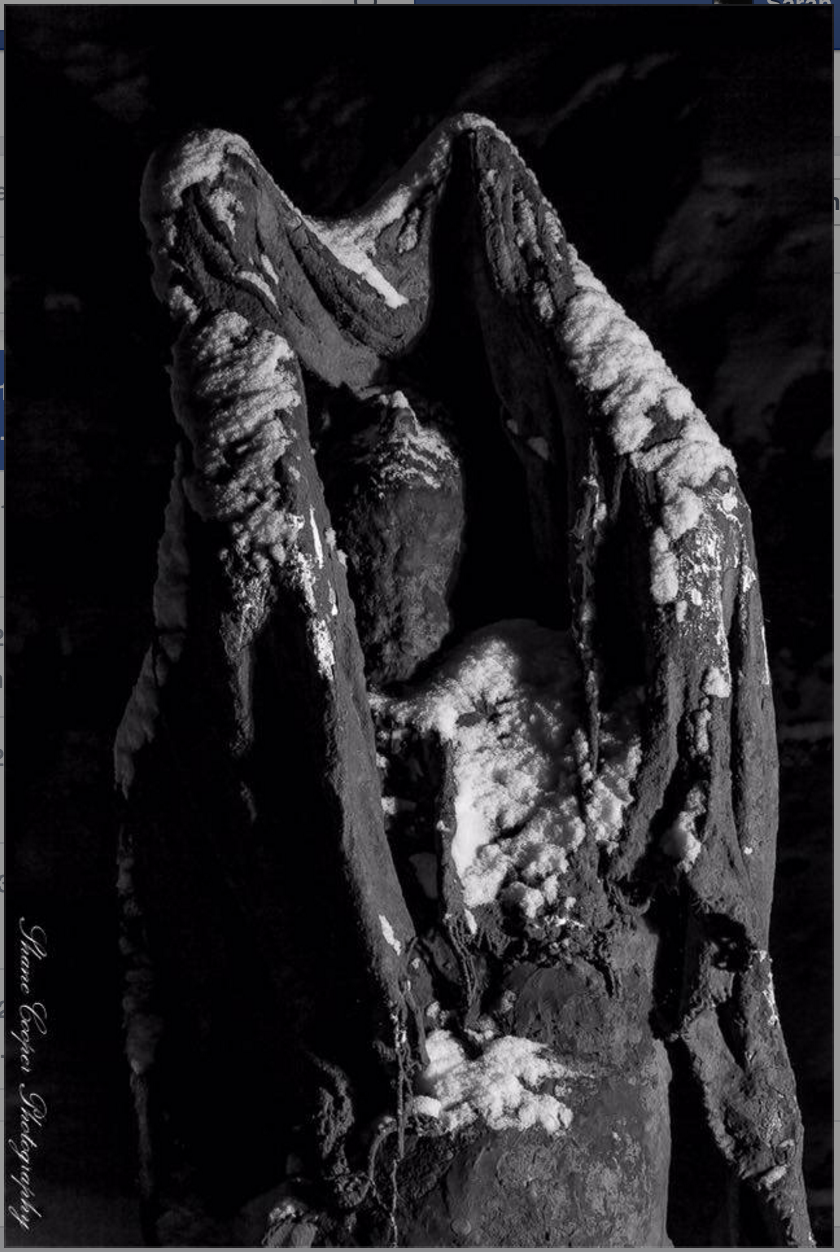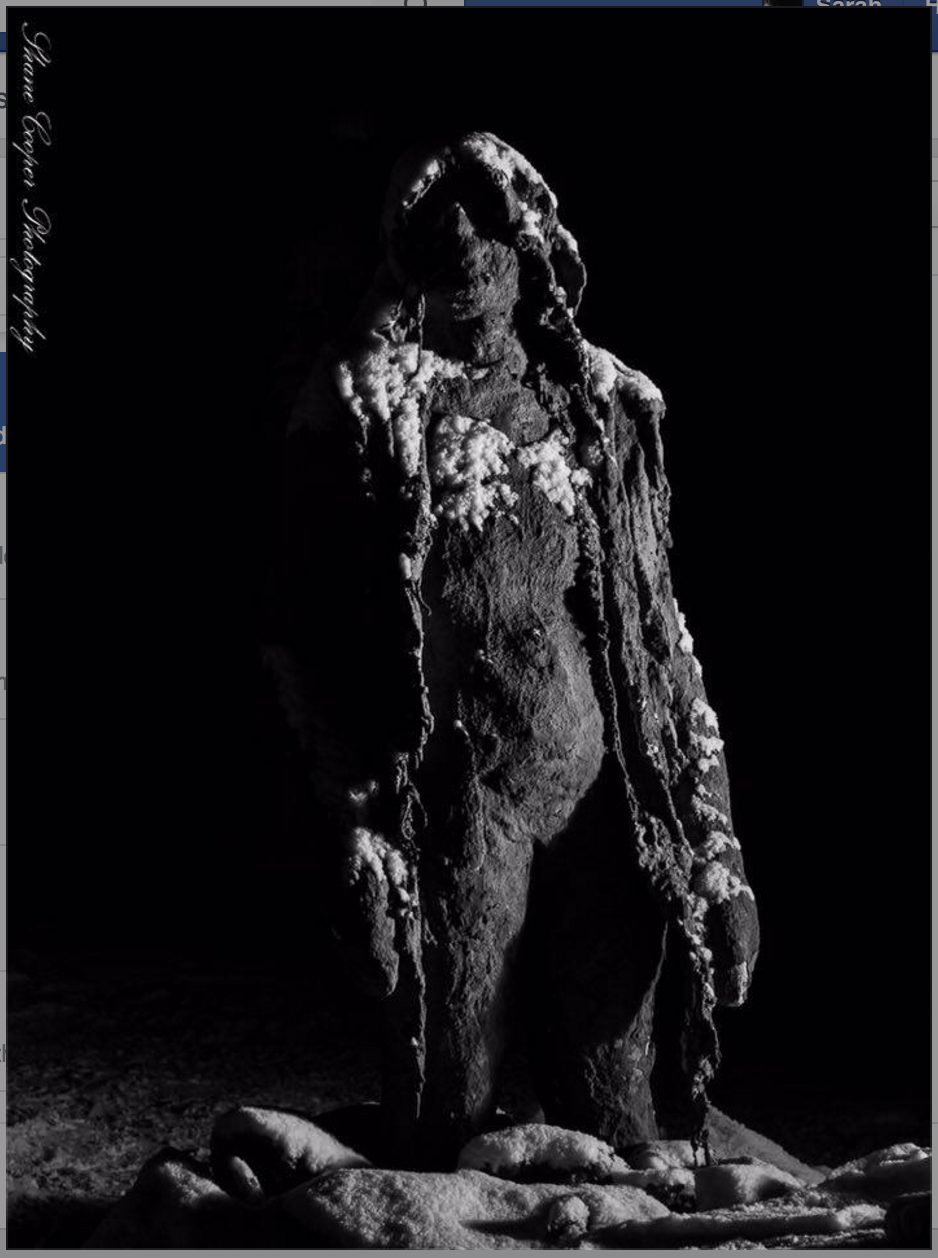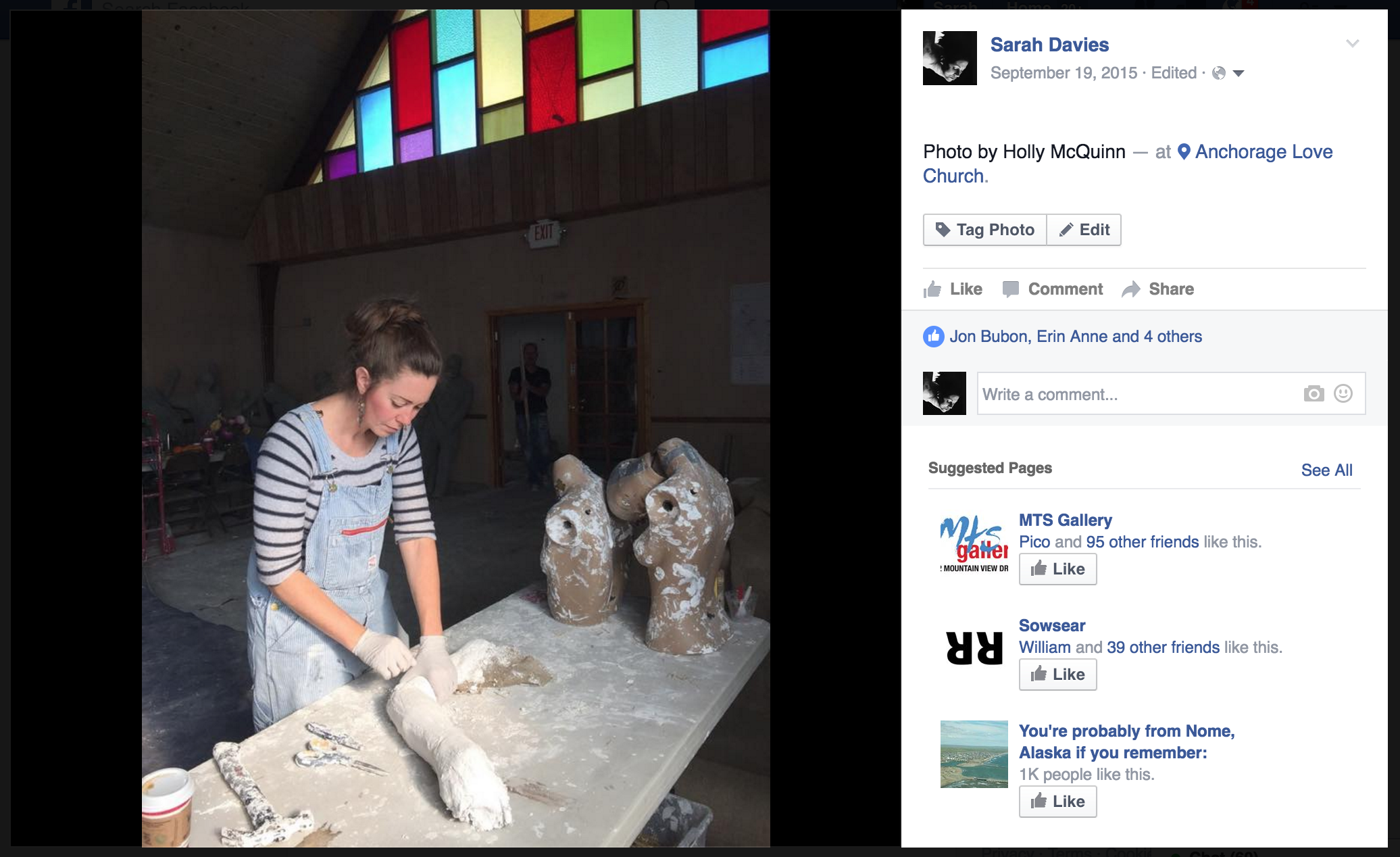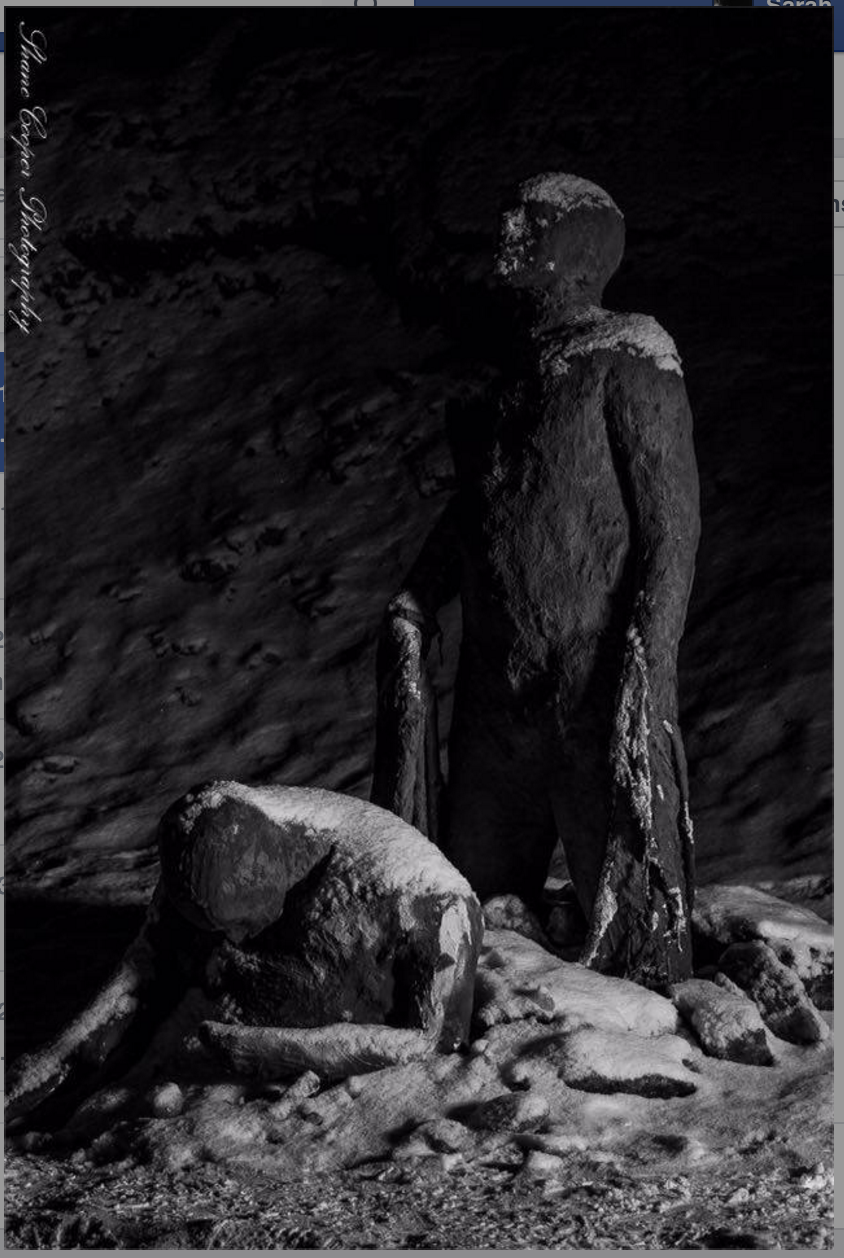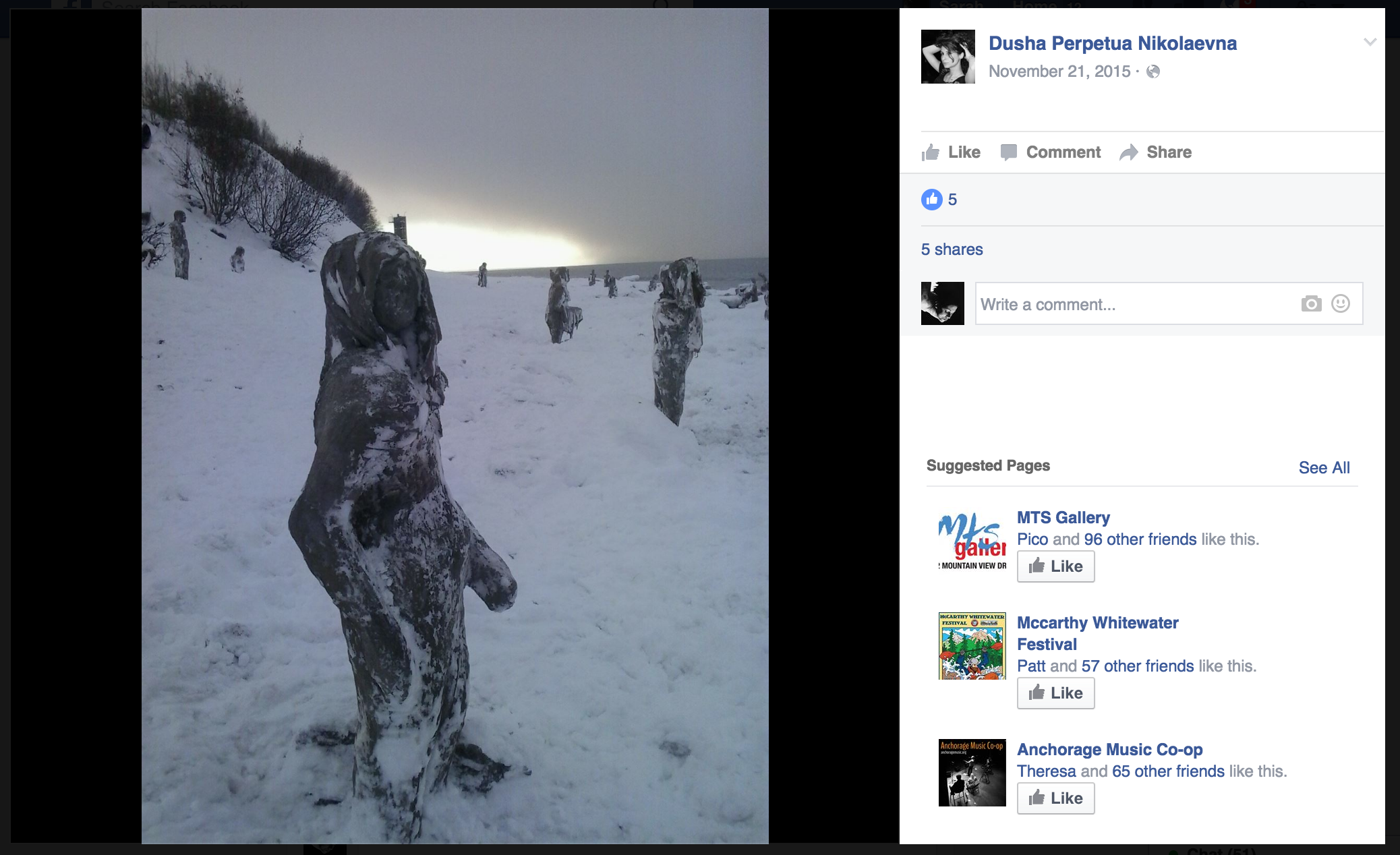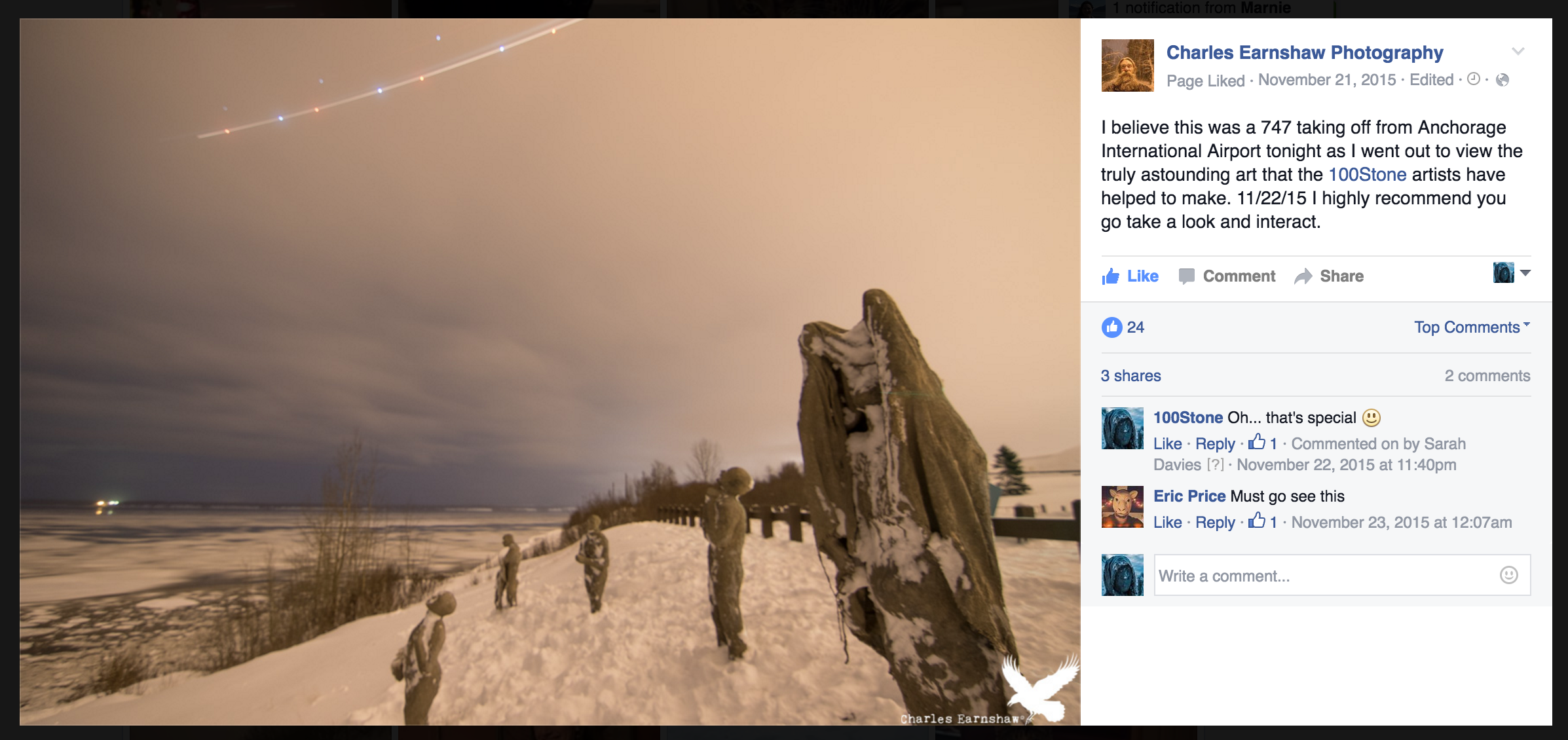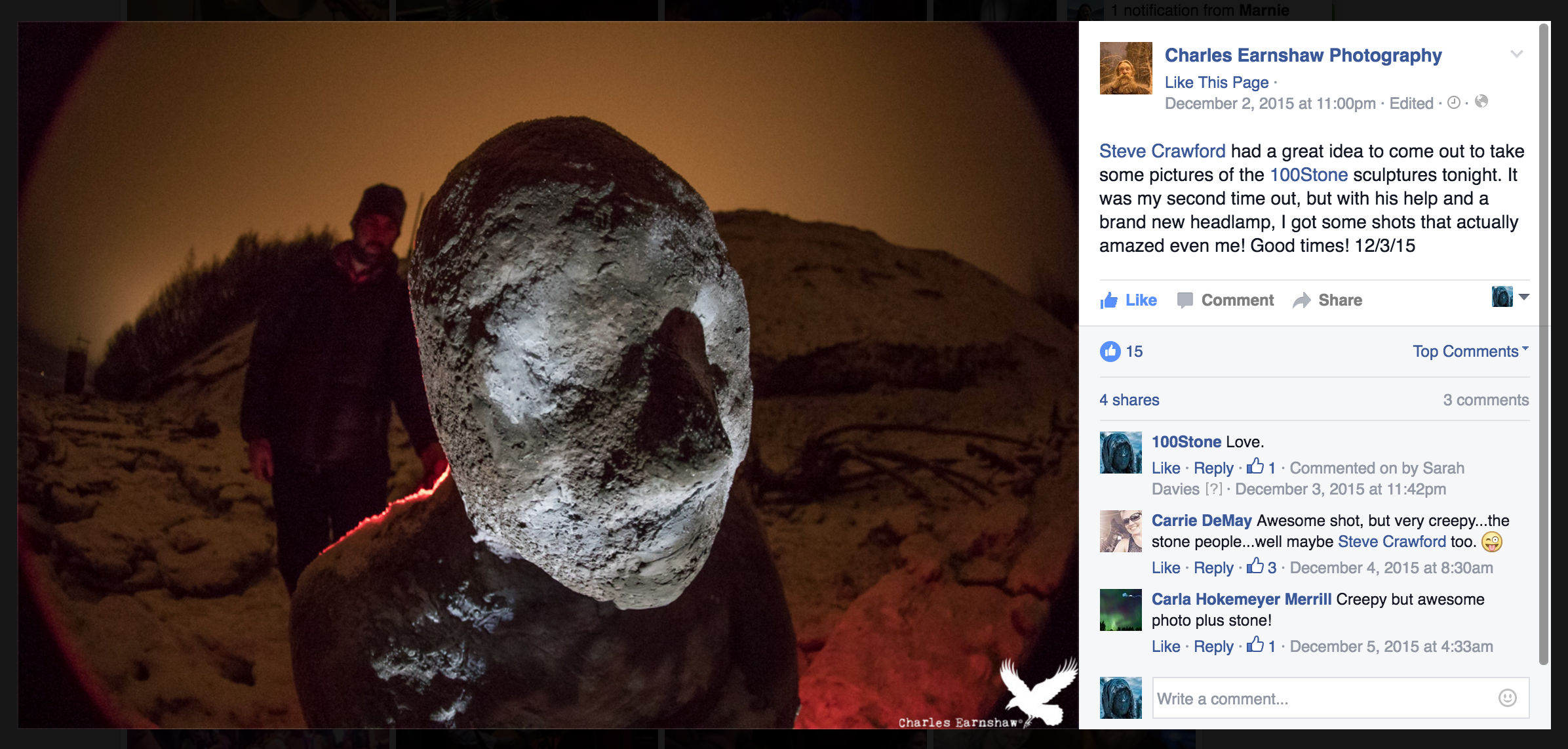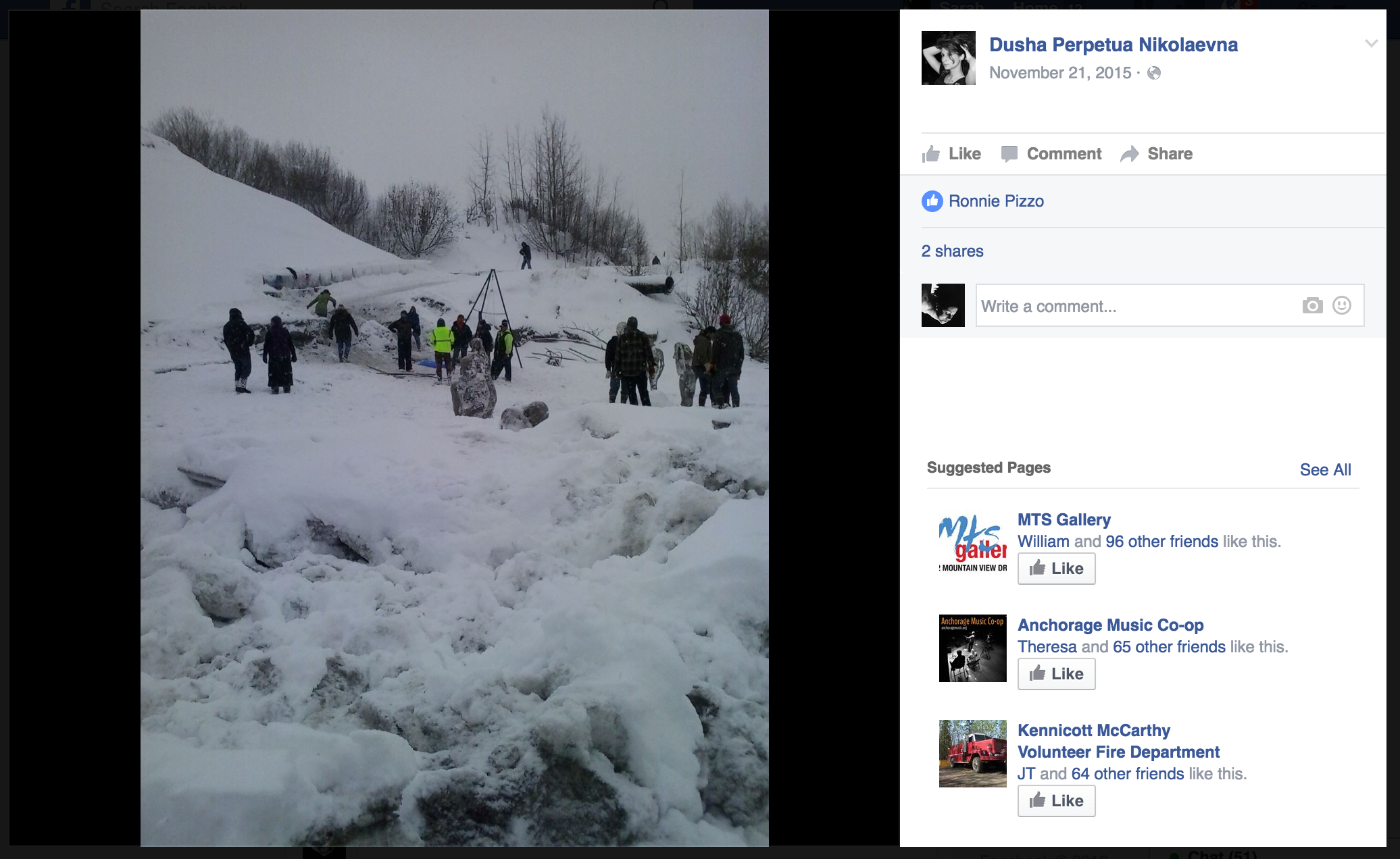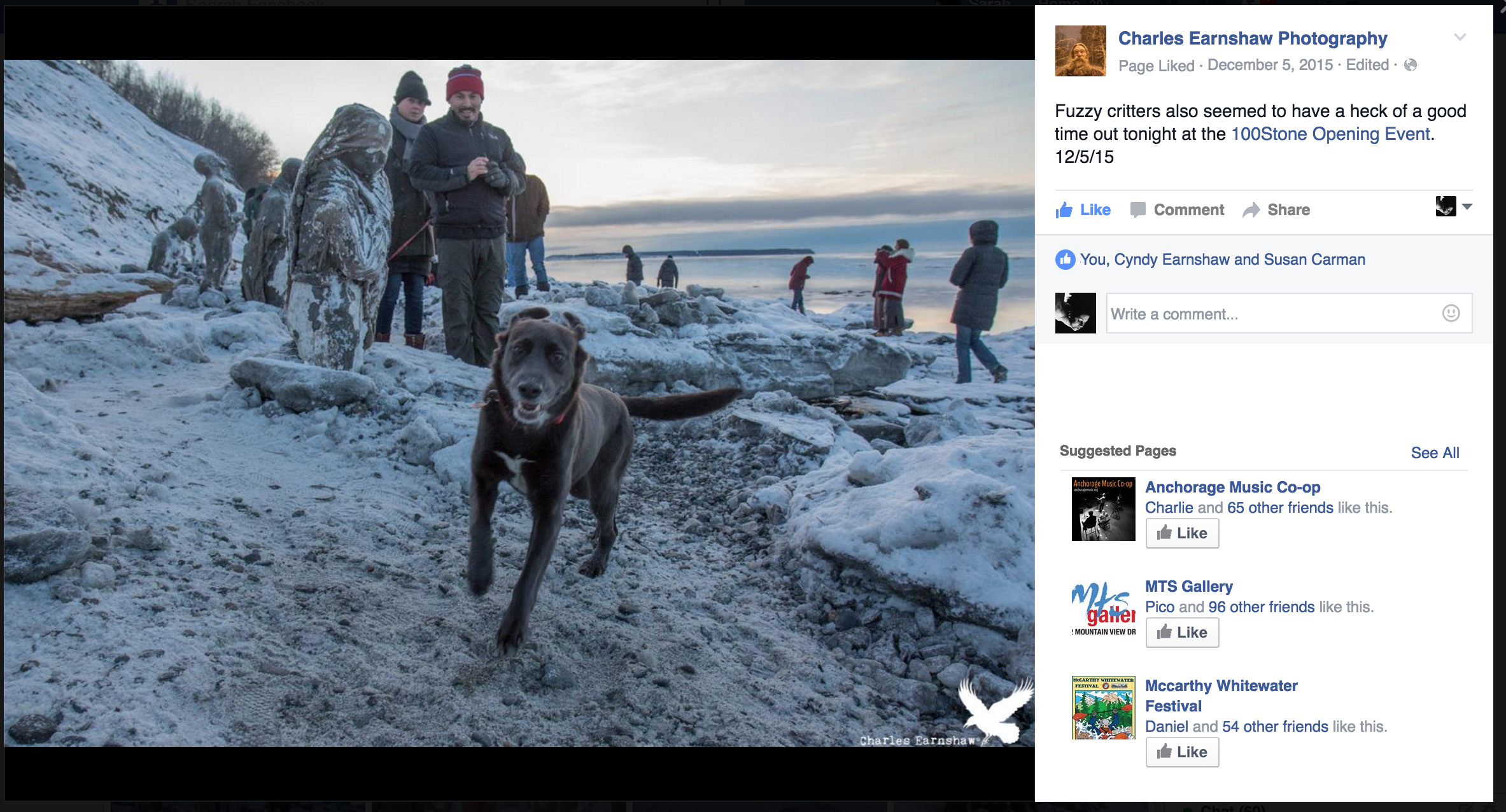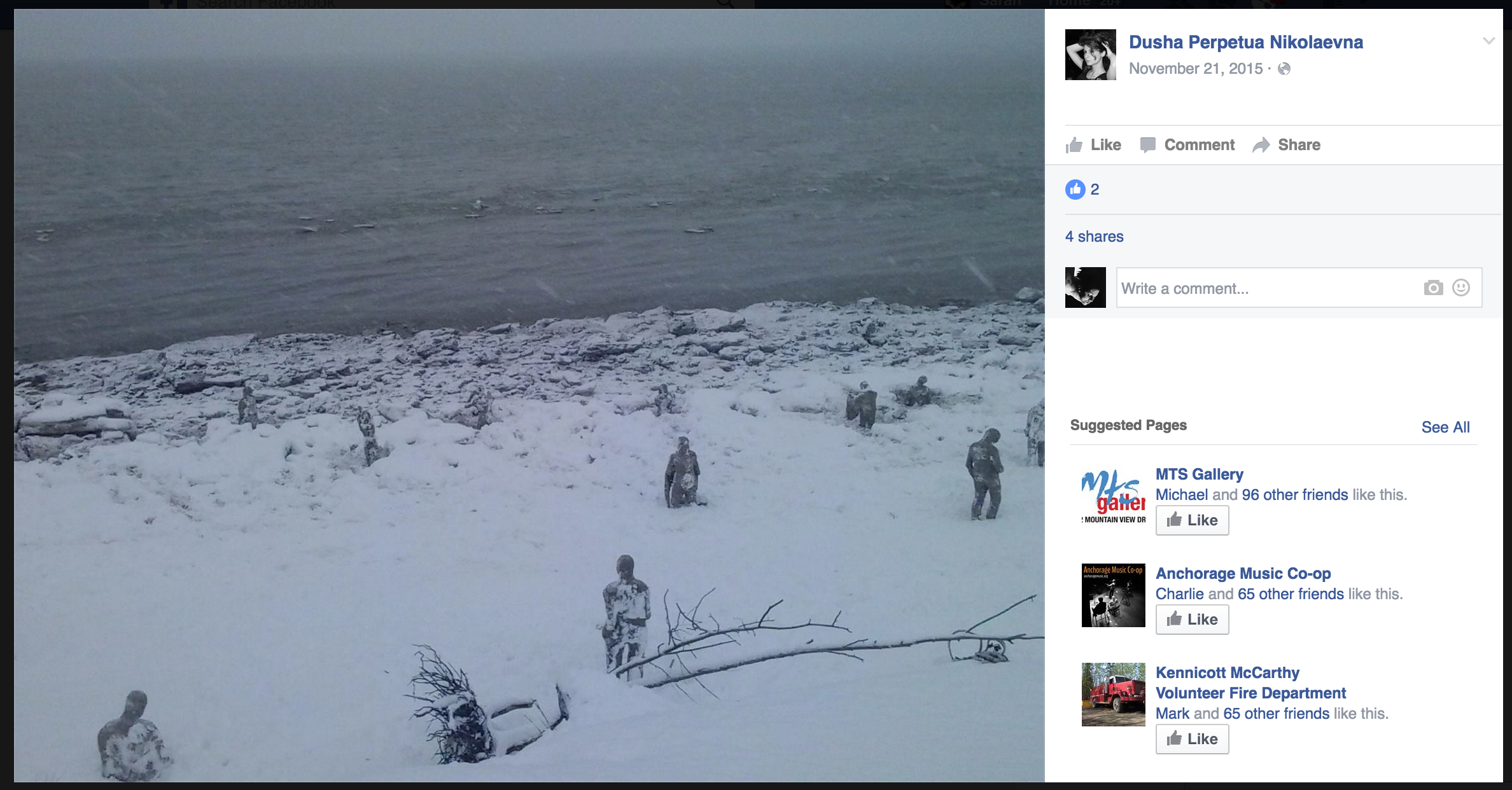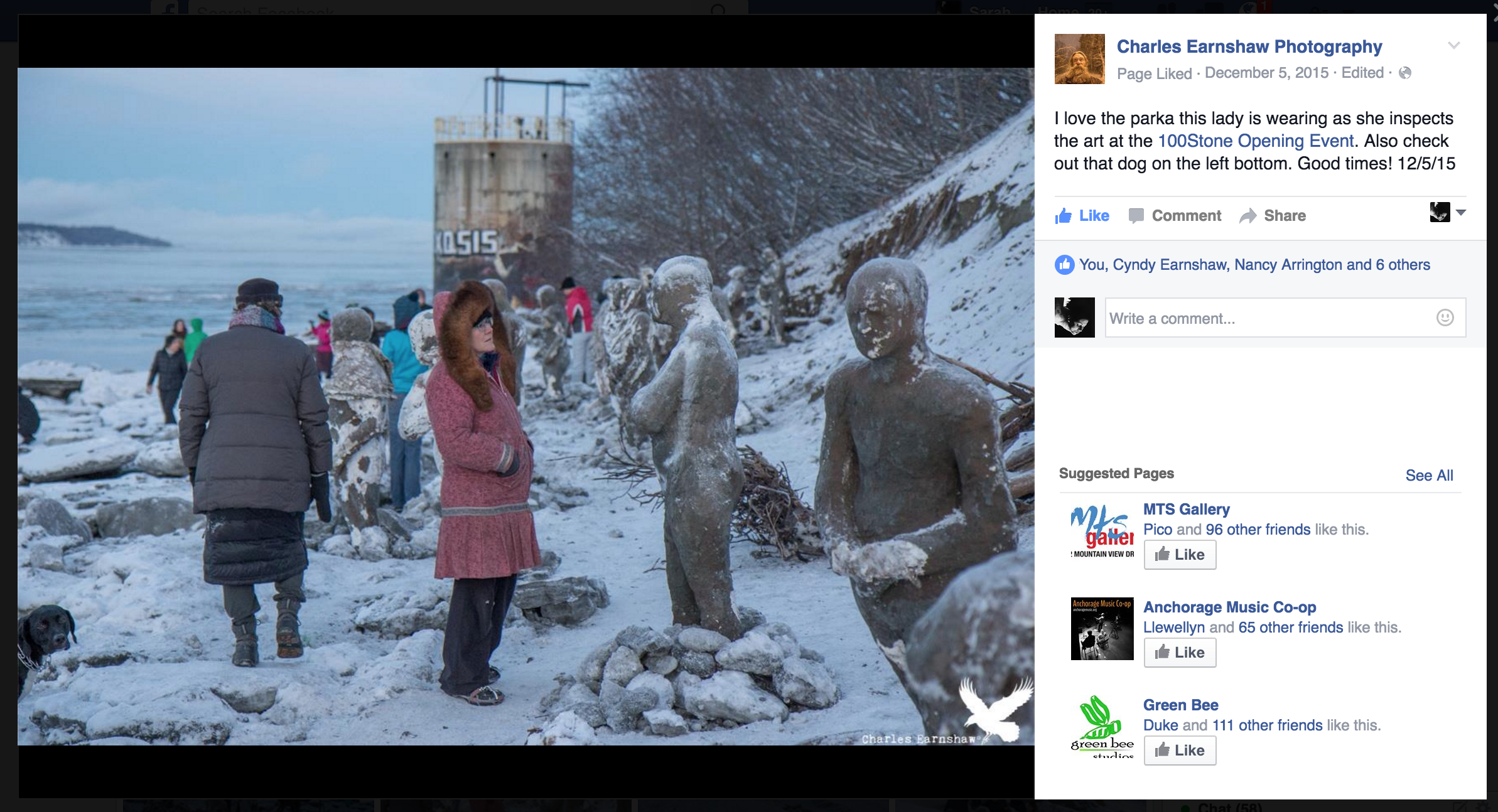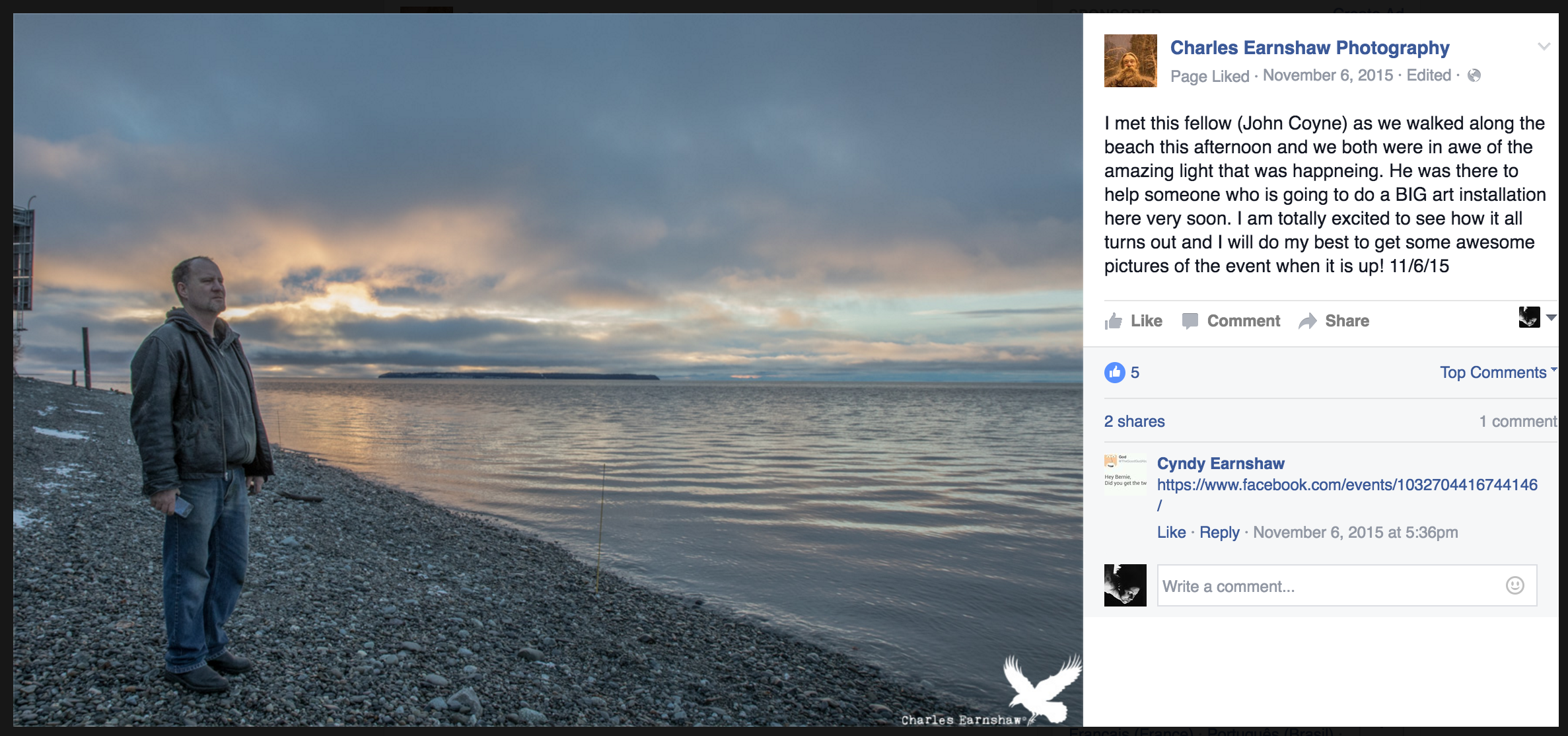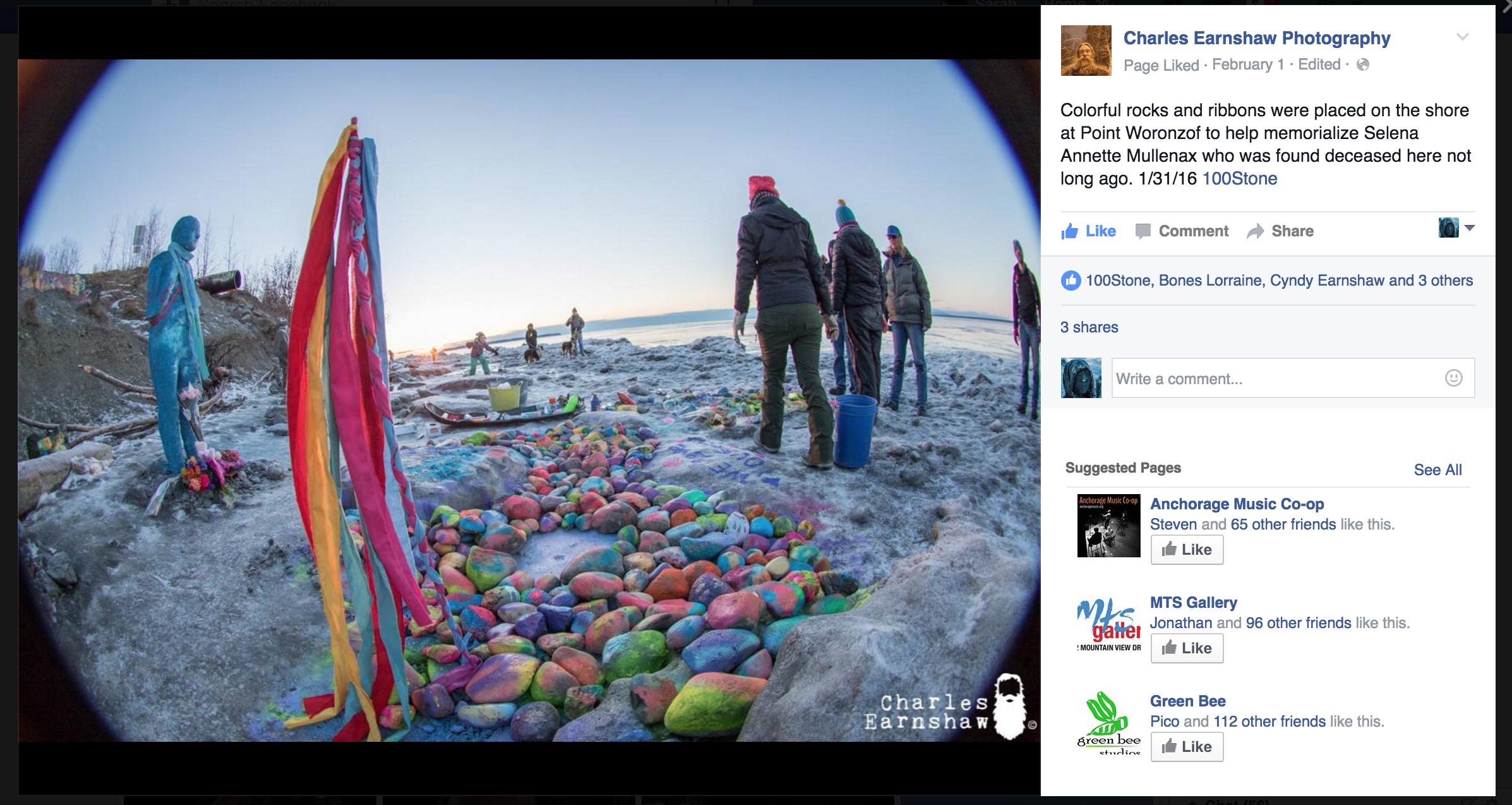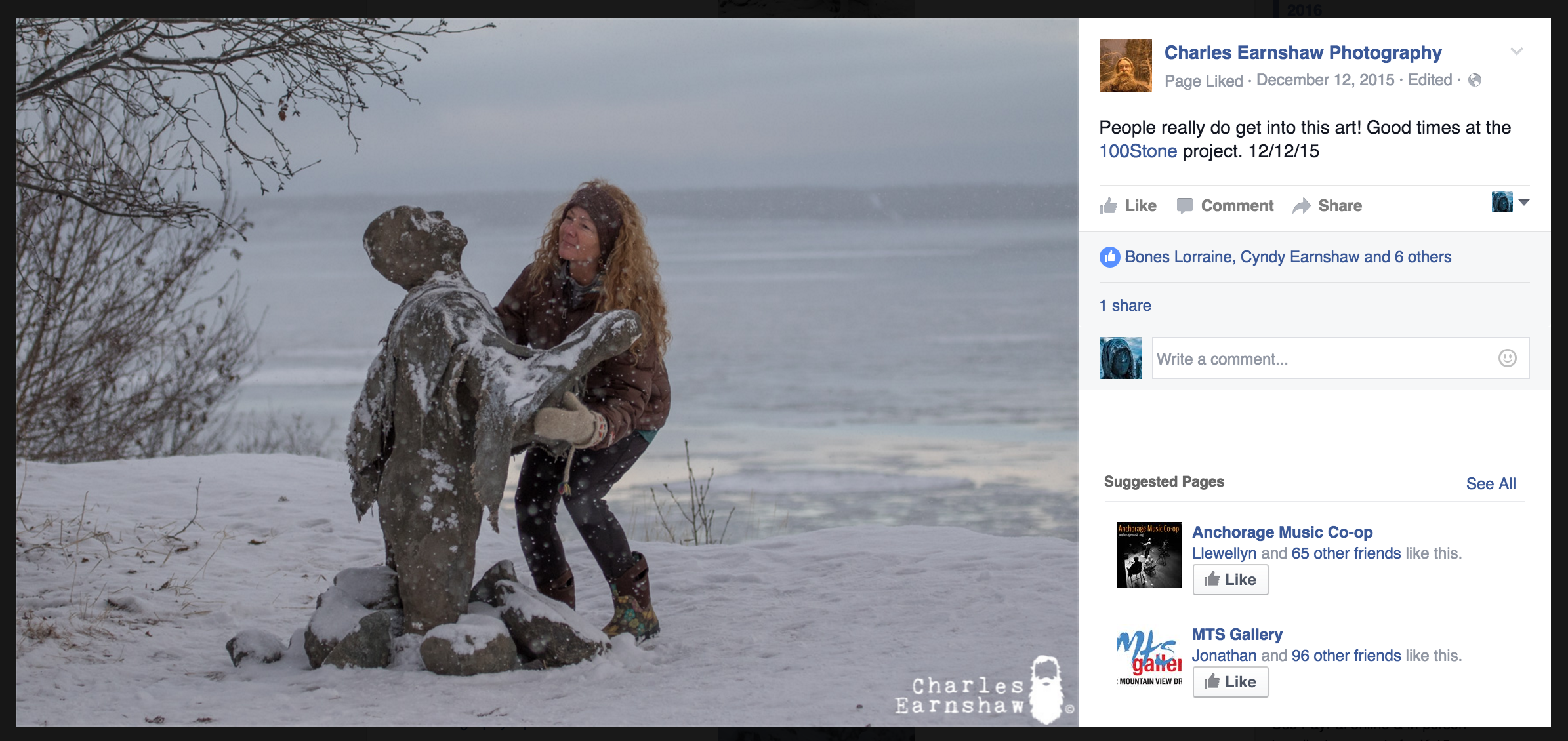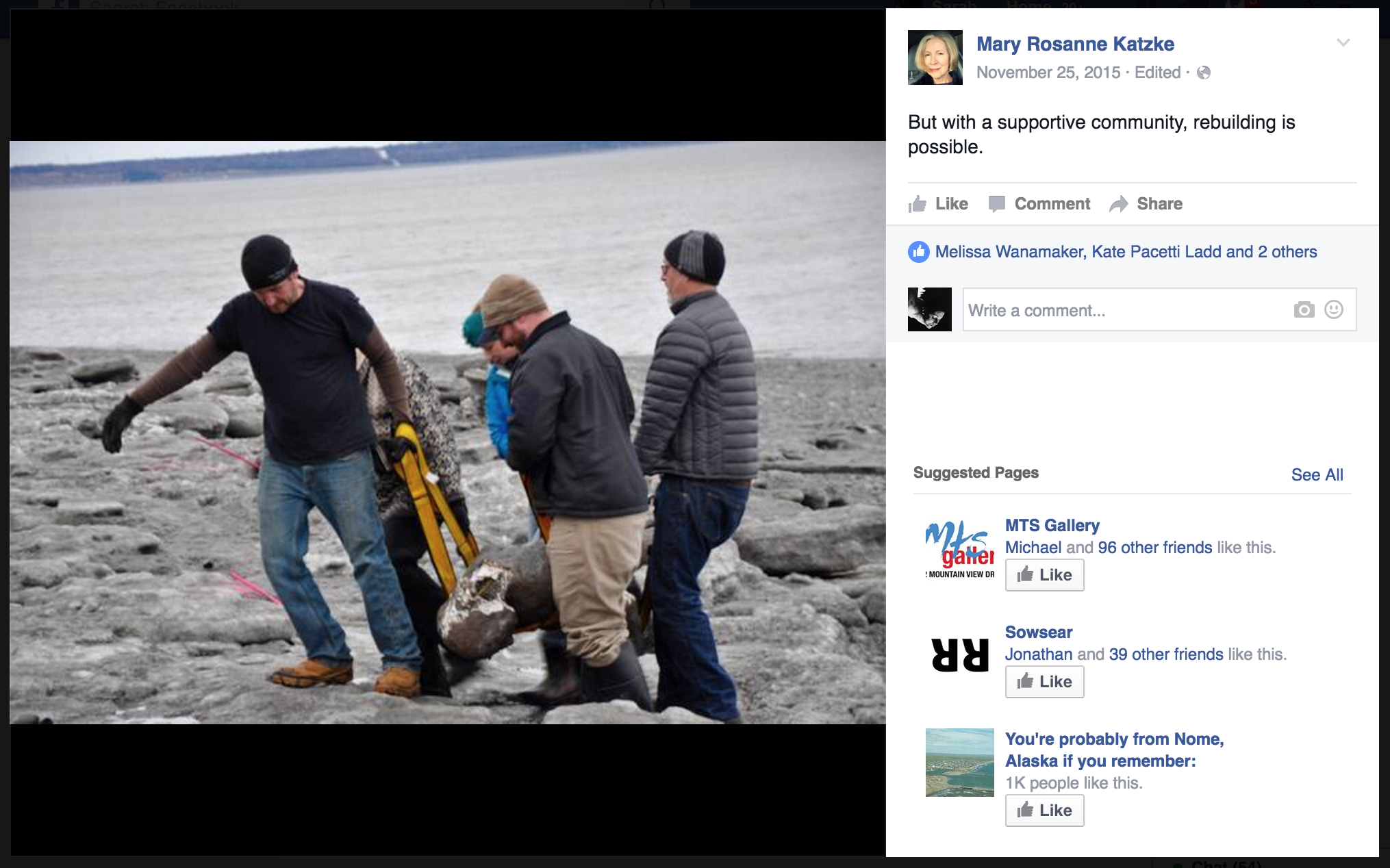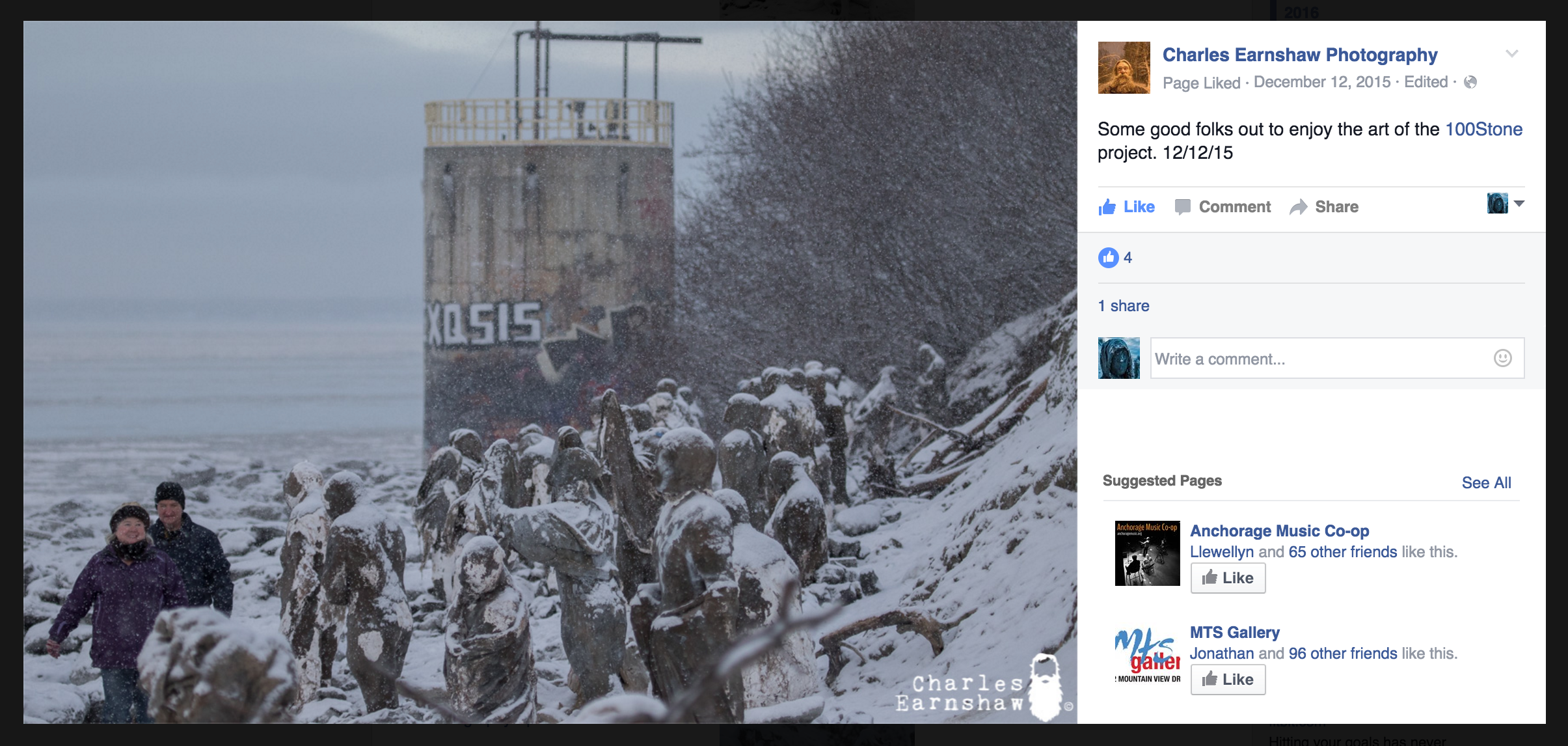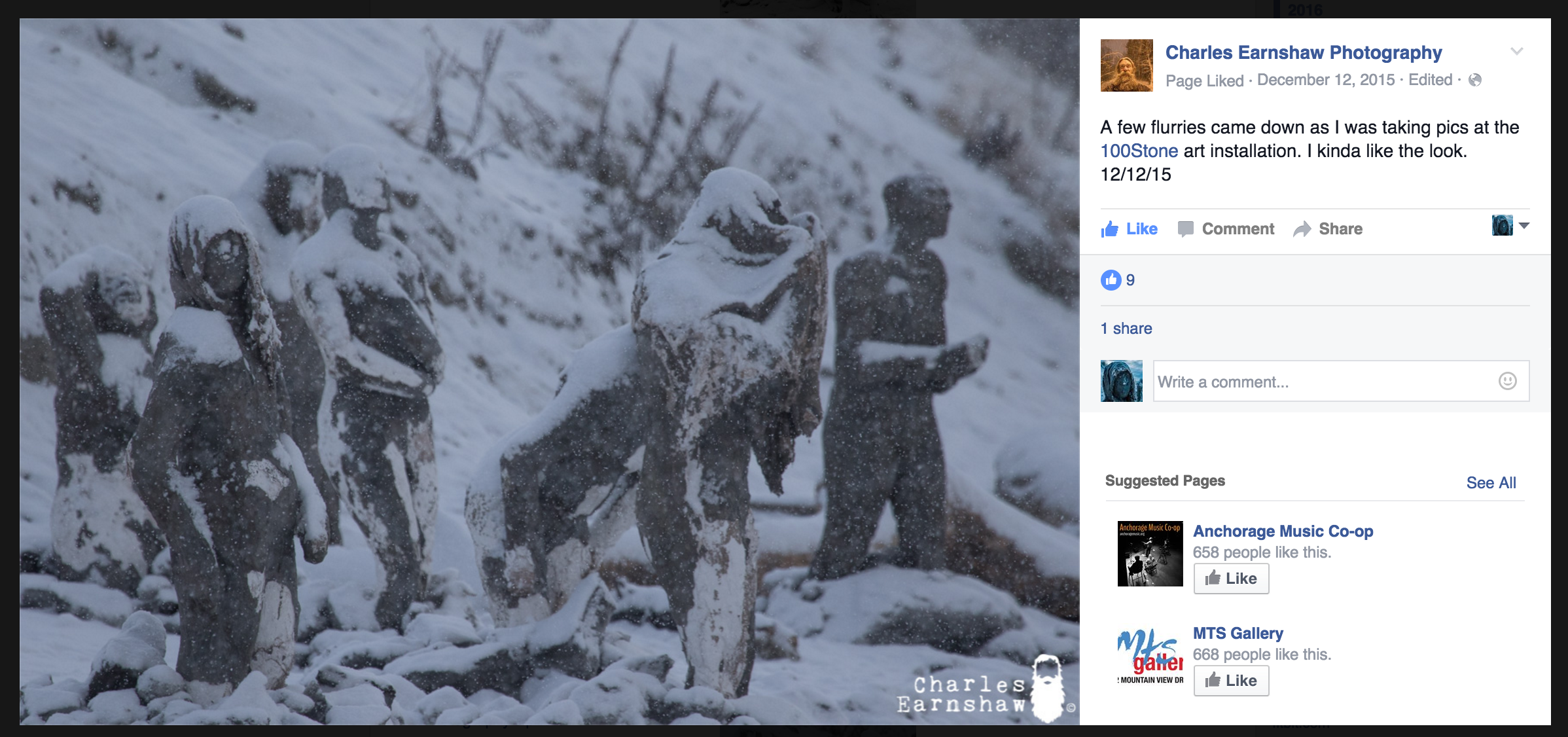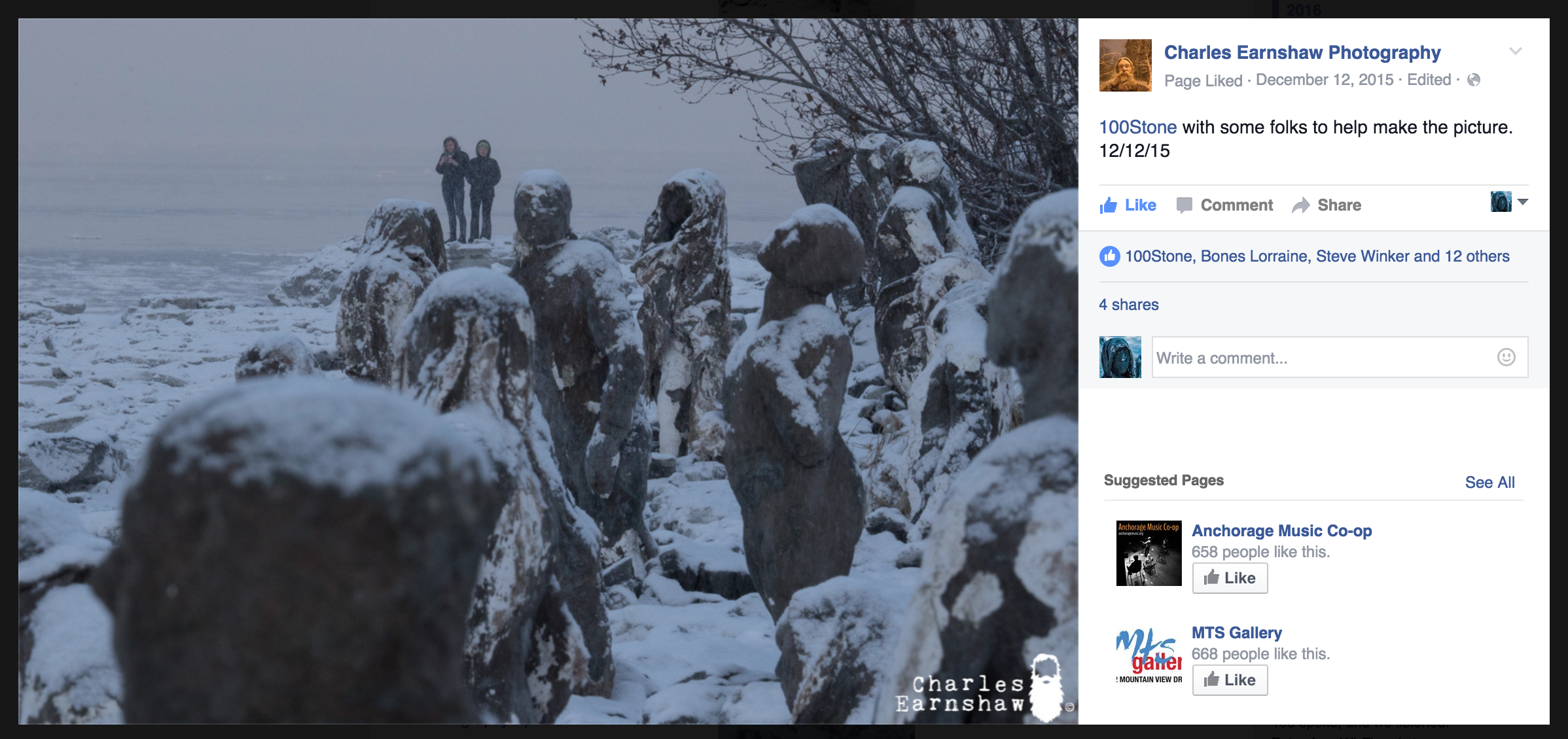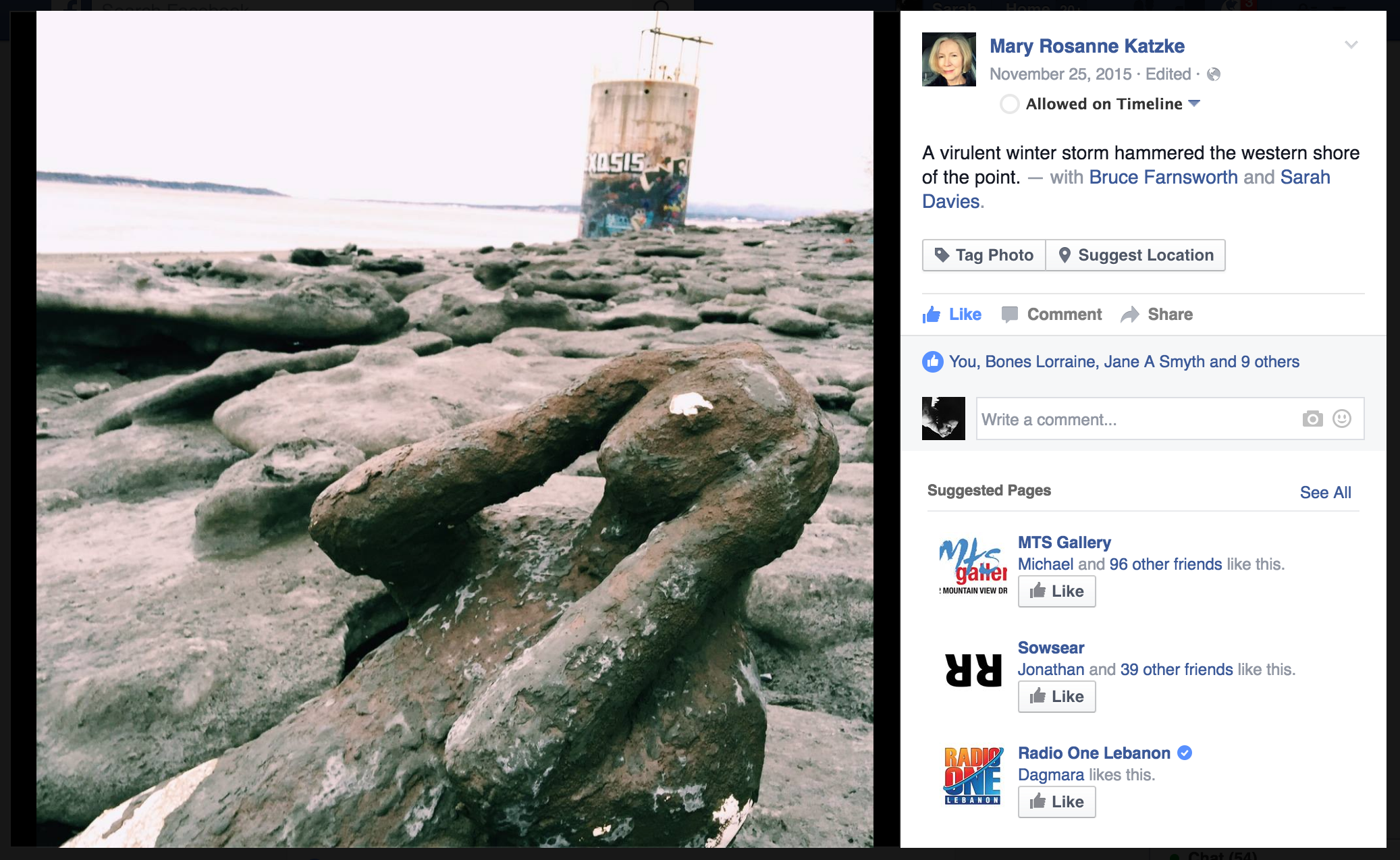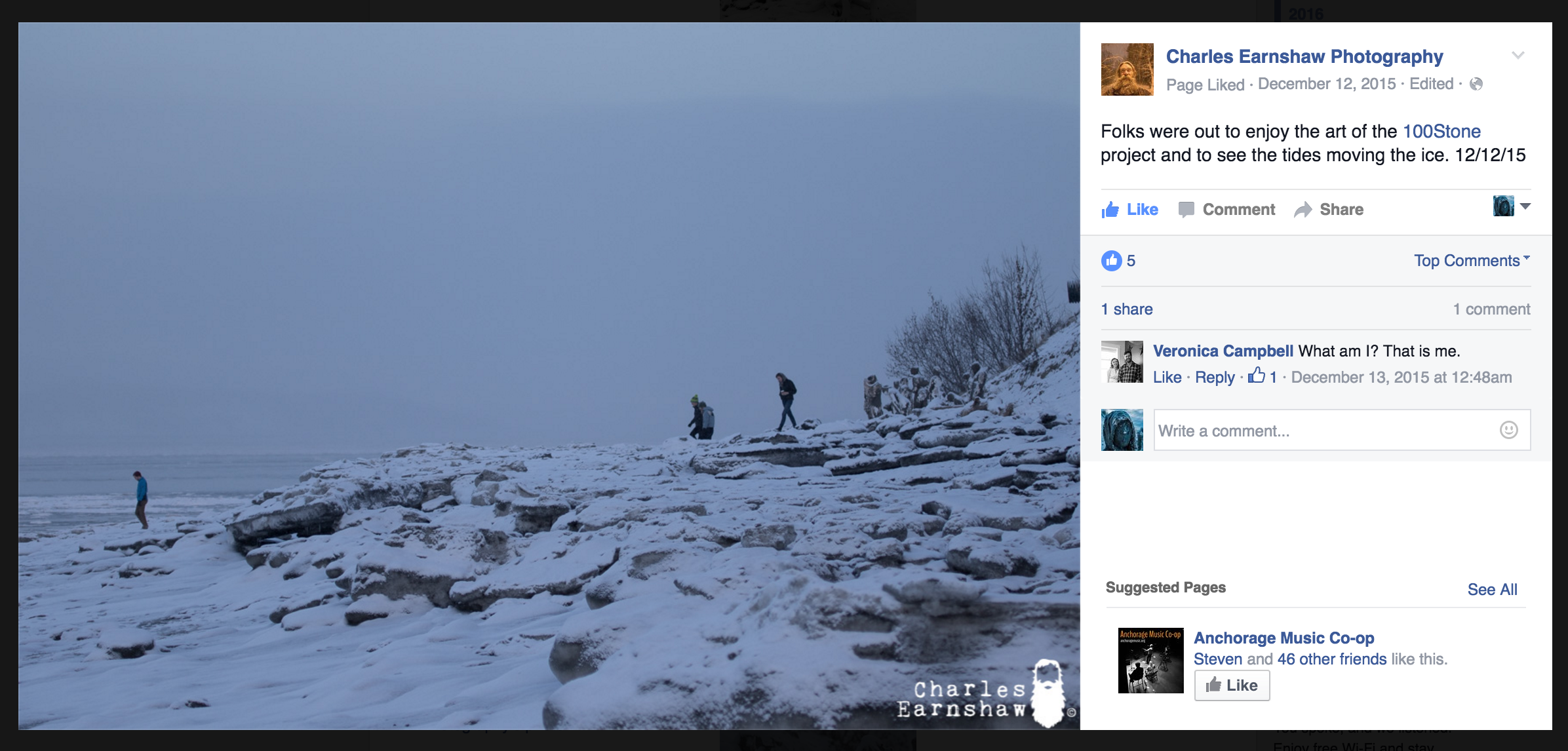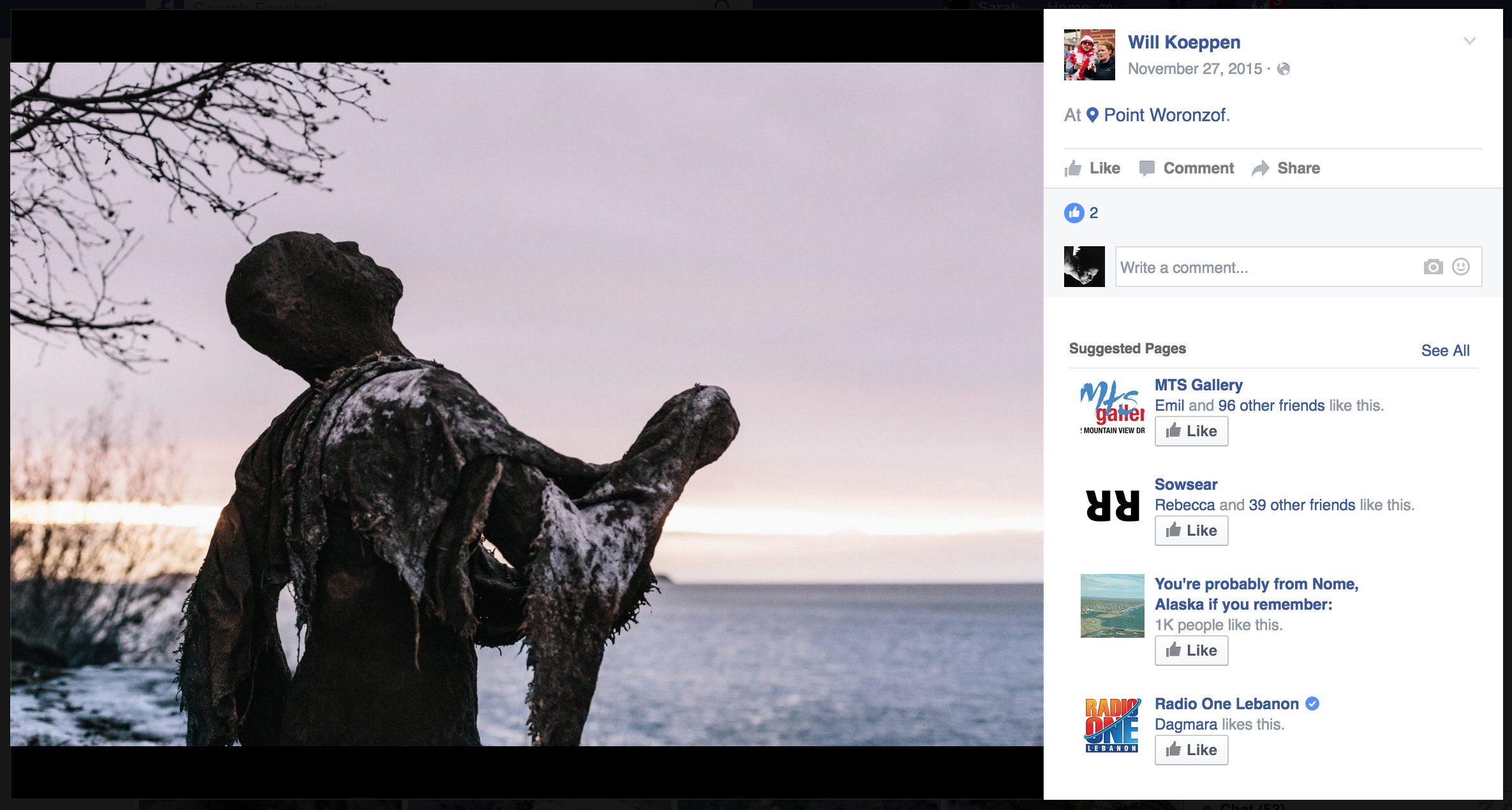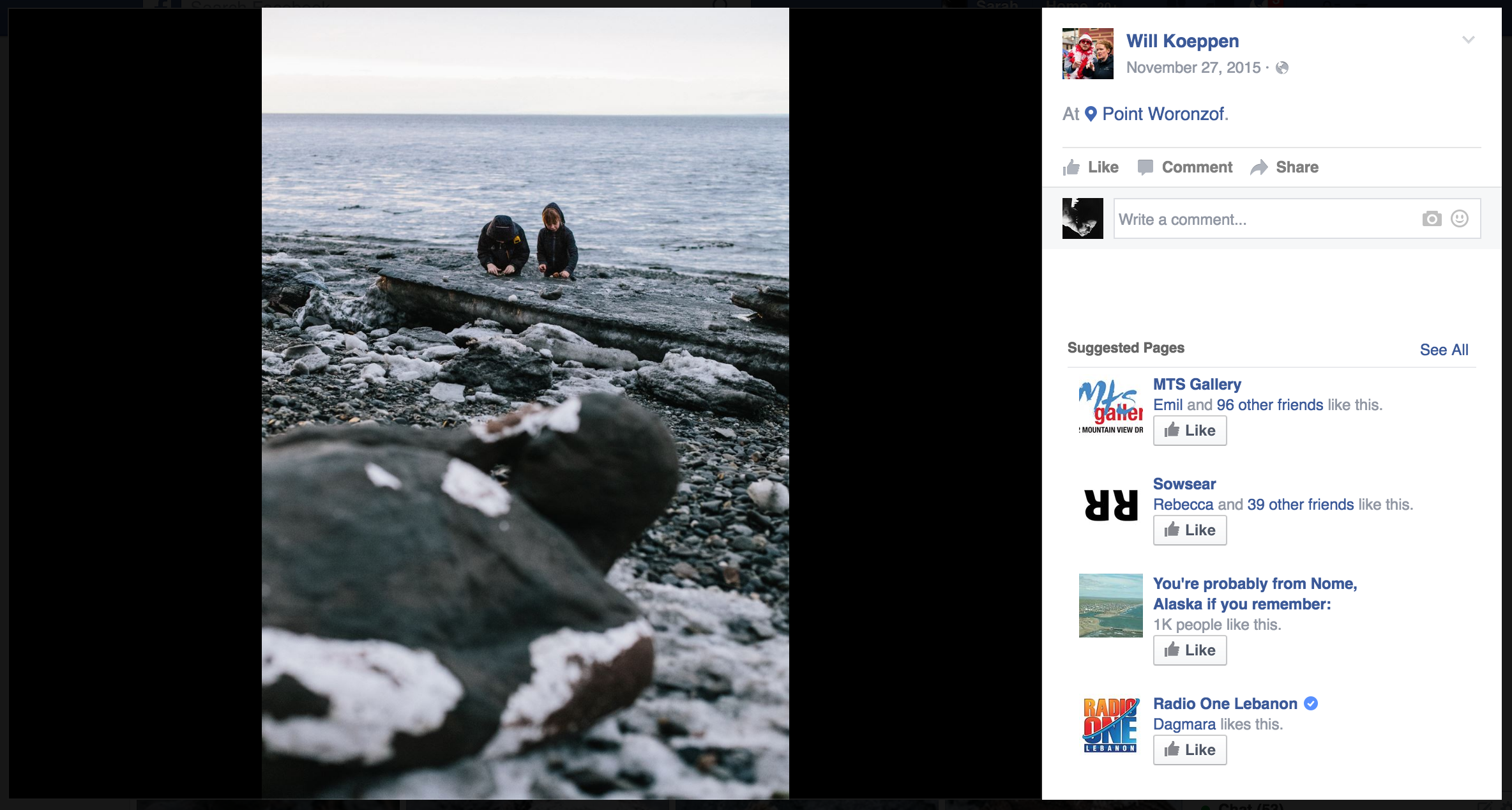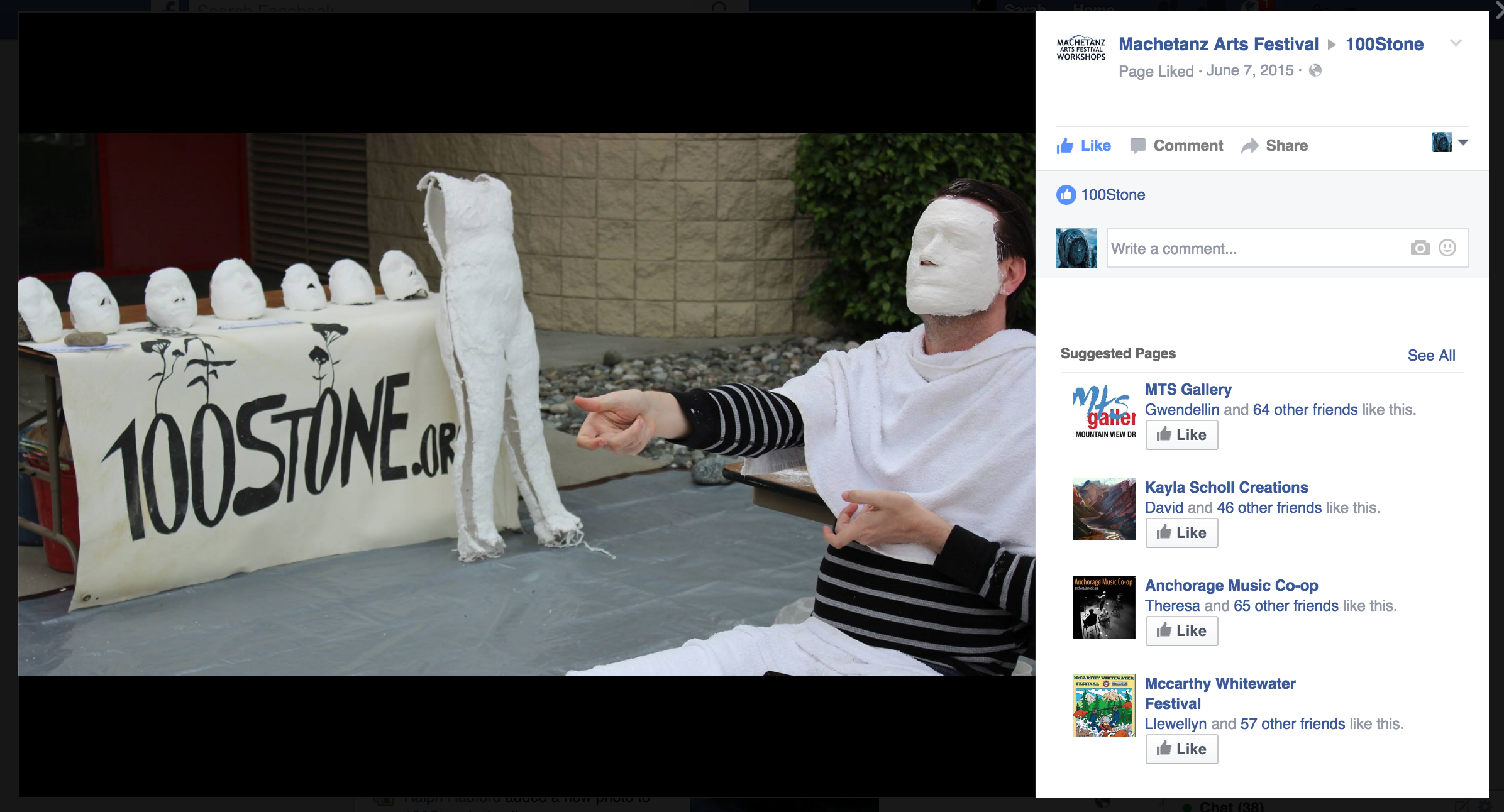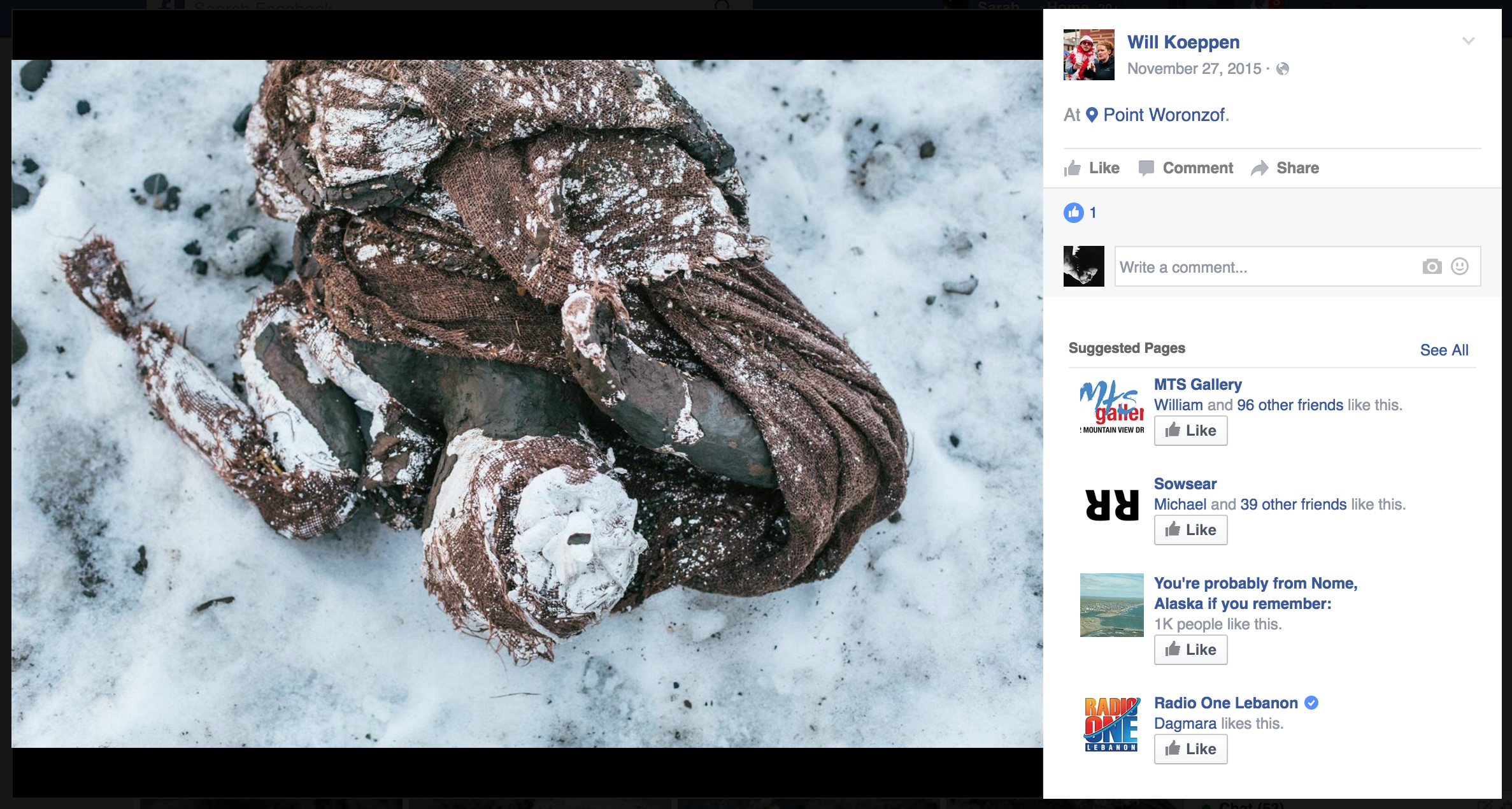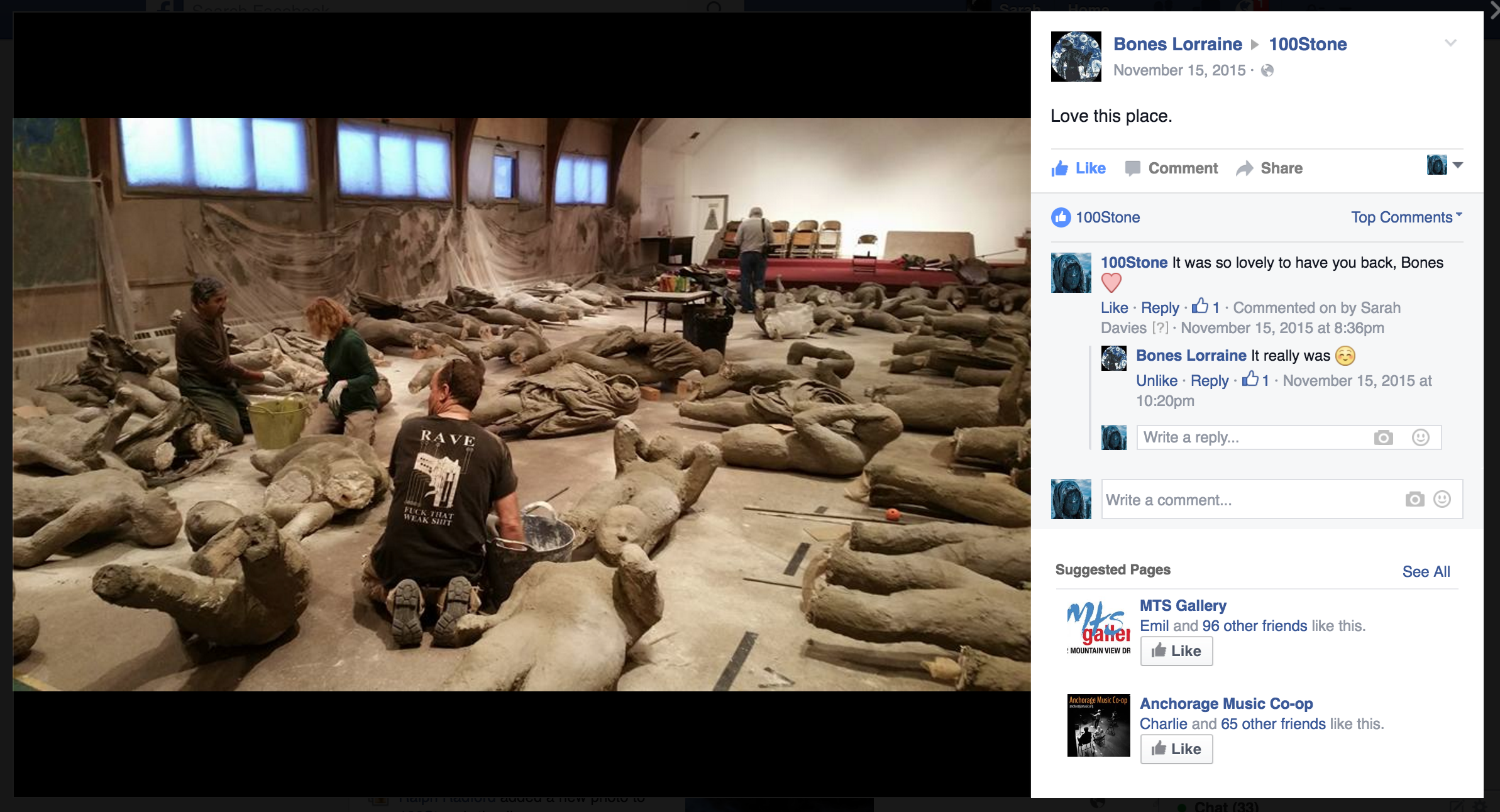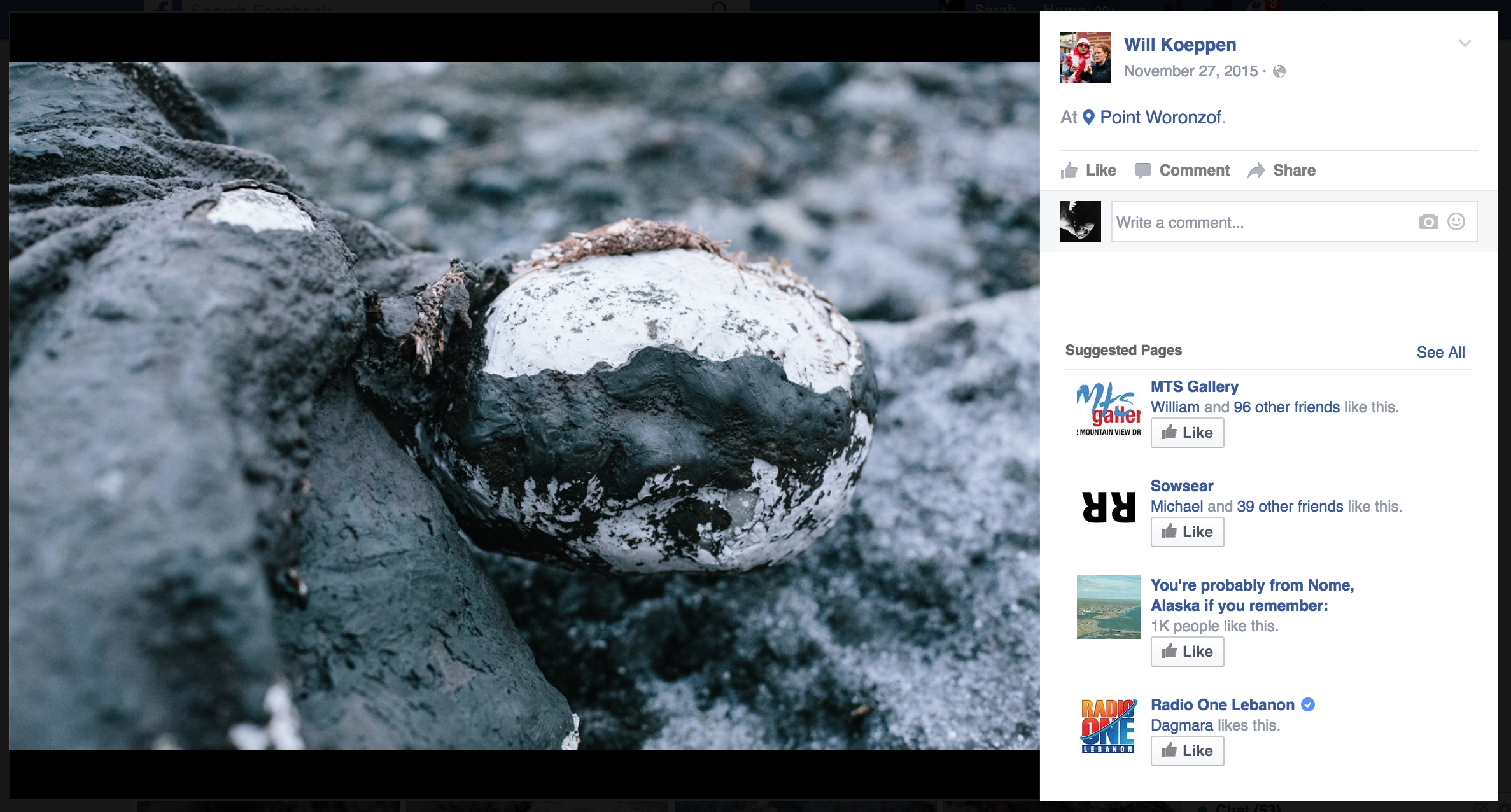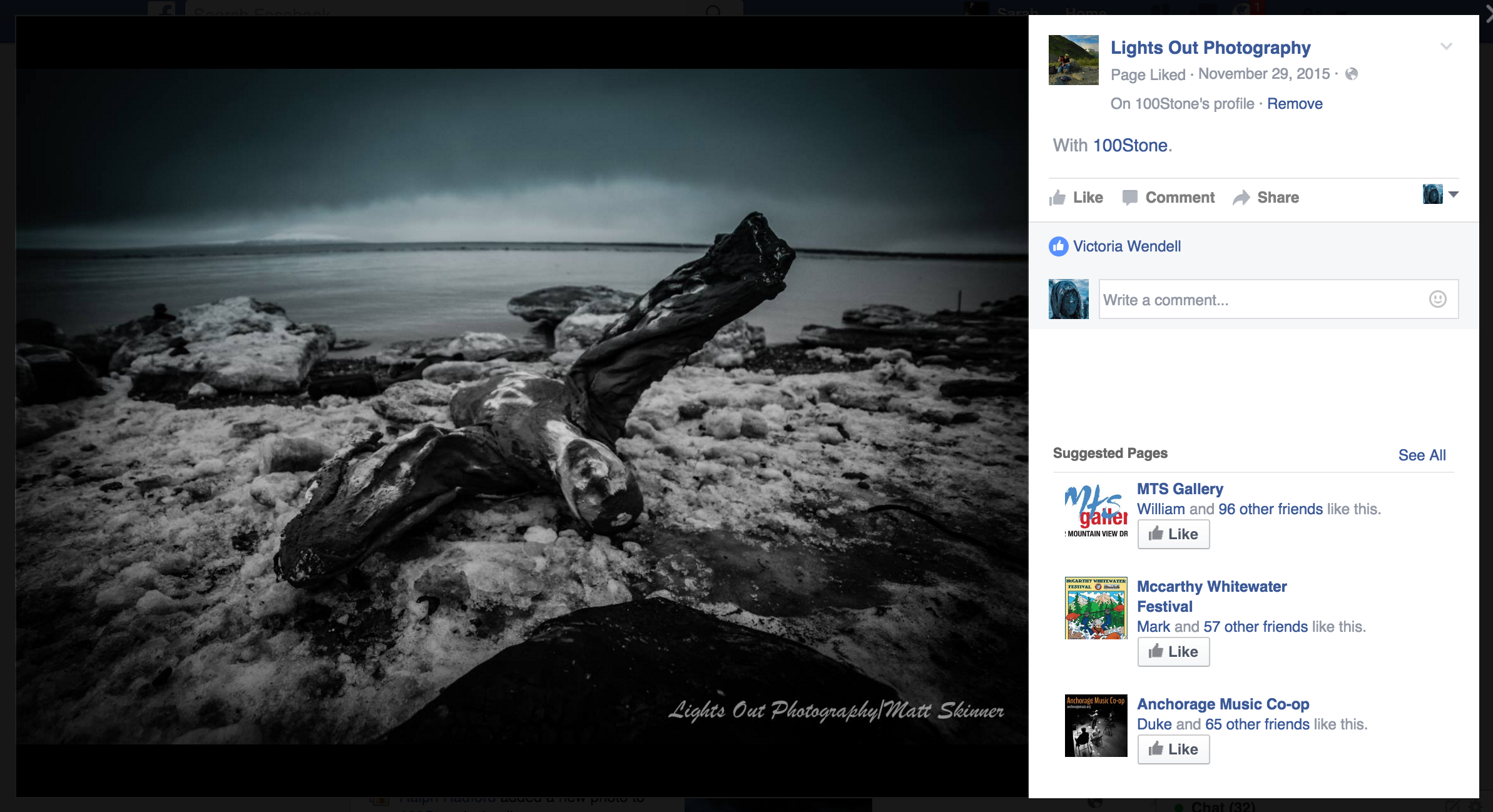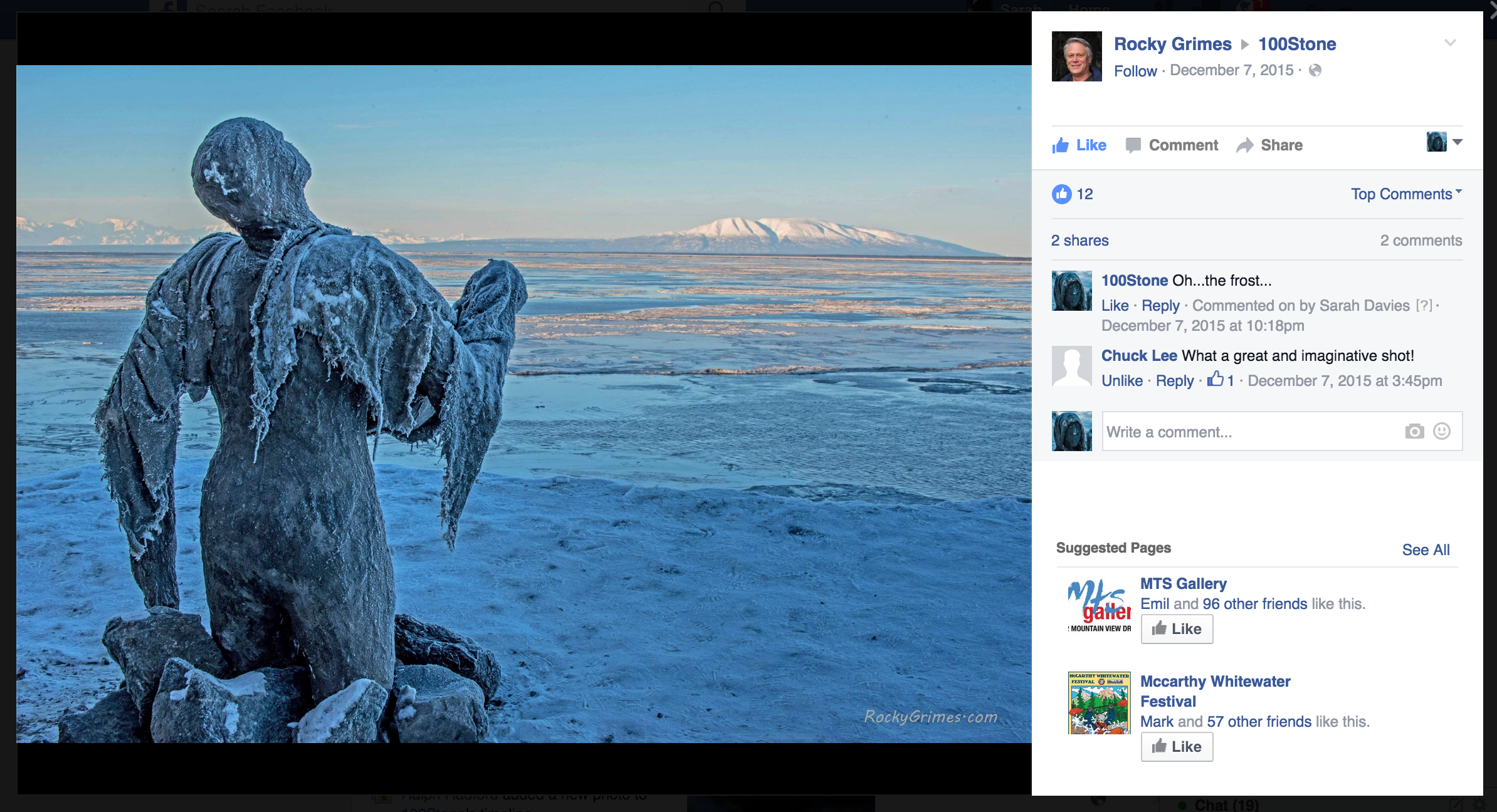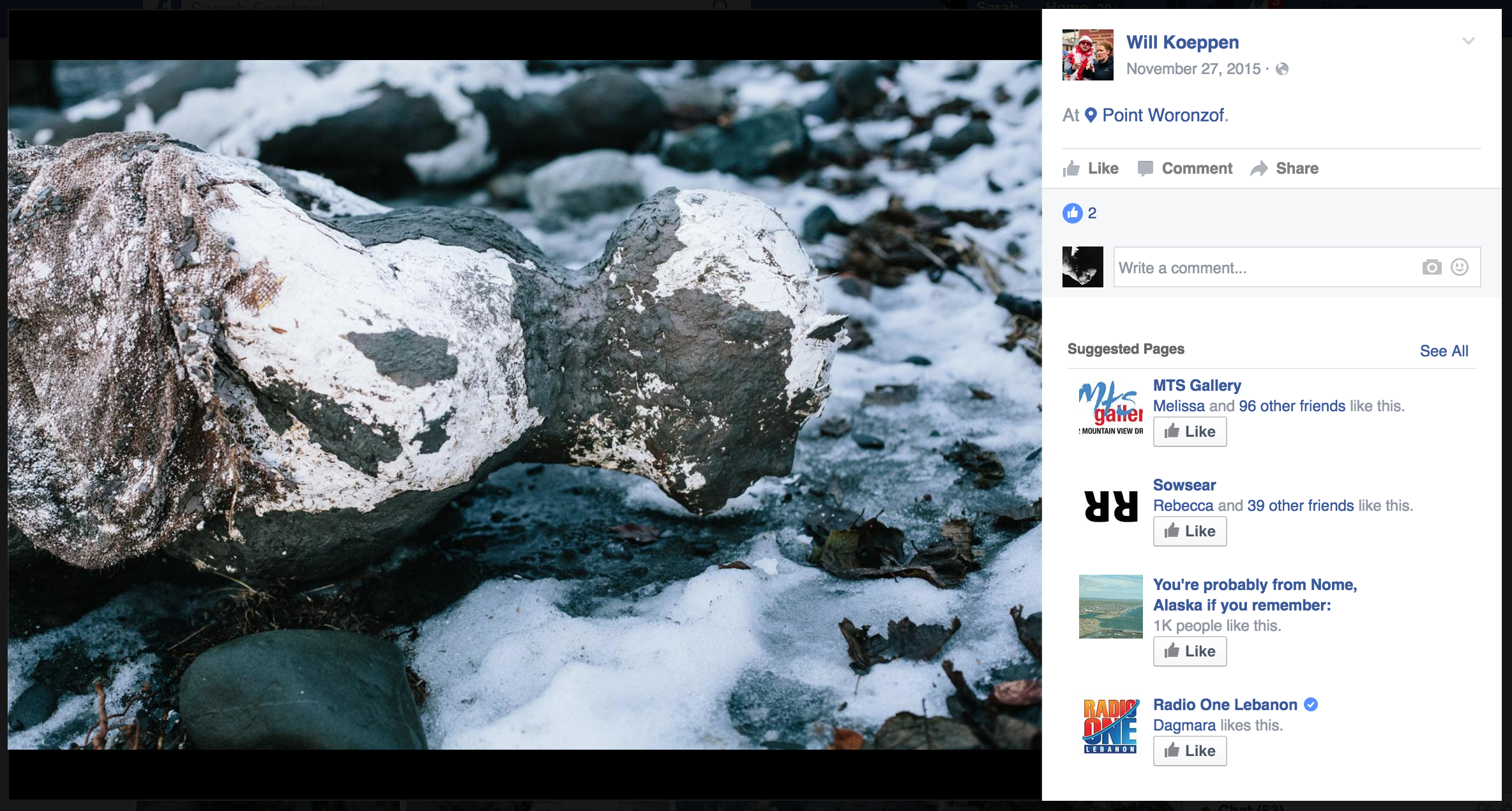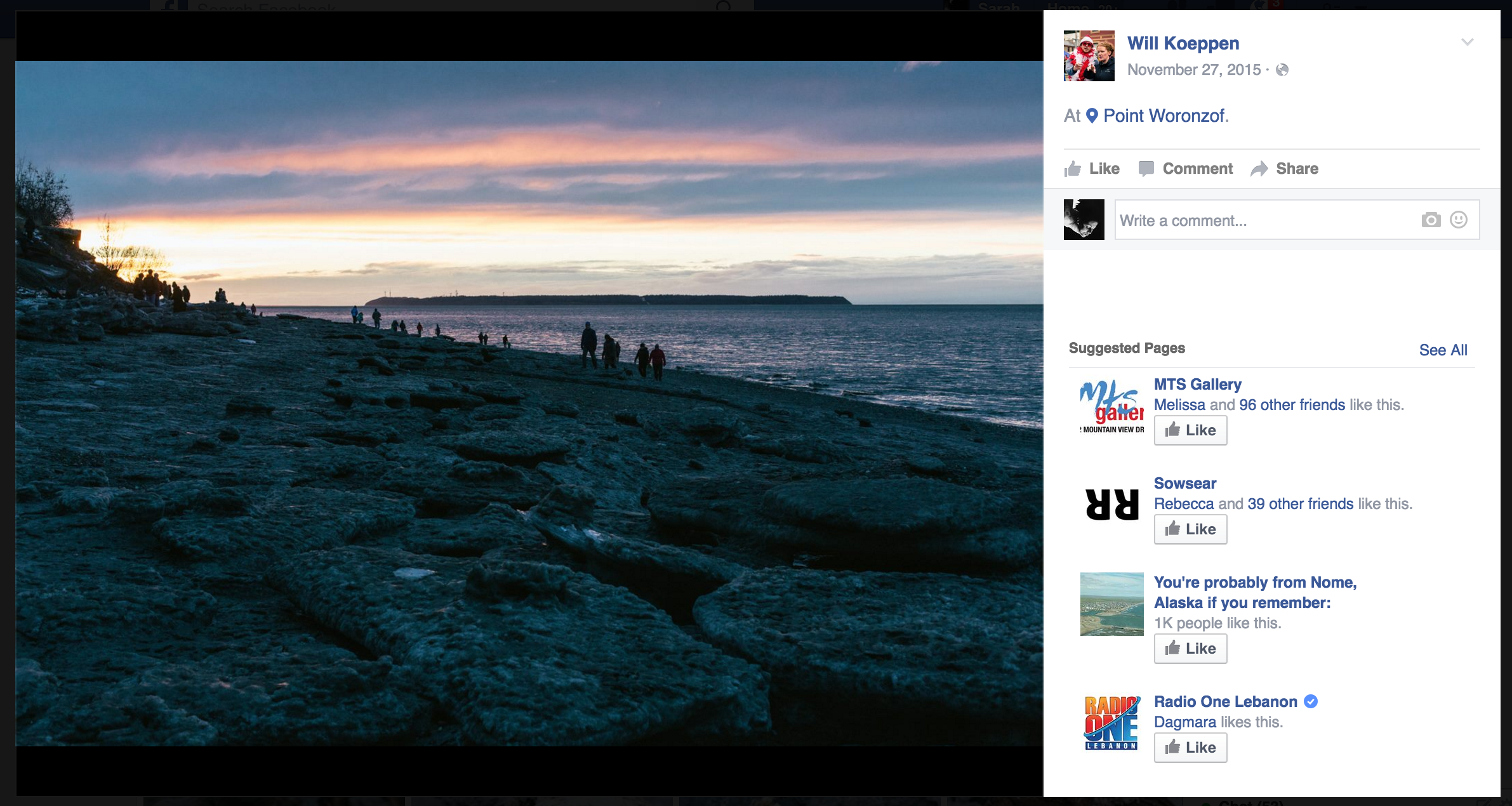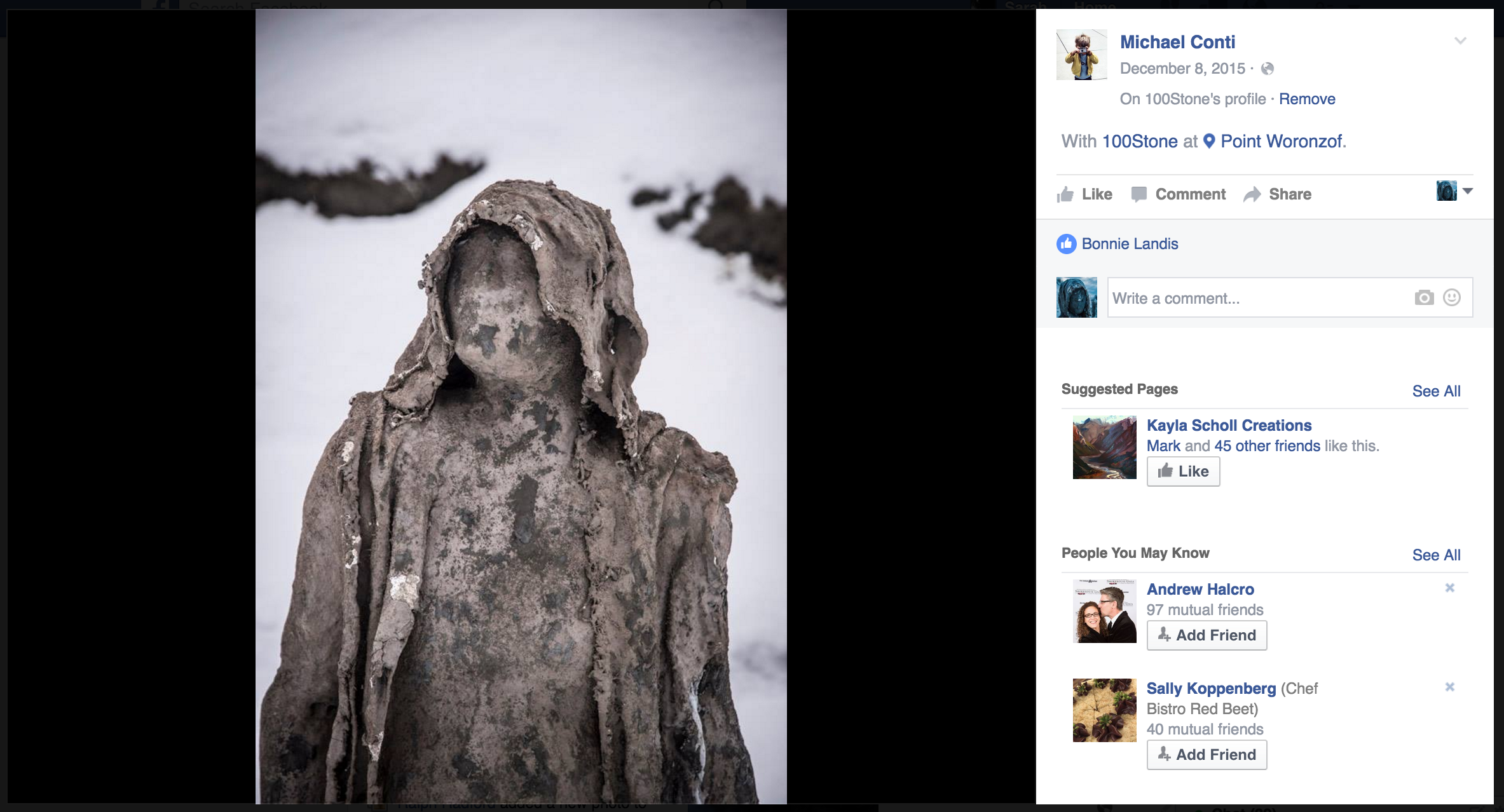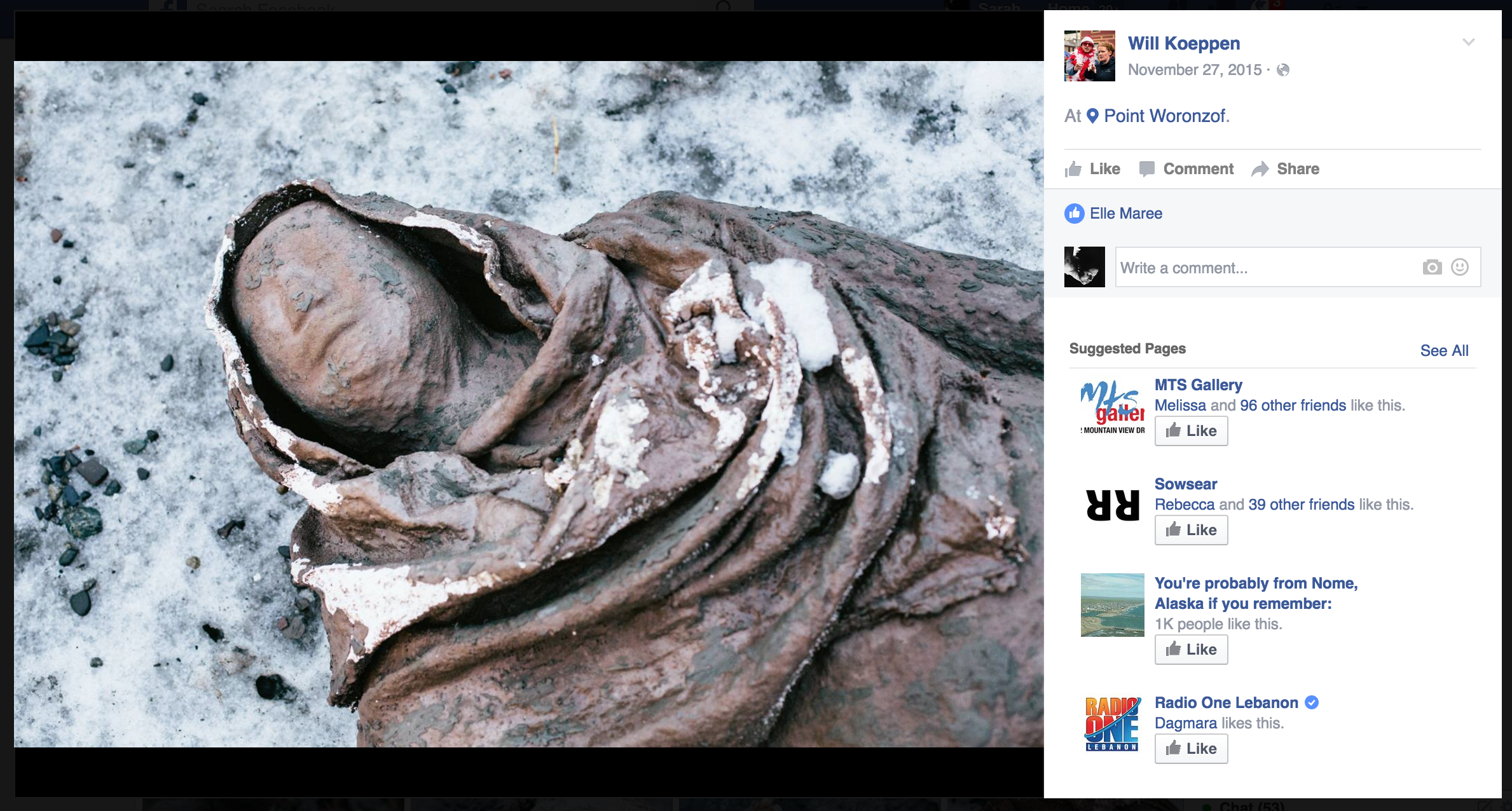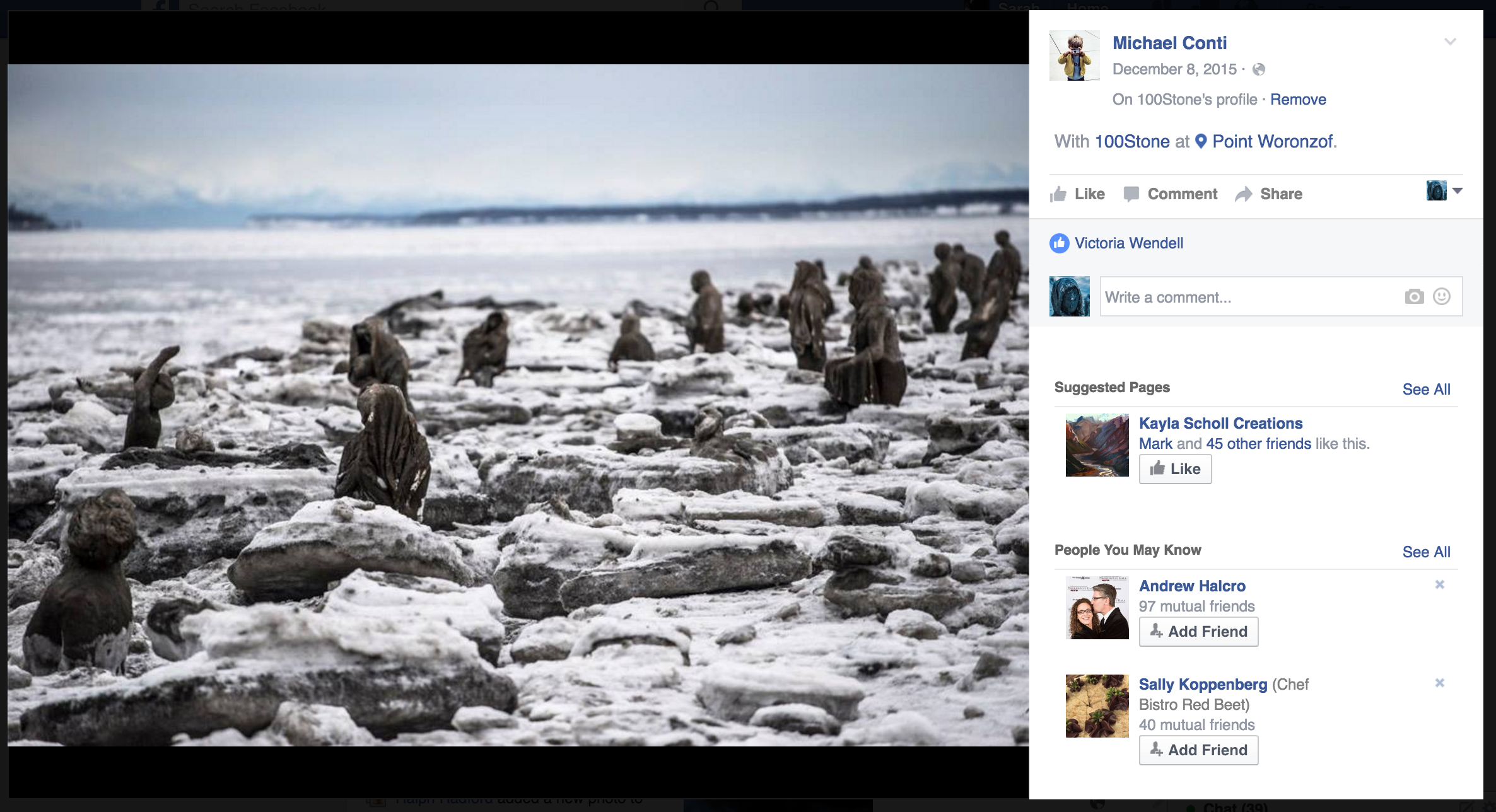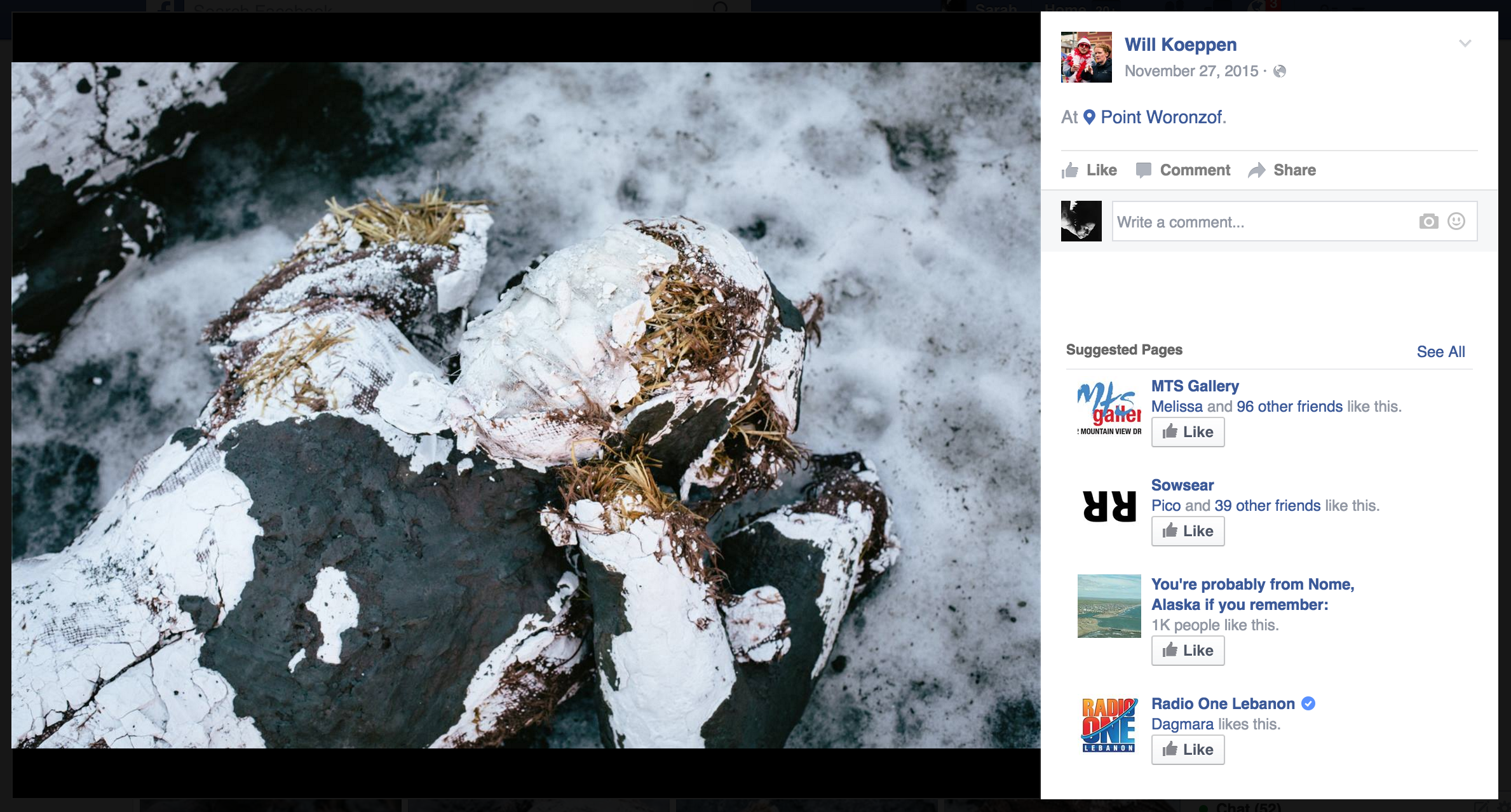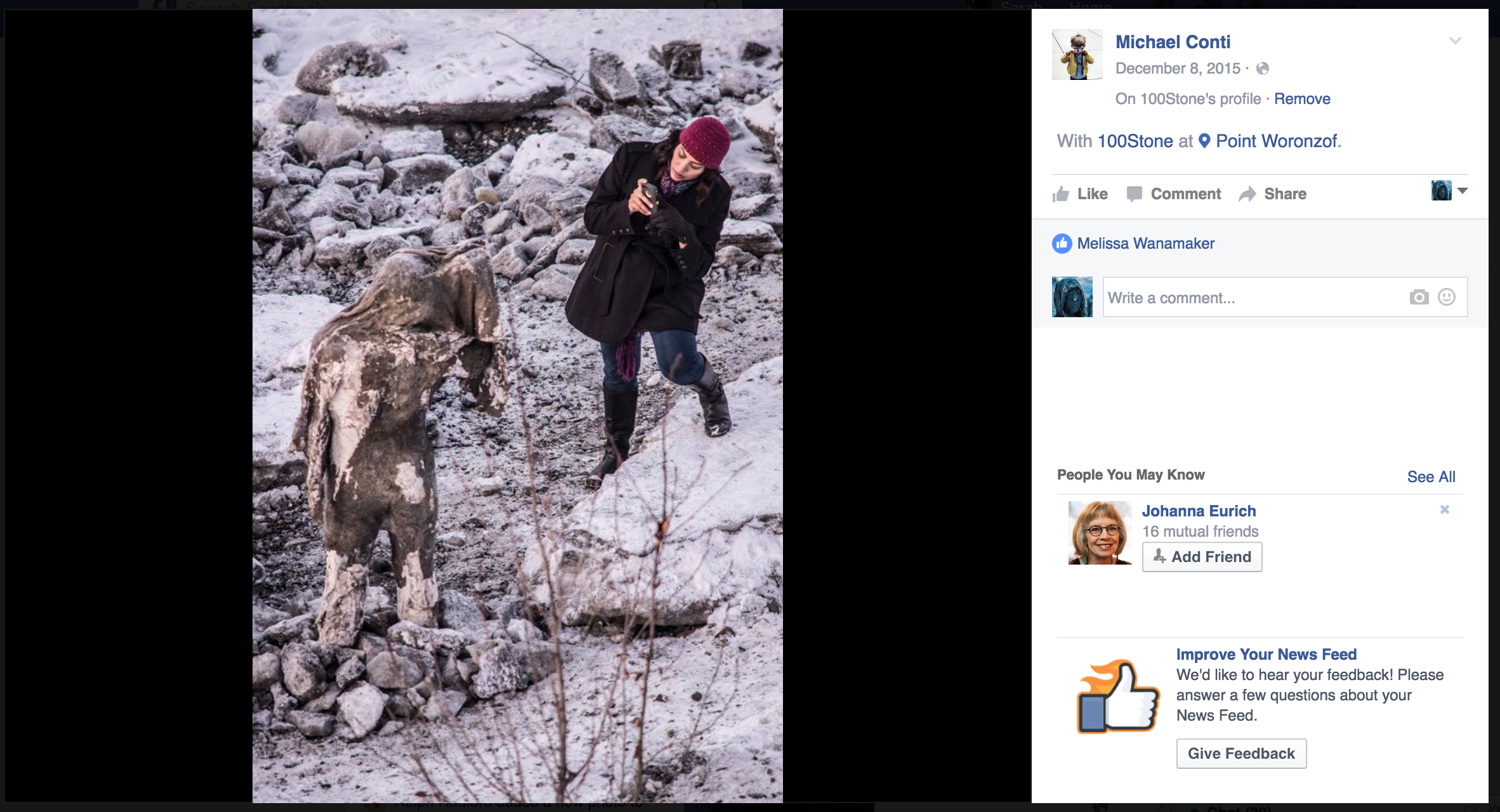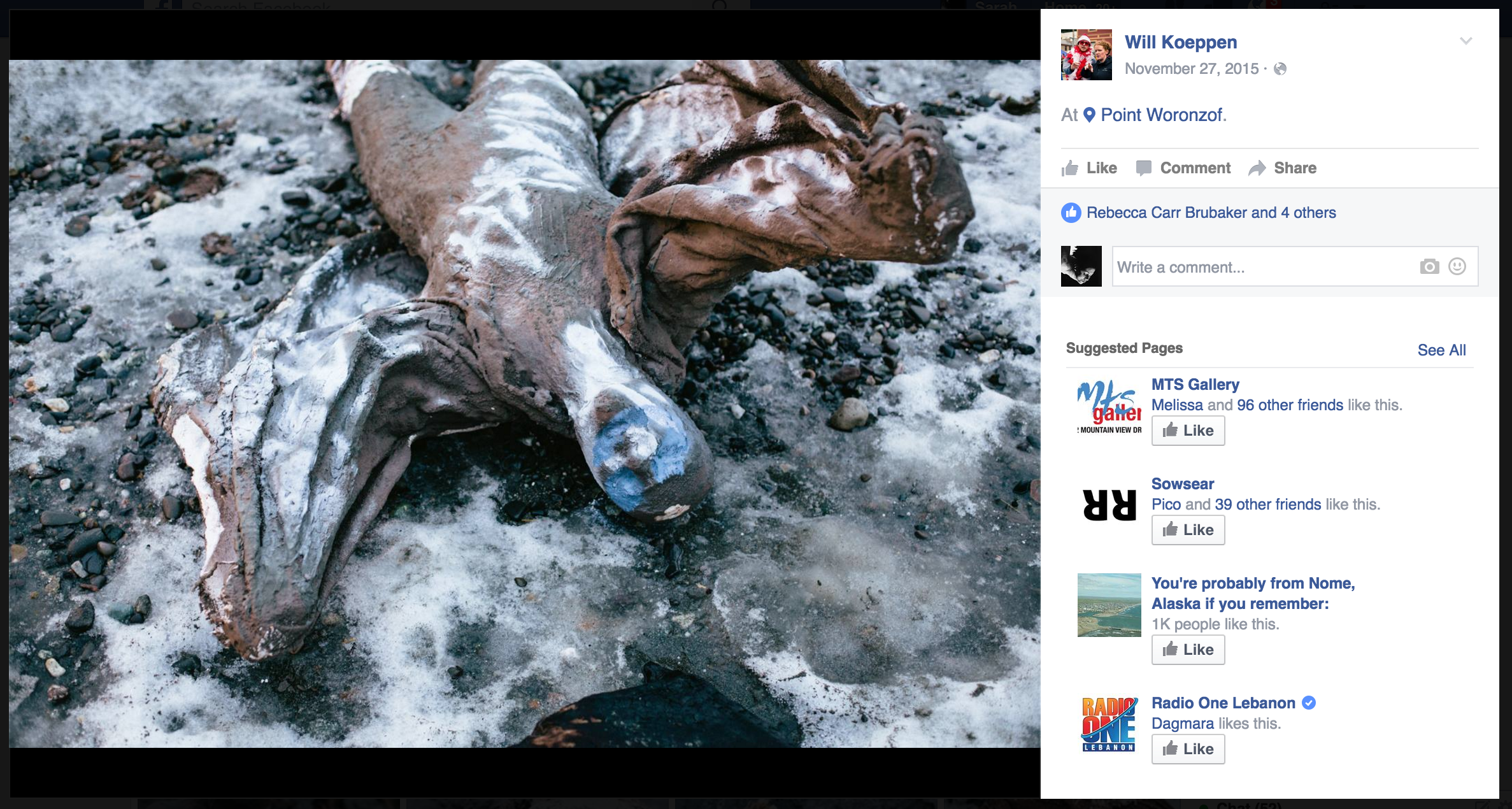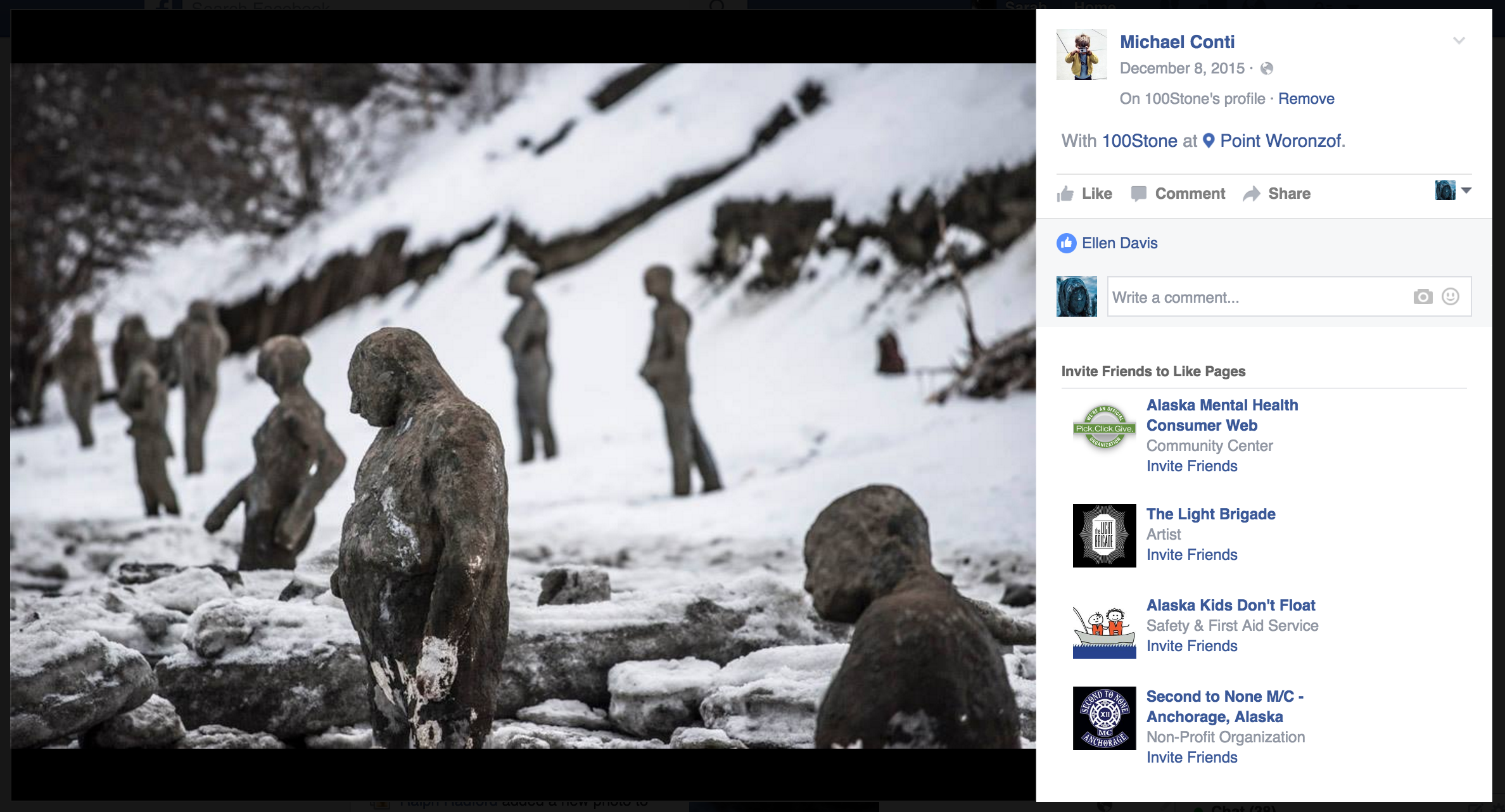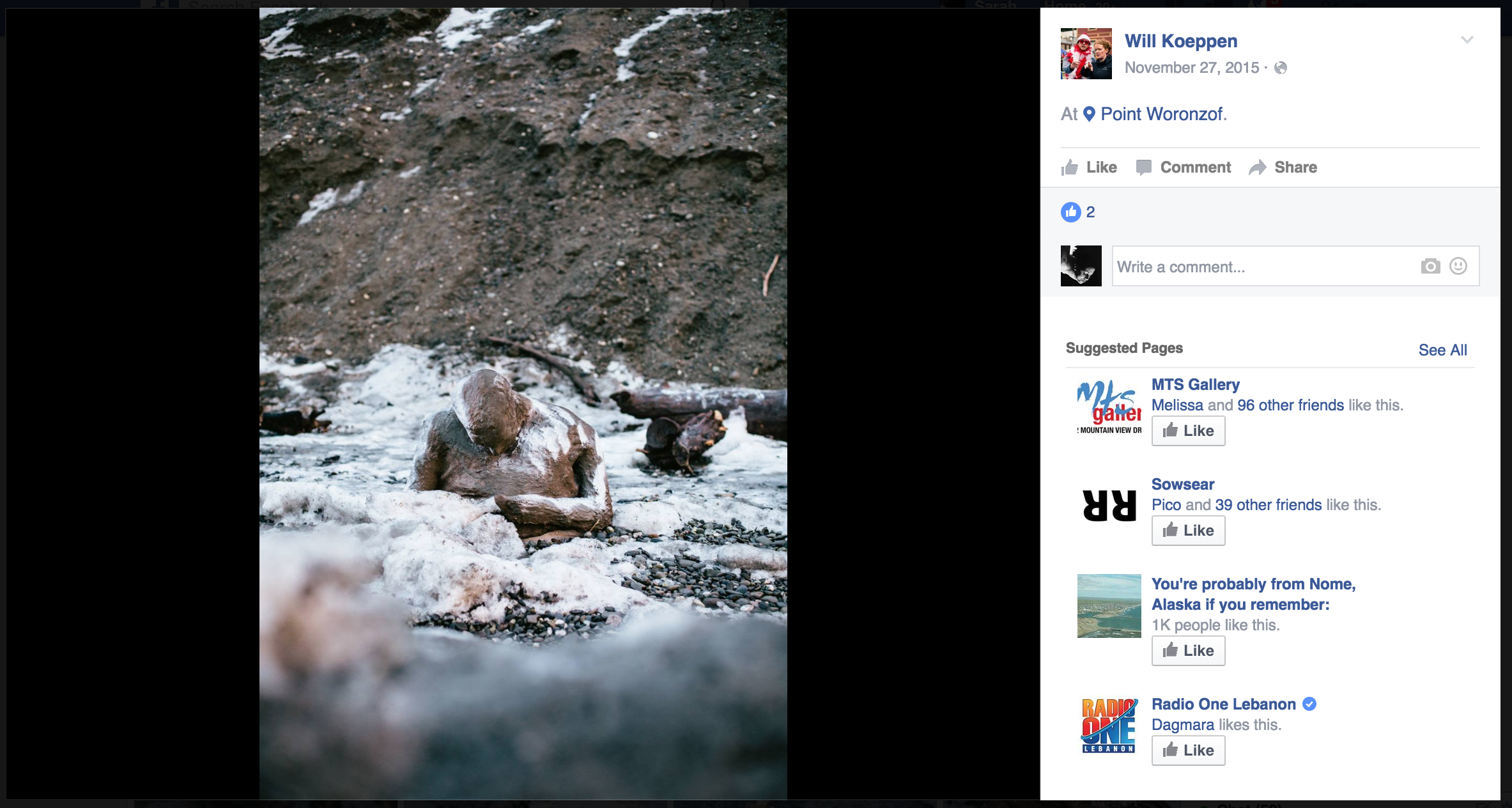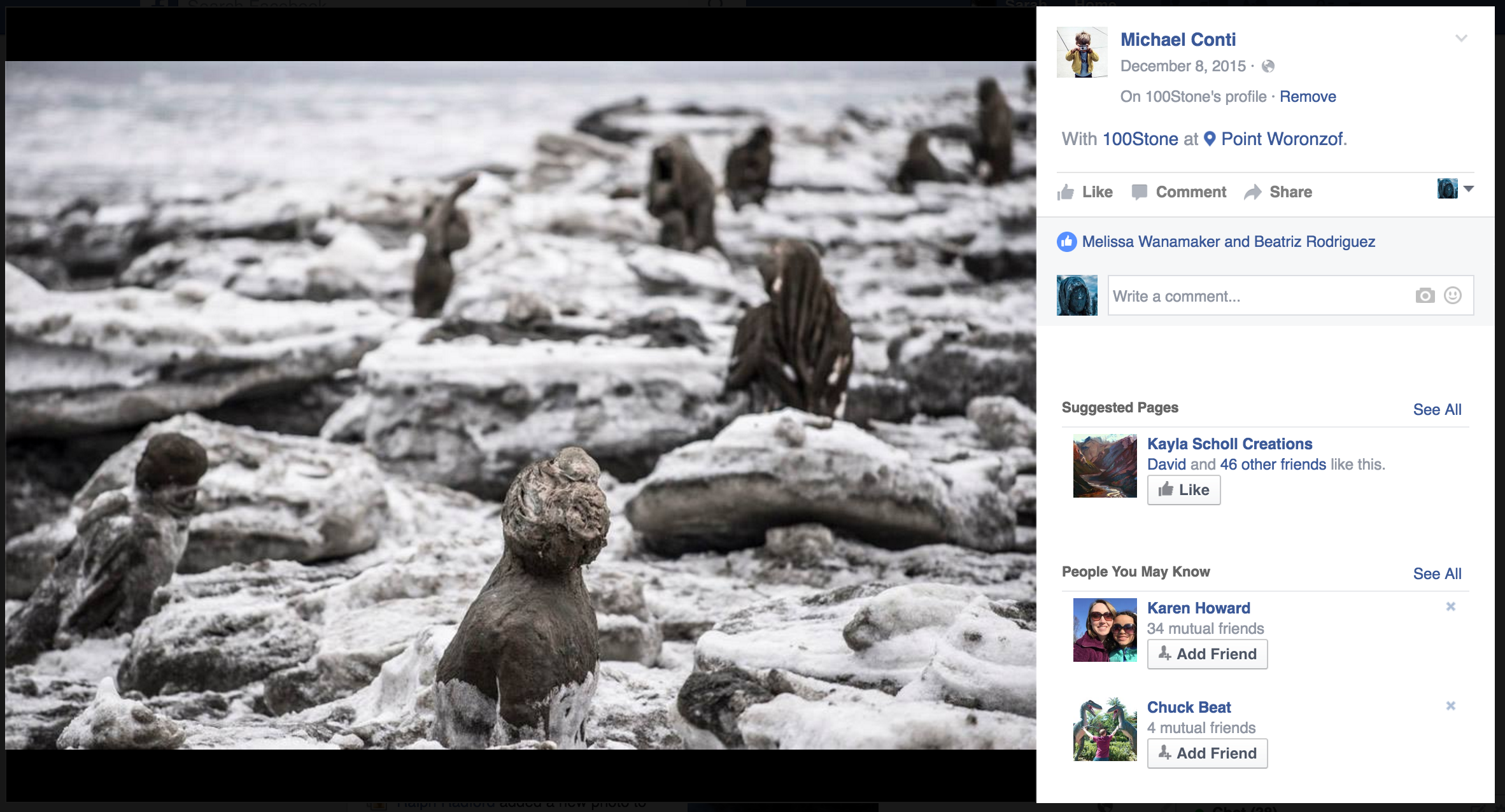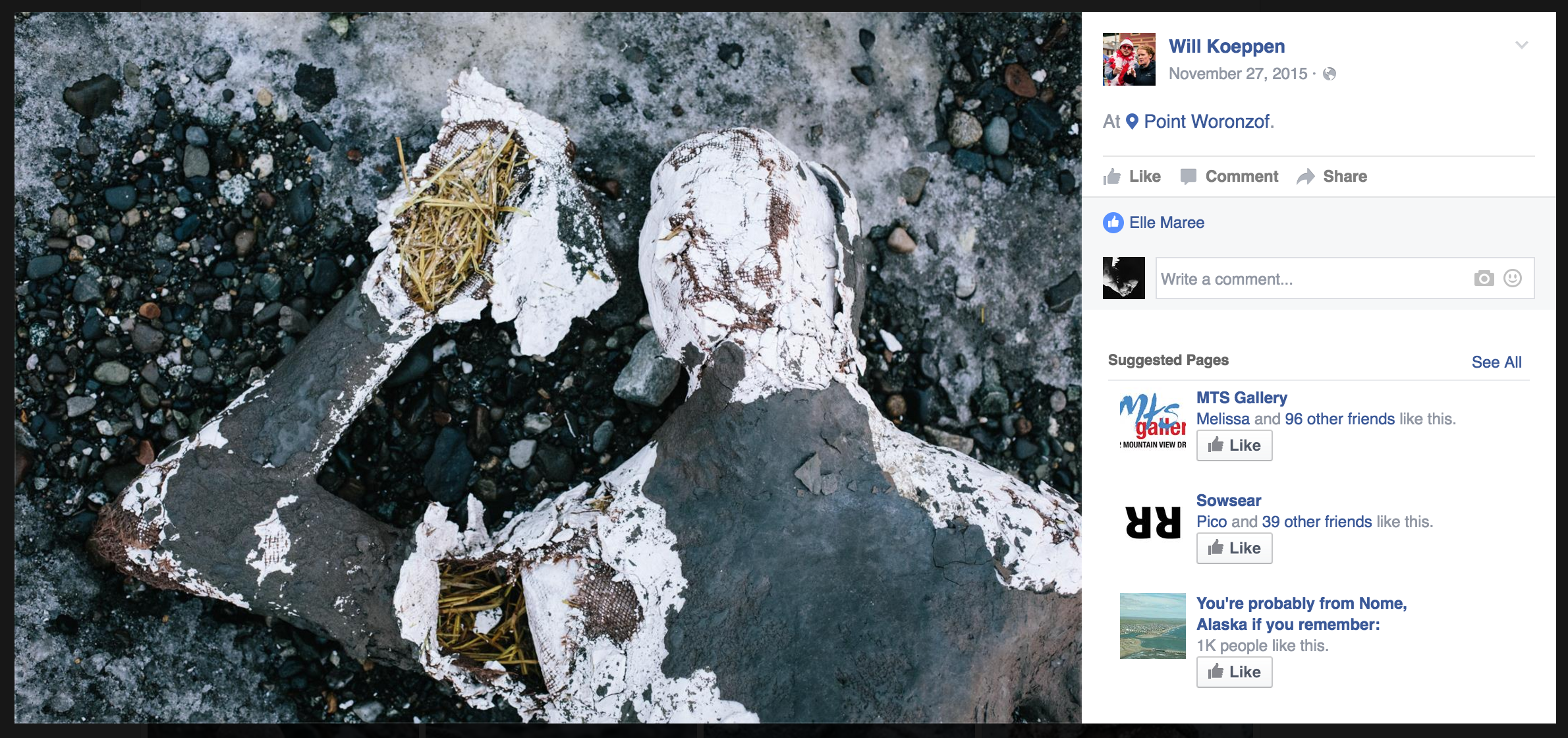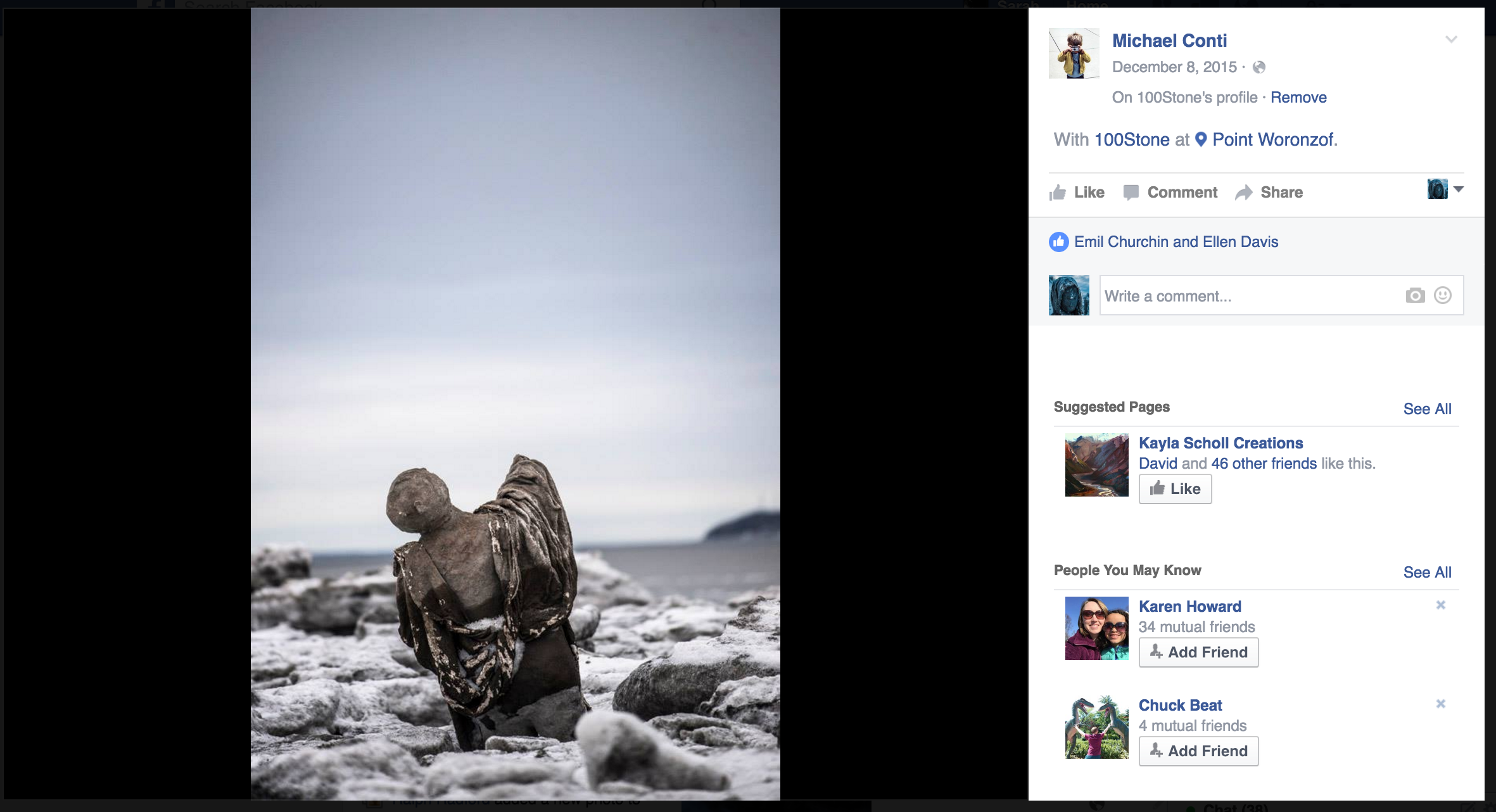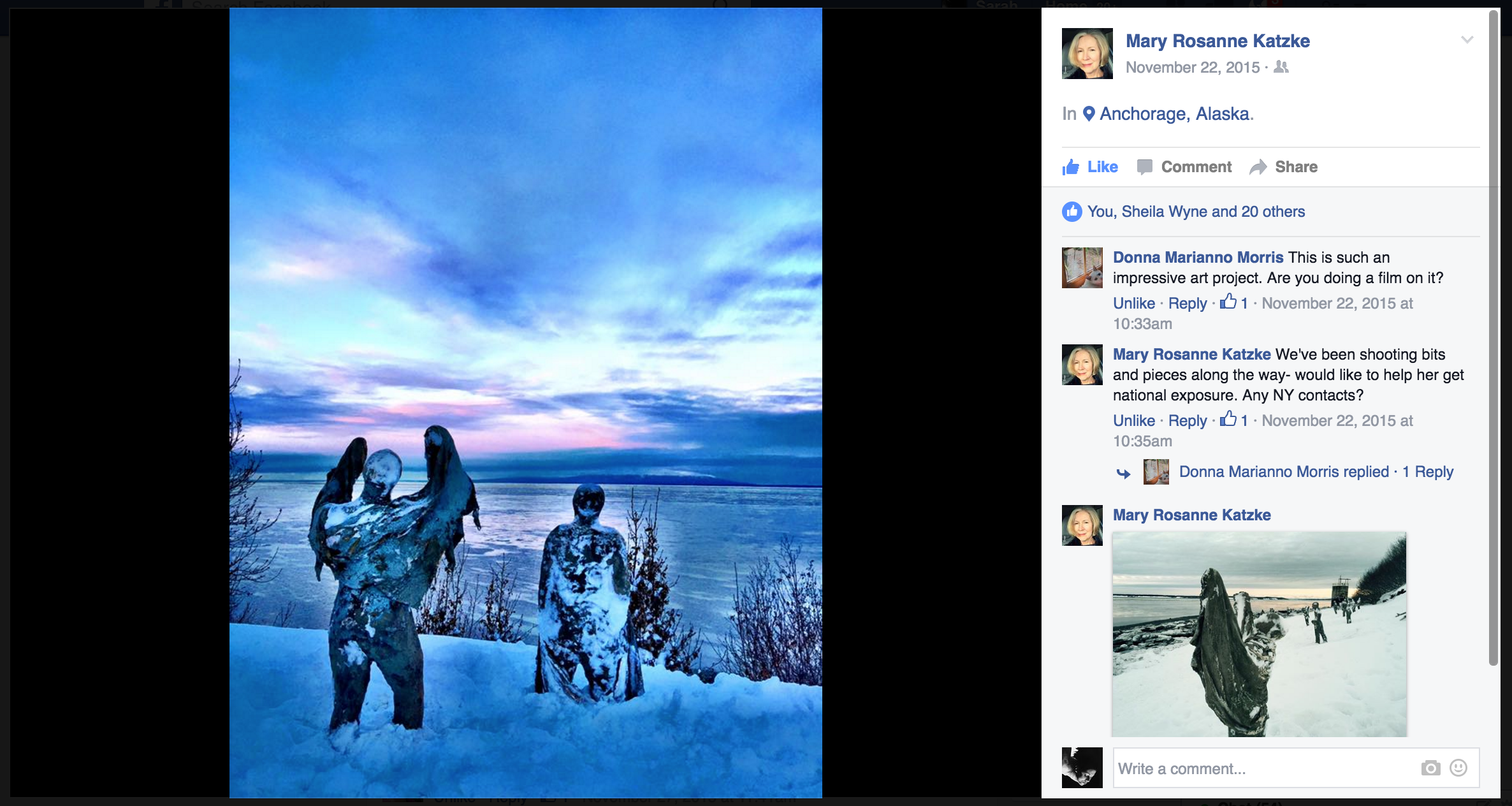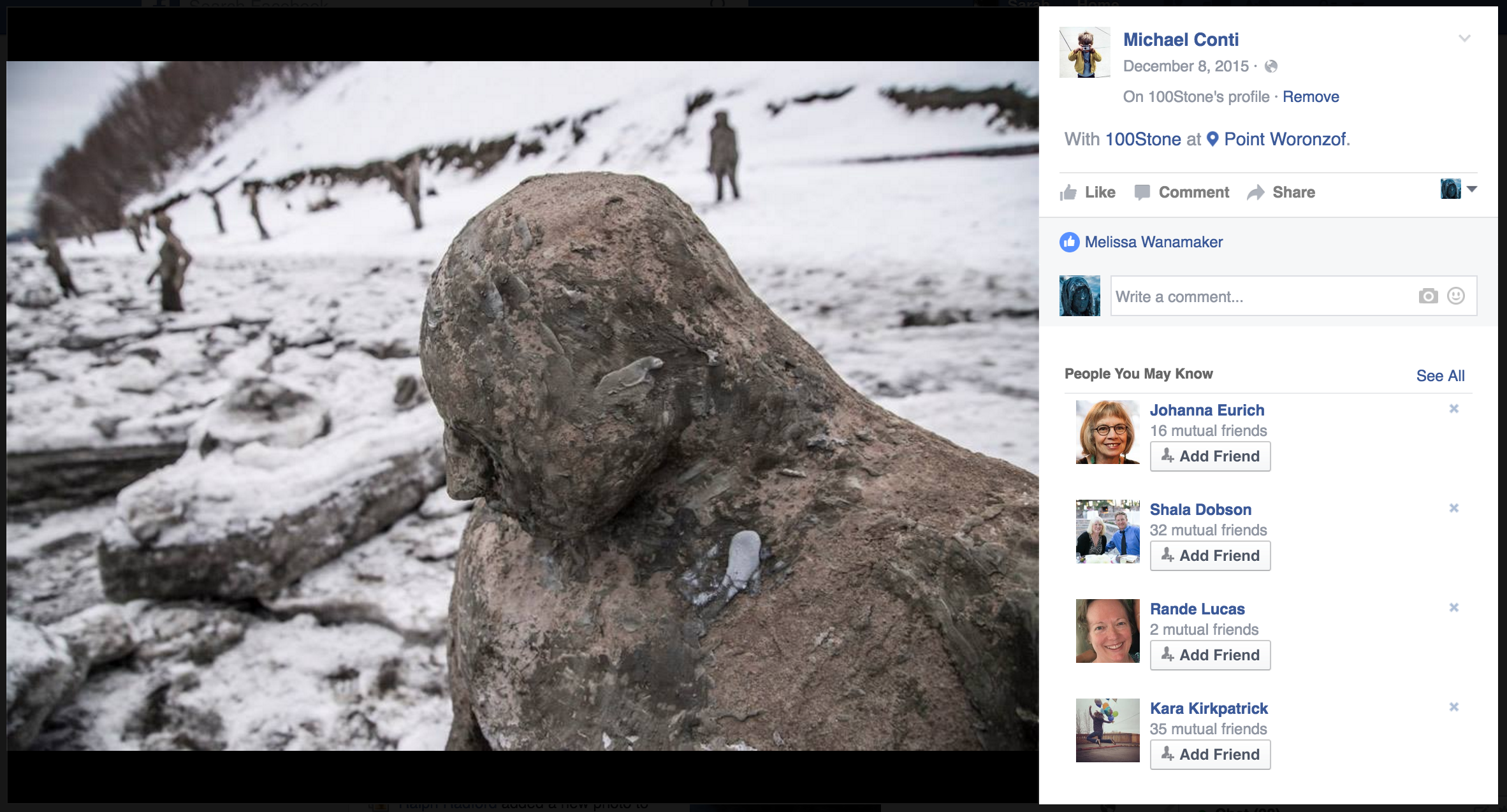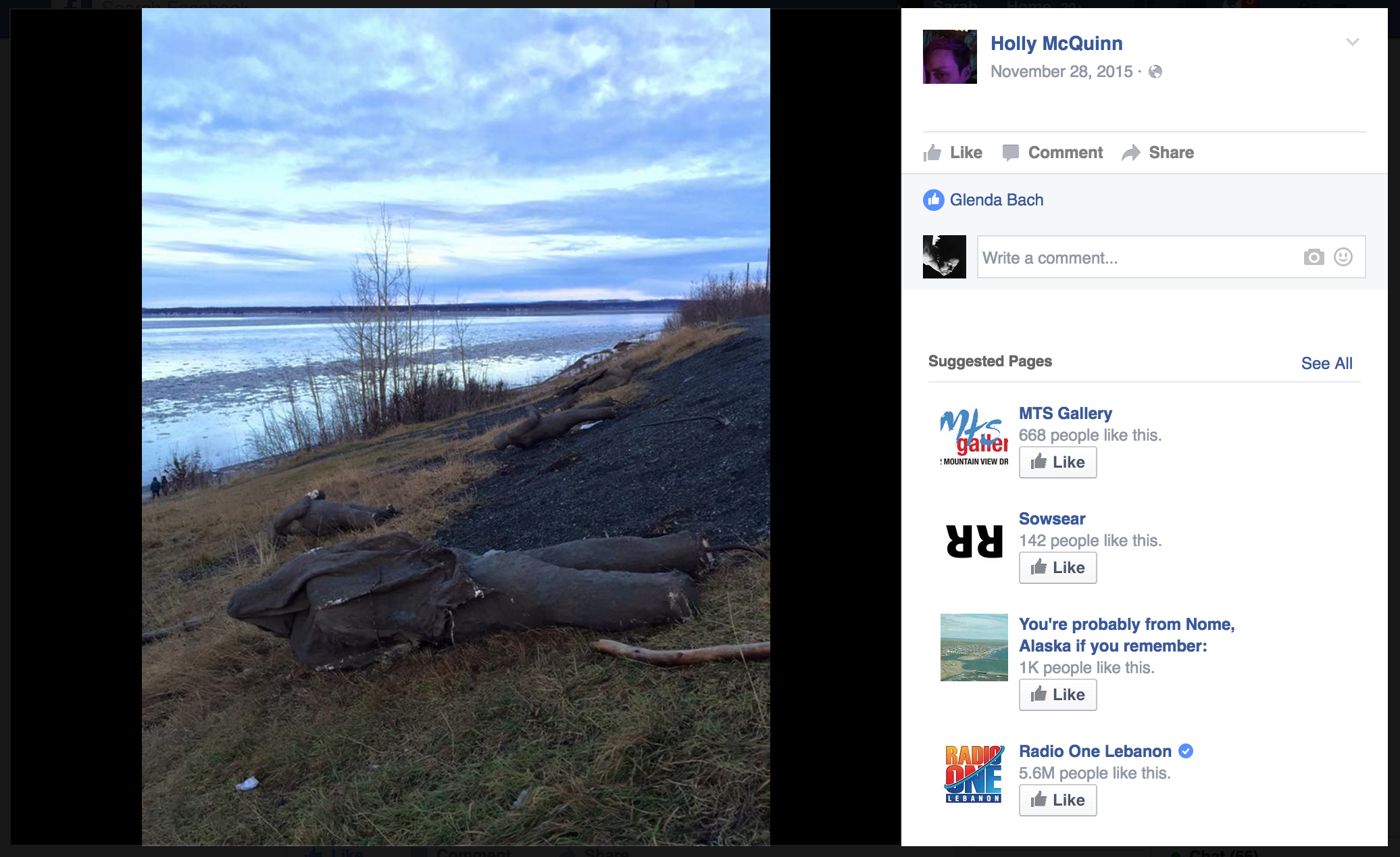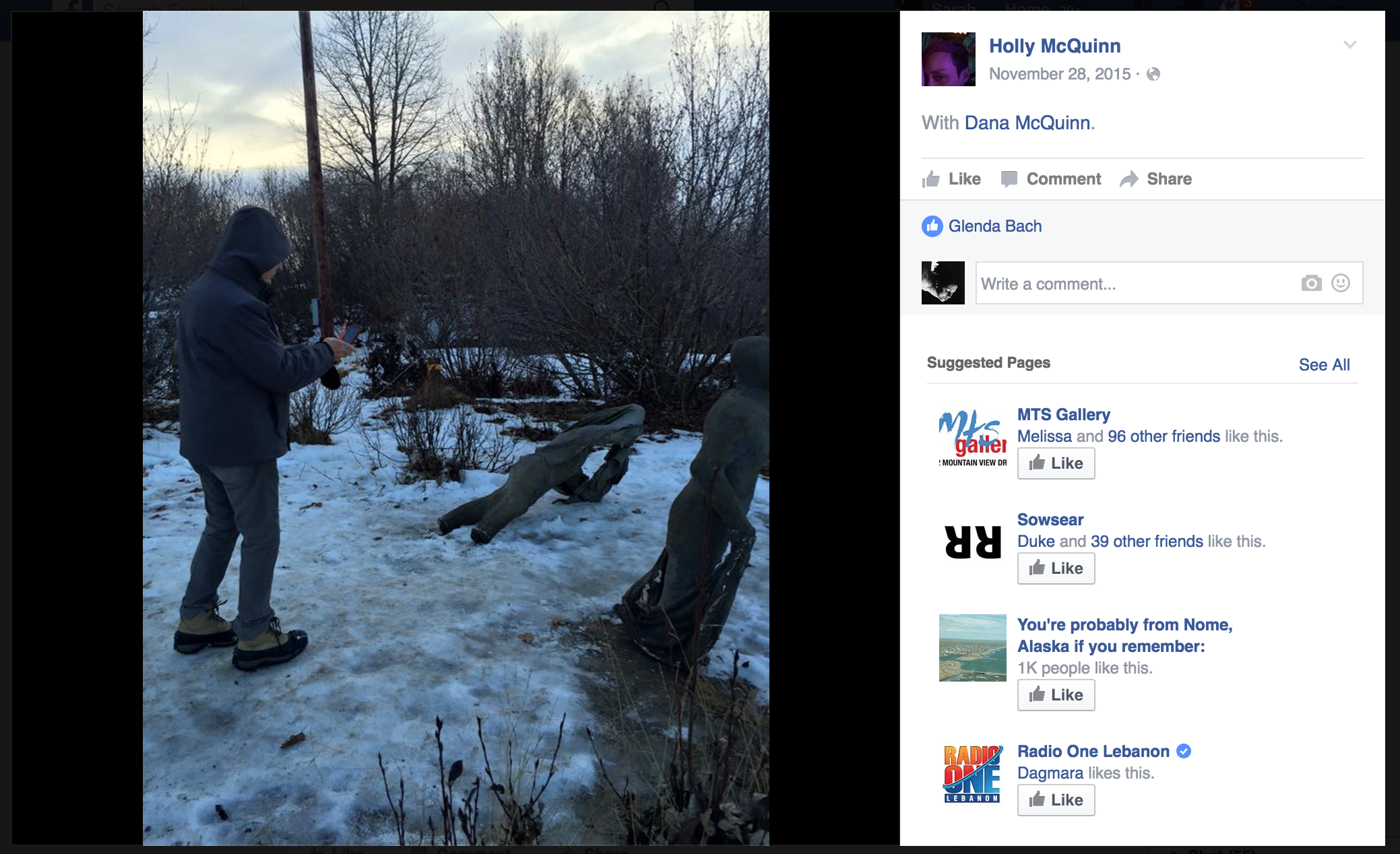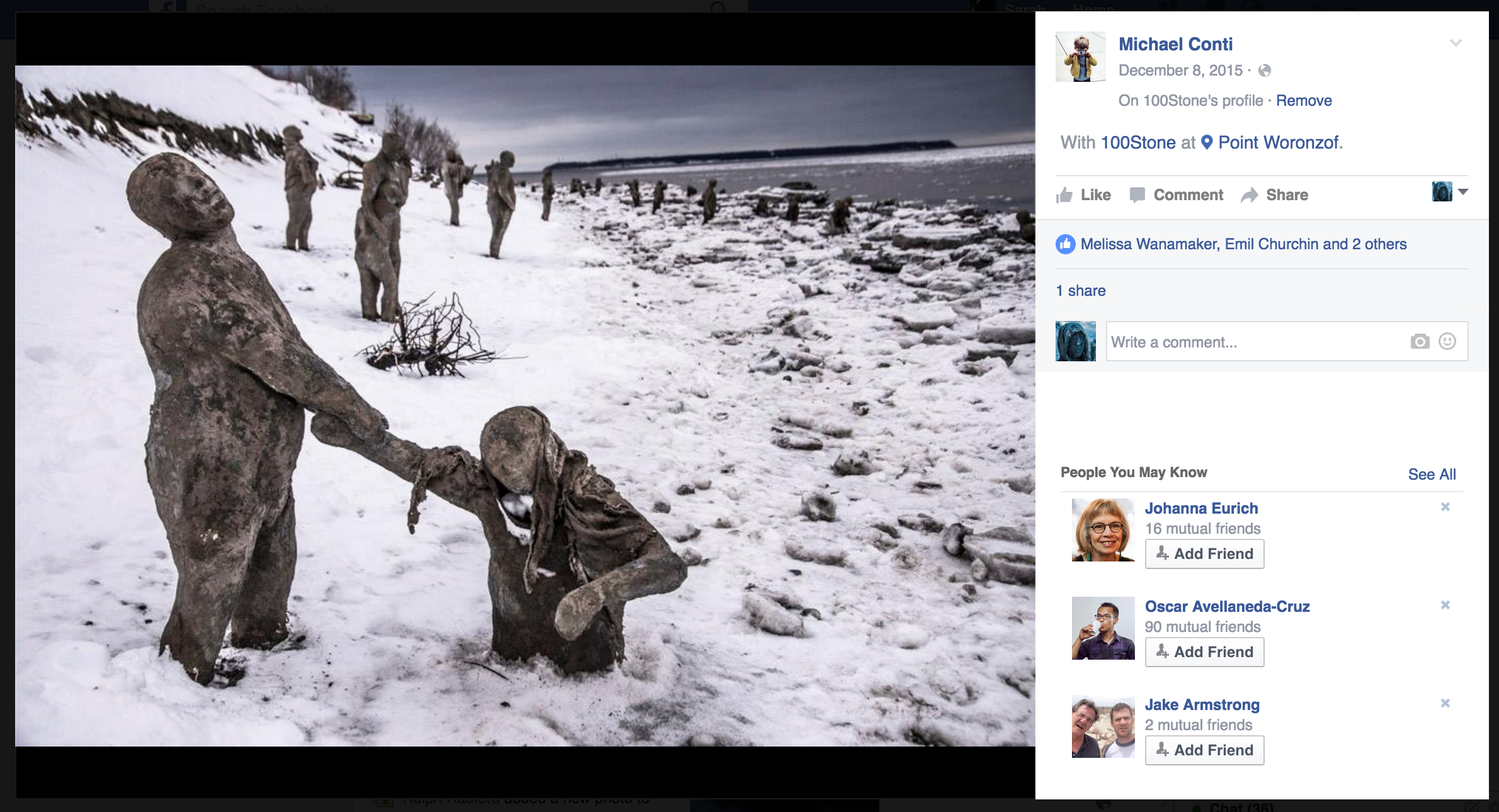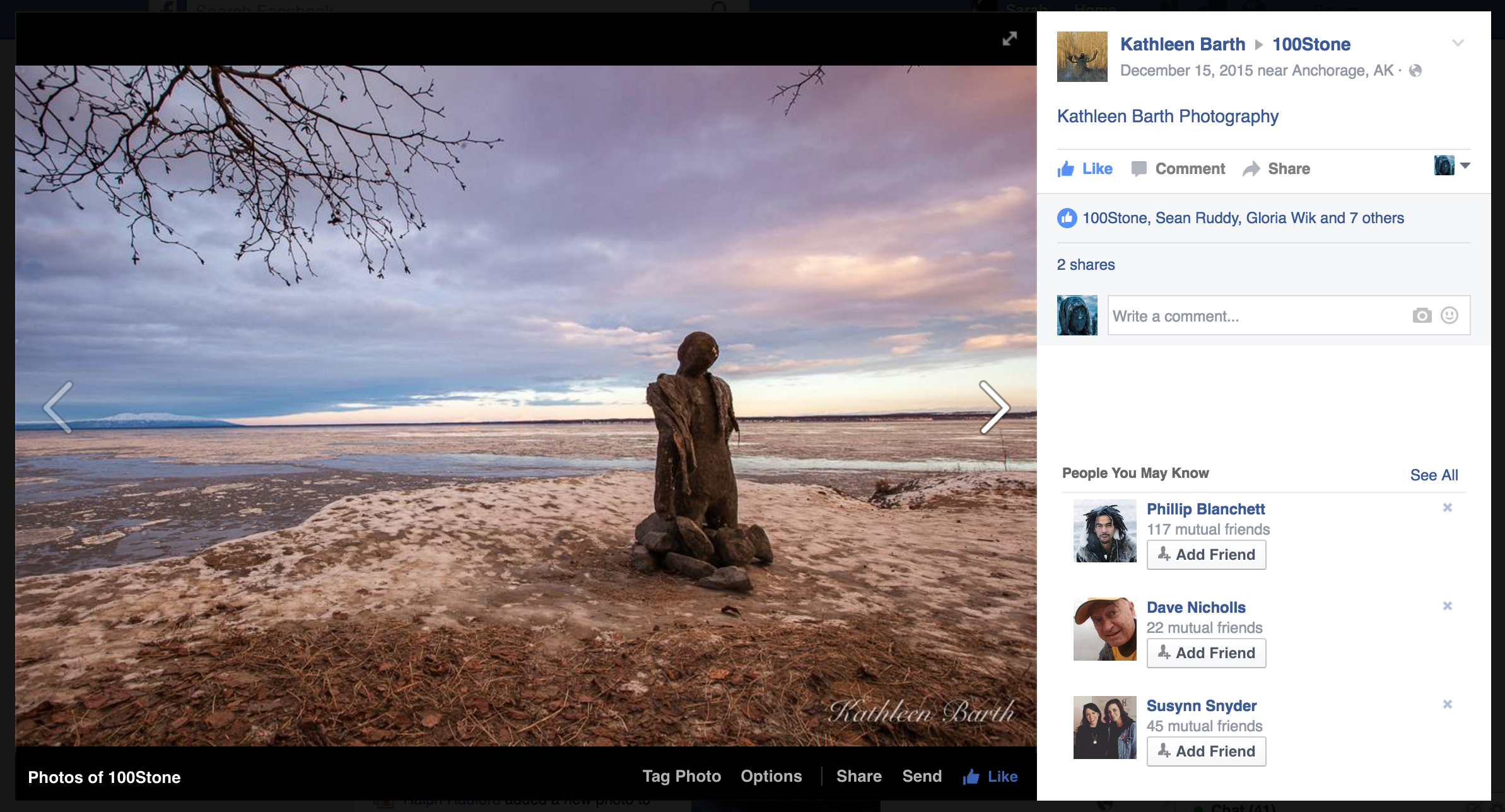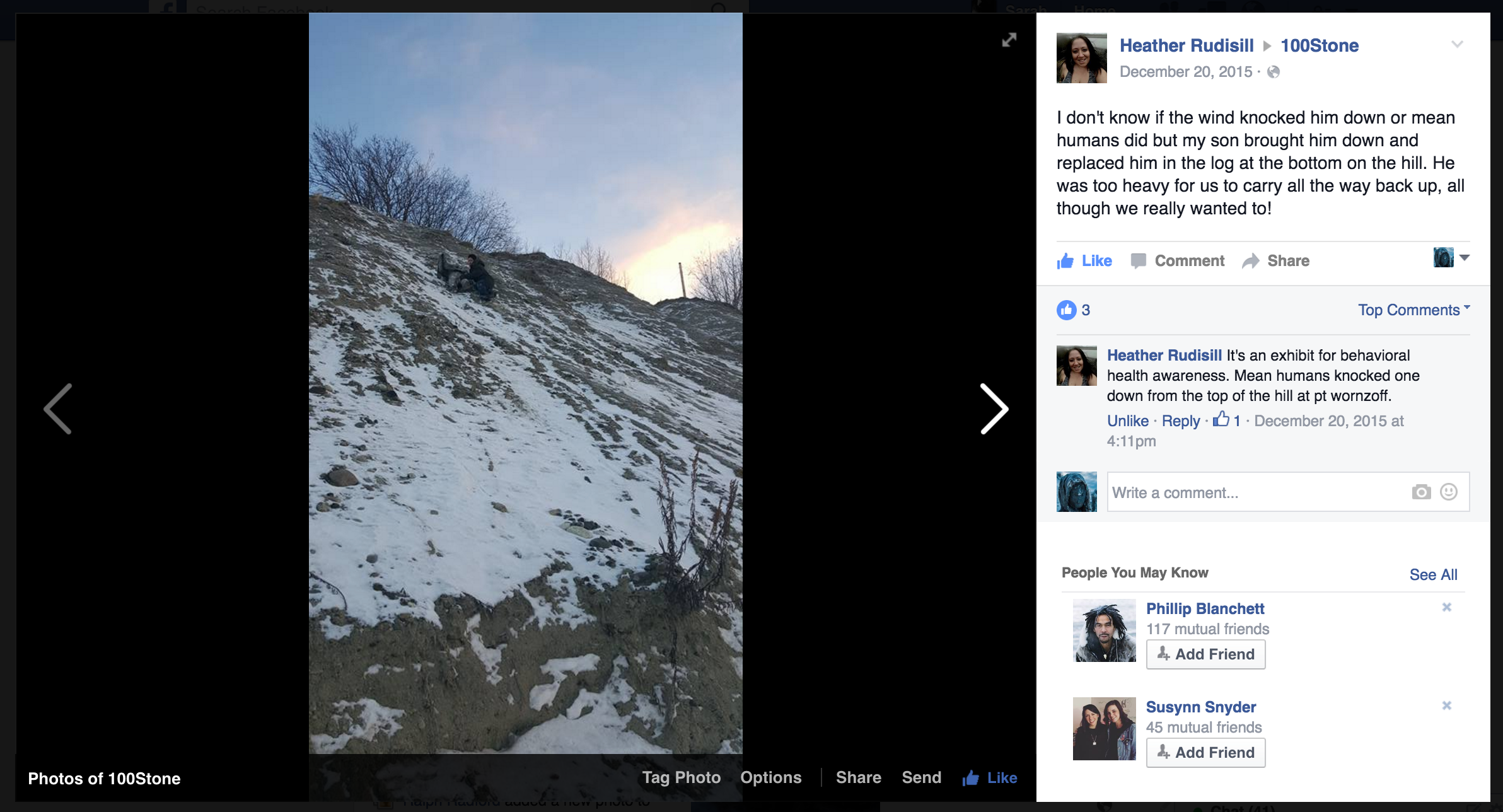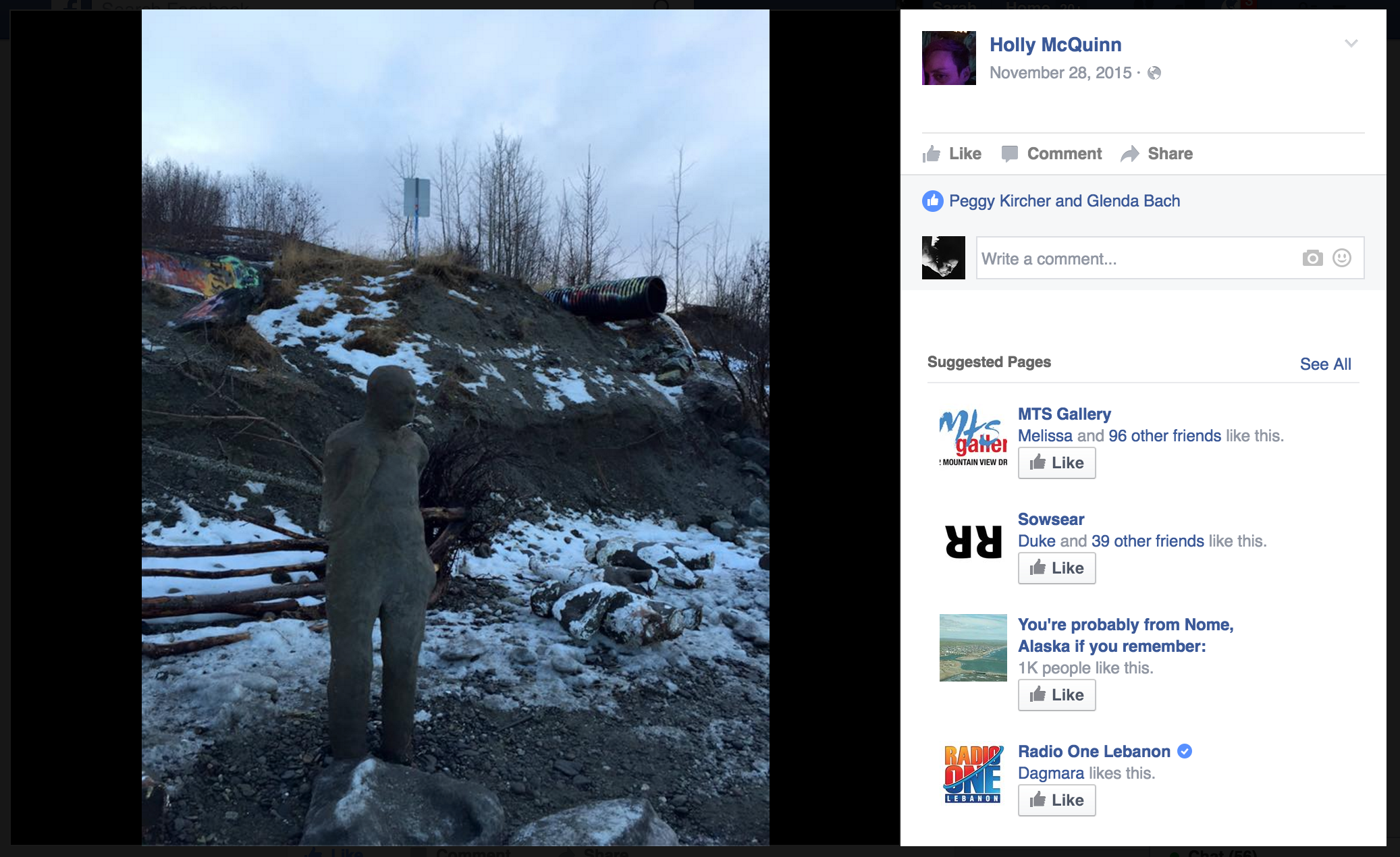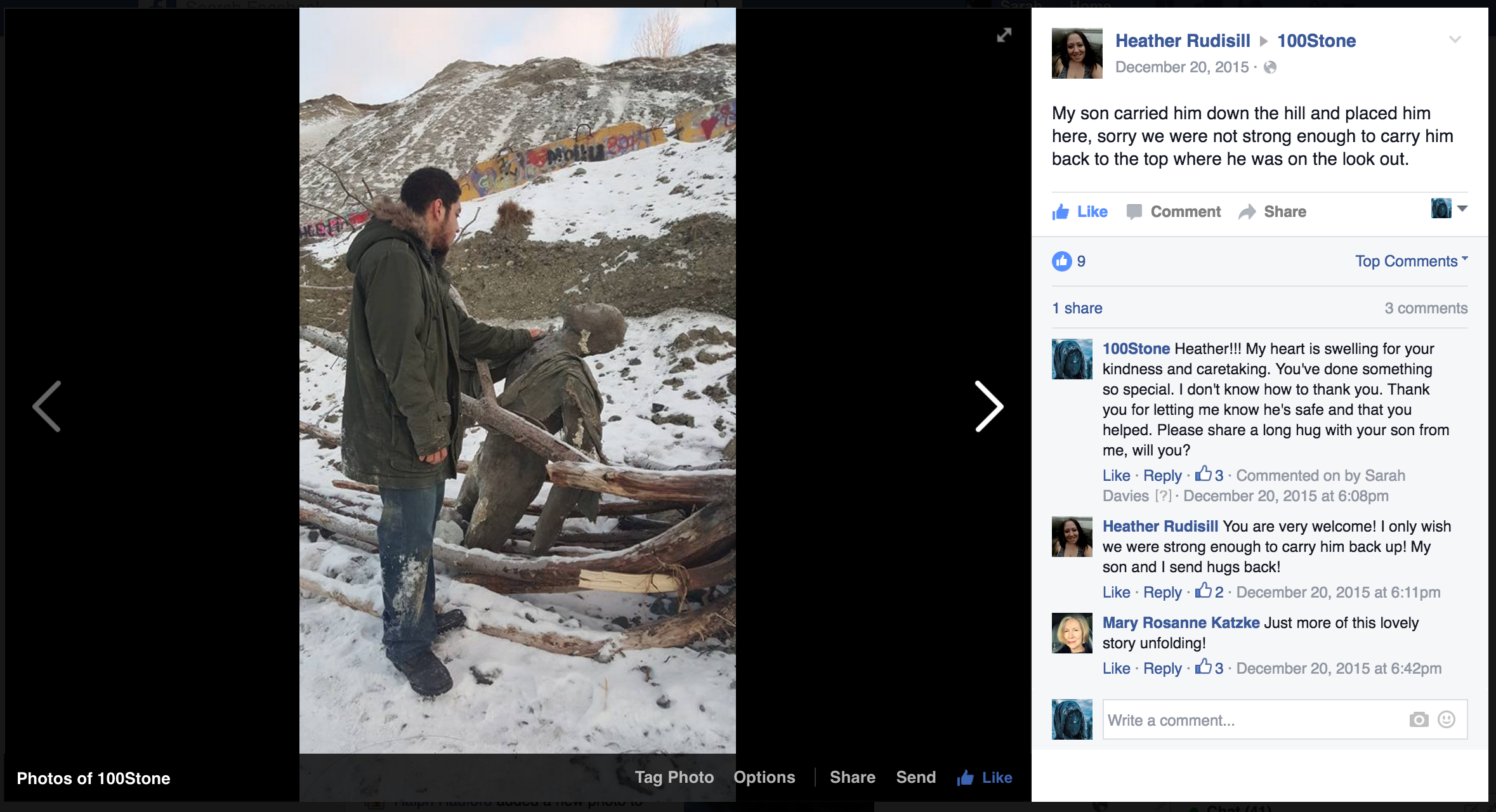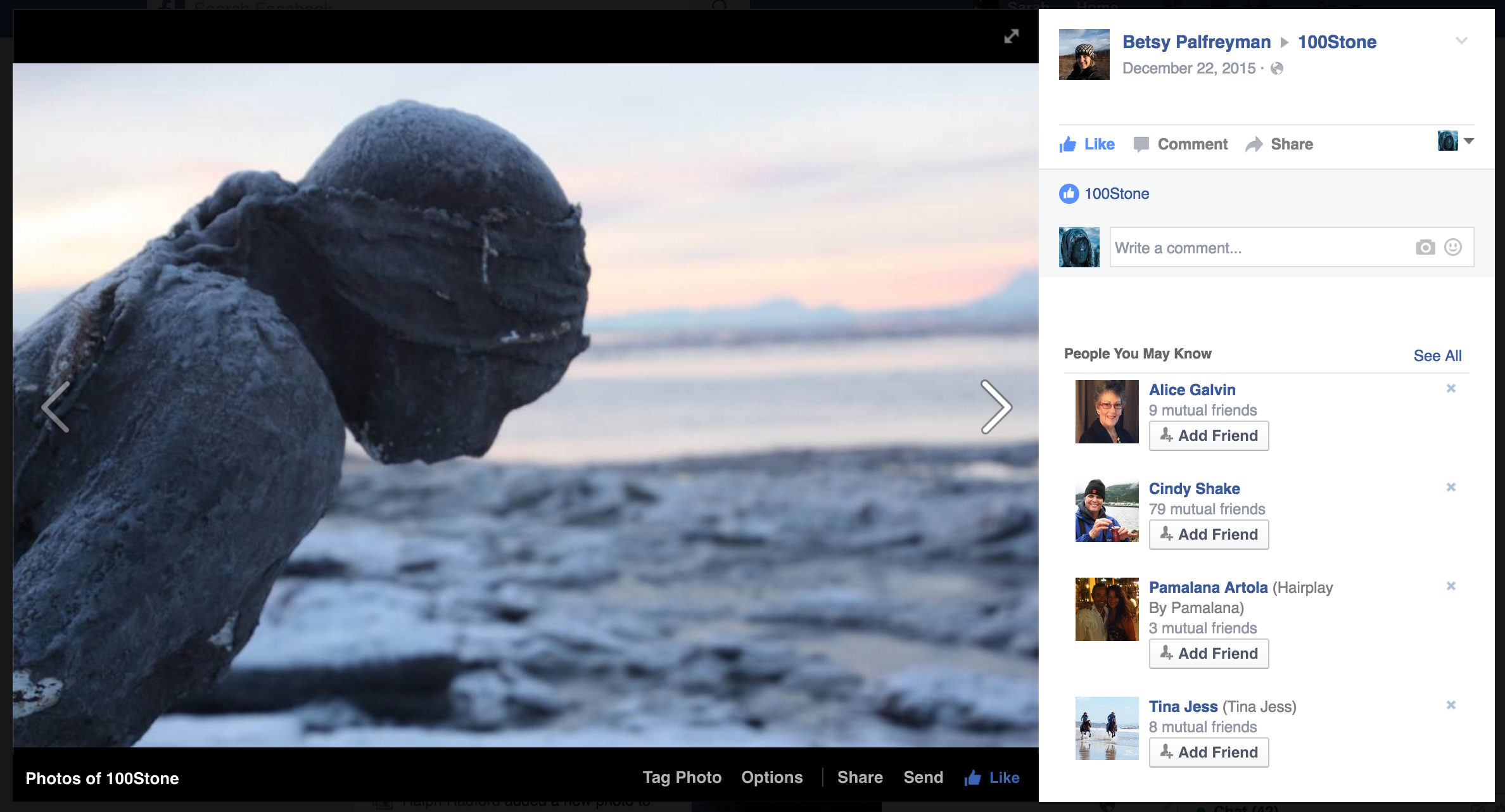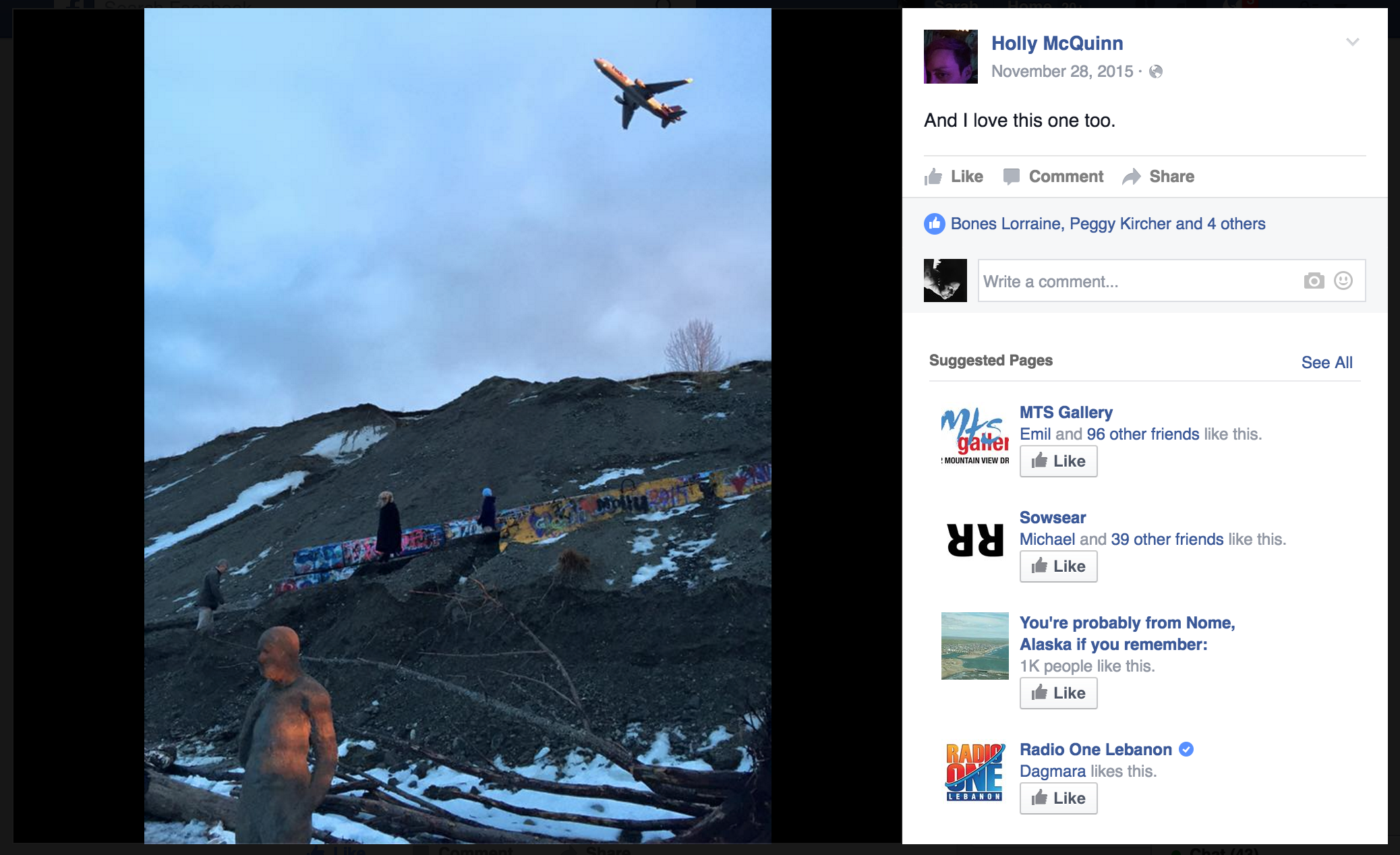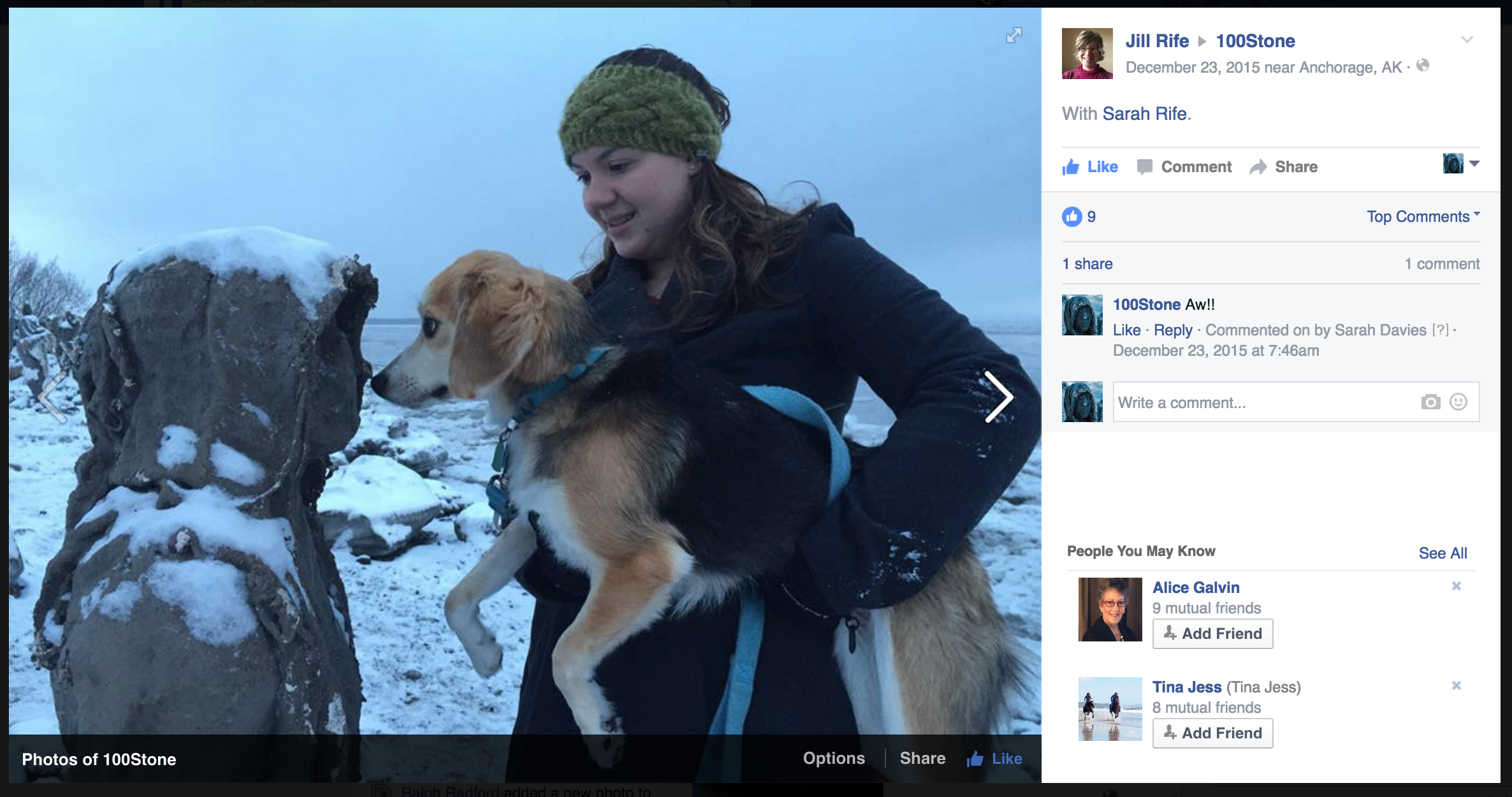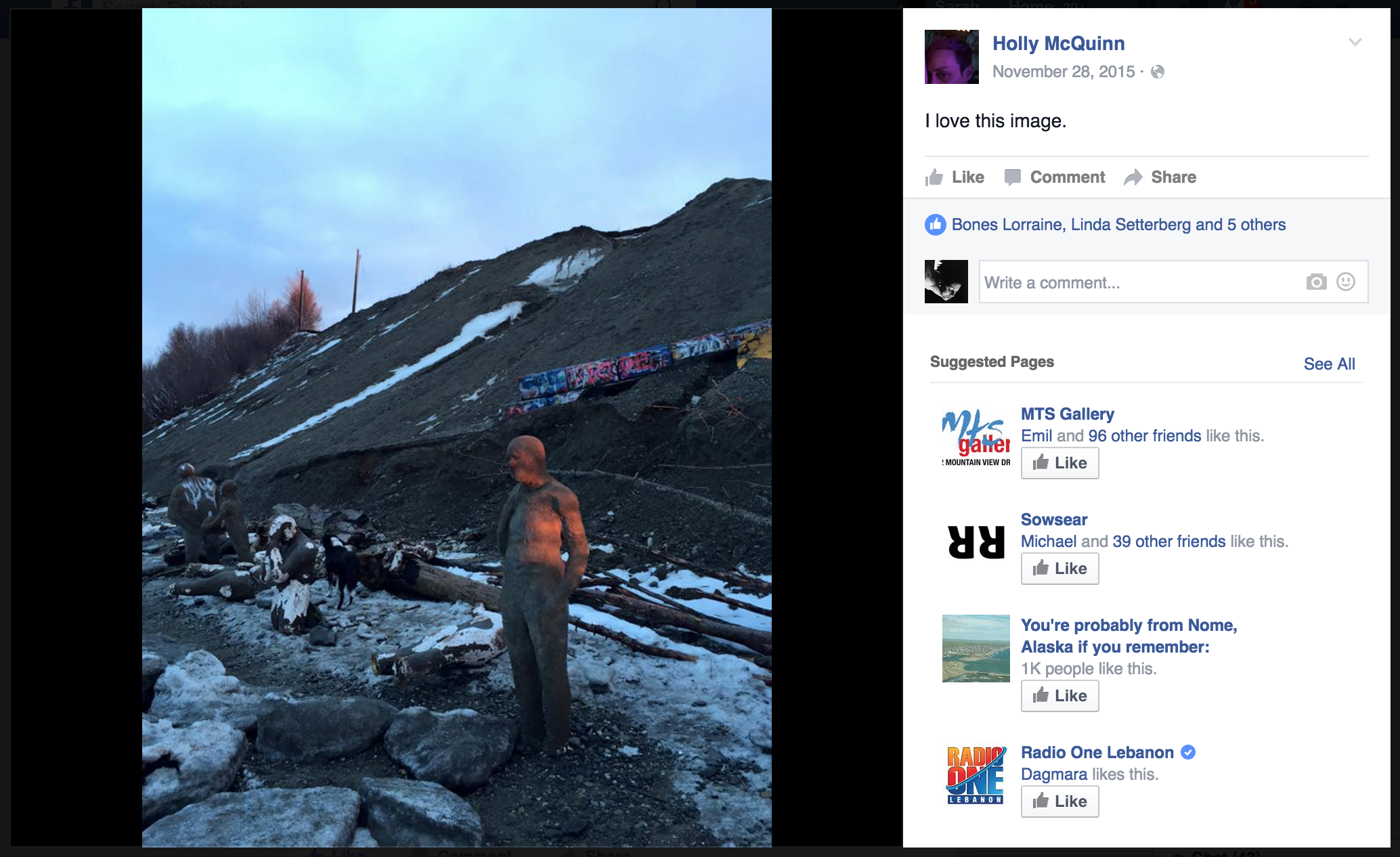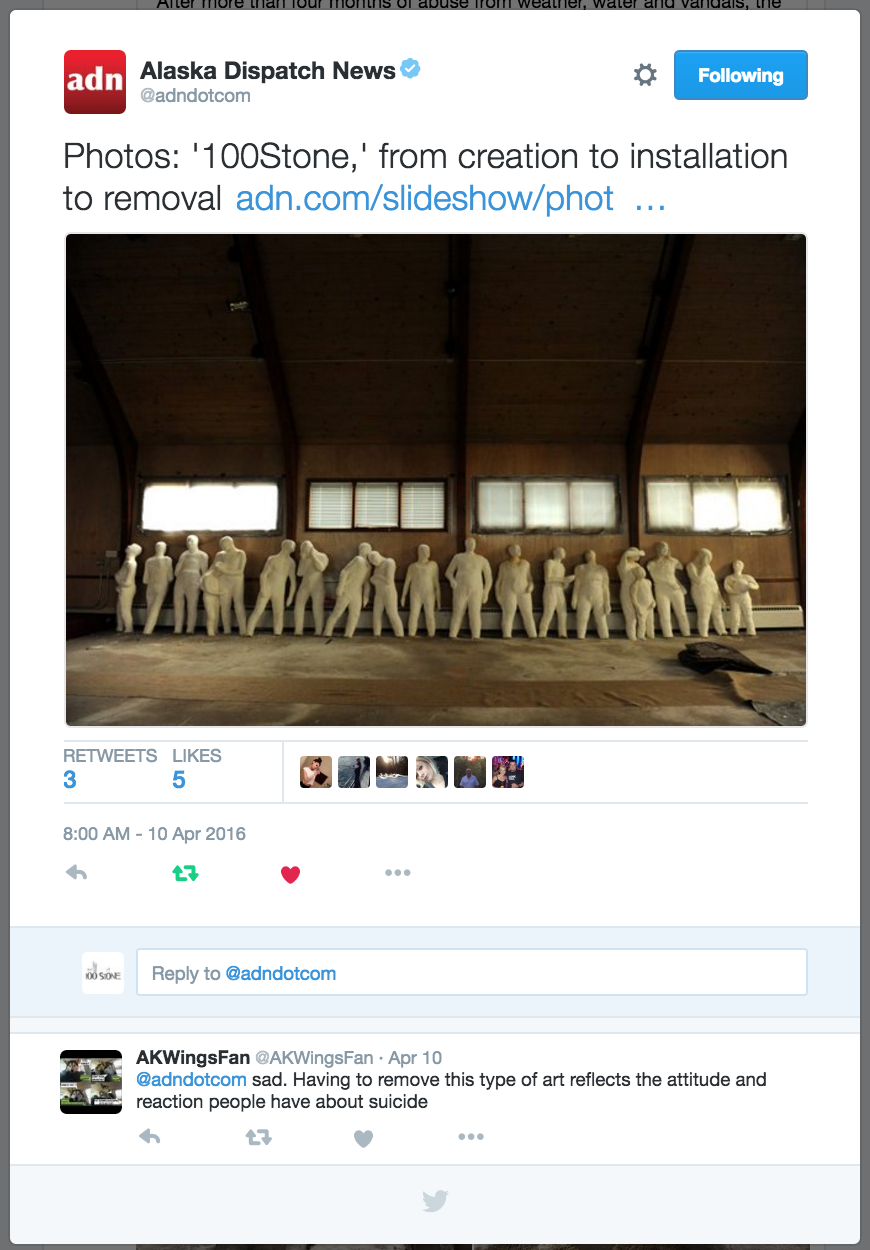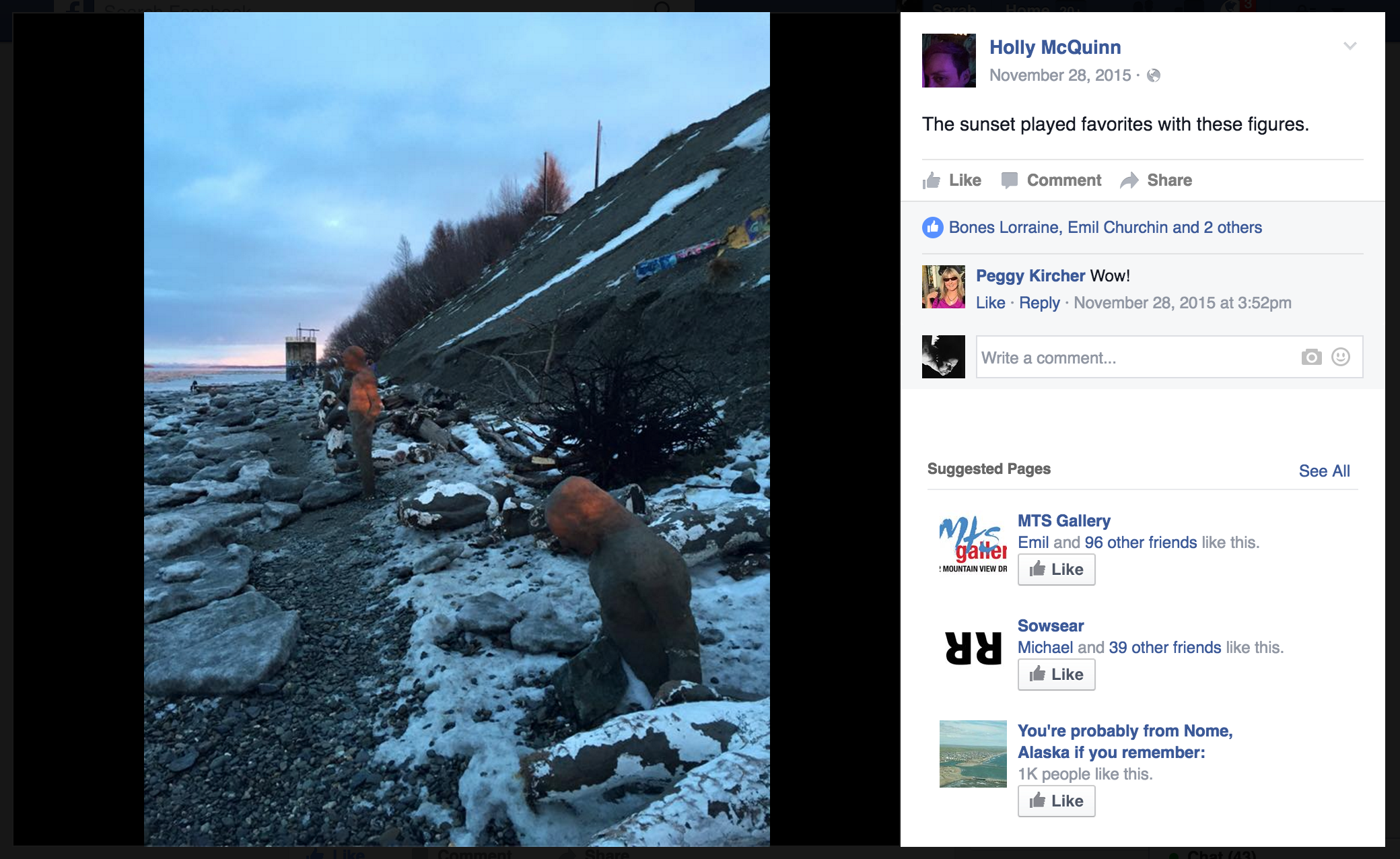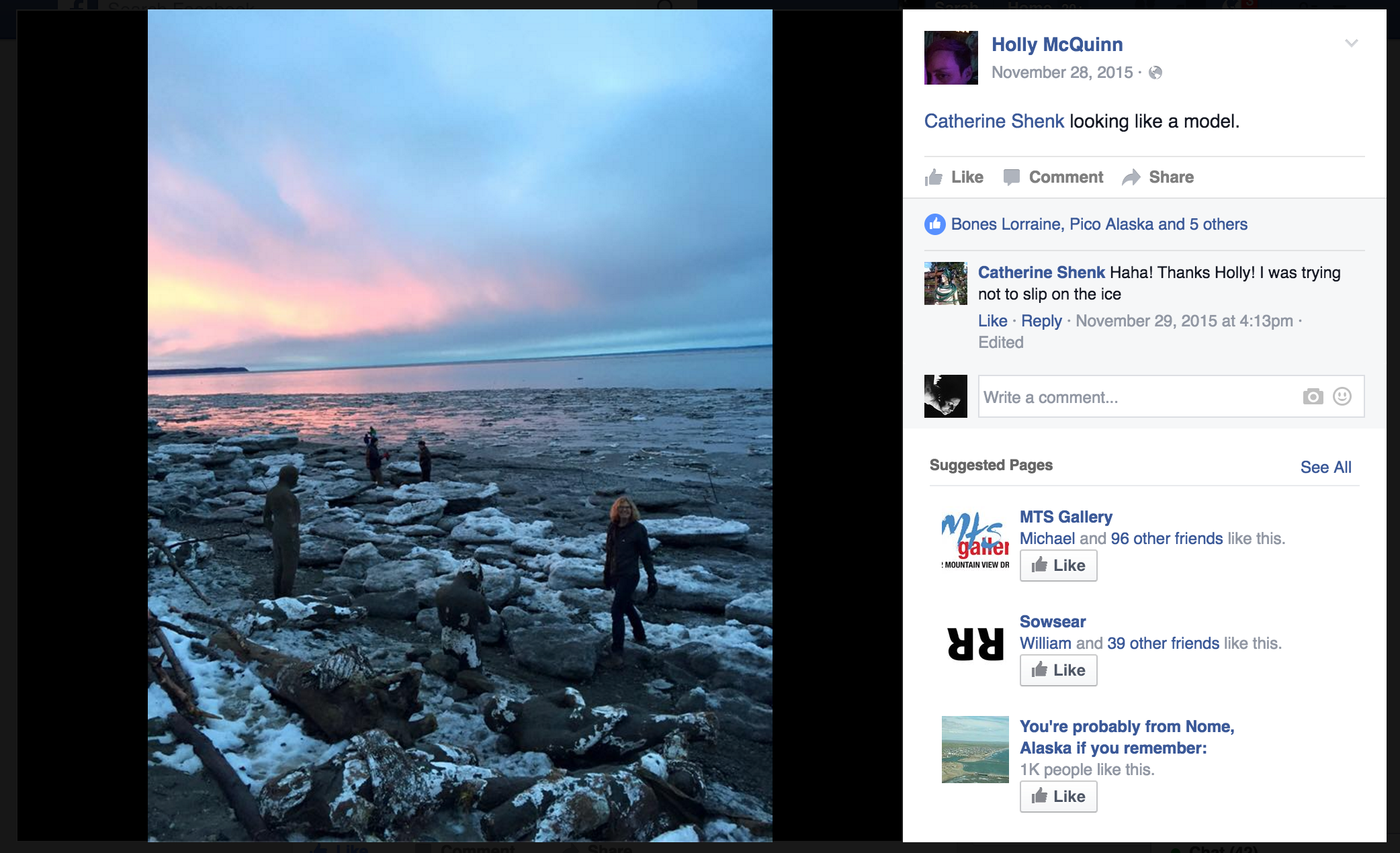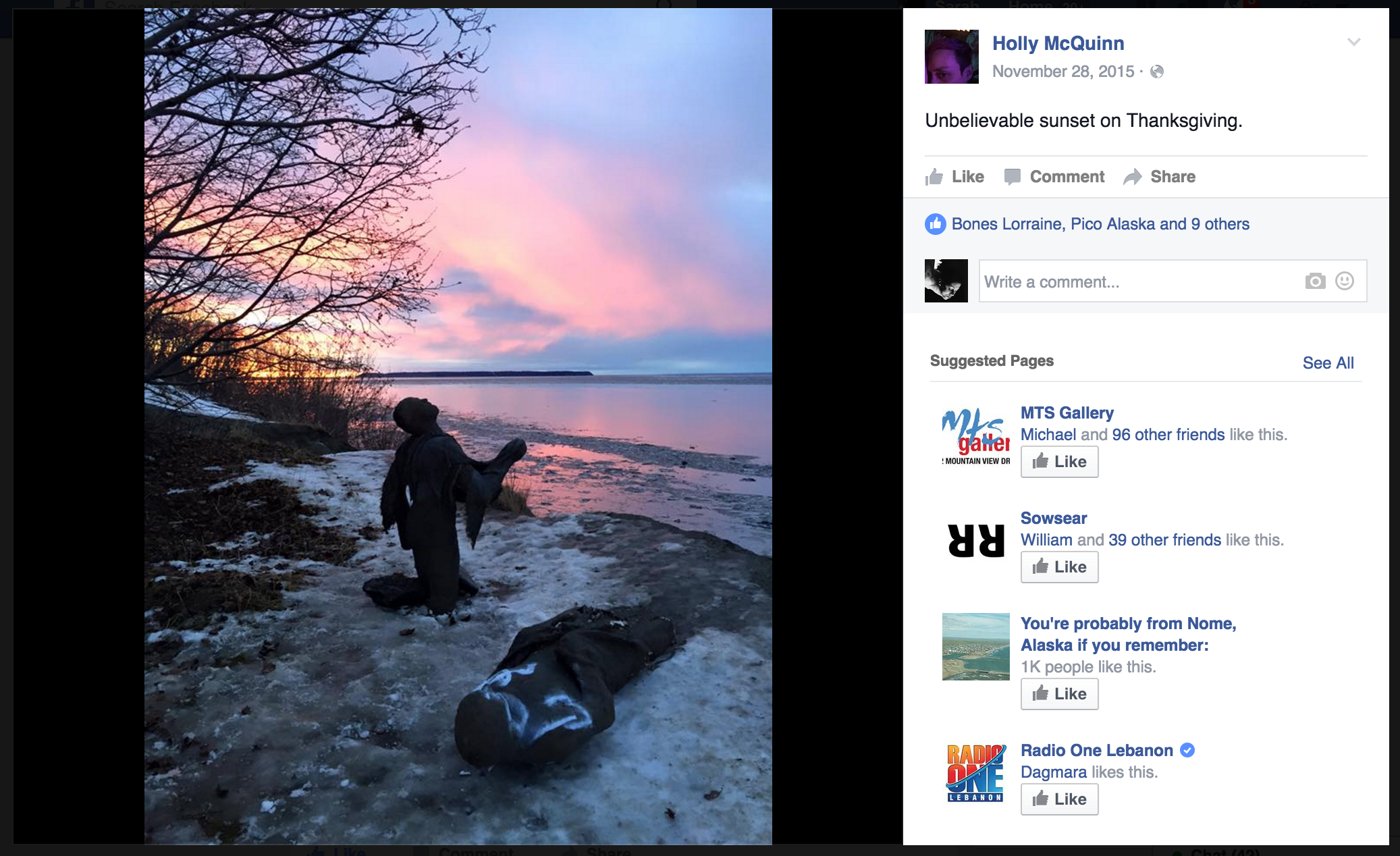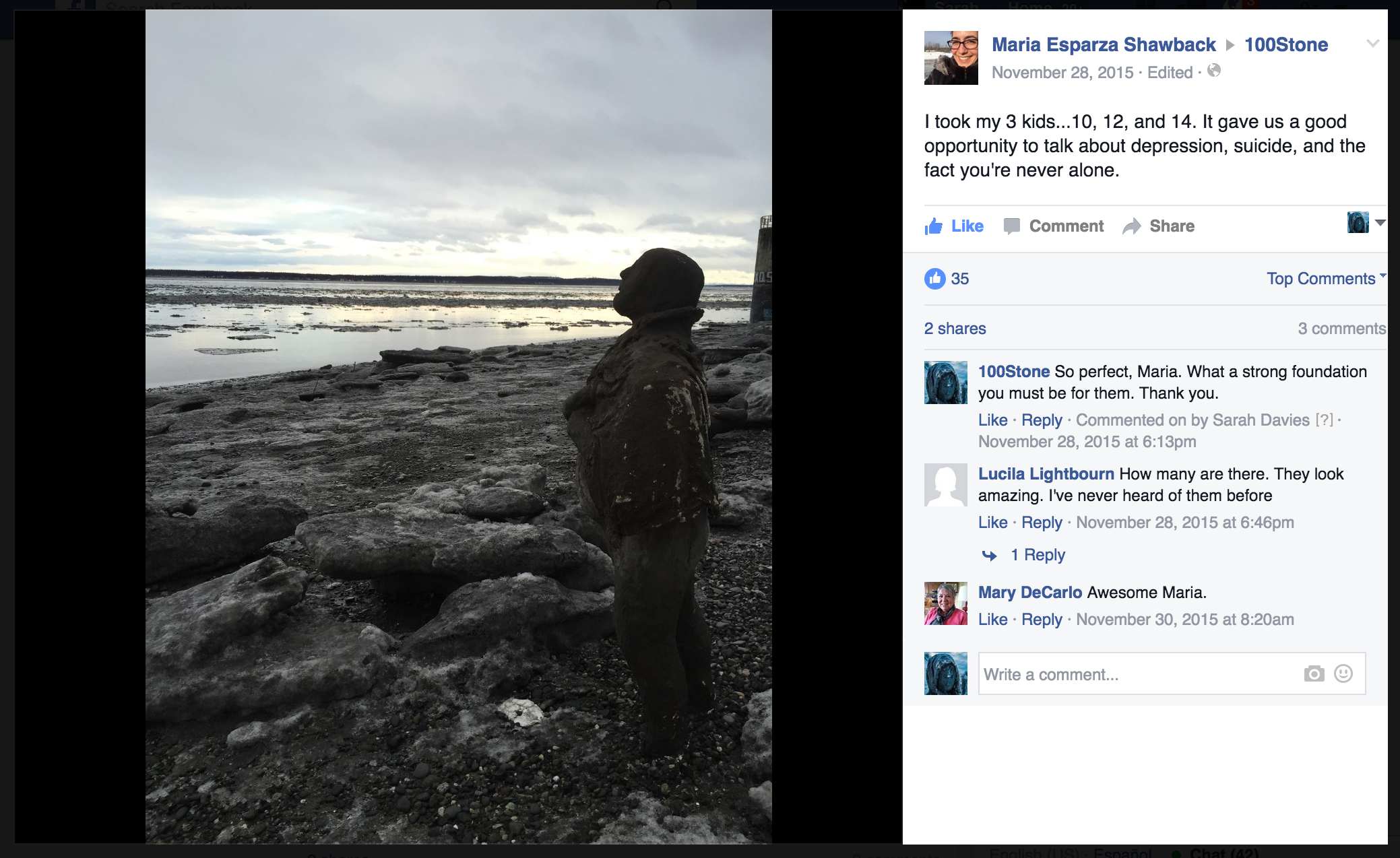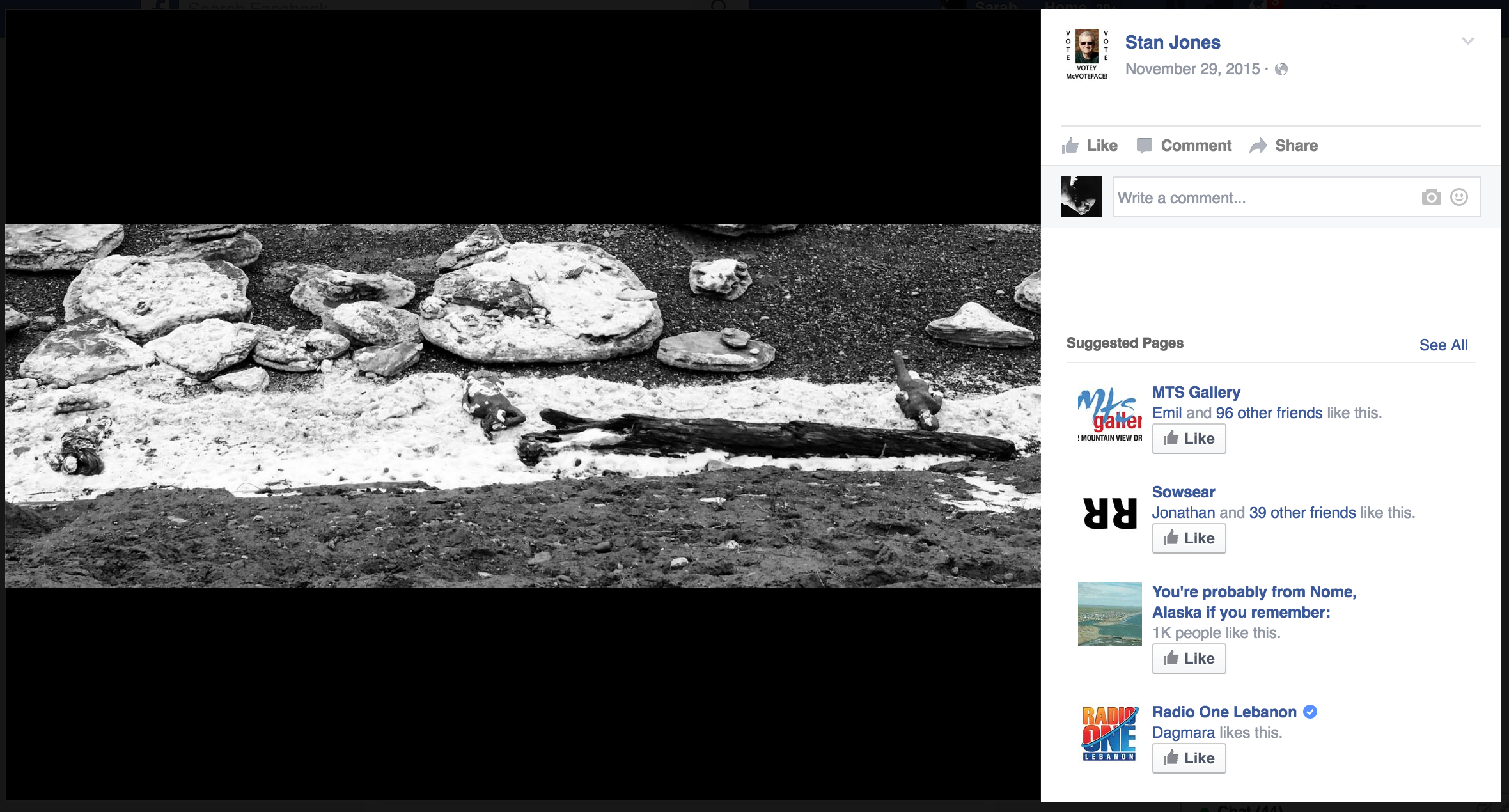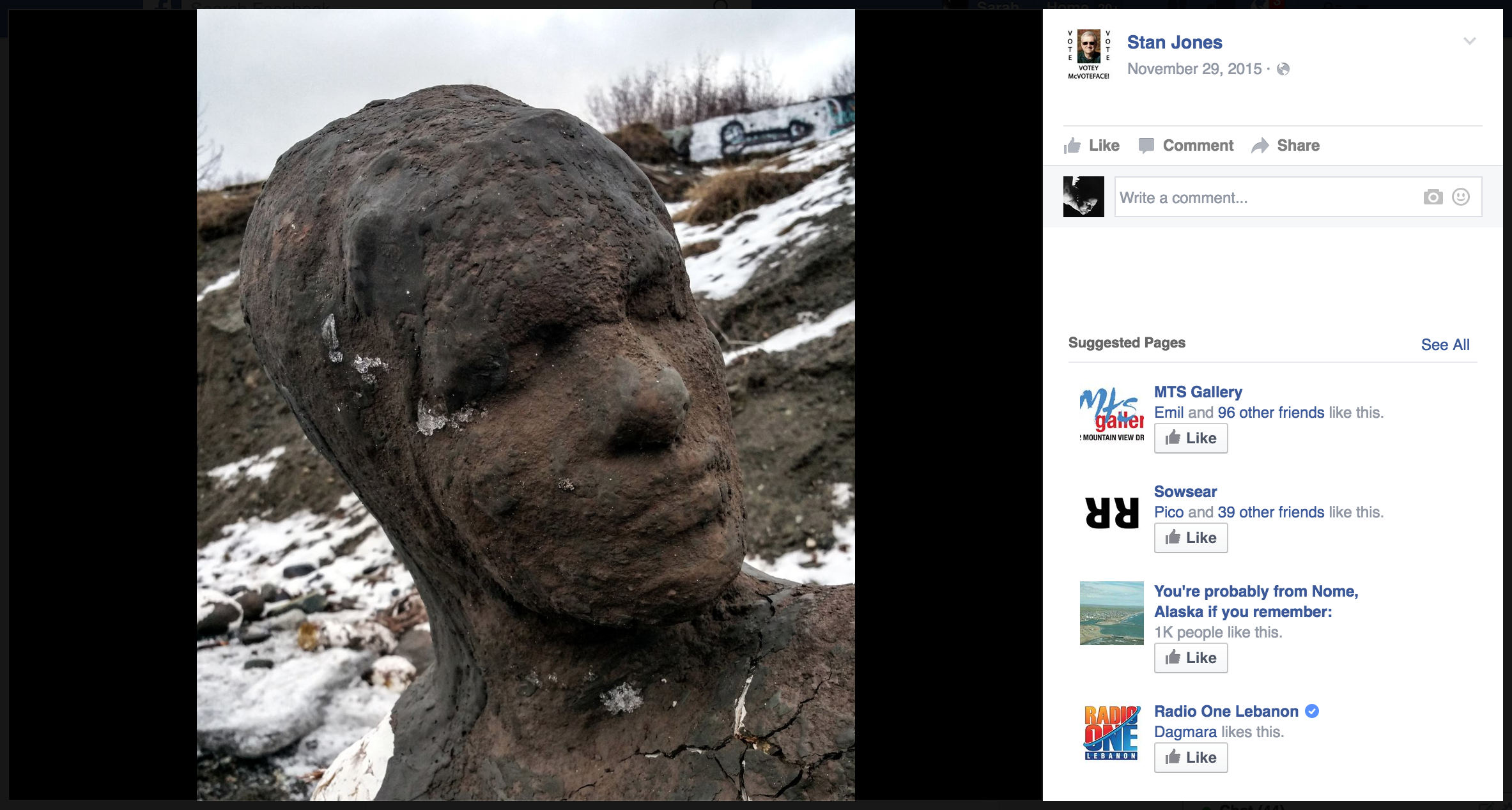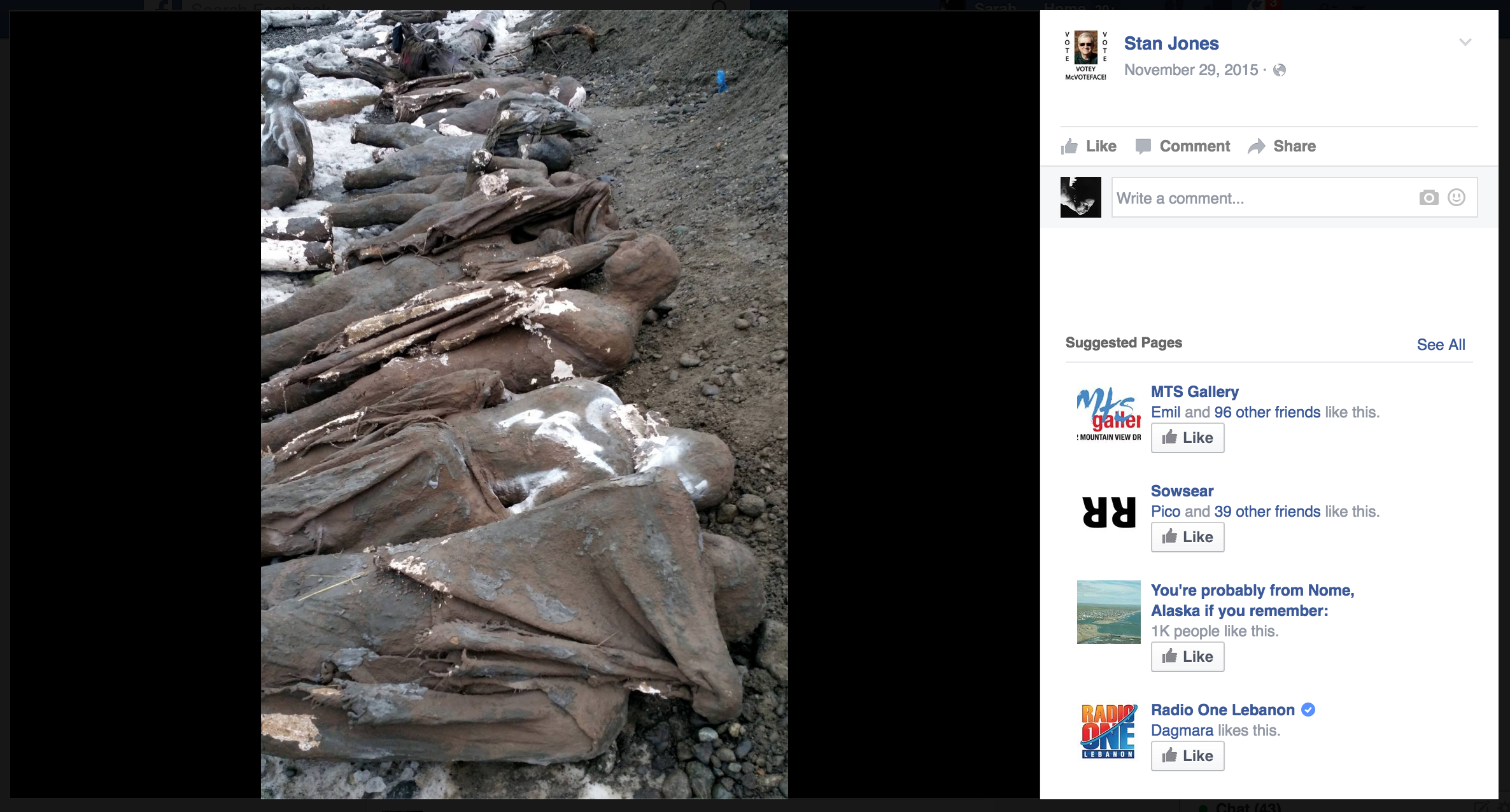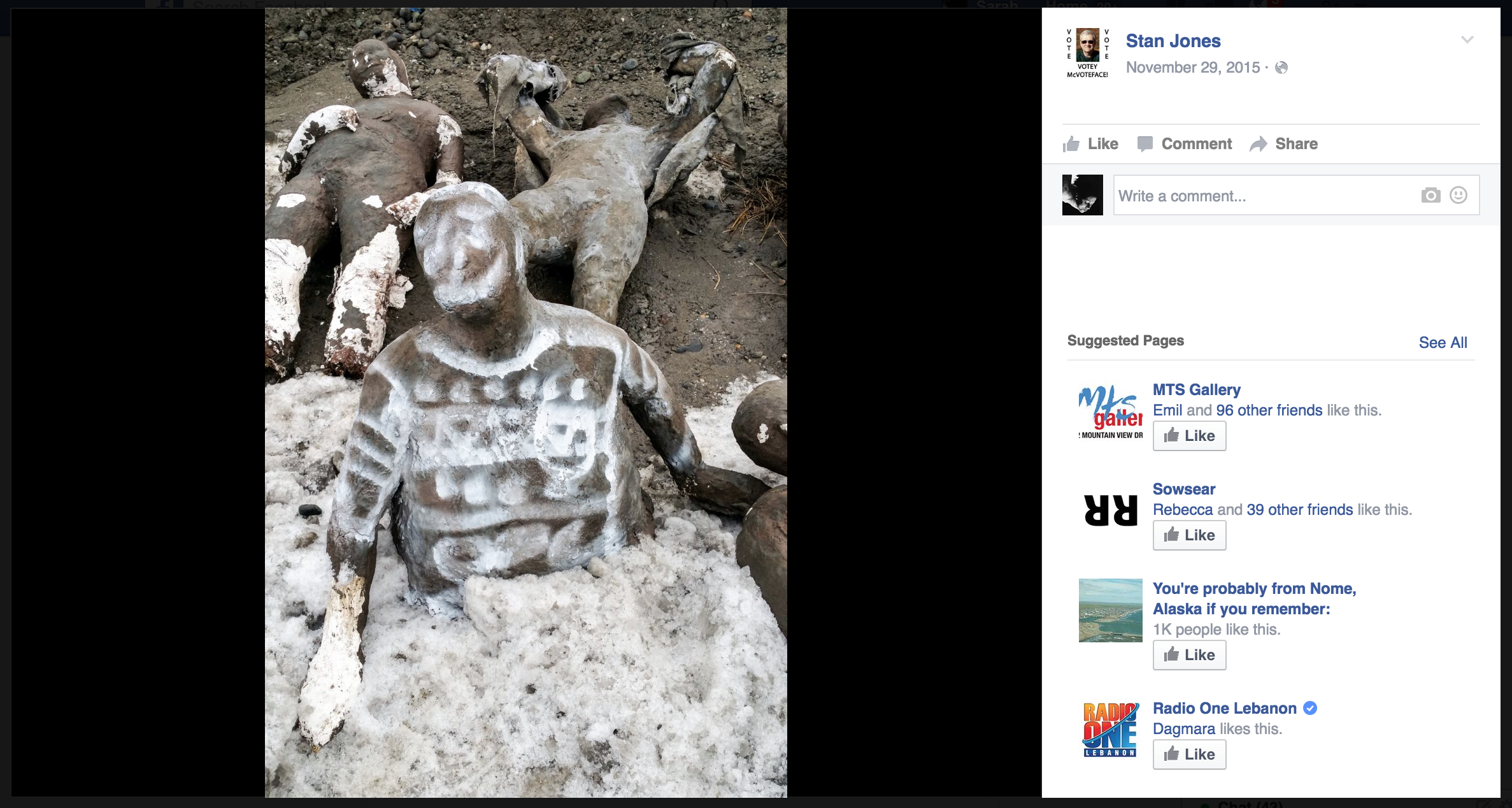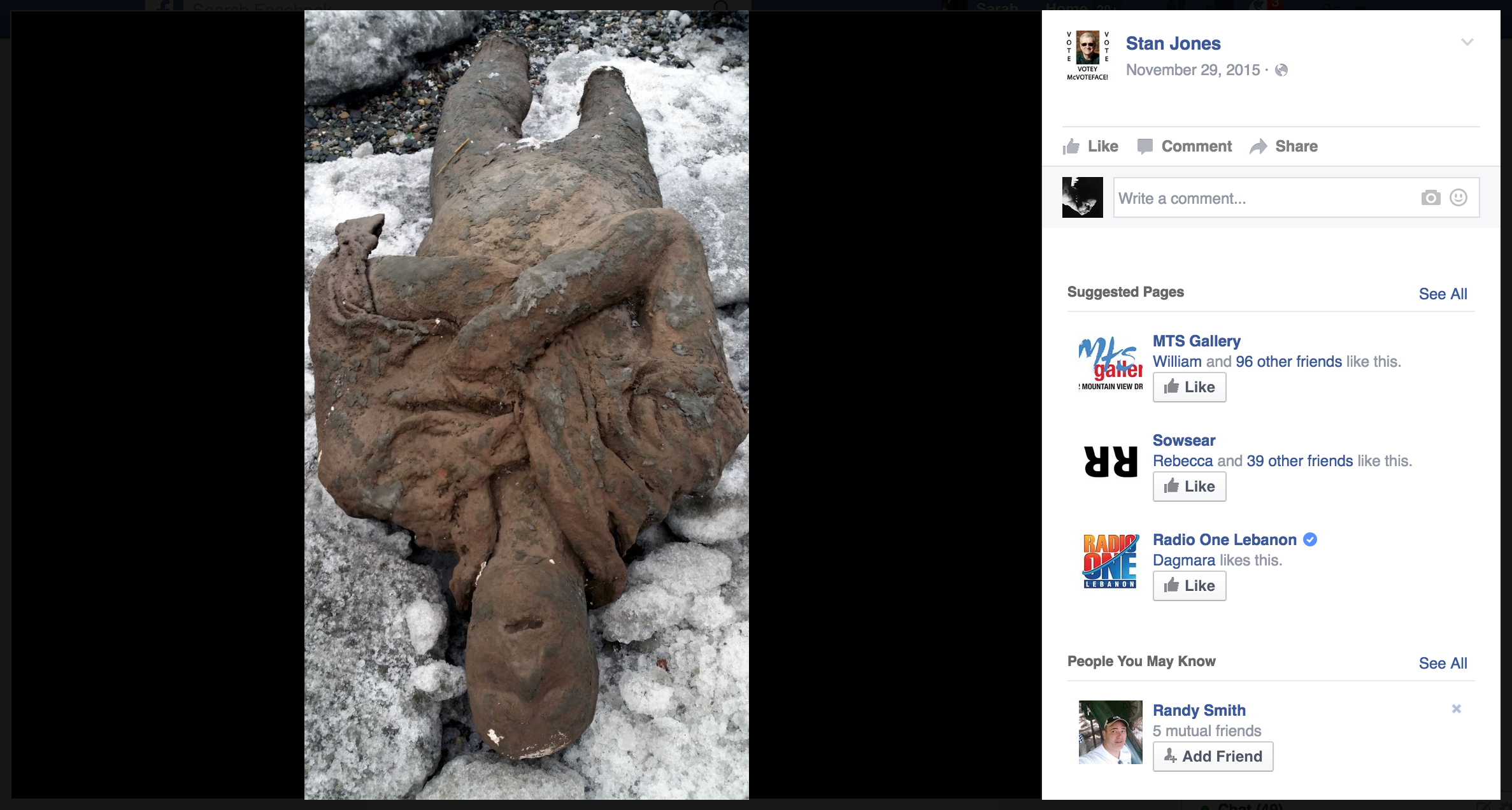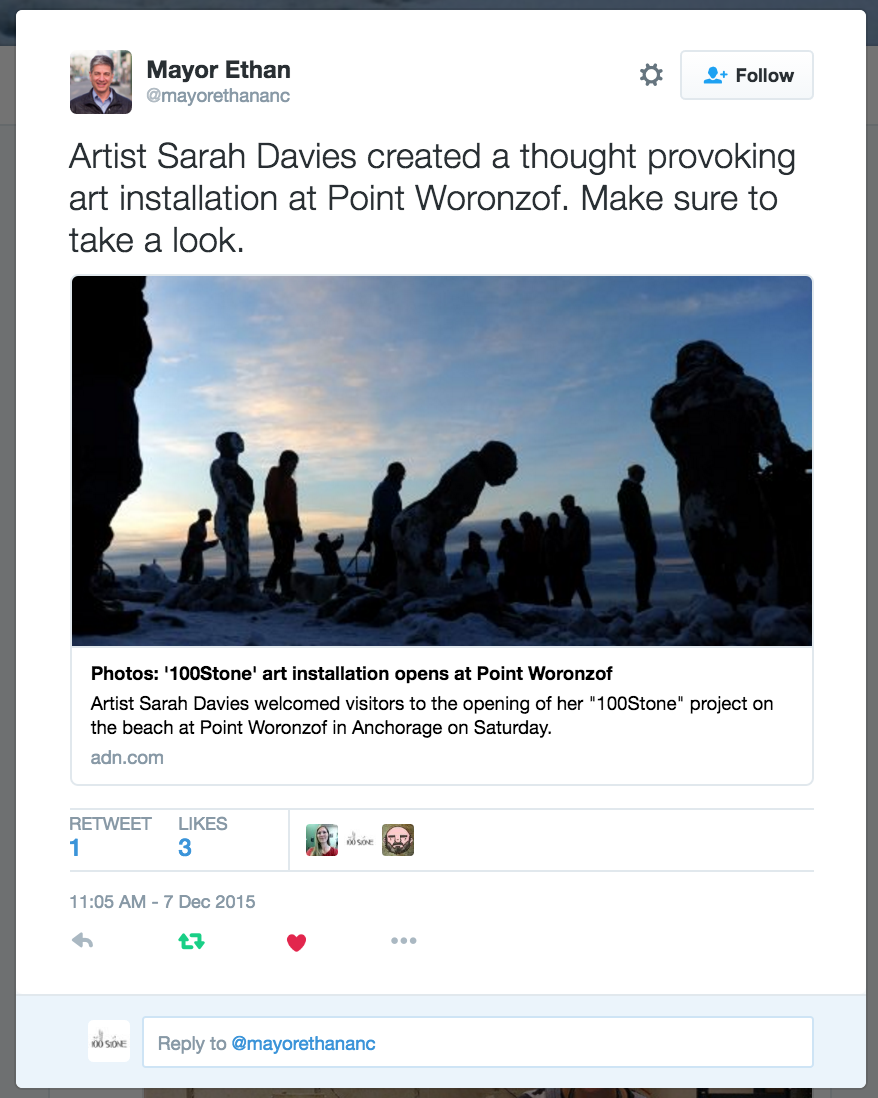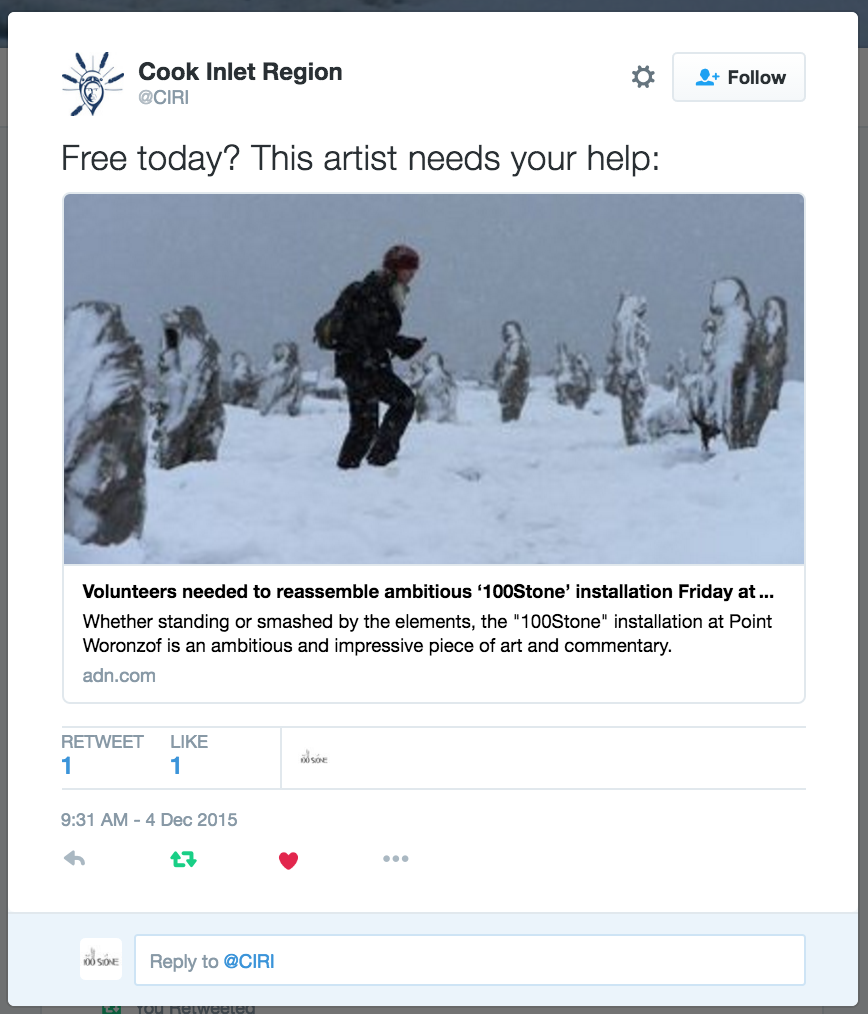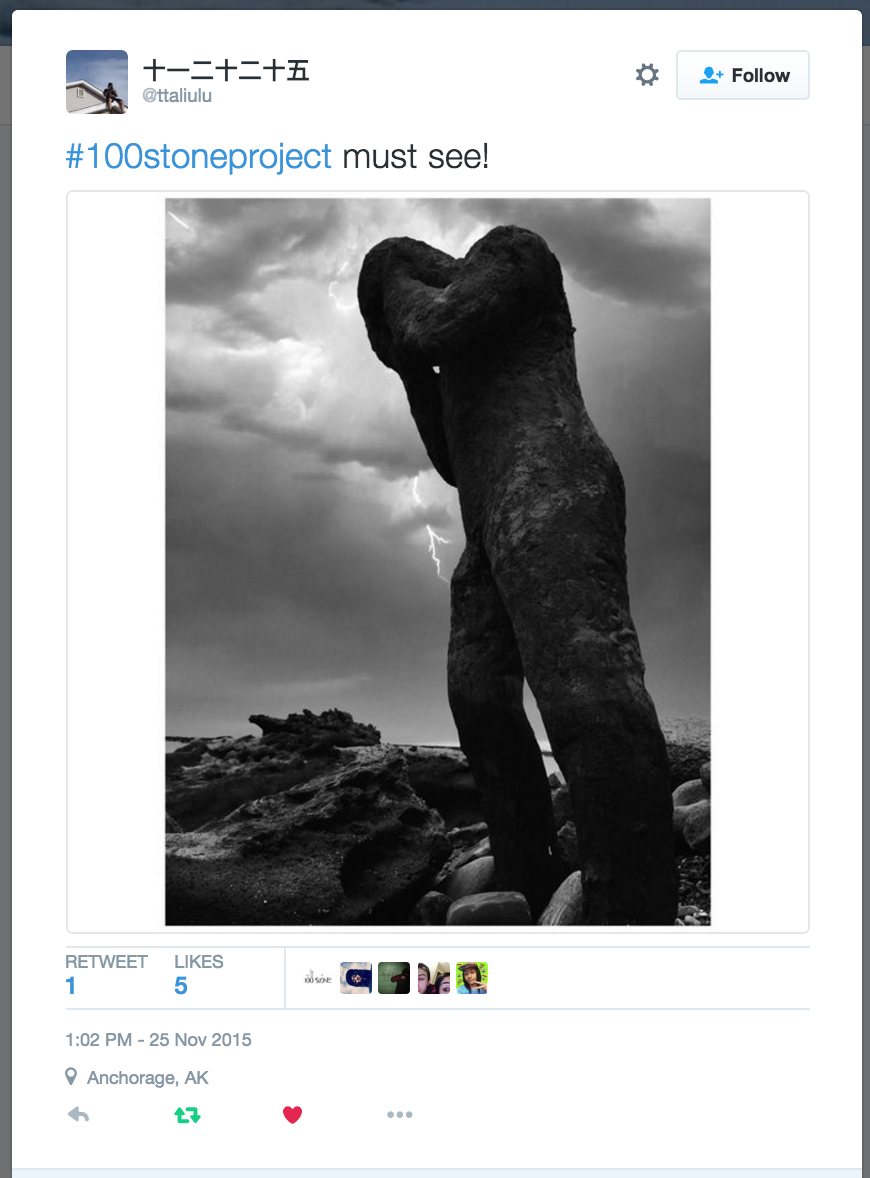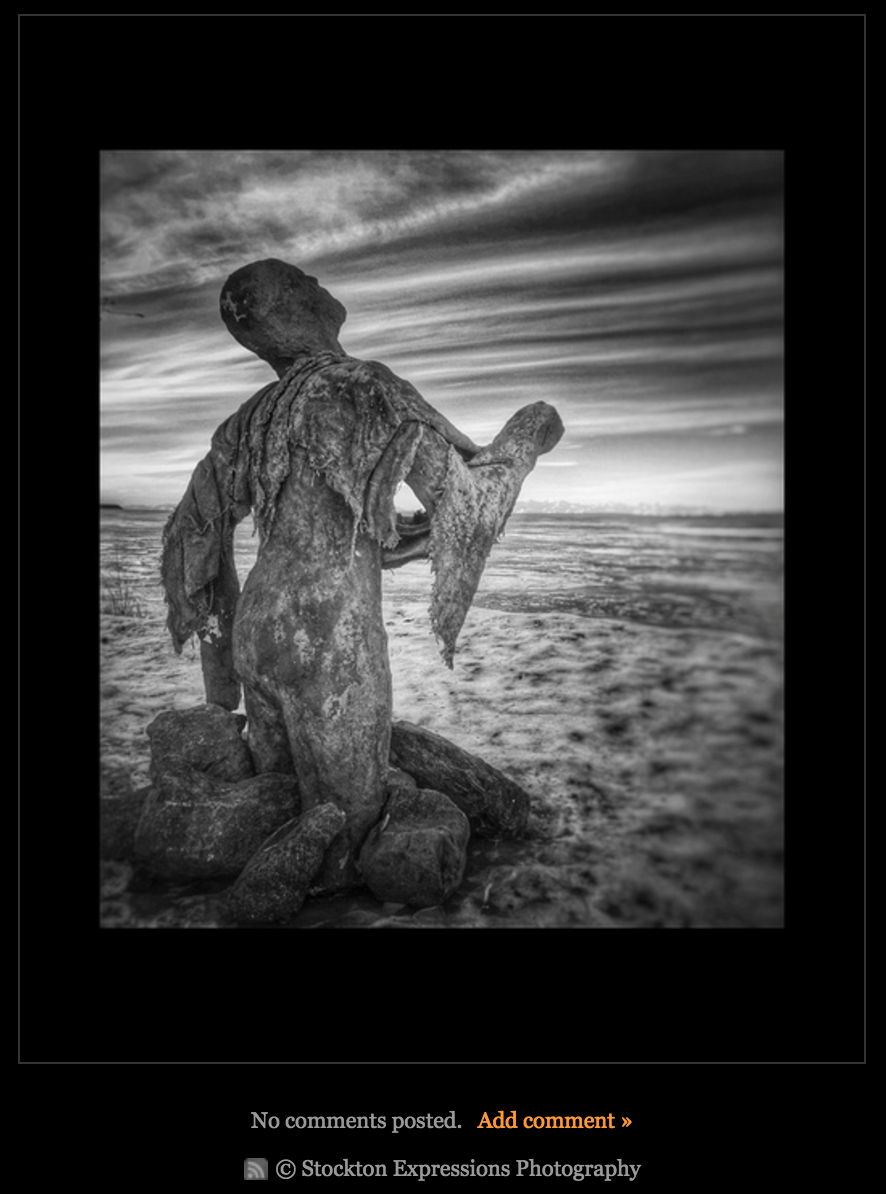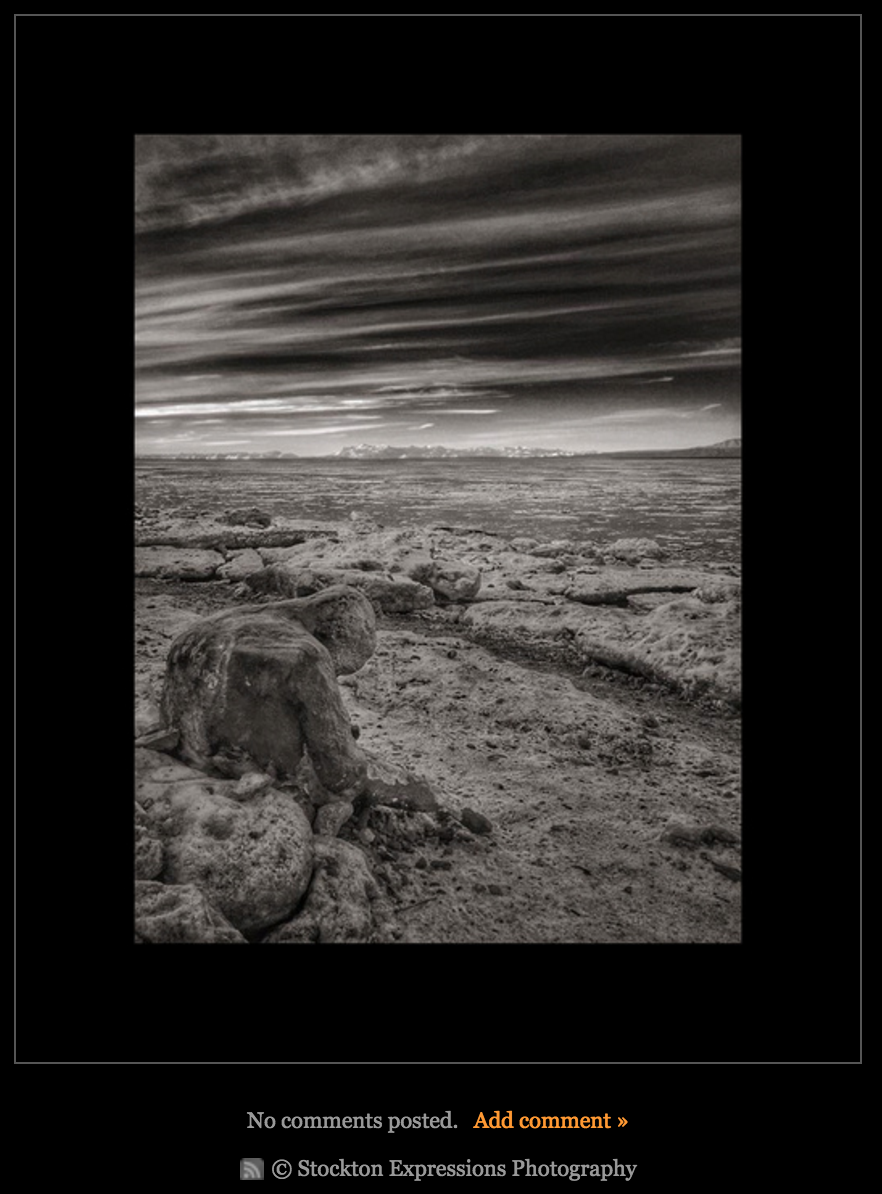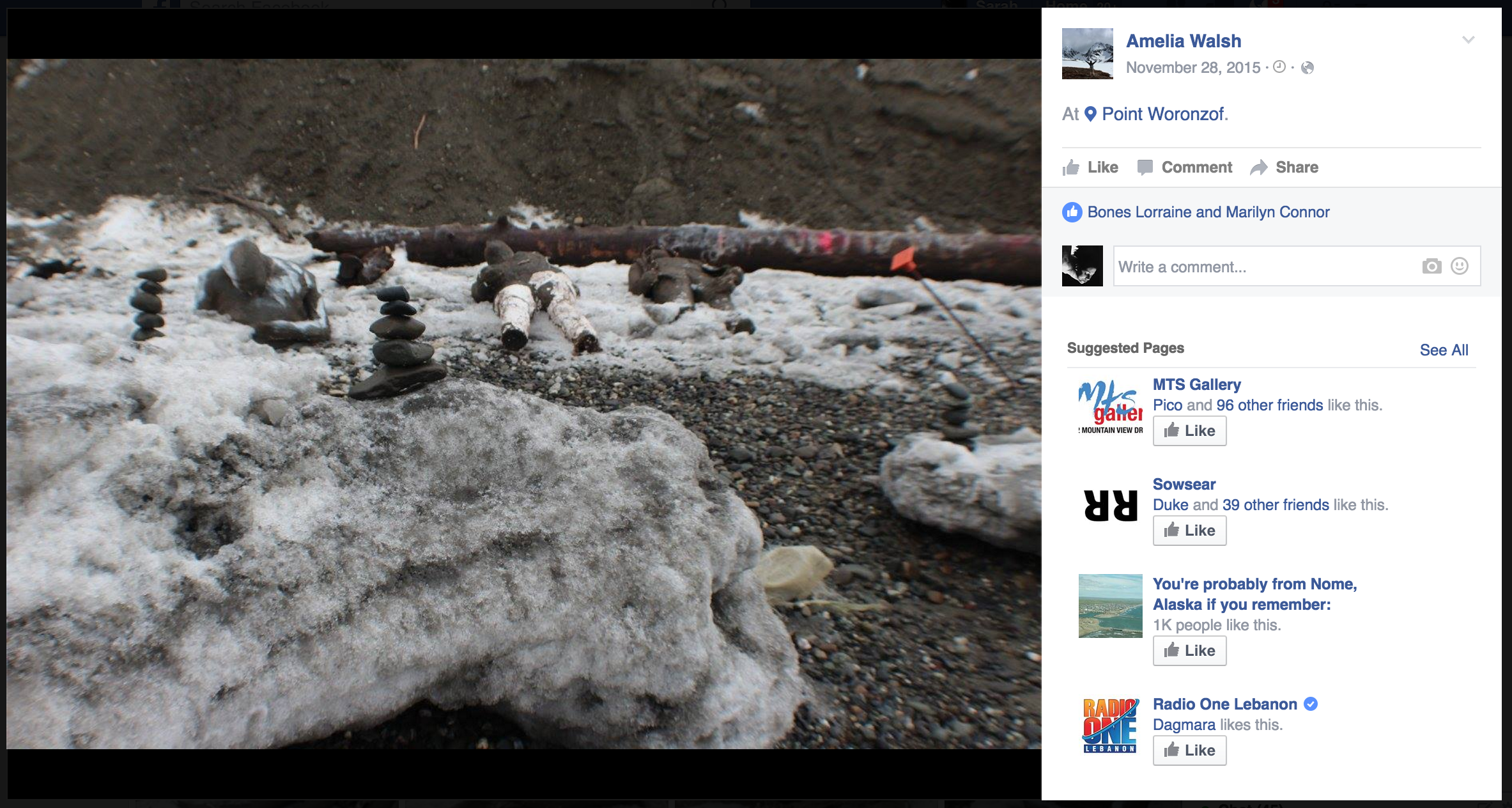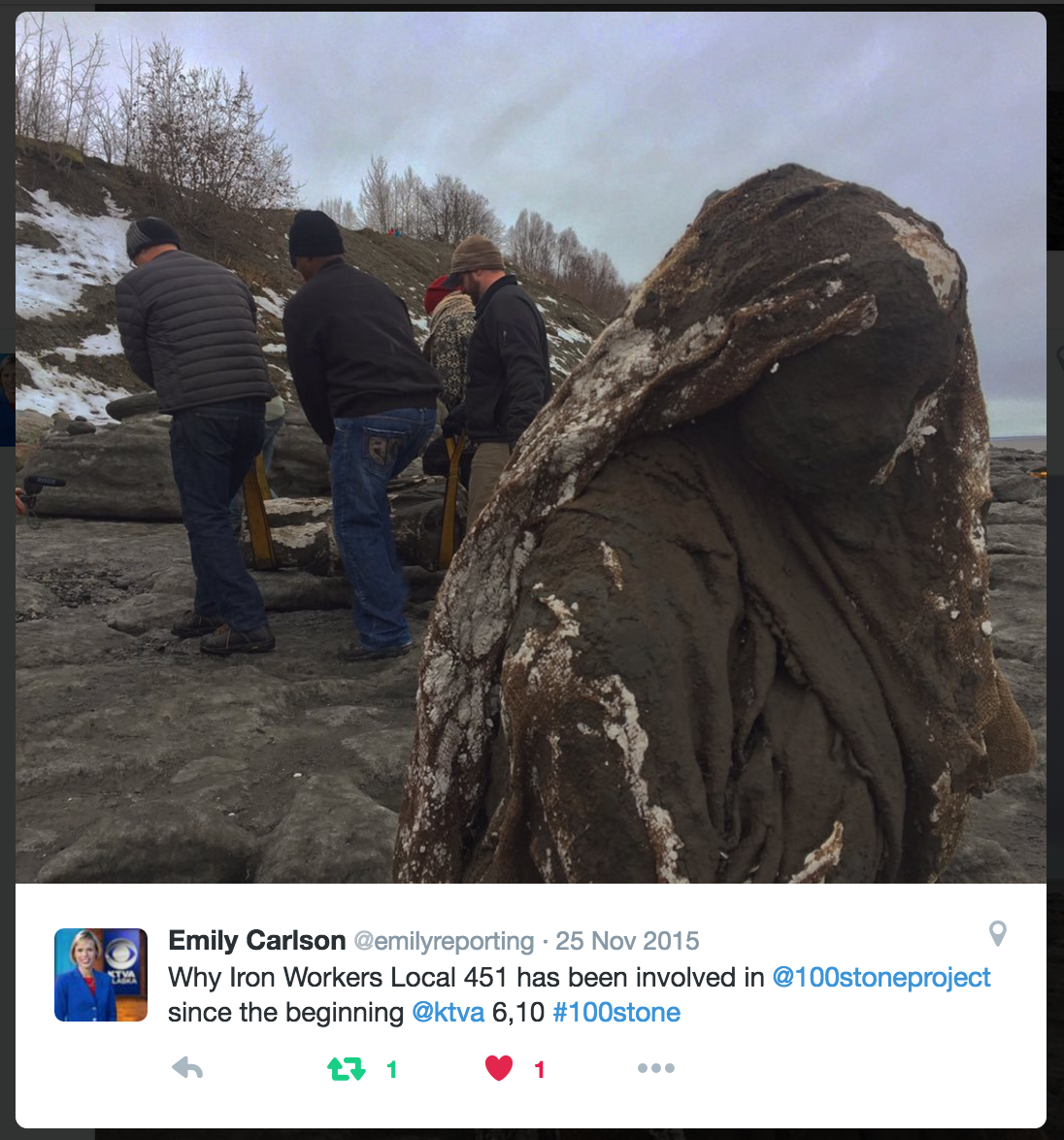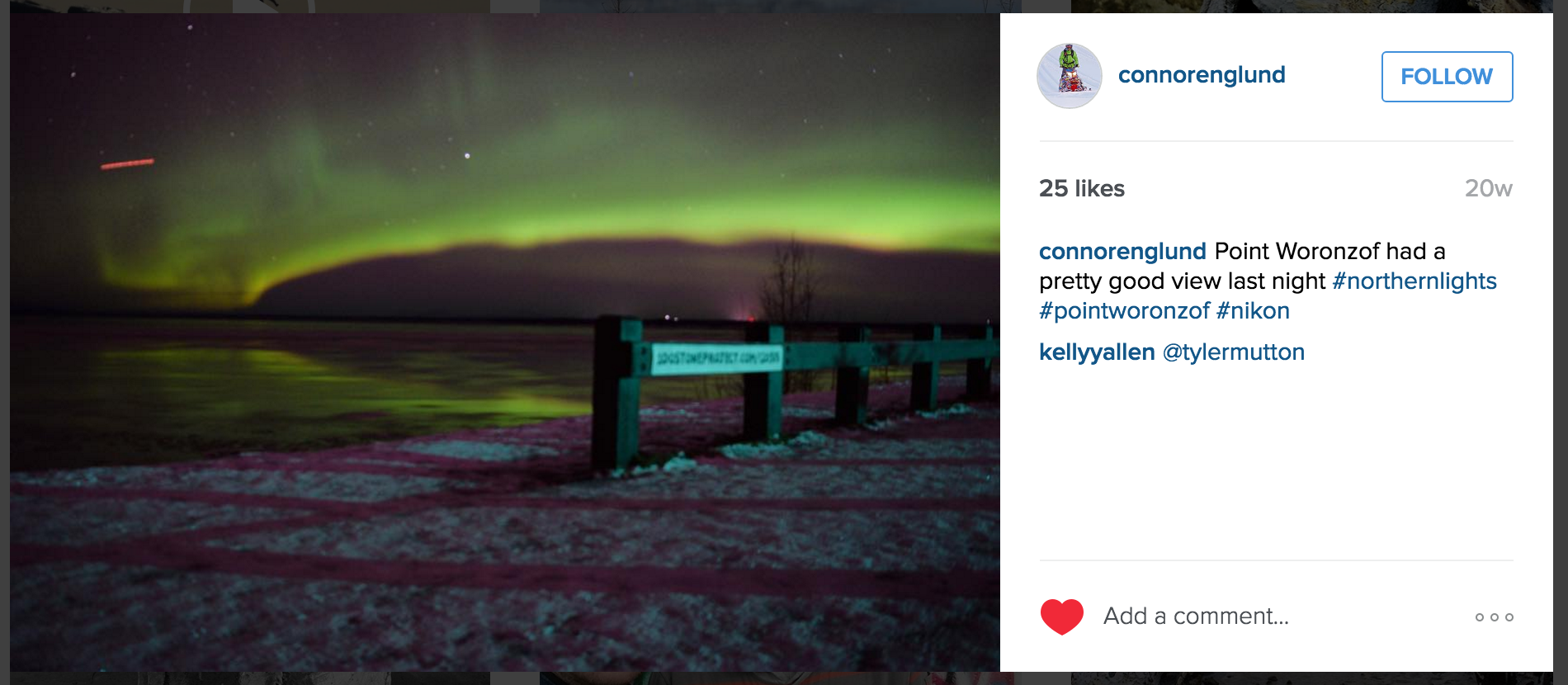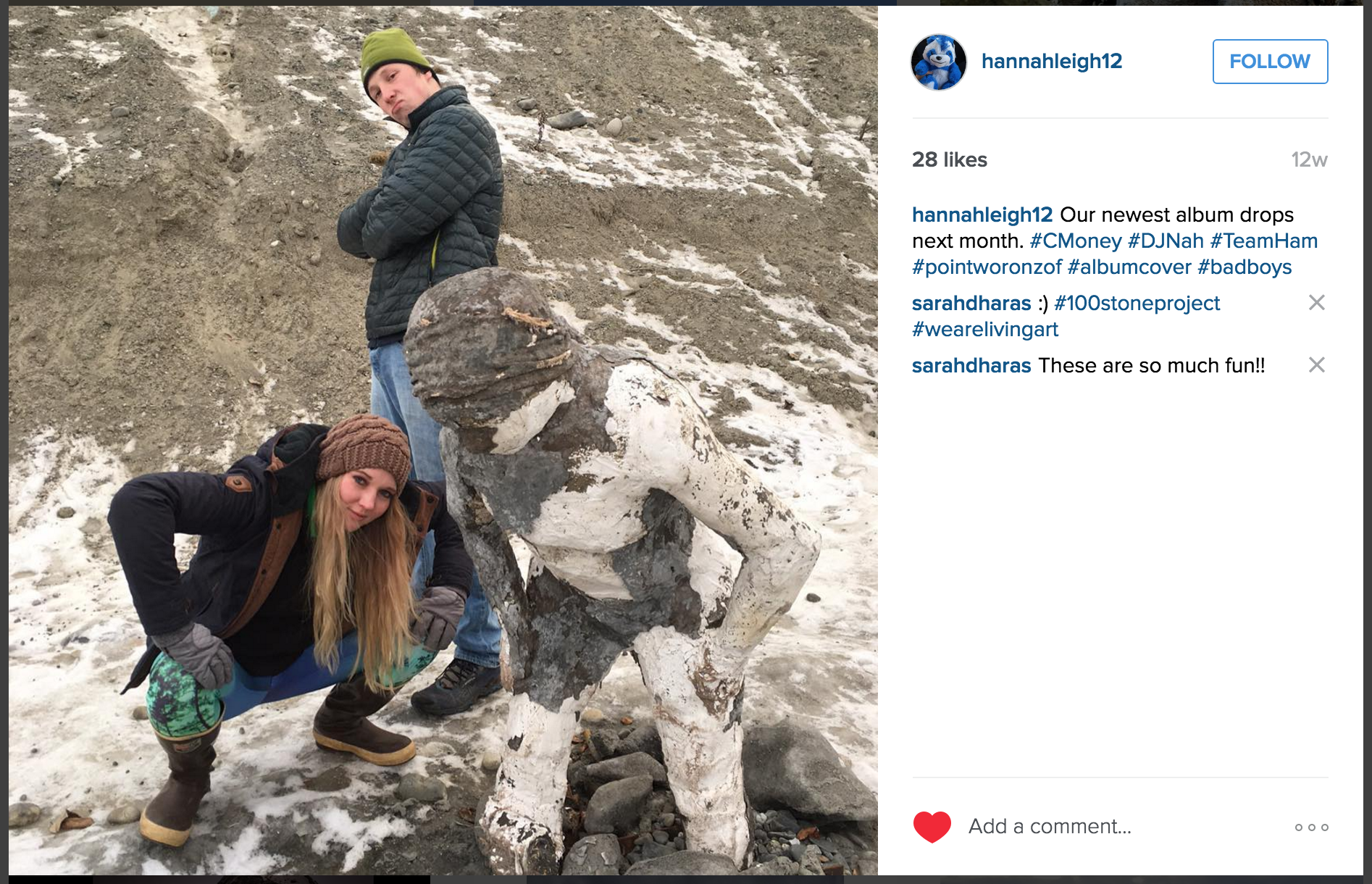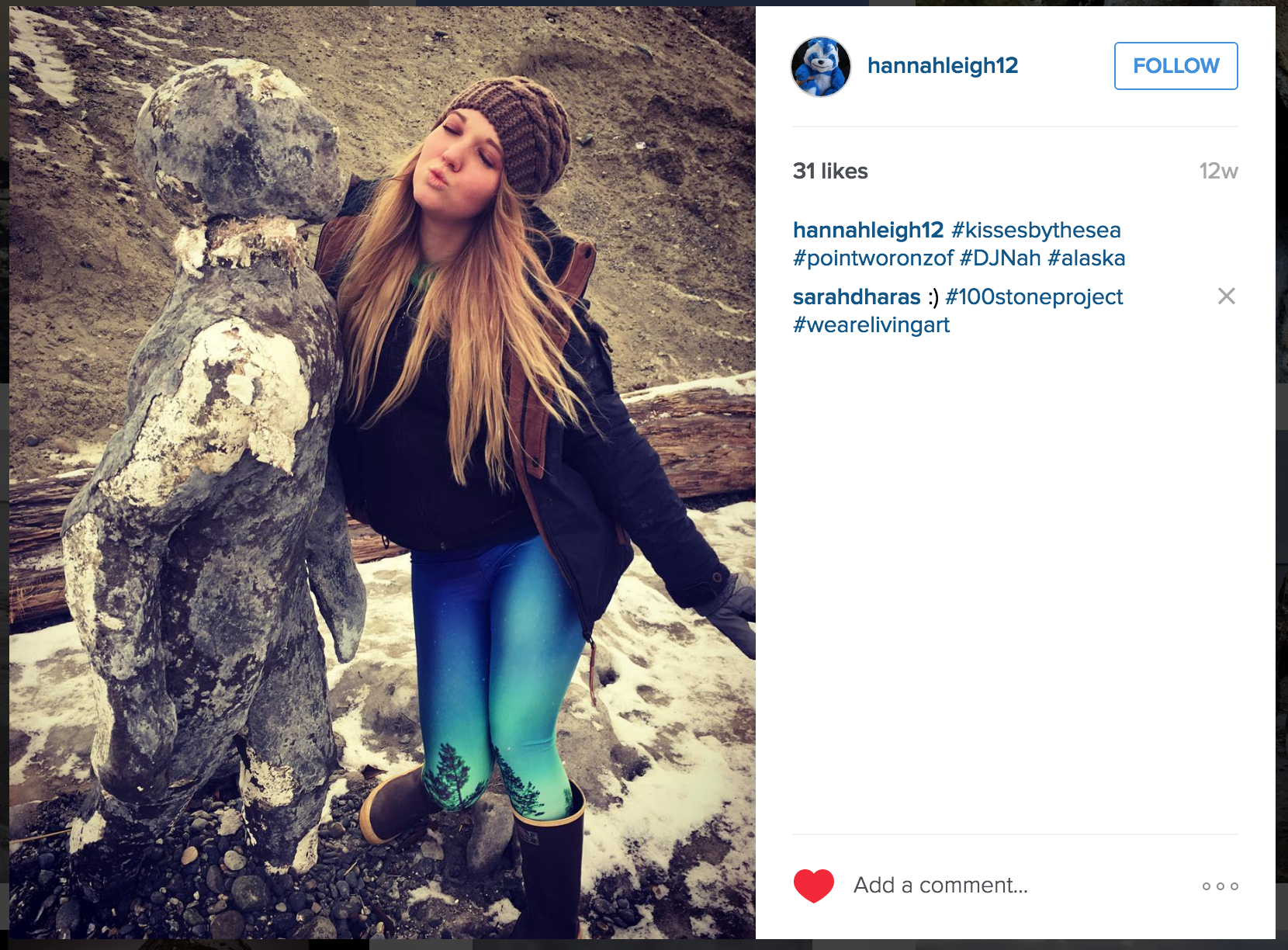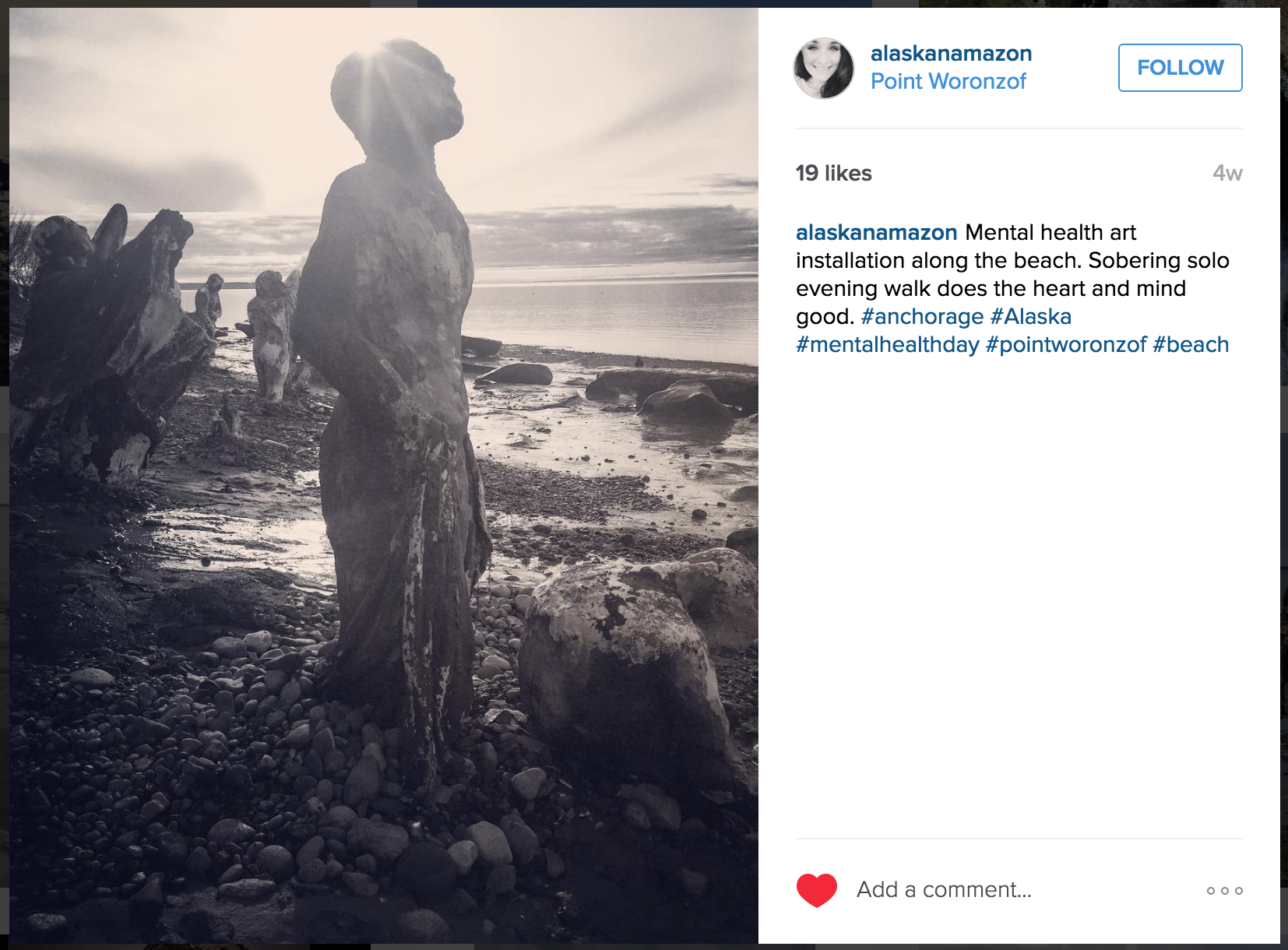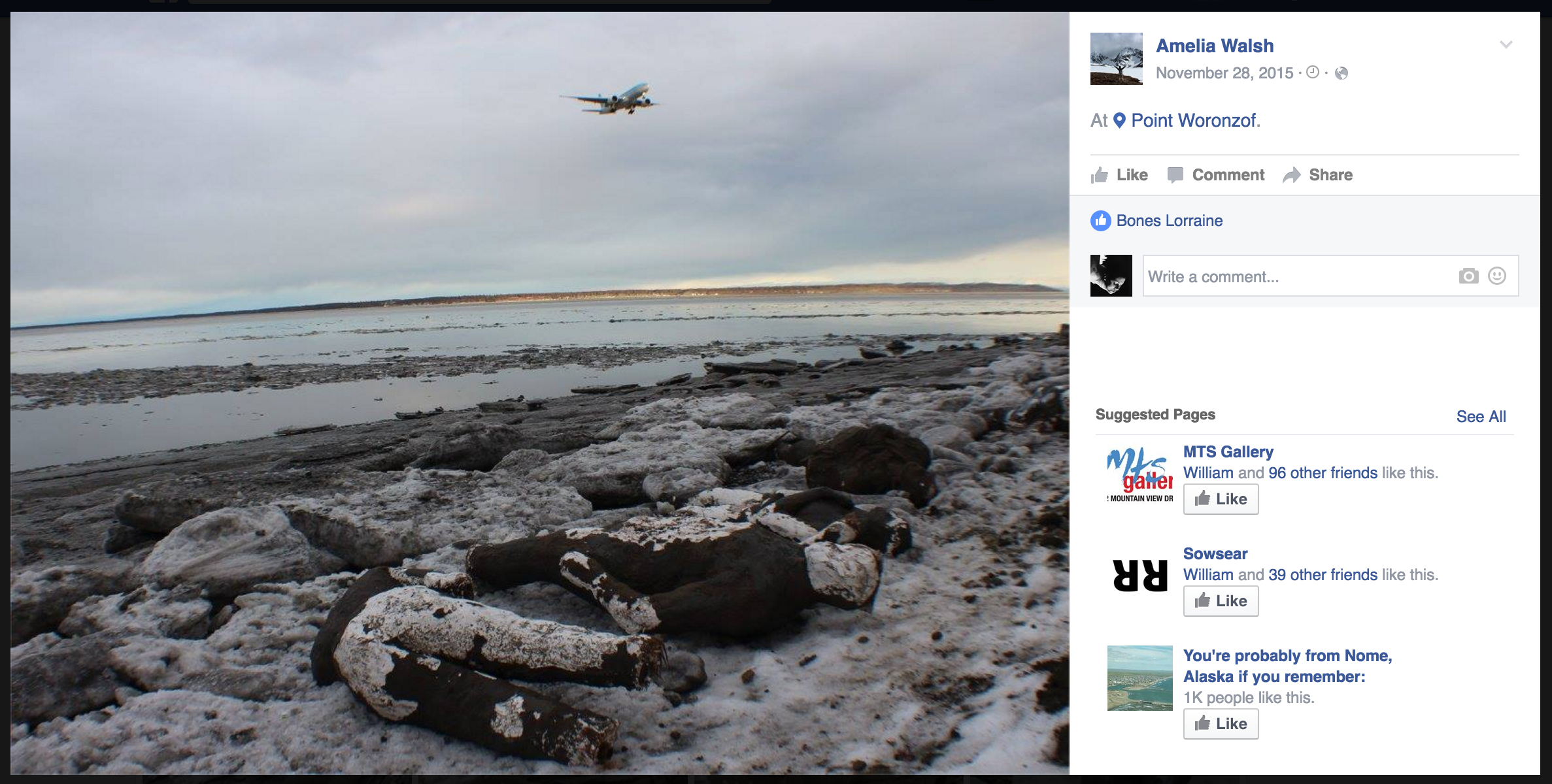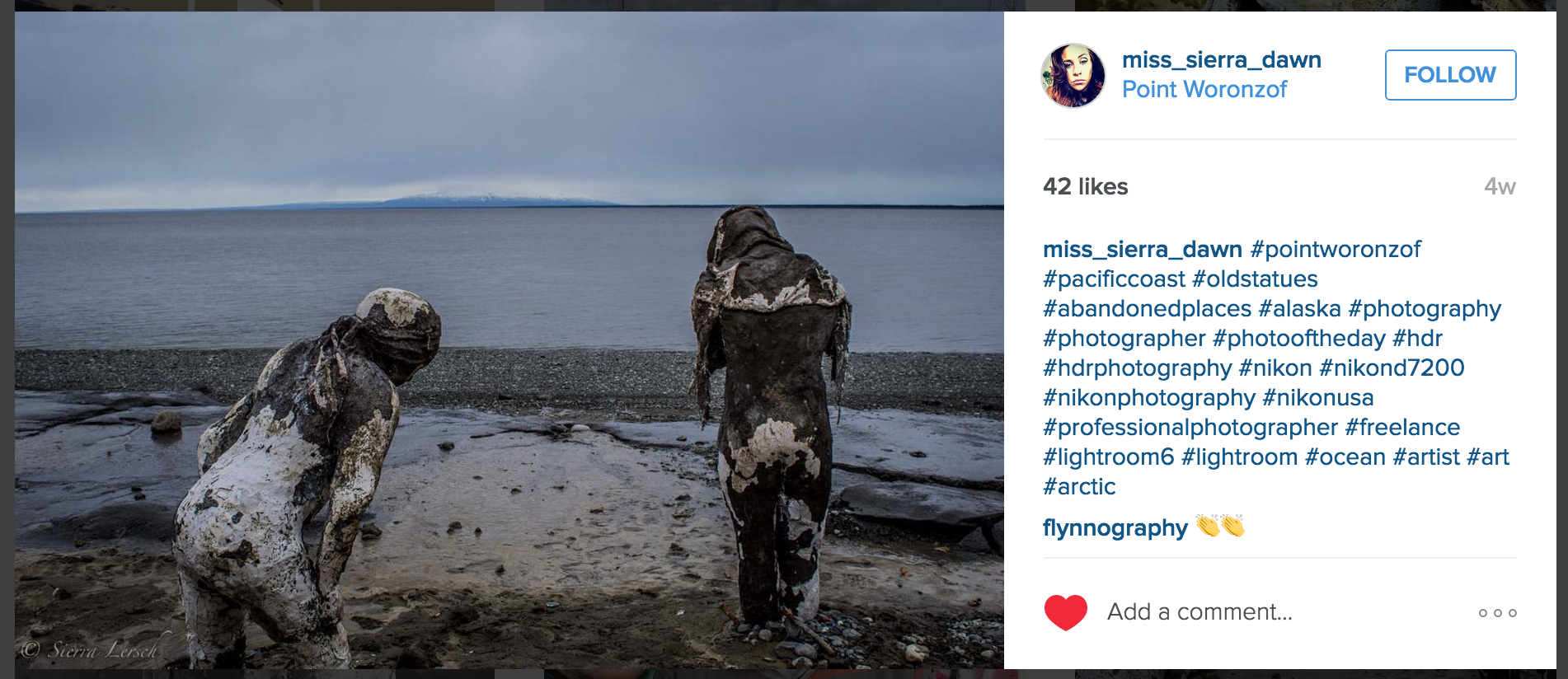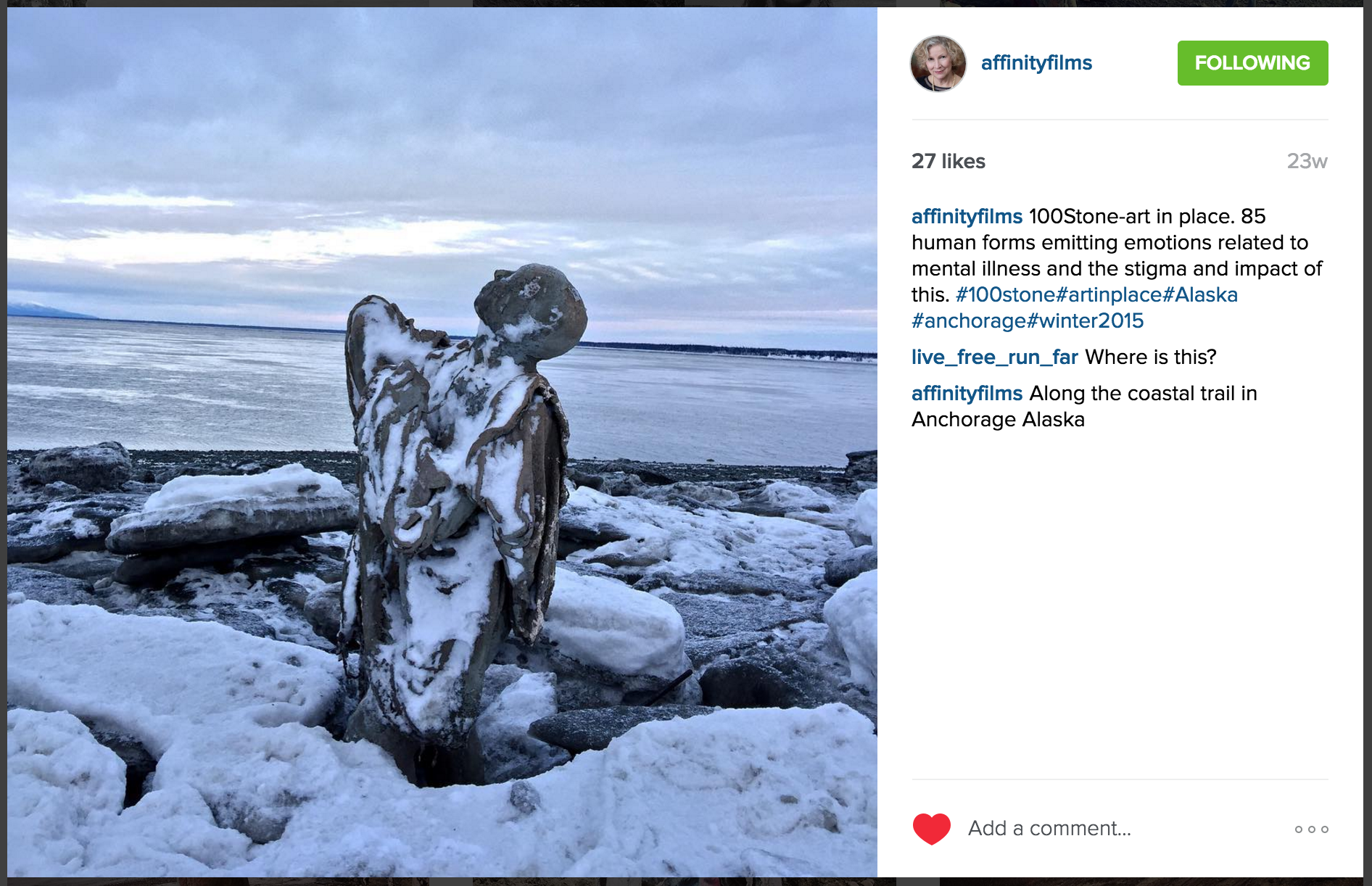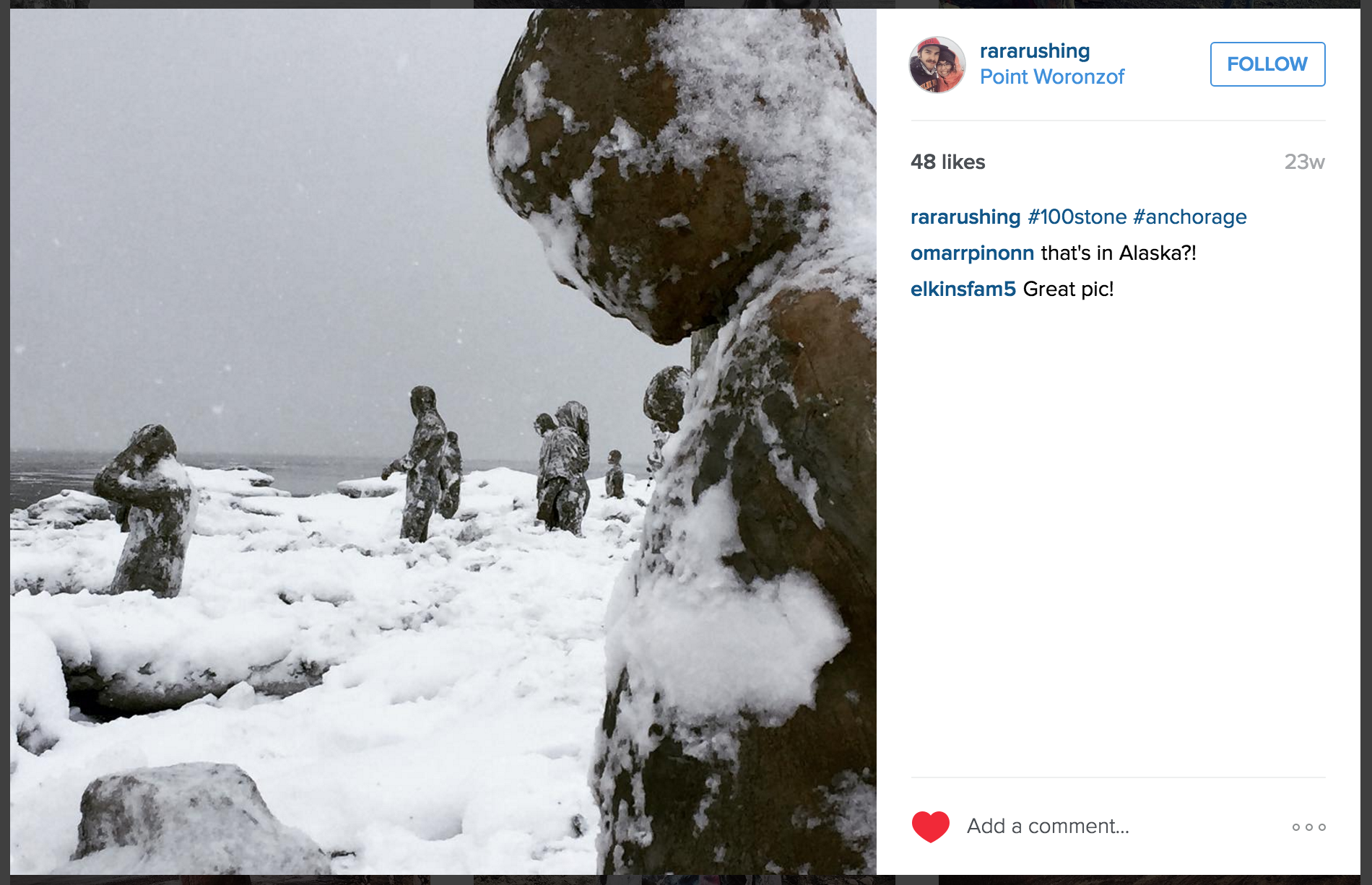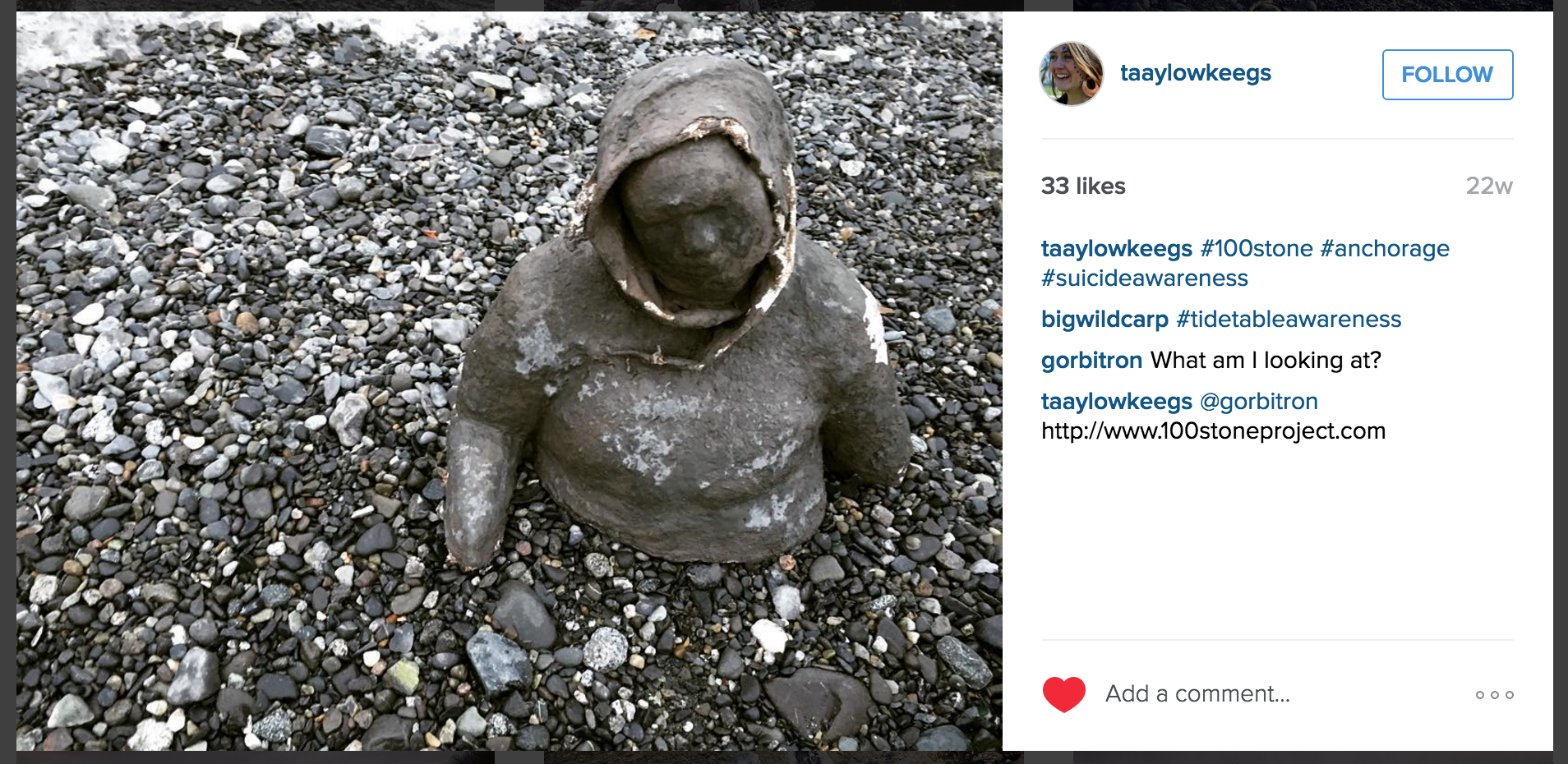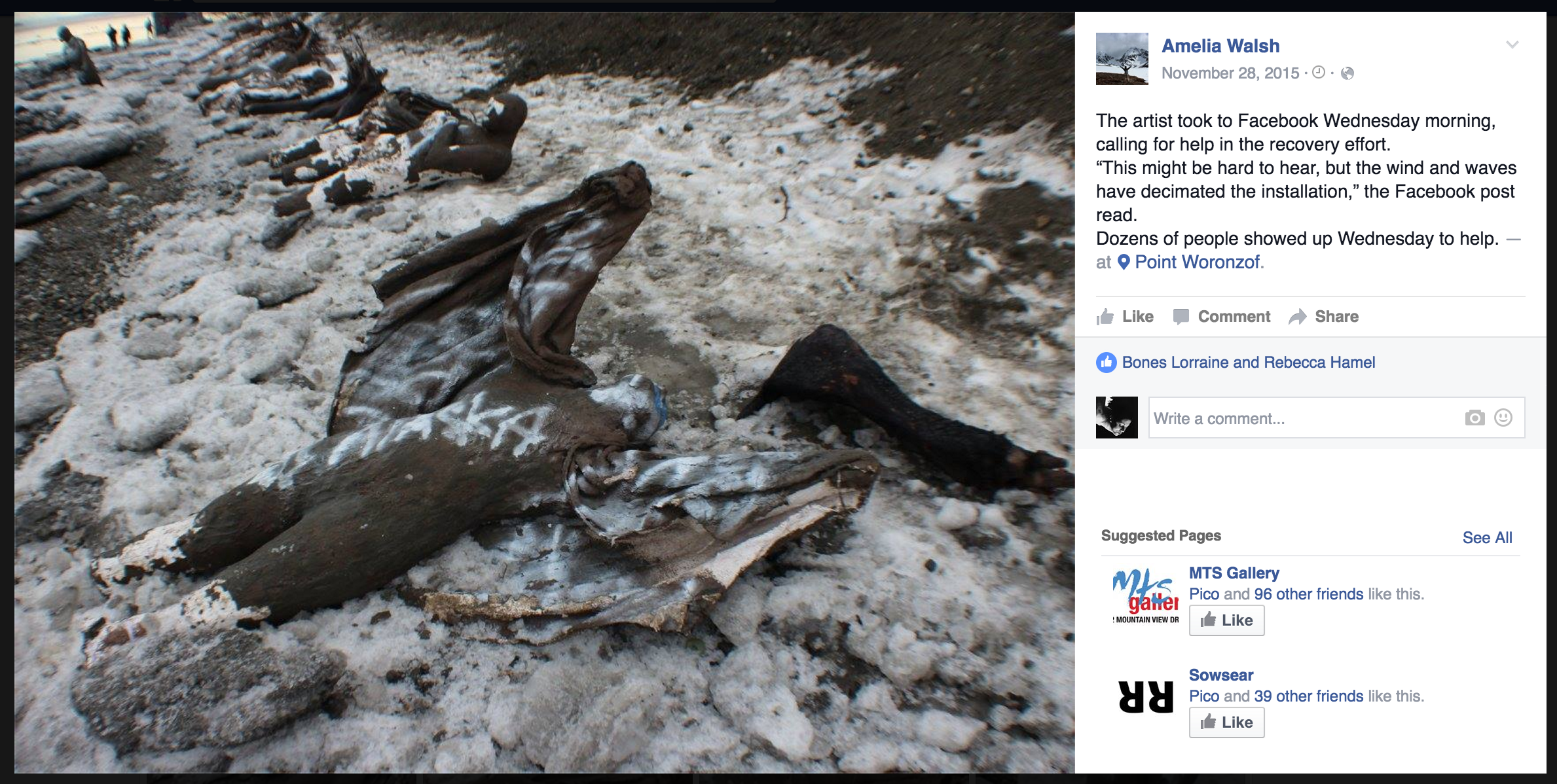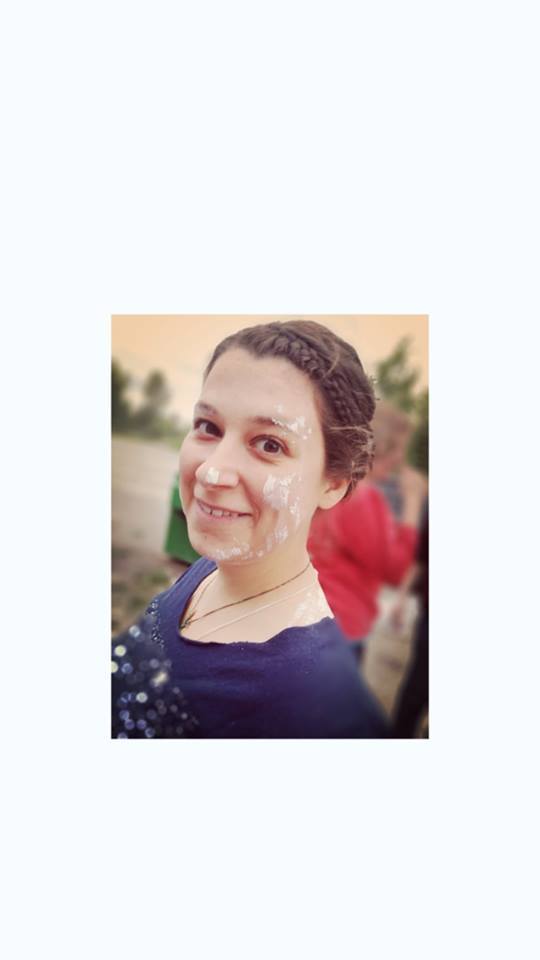PHASE I
TELLING OF STORIES
In the summers of 2014 and 2015, the 100Stone Project set out across Alaska by road and air to reach some of Alaska's most vulnerable community members and their loved ones, caretakers, and service providers. It was an effort to locate an intersection between public health and art. It was placemaking that described in physical form the shame and isolation common to those who experience acute vulnerabilities, the very taproot of suicide.
100Stone was an effort to activate those who understand acute vulnerability all too well—as physical or emotional isolation—to physically tell their stories of illness, trauma, grief, disability, difficult transitions, and struggle, without the daunting burden of verbal expression. As a result, it evolved into a movement that addressed the community members whose attitudes and approaches to those who suffer unintentionally reinforce the isolation that can lead to the devastating activation of suicide.
Facilitated by the 100Stone team and a diverse network of community partners in the heath and arts fields, nearly 600 creative and non-creative community "allies" gathered in 30 spaces across the state in order to manifest an ephemeral moment of sanctuary. There, ecosystems of fellowship, connectivity, and physical and creative engagement produced the "telling" of 200 of our most difficult stories through physical, artistic means. Artists and non-artists captured the forms and features of participants' faces and bodies in messy, awkward and playful plaster-casting sessions designed to find both pointed focus on and respite from burdensome states of mental illness. Through the laying of hands and building of forms, and the activation a purposeful creative action, physical and emotional barriers were breached, sometimes for the first time, and the roots of connectivity were propagated.
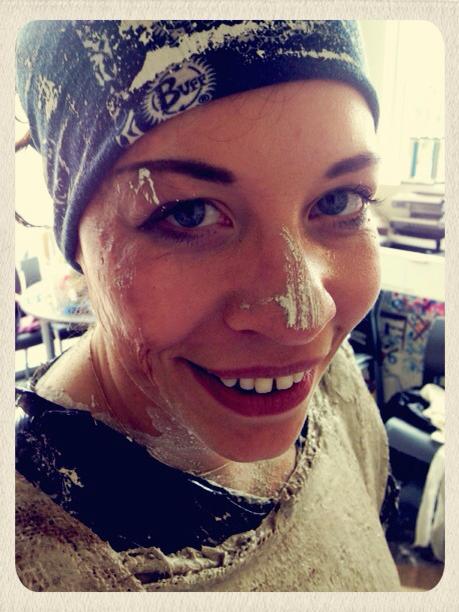
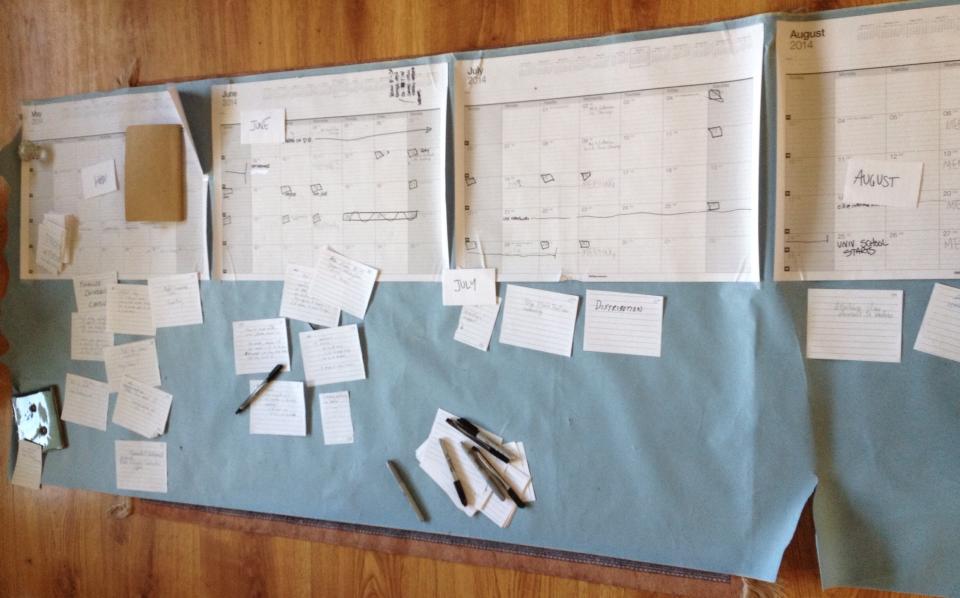

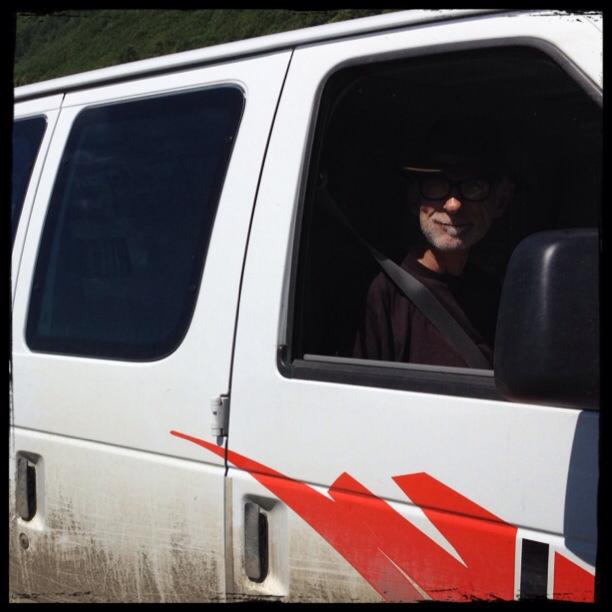

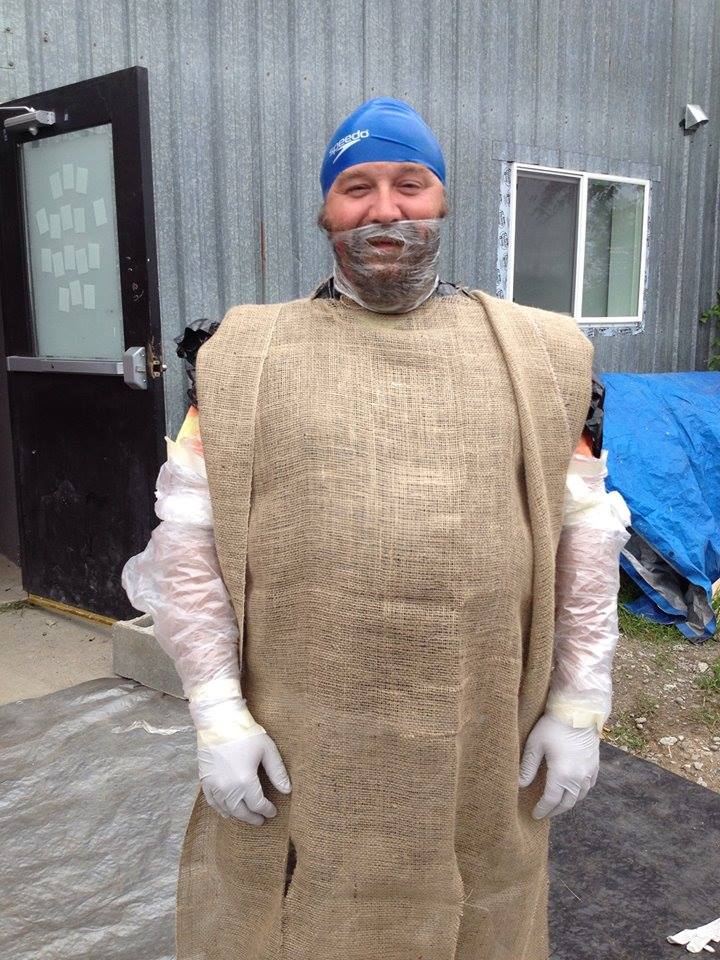
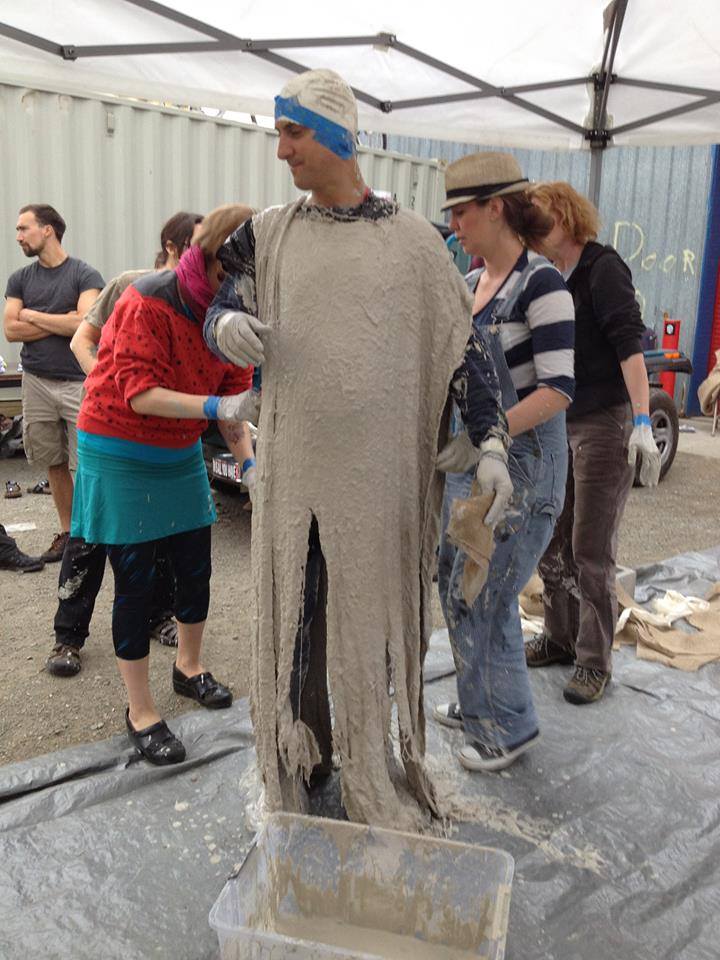

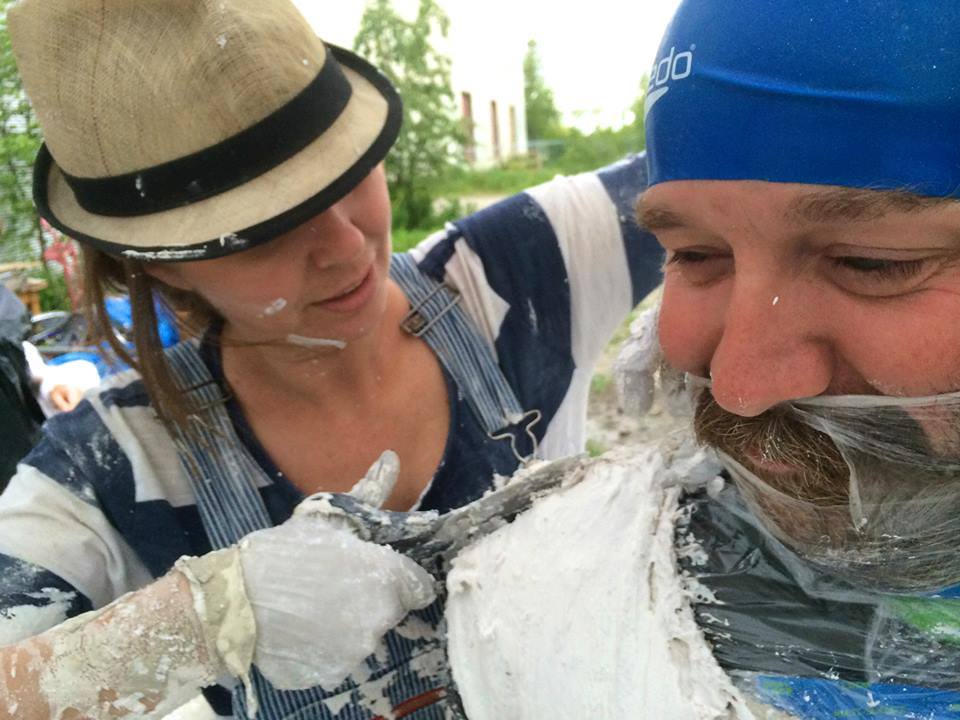
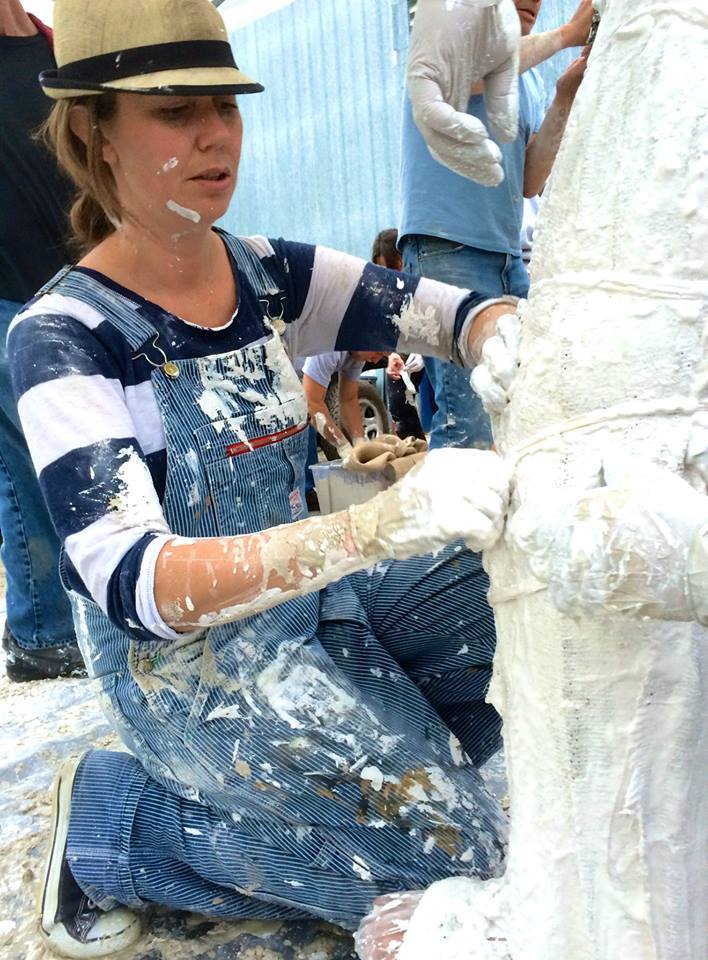
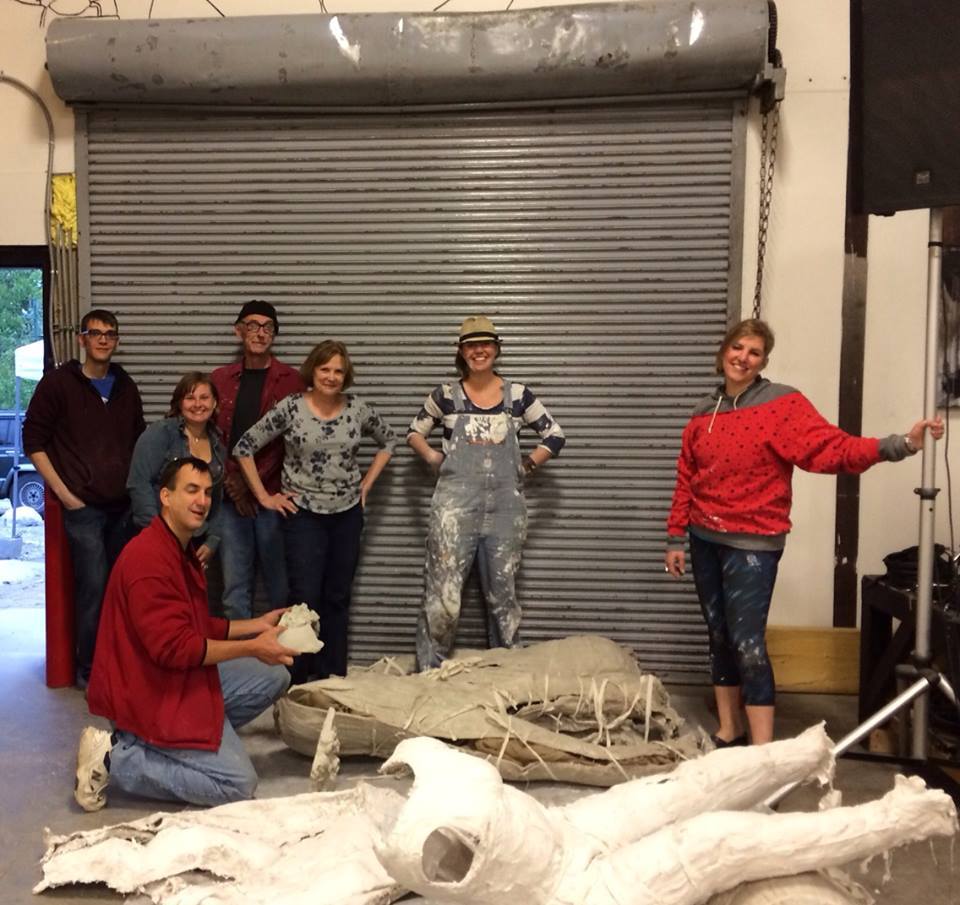
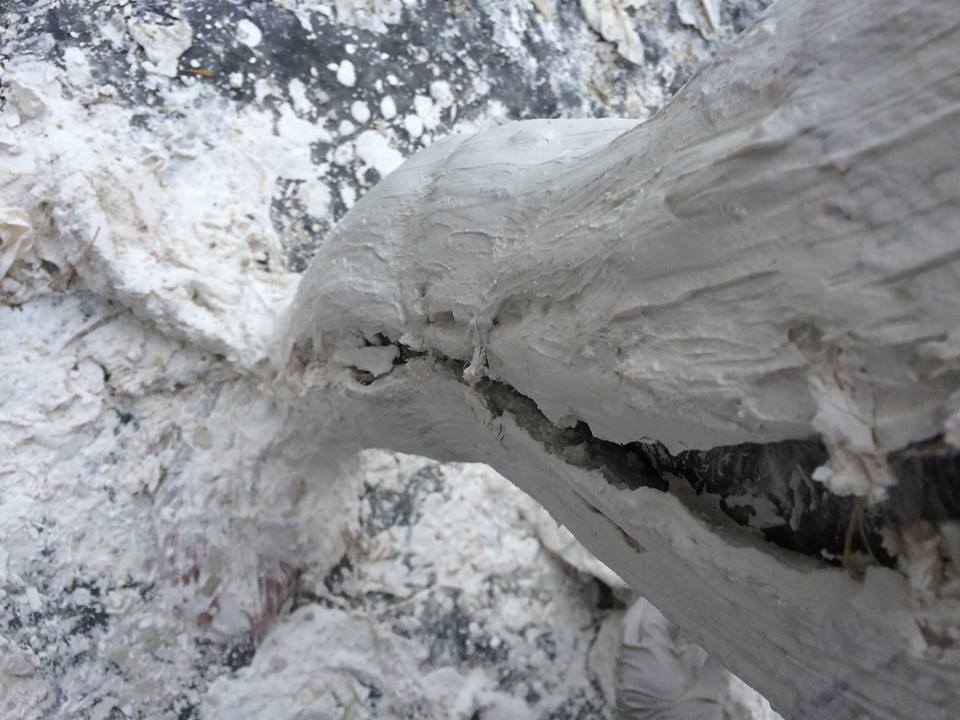
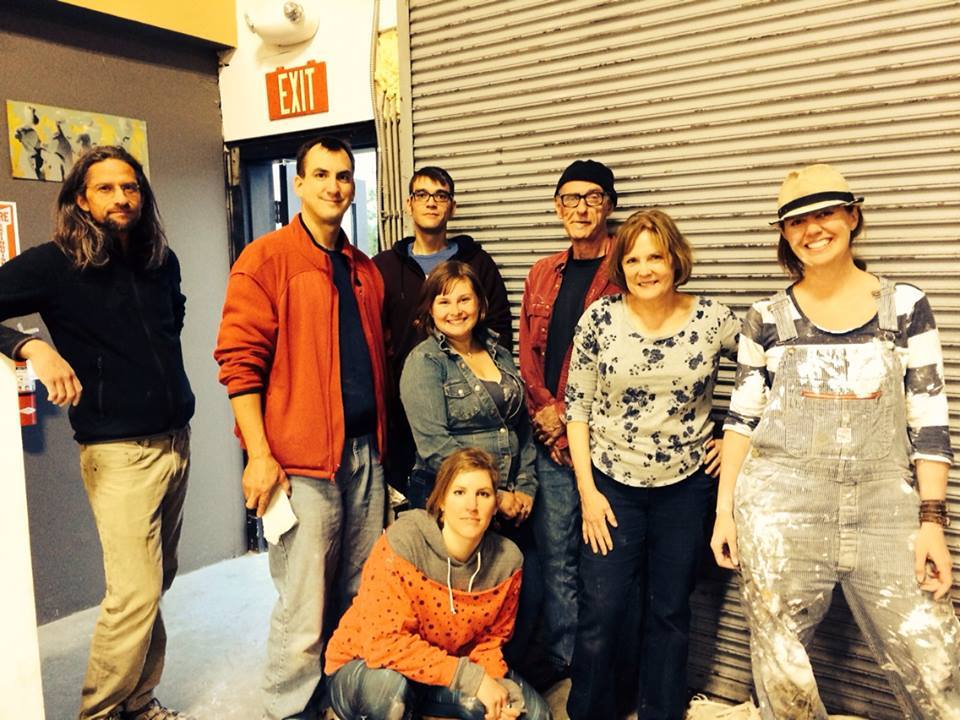
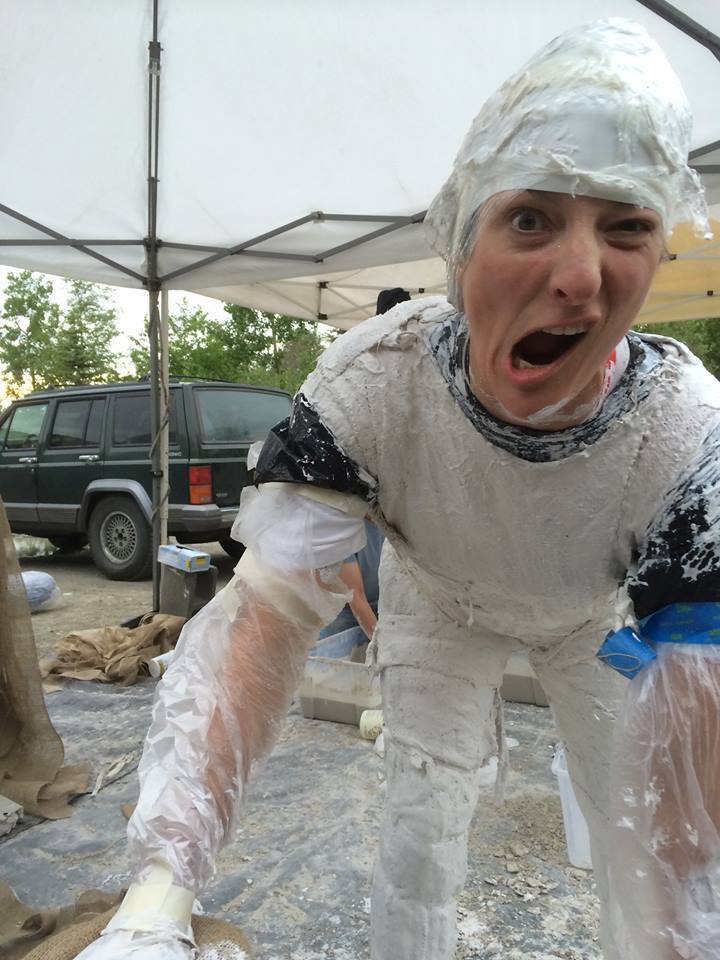


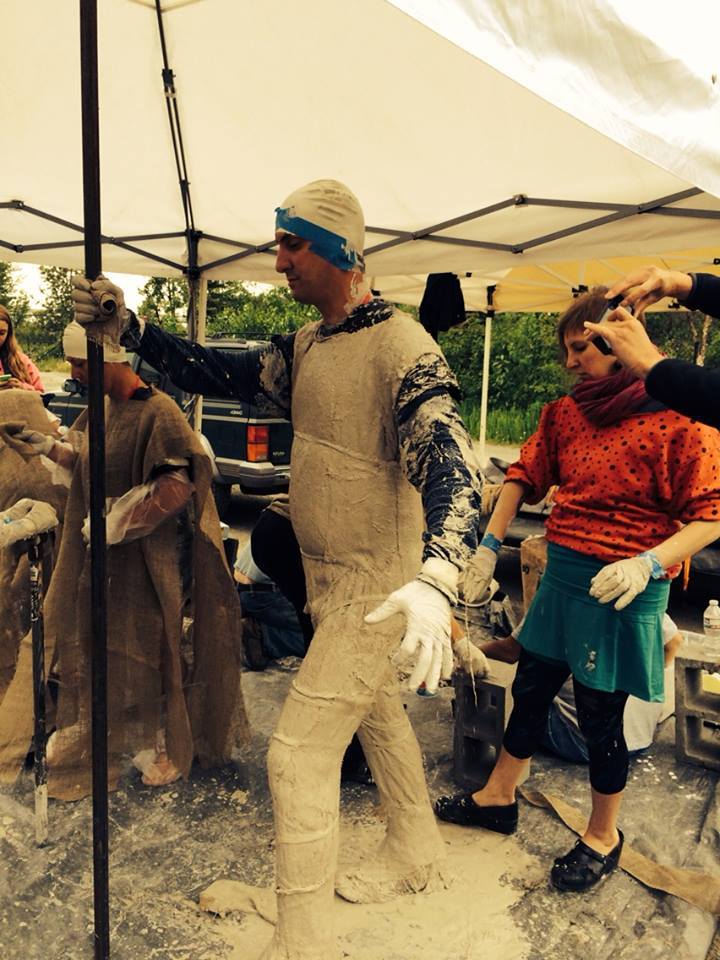
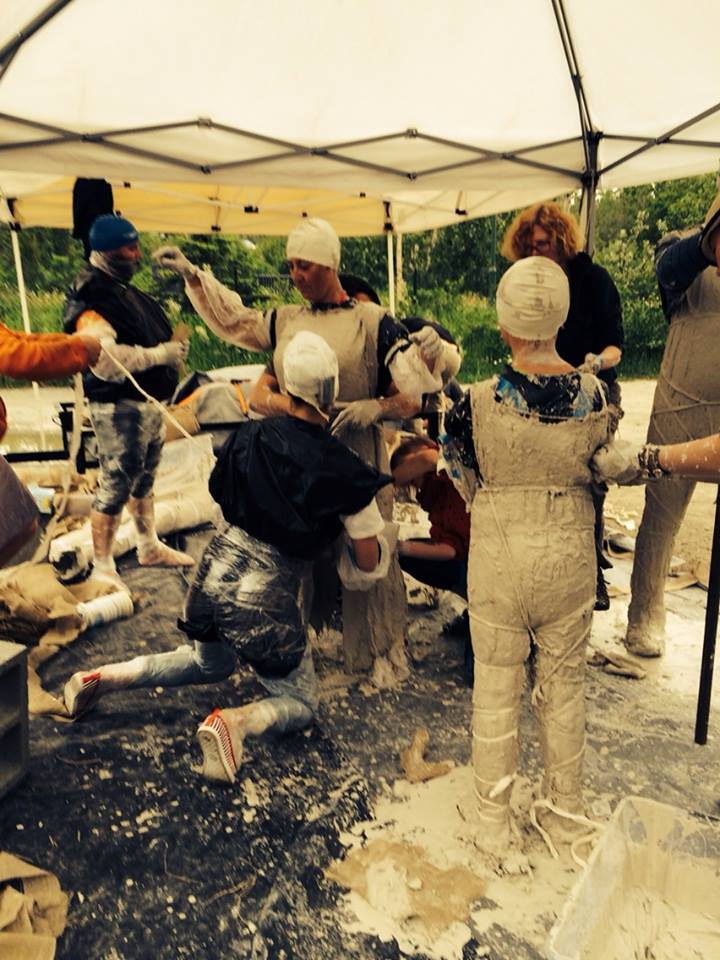
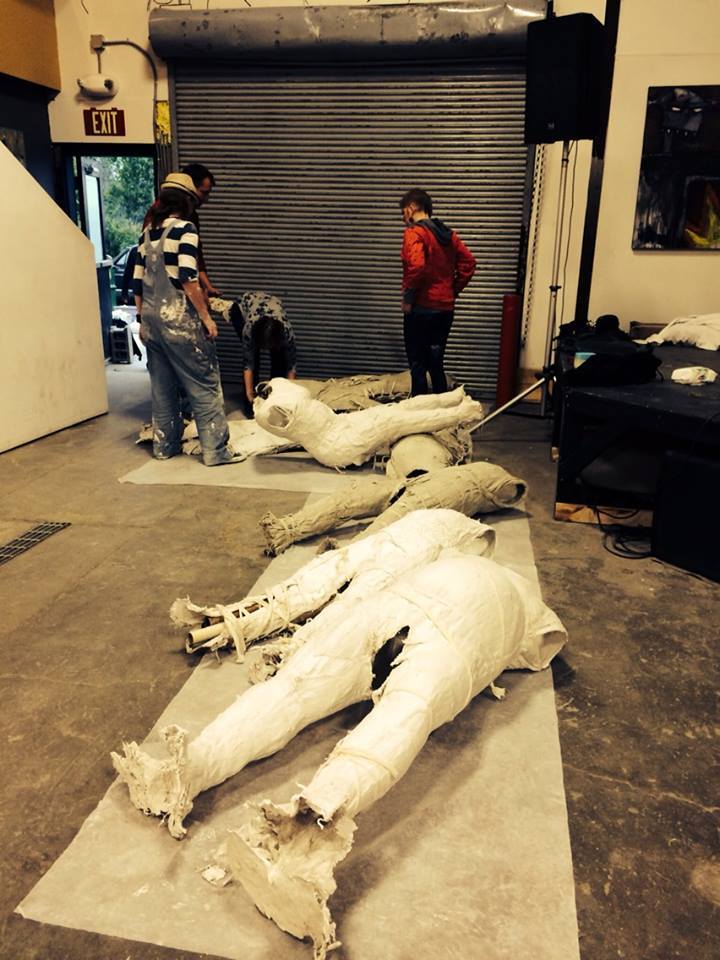

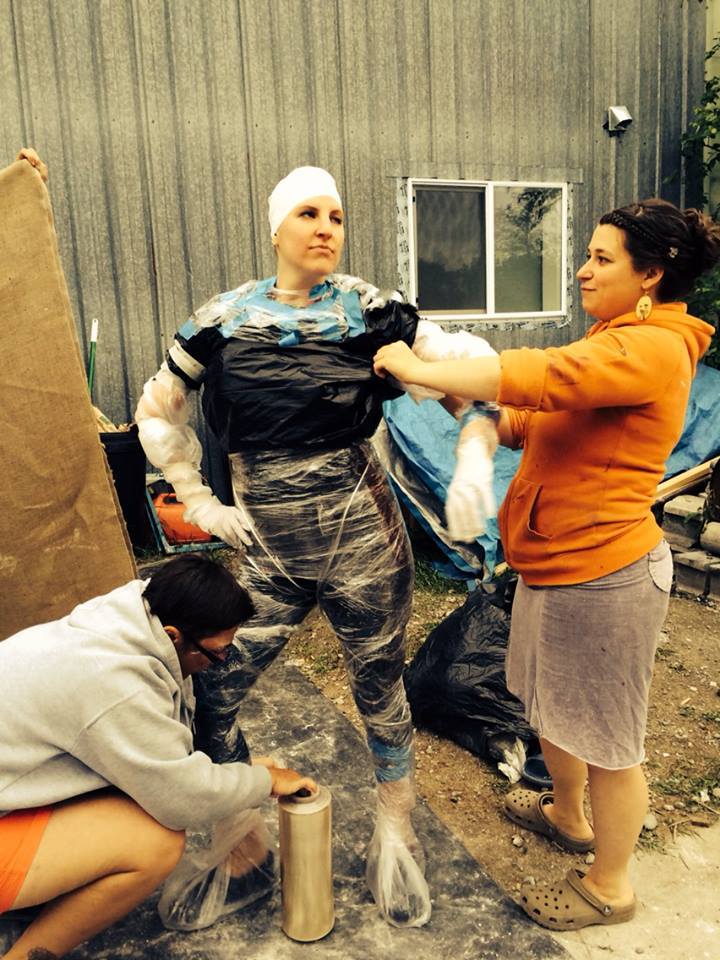
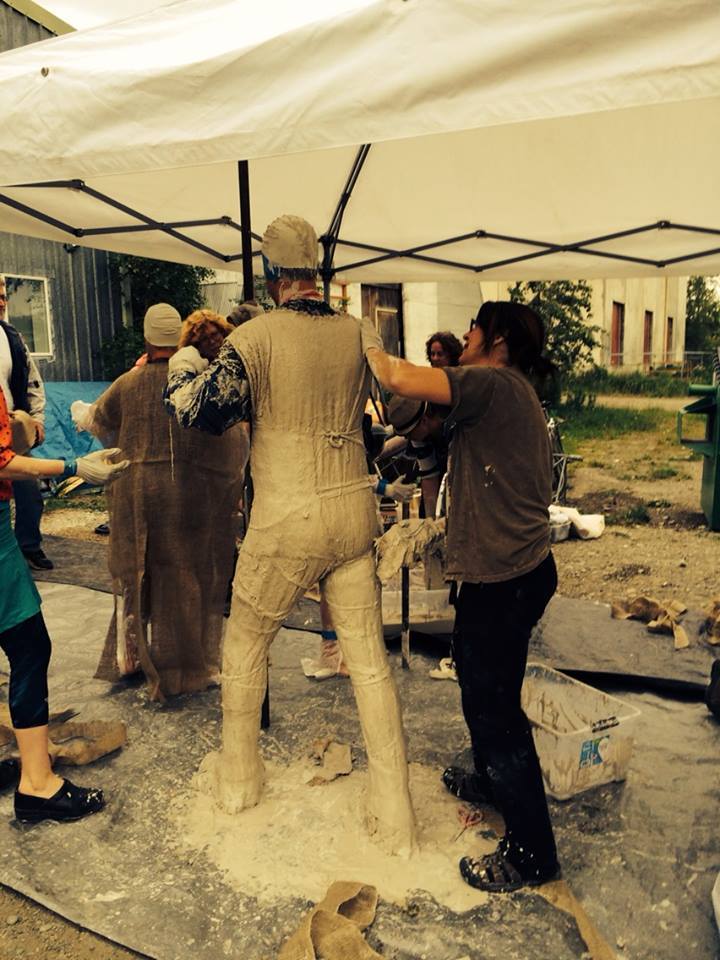
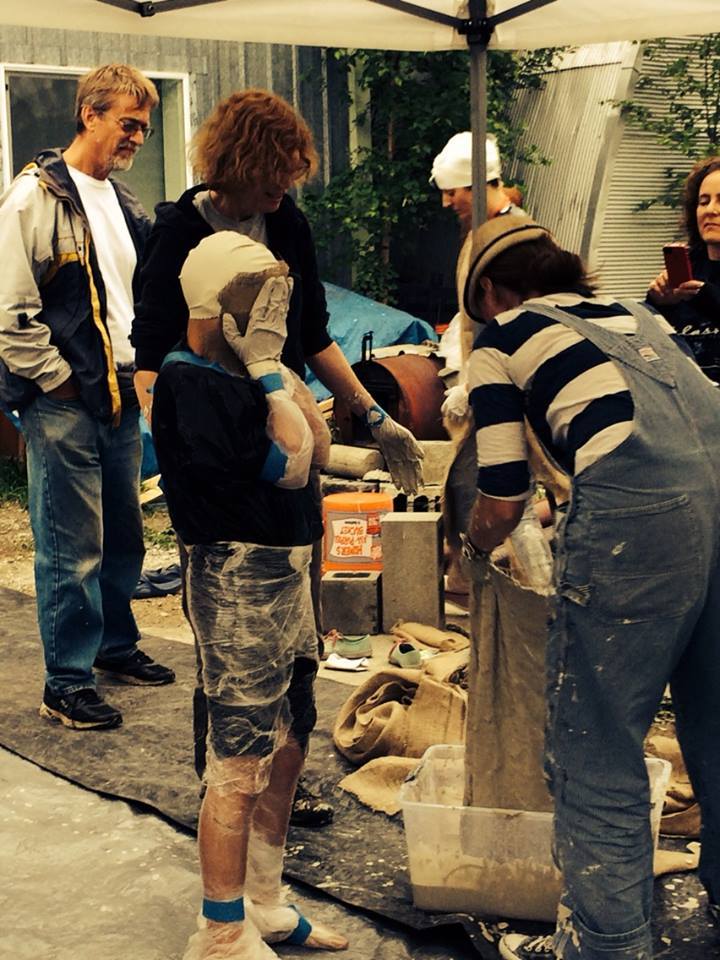


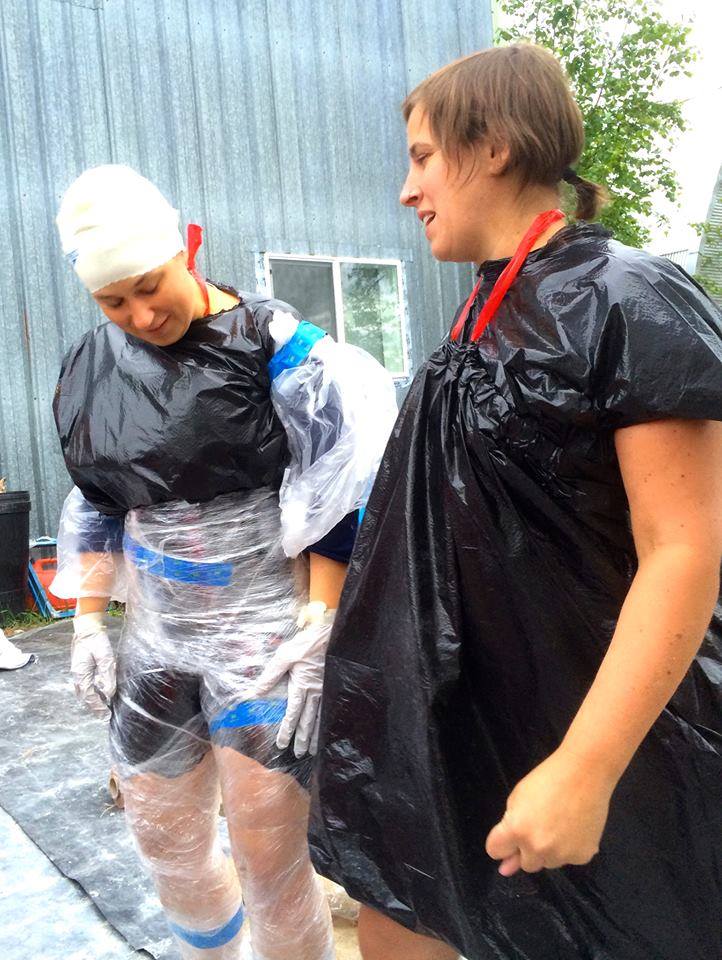

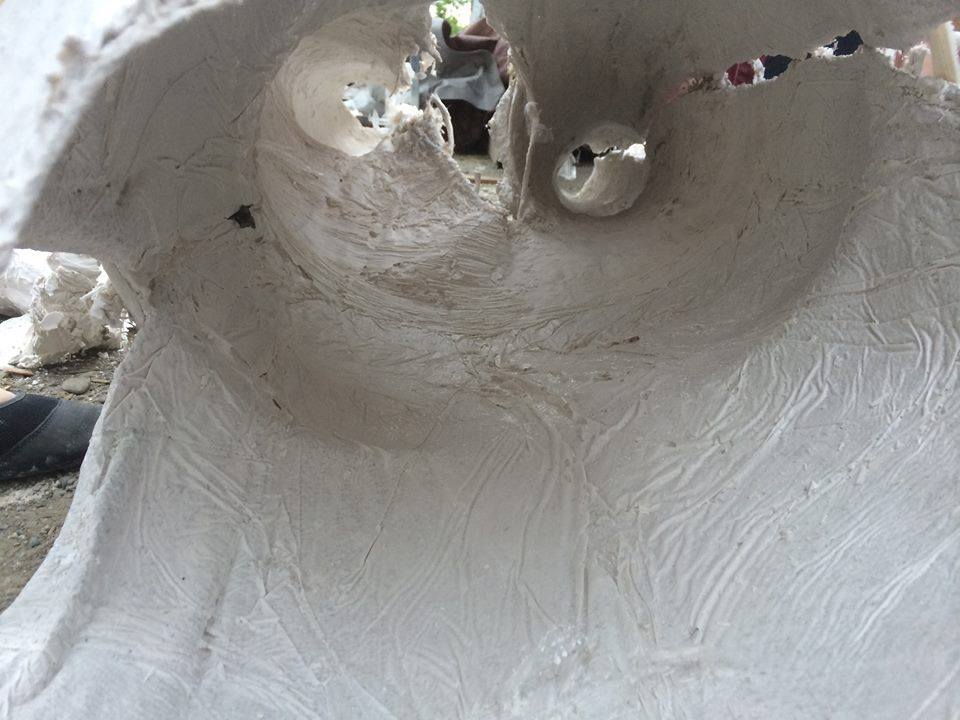
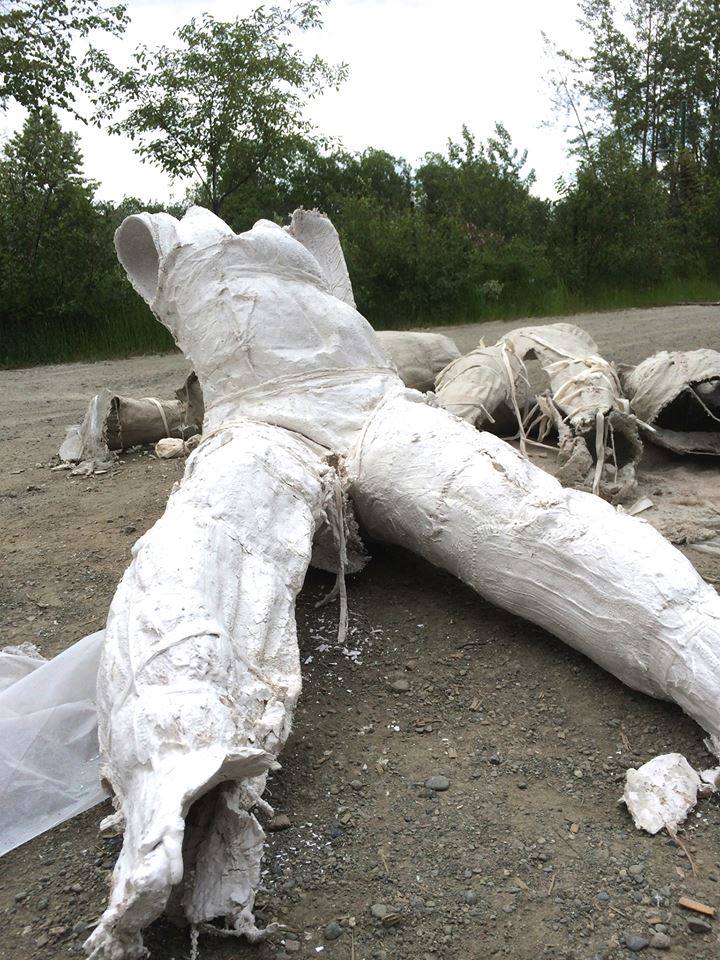
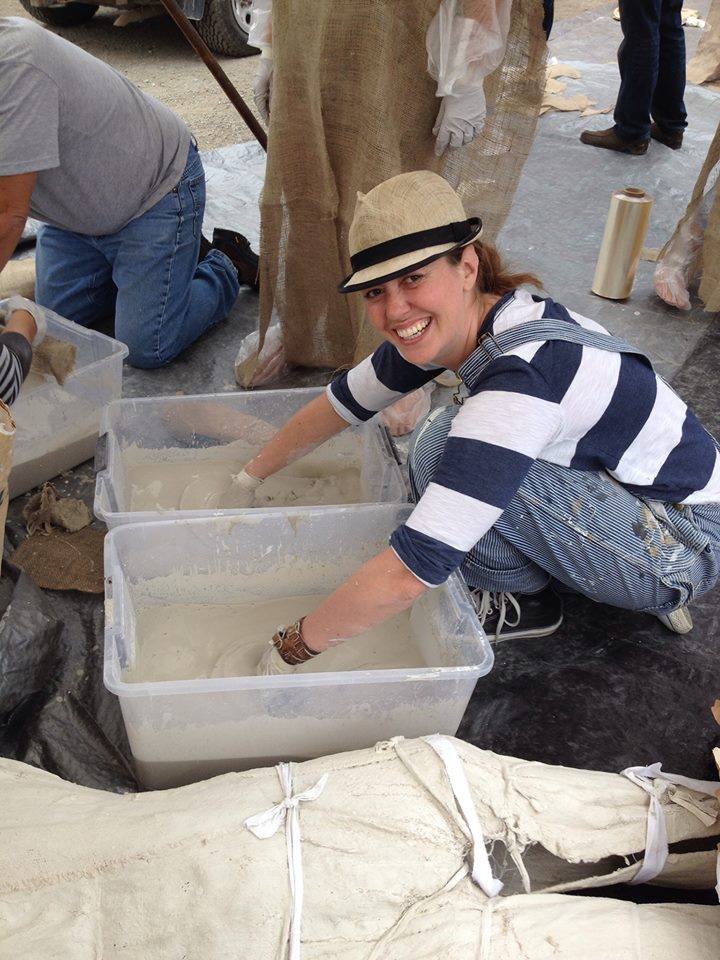
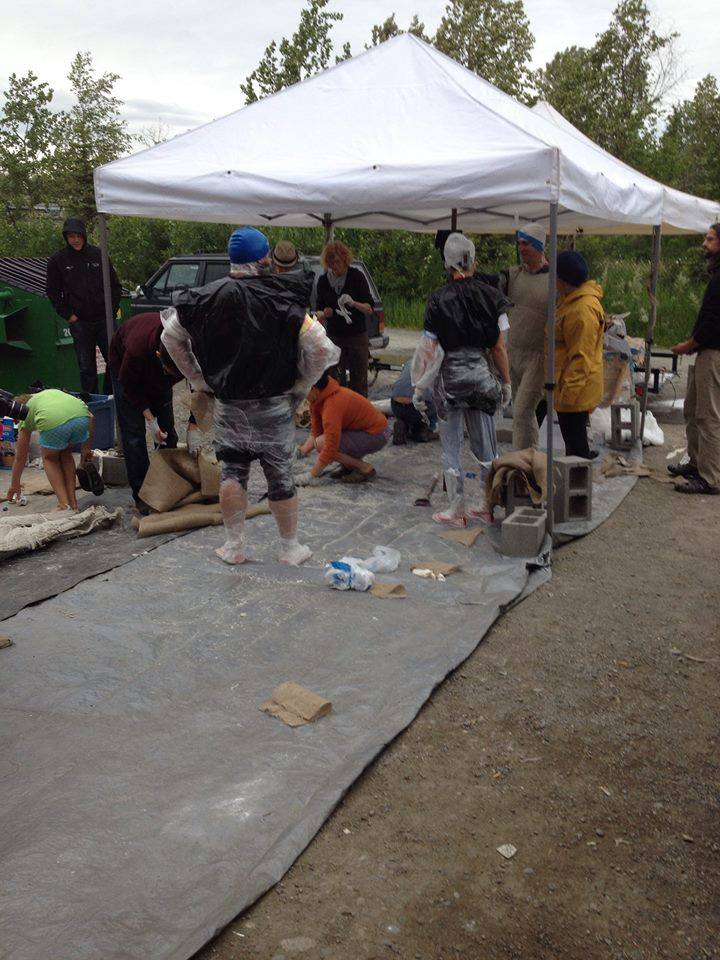

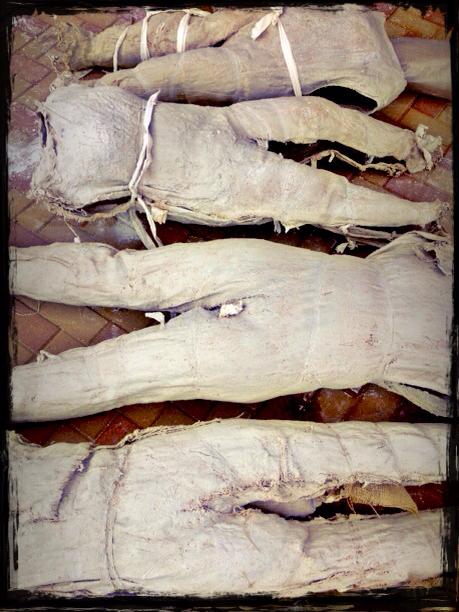
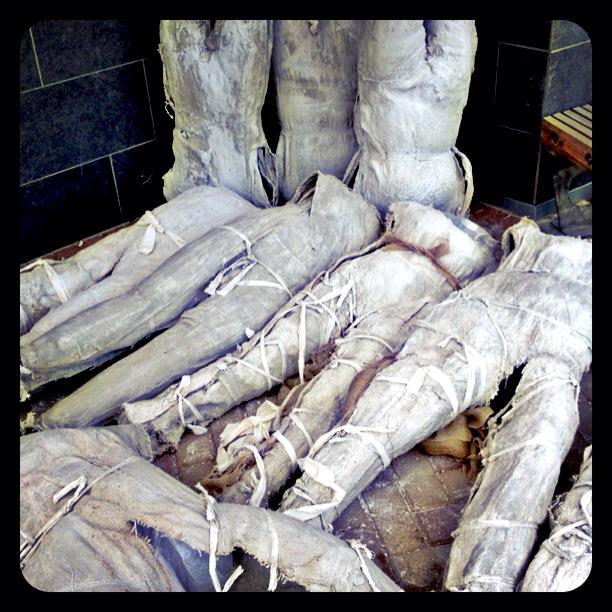
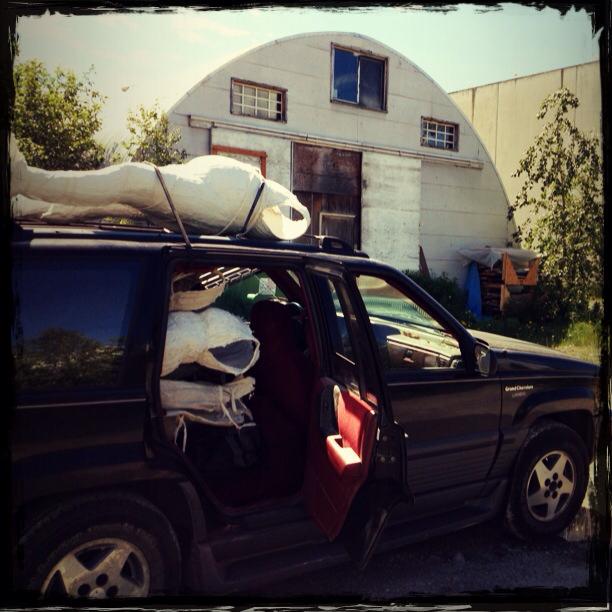
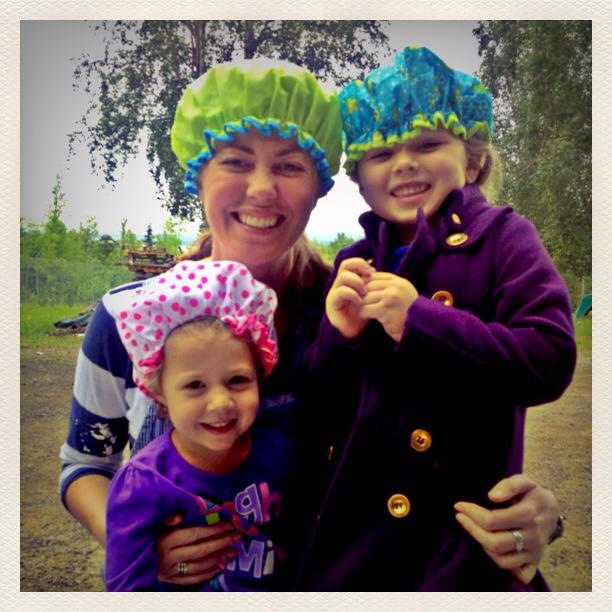
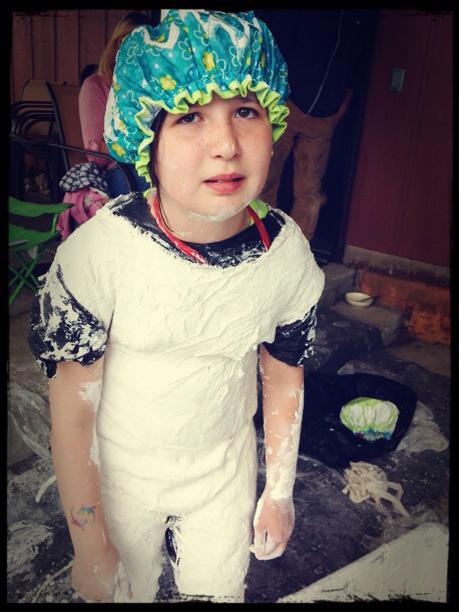

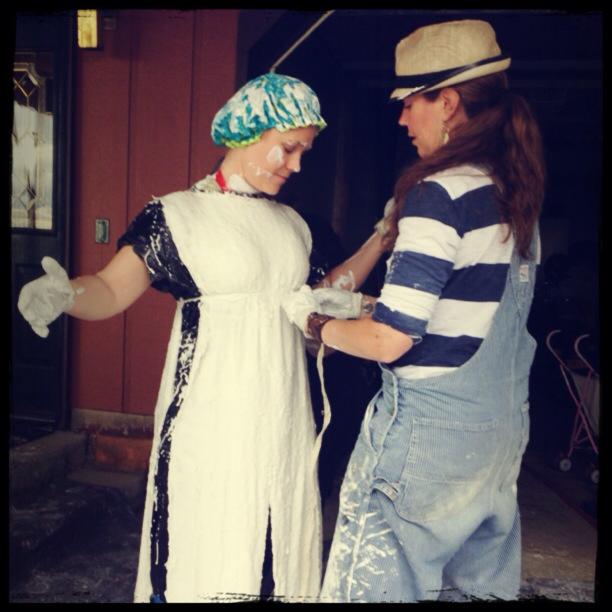
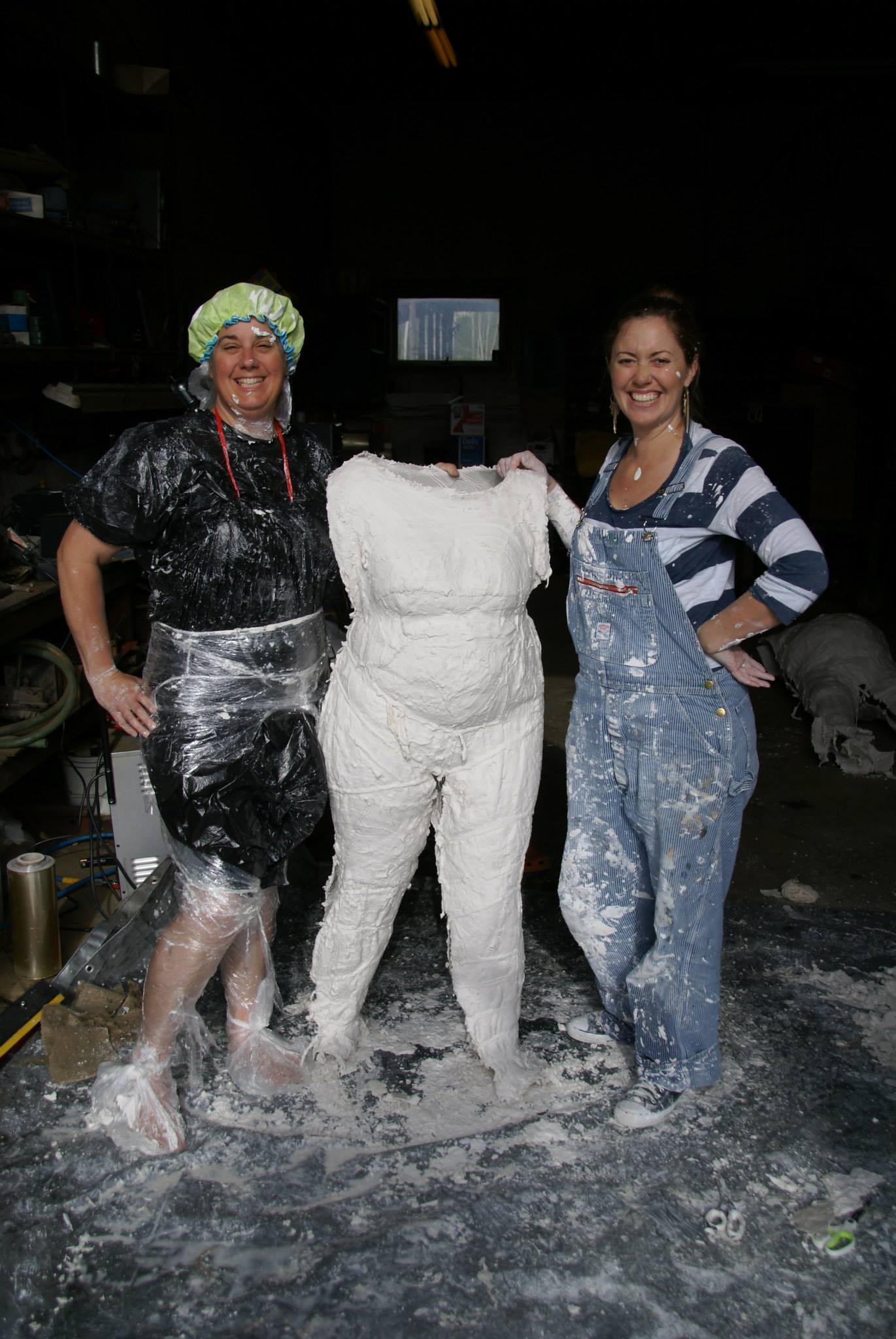
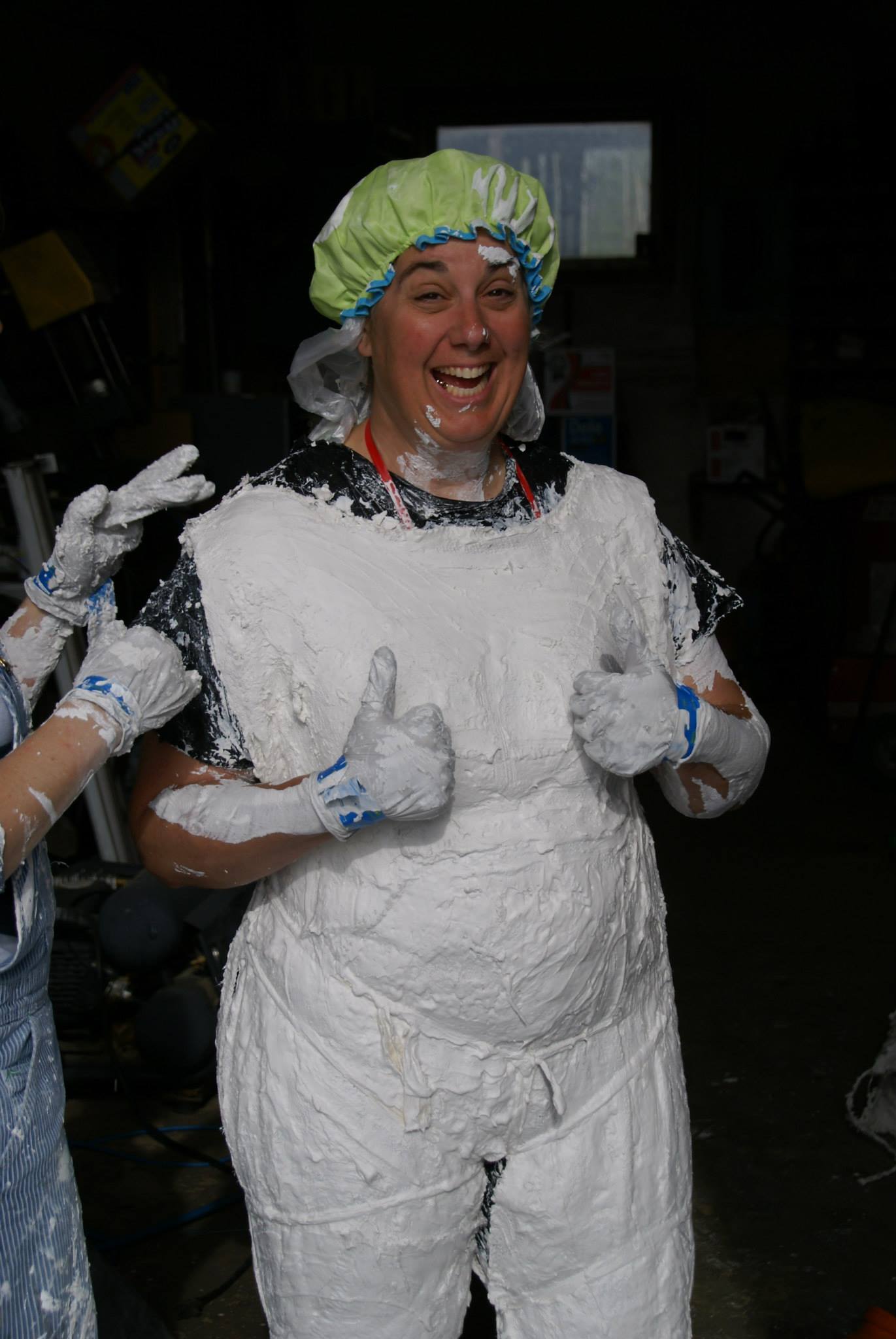
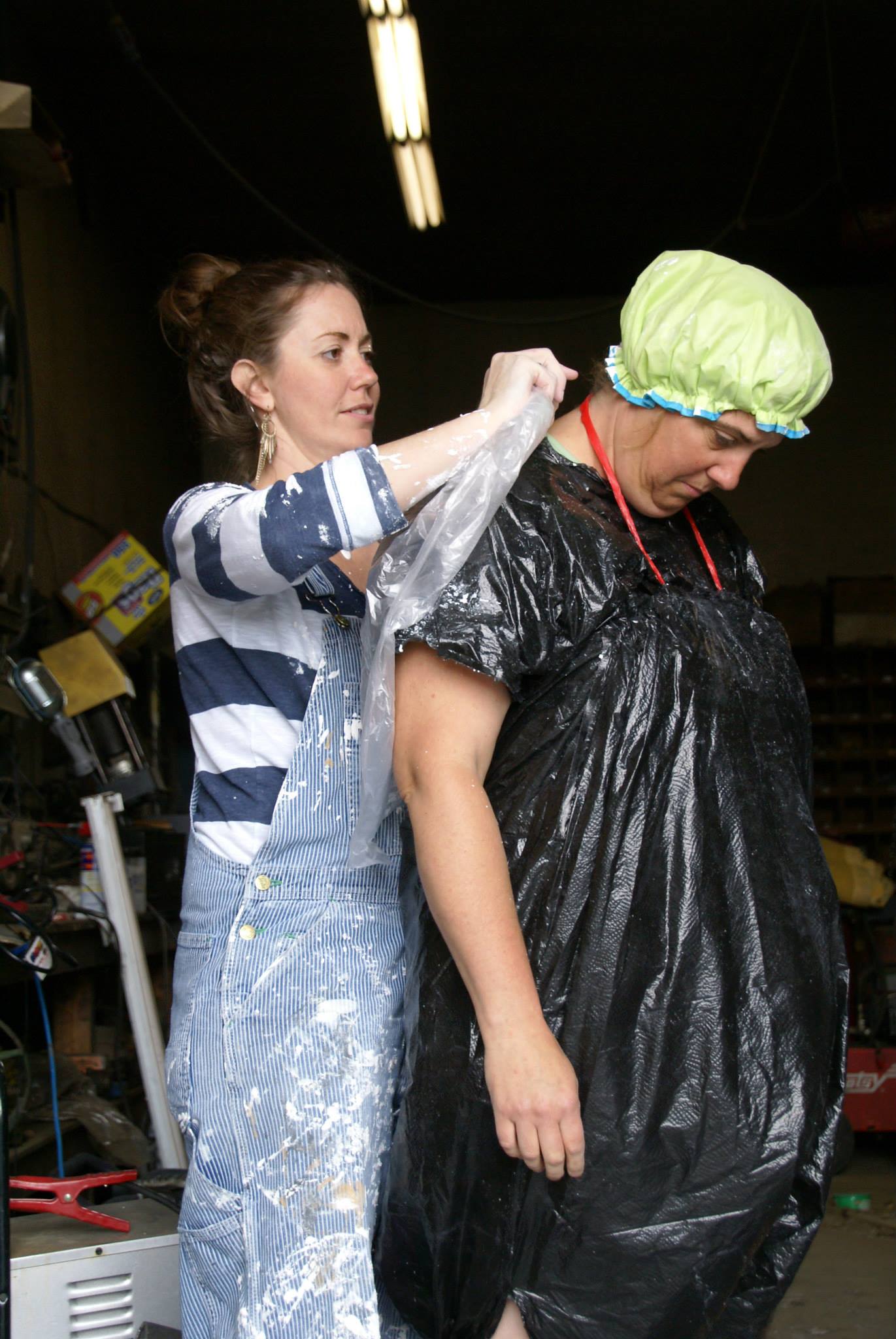
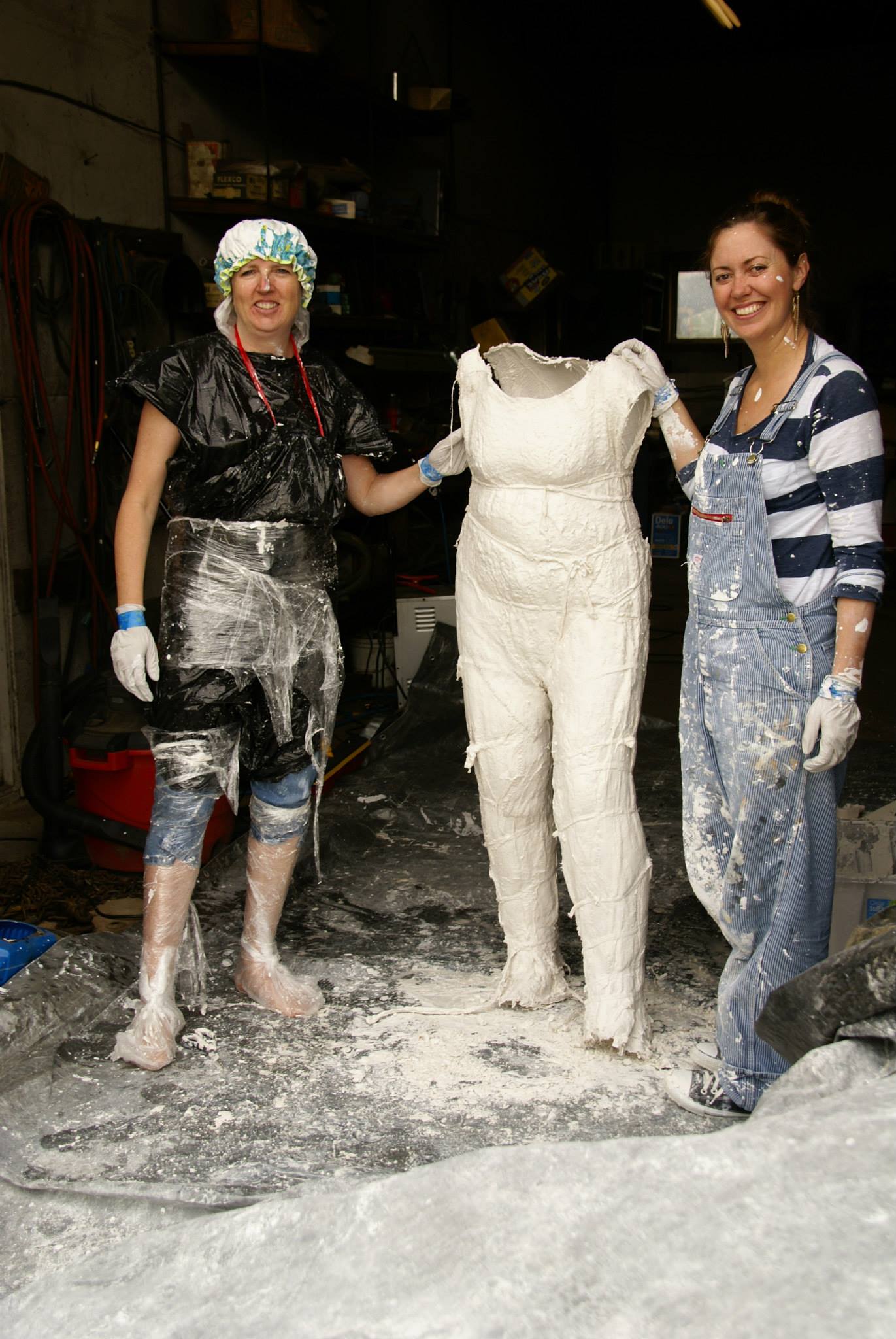
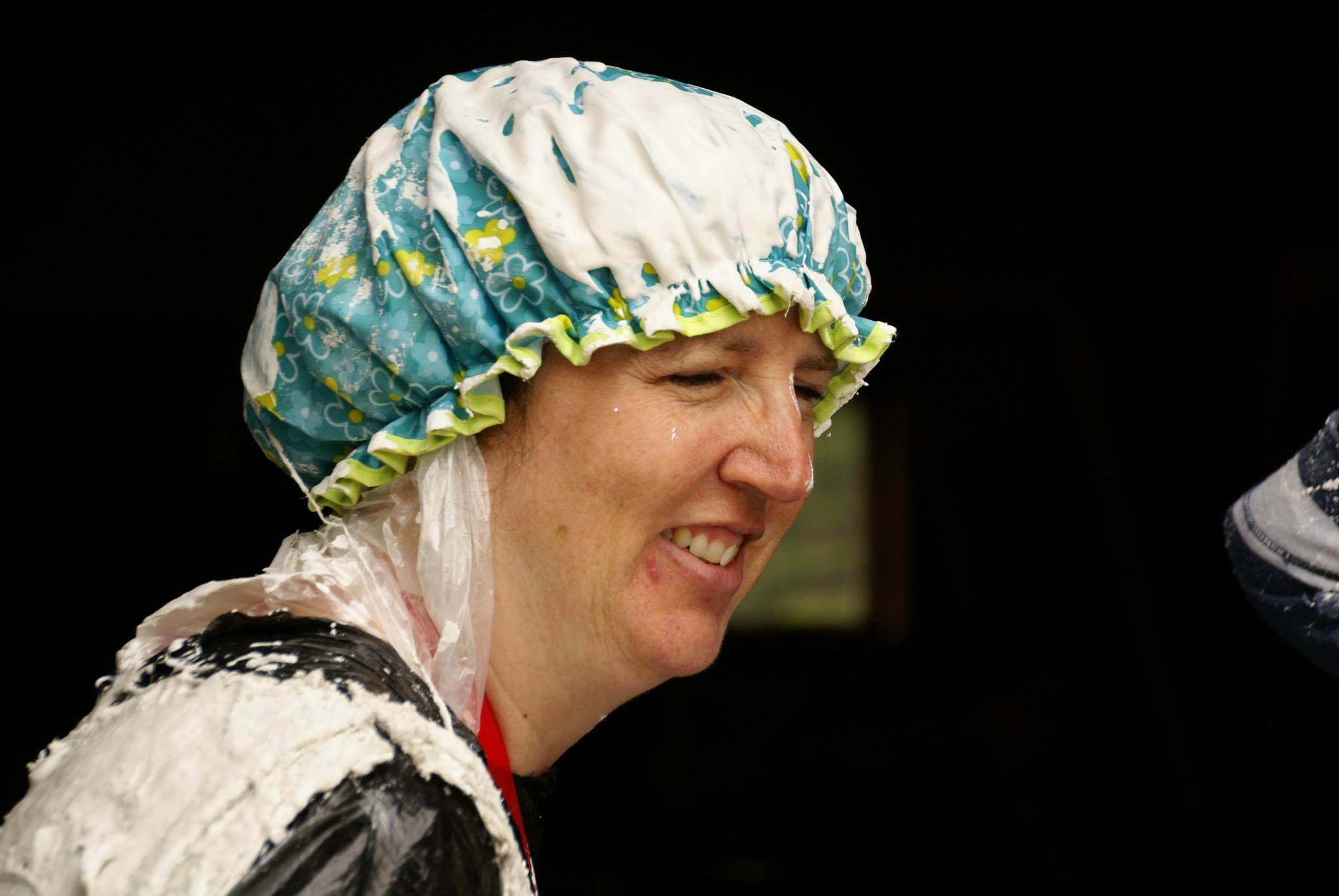

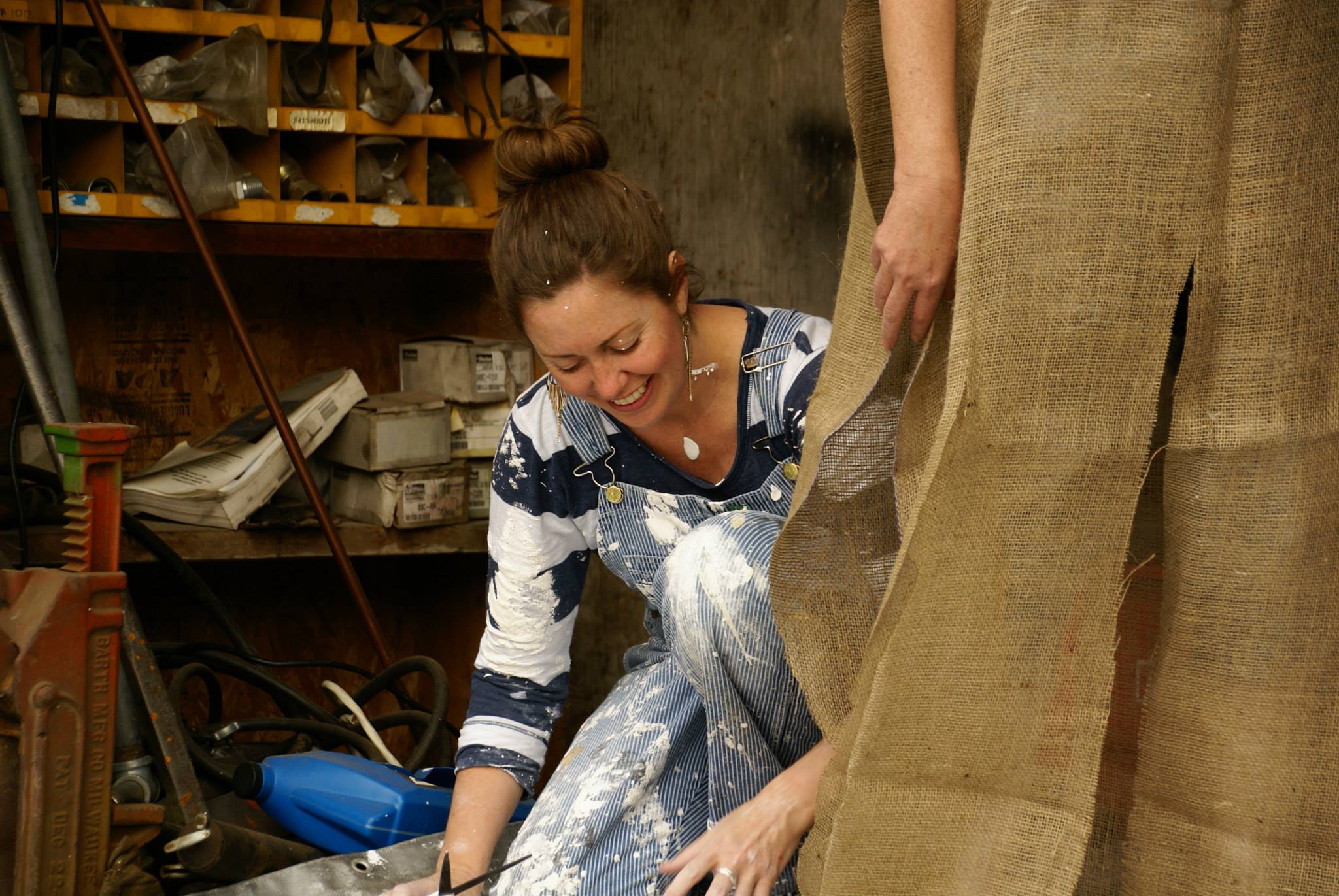
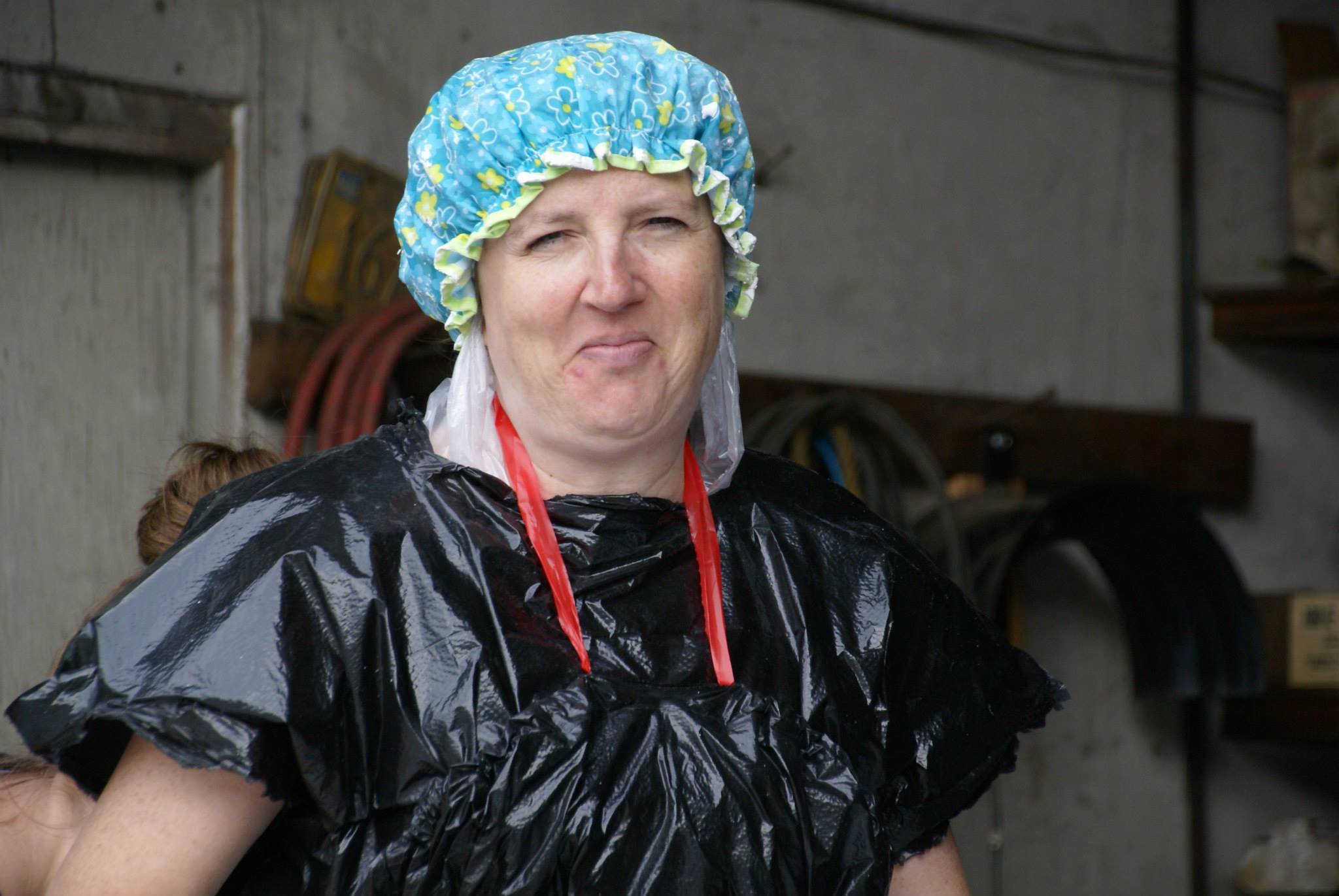

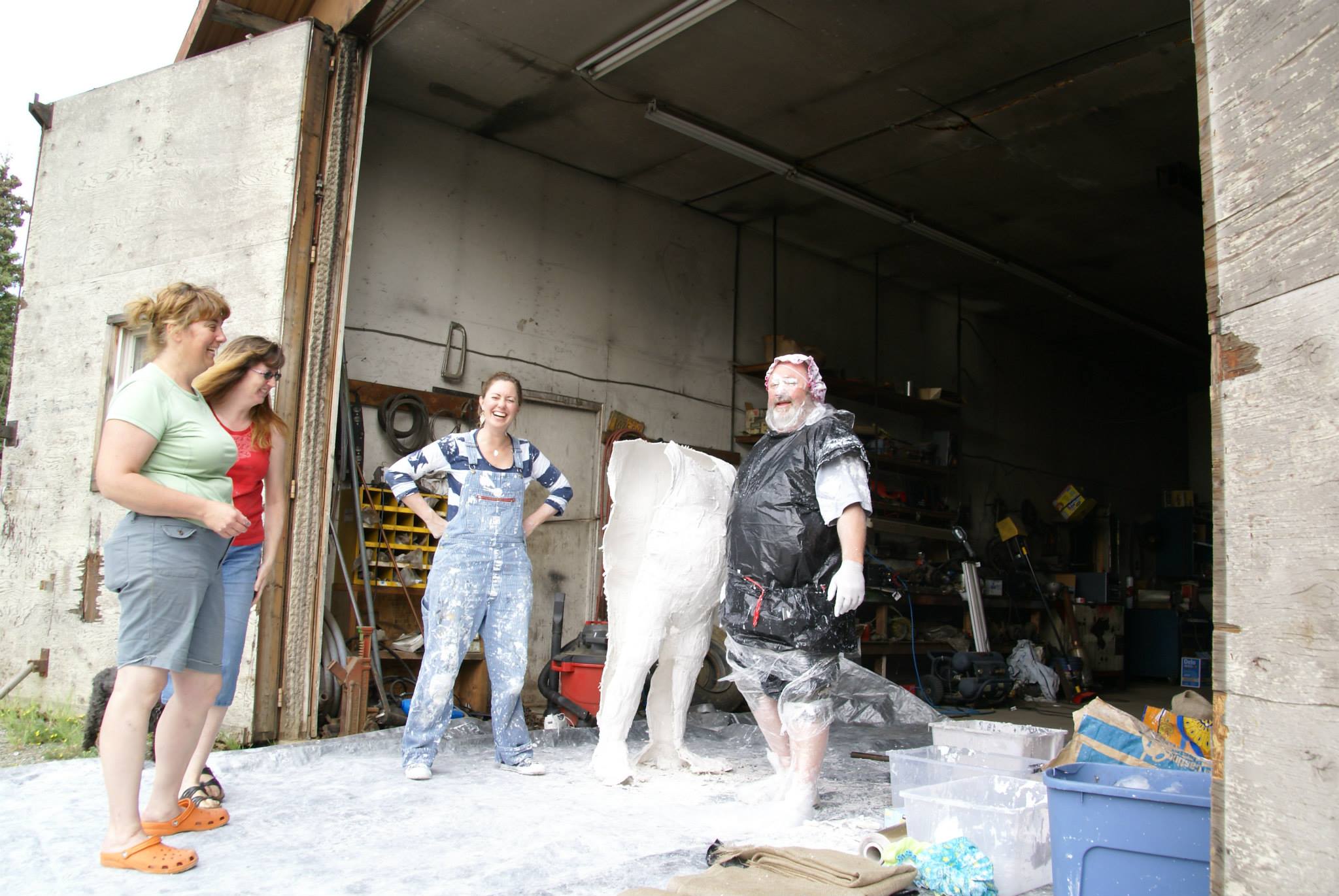
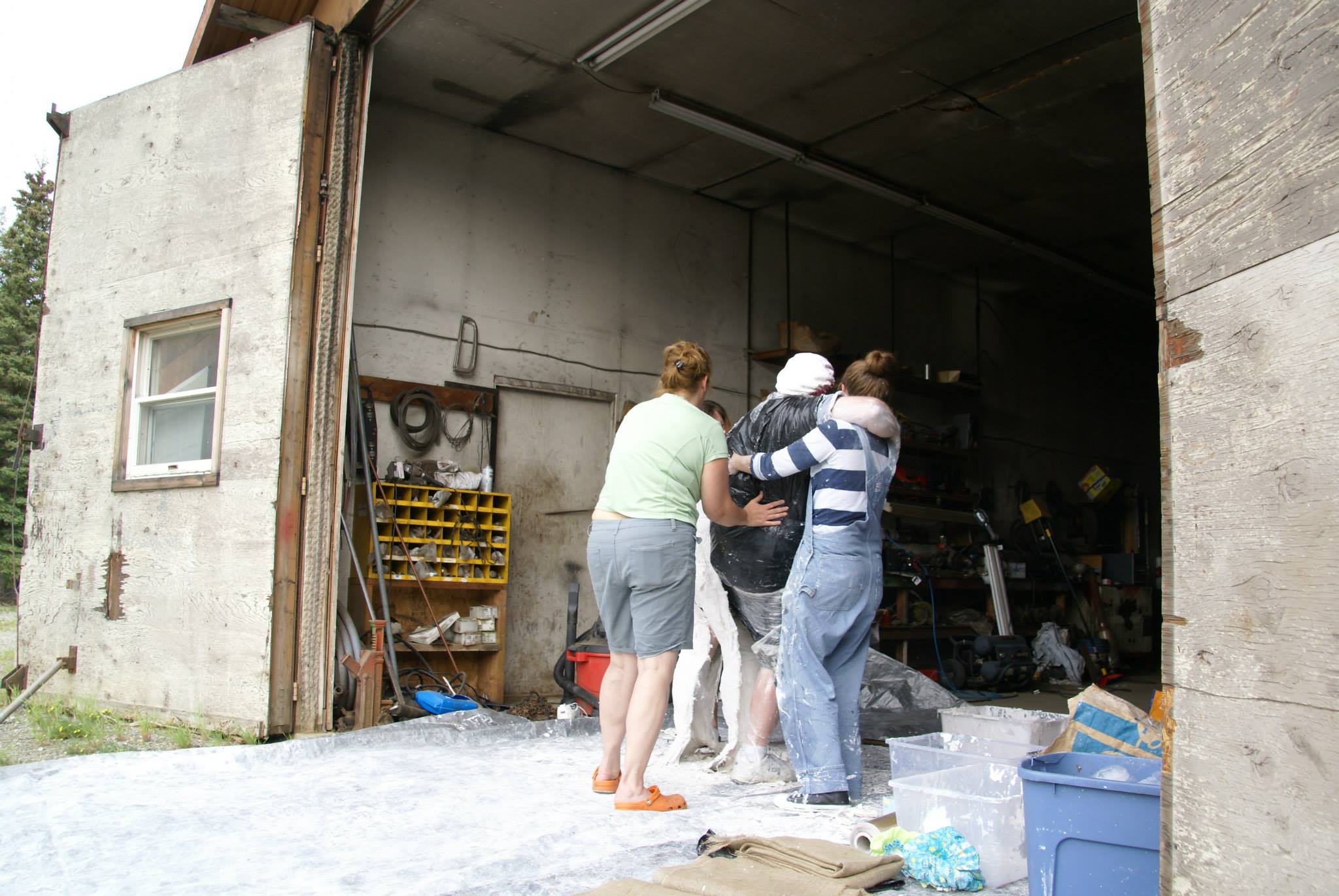
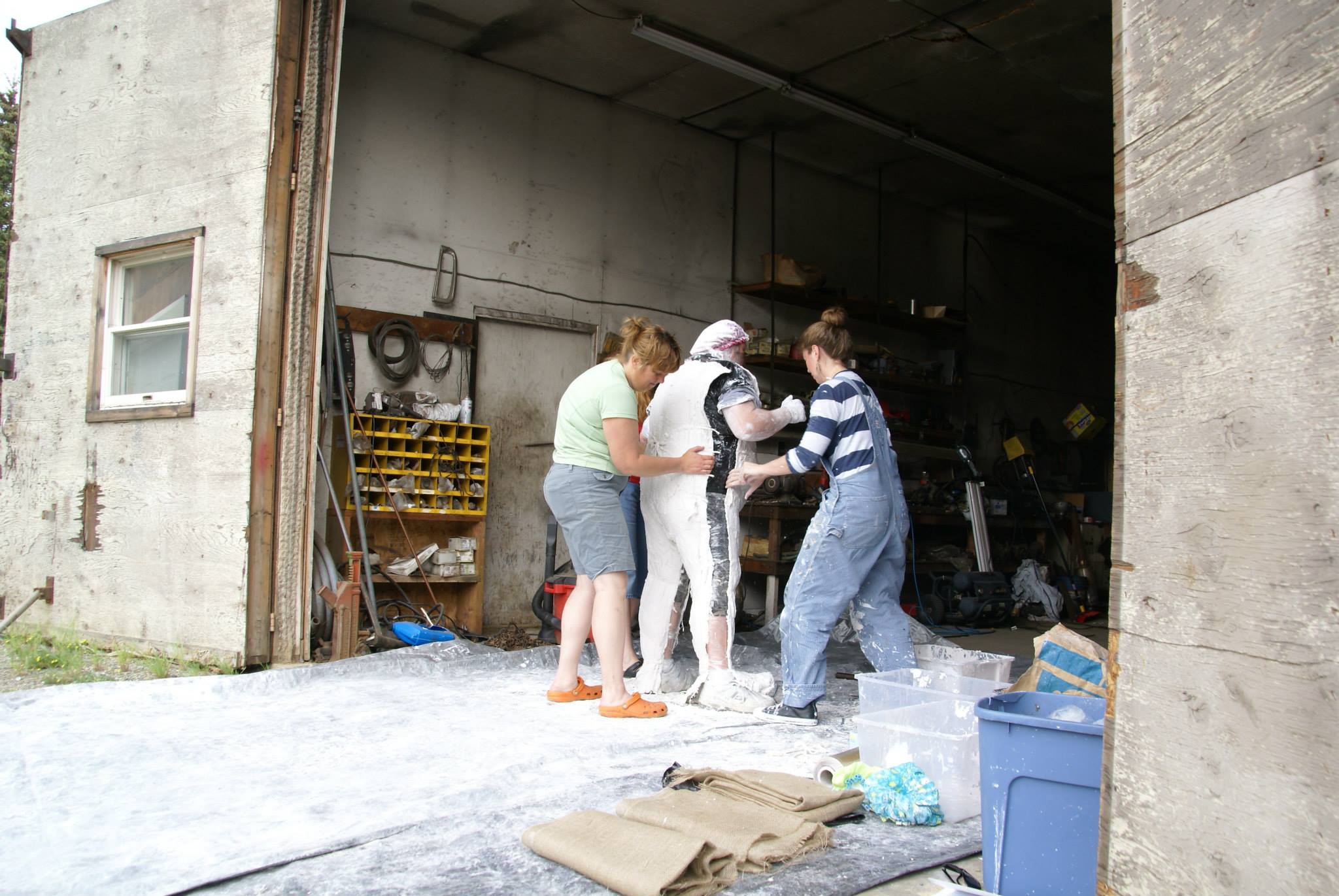
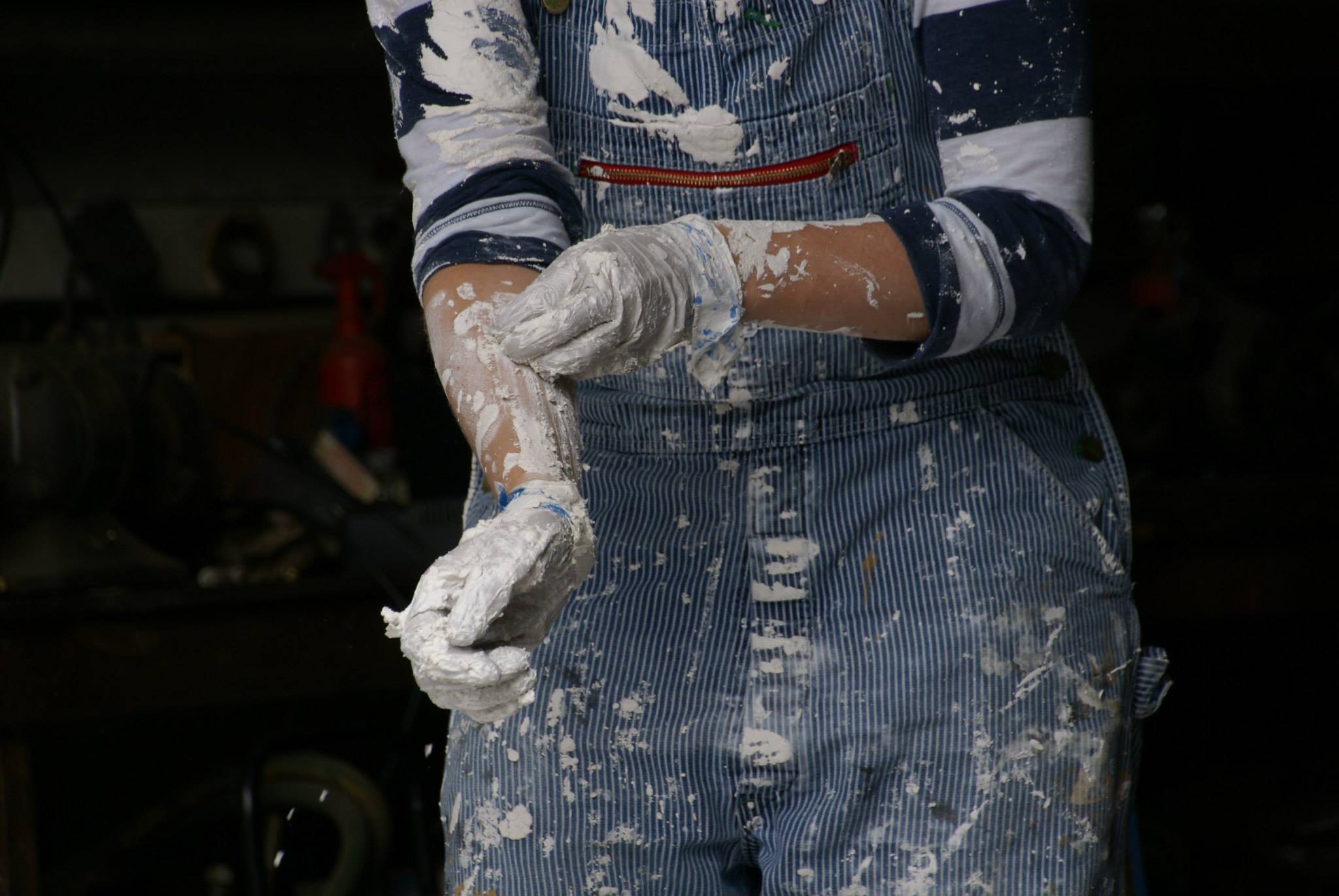
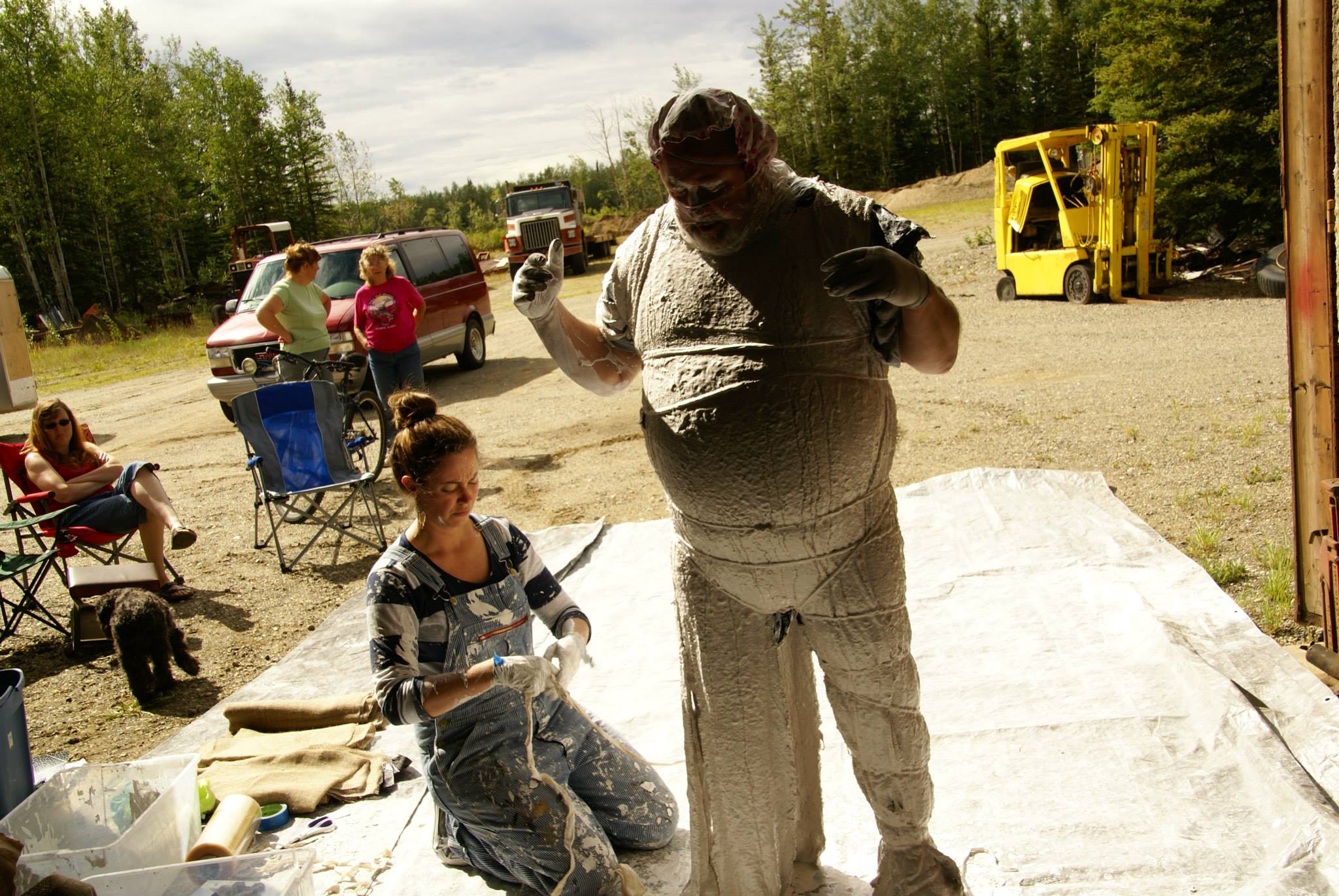
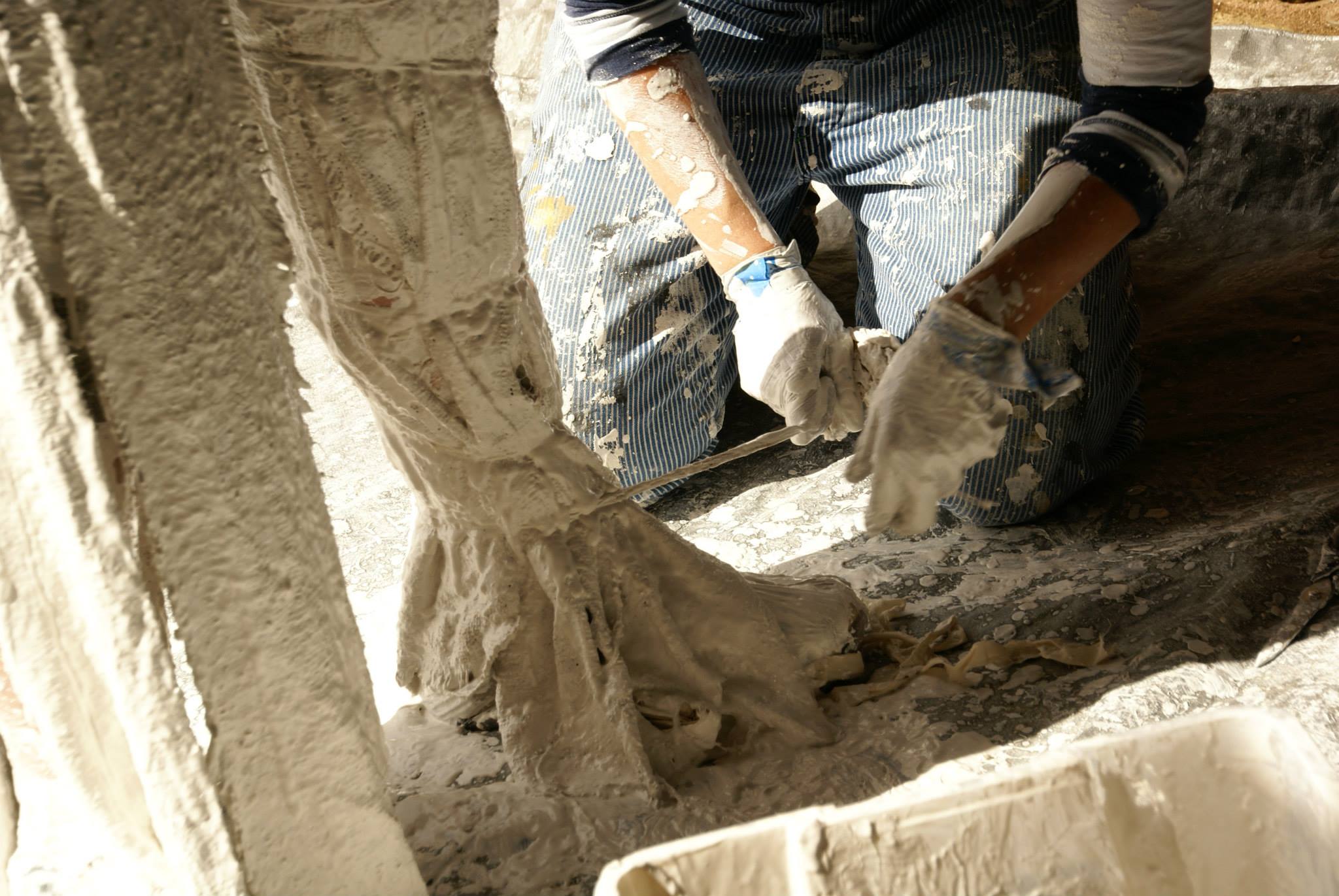
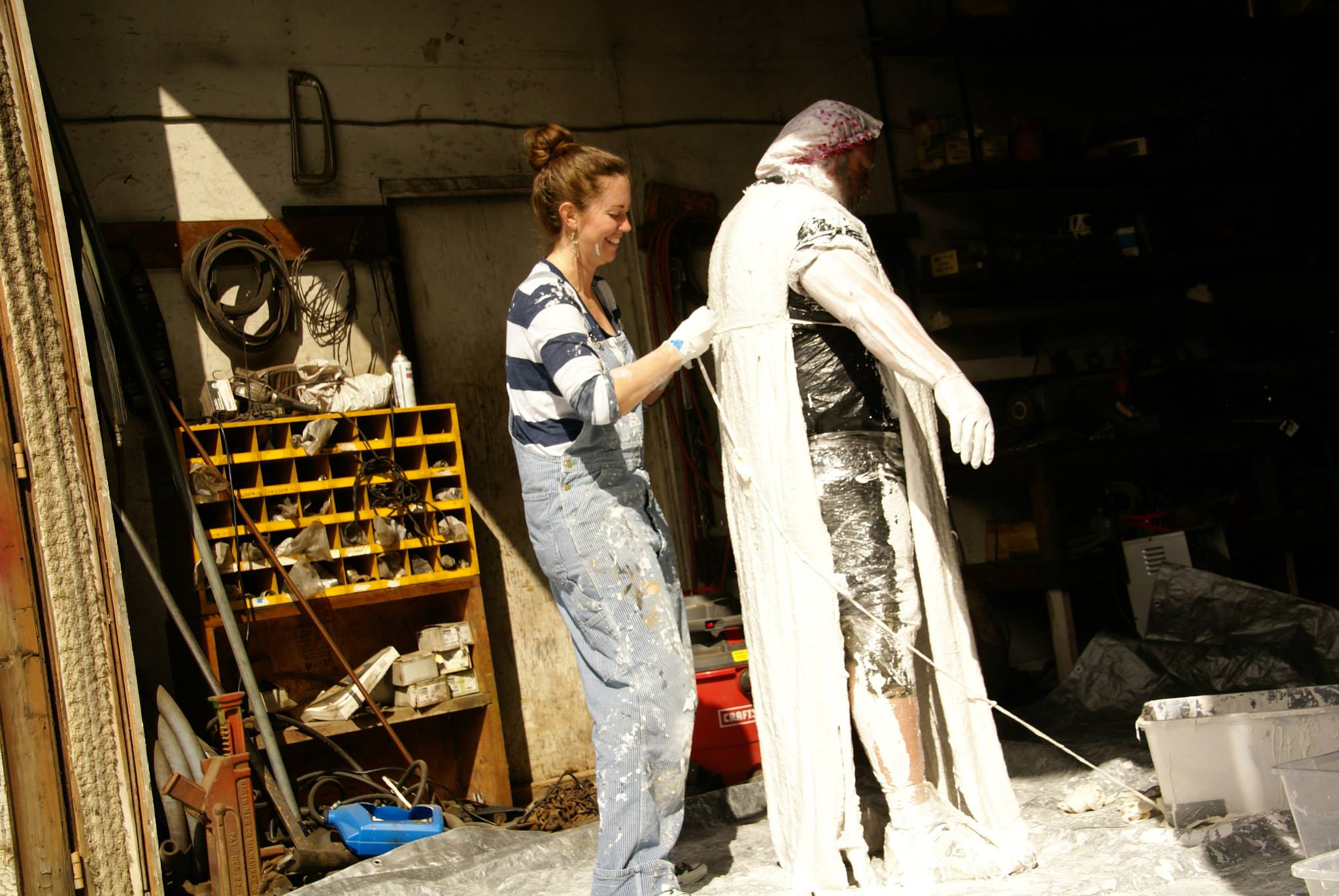


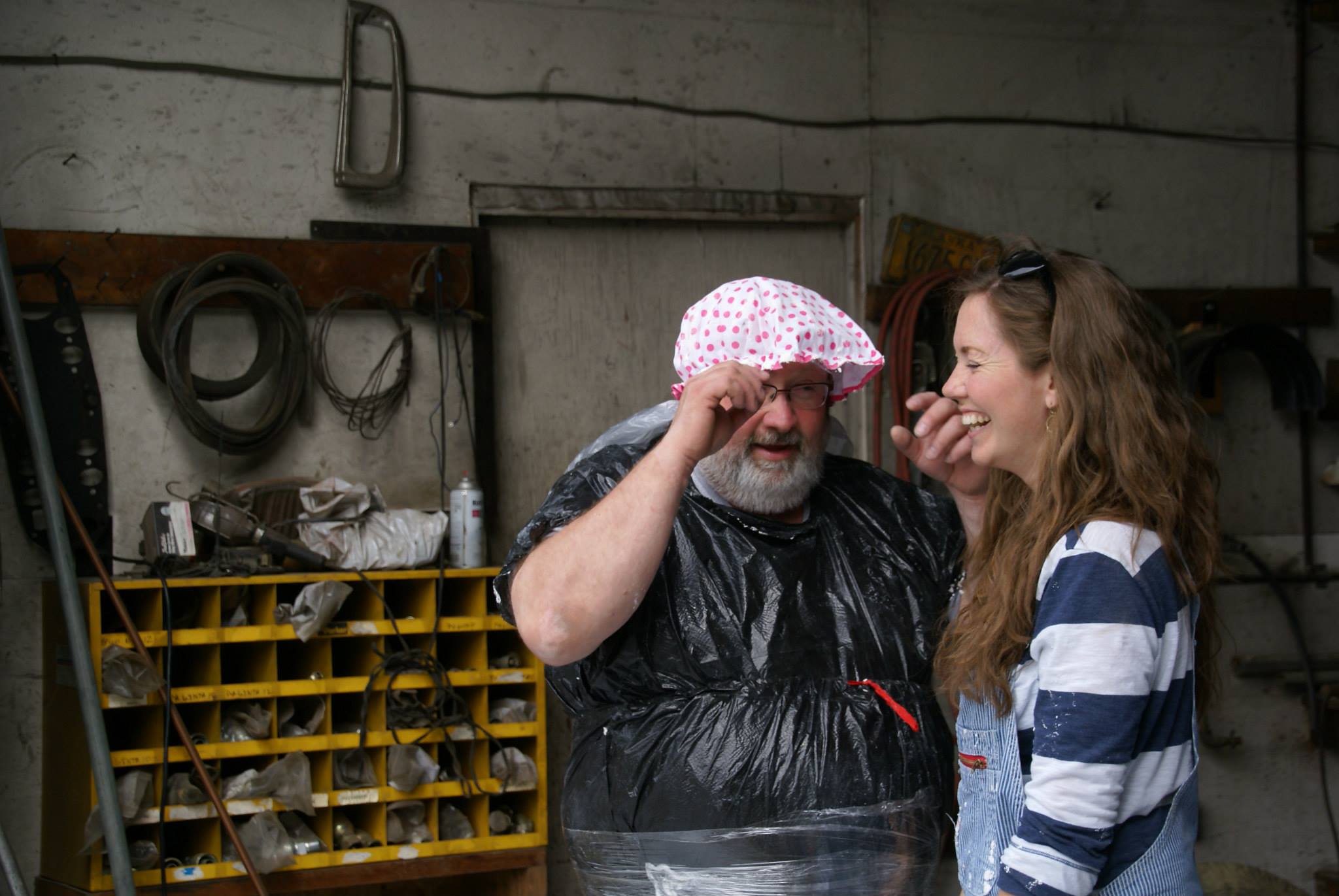
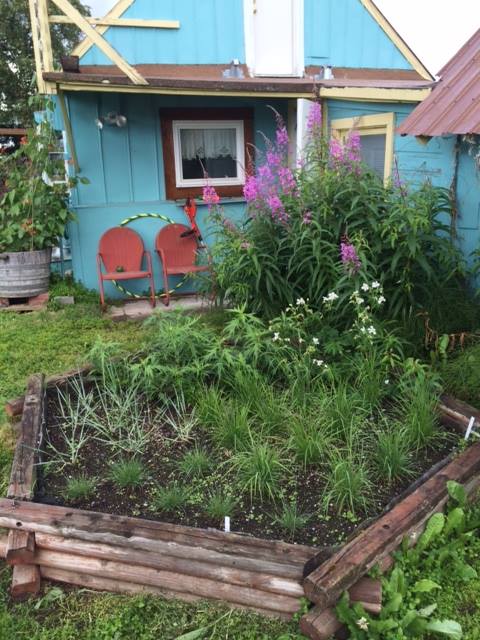
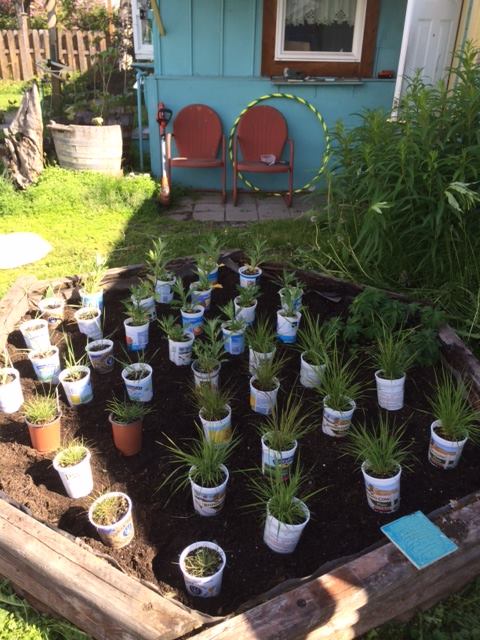
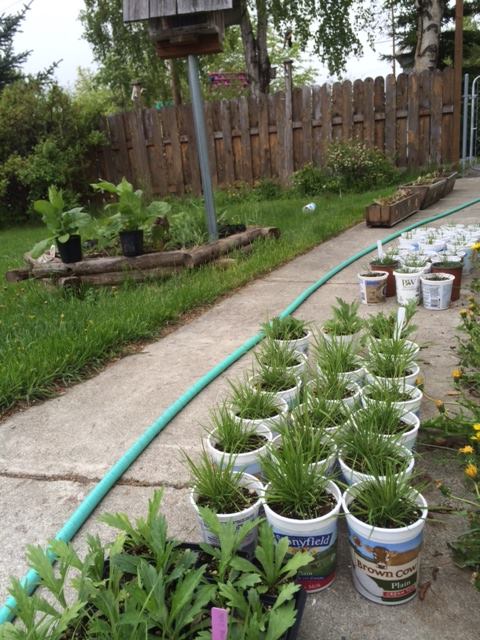

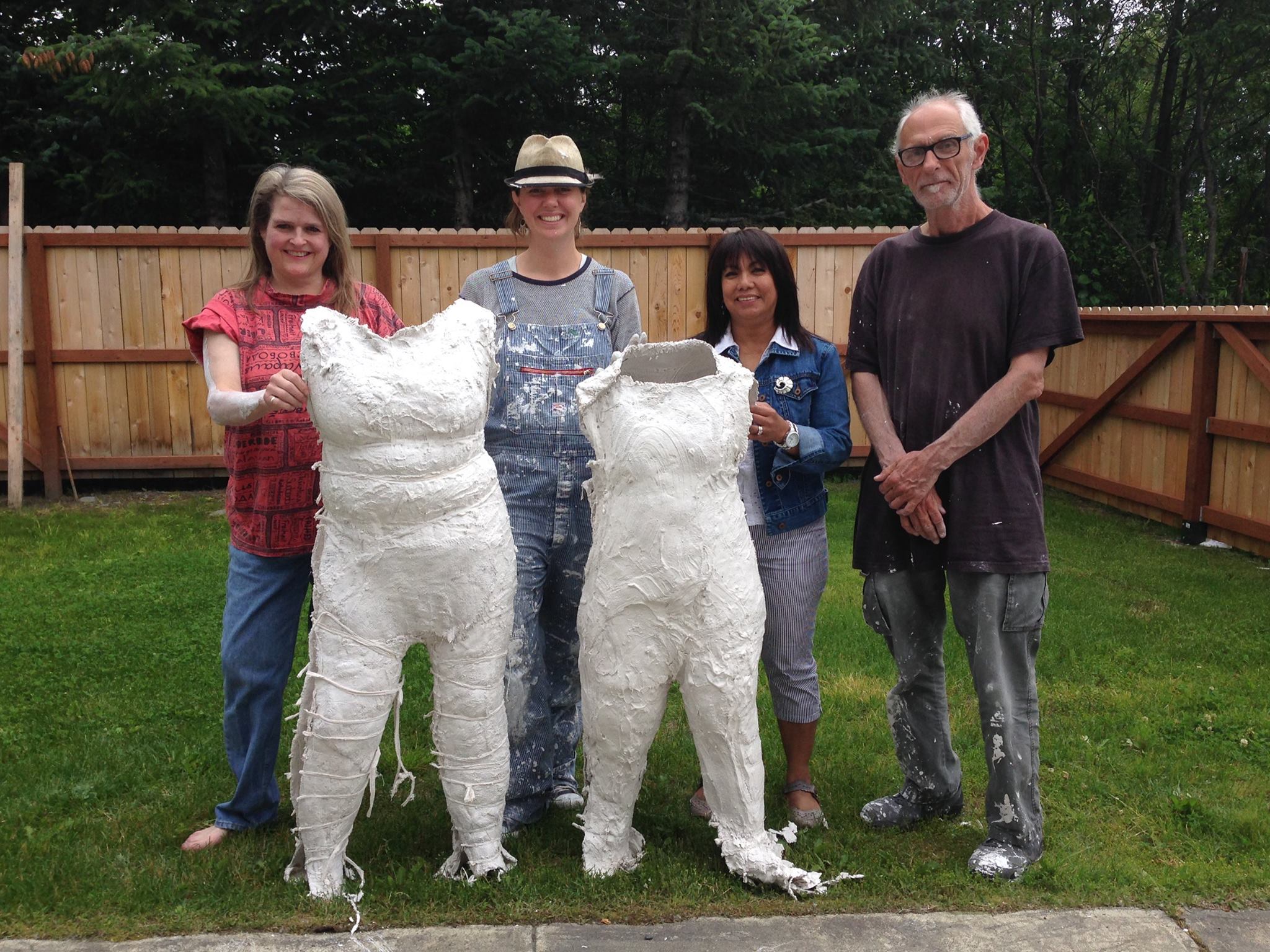

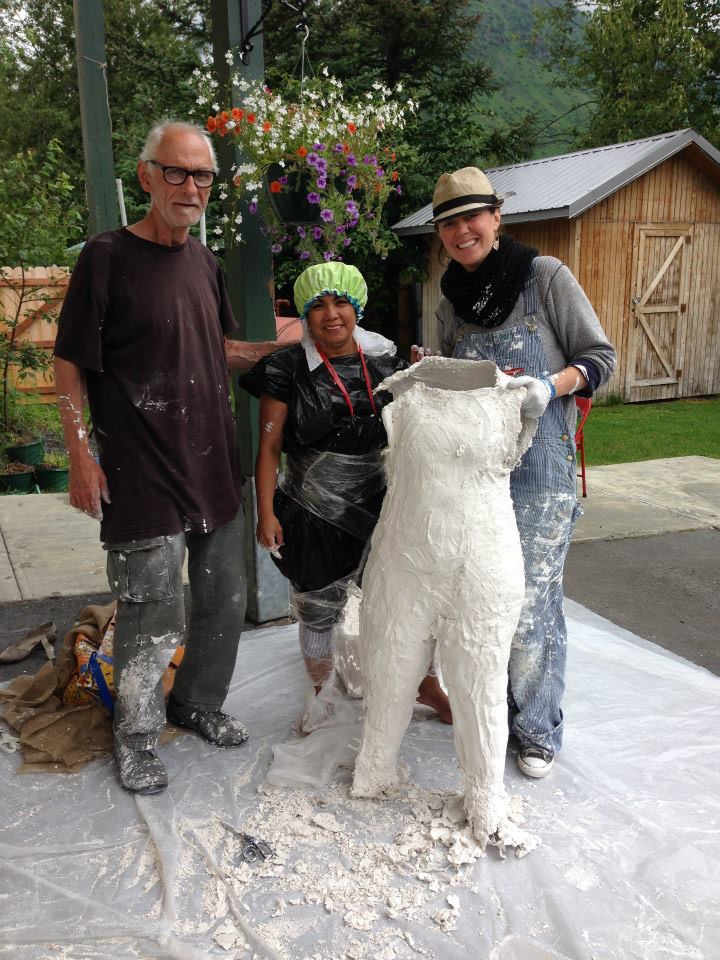
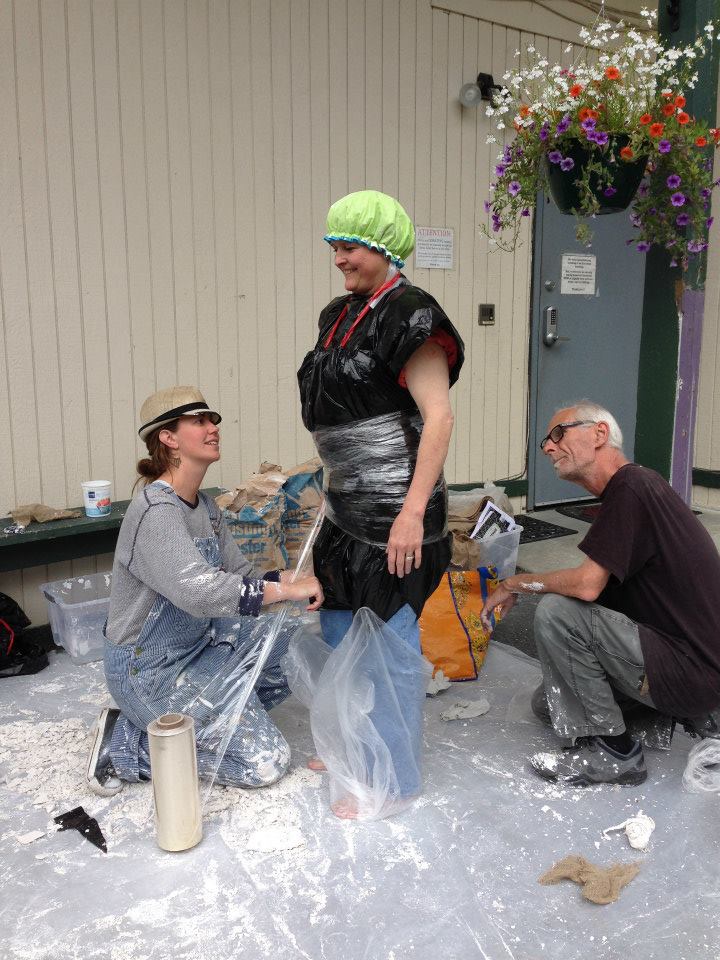

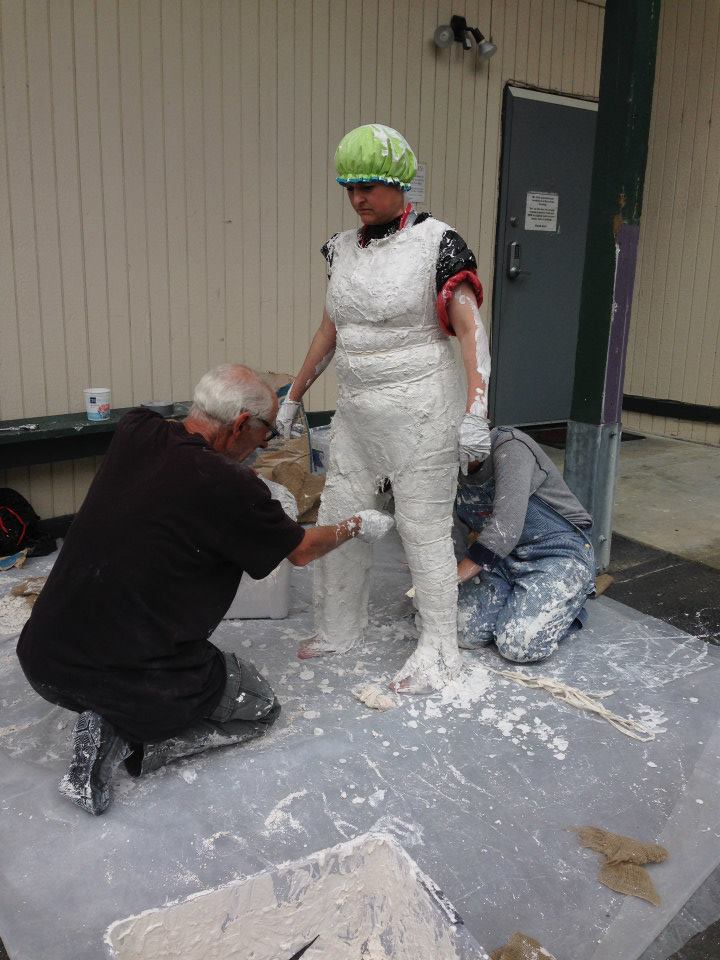
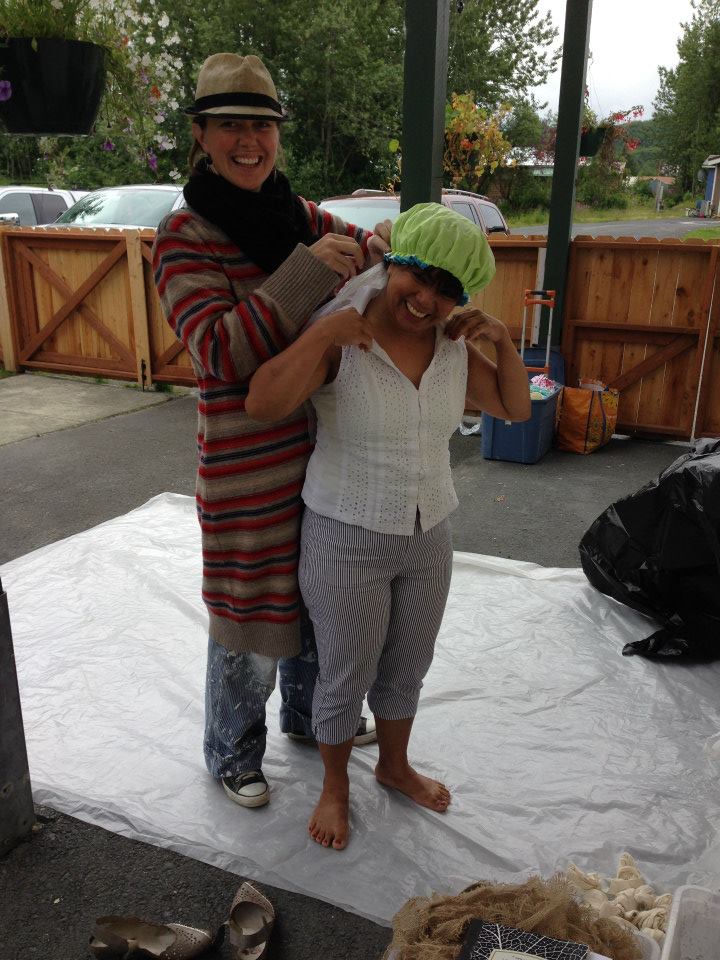
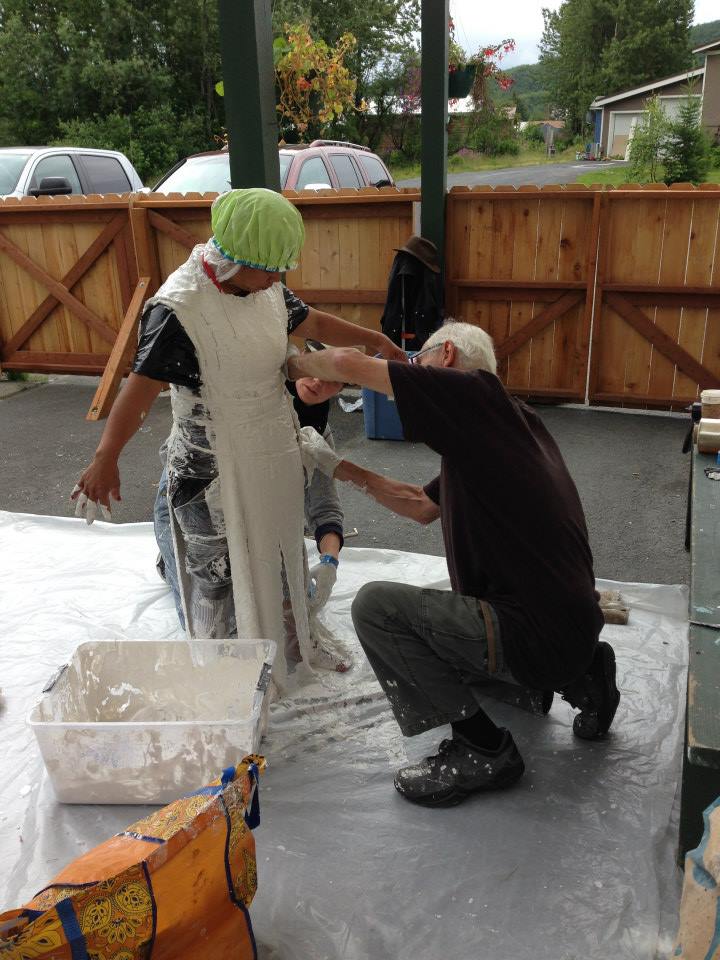
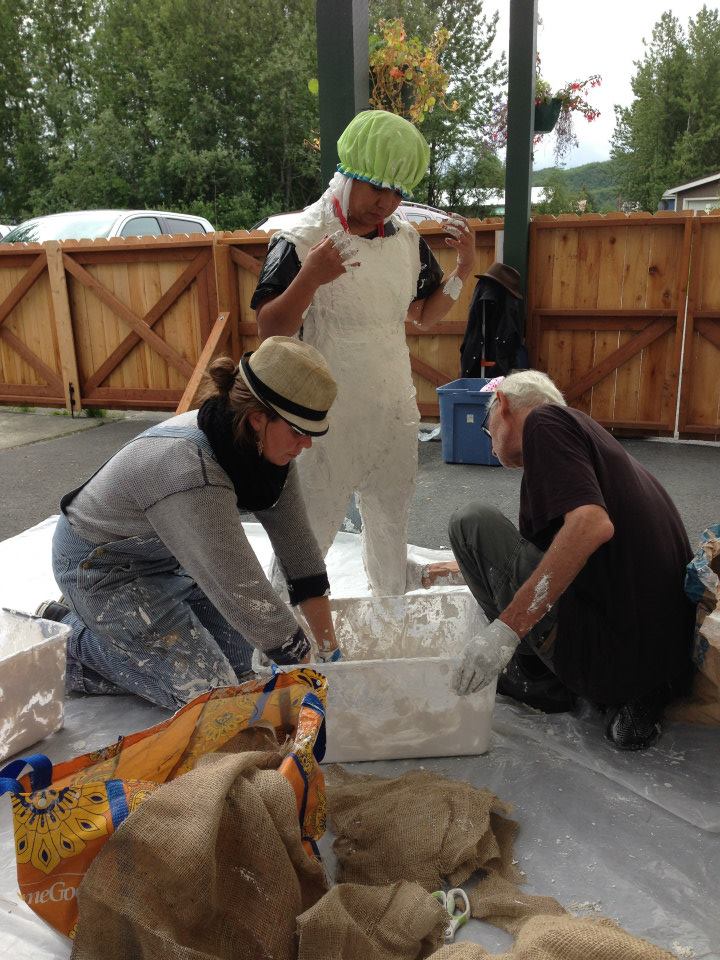
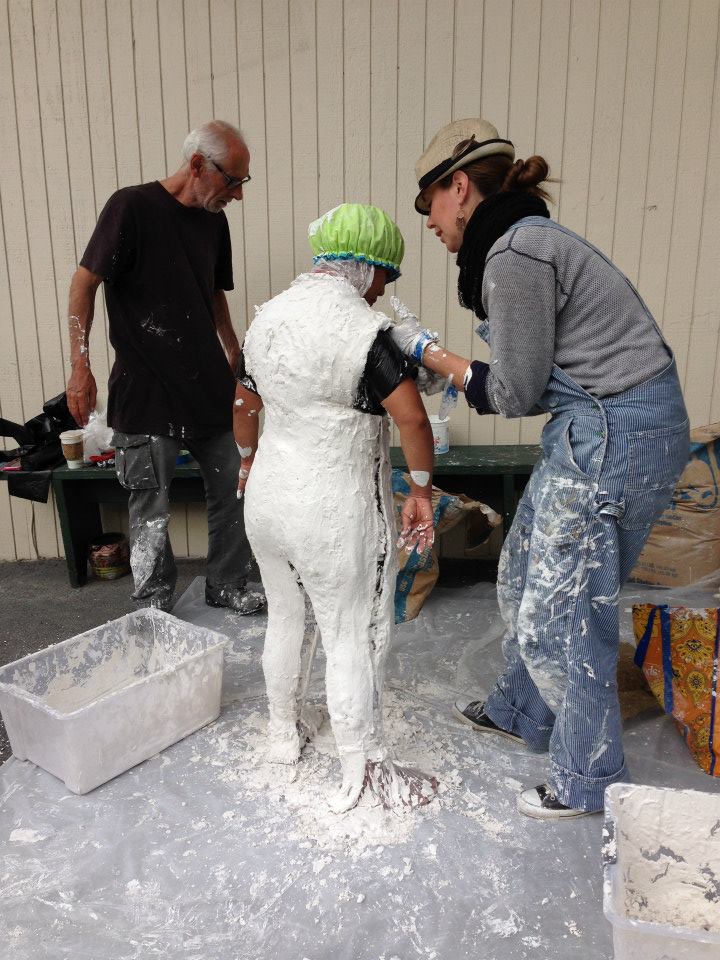
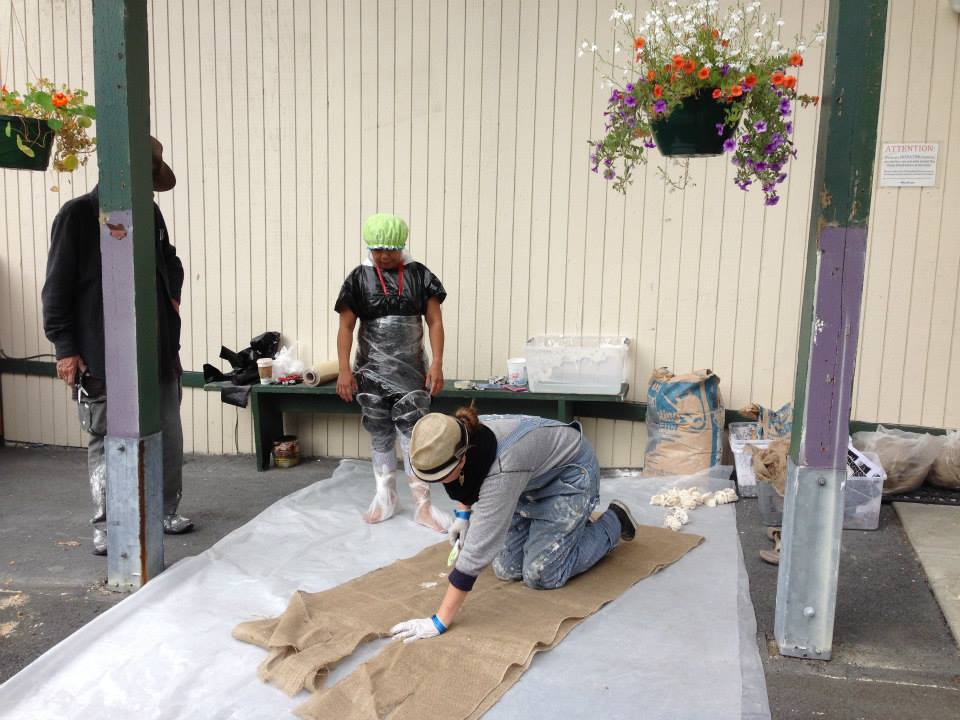
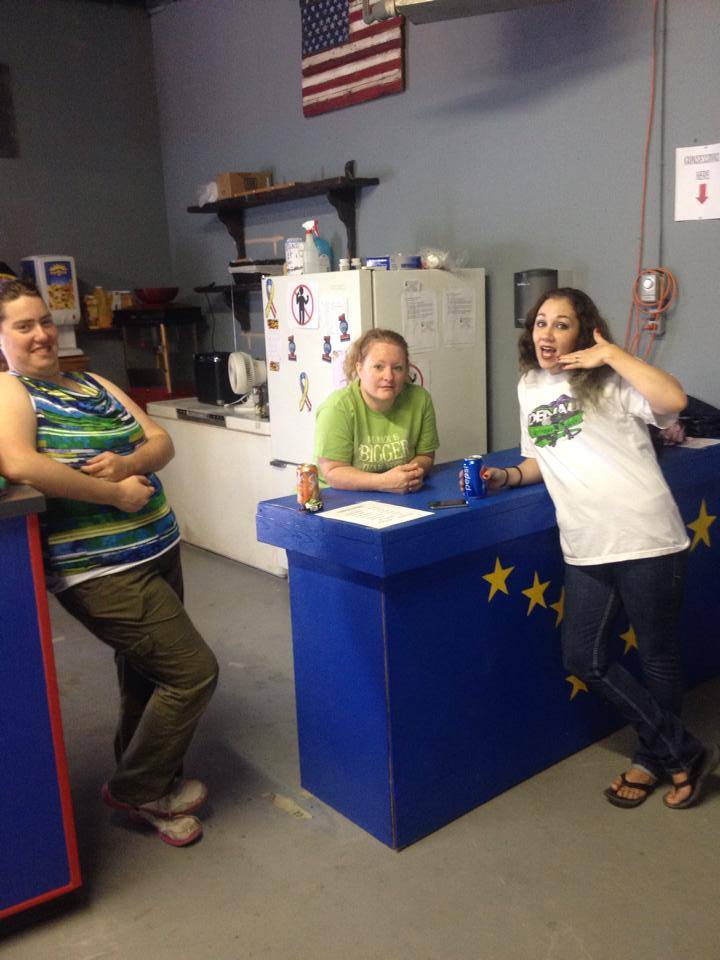
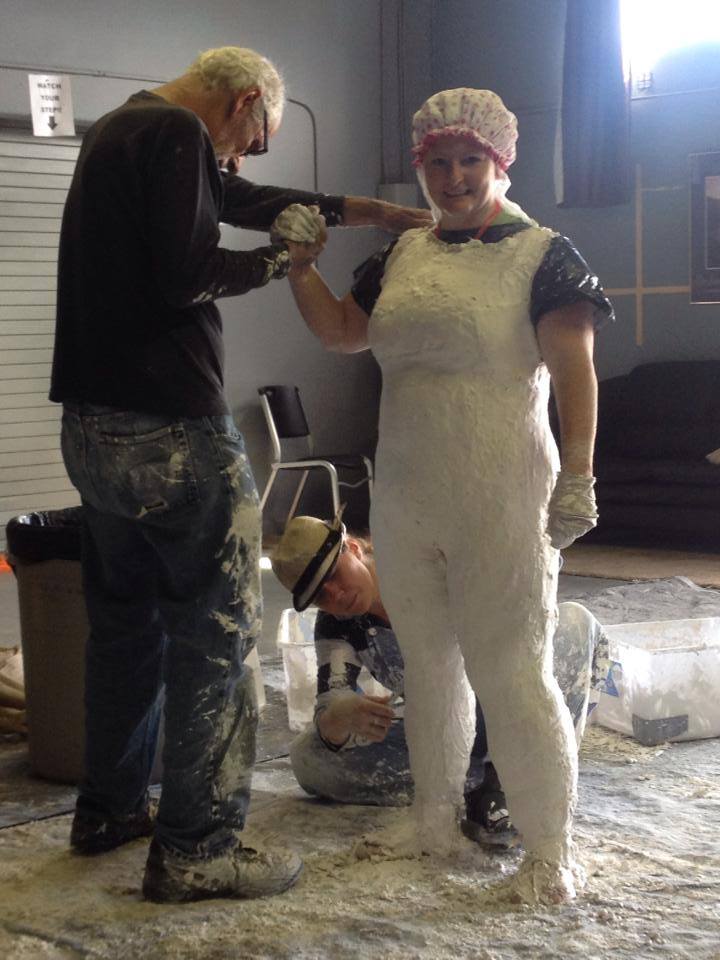
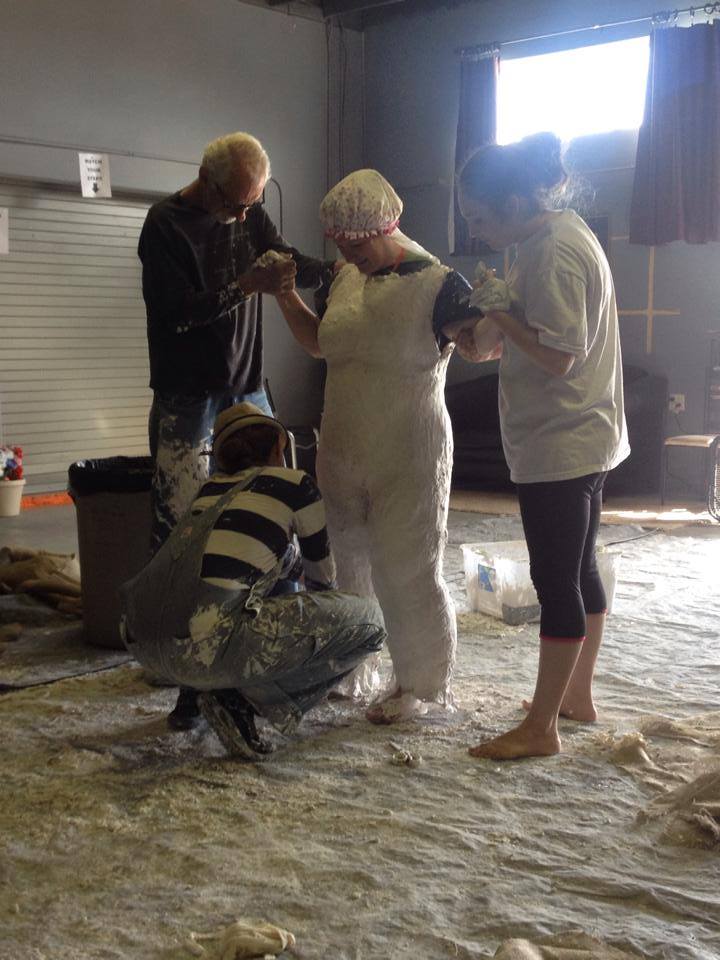
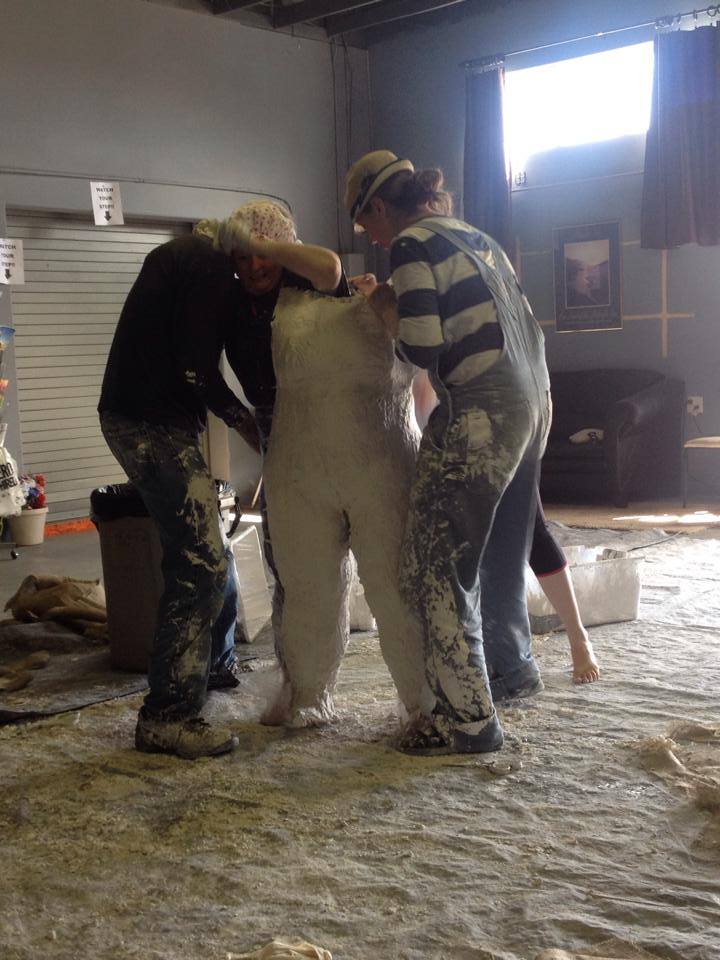
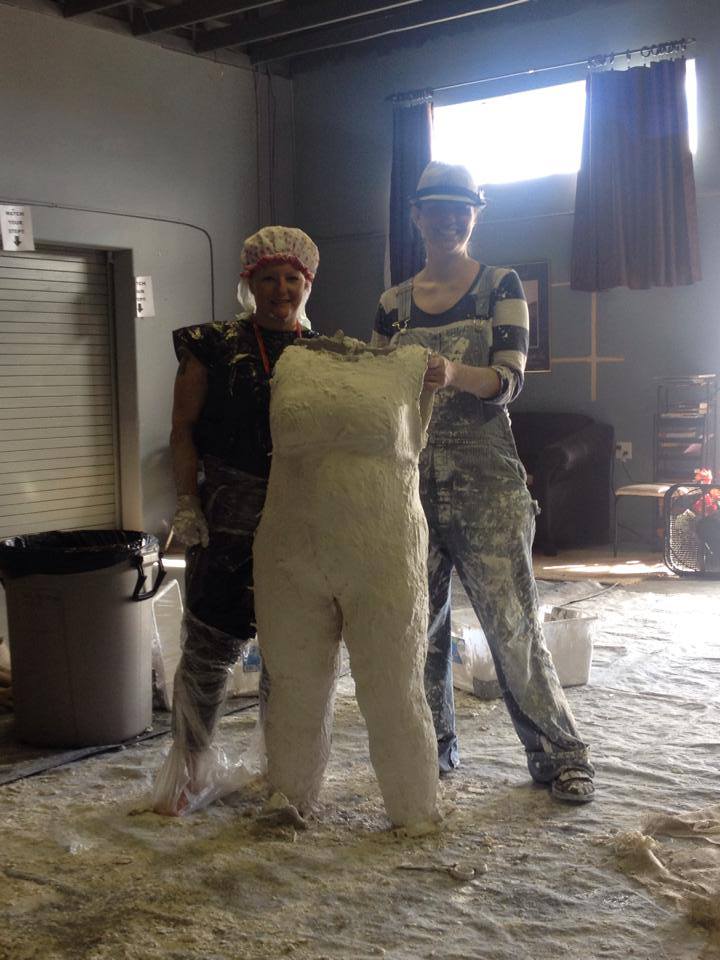
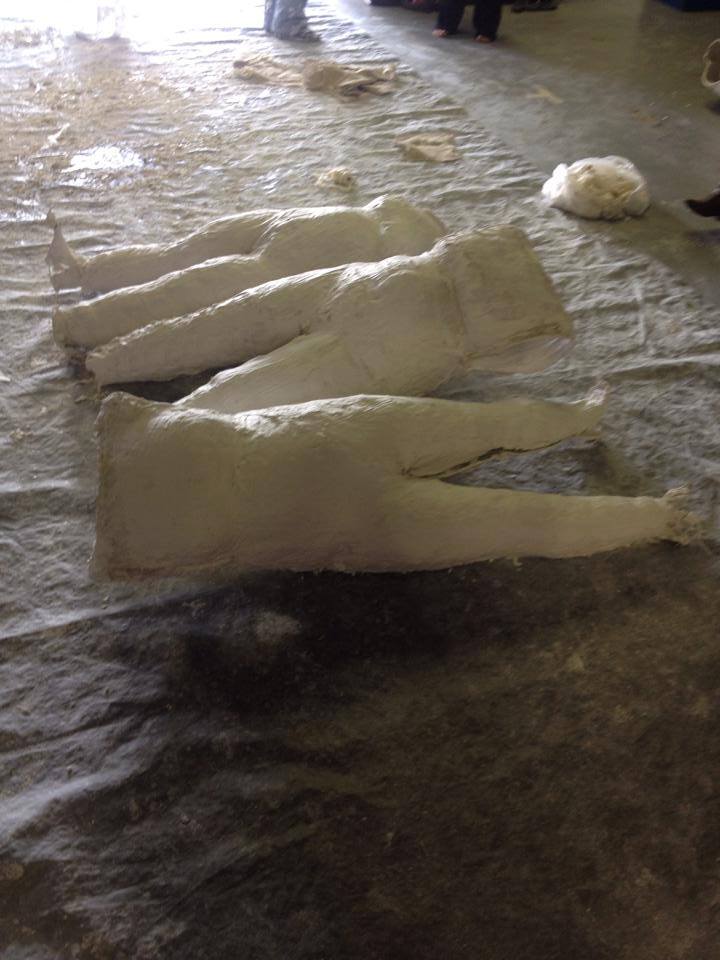
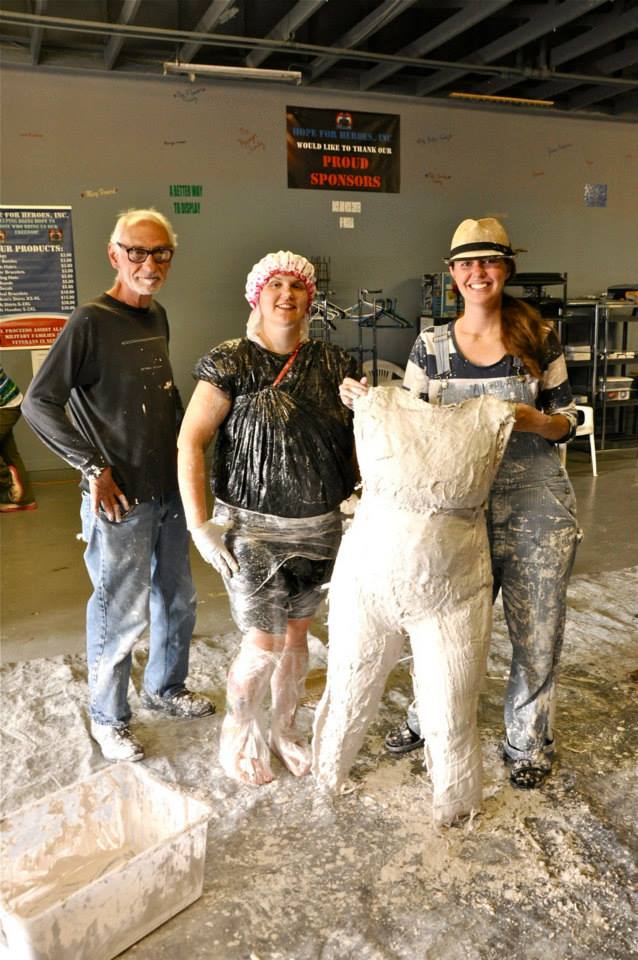


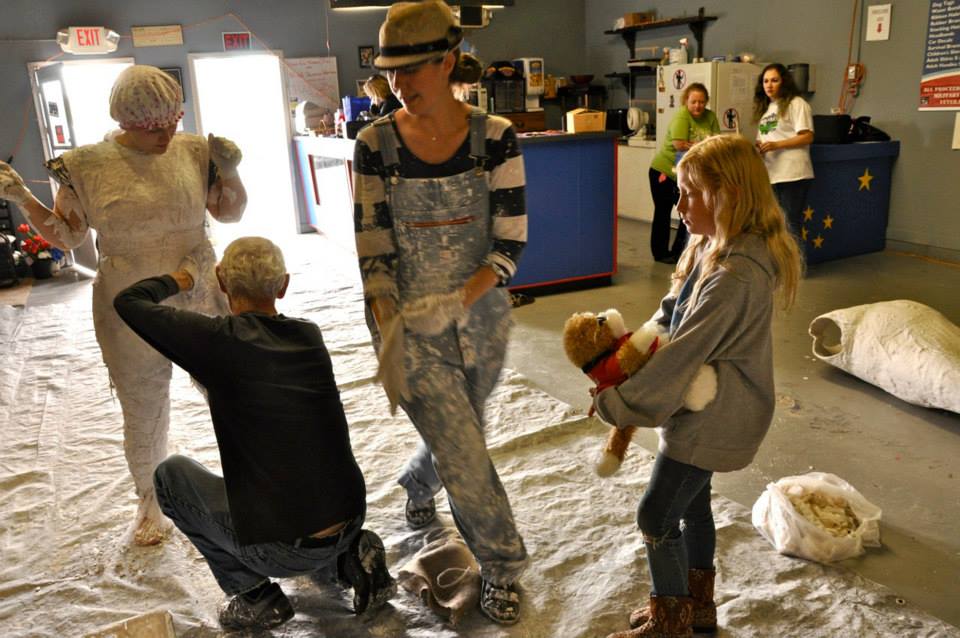
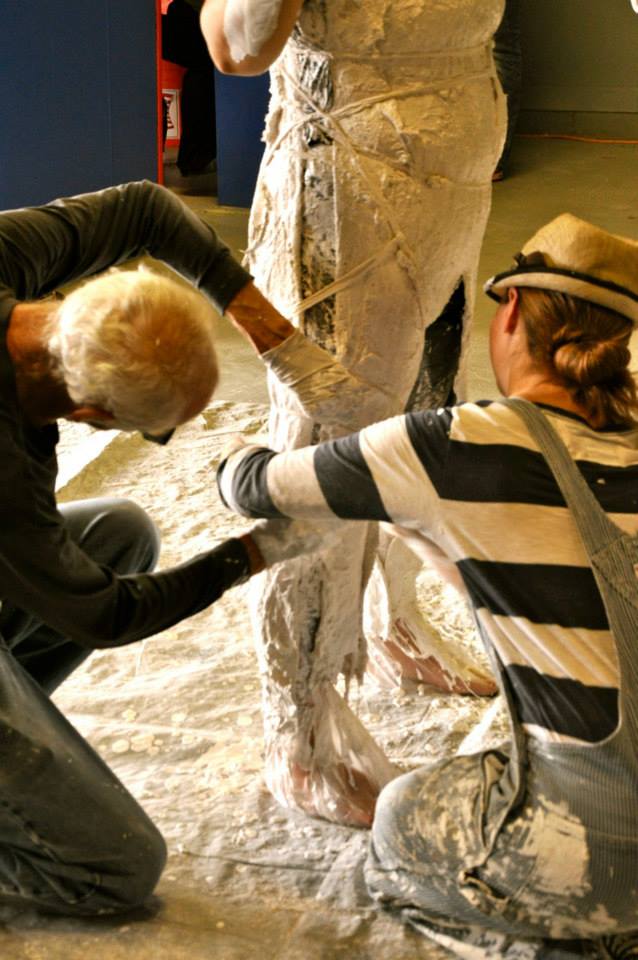
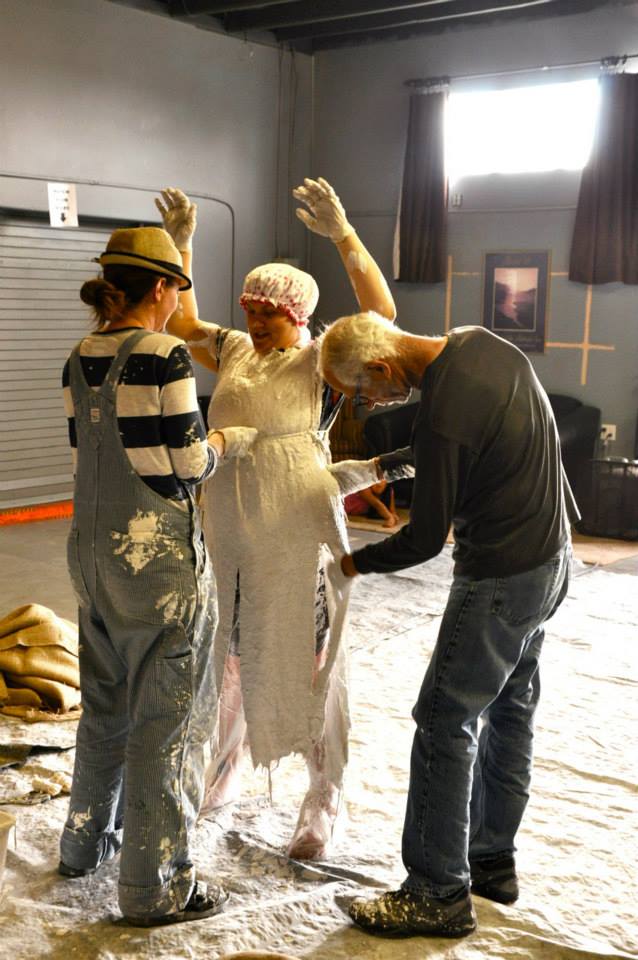
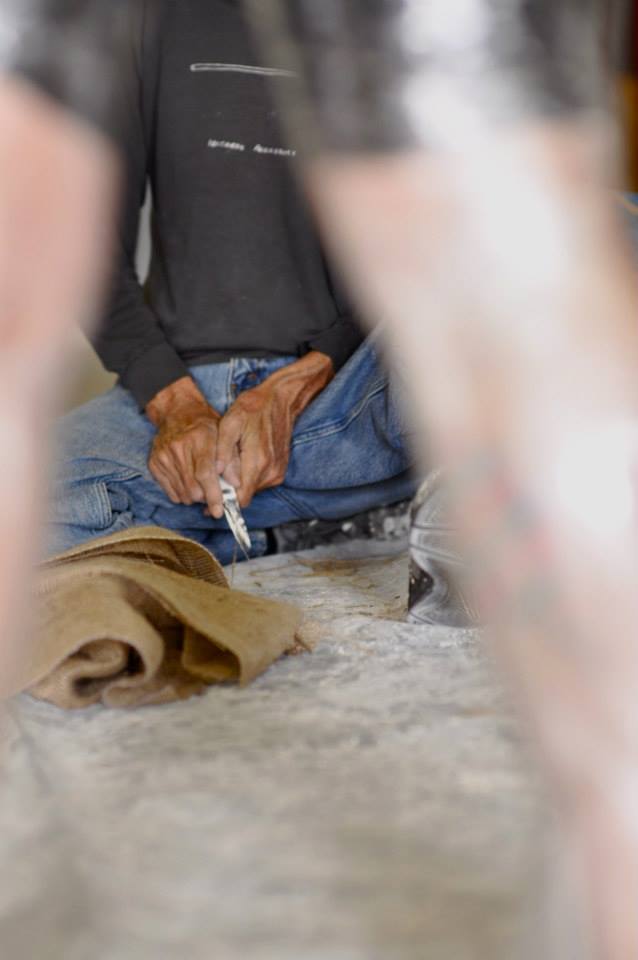
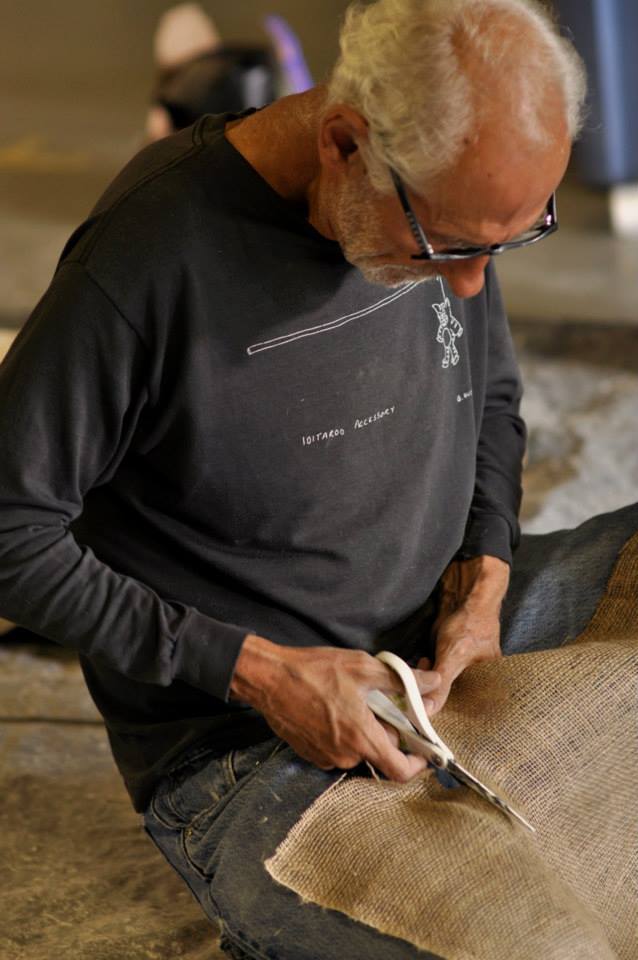
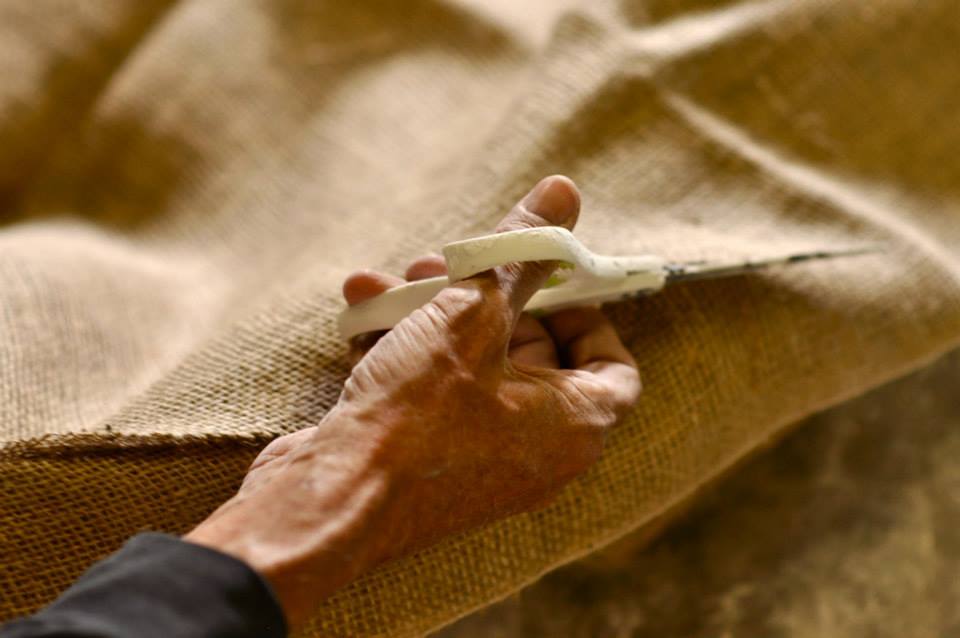
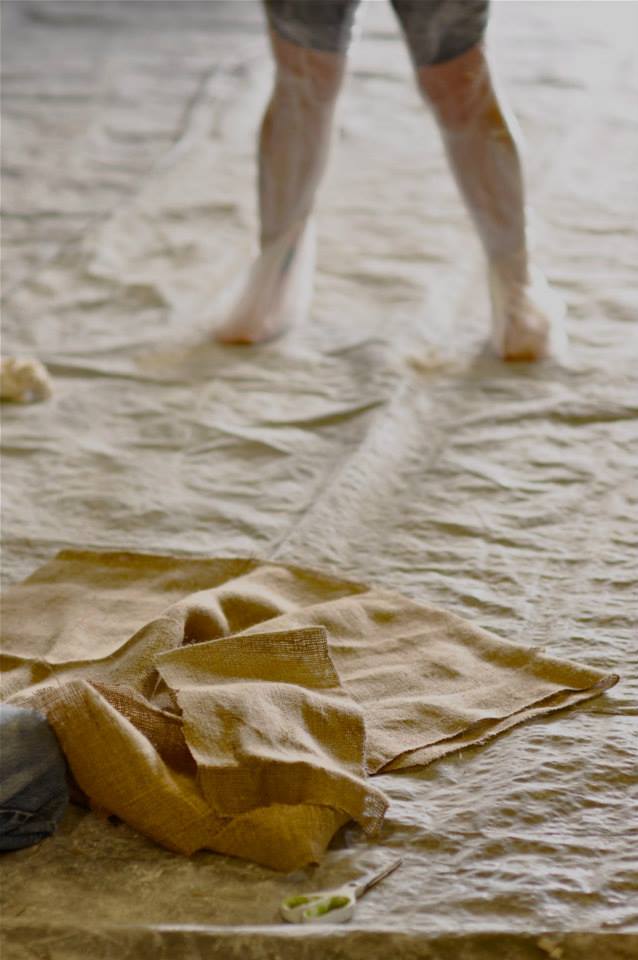
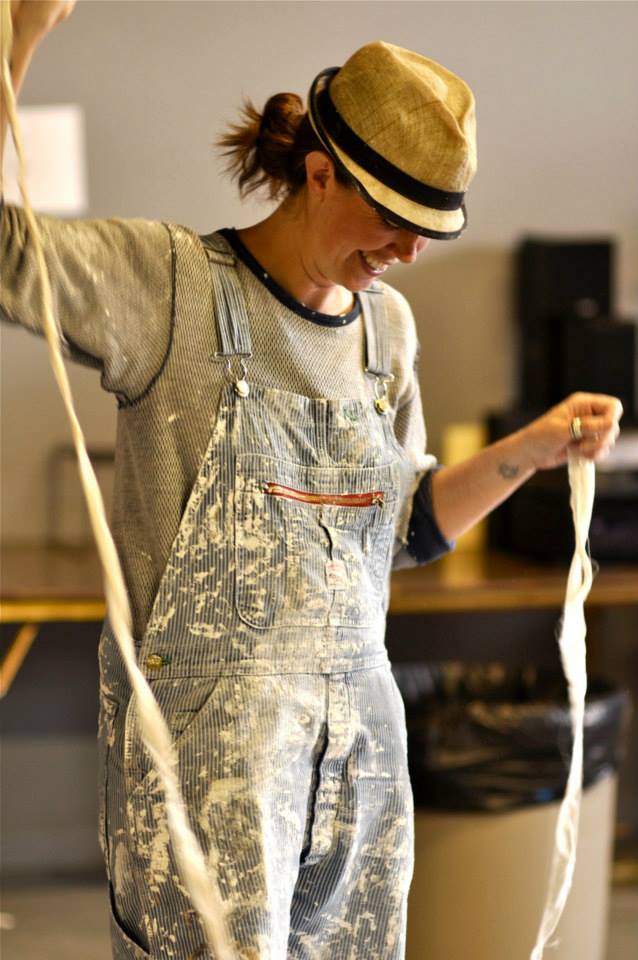

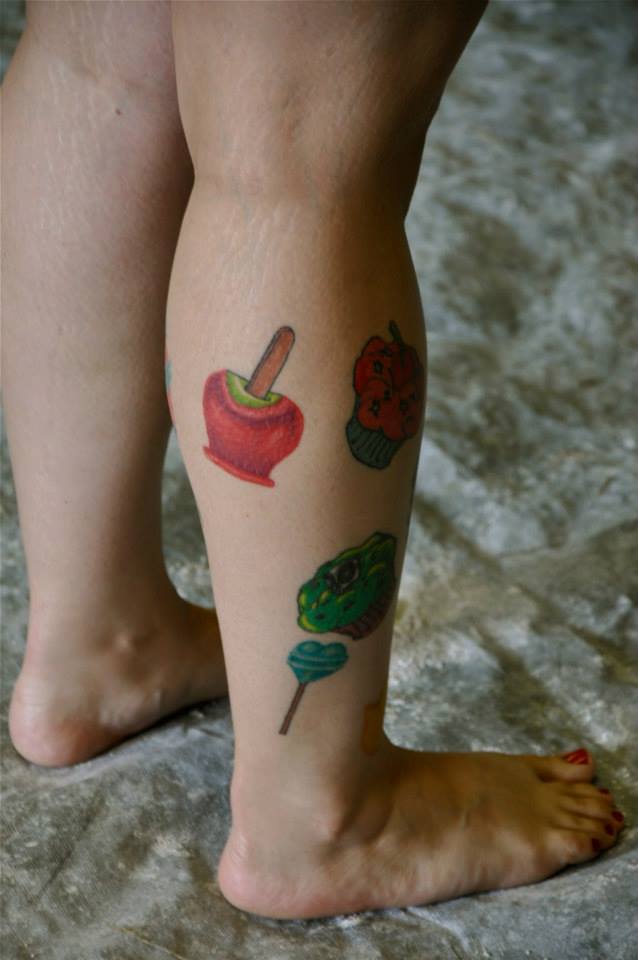
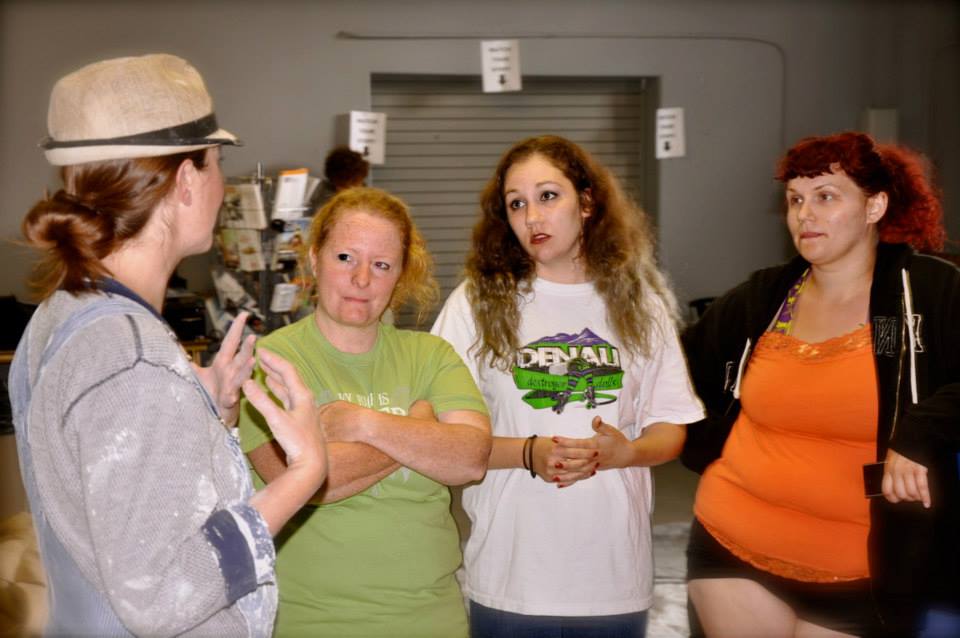

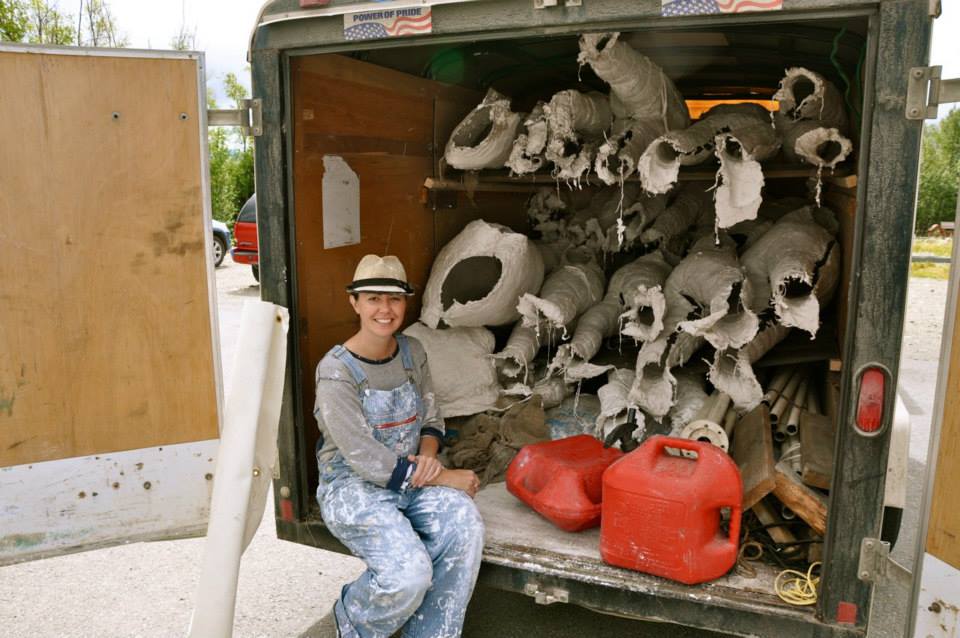
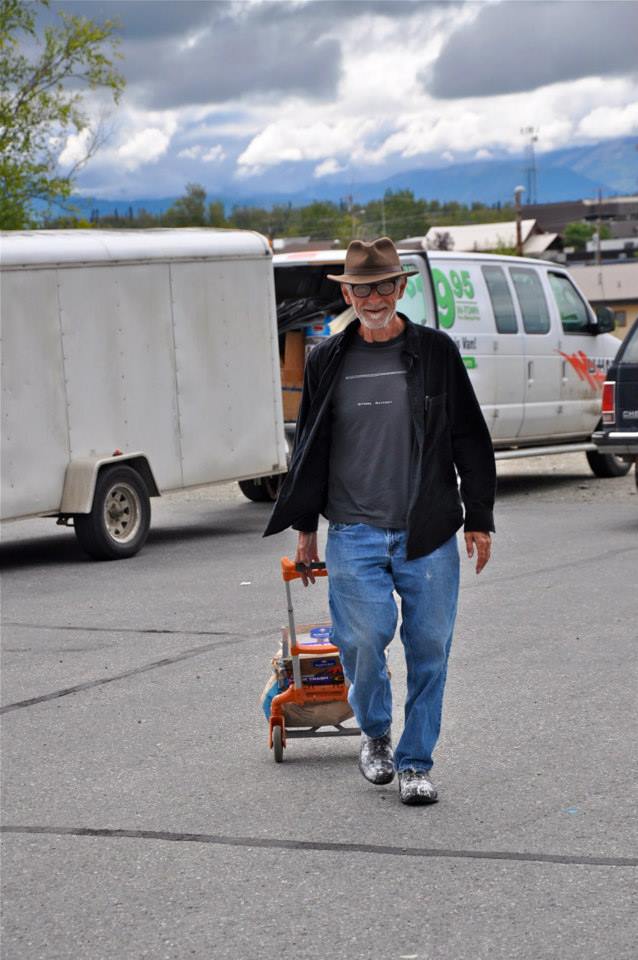
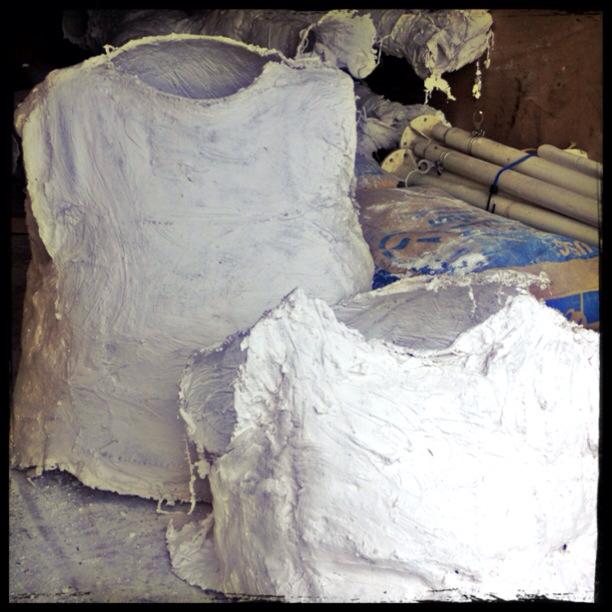
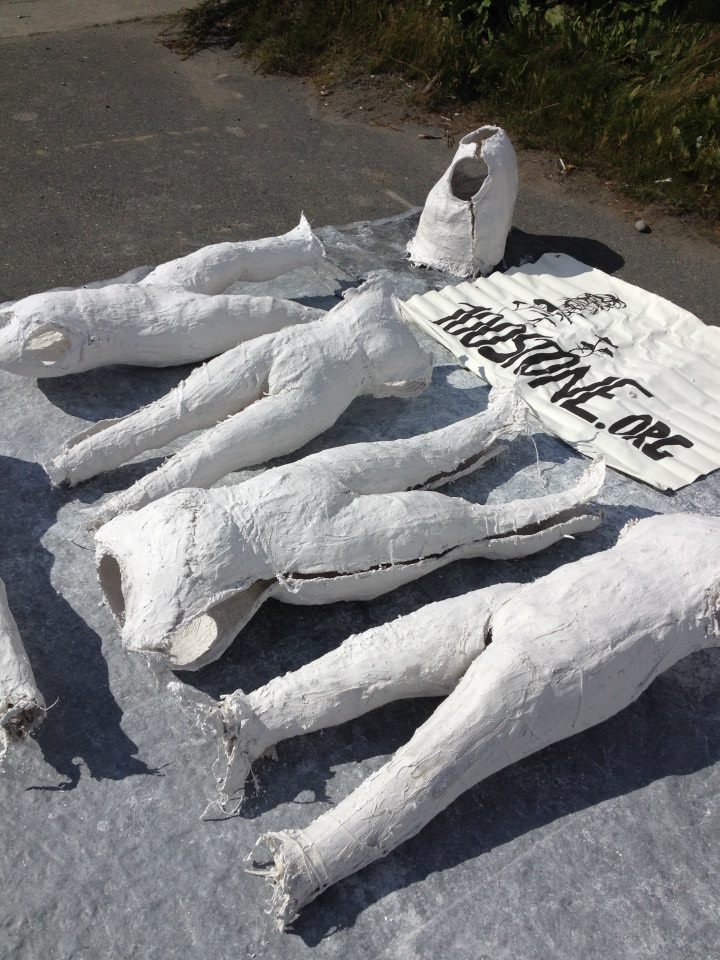


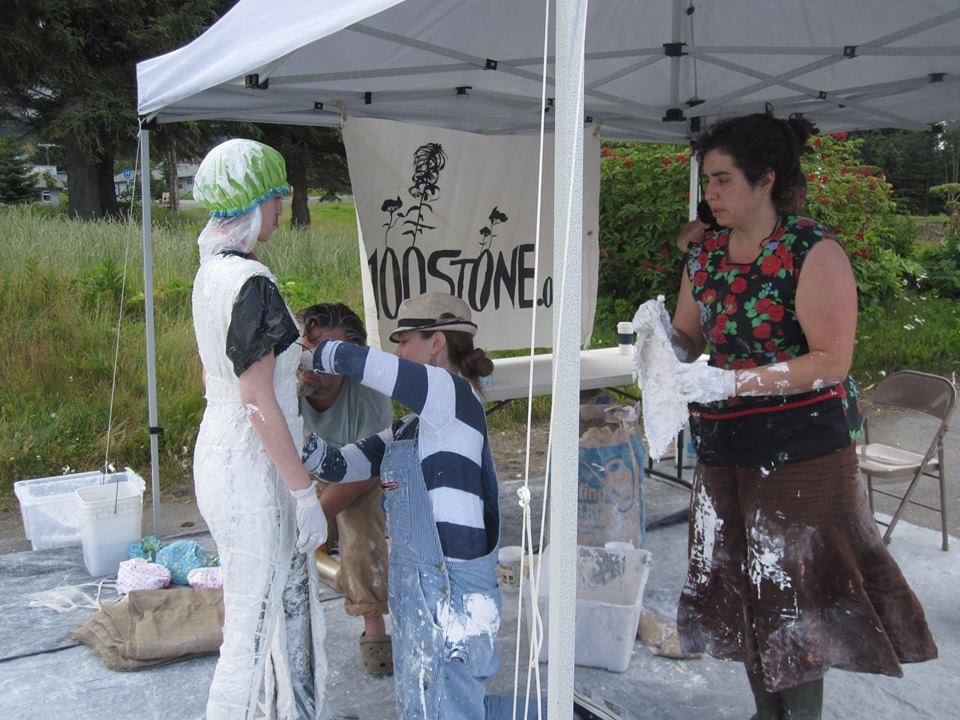
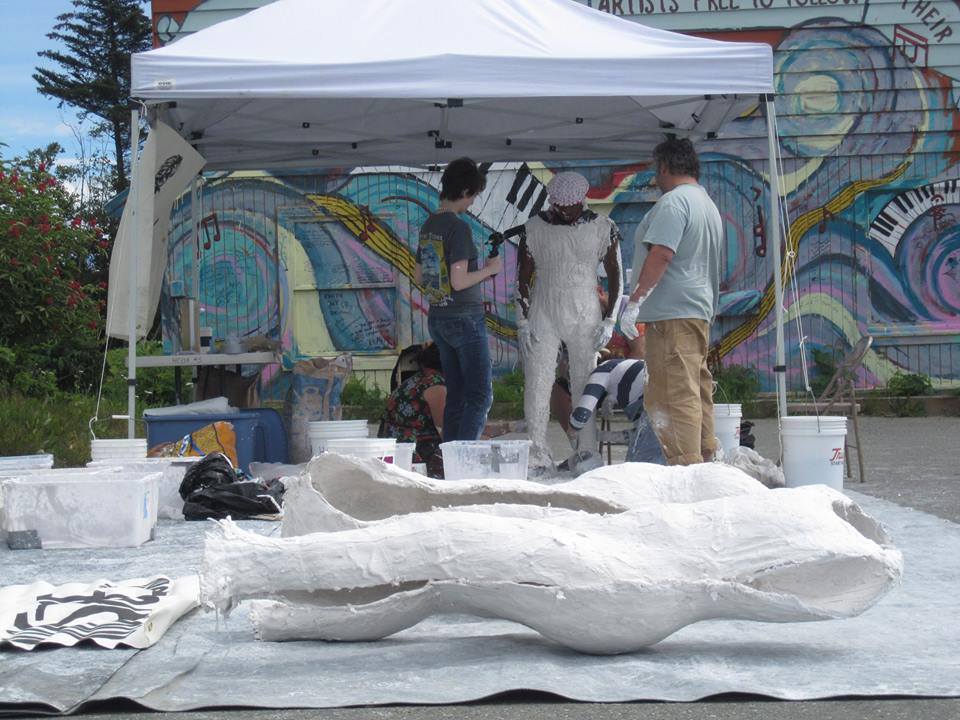
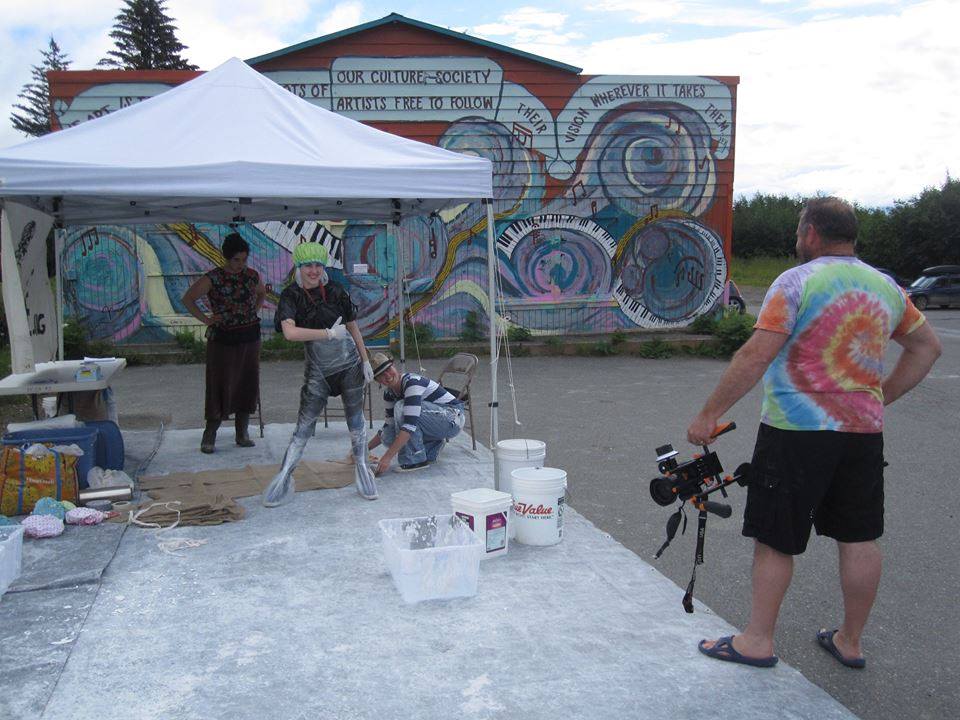

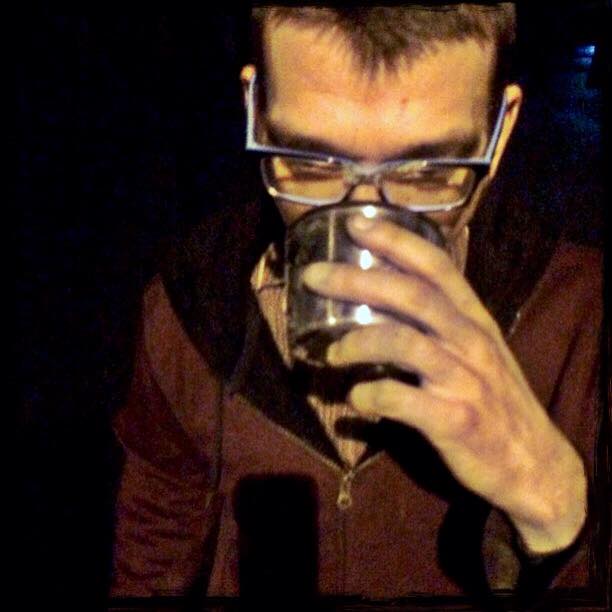
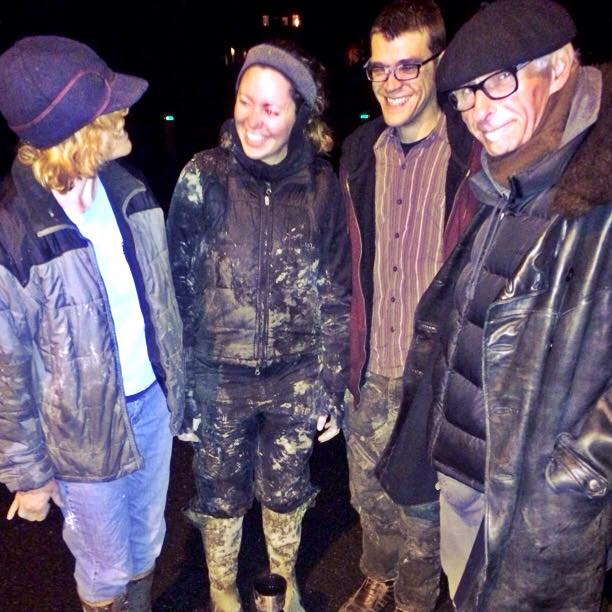
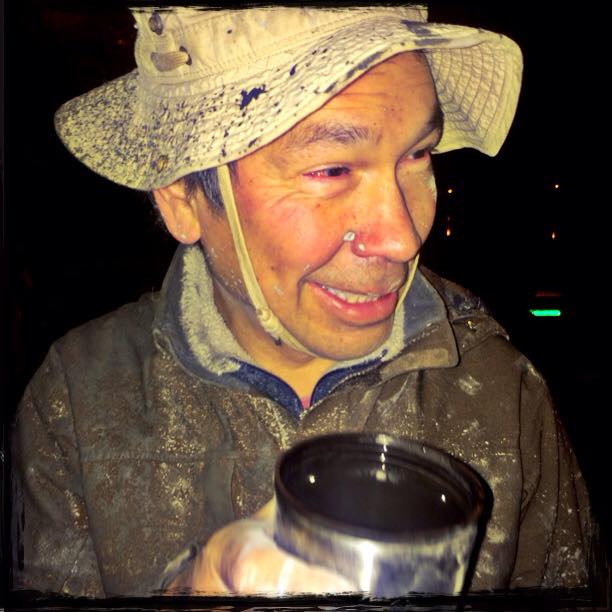
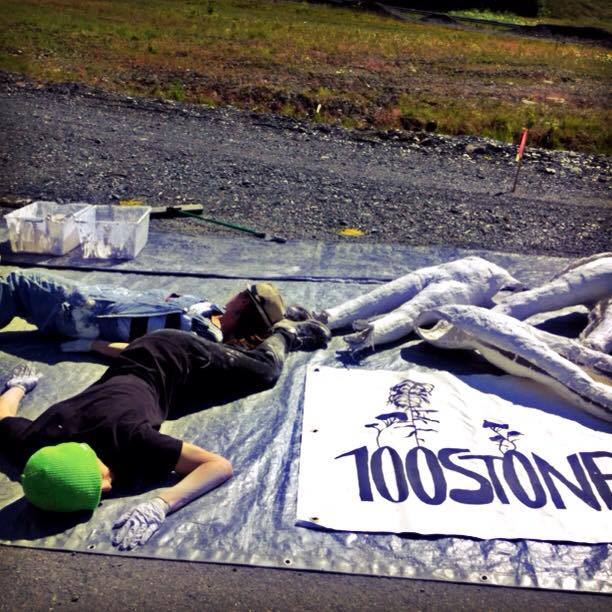
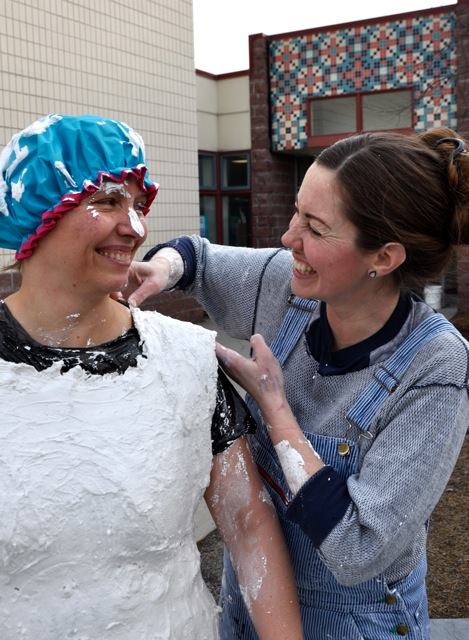

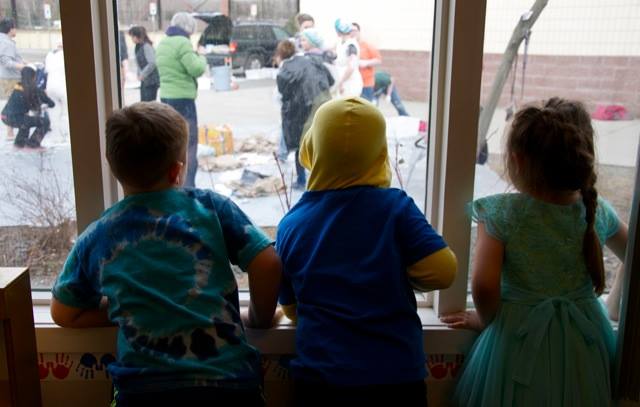
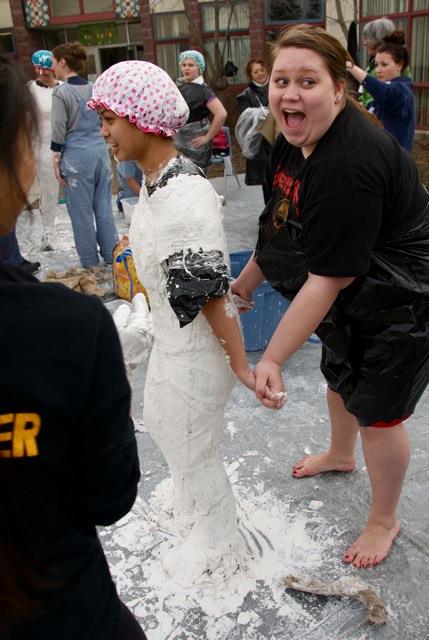
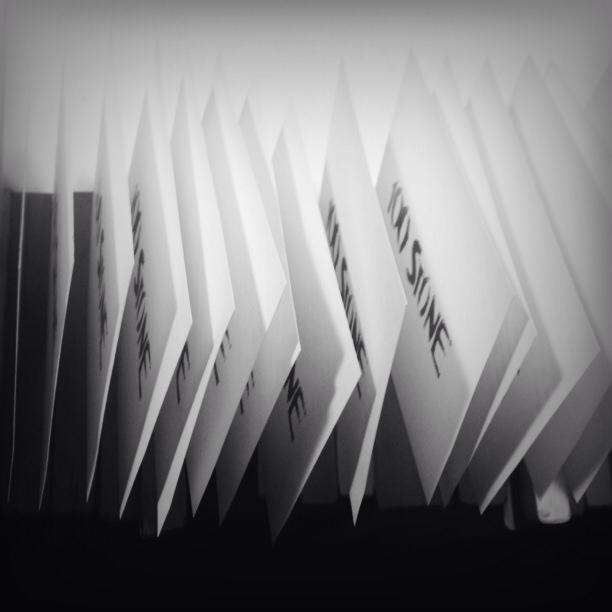
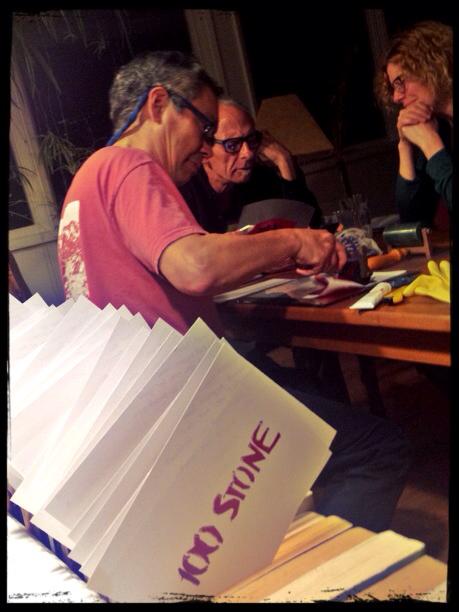
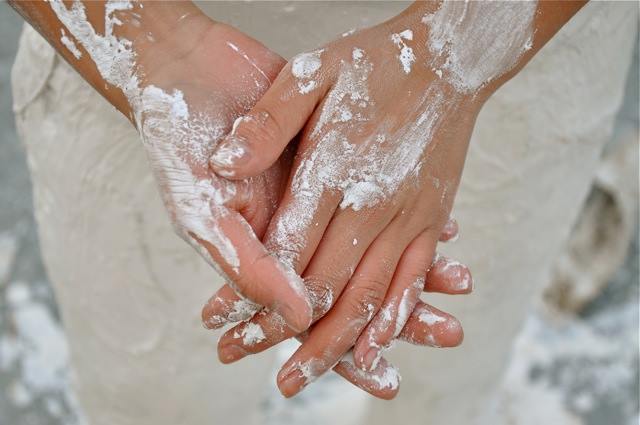
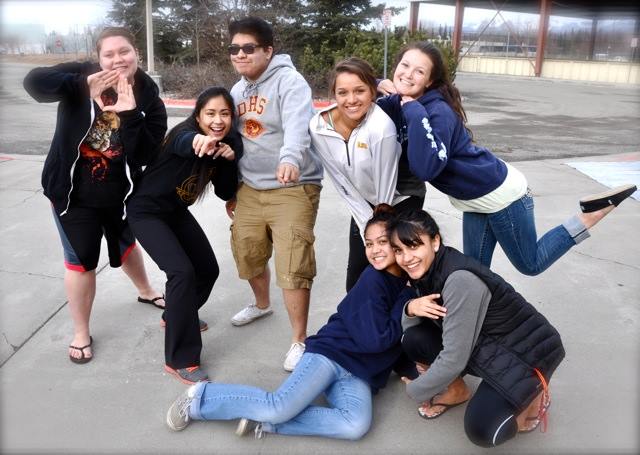
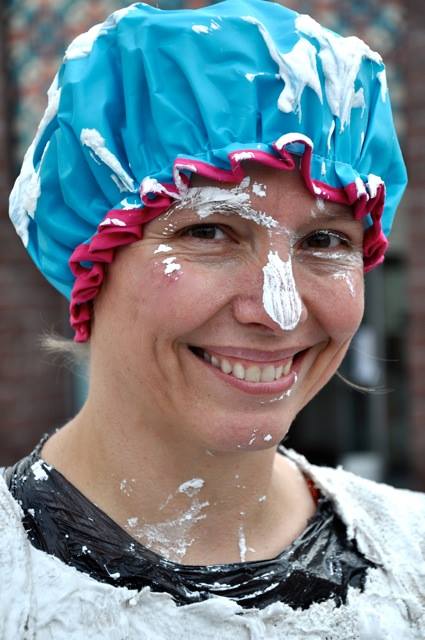
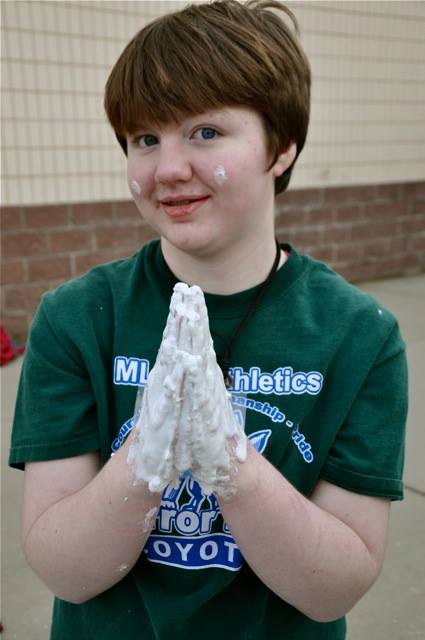
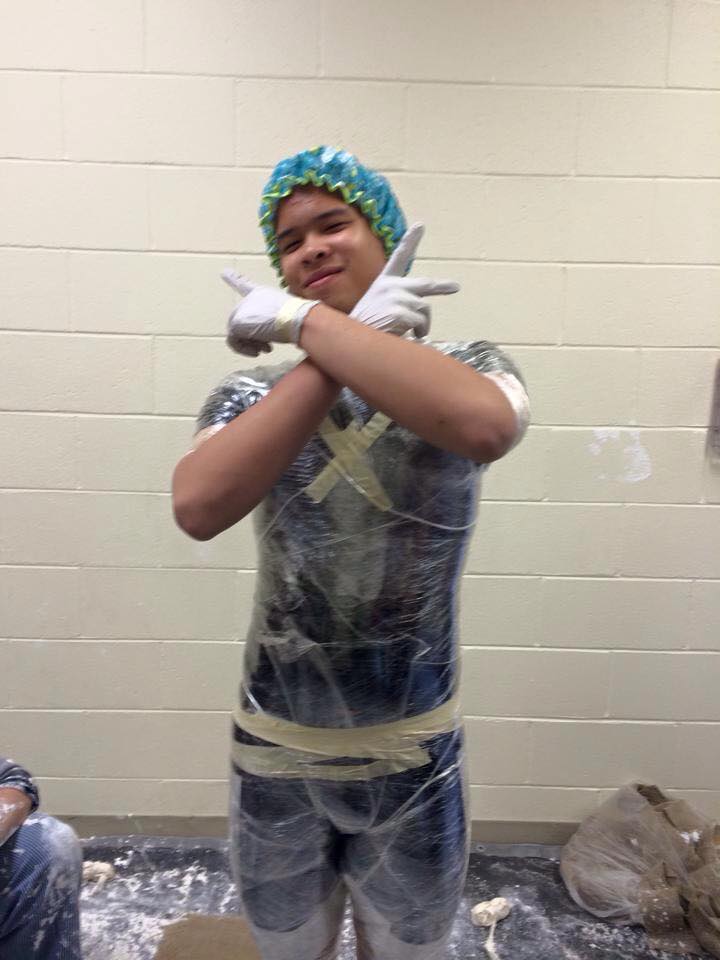
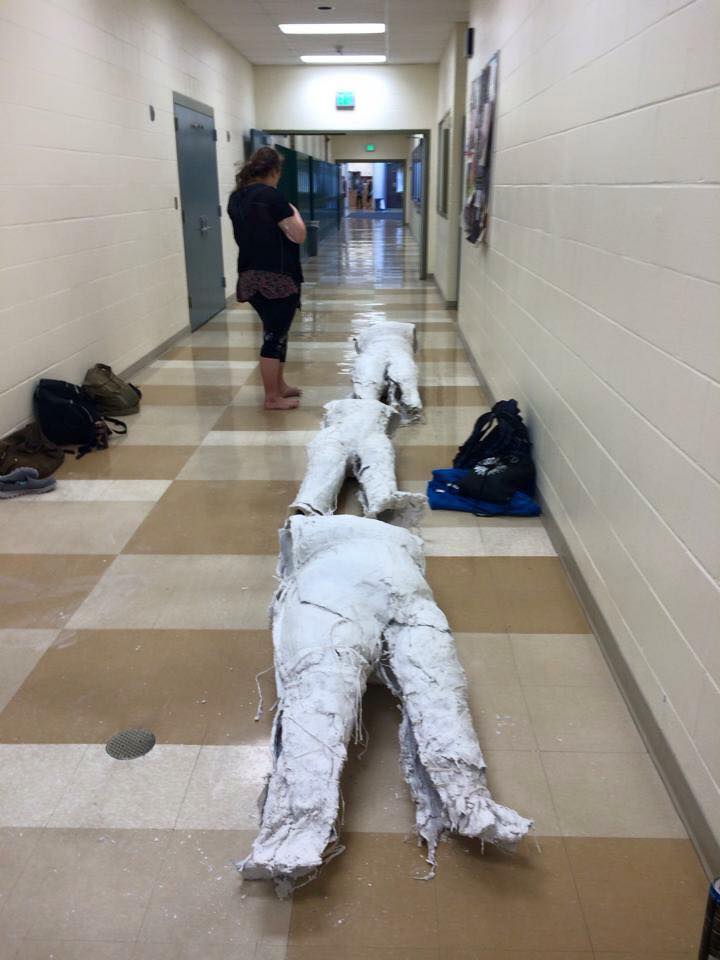
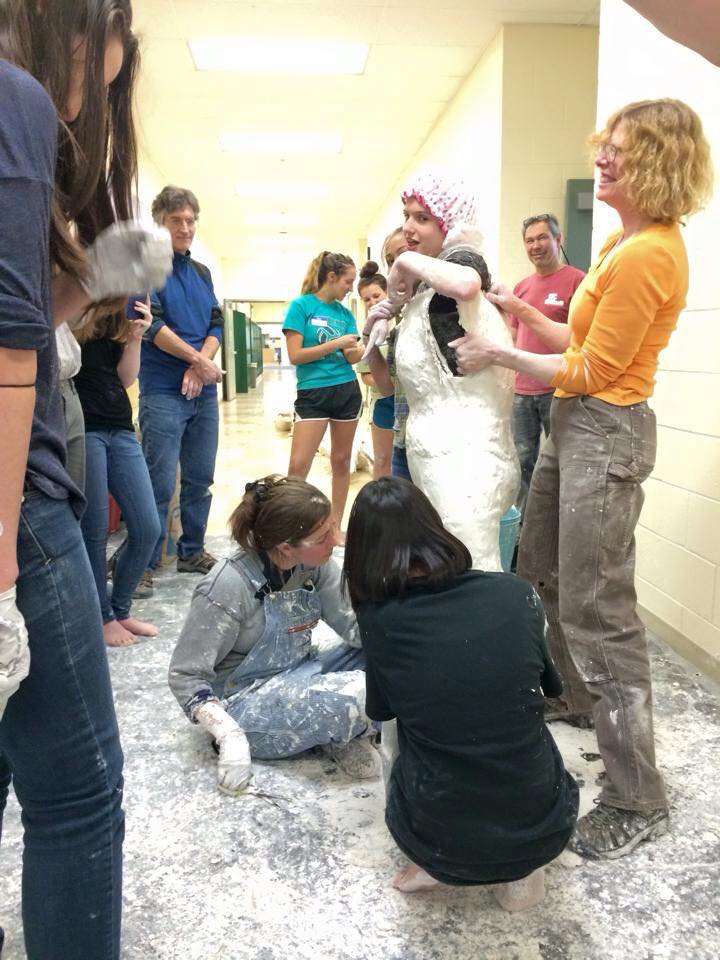
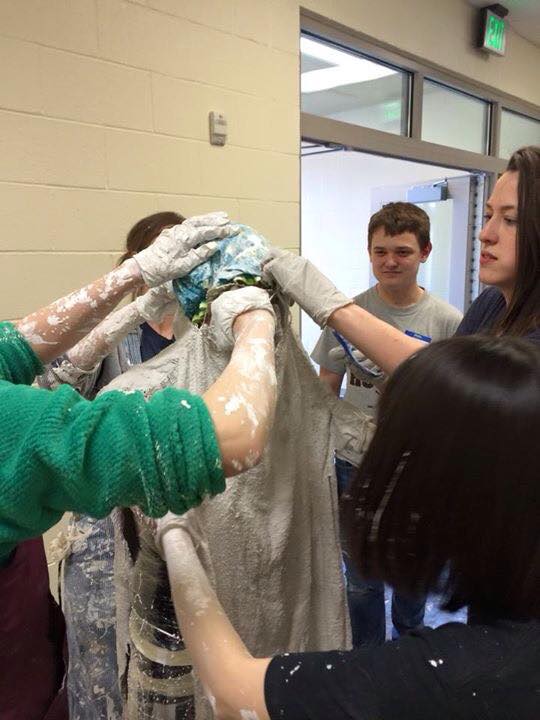

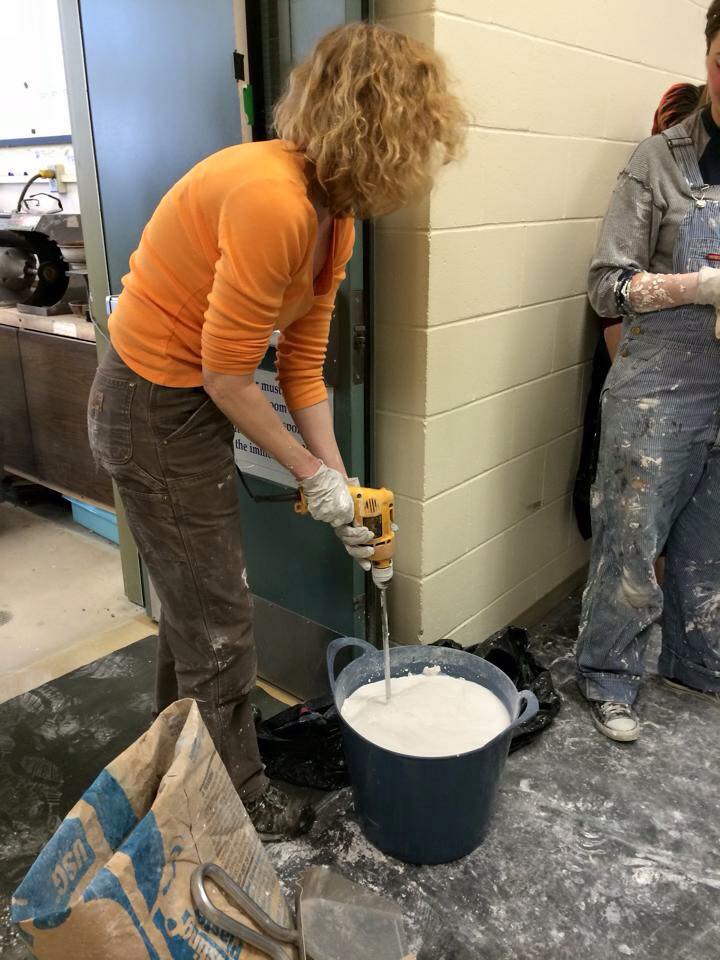

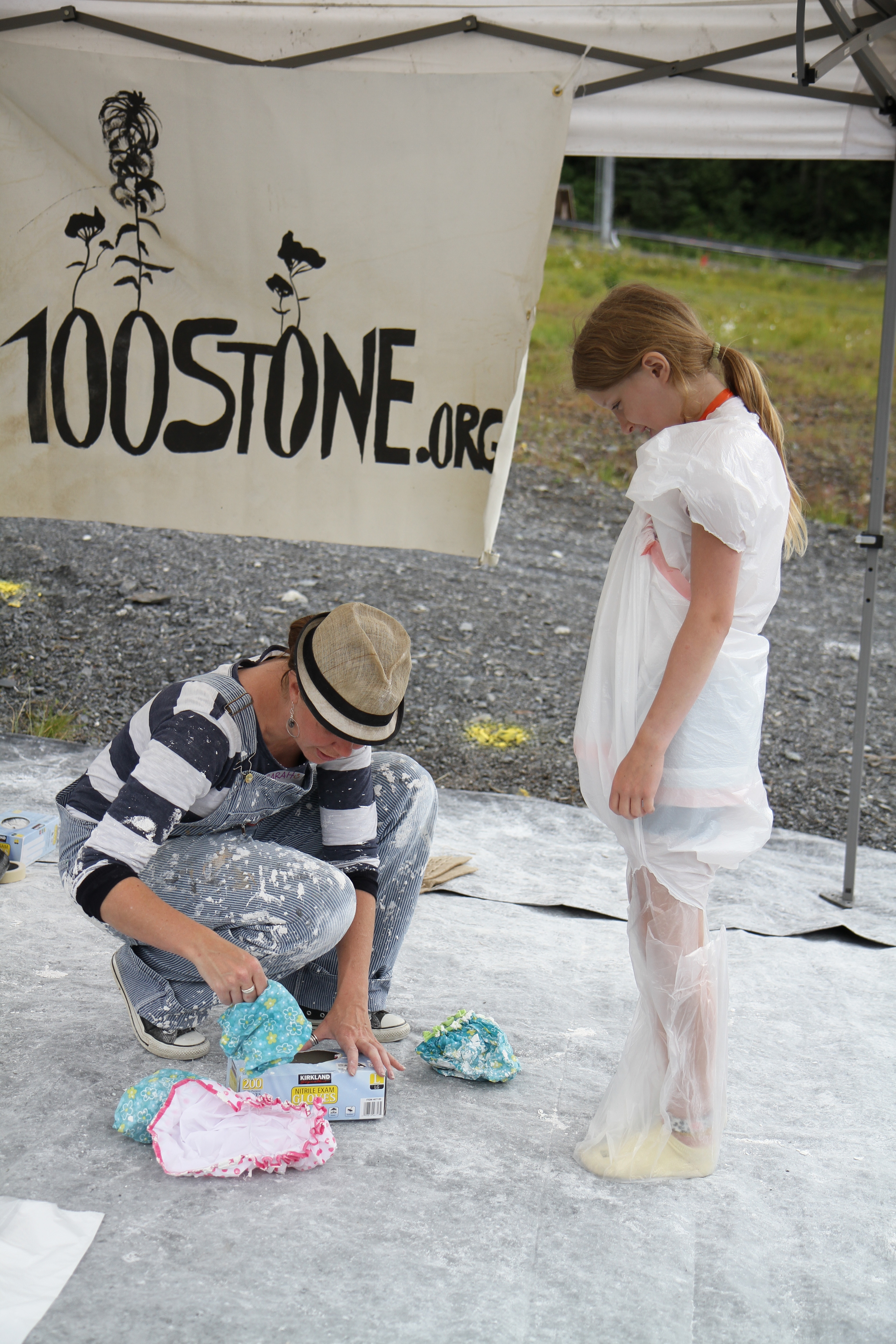


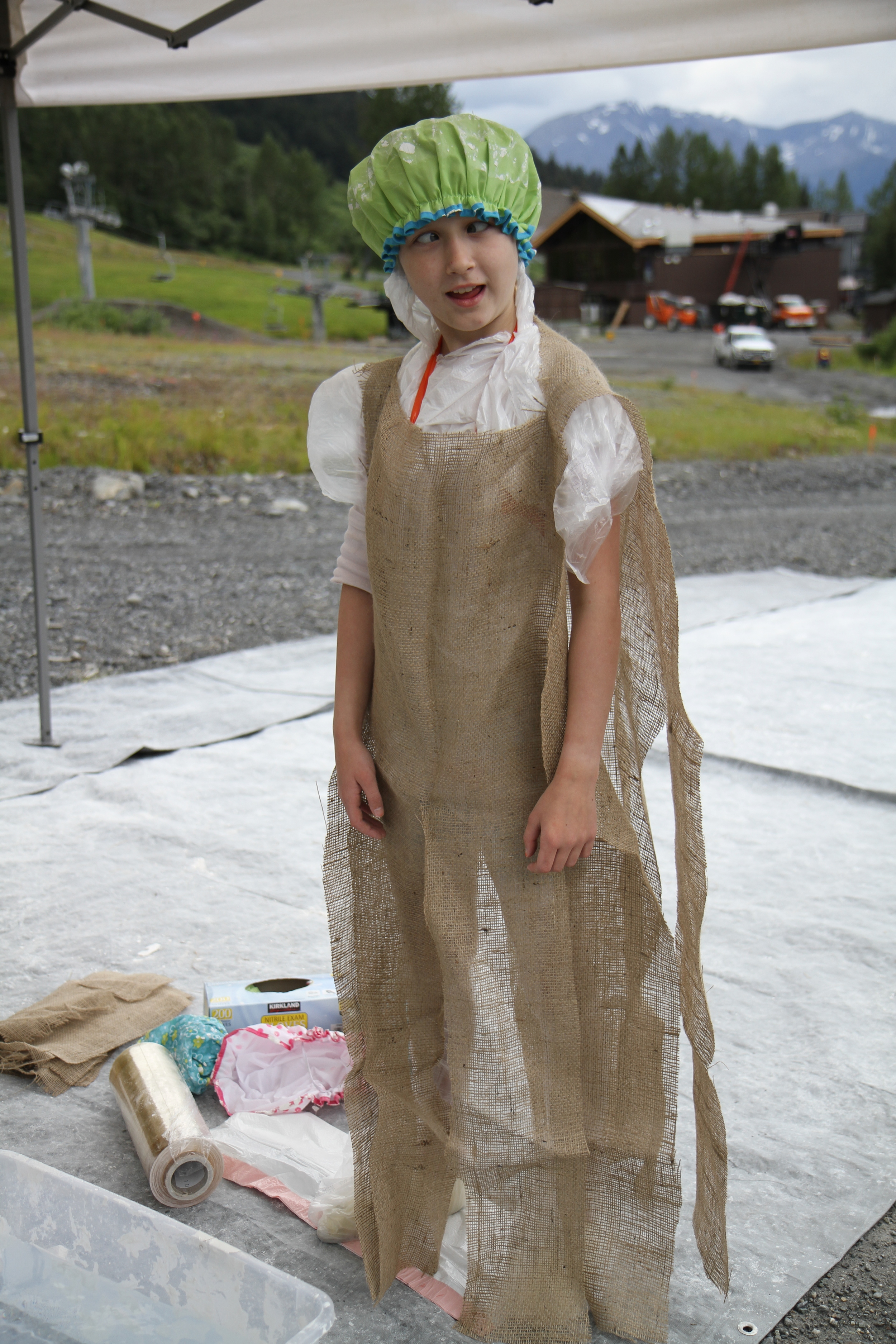

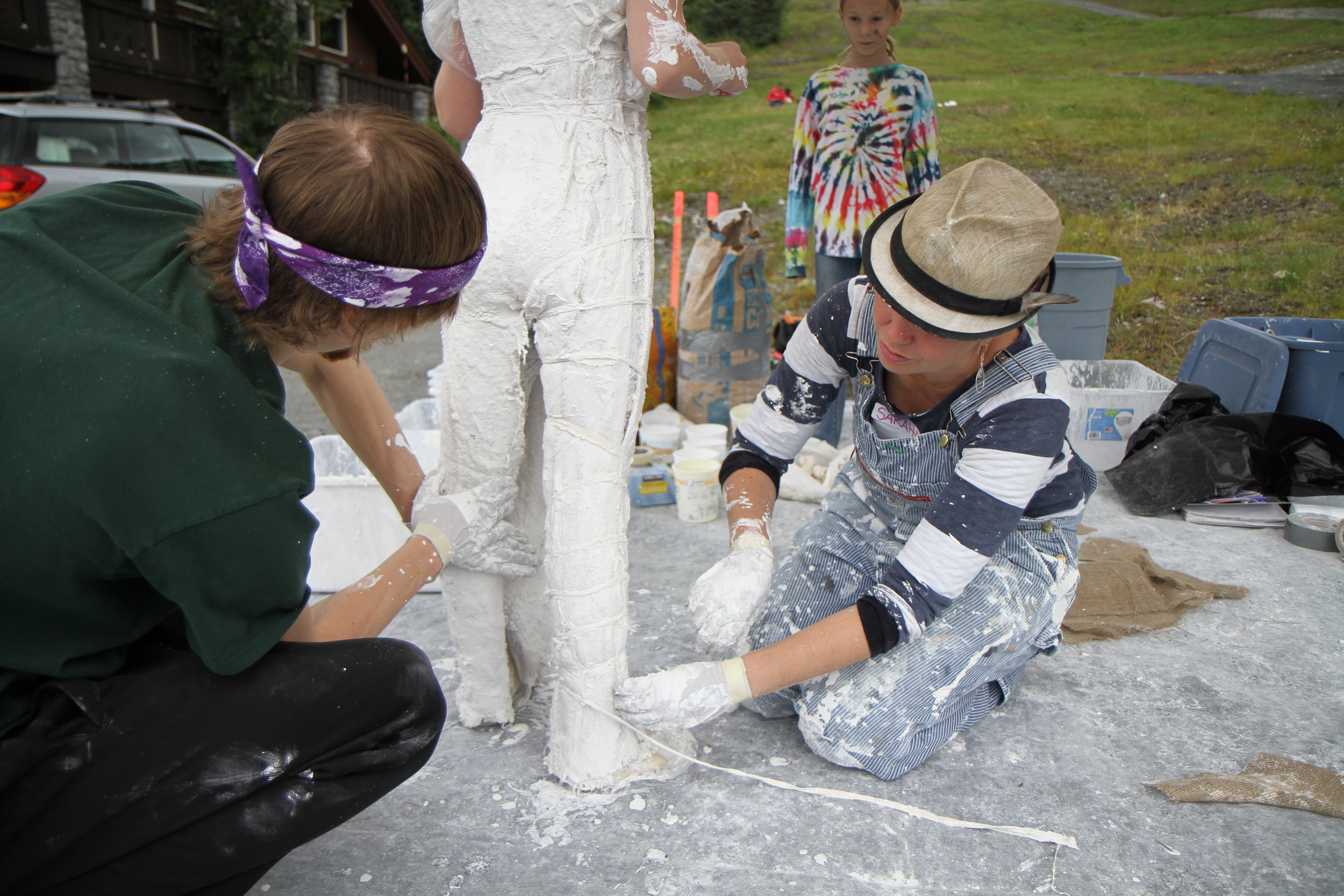
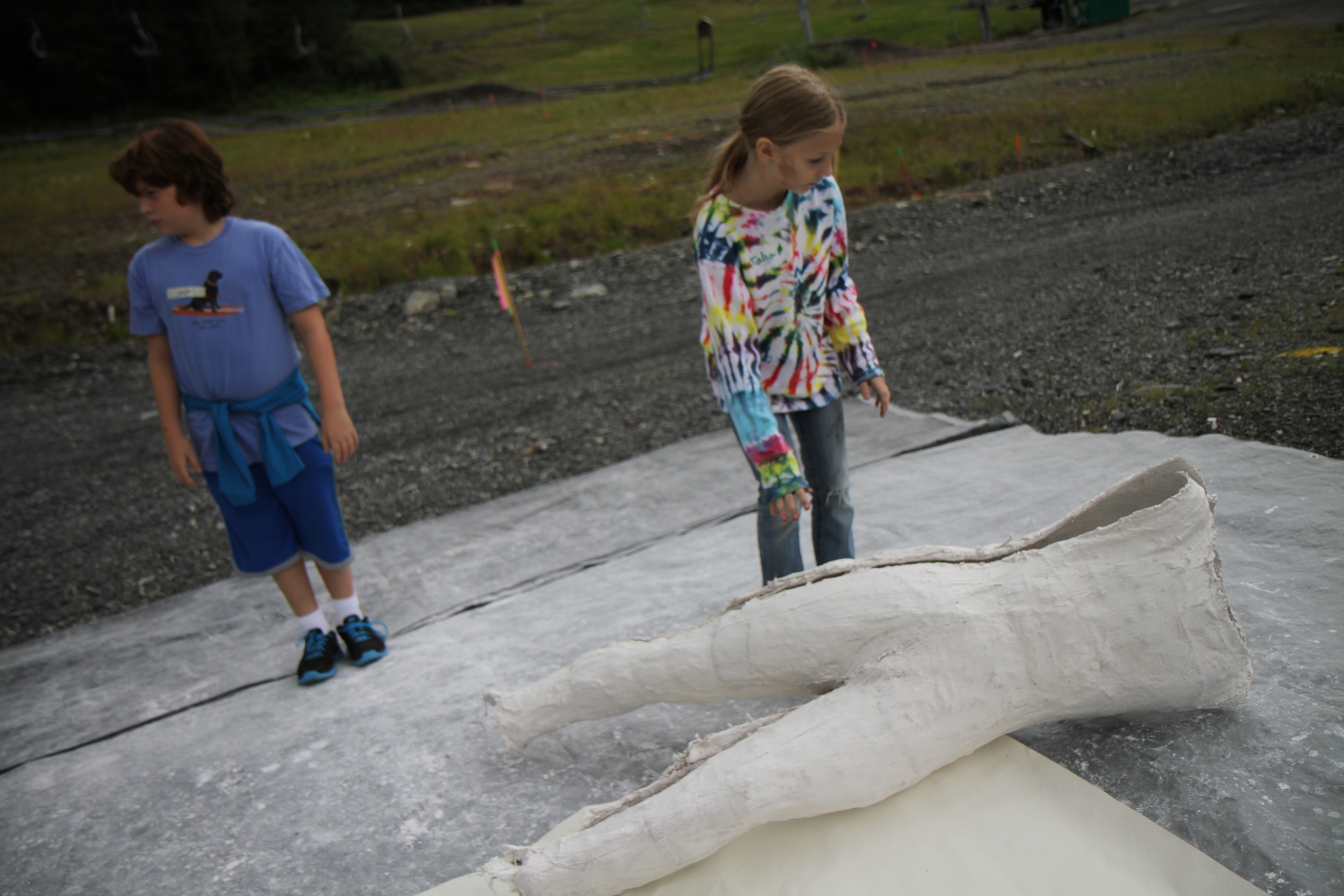
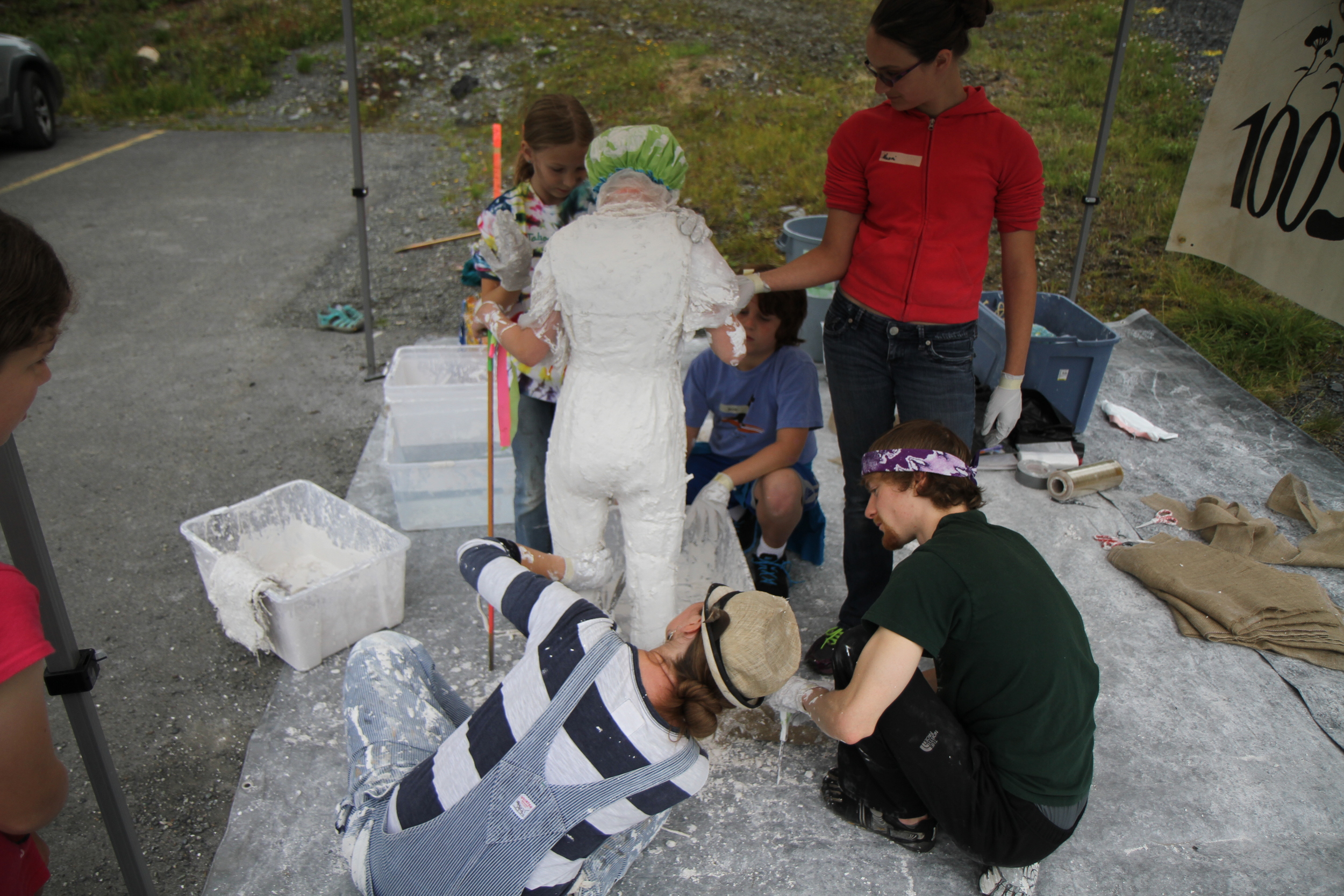
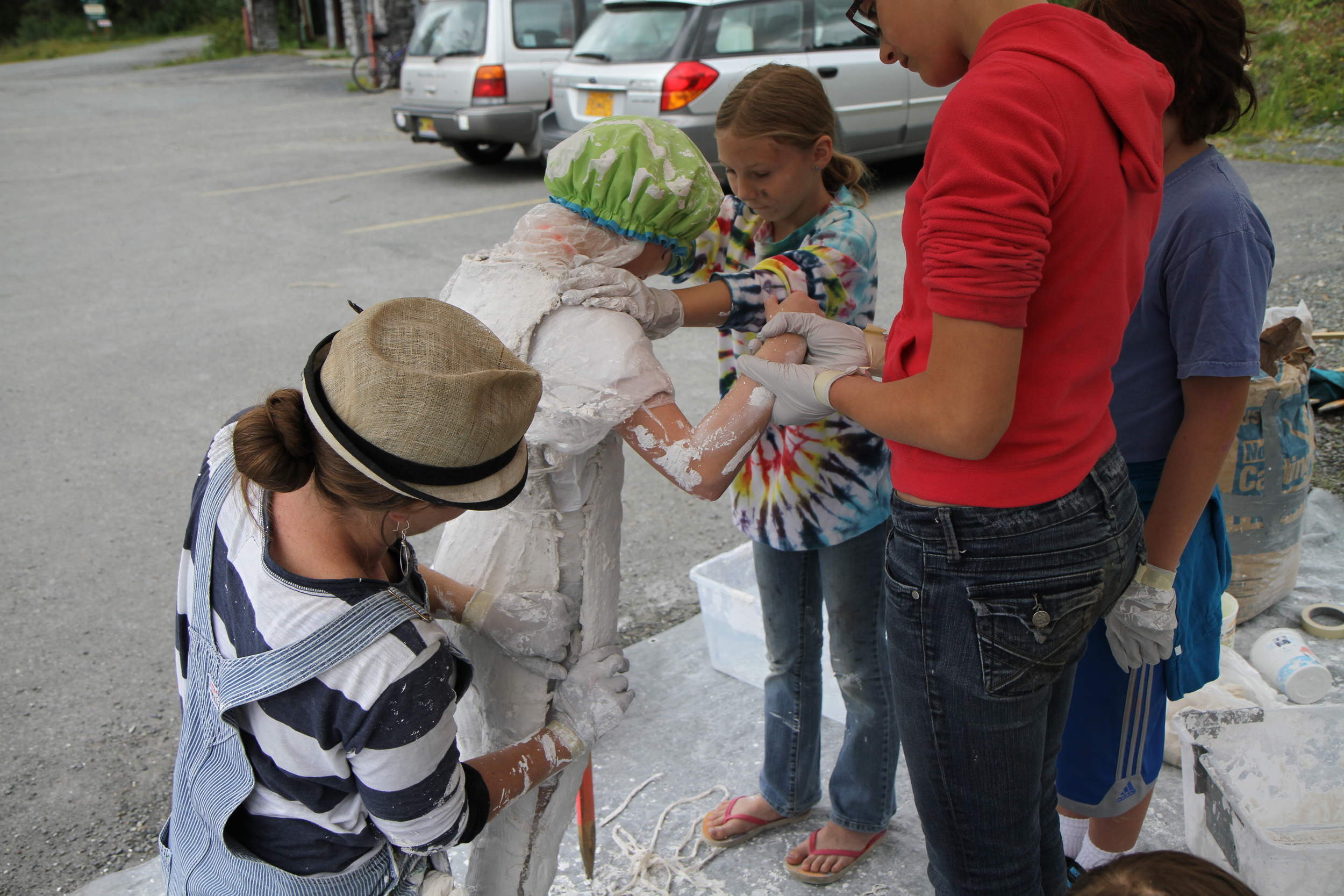
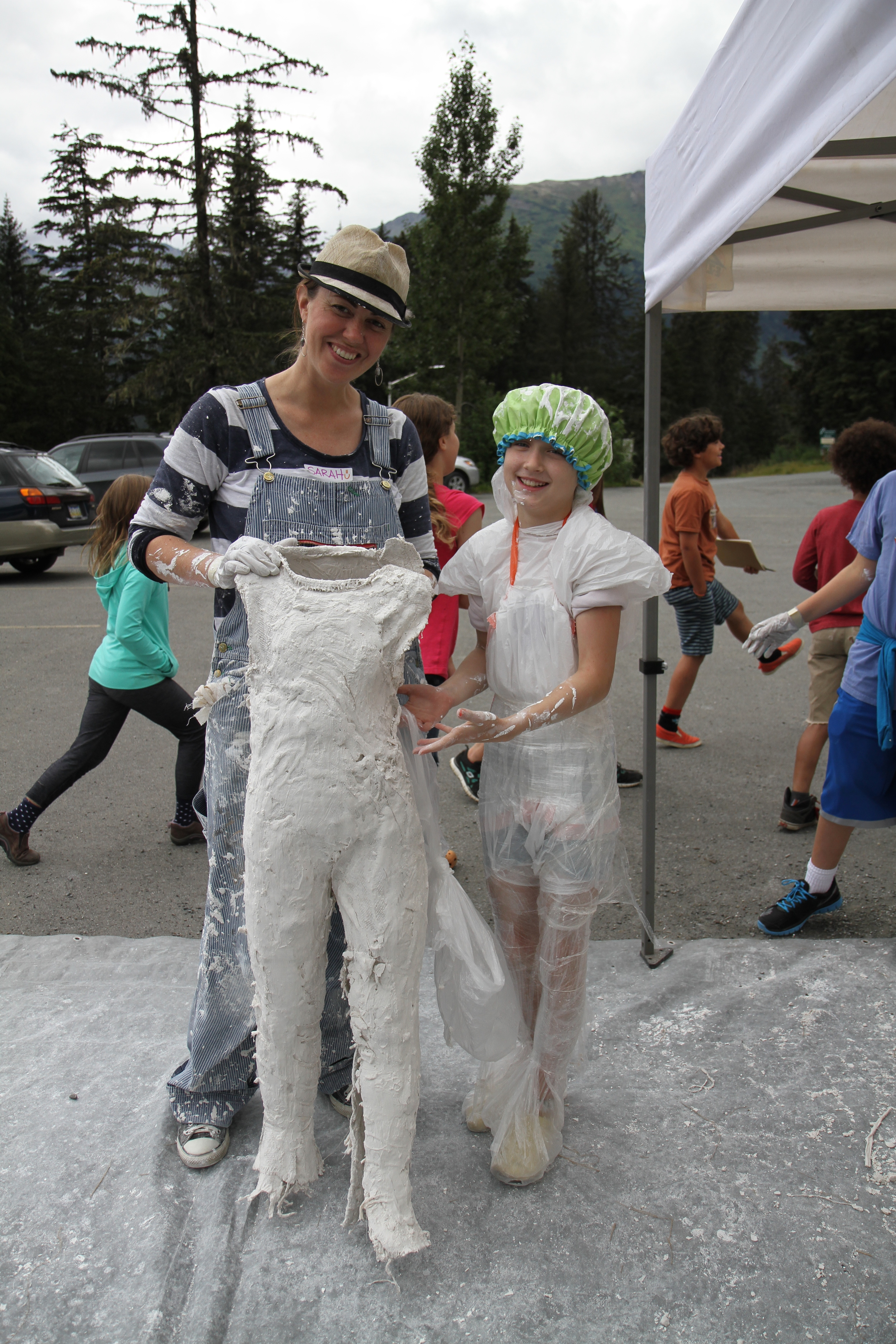
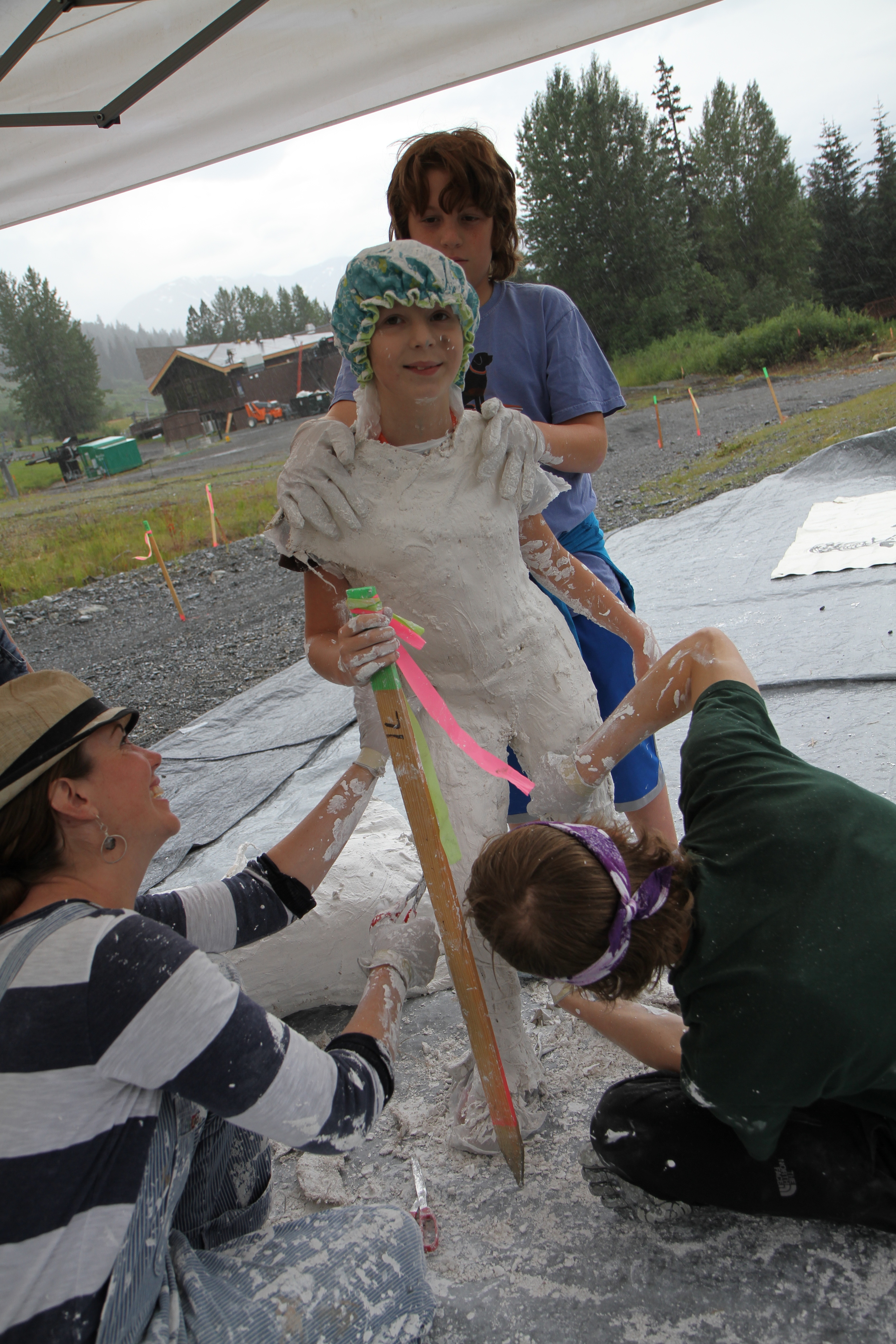
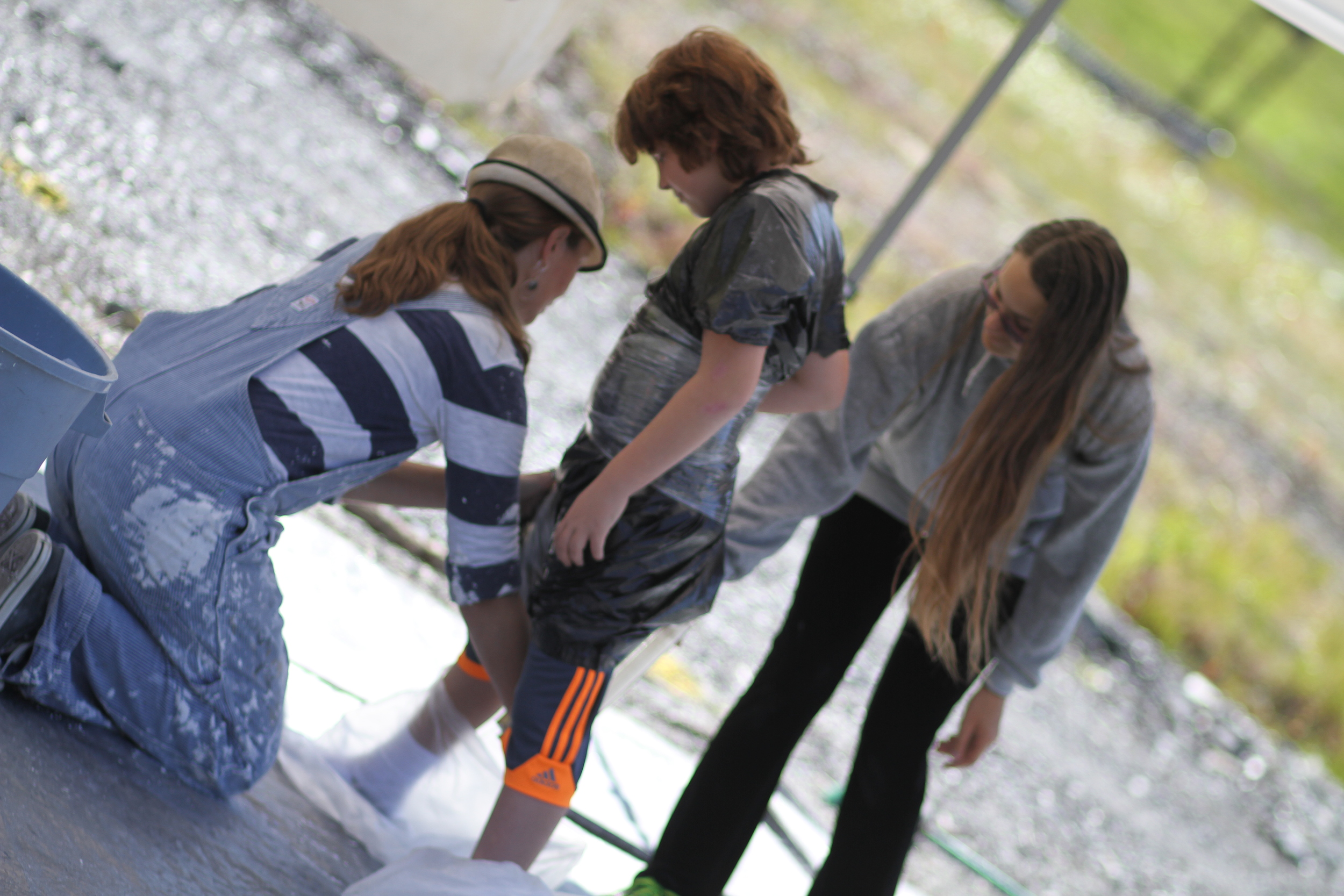
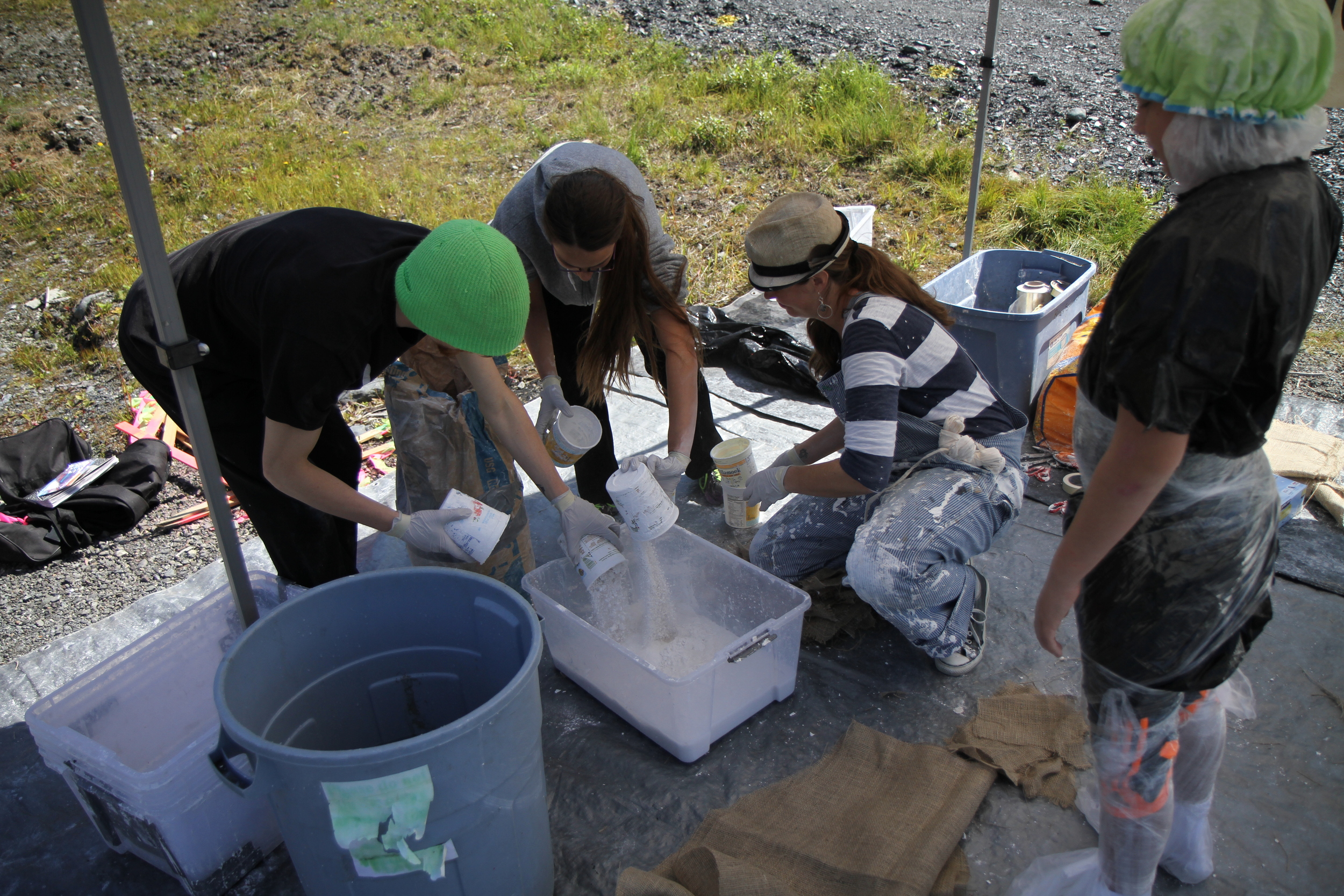
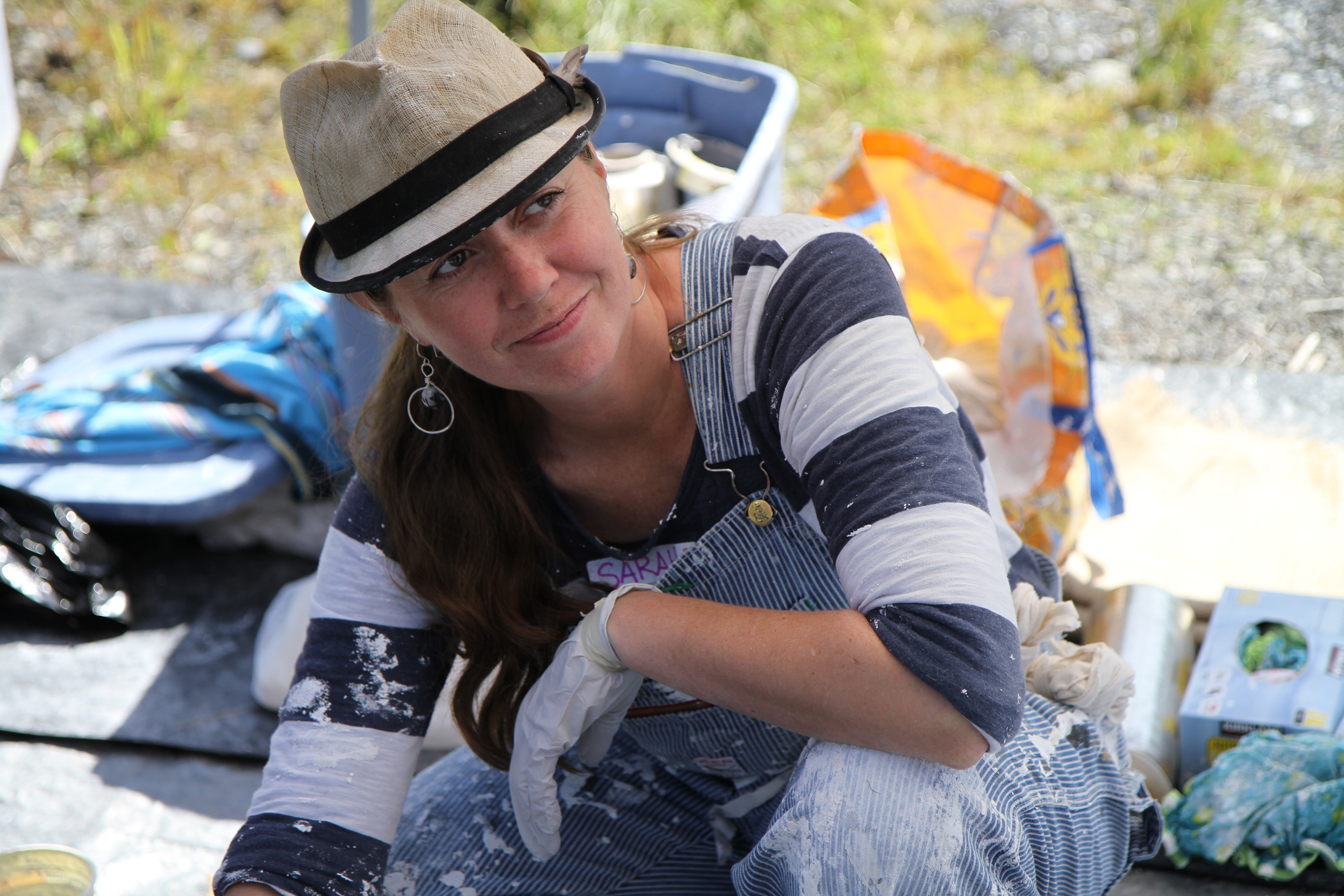


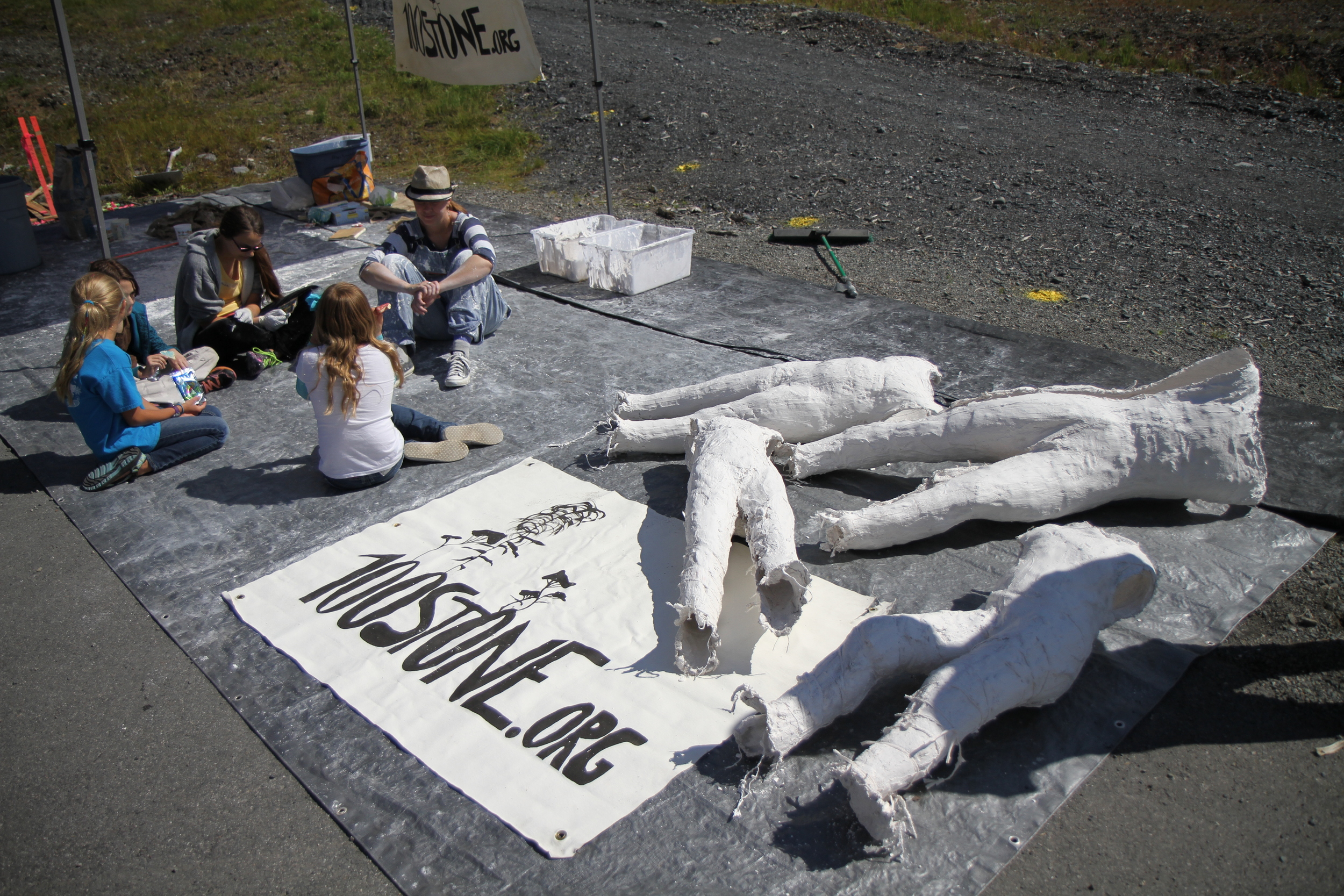



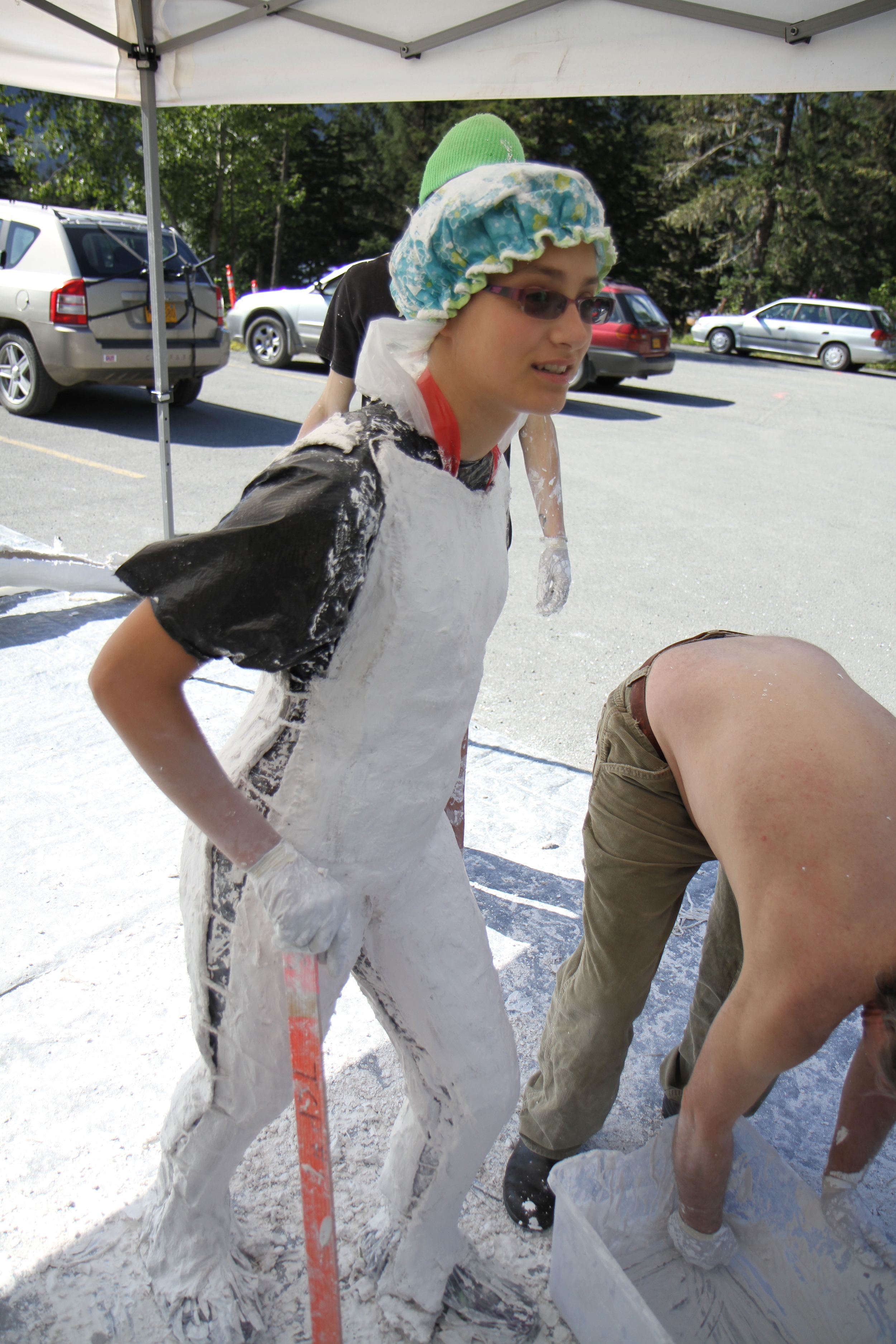
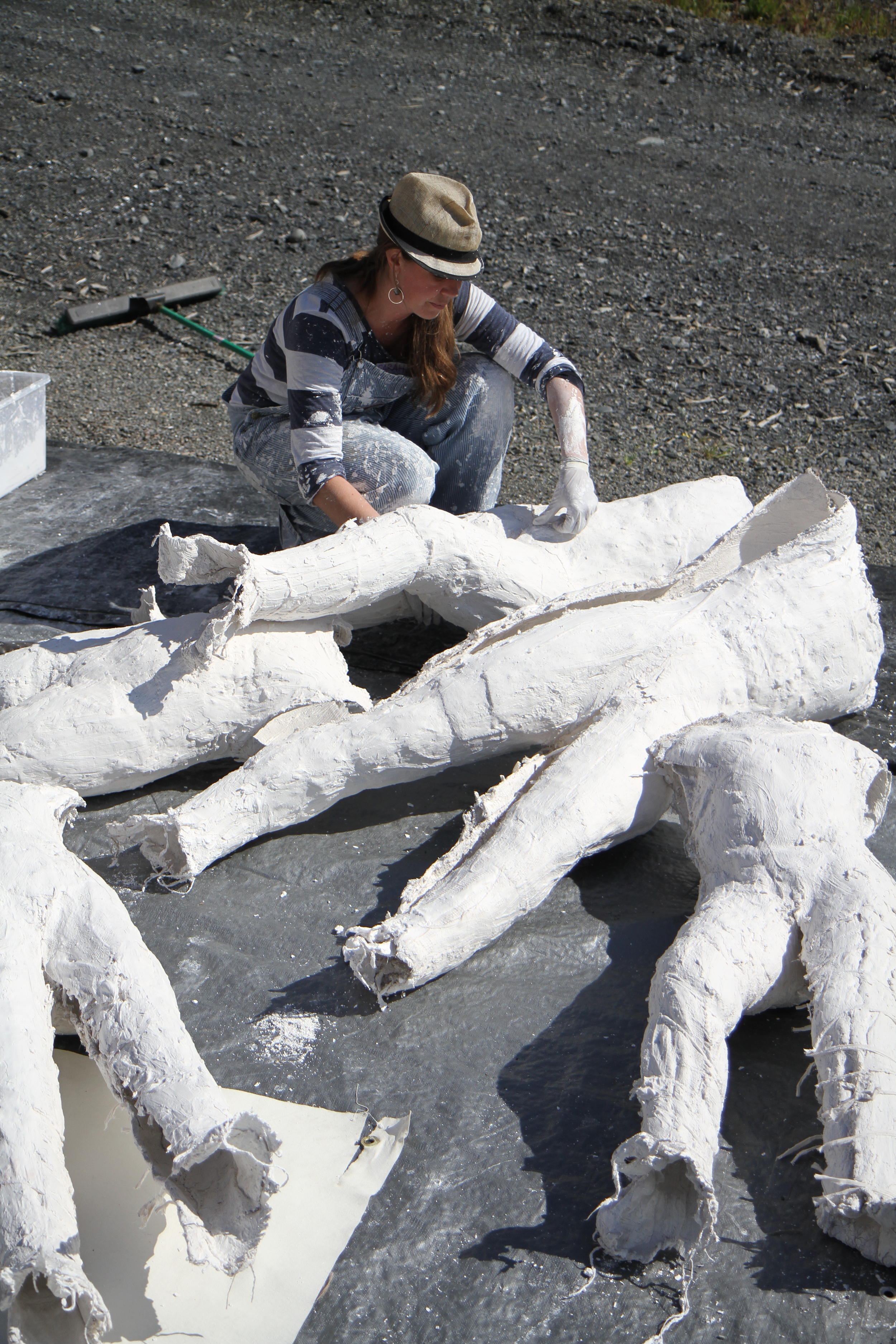
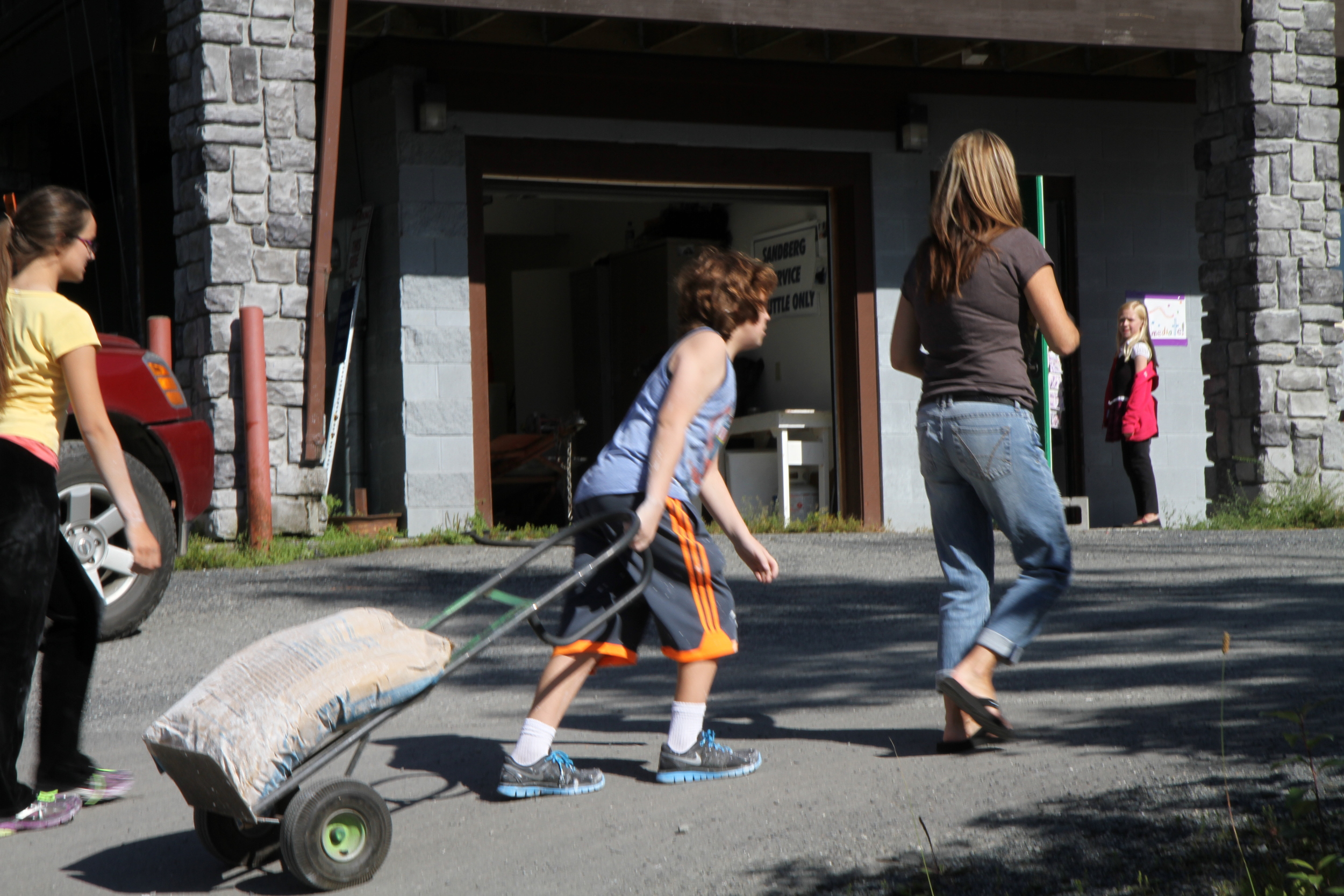
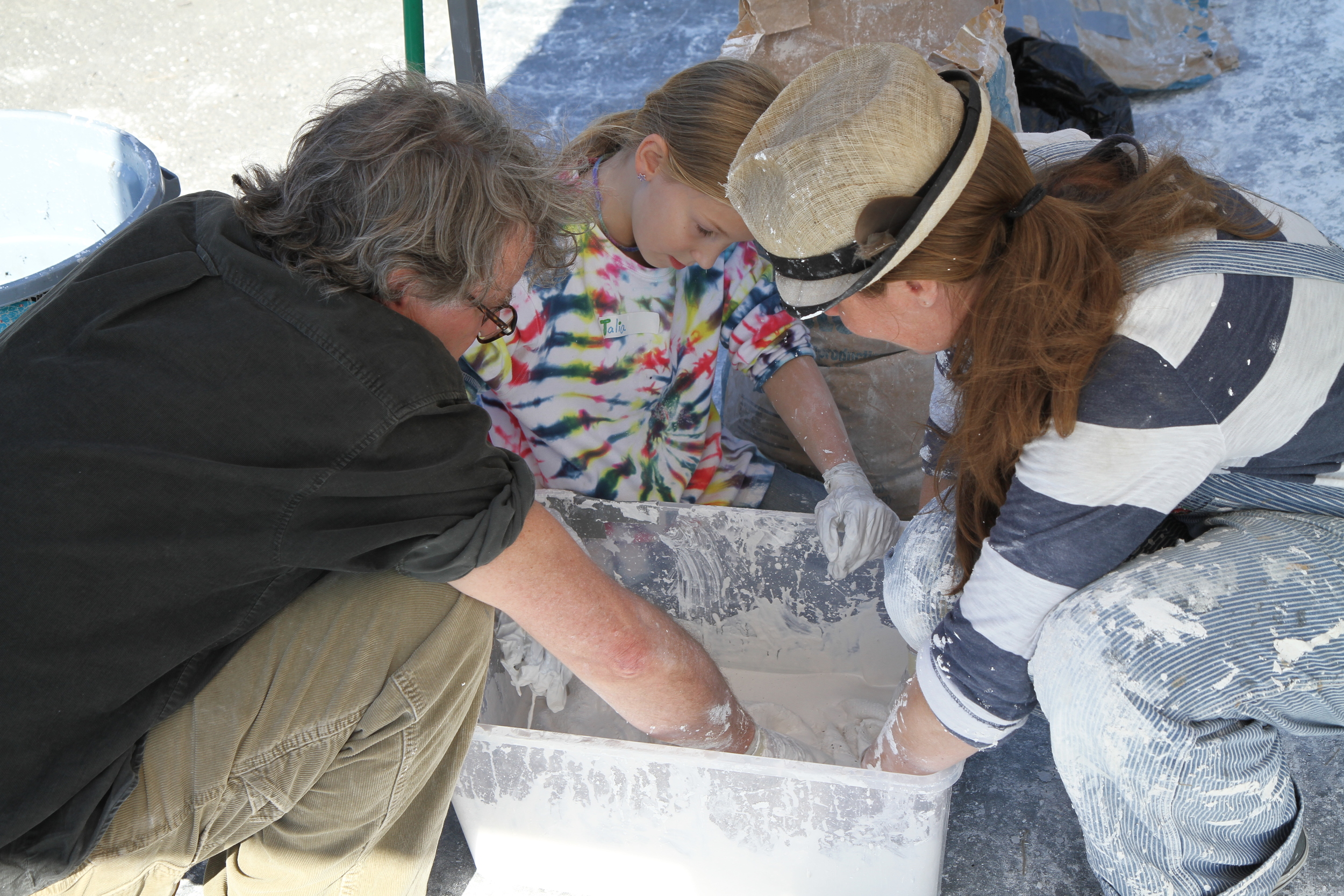
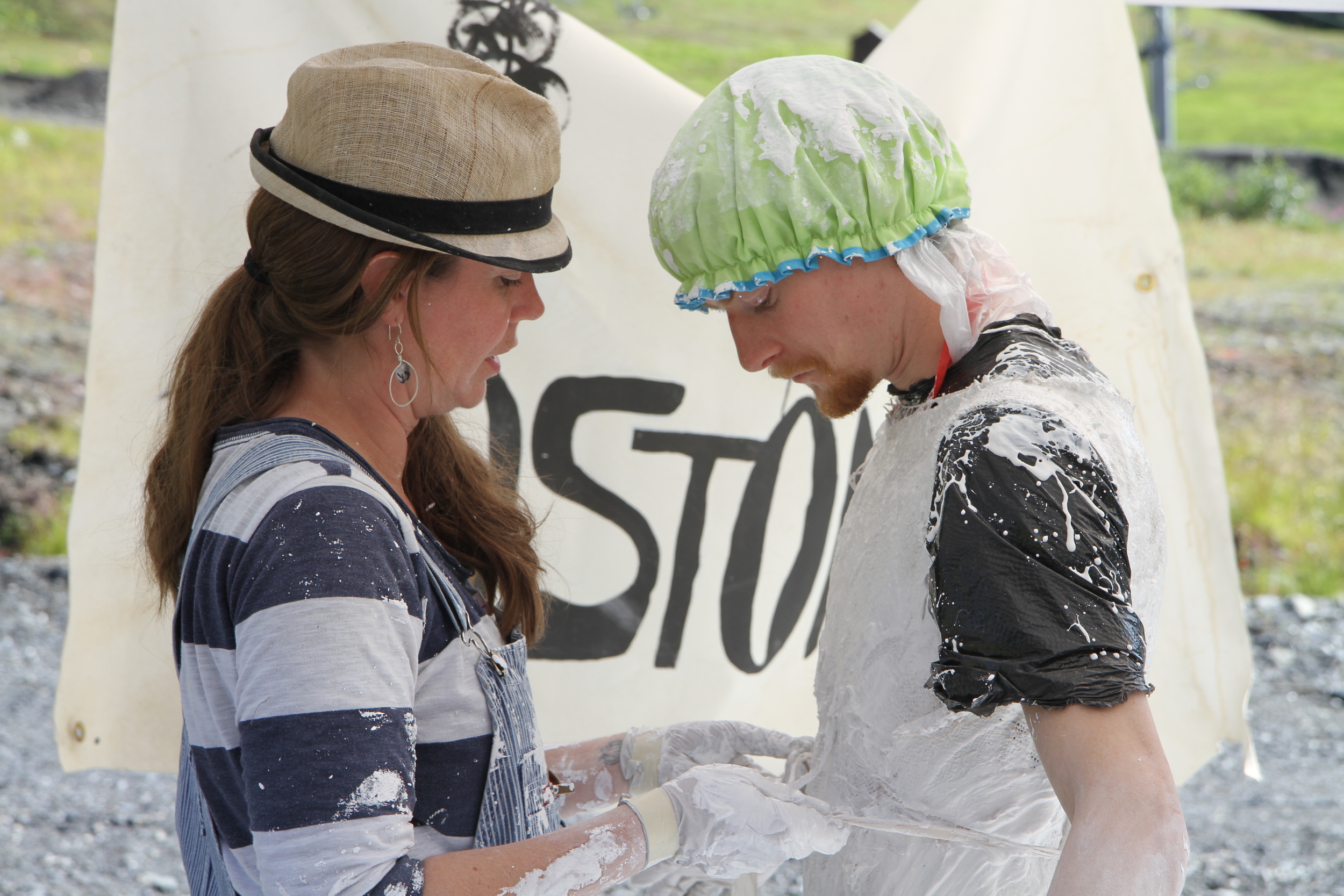
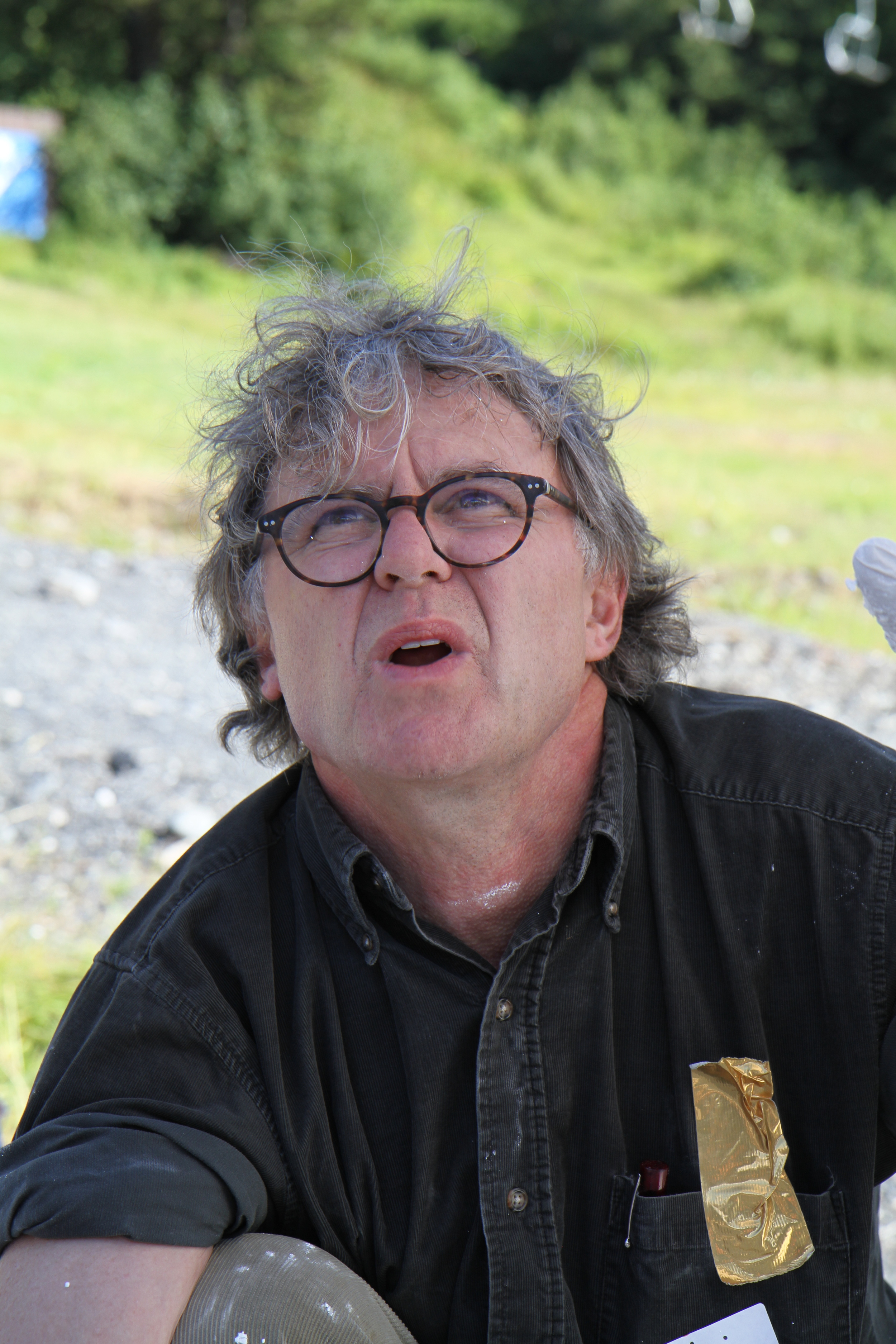
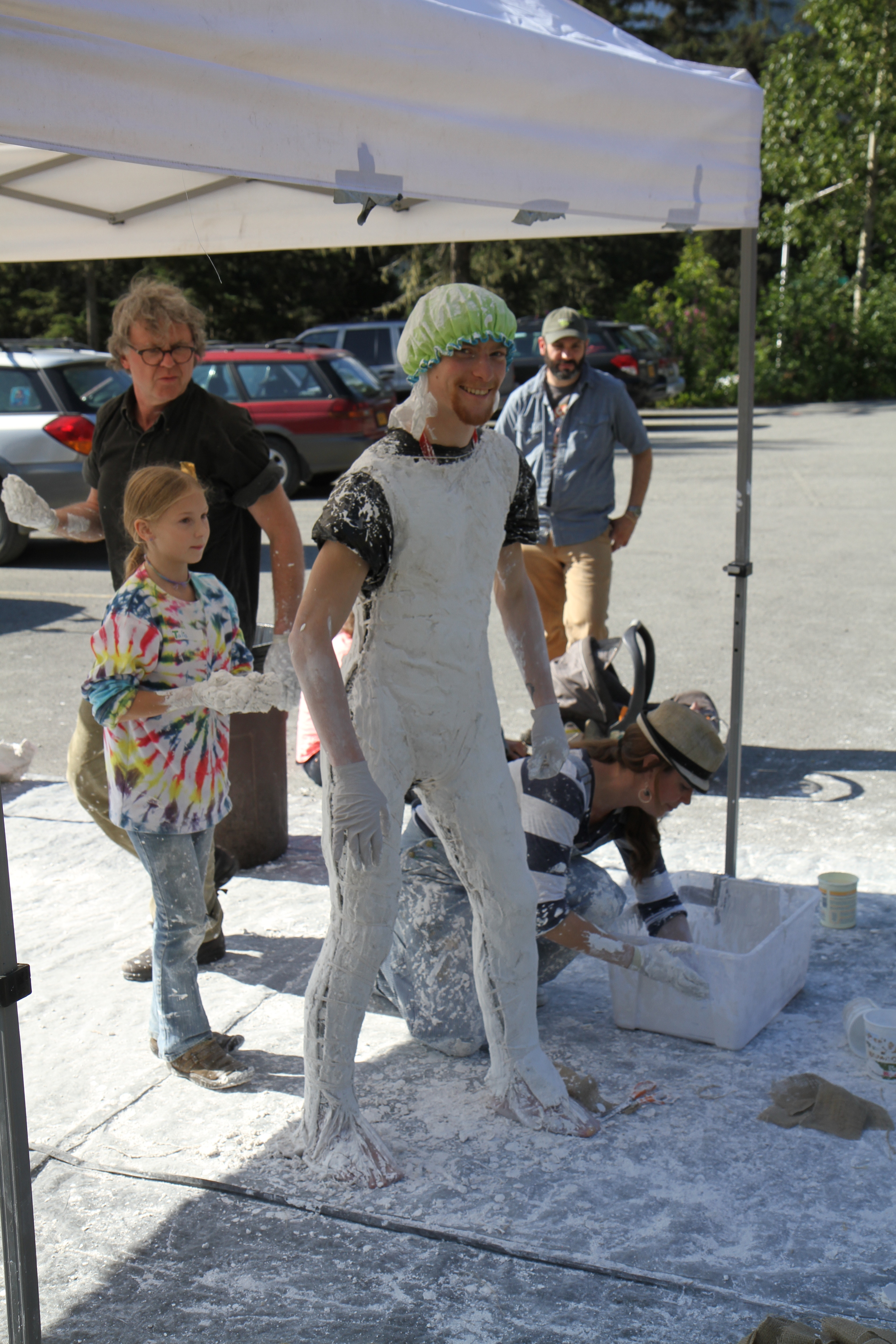
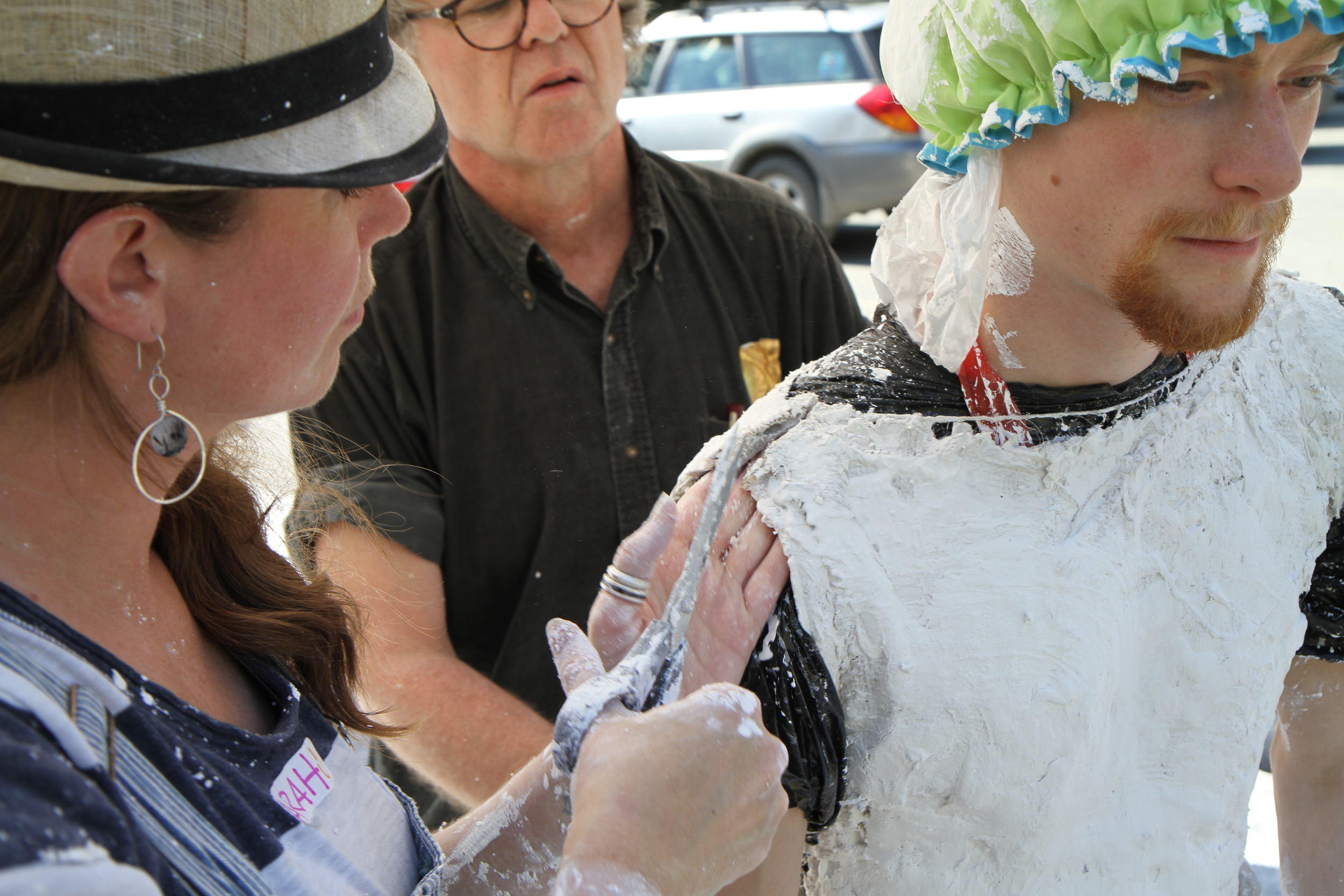
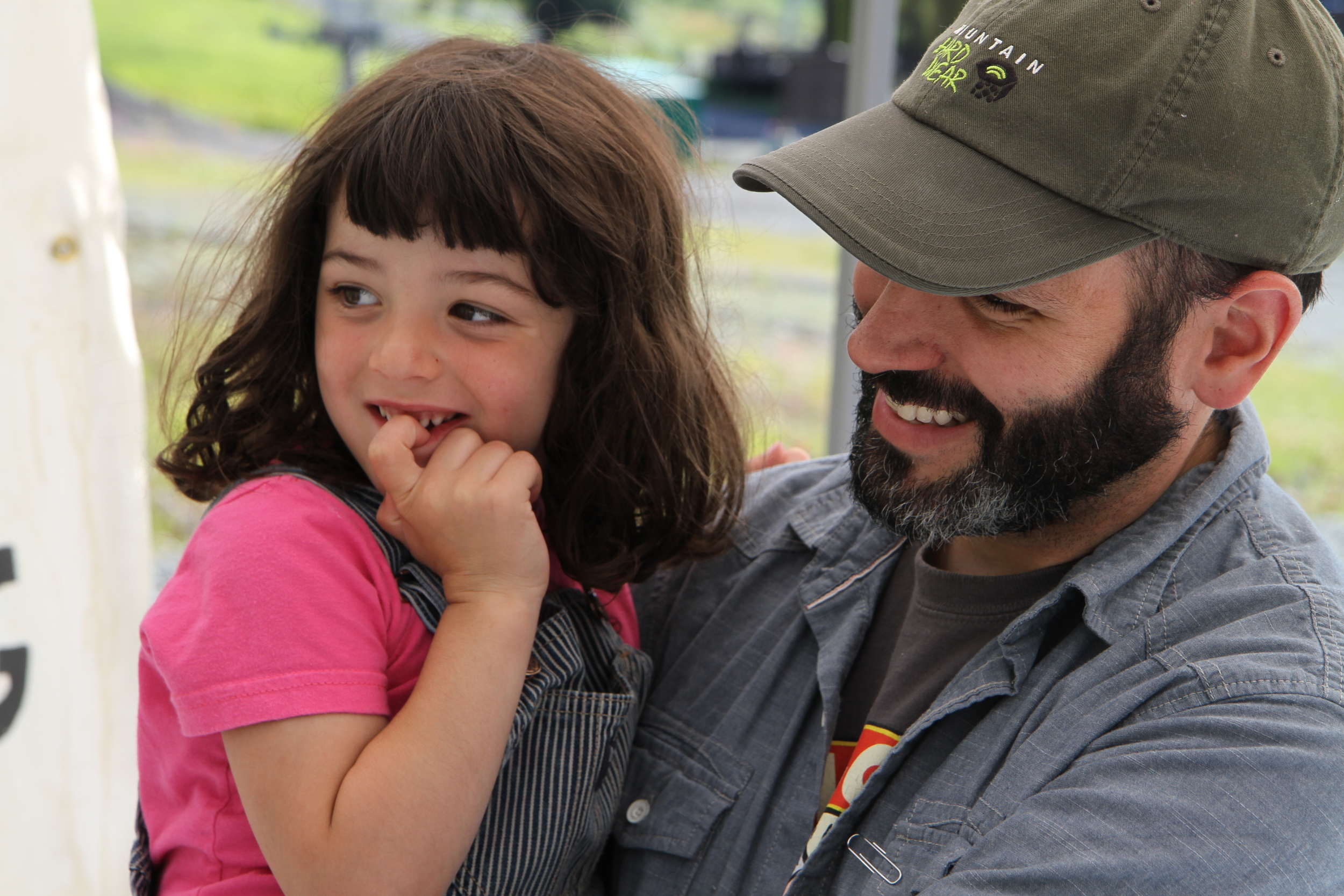
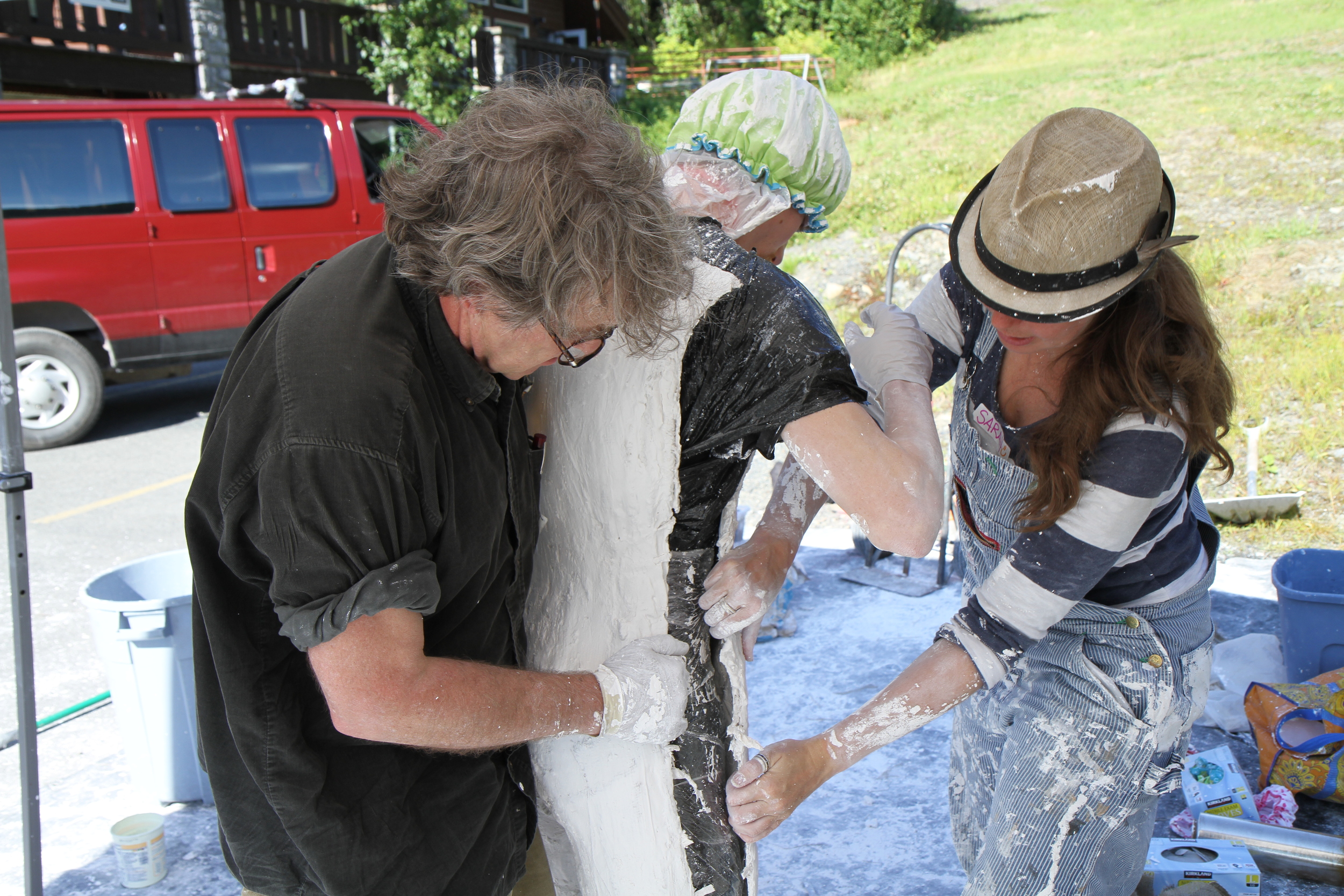
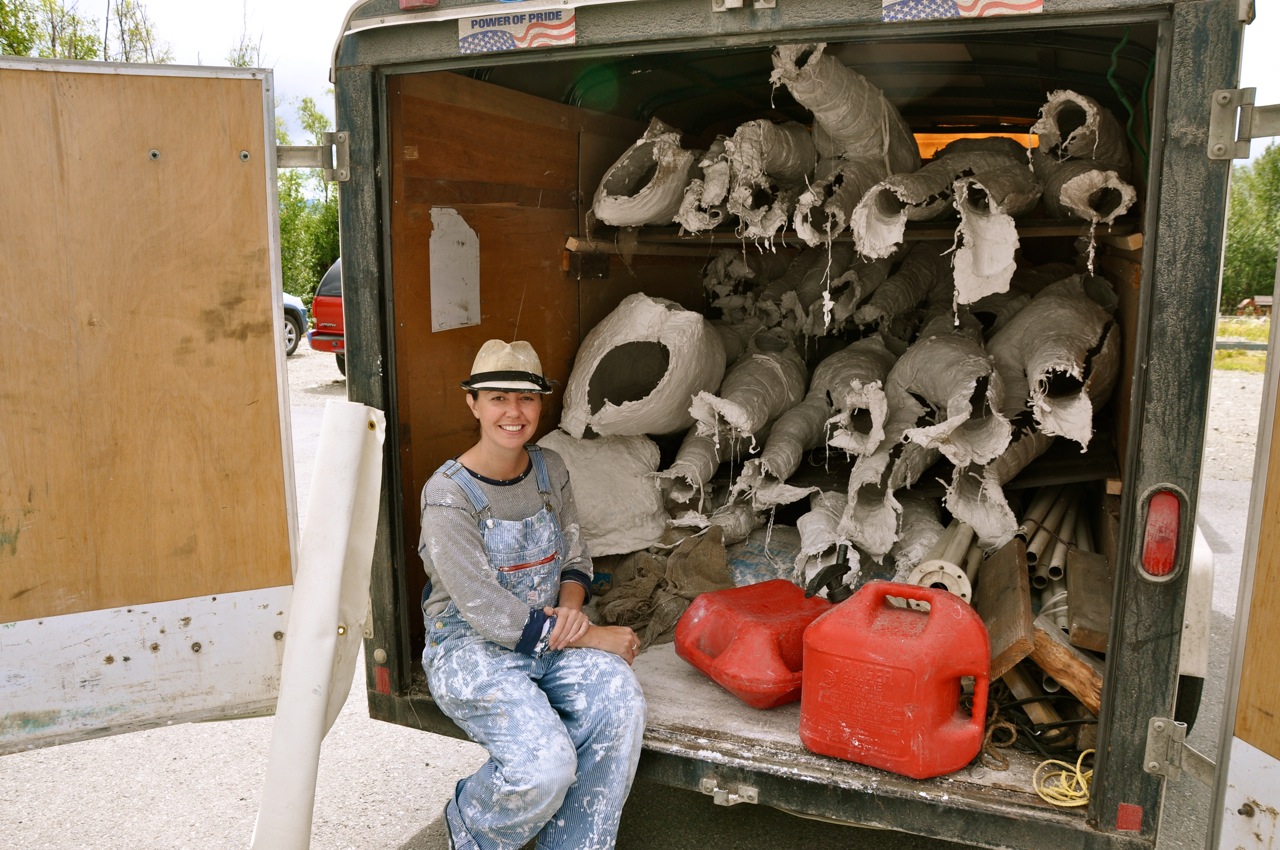

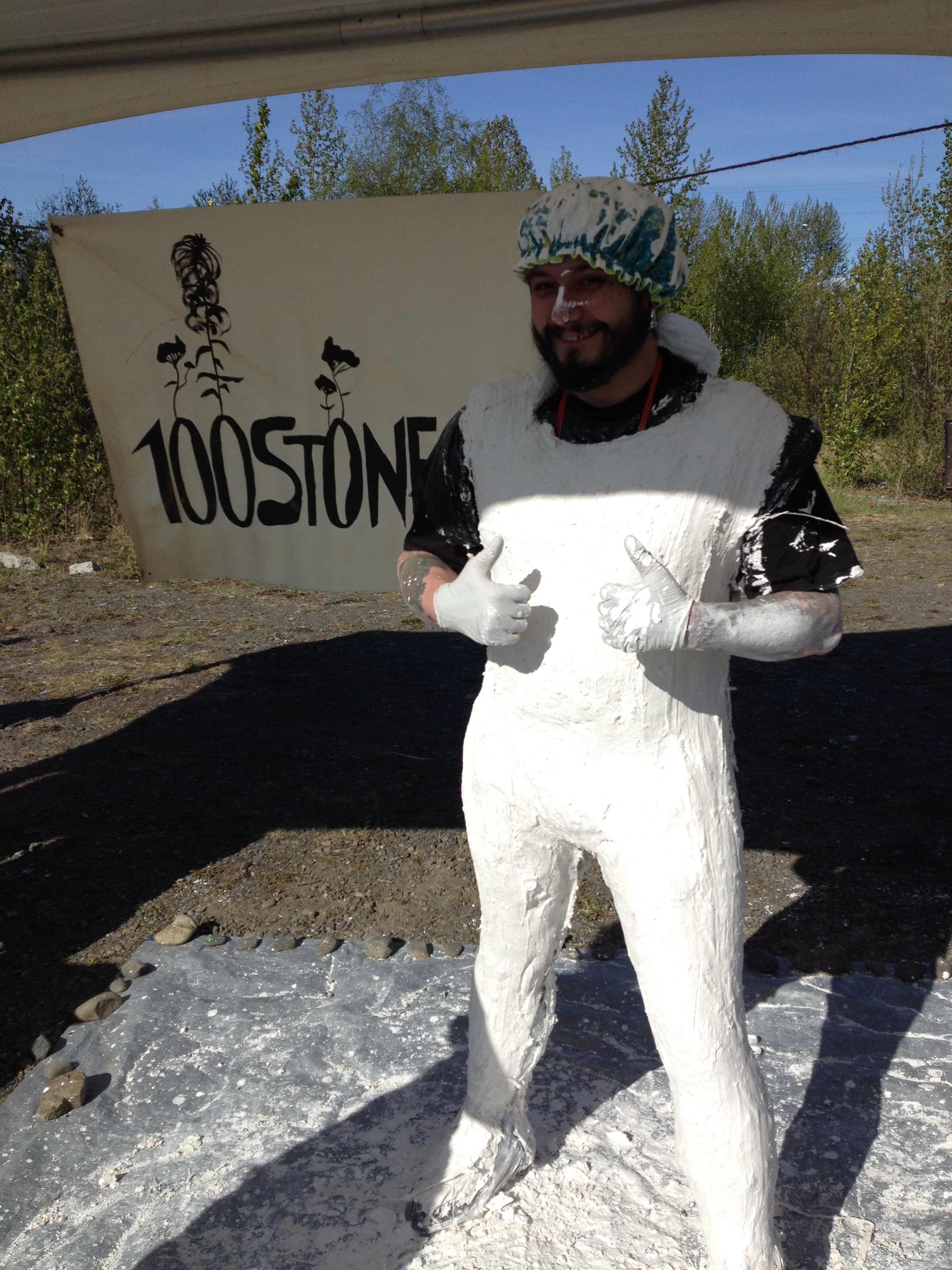

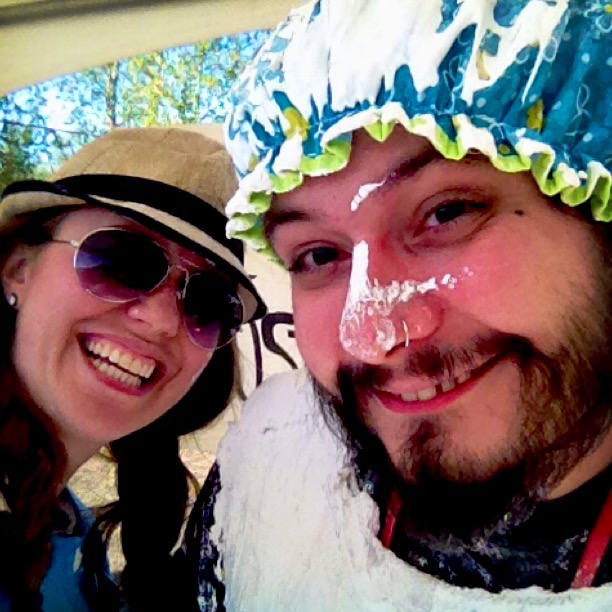
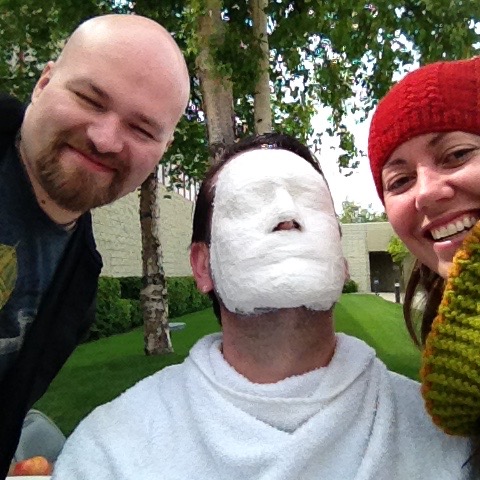

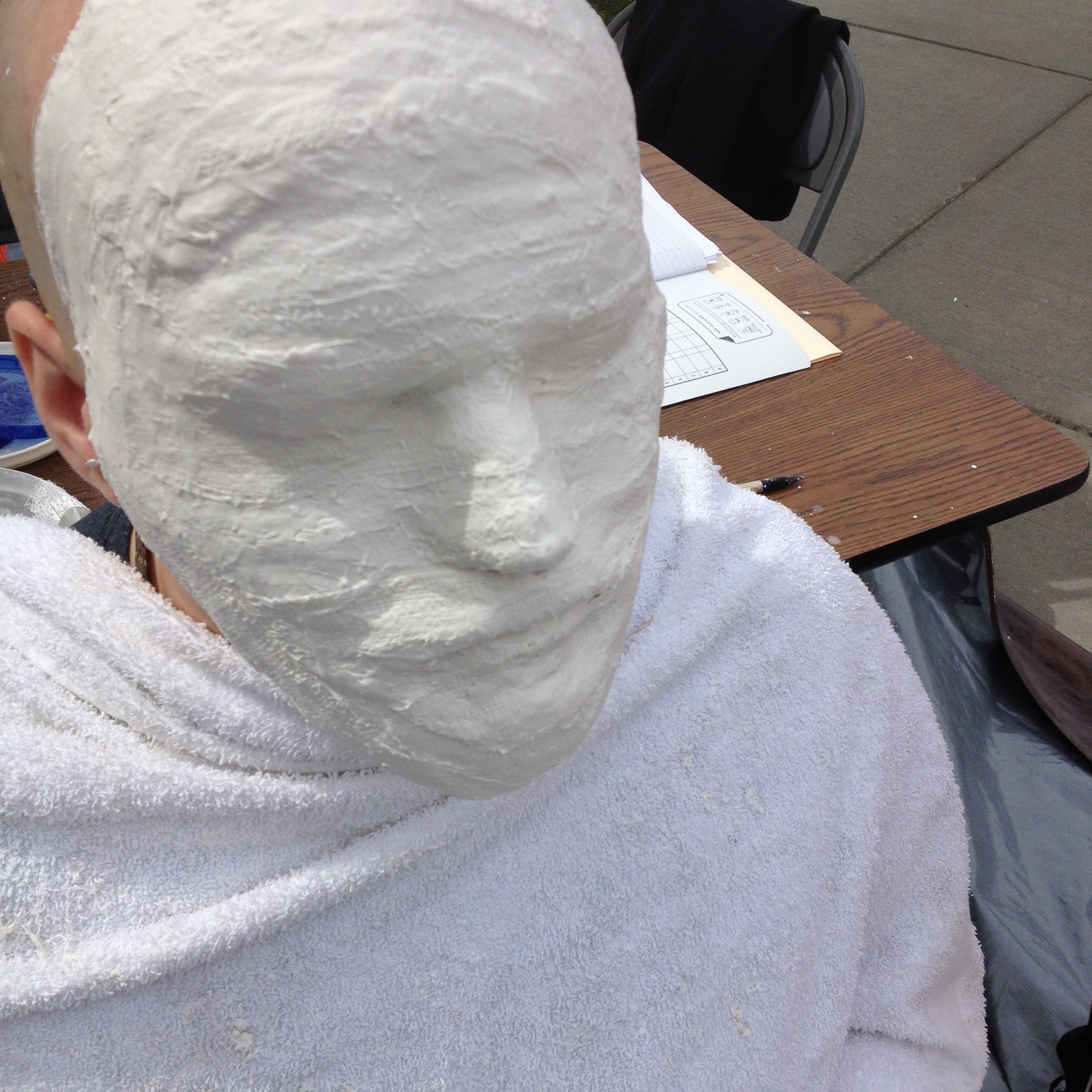

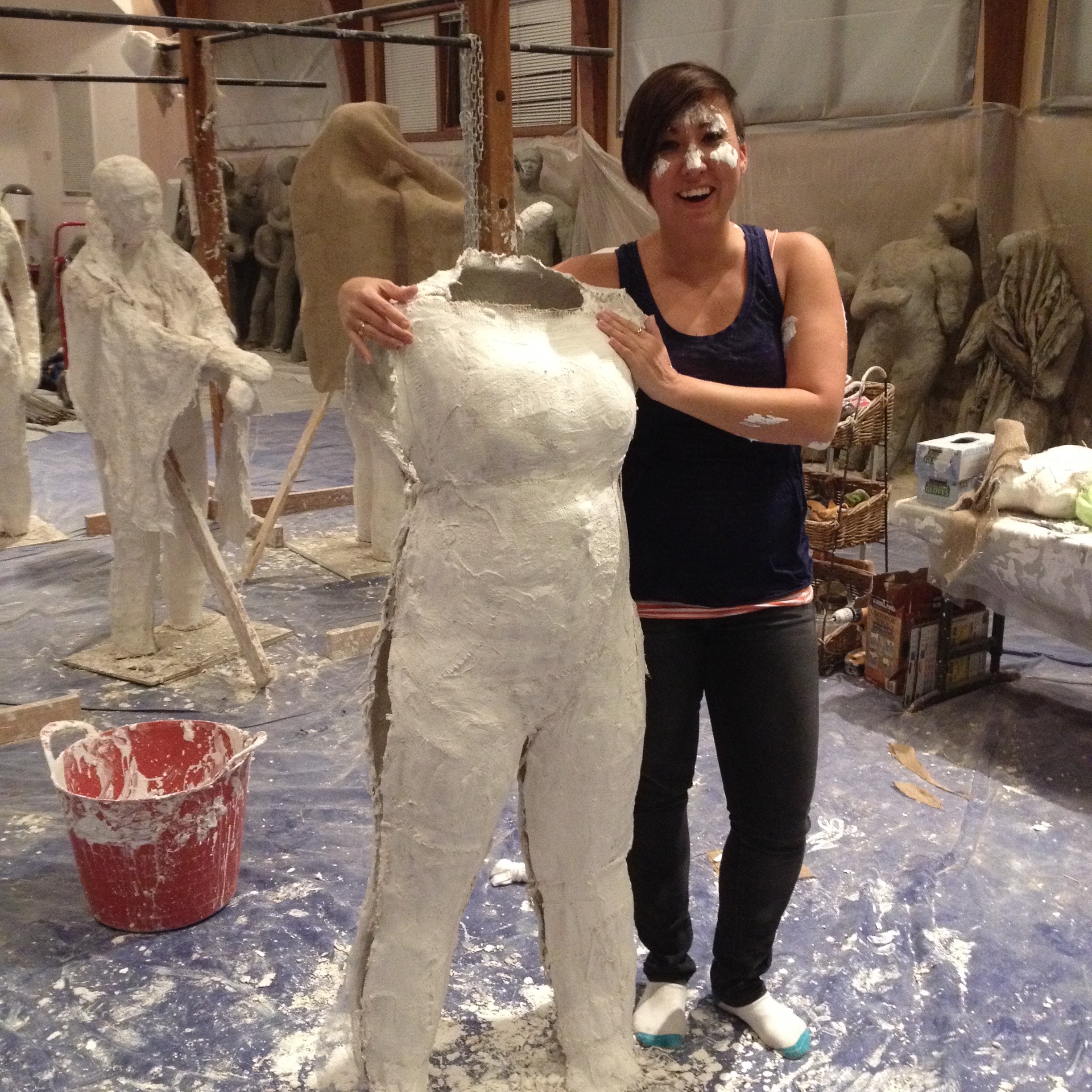
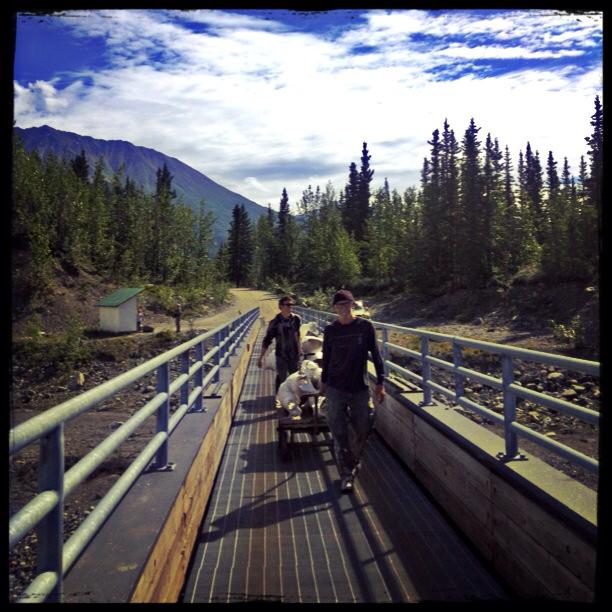

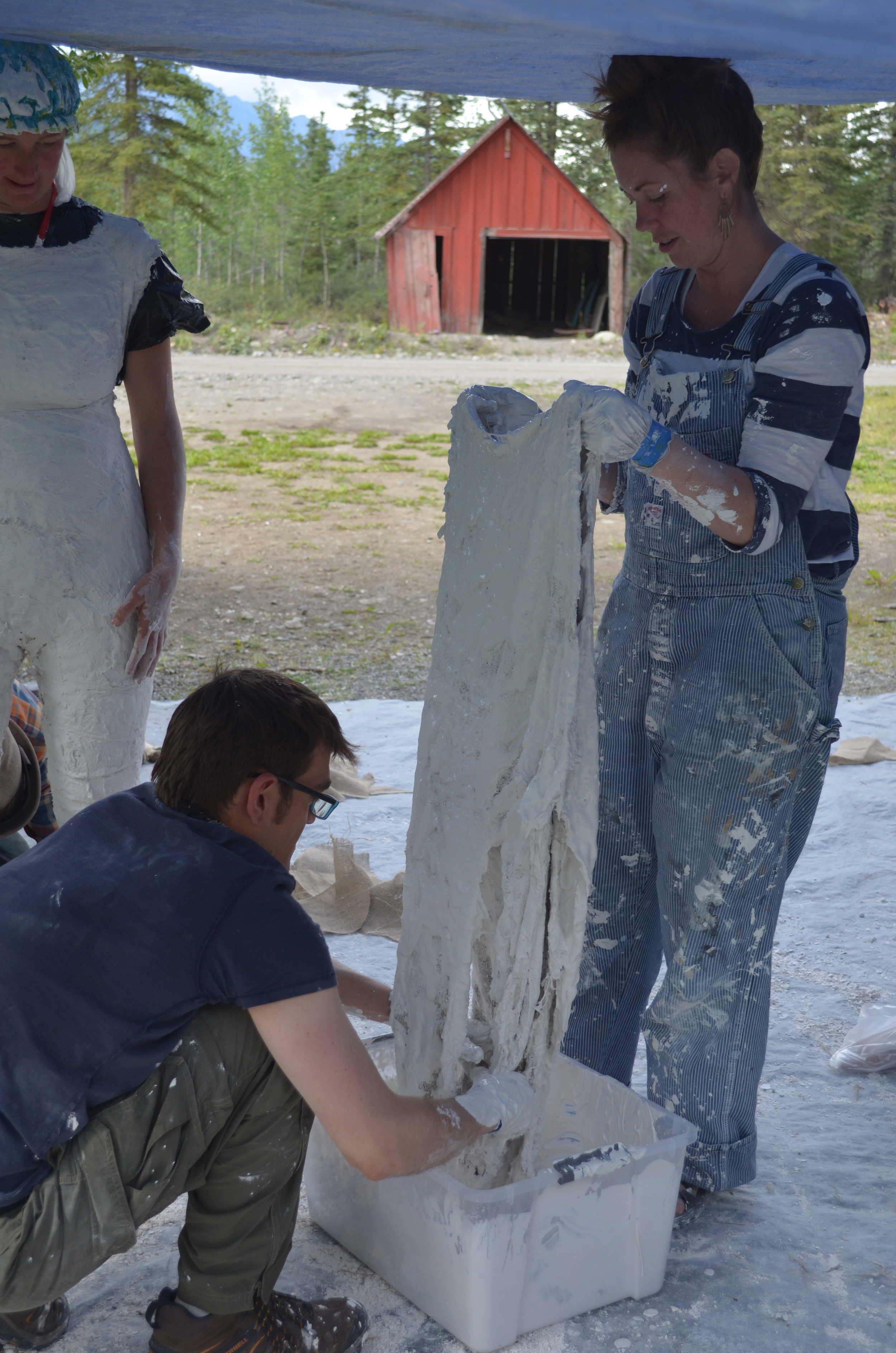
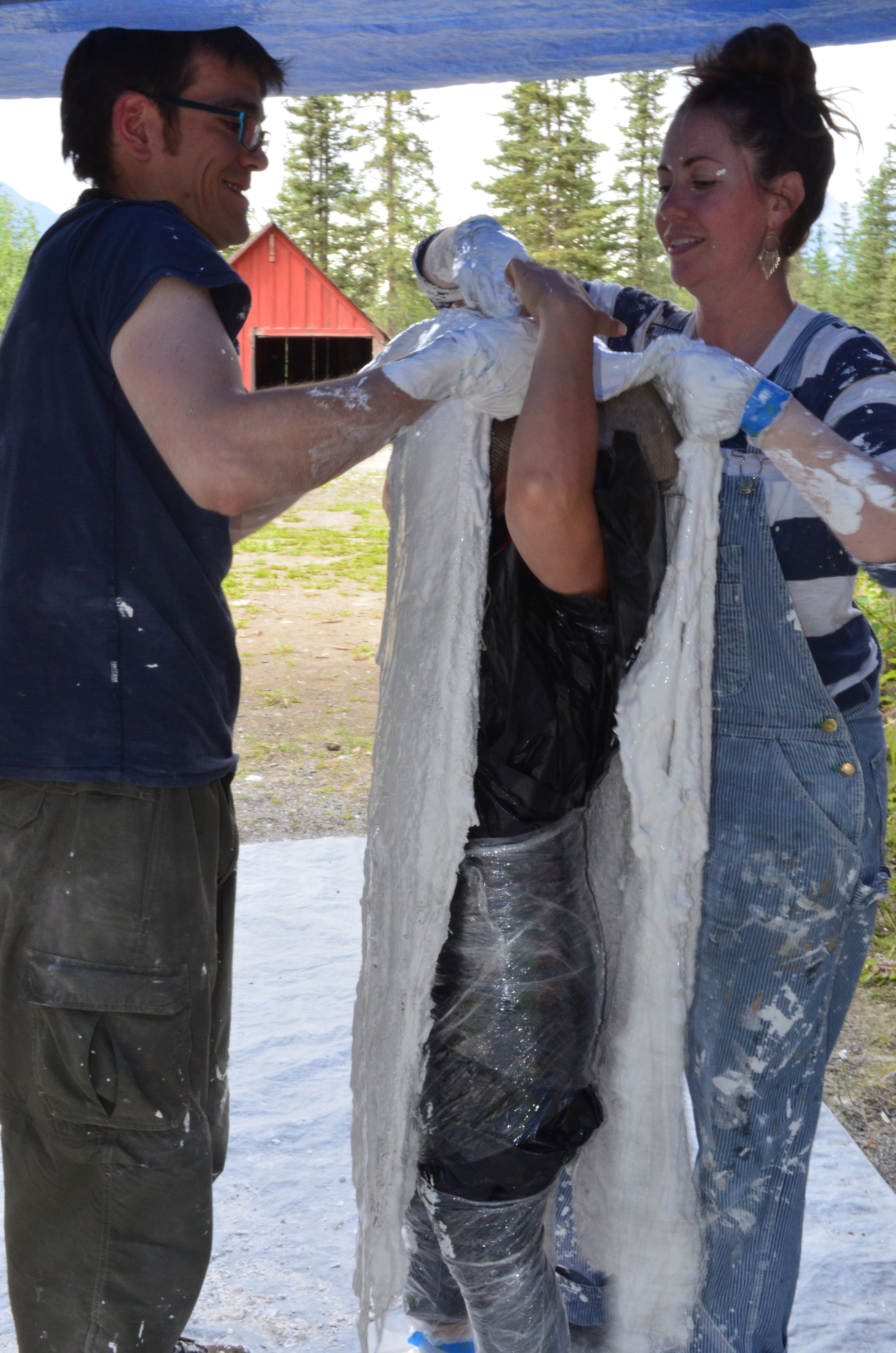


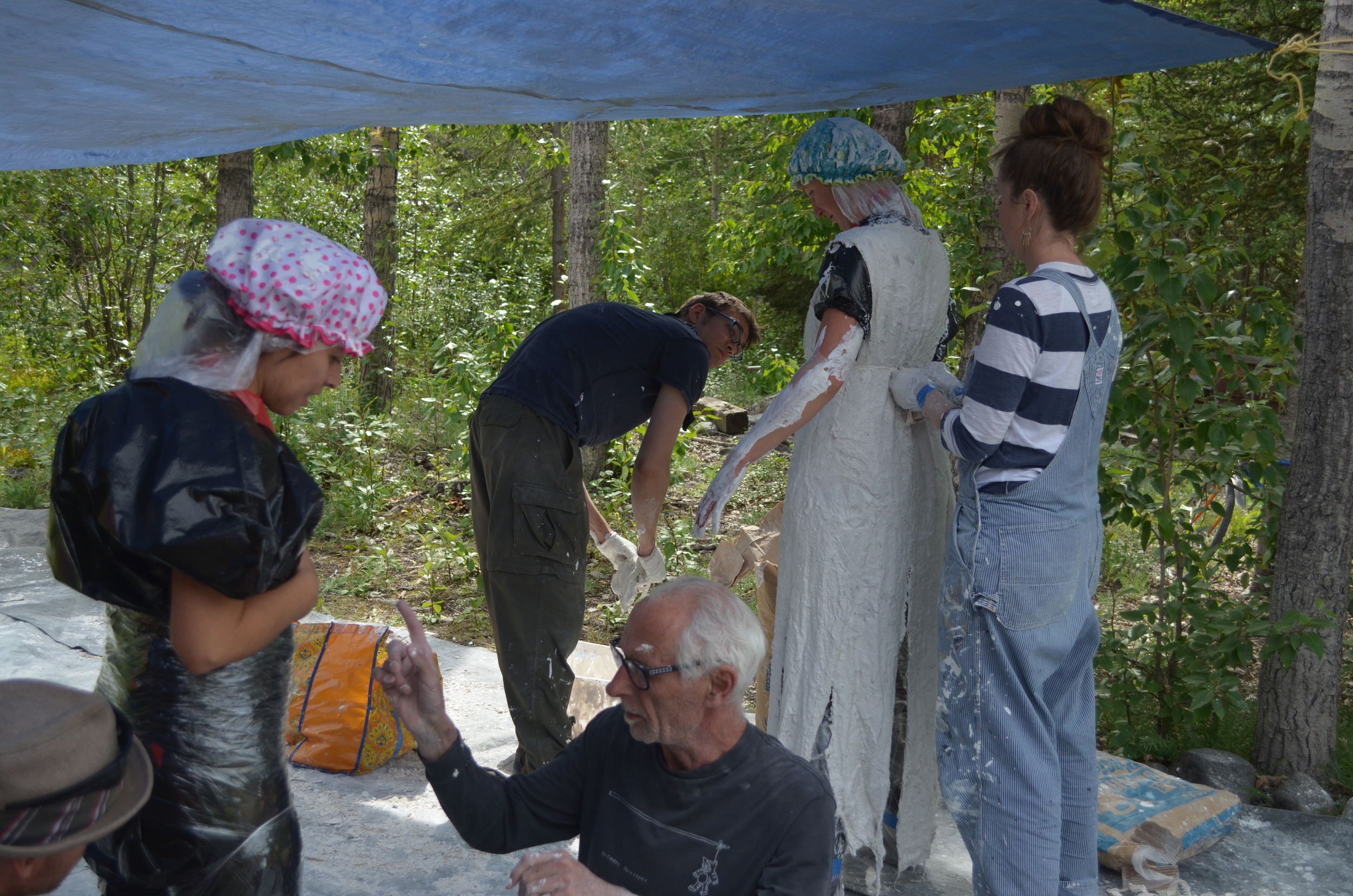

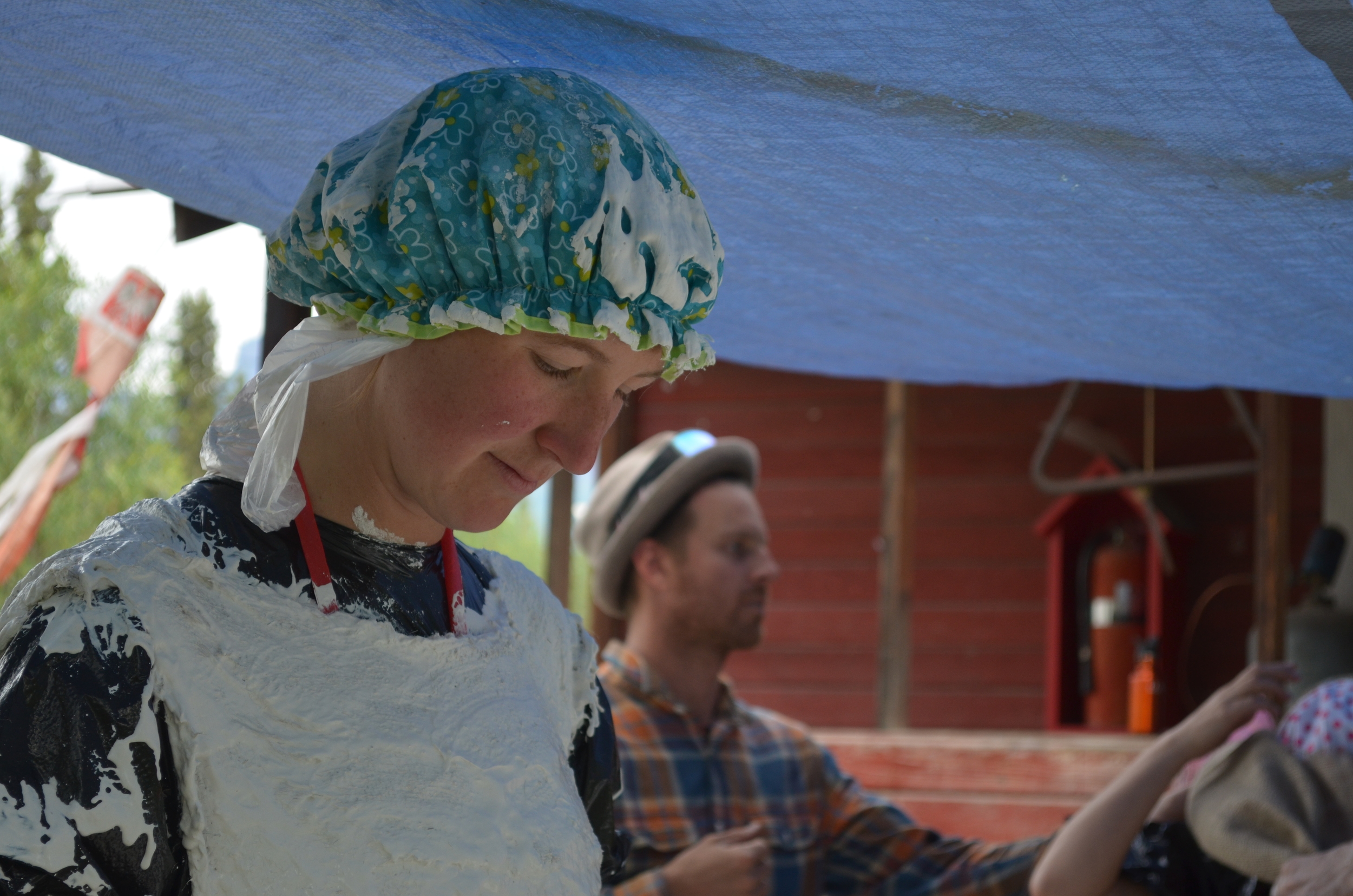
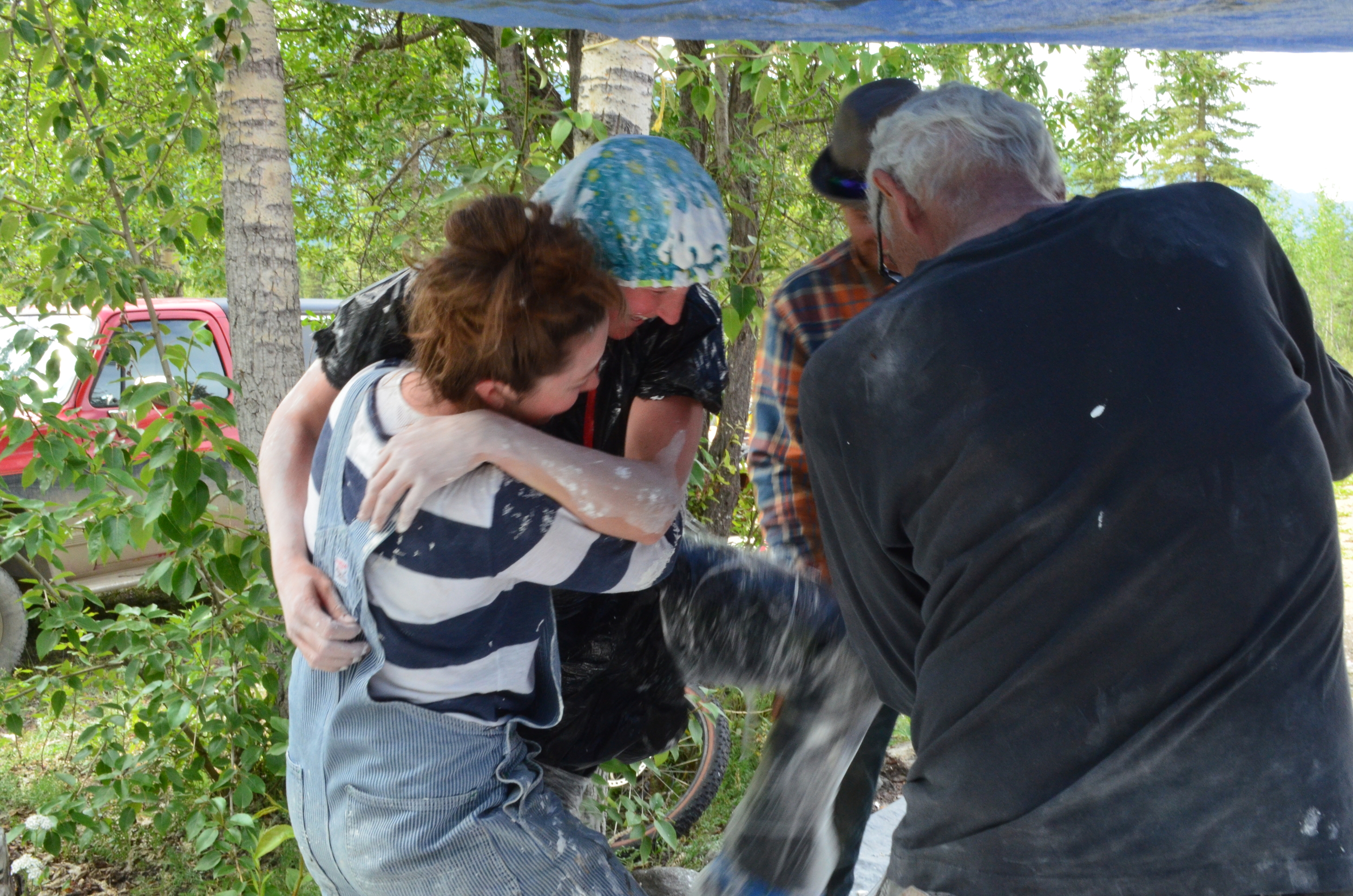

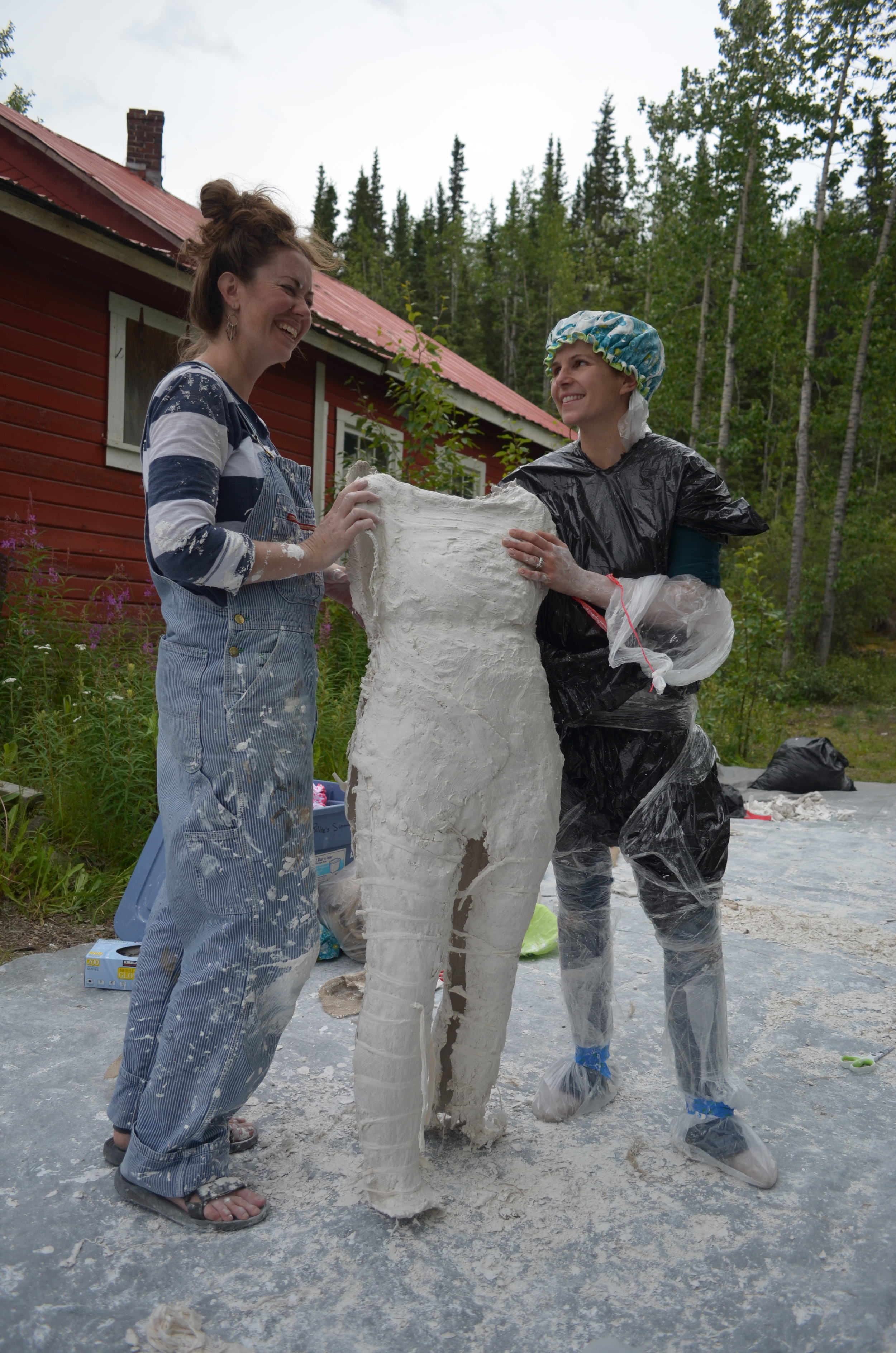
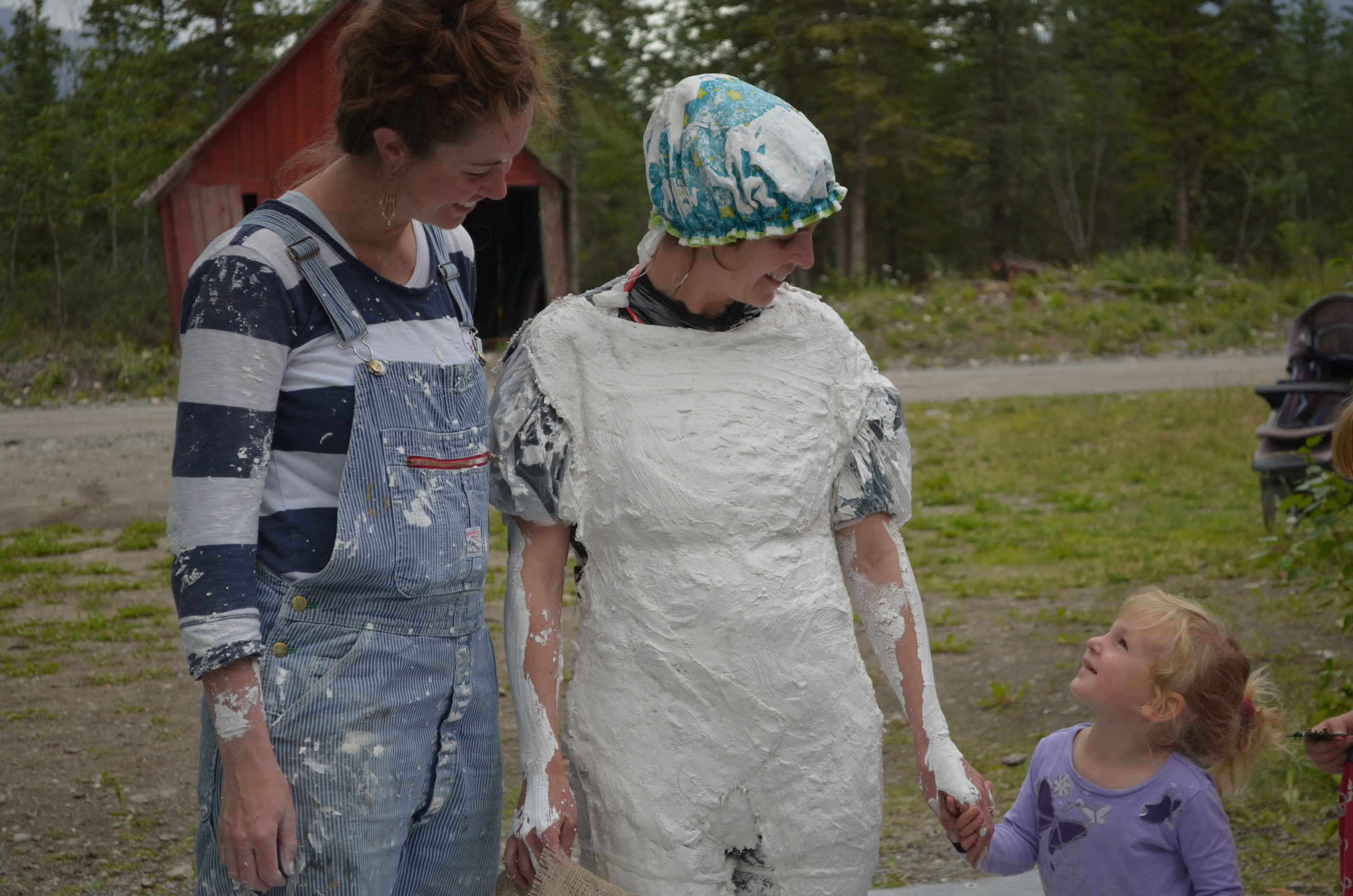
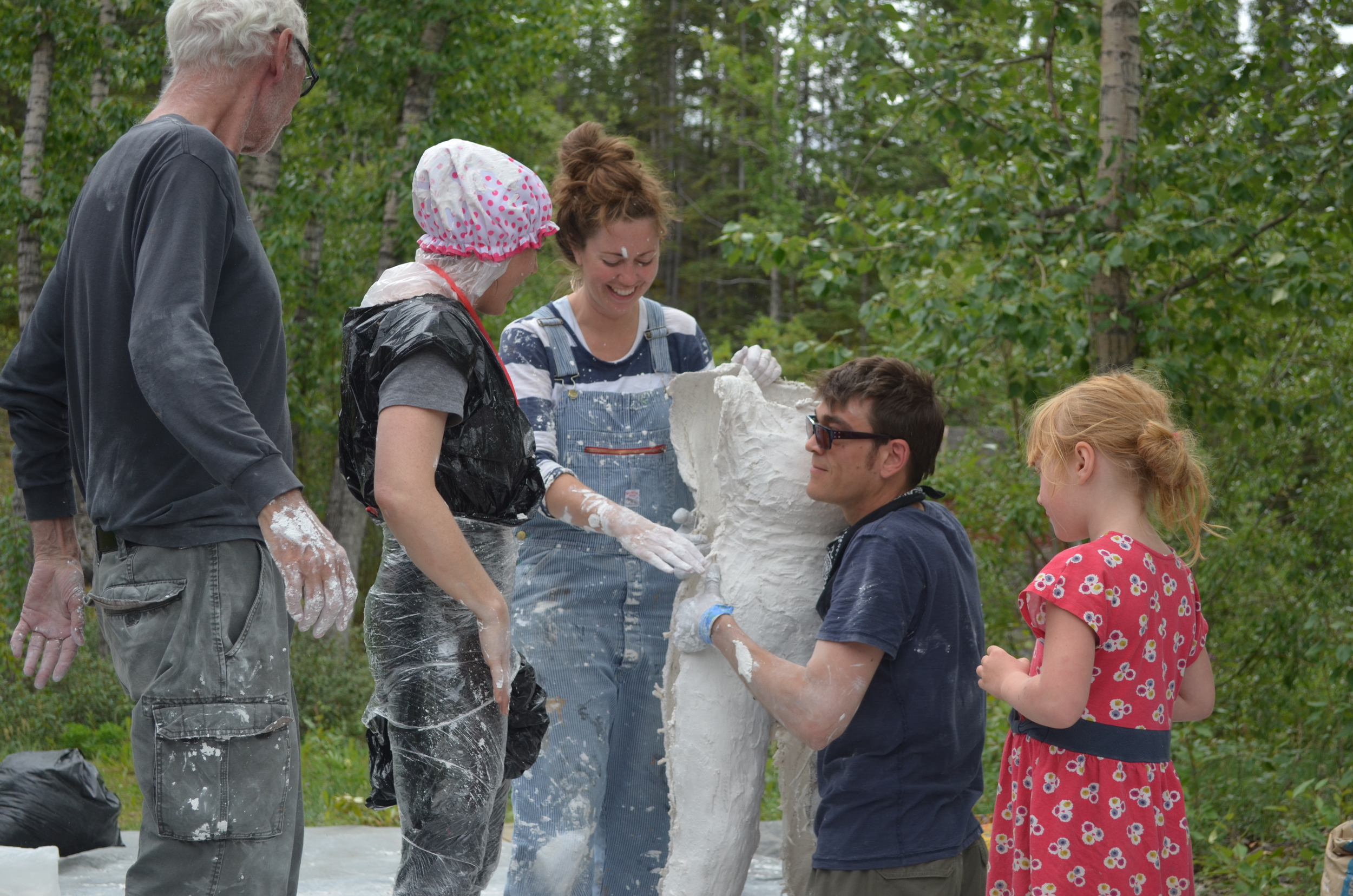
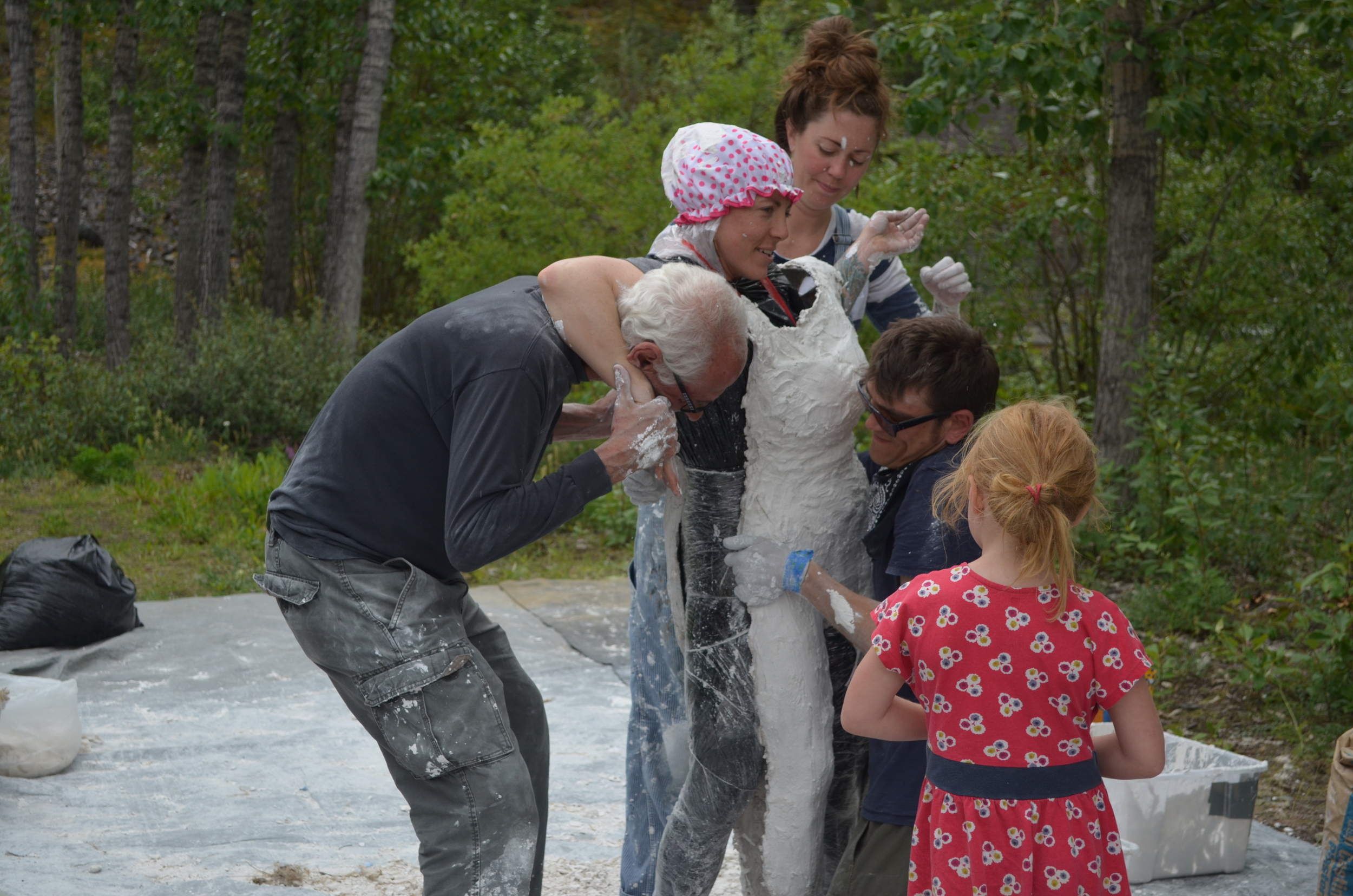
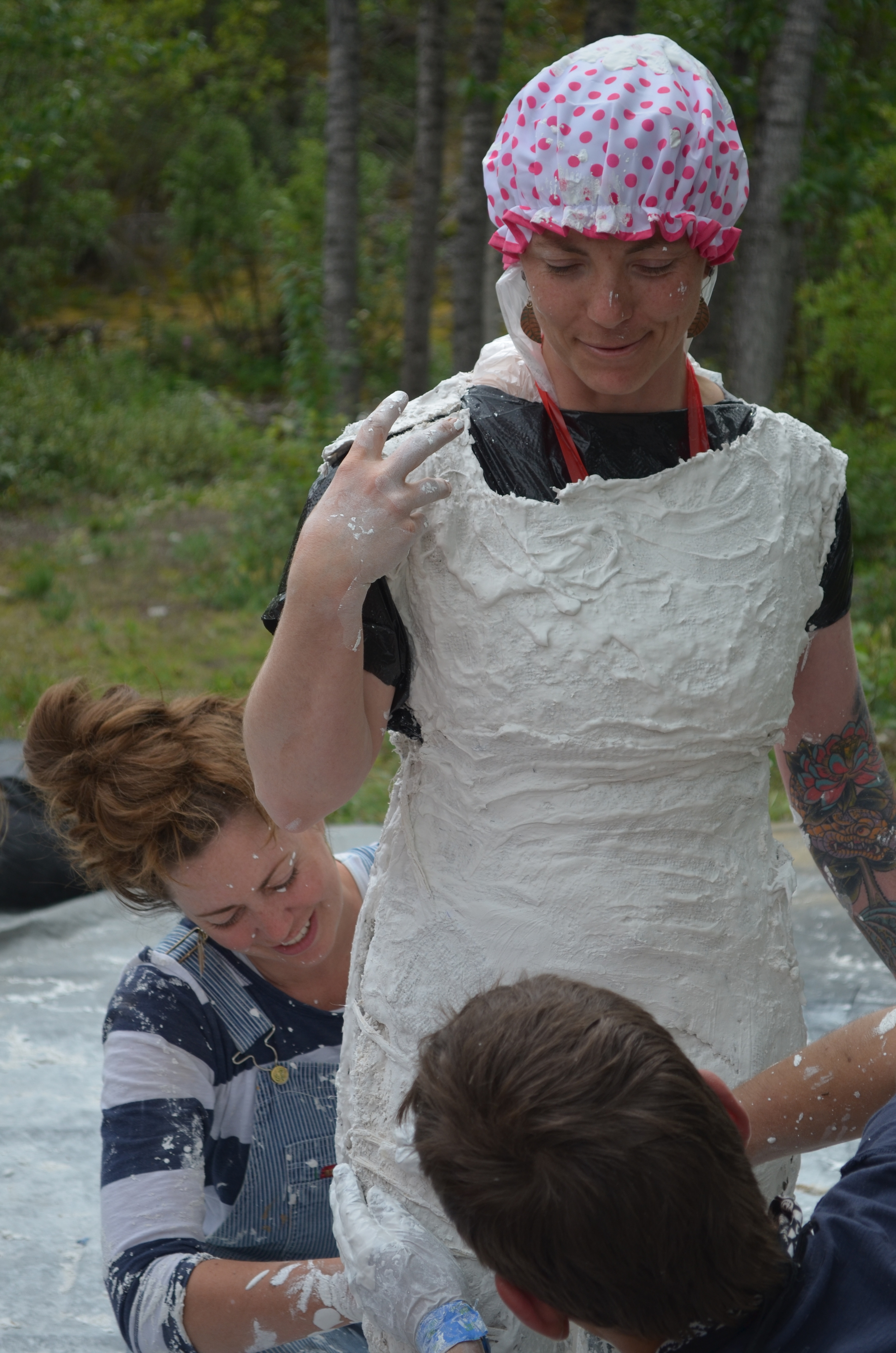
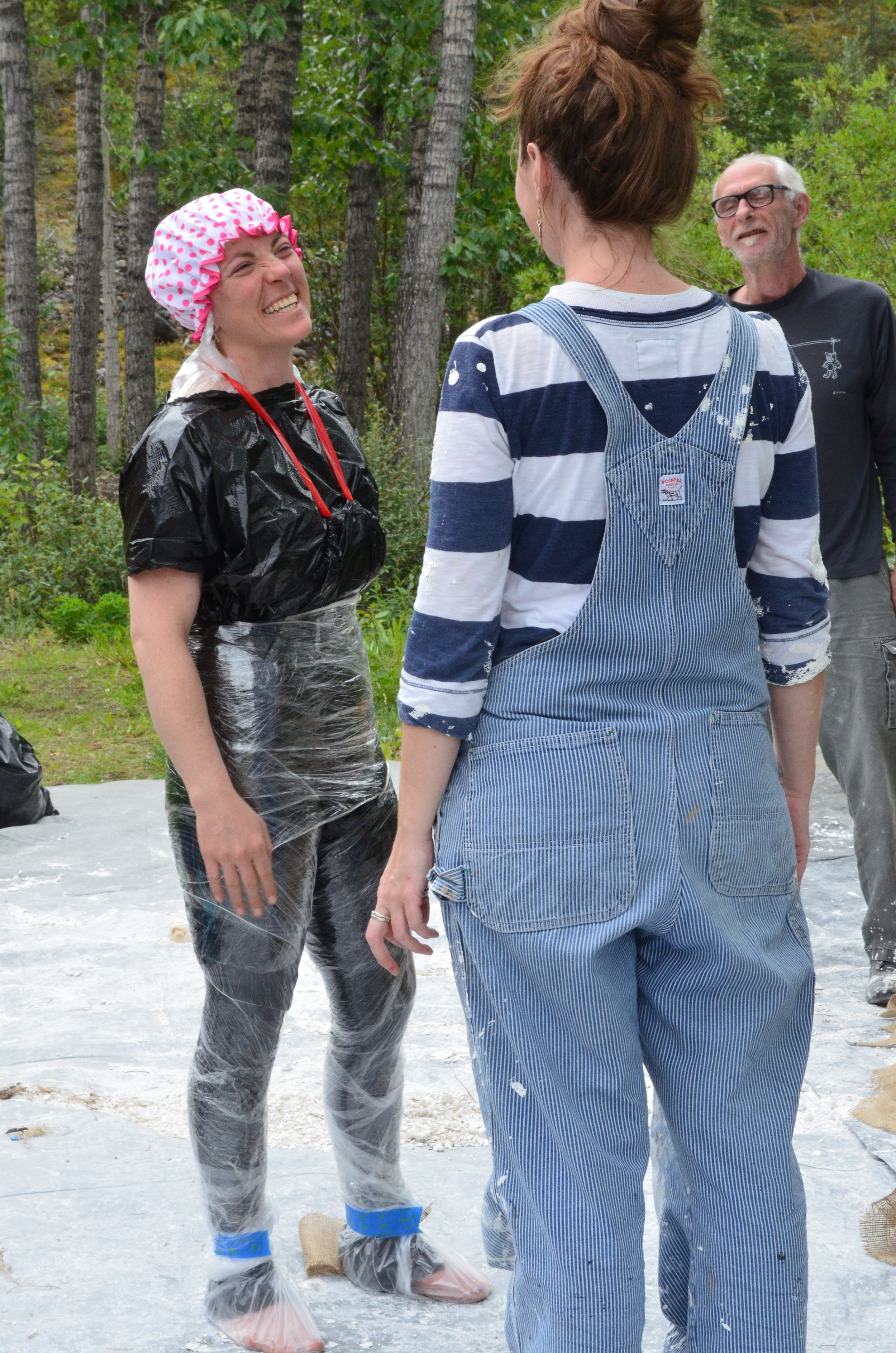

One of 30 very special casting sessions, captured by local filmmaker, Joshua Bransetter:
PHASE II
fleshing OUR stories
While part of the 100Stone team continued to cast our statewide community on and off the road system, another part moved into a derelict church on Spenard Road, Anchorage, where they worked to bring each figural vessel--story--to life. With the support of countless volunteer sculptors, production assistants, and the incredible hospitality of the Anchorage community at large, our team buzzed around our new hive for hundreds of hours bringing these stories to life. Some workers occupied the basement sealing the vessels, mixing lightweight concrete and filling the forms. Outside, the team produced hundreds of arms and heads from mannequins while guest sculptors merged them with their bodies and positioned them in their chosen gestures. Once we found the most efficient systems for production we were able to complete approximately two figures per day. The first two figures took two weeks.
By September of 2015, the inner walls of the church's sanctuary were lined shoulder to shoulder in the magnificent beauty of our state's most vulnerable stories of mental illness. It was then that the statues became Stones, and the Stones became real. They became family.
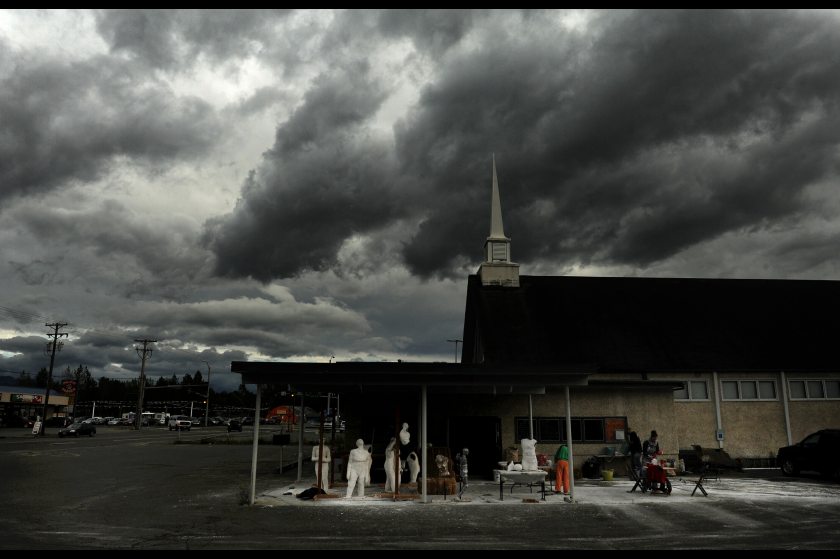


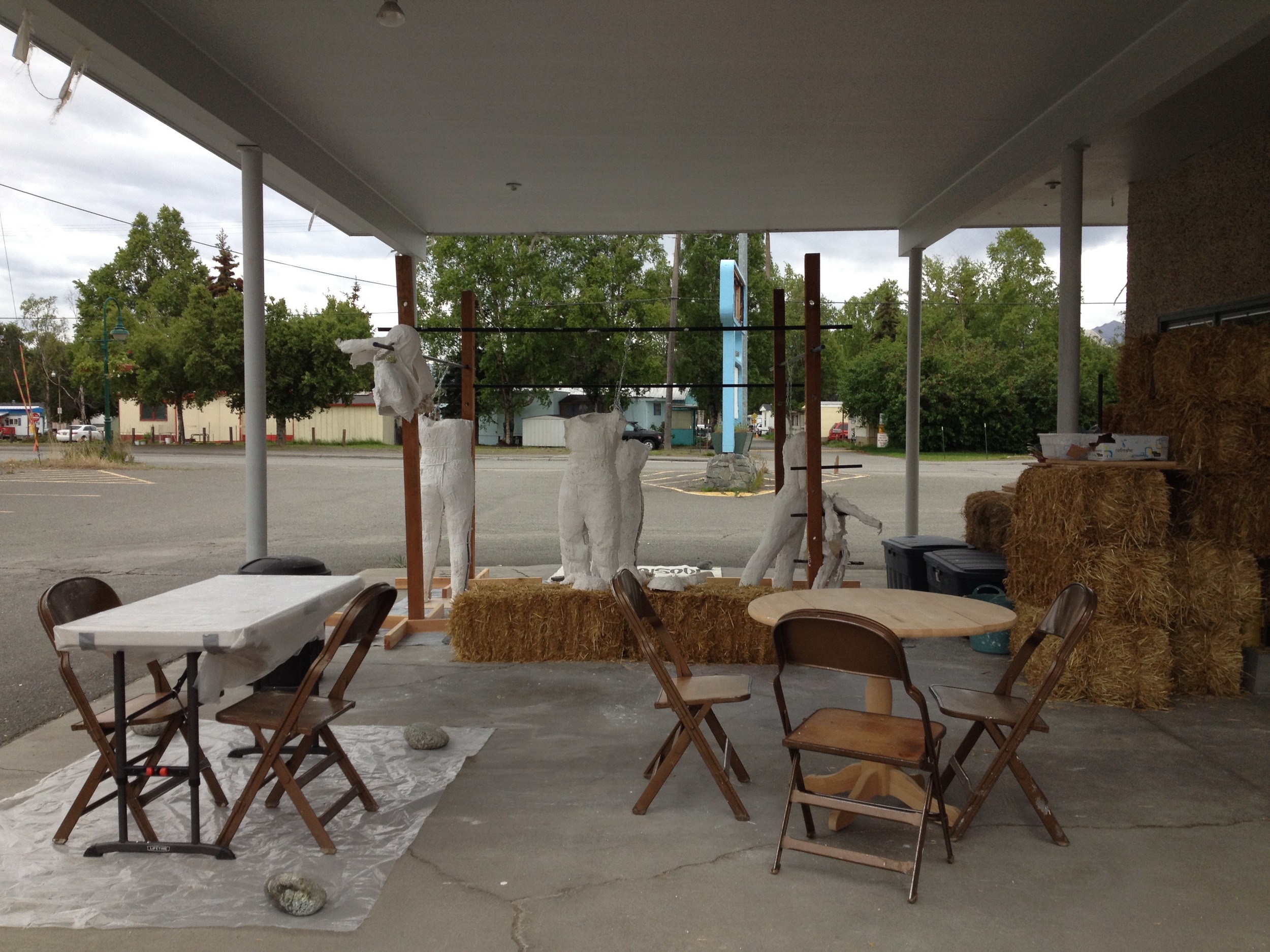

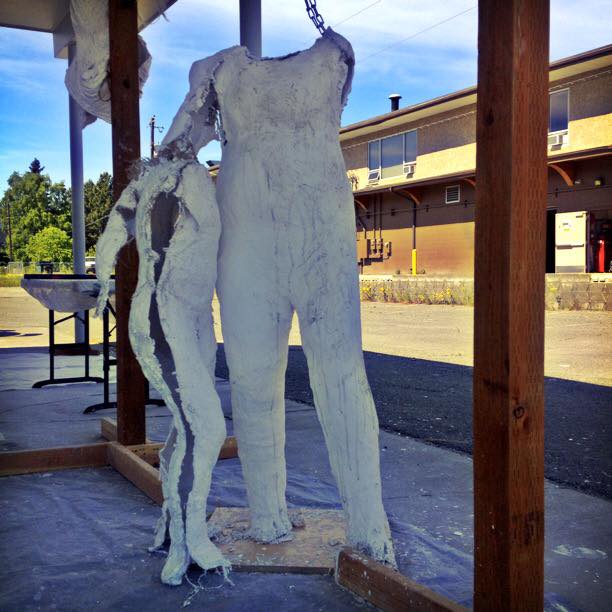

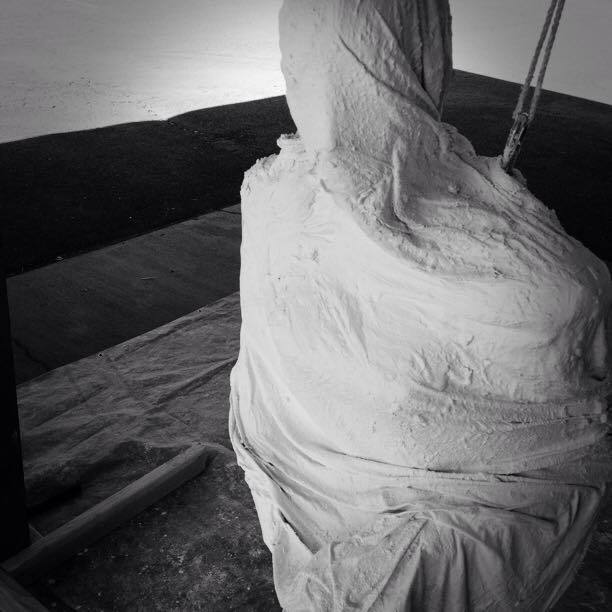
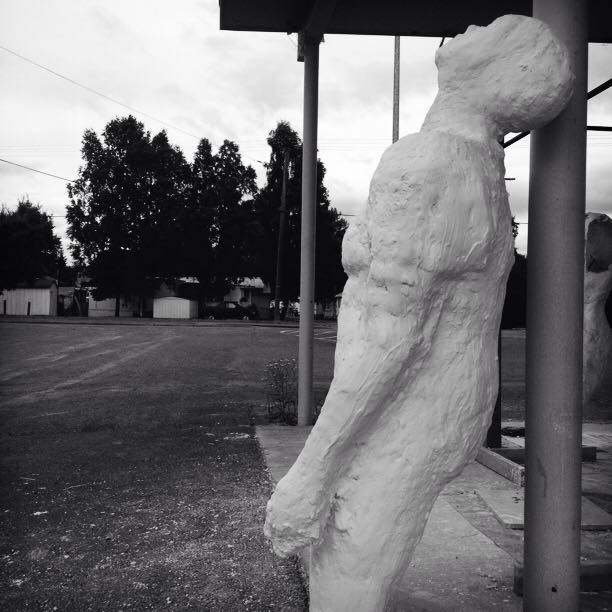
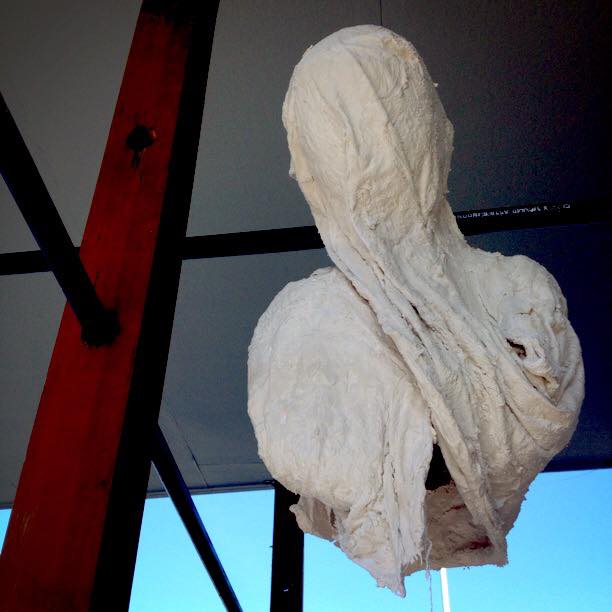
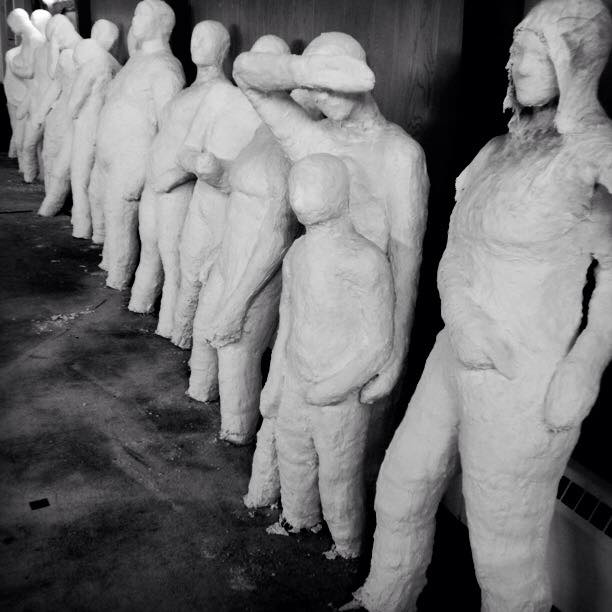
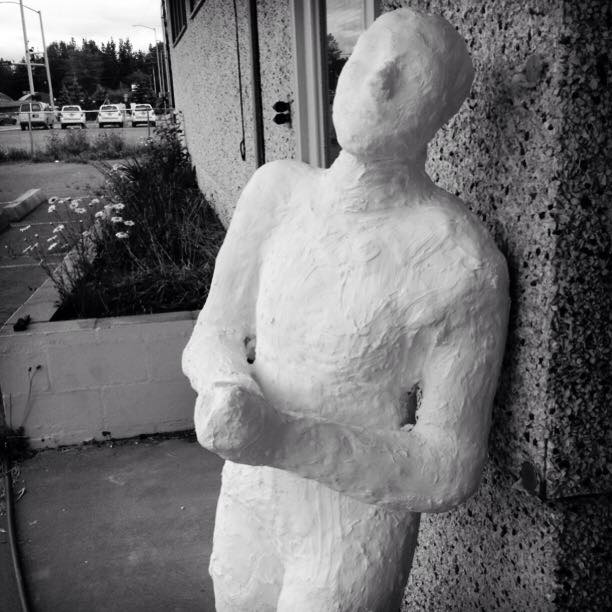
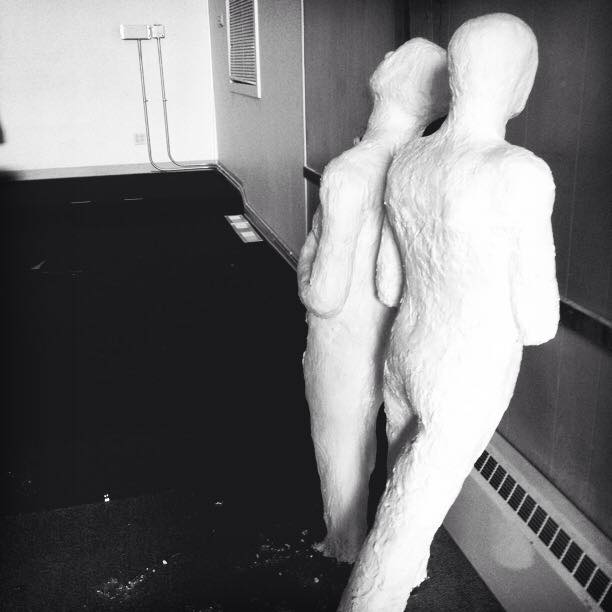
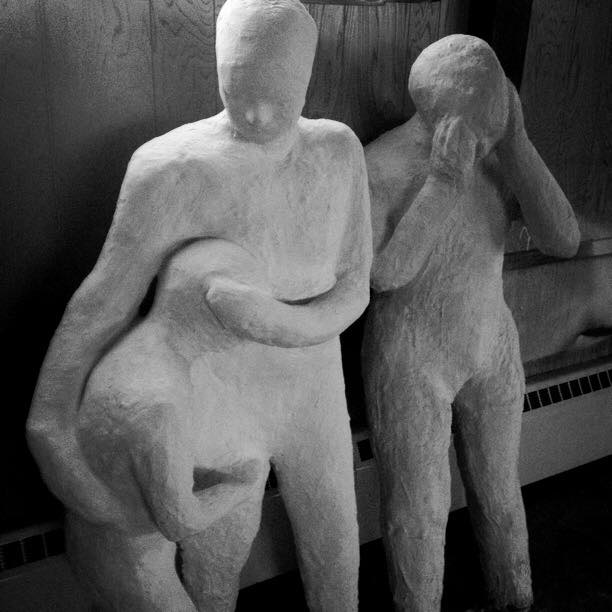

See also Bob Halinen's award winning photo story. Alaska Dispatch News, 7/09/15
PHASE III
A chorus of truth echoes through the inlet
On November 21st, after a sustained deep freeze in the leading weeks creating the perfect conditions for the winter installation, and the incredible luck of an accumulation of eight inches of snow the morning of install, the 100Stone team, joined by Ironworkers 751, Laborers 341, JD Steel, Whalen Construction and non-labor volunteers, set all 85 figural stories onto the icy beach of Point Woronzof. Cushioned by the warm blanket of snow, the sounds of clanging steel, crushing ice, and the shouting and laughing of men and women echoed across the Inlet. The substrate was perfect. The ice was hearty and thick, yet compliant. The figures slid across the snow, weightless, and nearly jumped onto their footings with that few inches of elevation. Within 4 hours, all 85 Stone were nested into their wintering grounds. It was the full realization of a creative vision yet unparalleled in Alaska. Word of its completion immediately traveled international channels.
Regional Emmy Award winning documentary by Scott Jensen of Alaska Dispatch News.
See also Bob Halinen's award winning follow up photo story. Alaska Dispatch News, 11/21/15
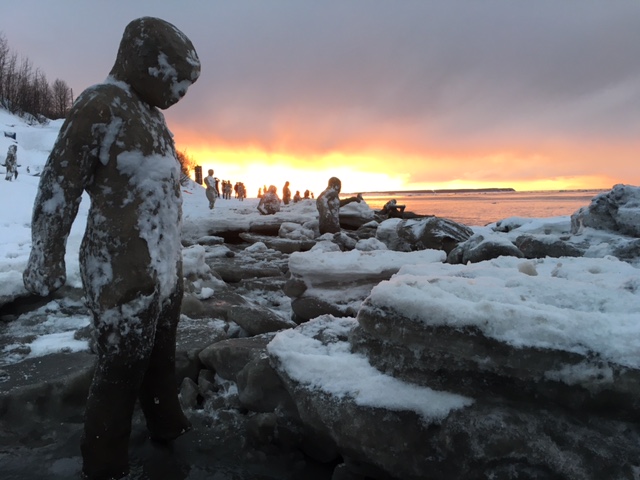

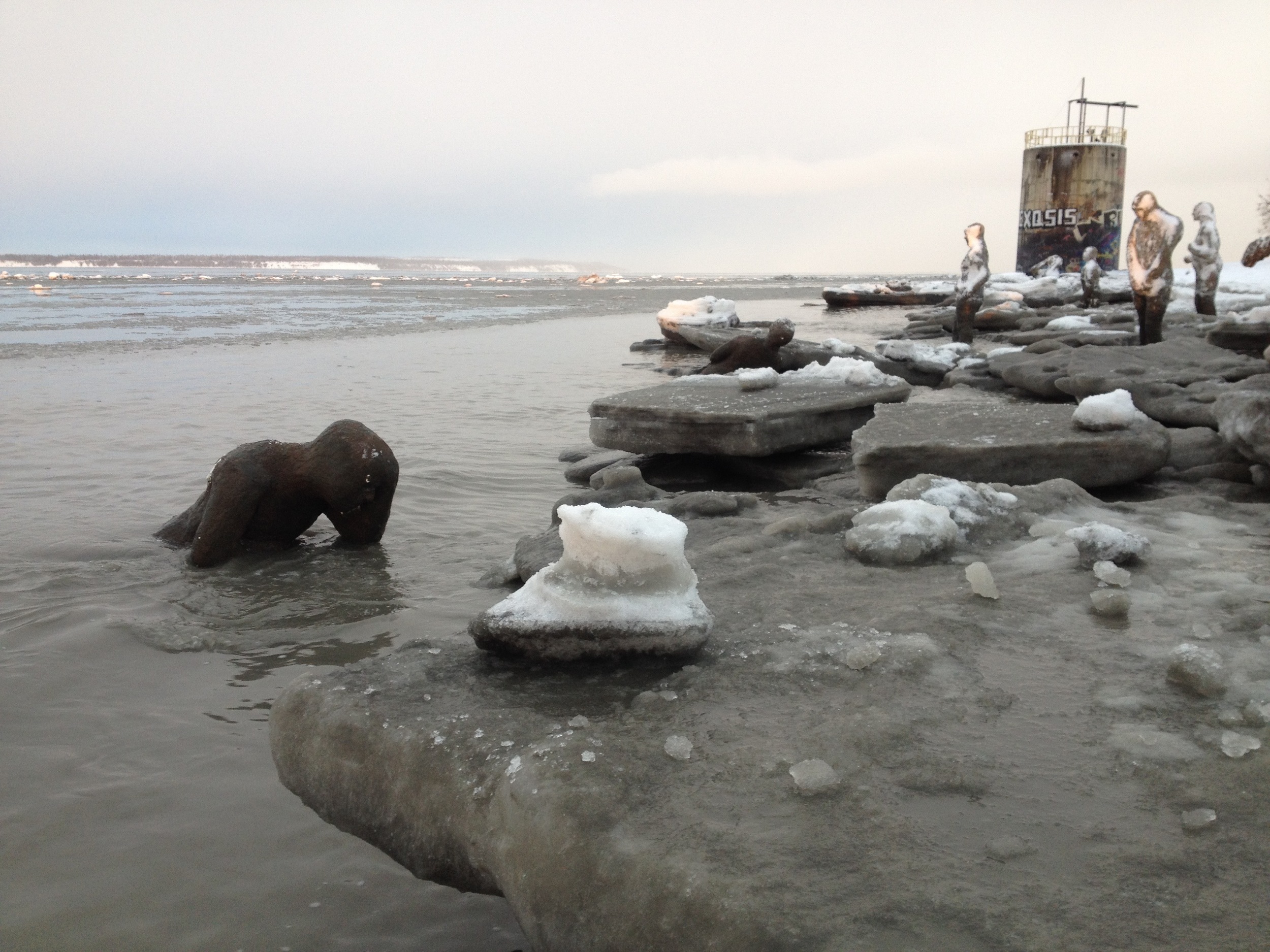
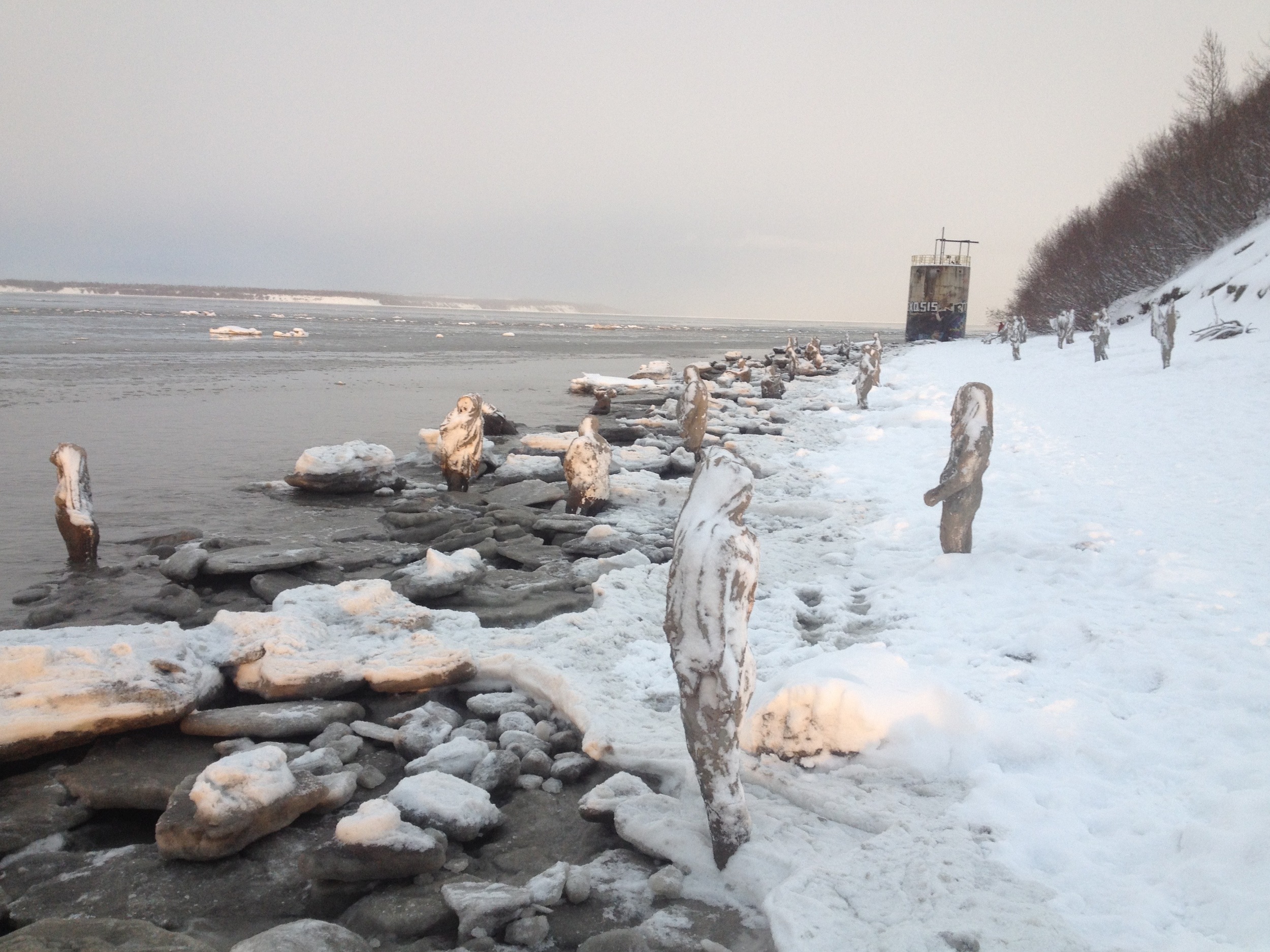

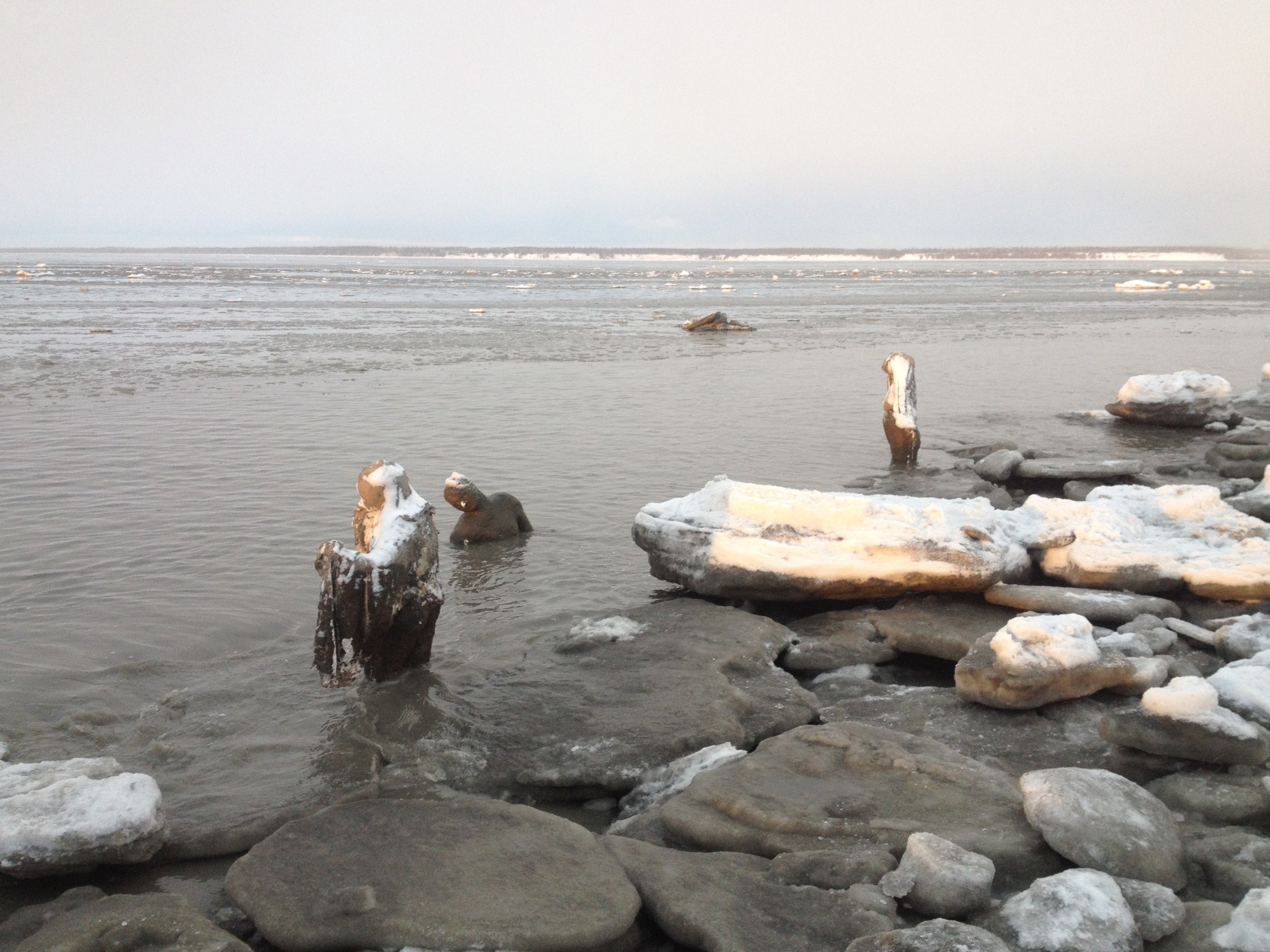
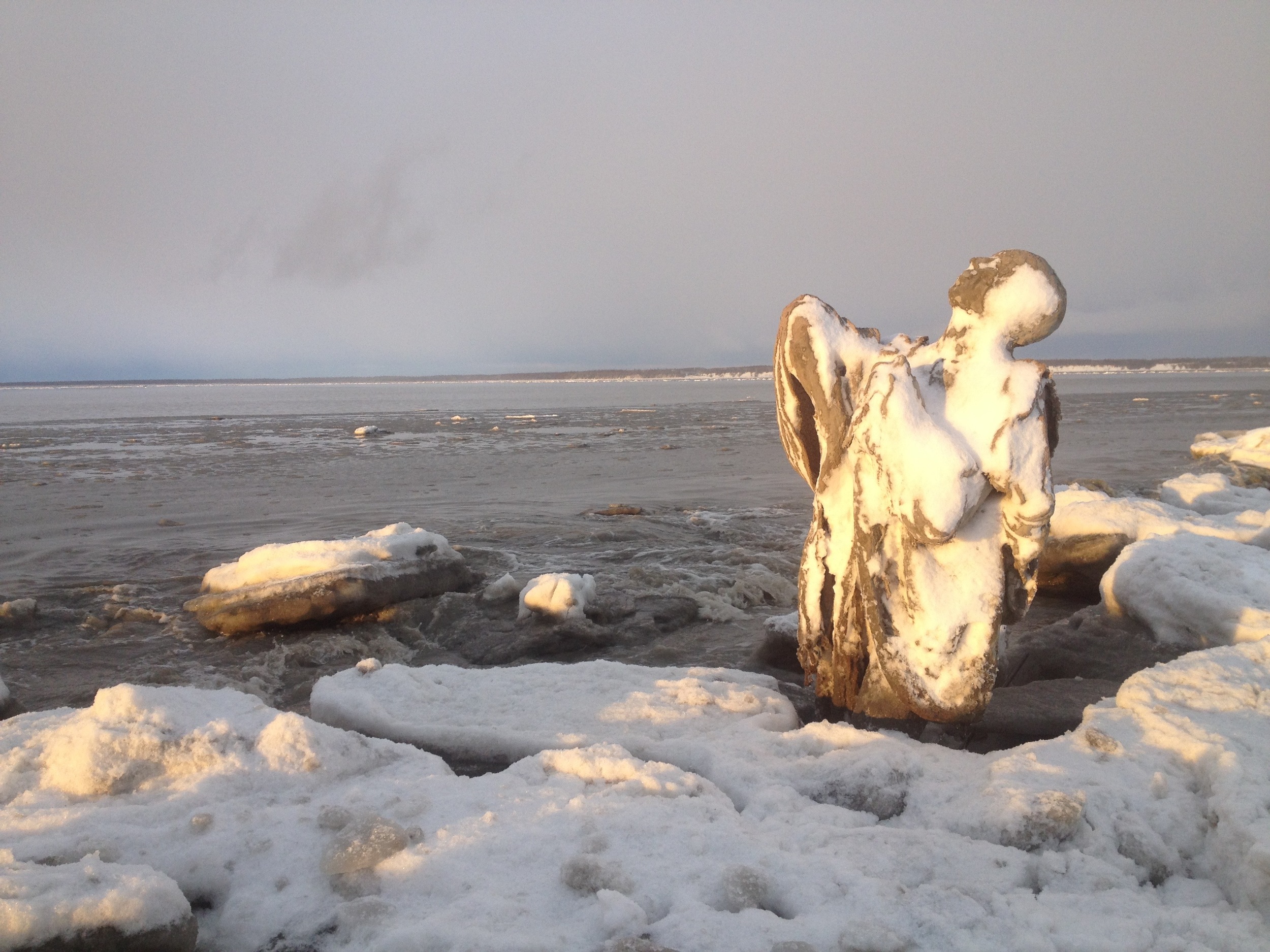
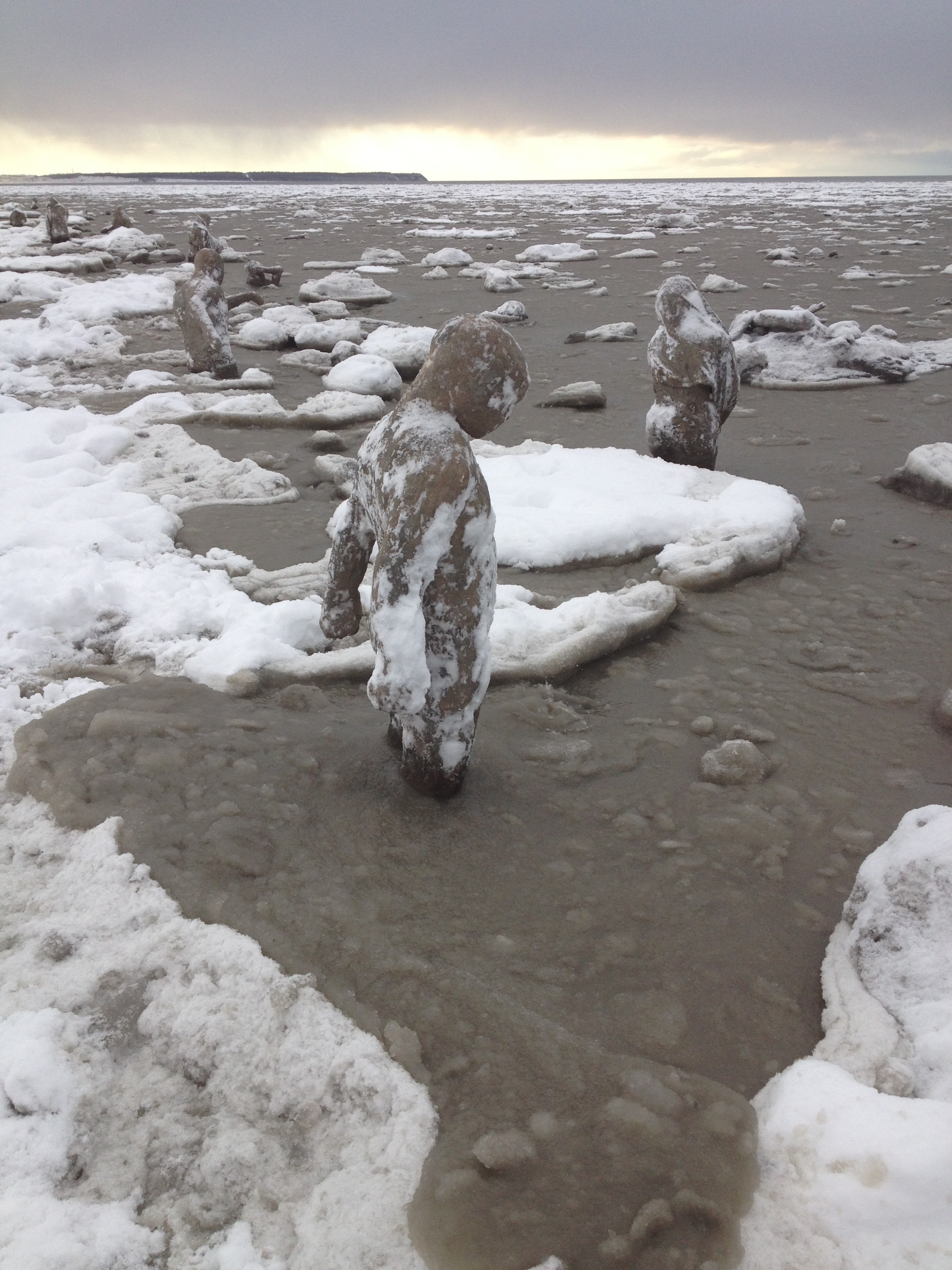



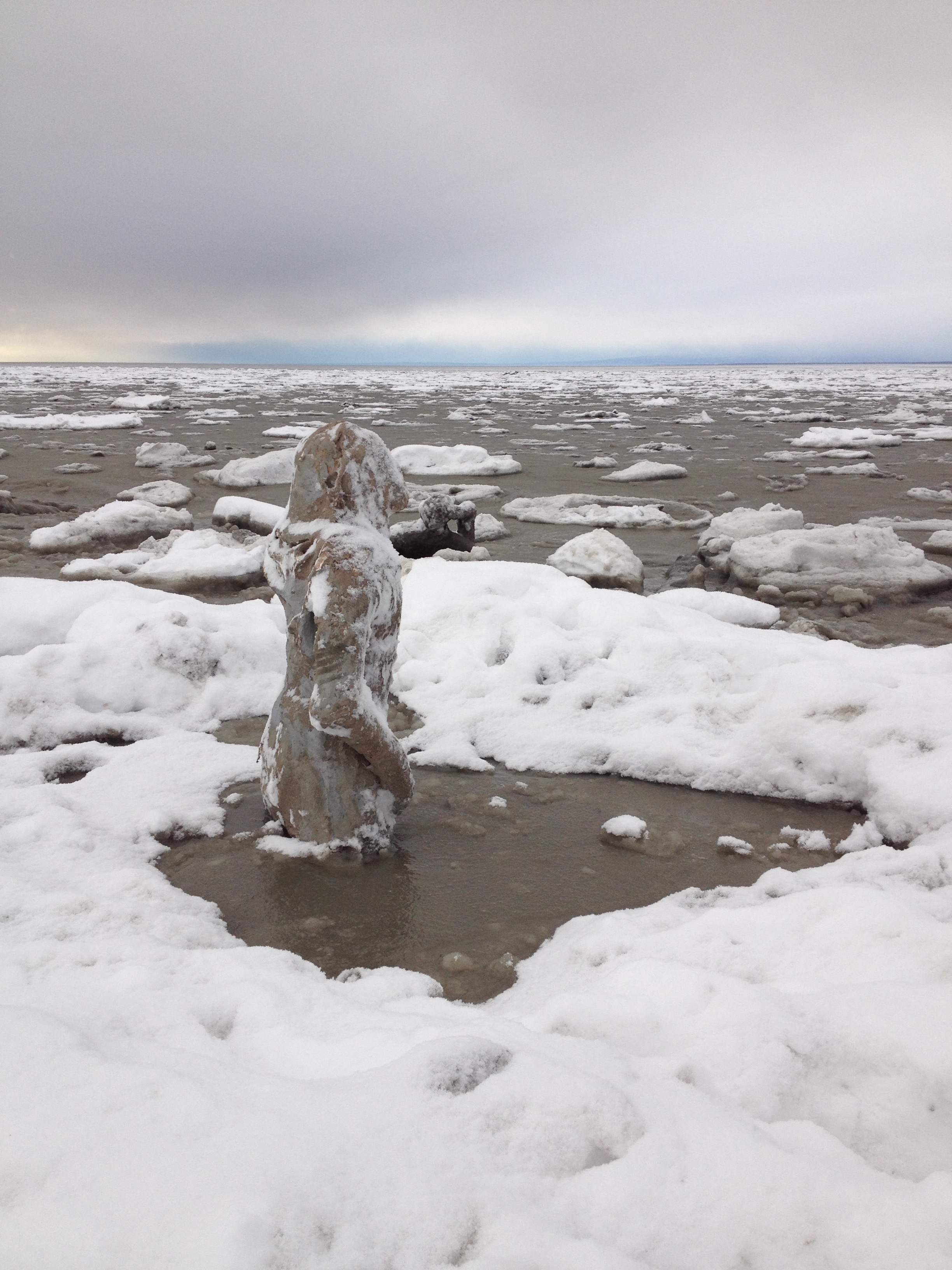
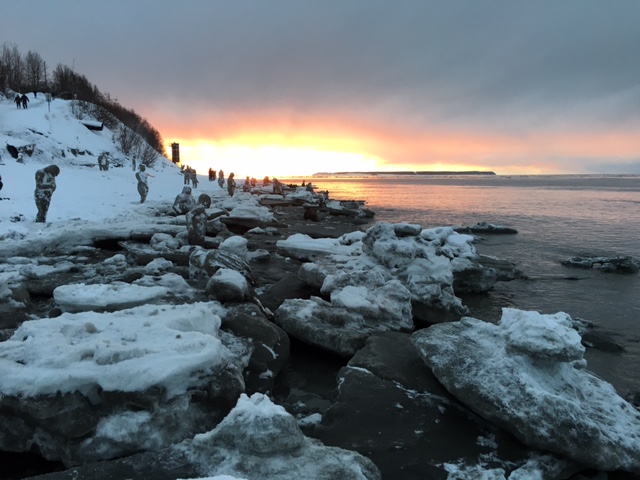
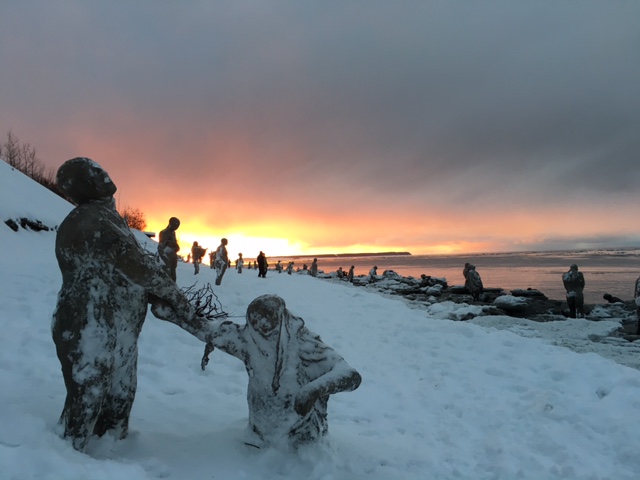
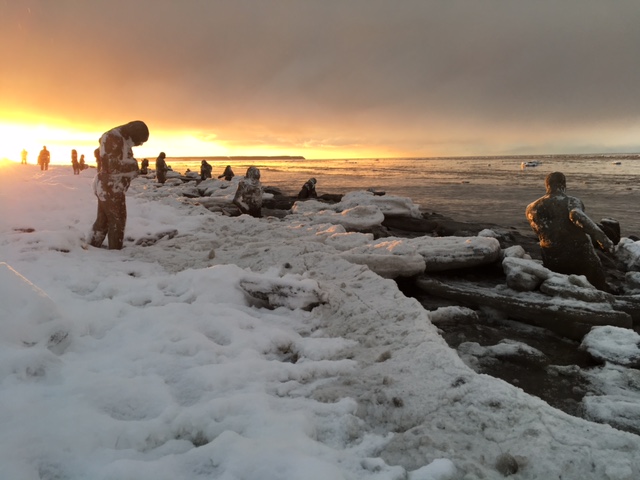
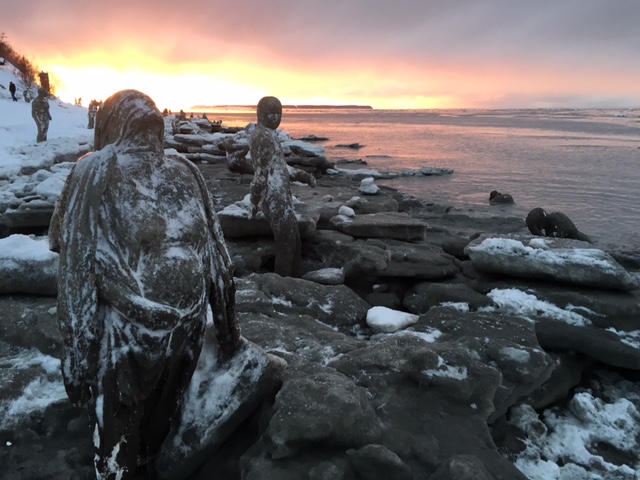
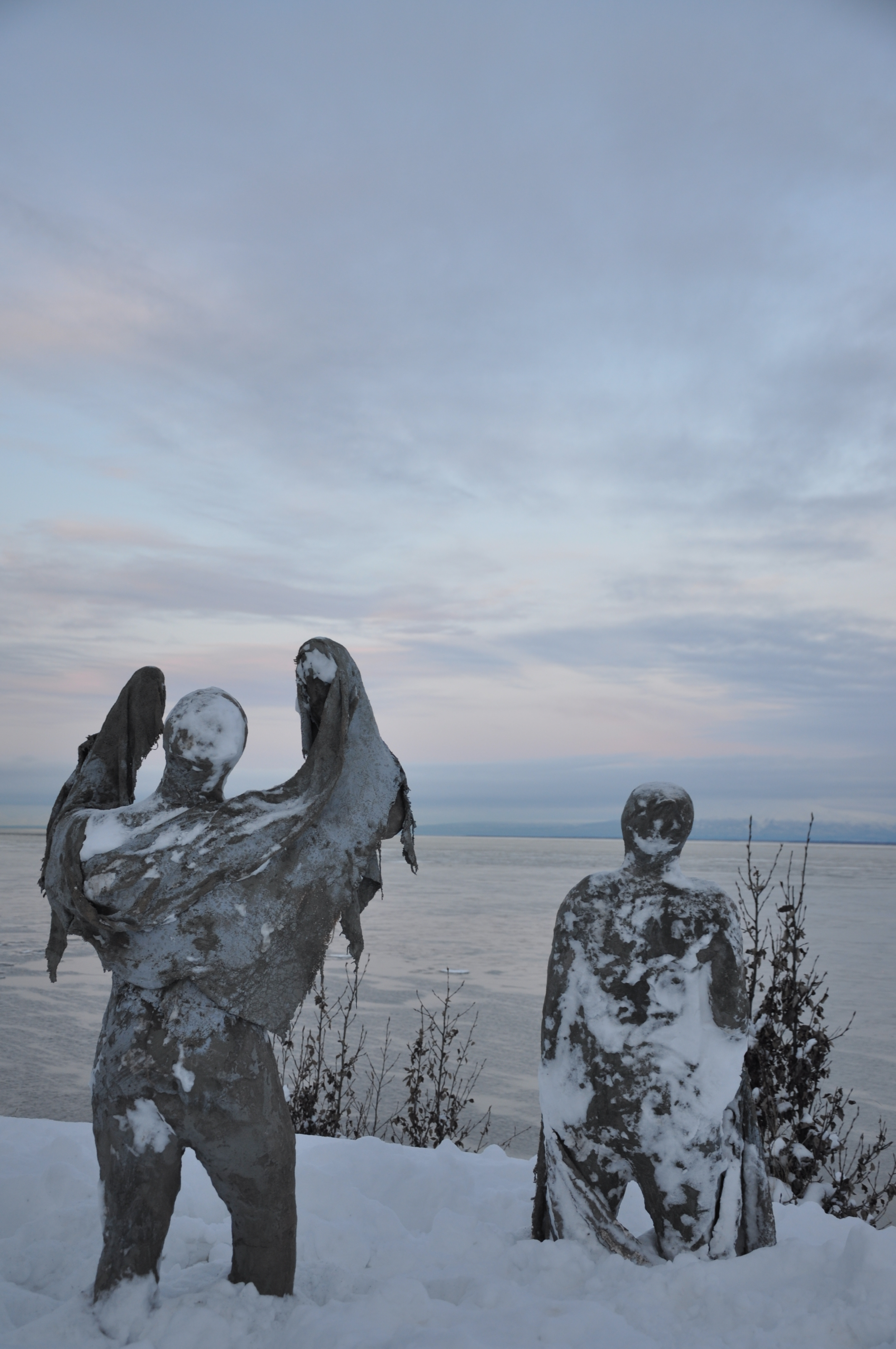
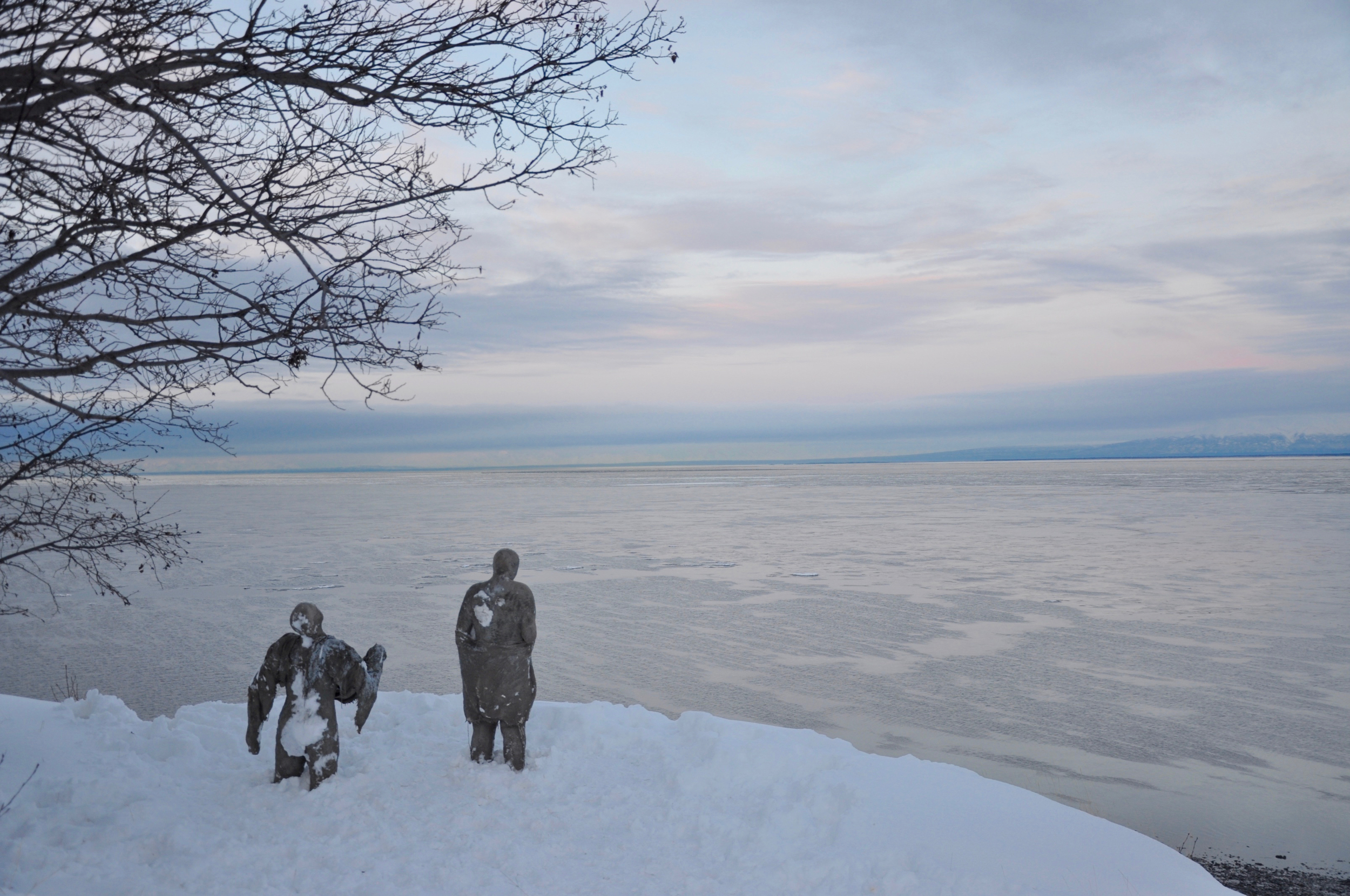


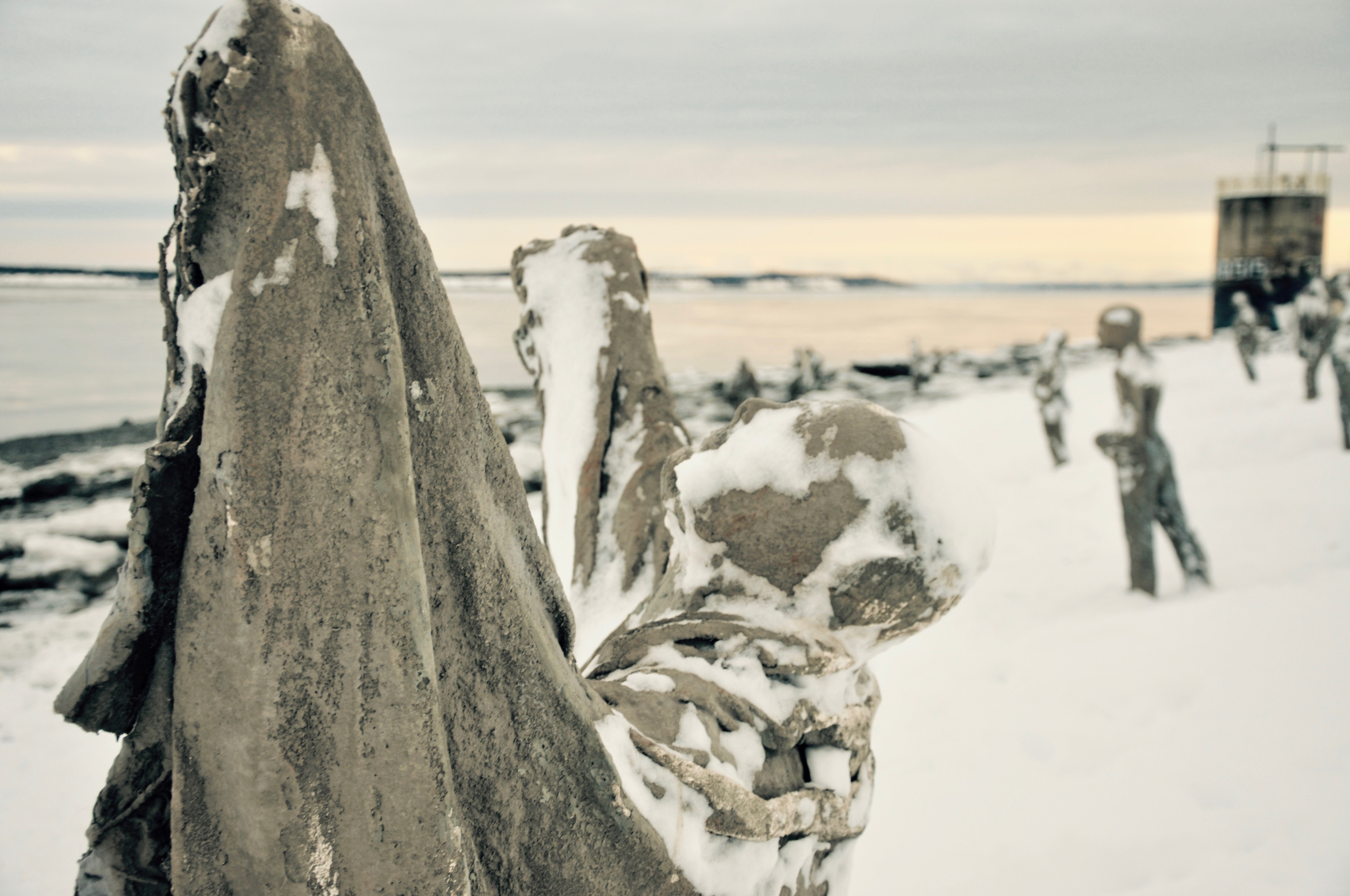
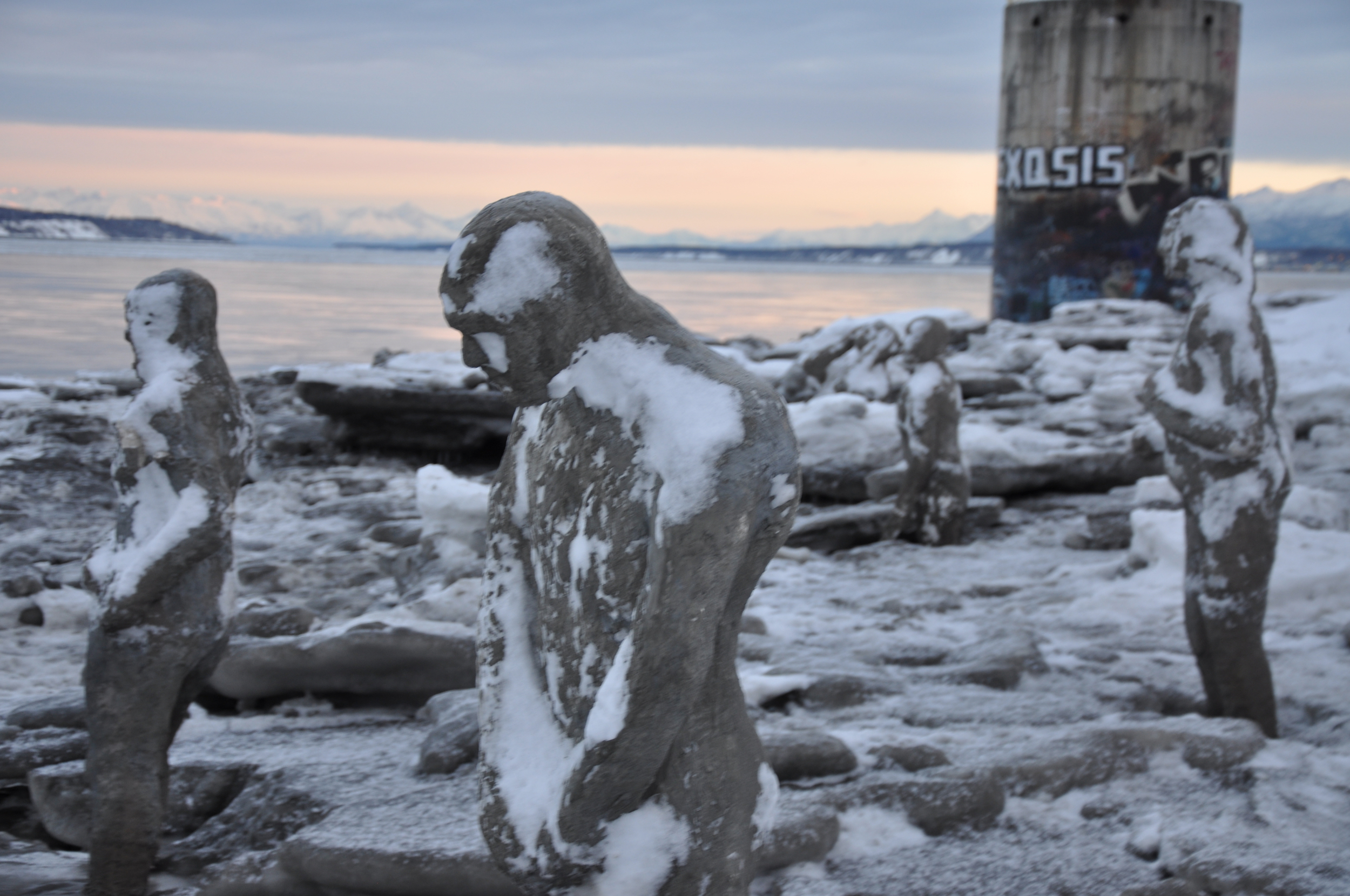

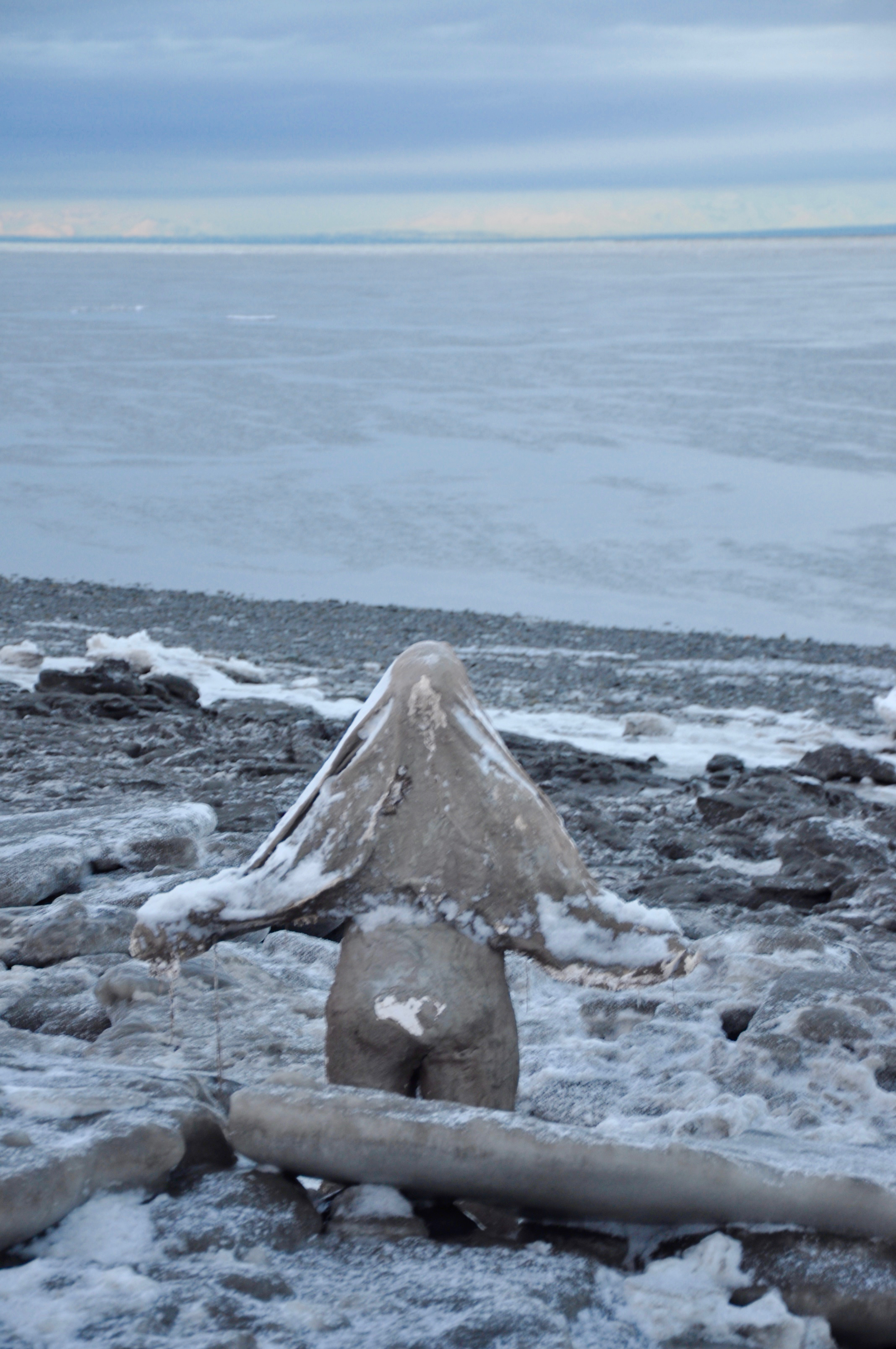

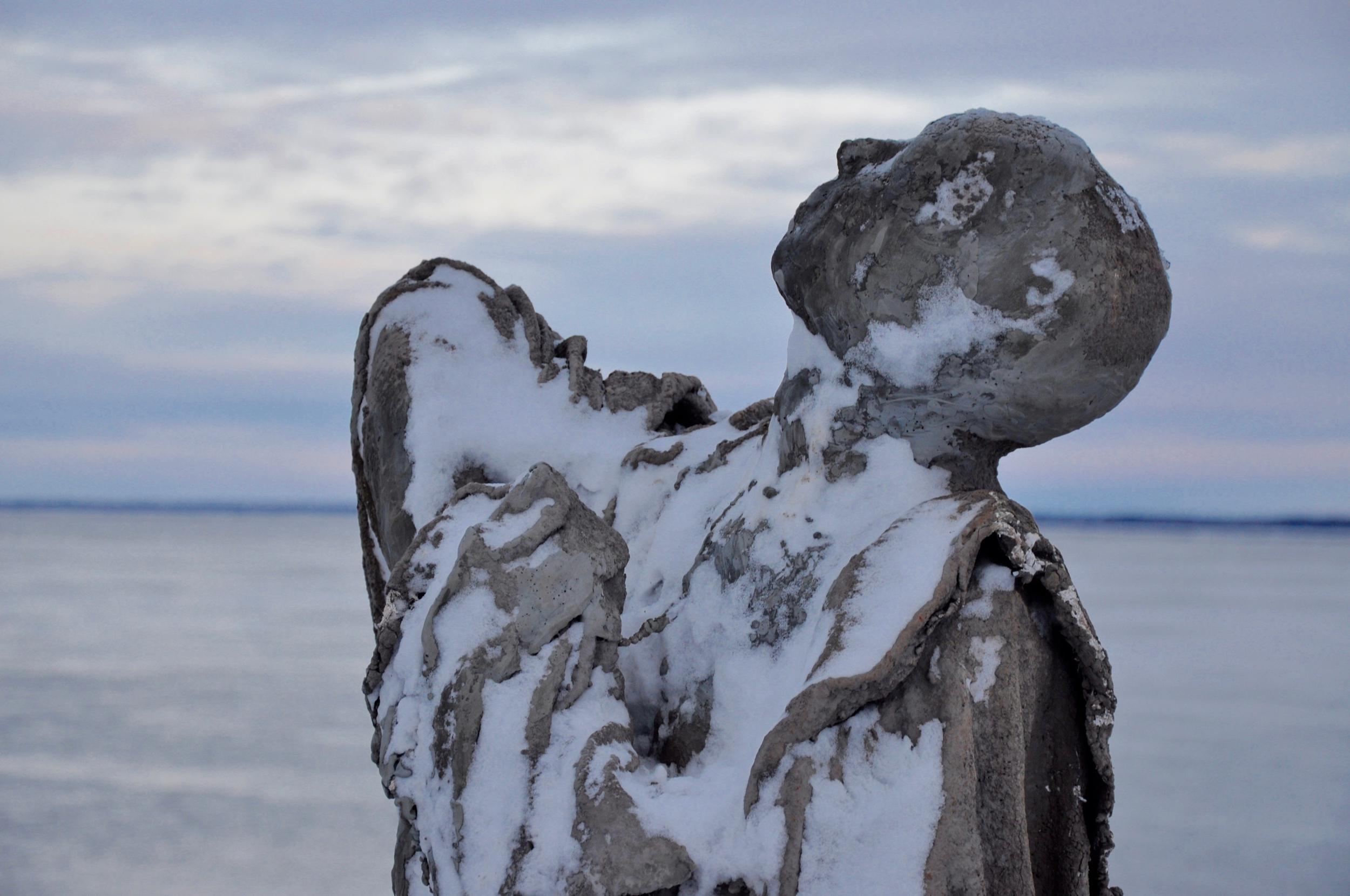
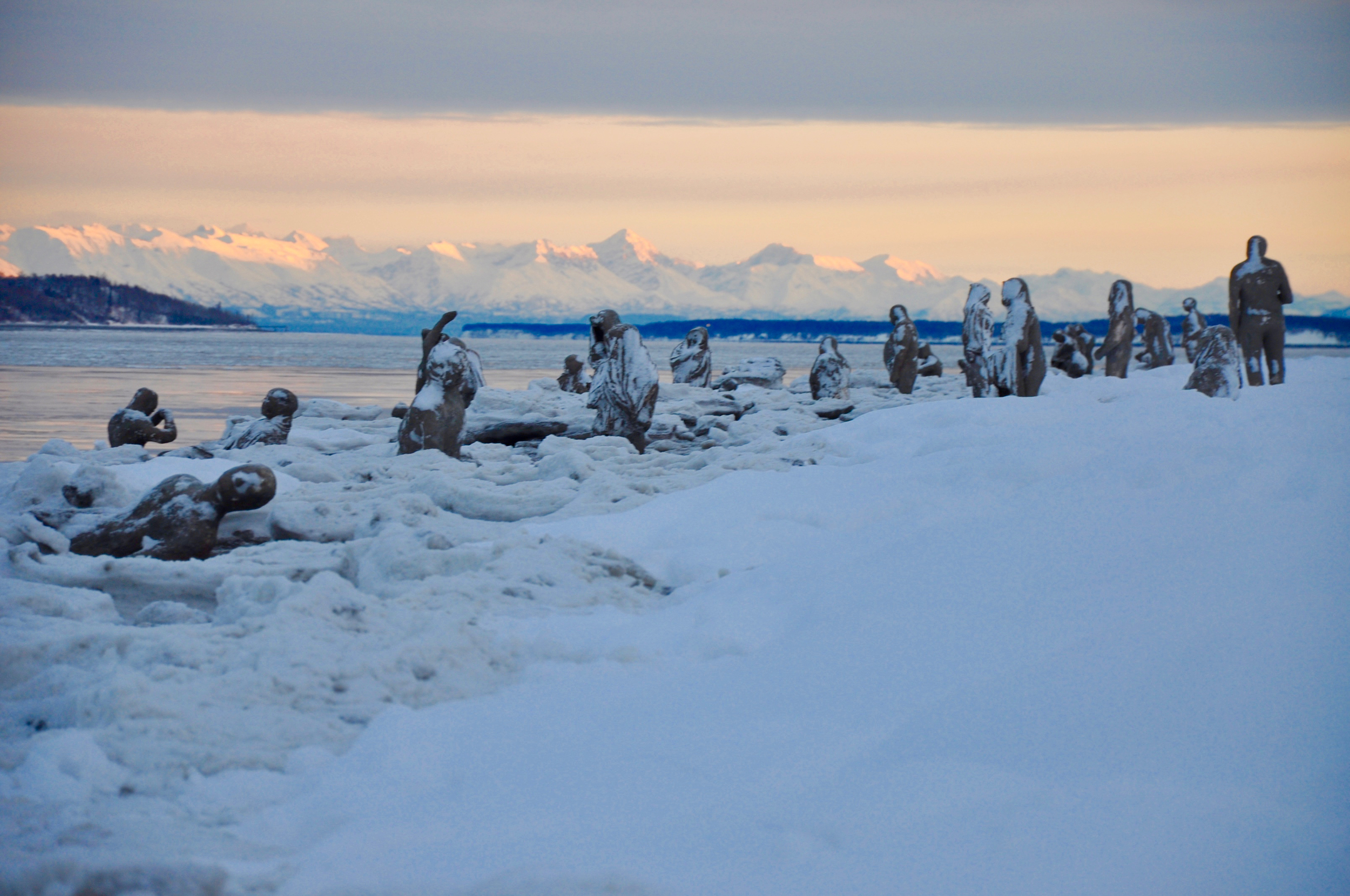
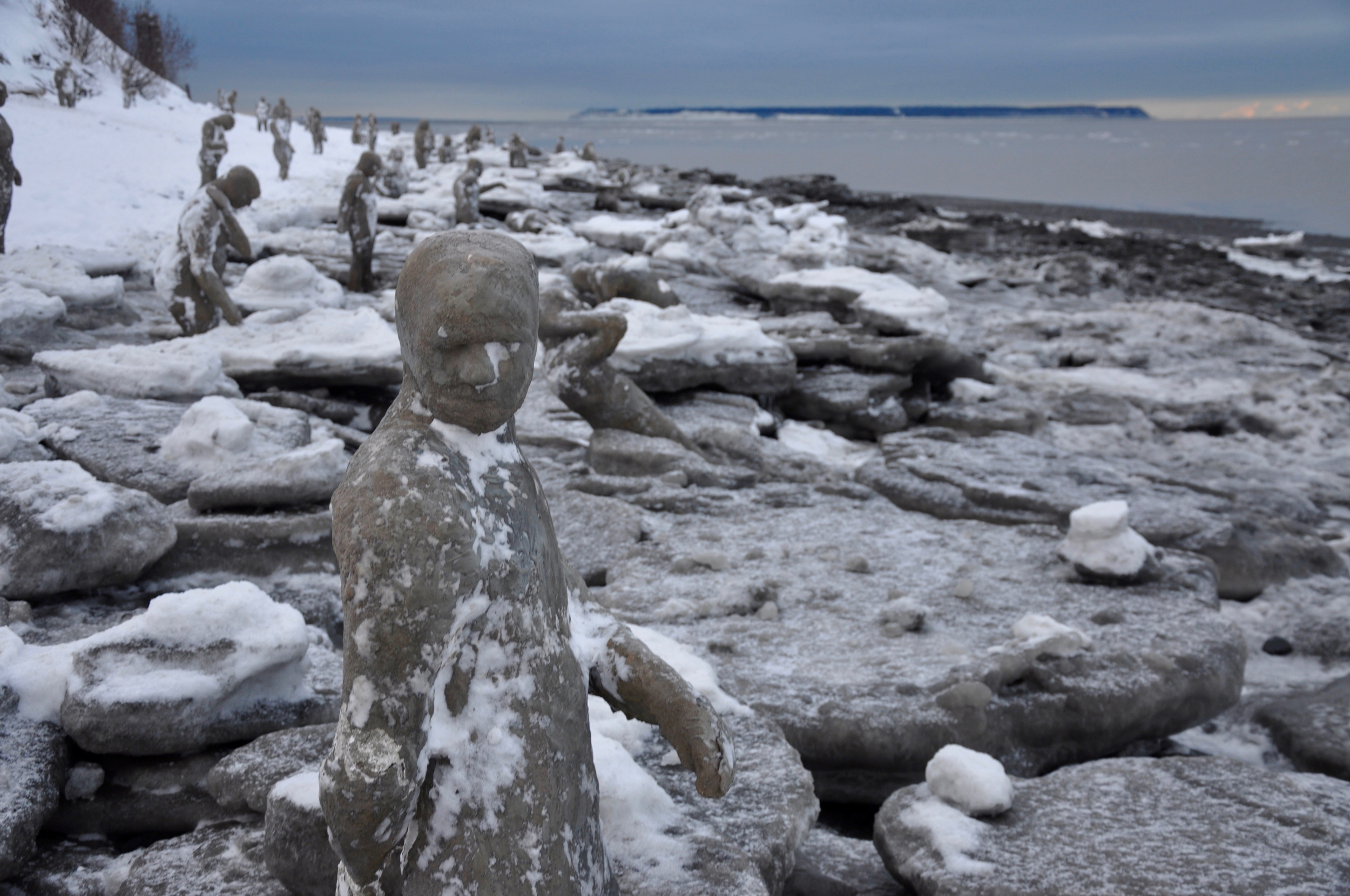

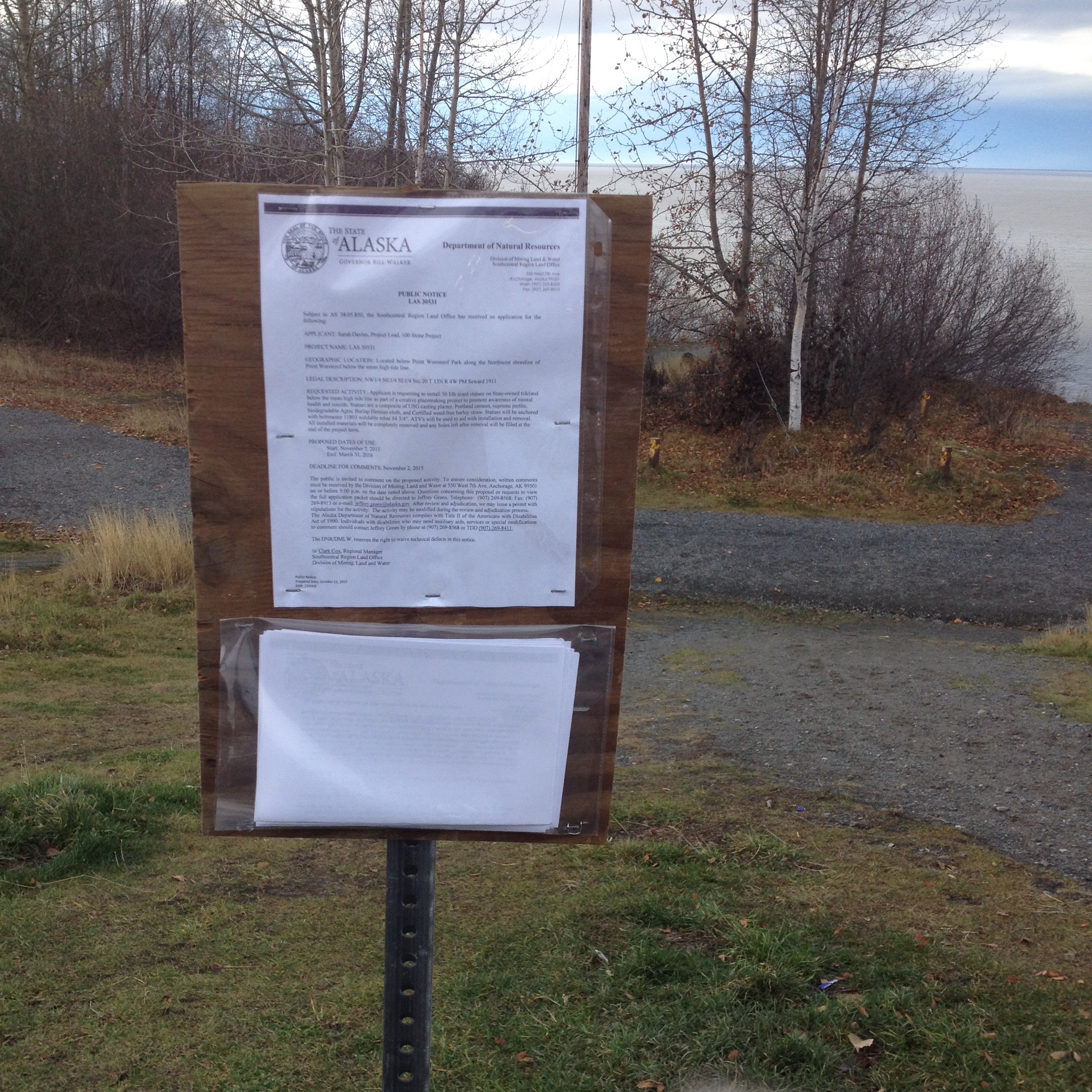




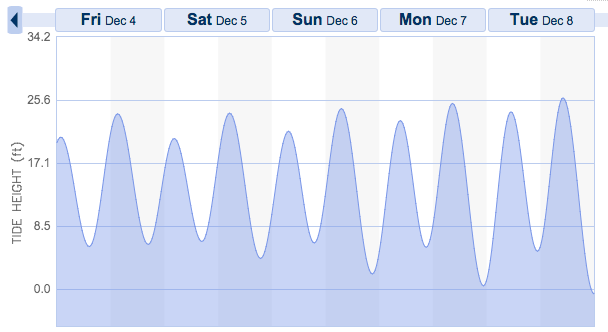
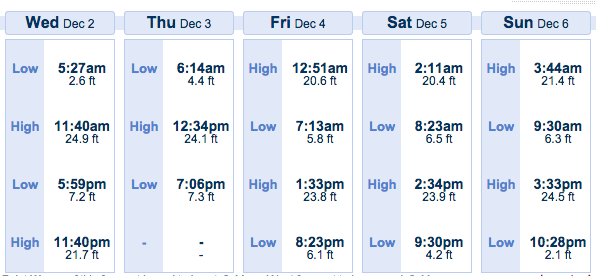
THE STORM
MOTHER NATURE'S POETIC TRUTH
On November 24th, after a 3-day spike in local temperature to near fifty degrees Fahrenheit and an amplified spring tide by high storm winds, the installation was ripped out of its softened substrate, tossing our 100Stone family across the beach. All but 17 of our 85 figures were still standing. The team's heart was broken. We knew we'd lose them, but this was too soon. Again, word of its destruction traveled international channels.
The storm passed midday the next day. When it did, dozens of community members rushed to the beach. Point Woronozof became a search site for survivors. It was still high tide when triage began, but with every inch of ebb volunteers could access more Stones. However, the Stones were now saturated and several times as heavy as they were originally. It took twice as long to move the group above the tide line as it did to install them.
It was sunset by the time triage was complete. Ultimately, two Stones were swallowed by the Inlet, one was stolen during the chaos of storm, and fourteen were irreparably damaged. More importantly, however, the installation aged in five days what had been anticipated for the totality of its wintertime life. Their lifespans irreversibly shortened.
The poetic nature of what had just occurred was not lost on its supporters. Looking across the cracked bodies of our Stones and over the piles of parts and pieces, we realized we were looking across the physical manifestation of the long record of events that activated and aggravated the vulnerabilities of the project participants, exaggerated our fundamentally vulnerable humanity.
Again, the story of our unification and determination echoed across the globe. The 100Stone Project became an awareness colossus in Alaska.
See also Bob Halinen and Marc Lester's breaking news Photo Story, Alaska Dispatch News, 11/25/15.


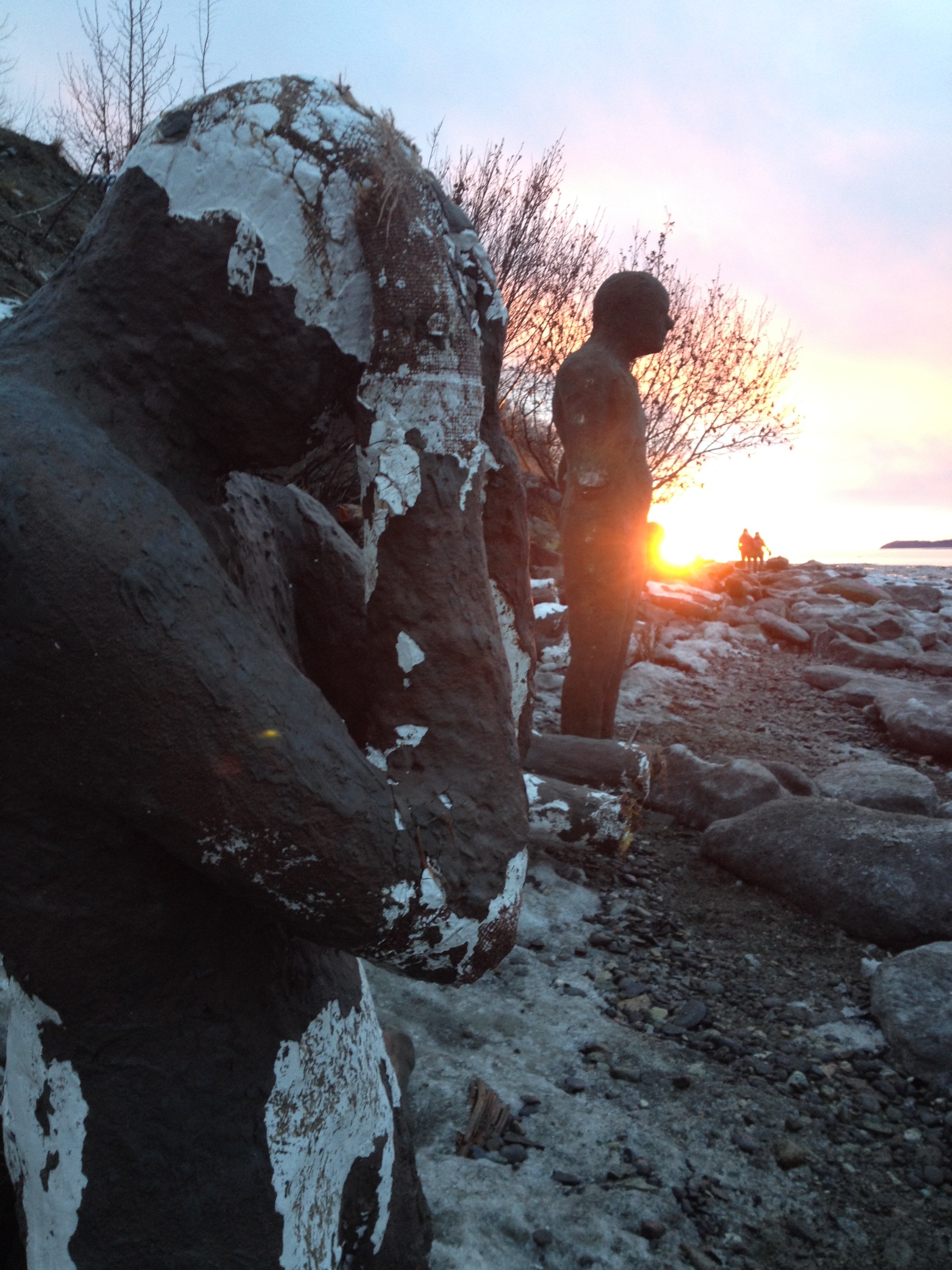



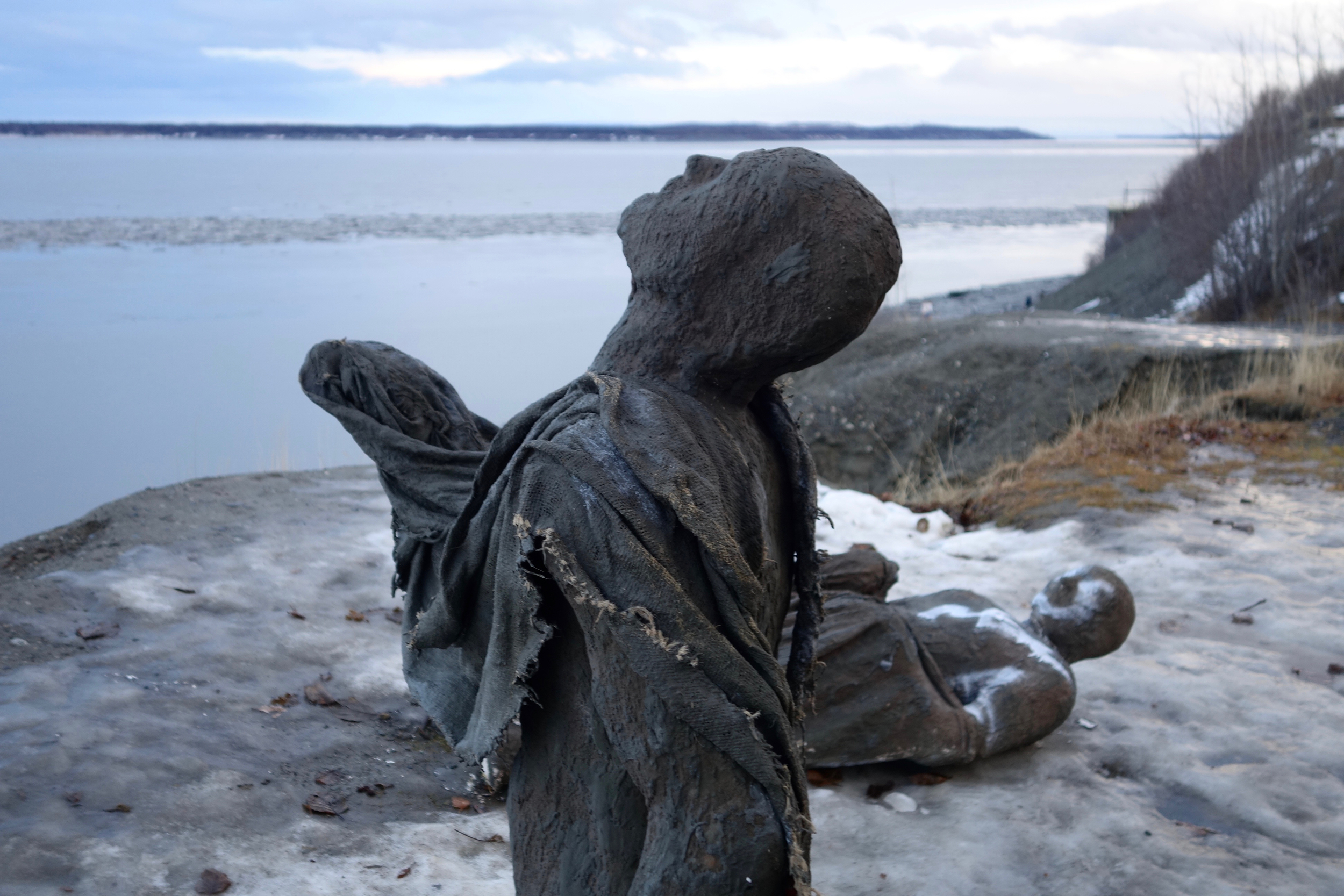
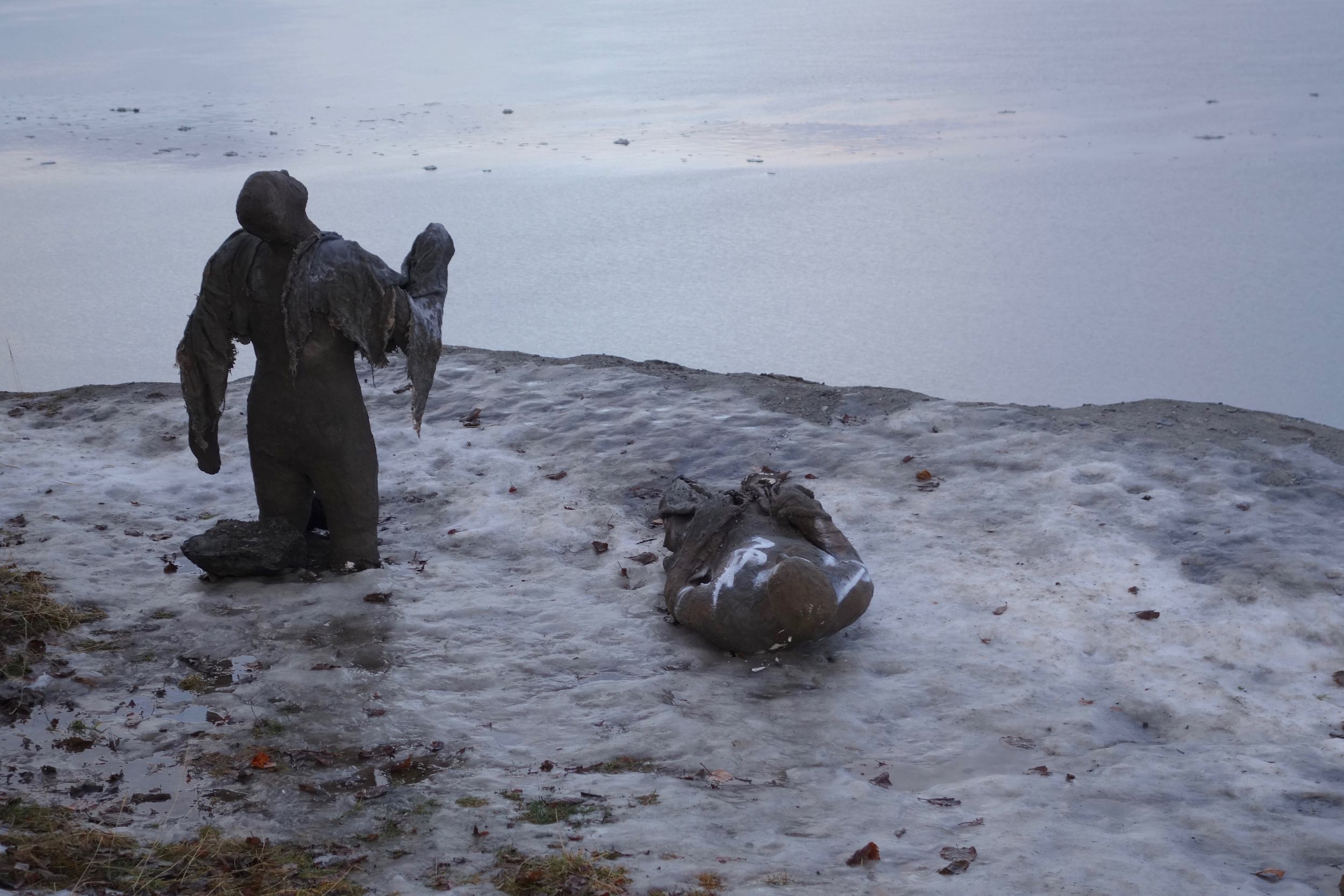

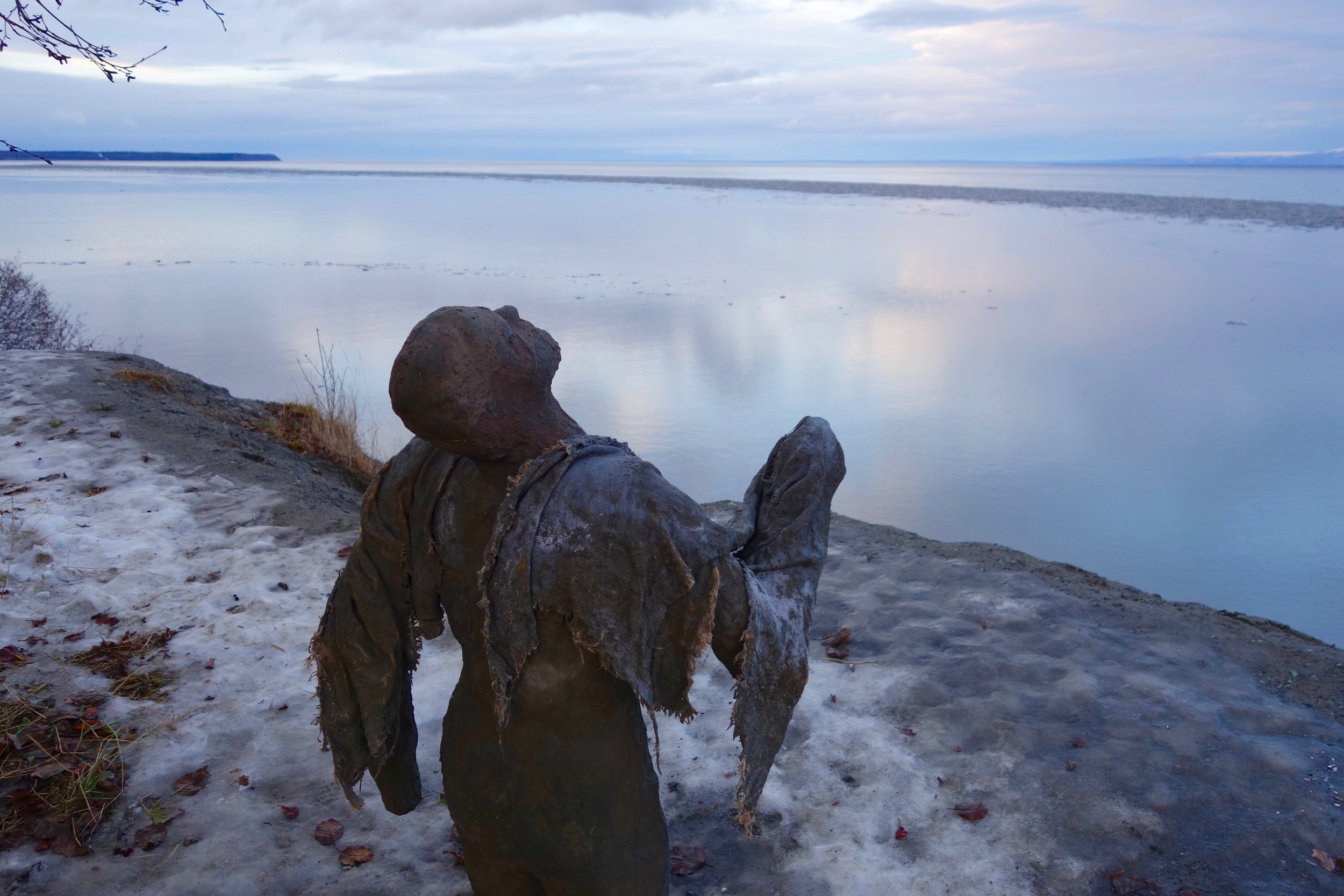
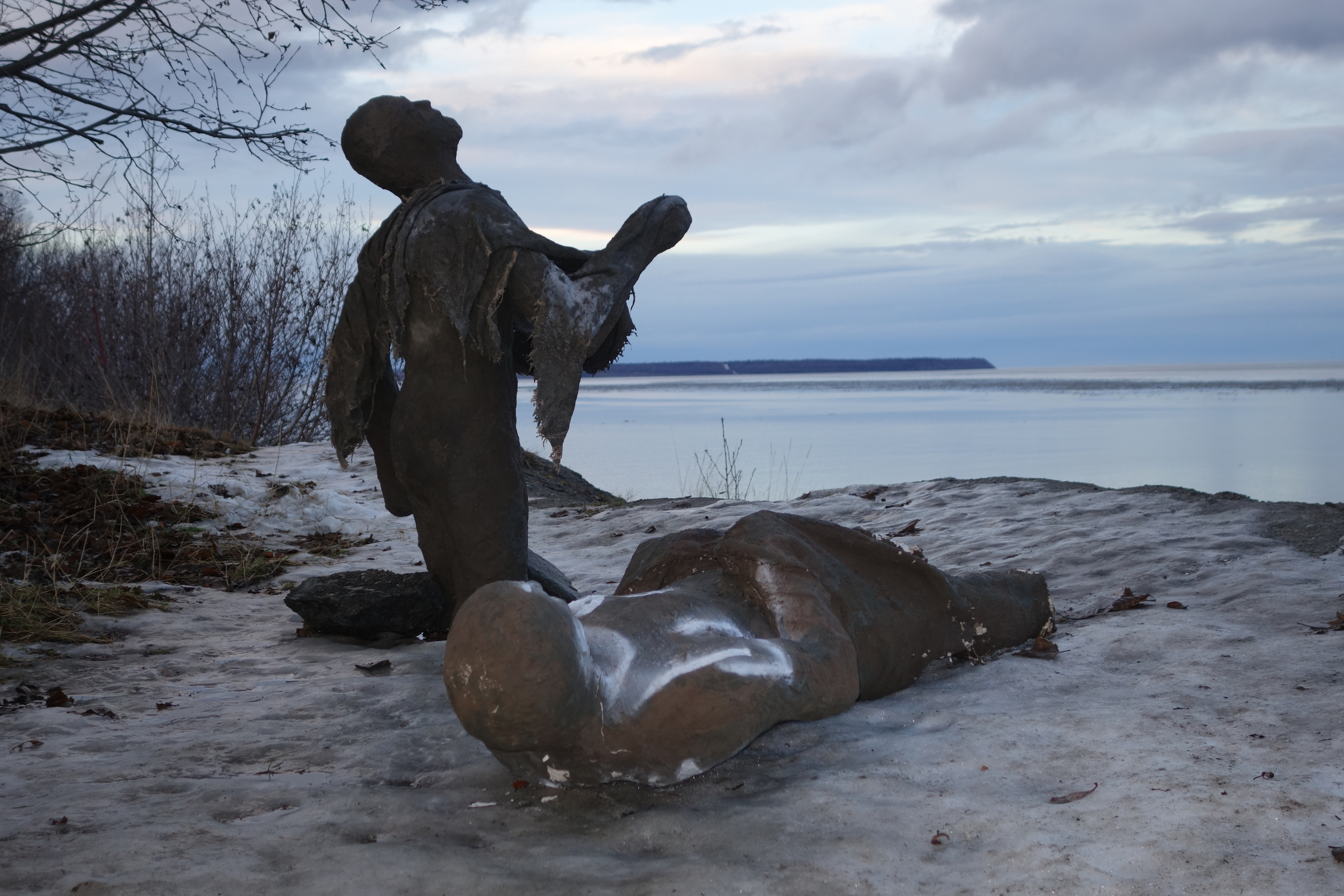
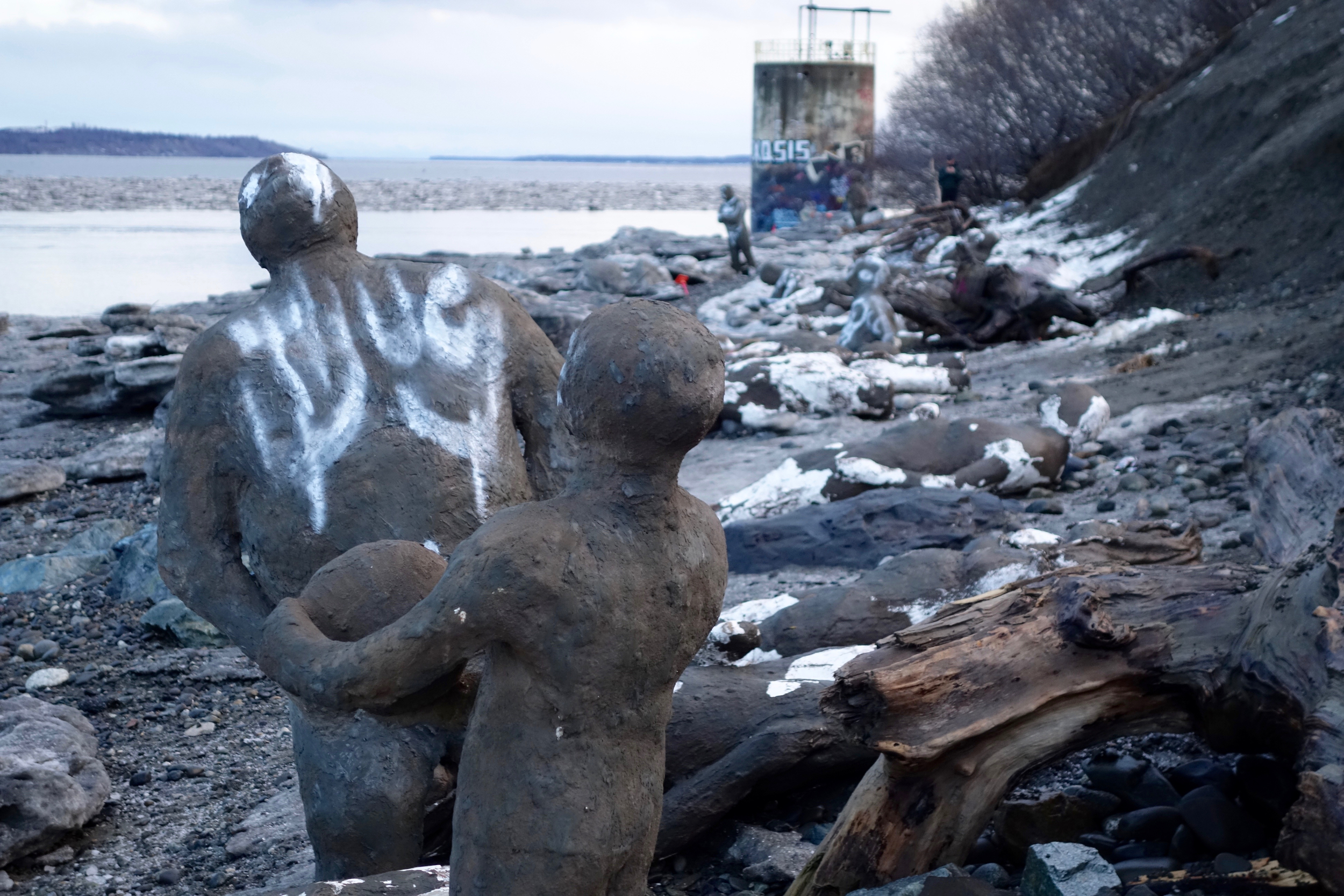
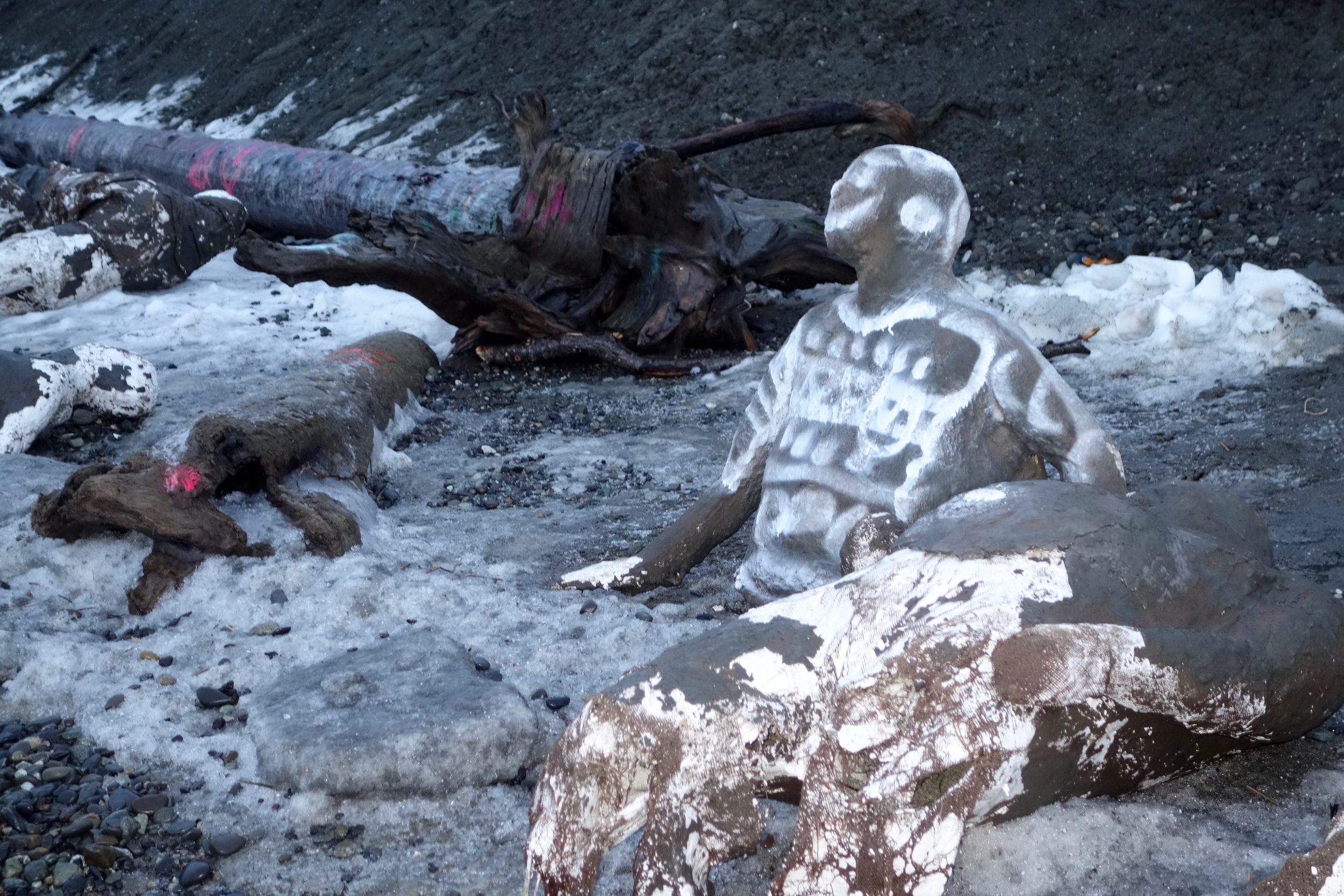
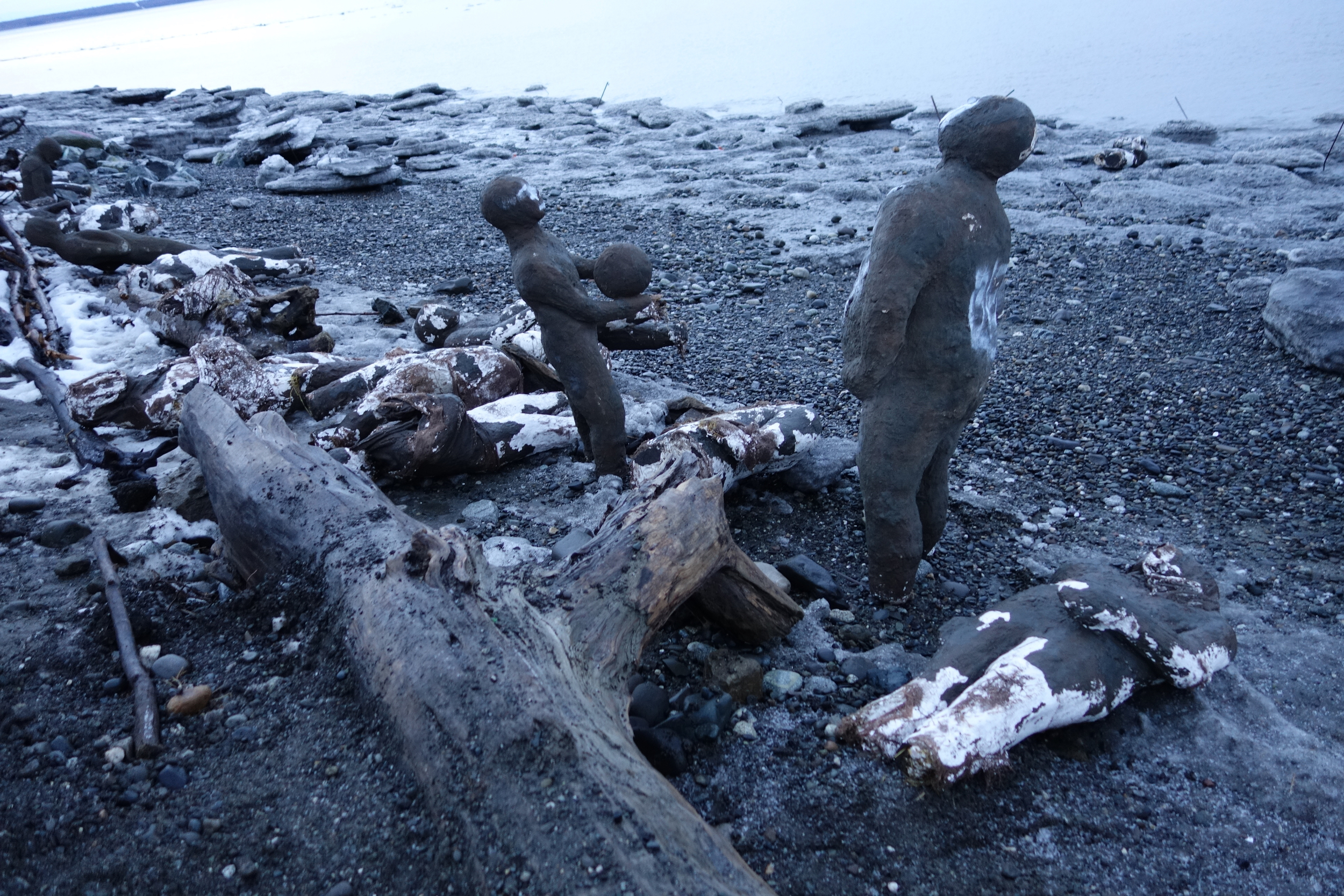
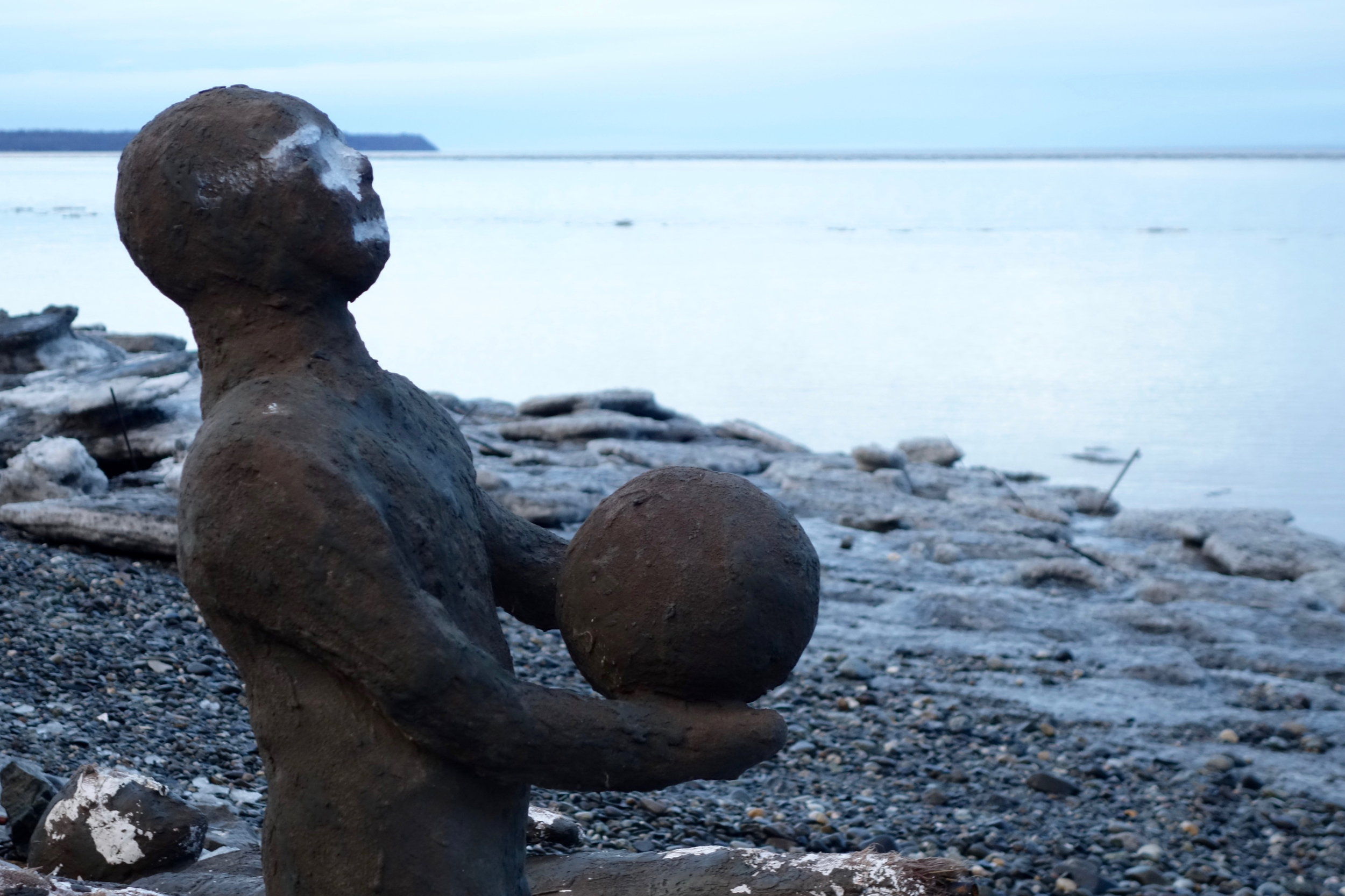
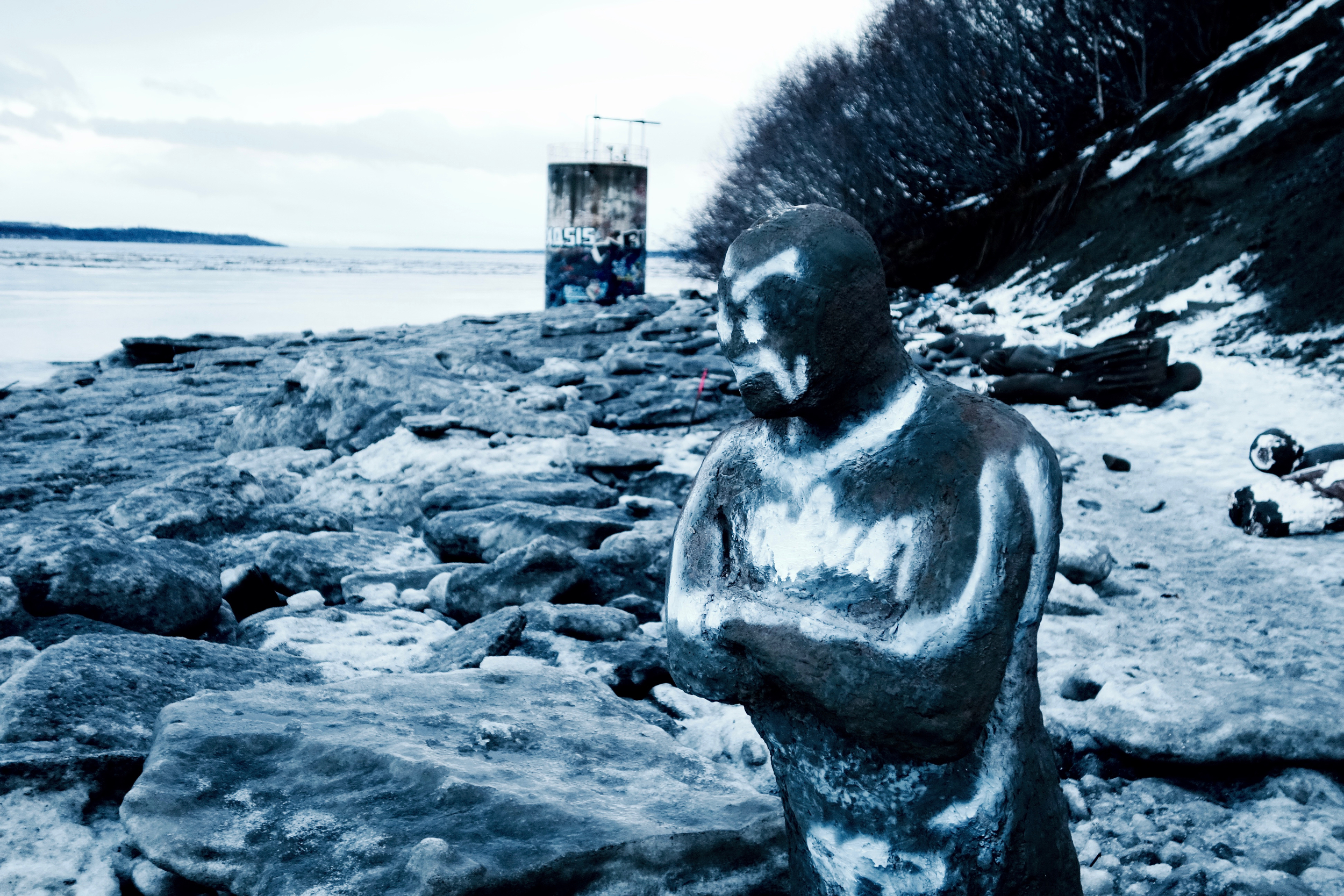







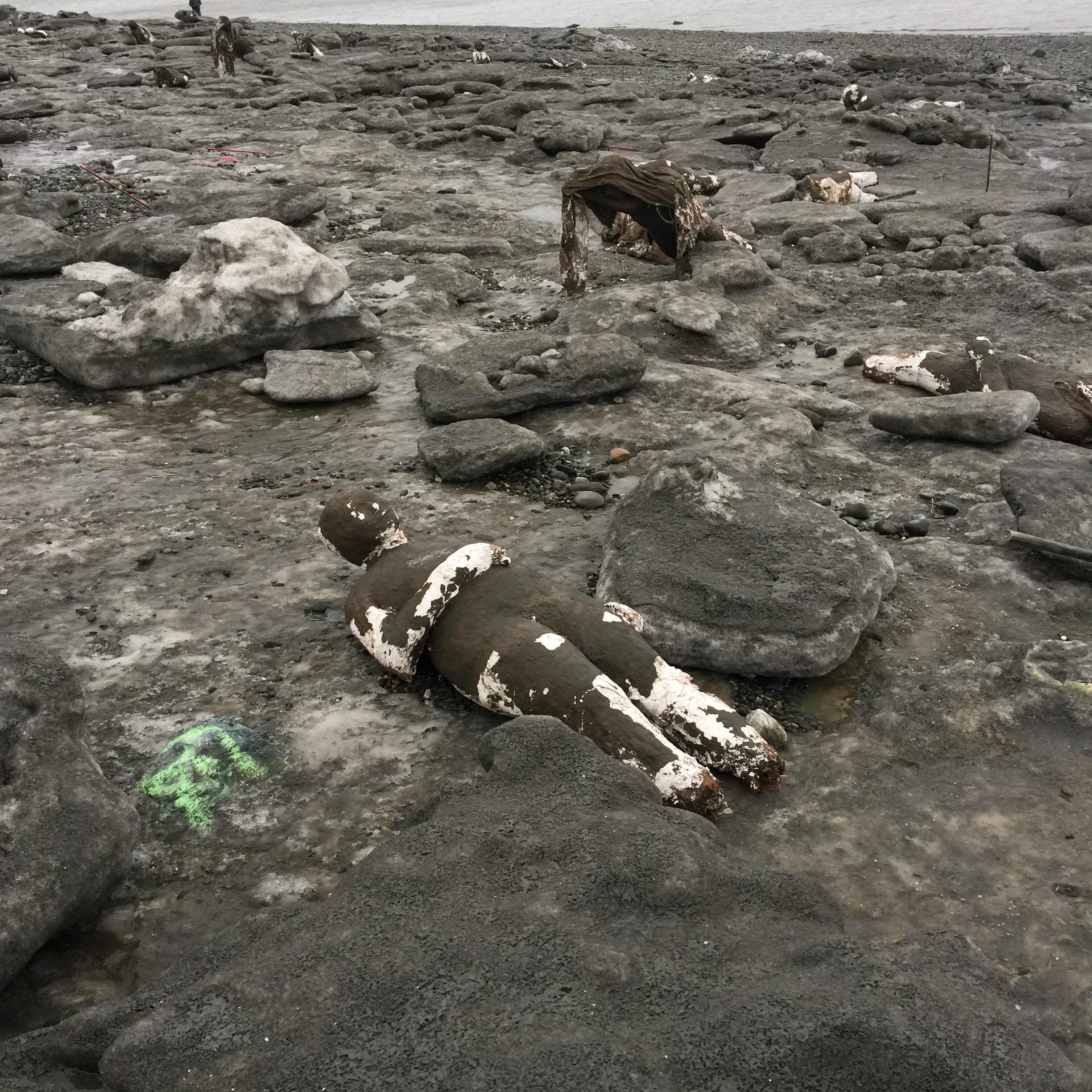
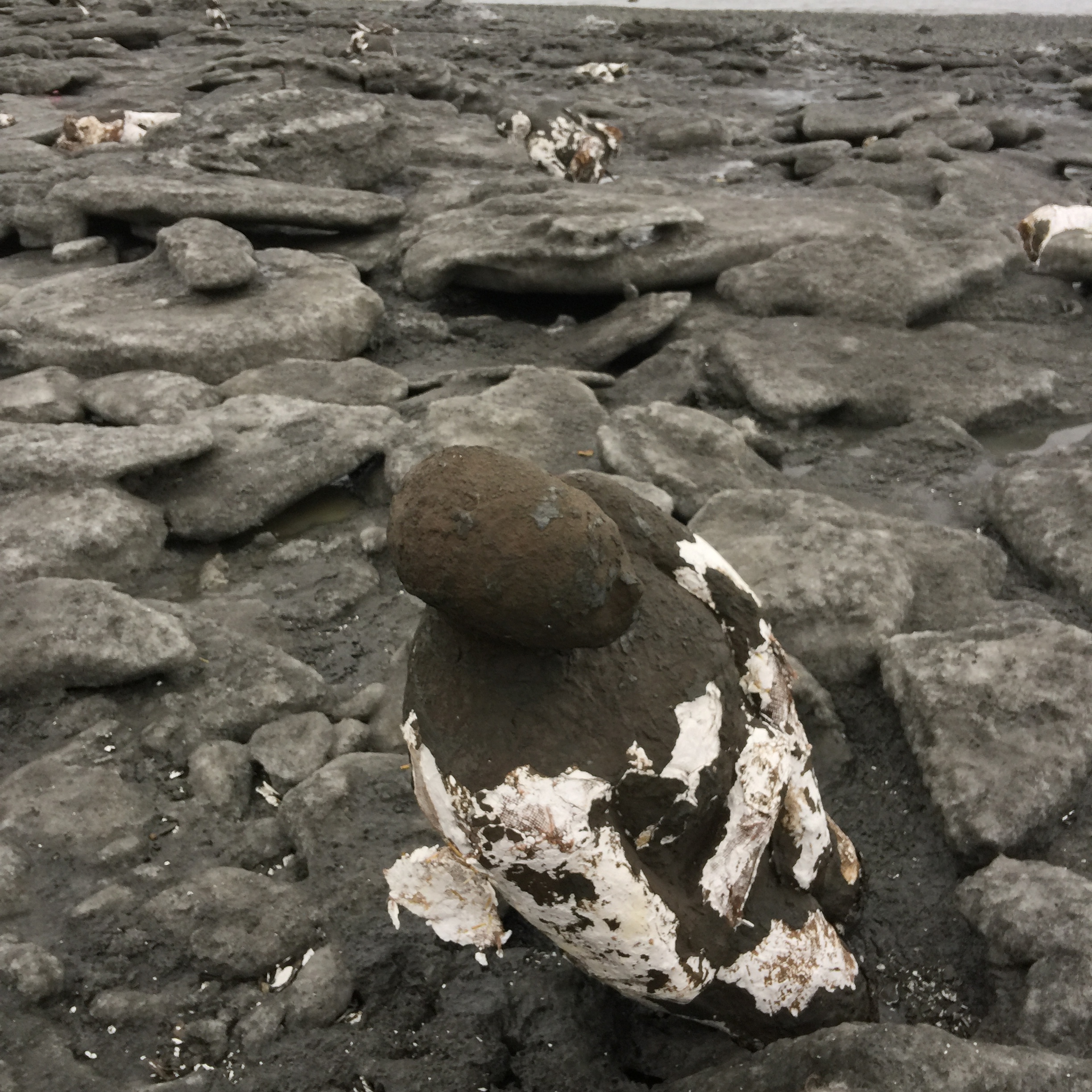
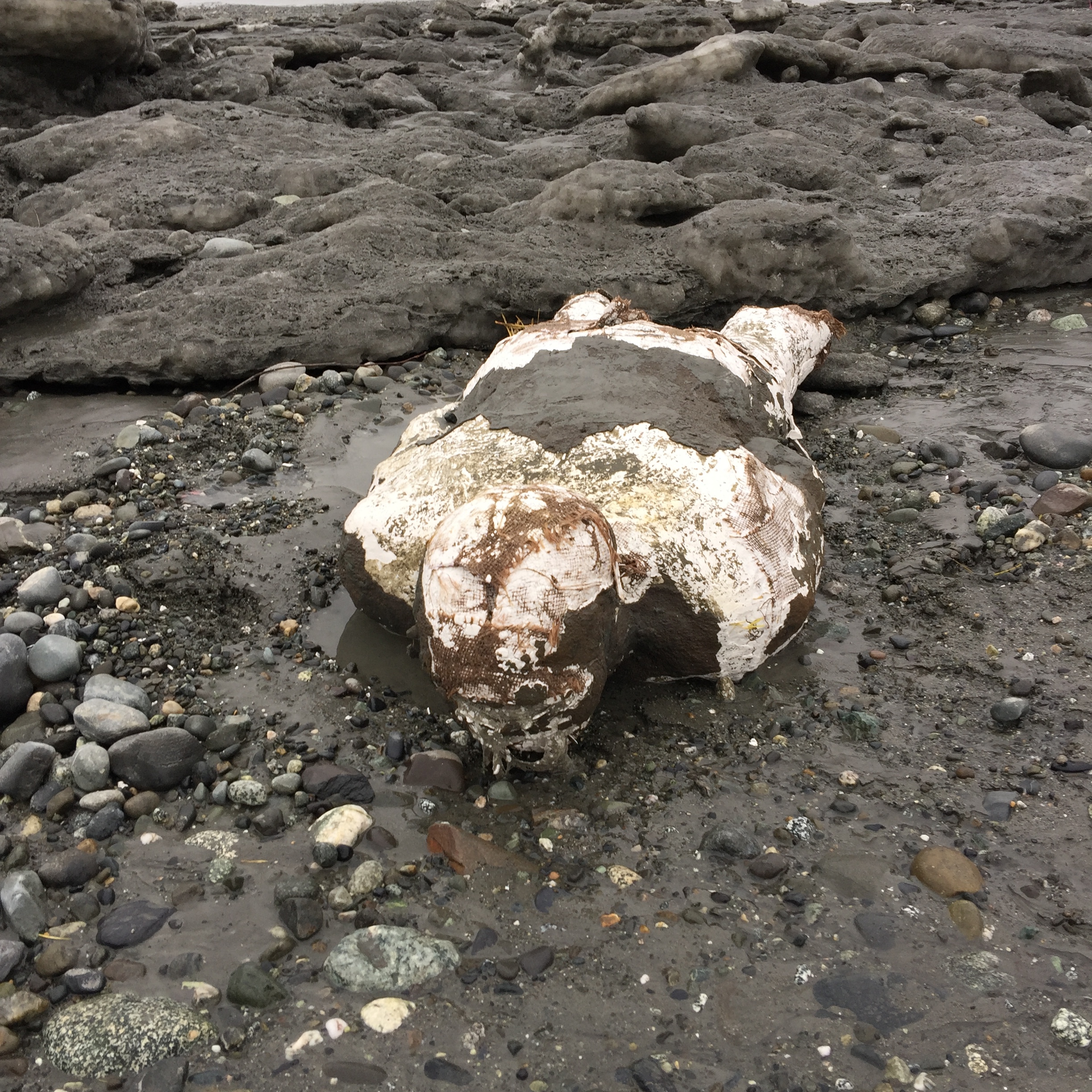
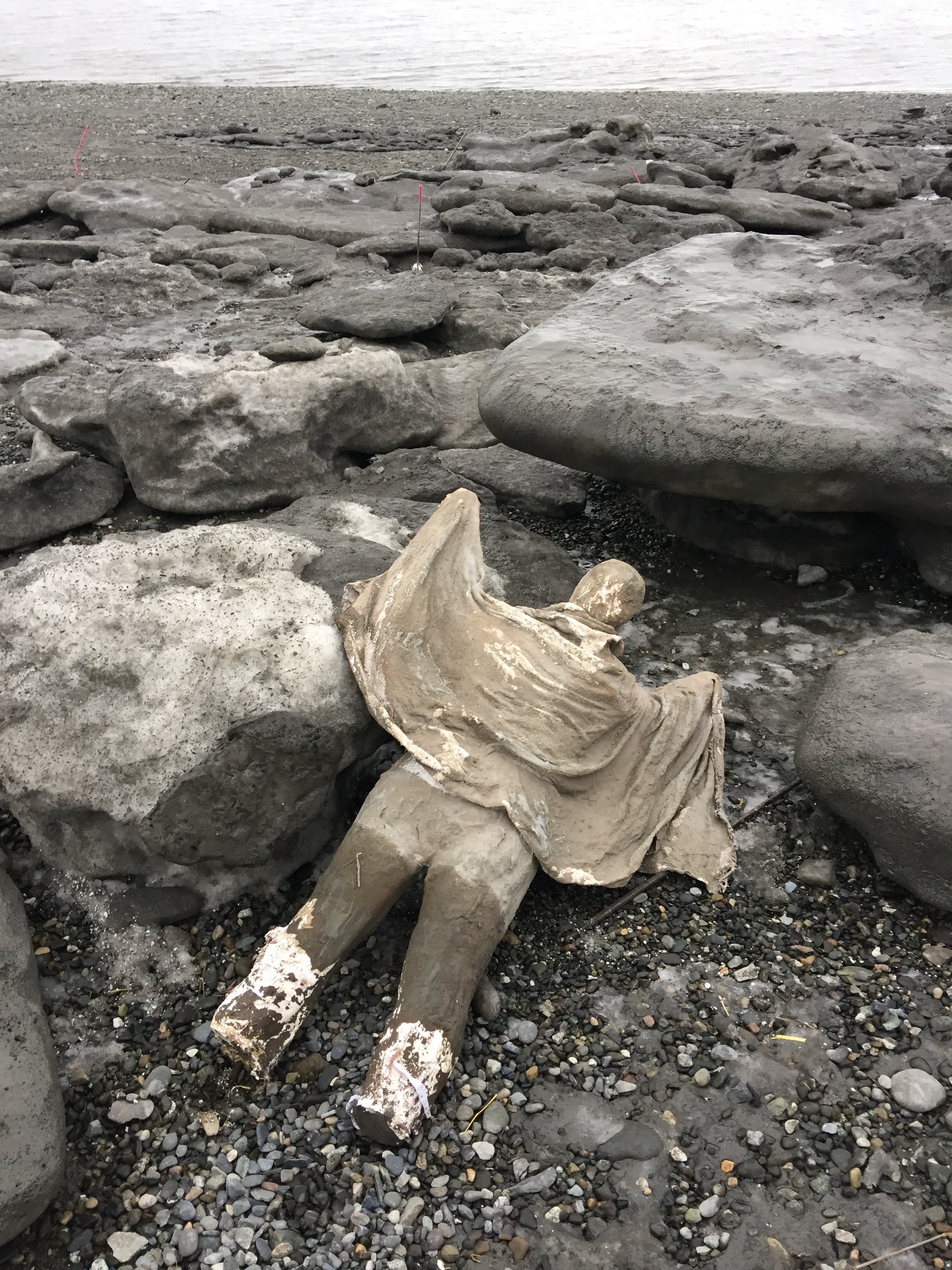
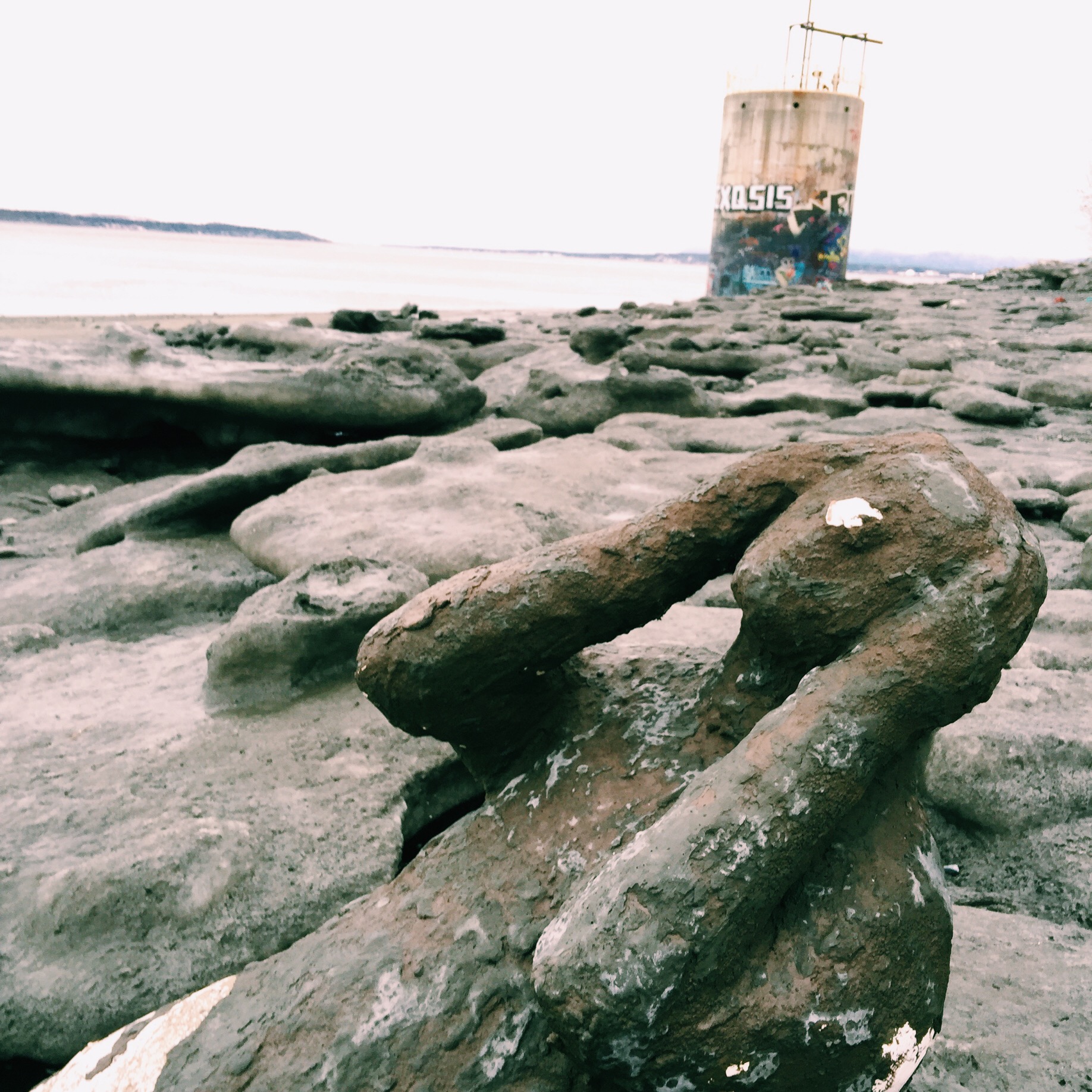

PHASE IV
resilience
On Friday December 4th, the day before the public opening of the installation, eleven days after Mother Nature's poetic voice joined our chorus of Truth and Vulnerability, the fellowship of 100Stone and the community of Anchorage mobilized yet again to reset sixty eight of our surviving figural stories into their new arrangement. New footings were rebuilt and anchored into the ice, and the laborers and volunteers returned to transform the sacred ground of Point Woronzof. The beach became an icy platform for a body of Living Art composed entirely of Resilience. The tides of Cook Inlet continued their transformative action.
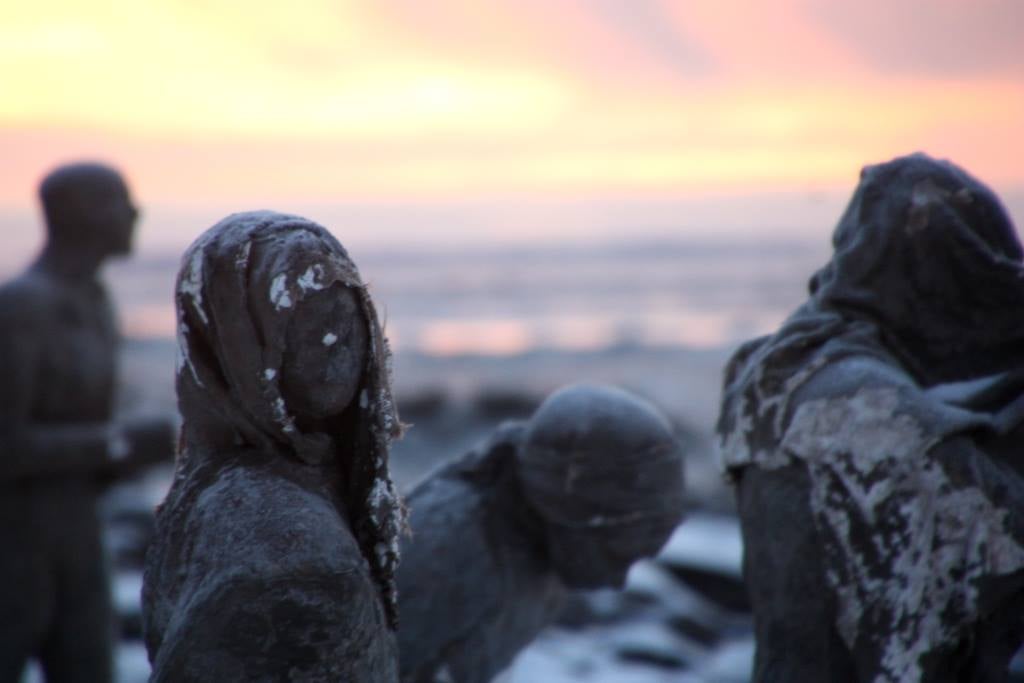
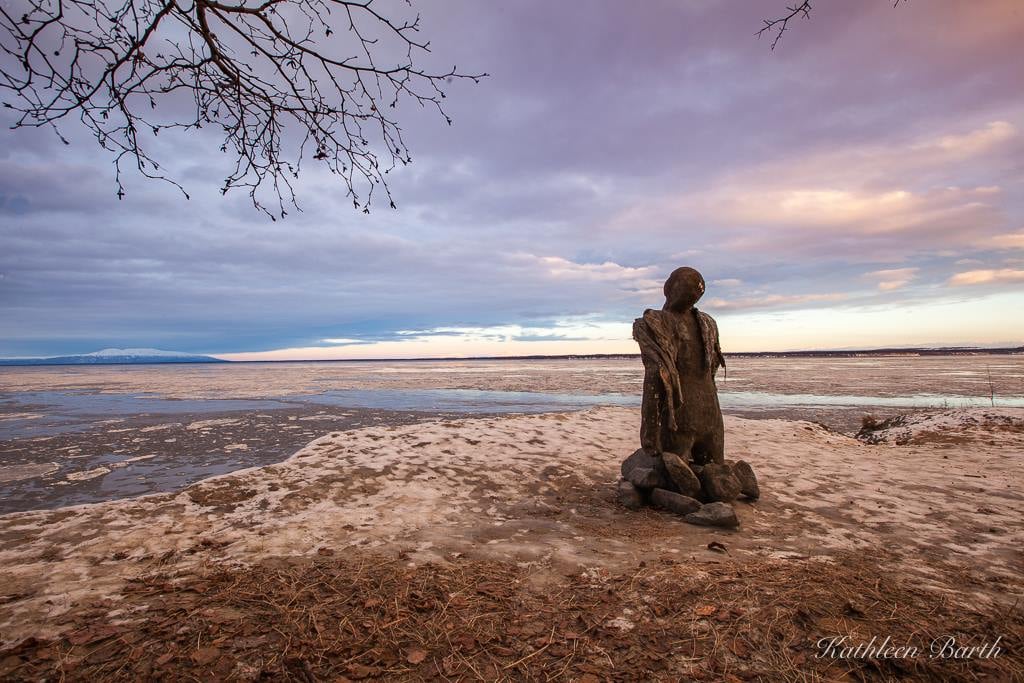
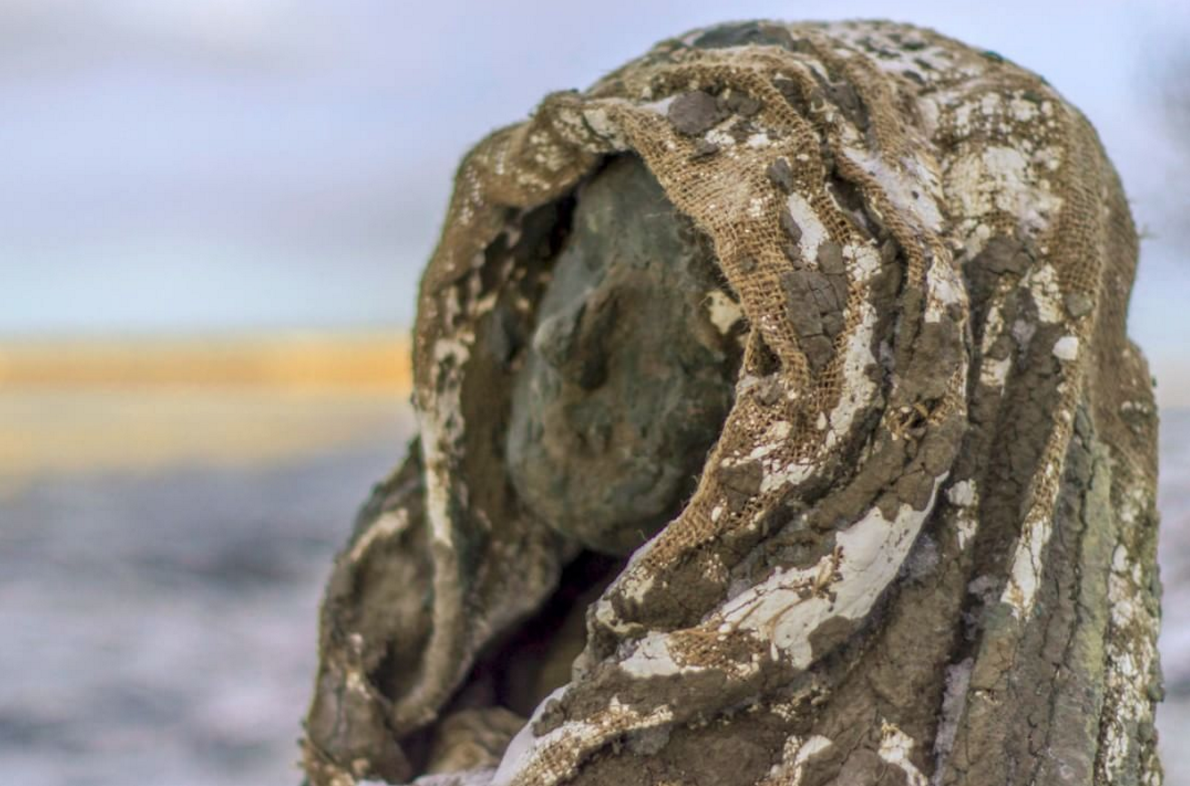
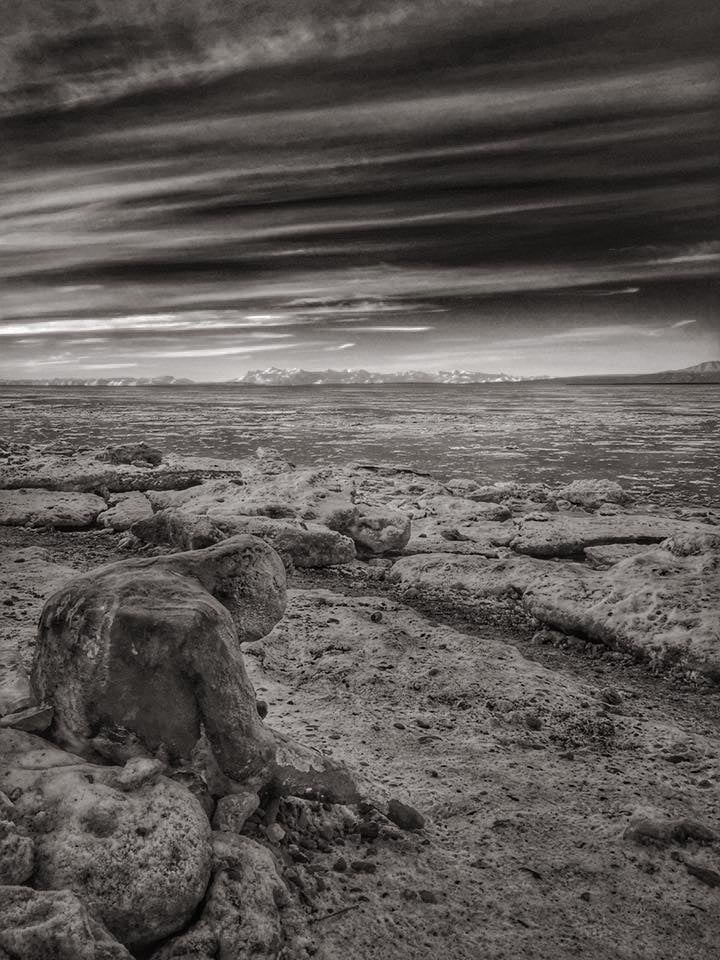
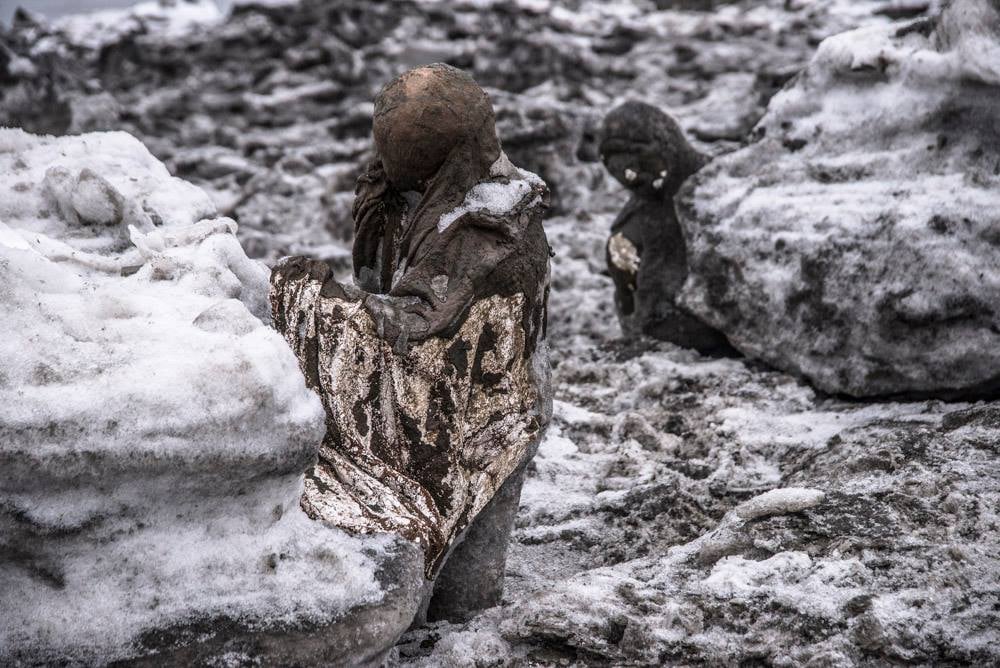

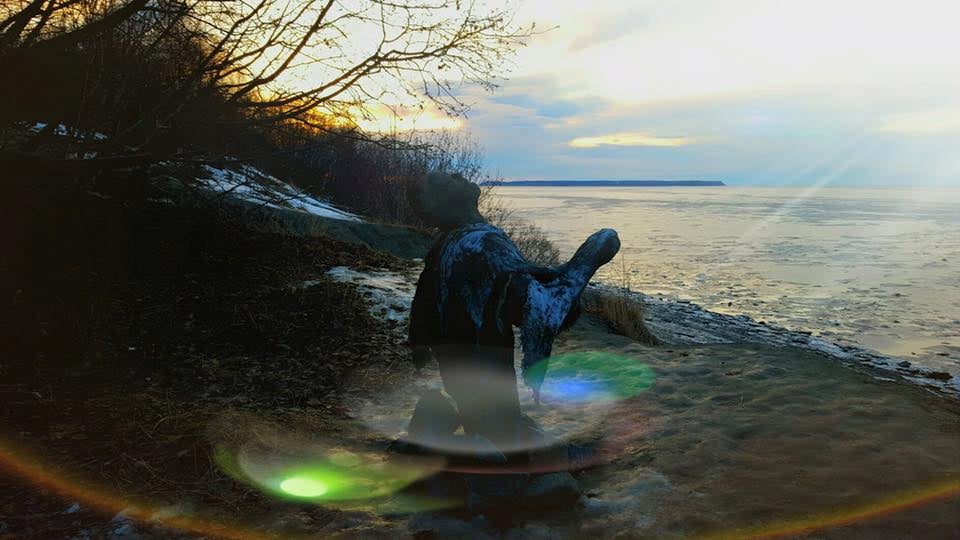
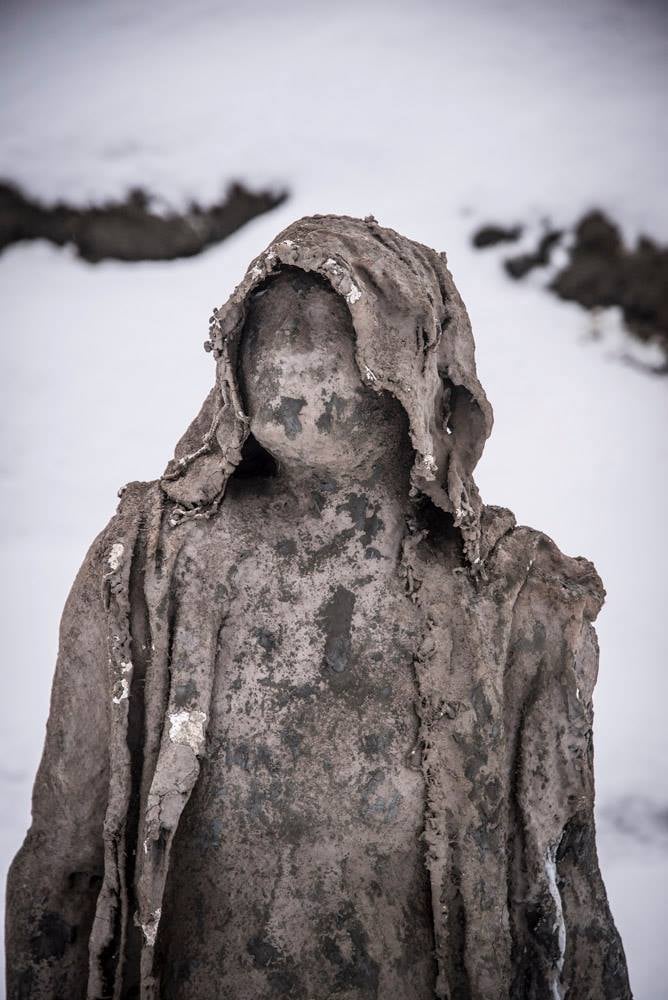
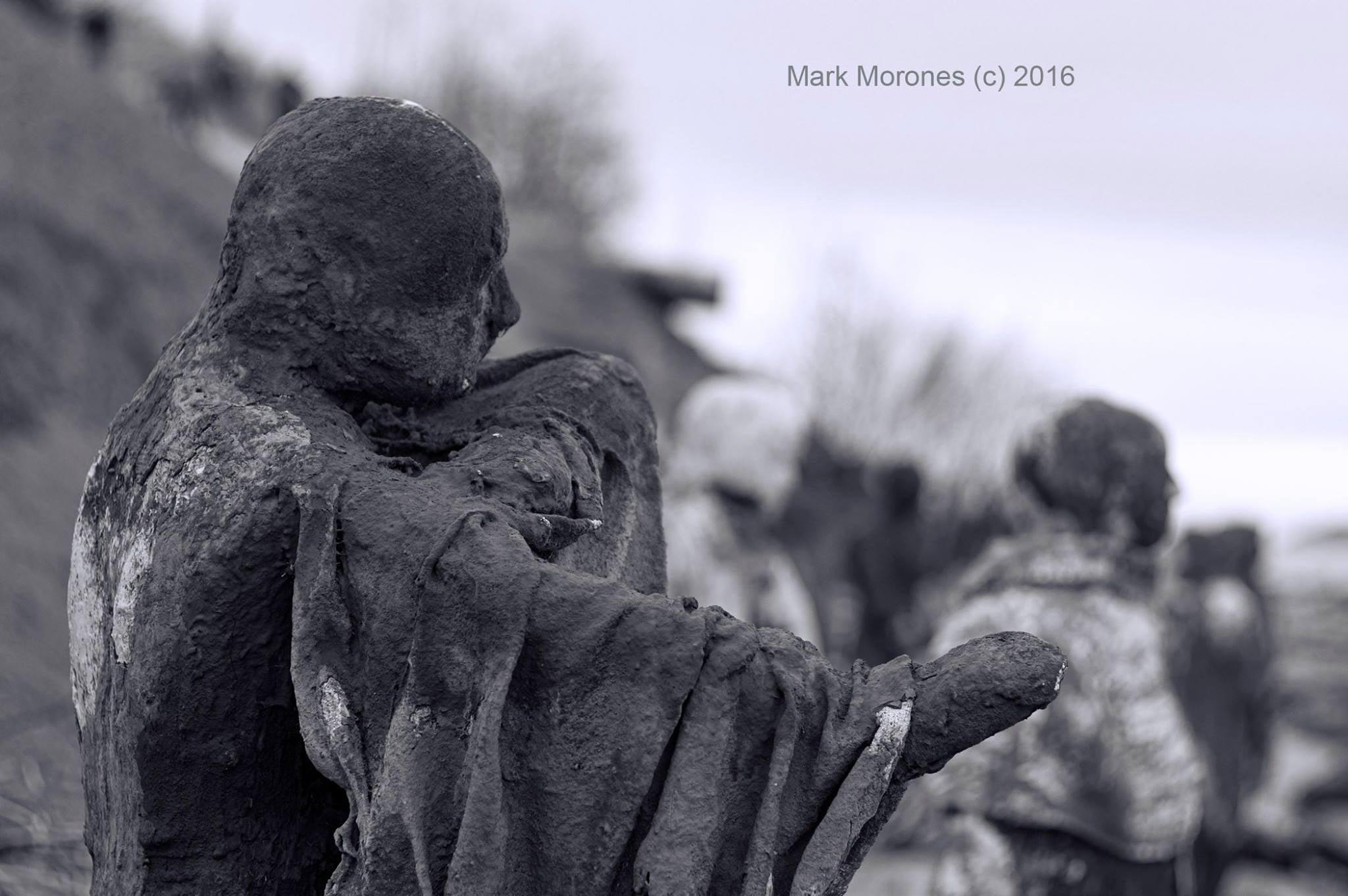
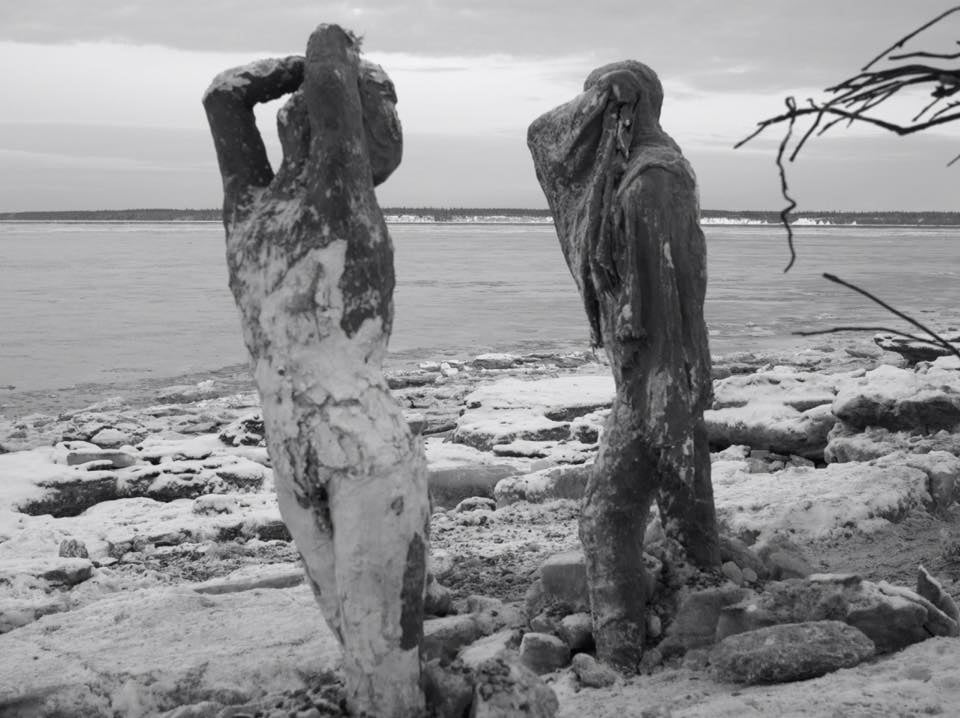
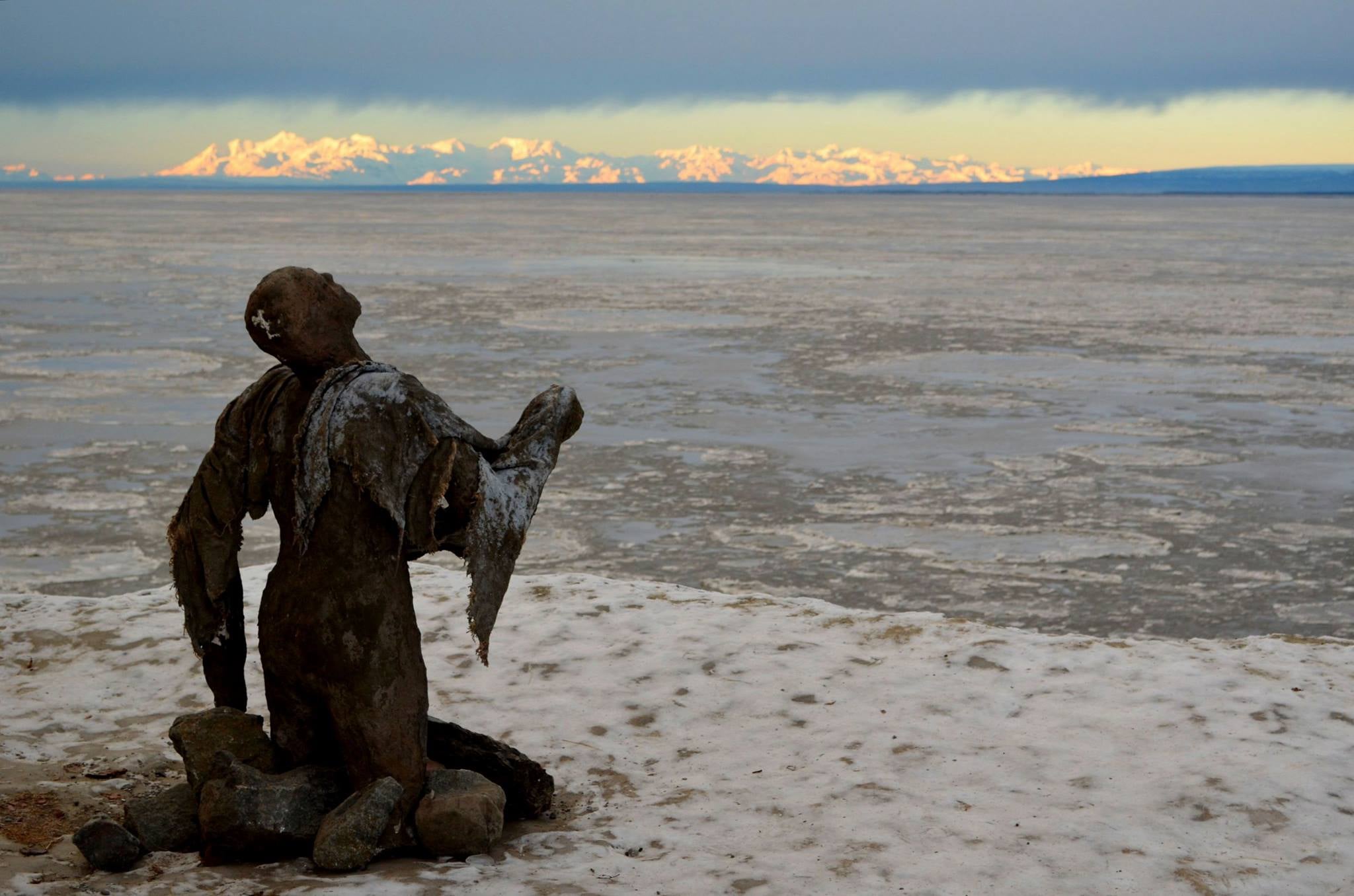
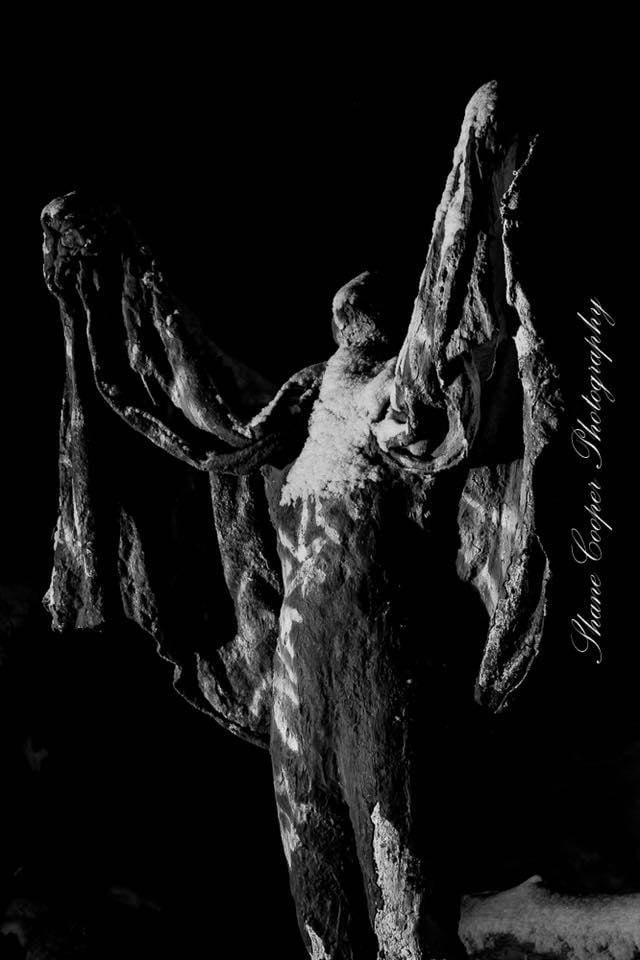

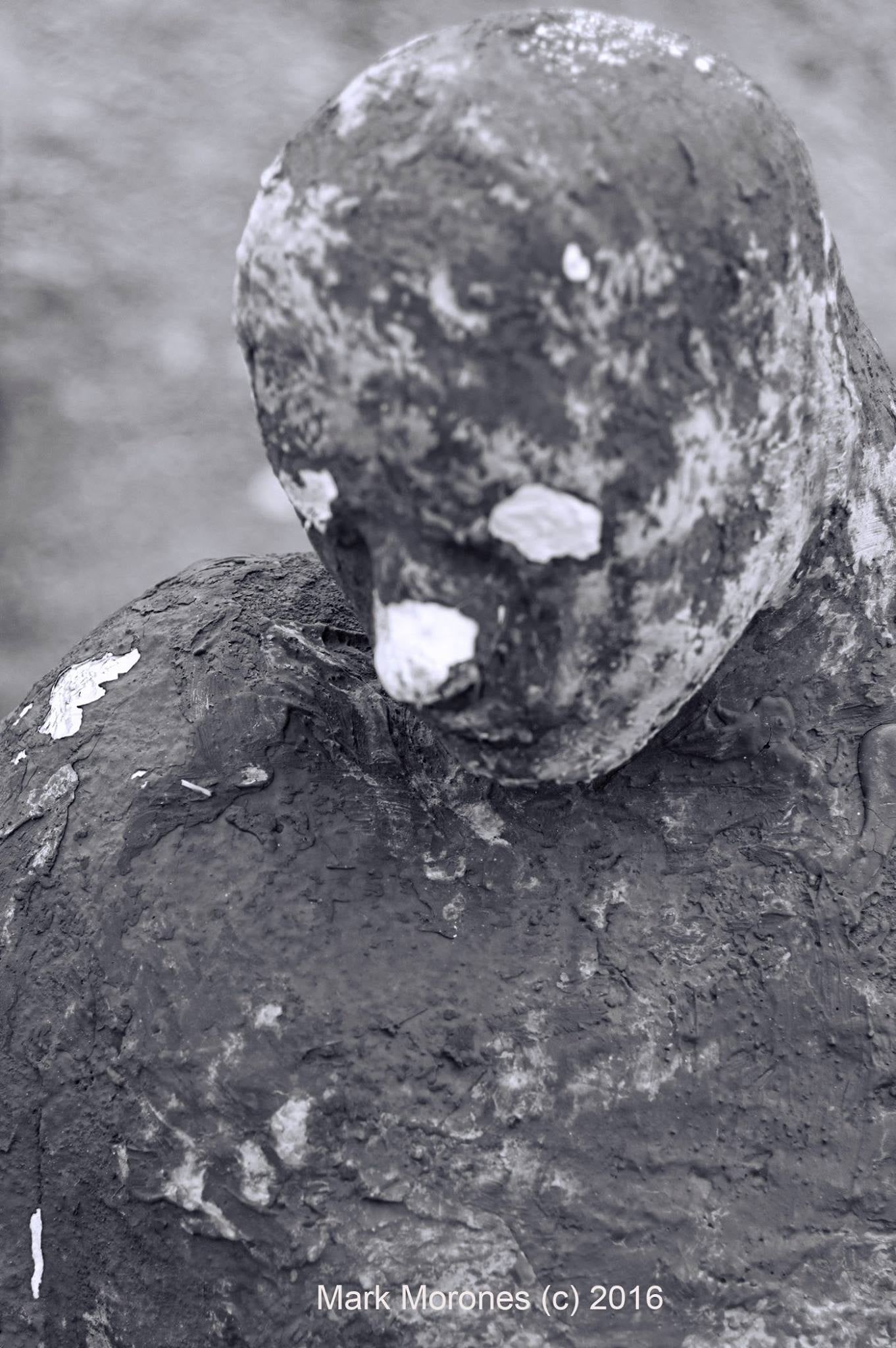

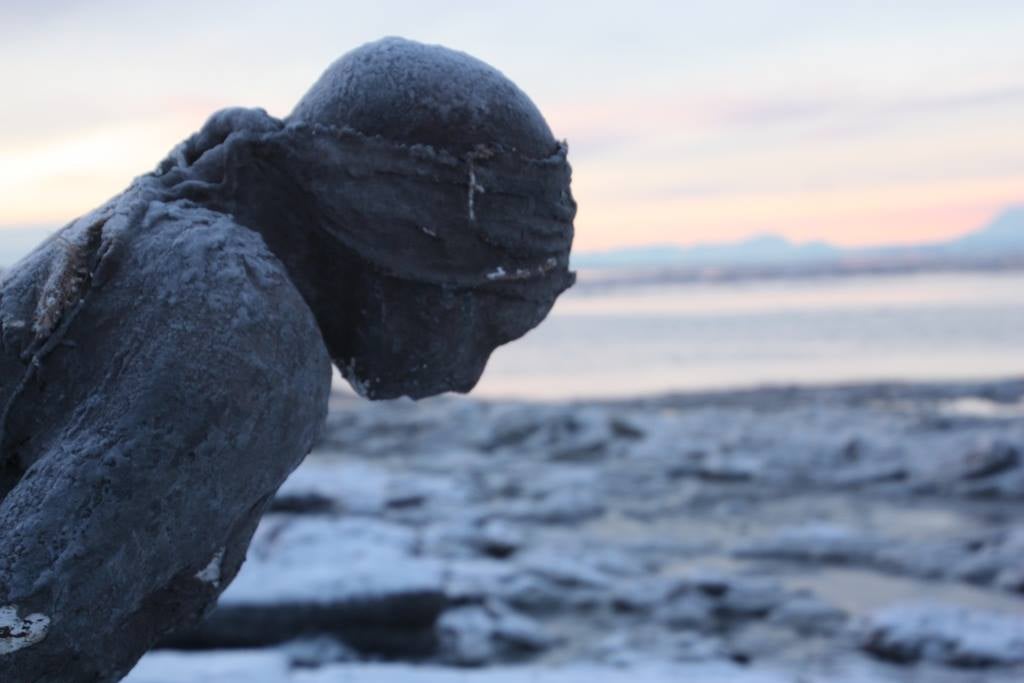
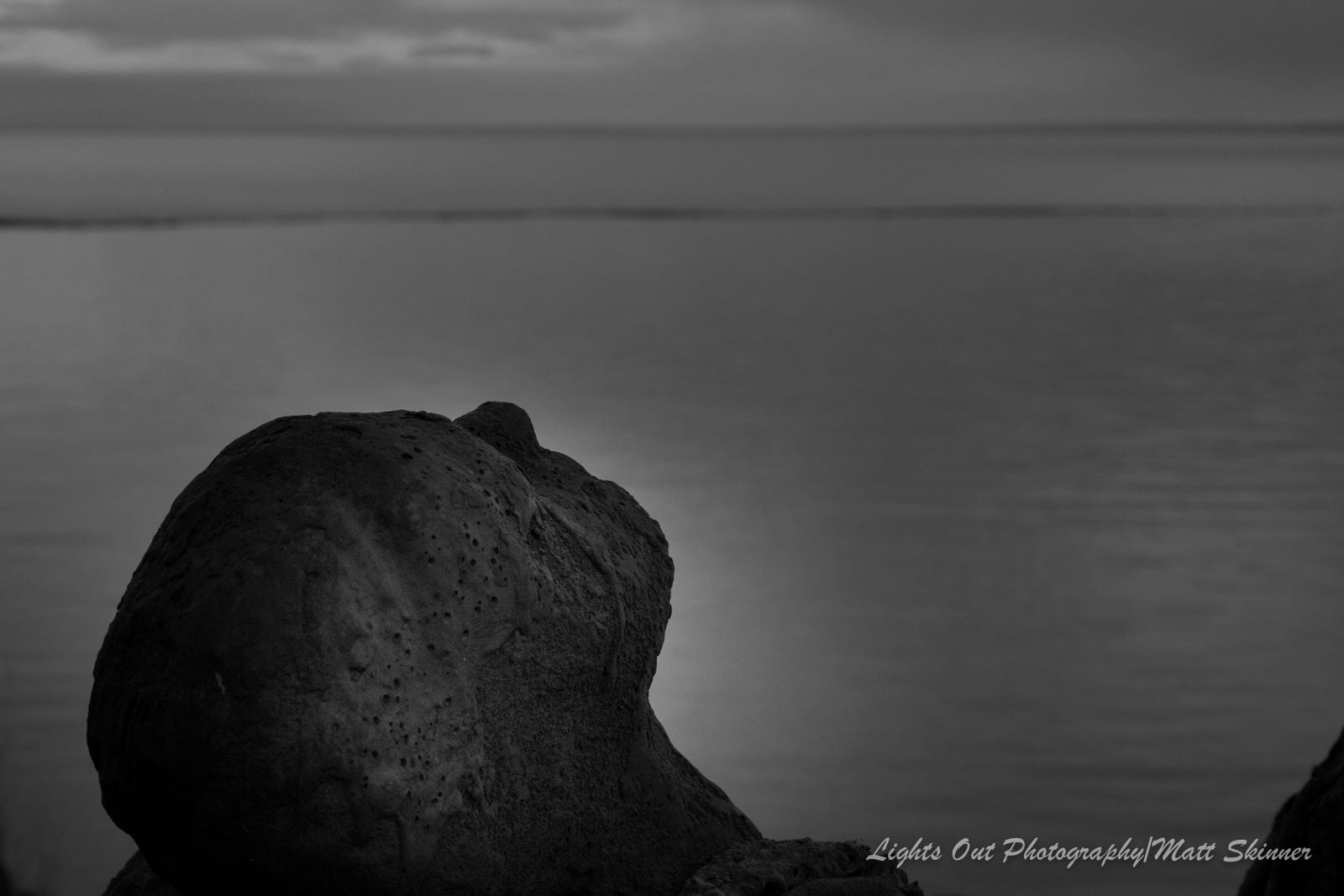
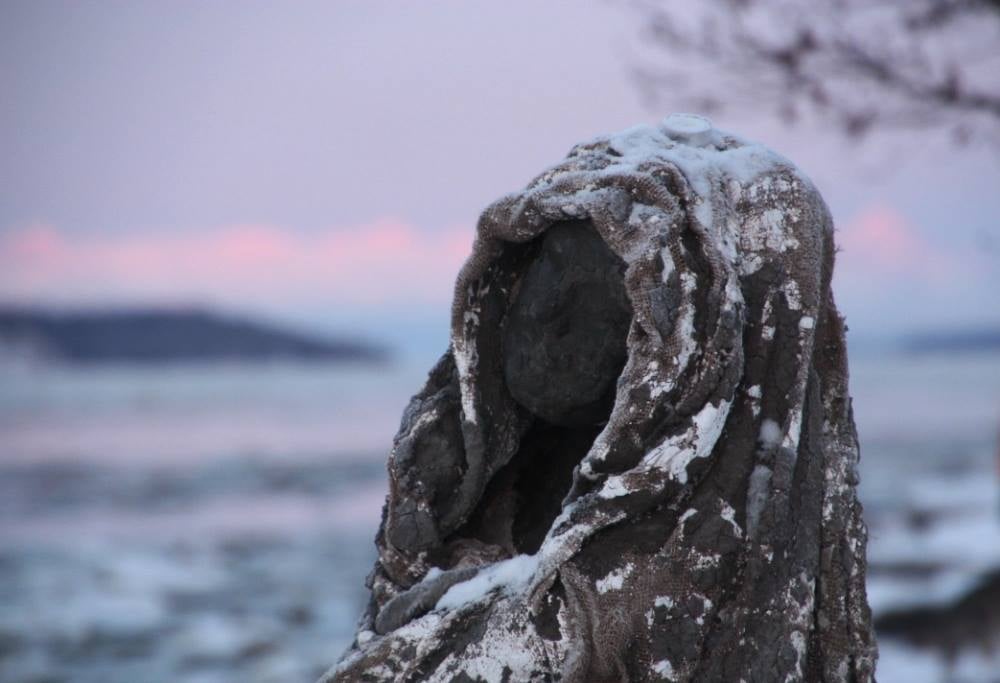
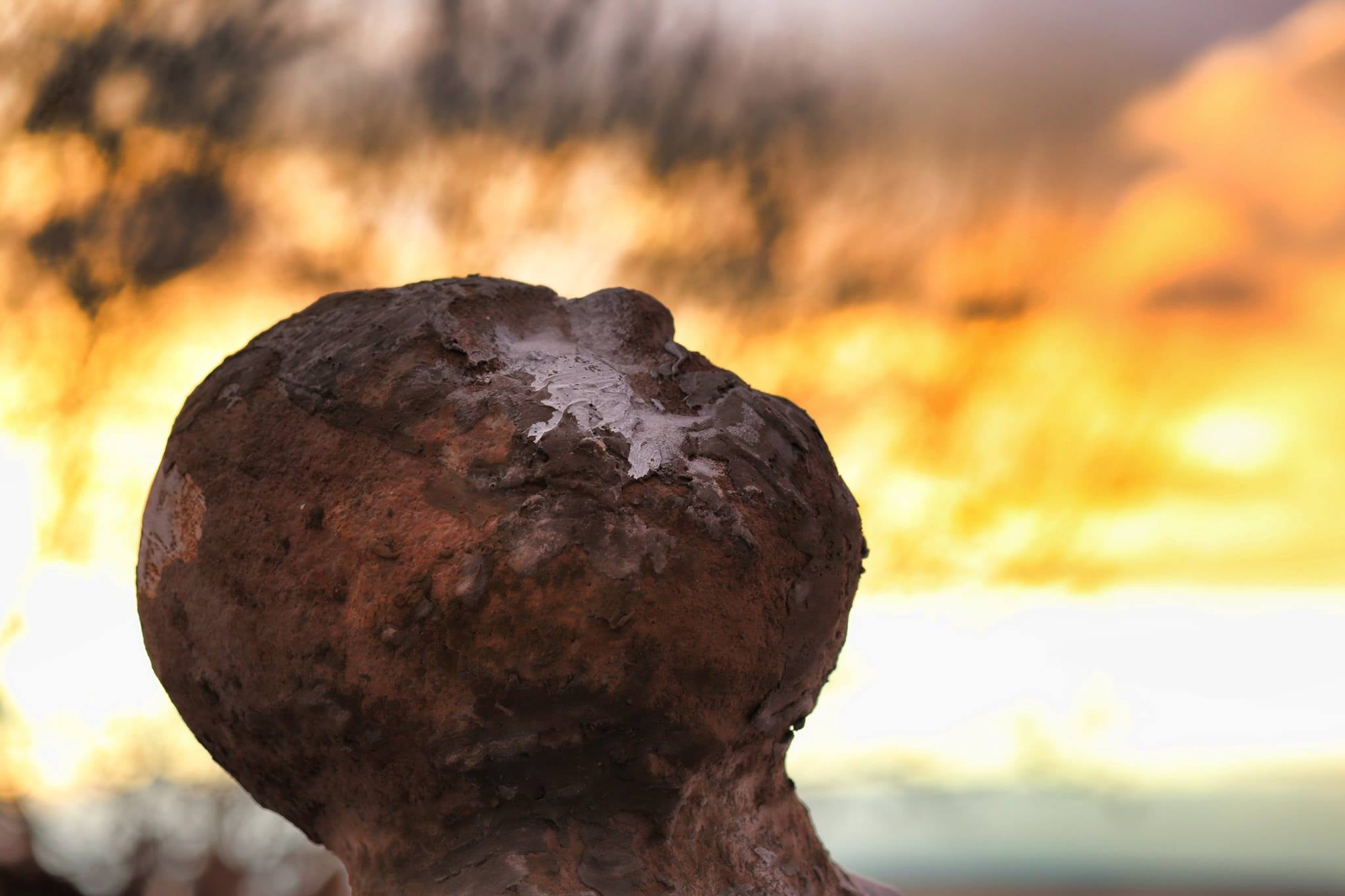
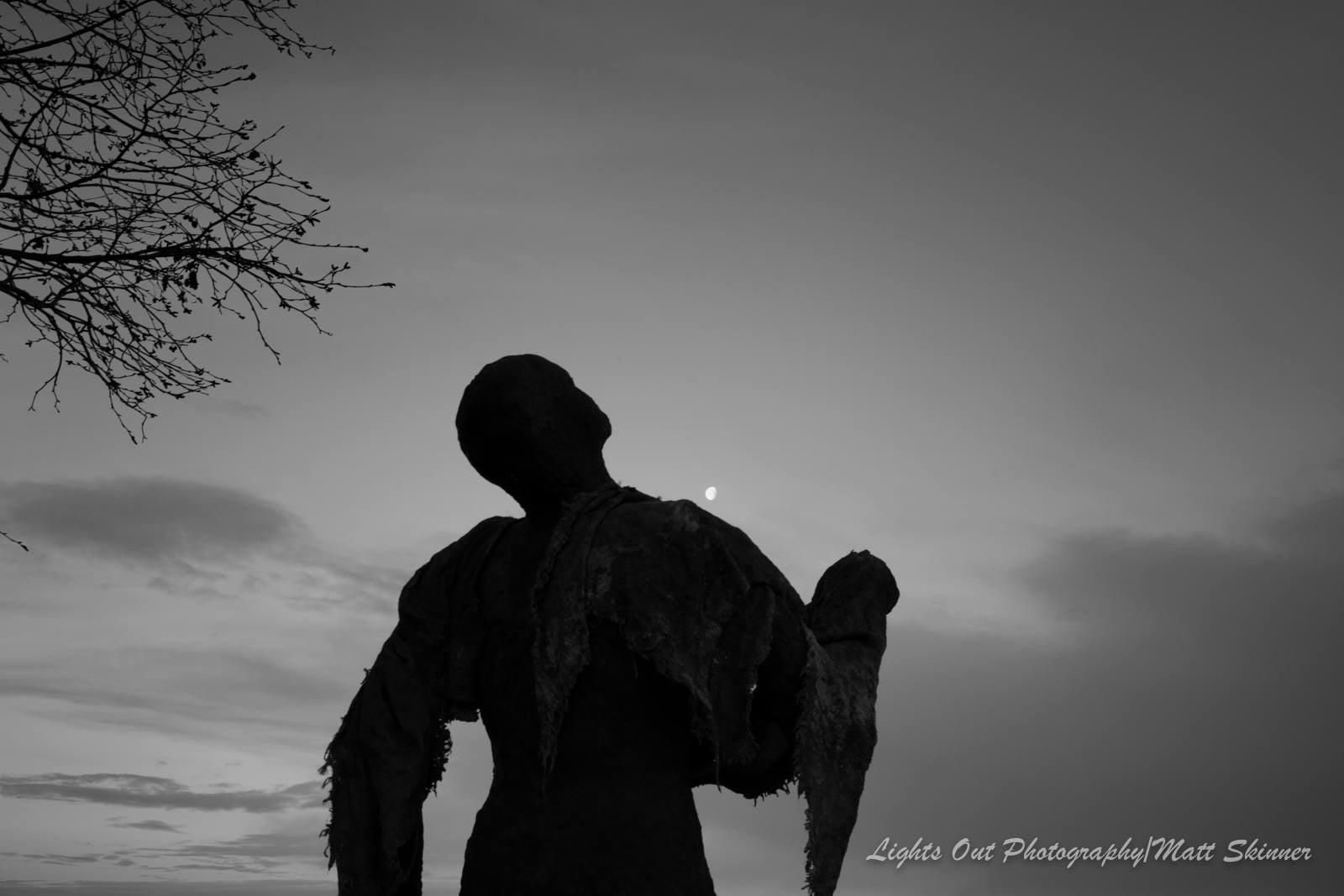

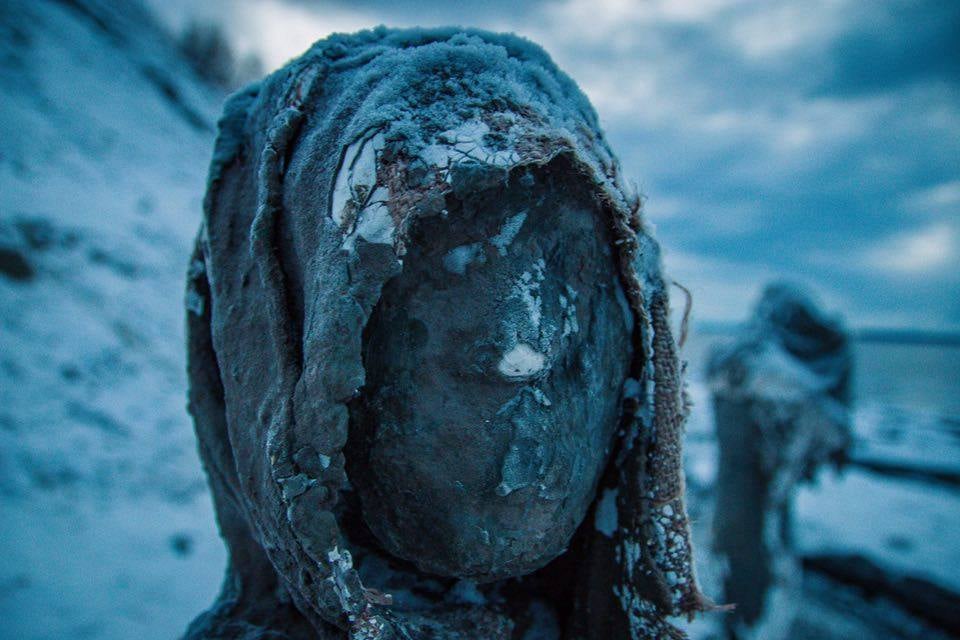

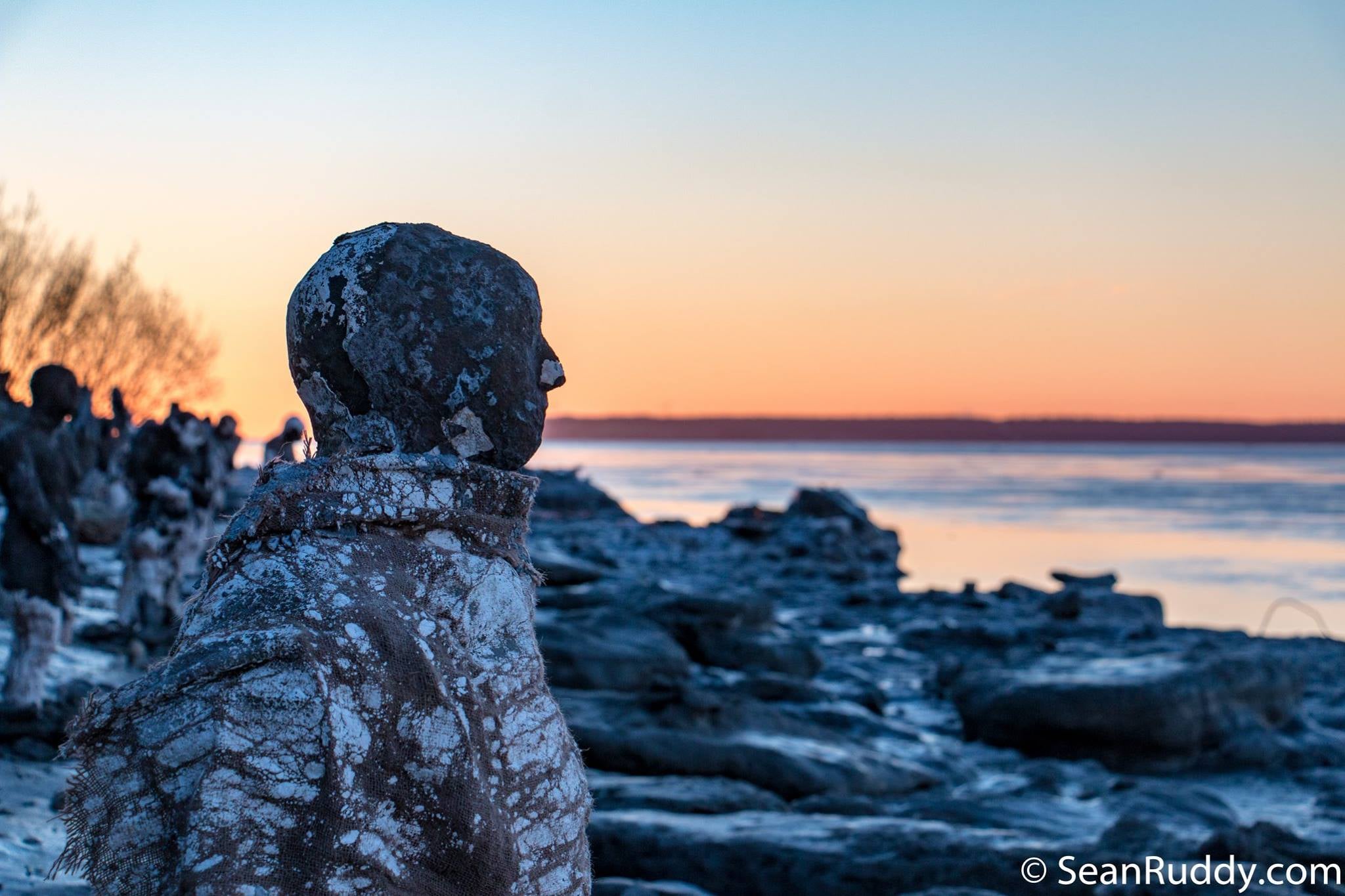
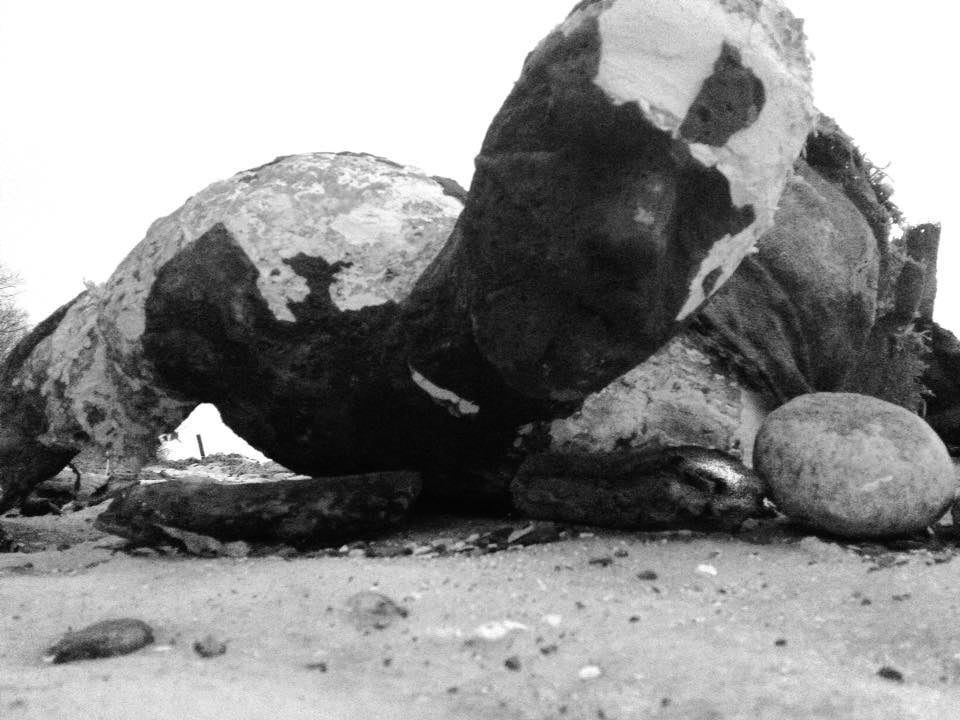
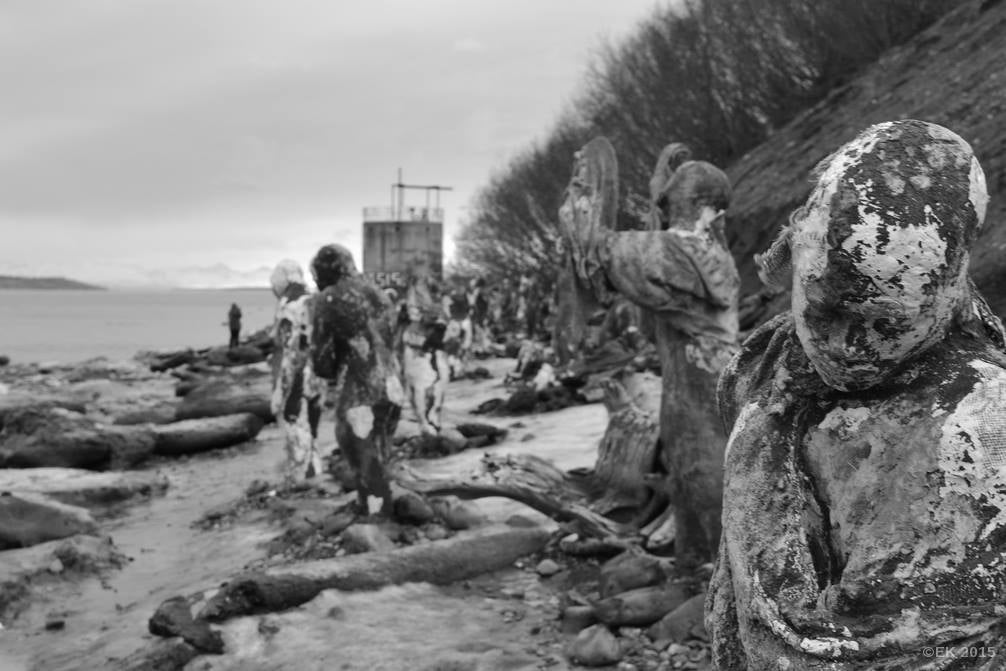
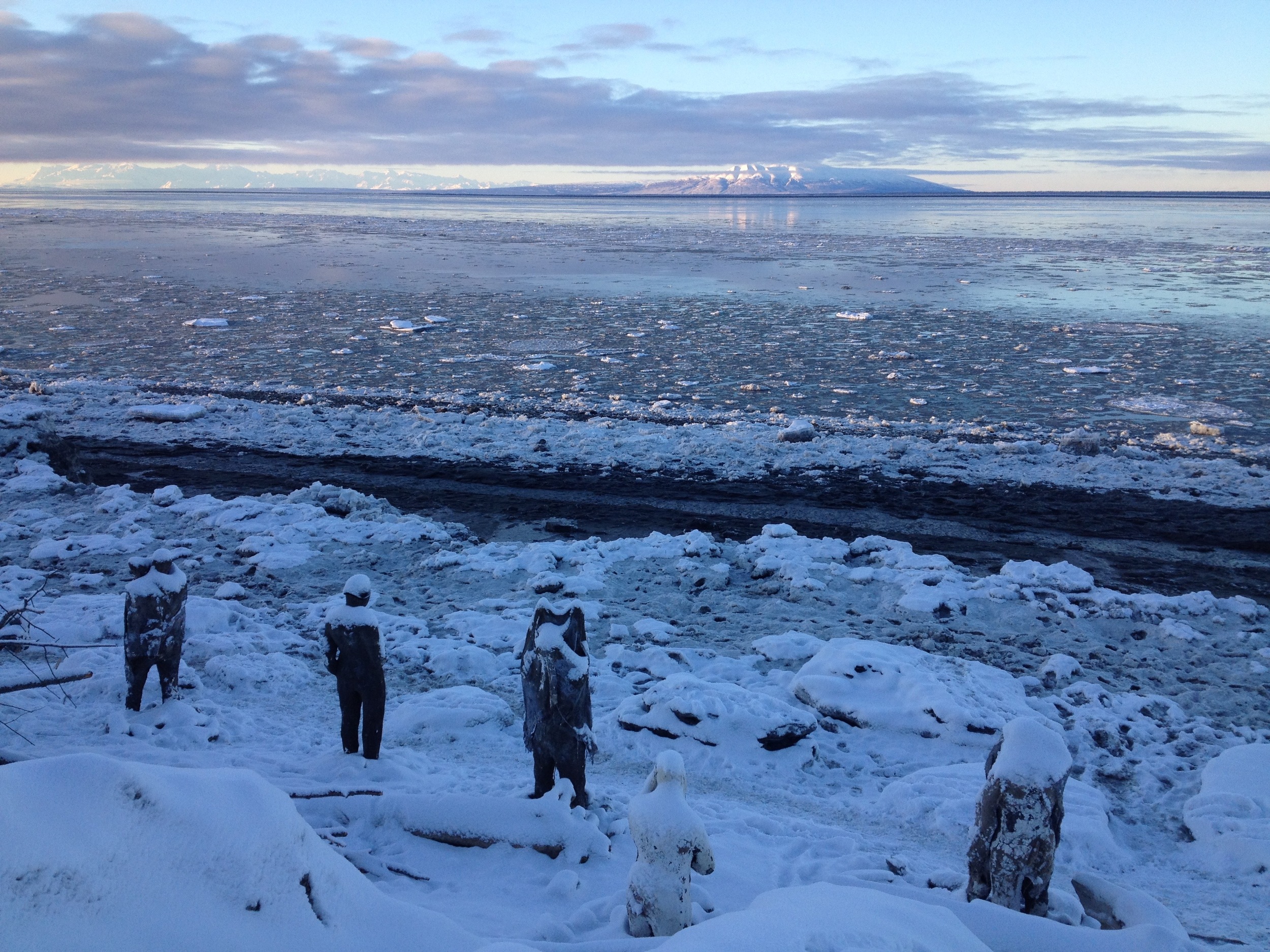




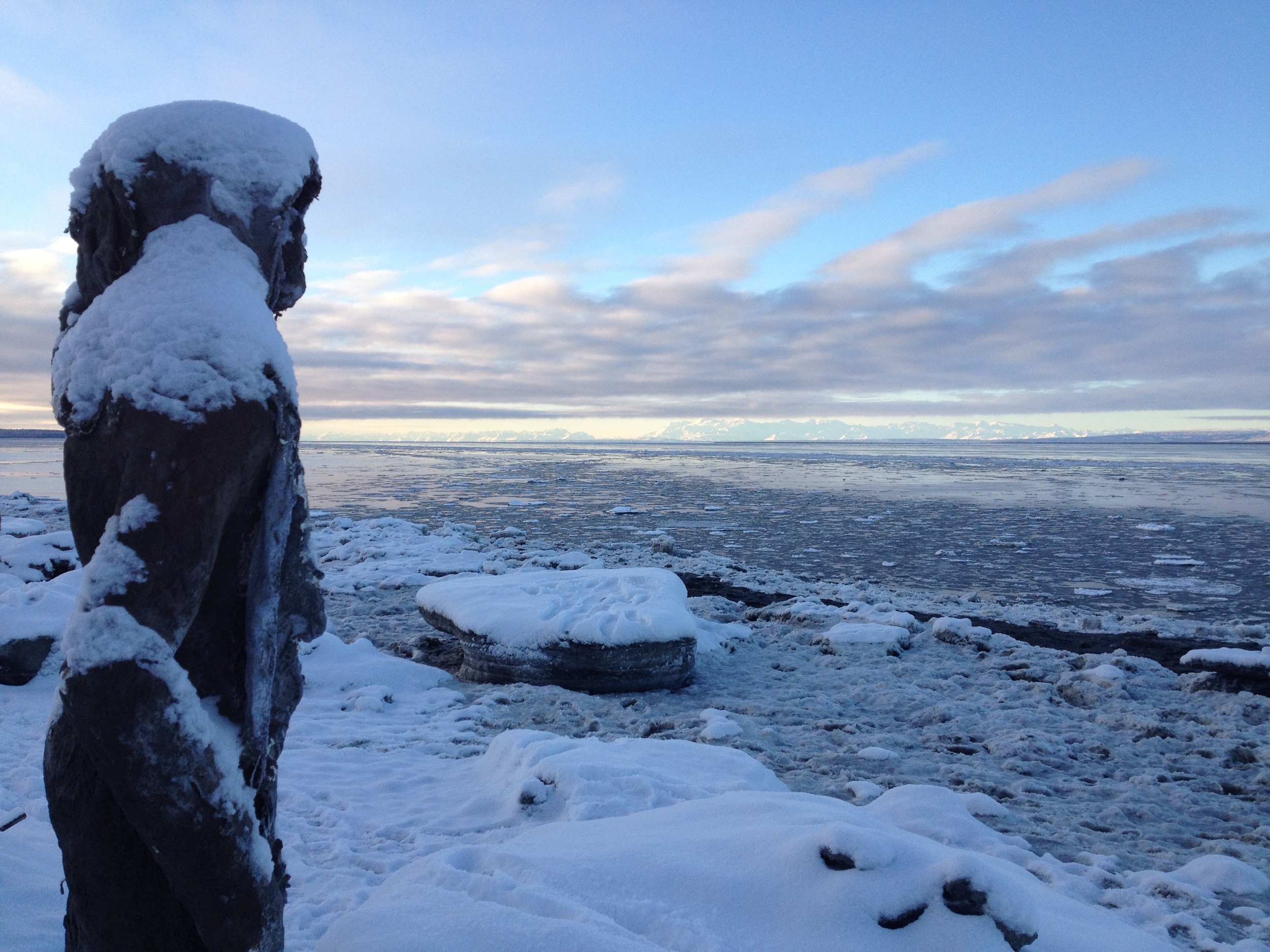

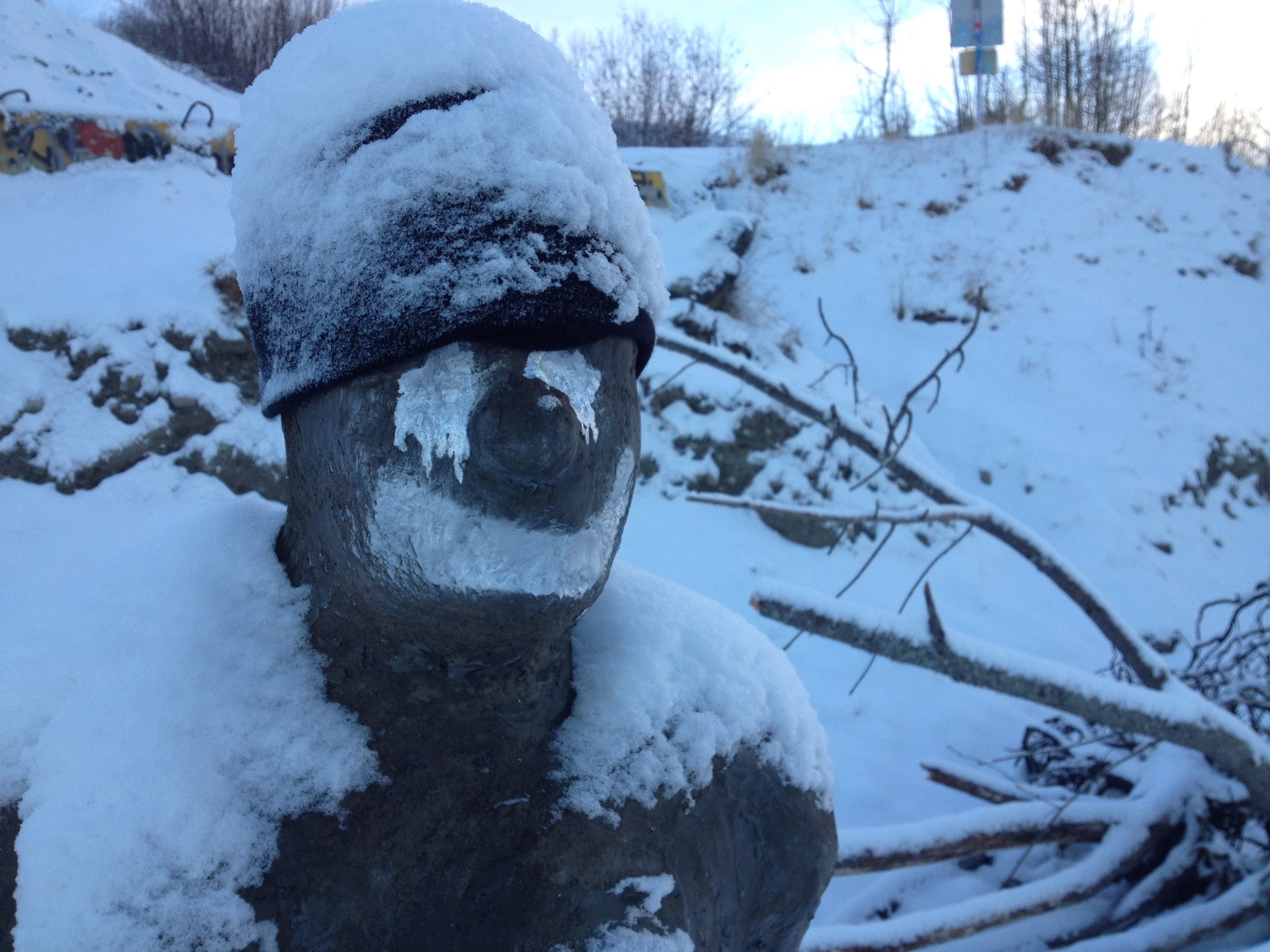

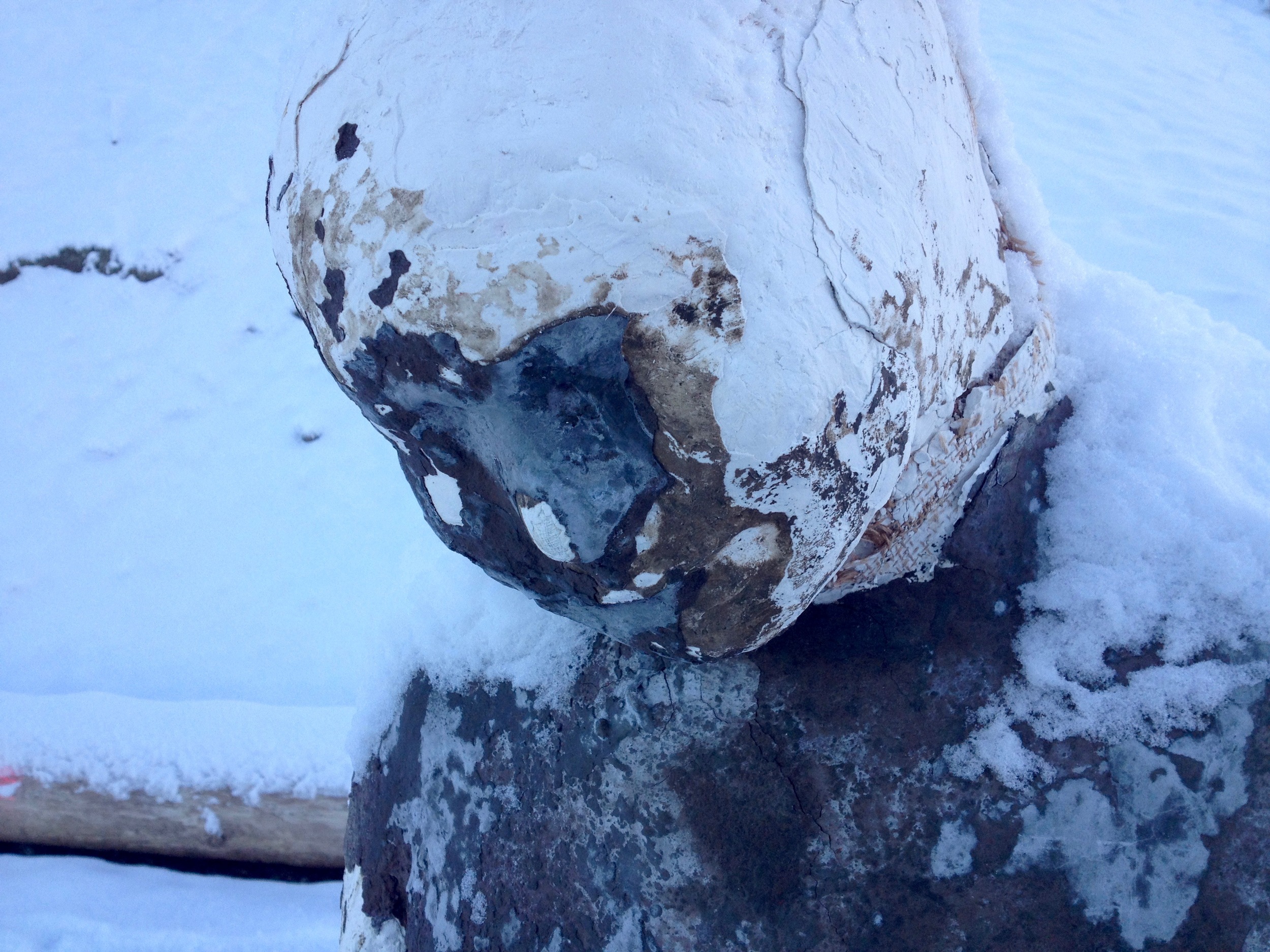



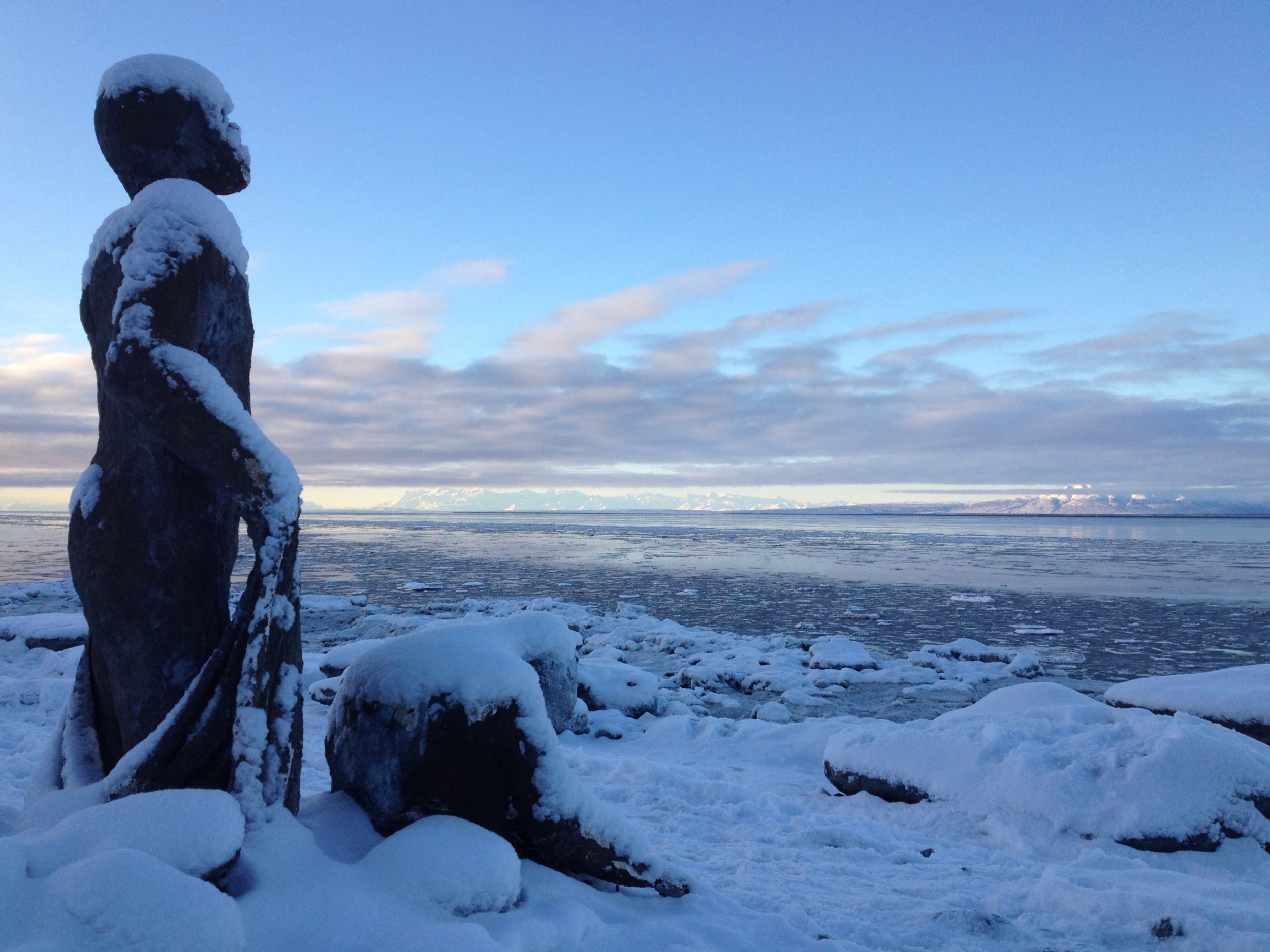
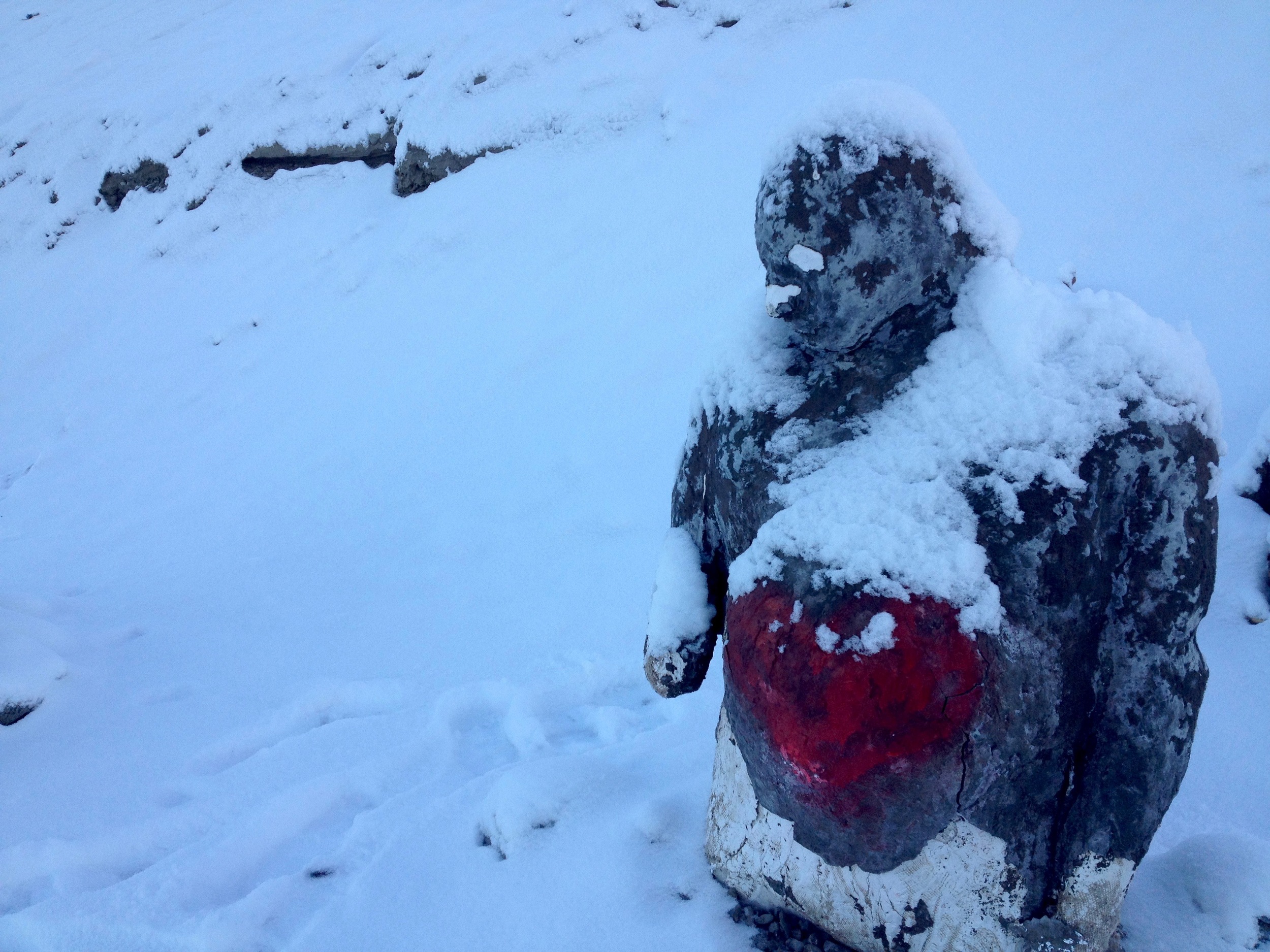

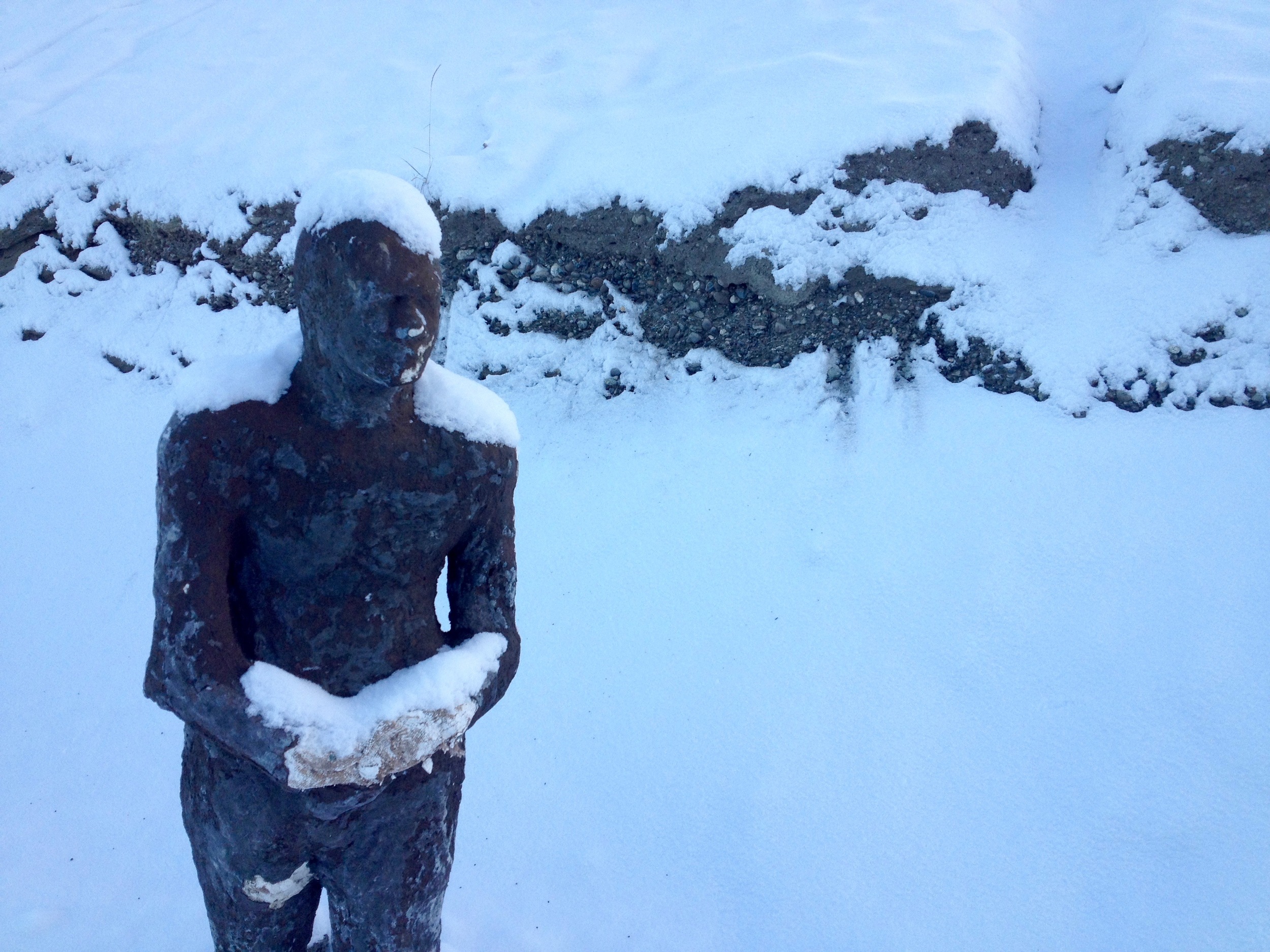


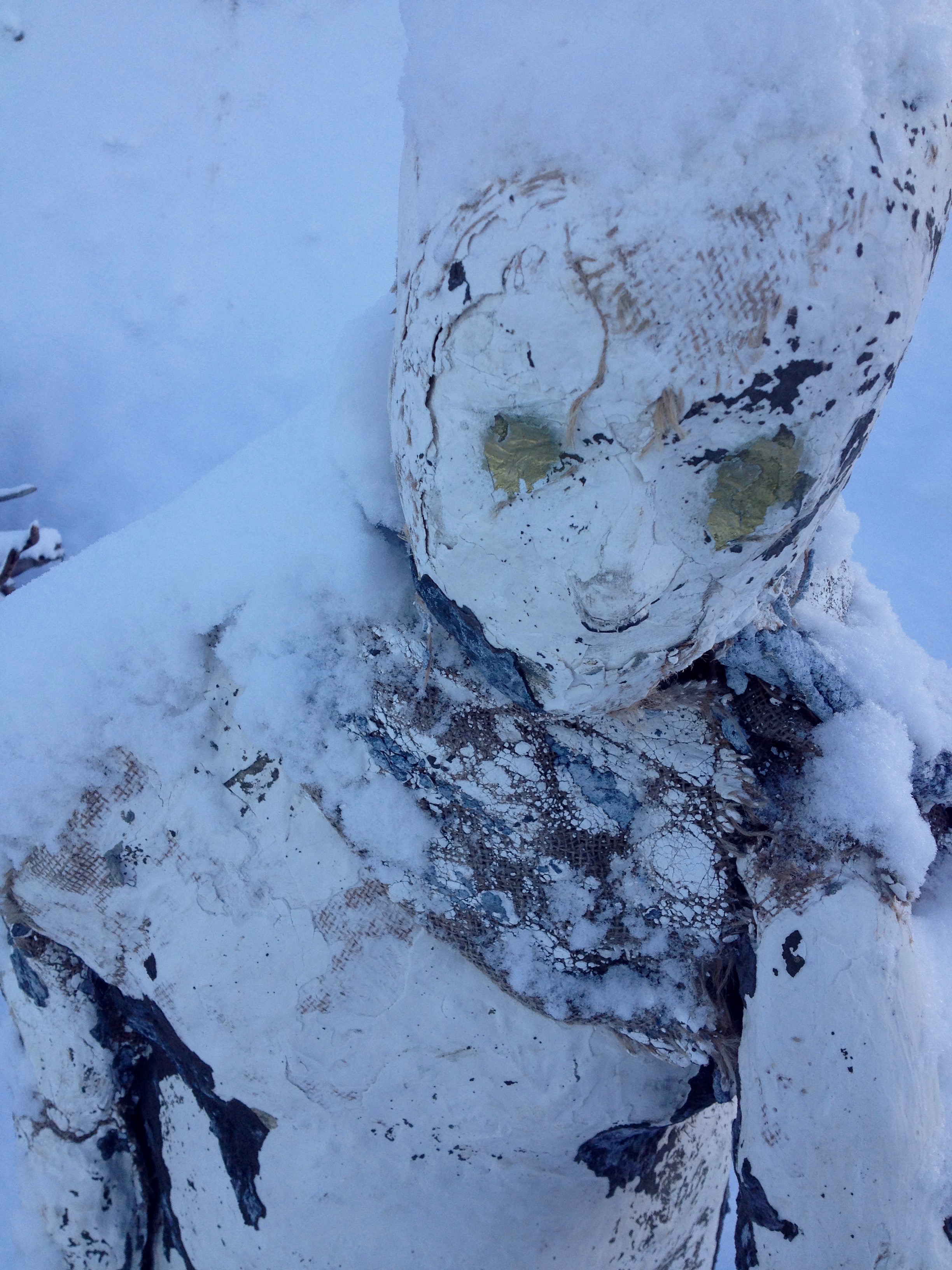
PHASE V
AN OCEAN OF ALLIES
On December 5th, and on each day after, thousands of locals and pilgrims came to look out on the creations of our Alaskan brothers and sisters. It was evidence that we are truly surrounded by allies. They came to stand witness to this self-determined landscape of fearlessness and truth built by the hands of hundreds of our brothers and sisters. They recognized the terrific power and beauty of 100Stone as something that emerged from within each of us—the marginalized and the allies. It was there in those moments that we all truly felt what this project was about—an authentic transformation of how we see ourselves and each other, a divine moment of liberation, ascension, from the stigma that is associated with the often-crippling marathon that is mental health management. The installation was born into the Alaskan community as the first public artwork of such scope and scale to address one of the most critical public health crises in our Northern home: Suicide.
See also Bob Halinen's photo story of the opening event in Alaska Dispatch News, 12/06/15.

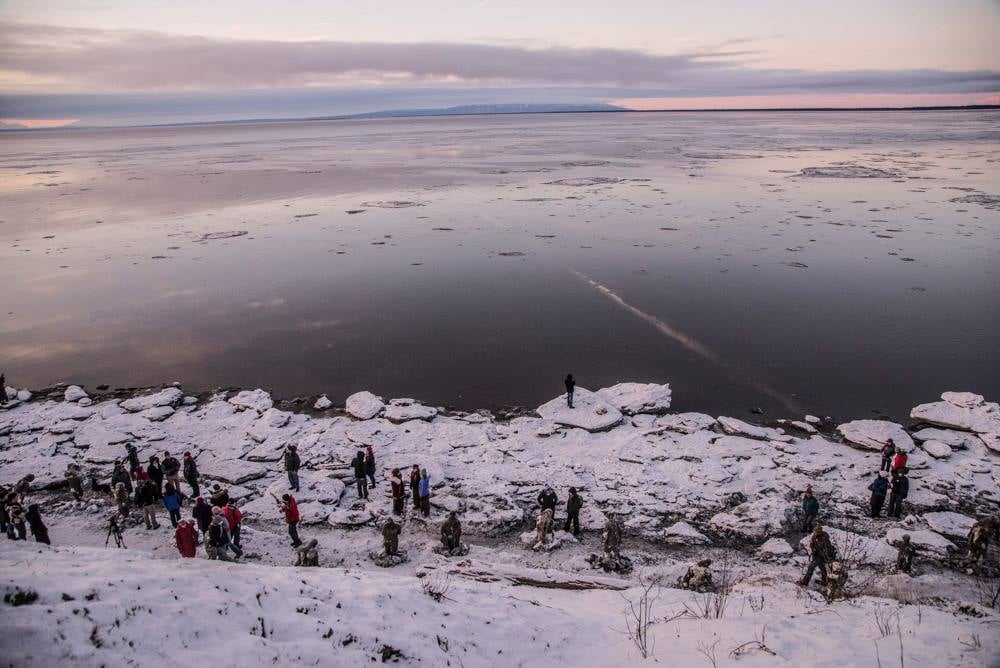
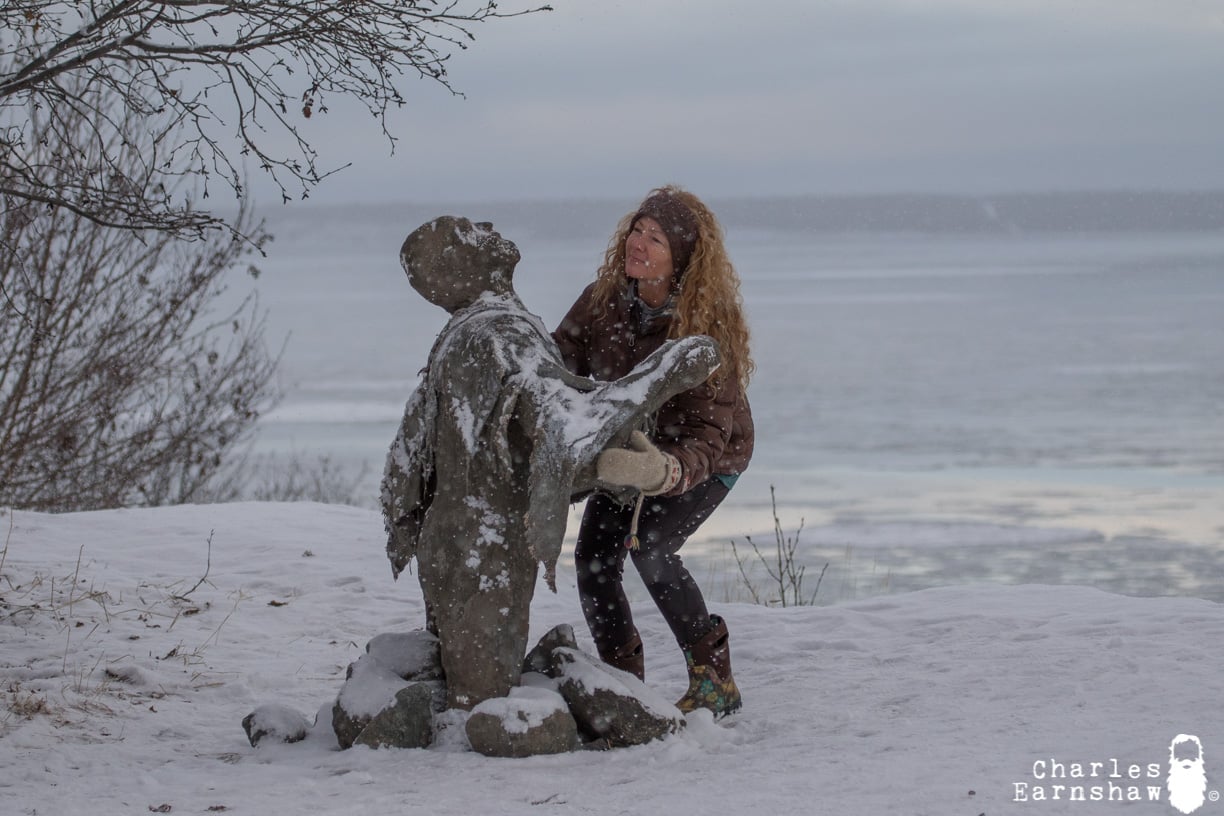
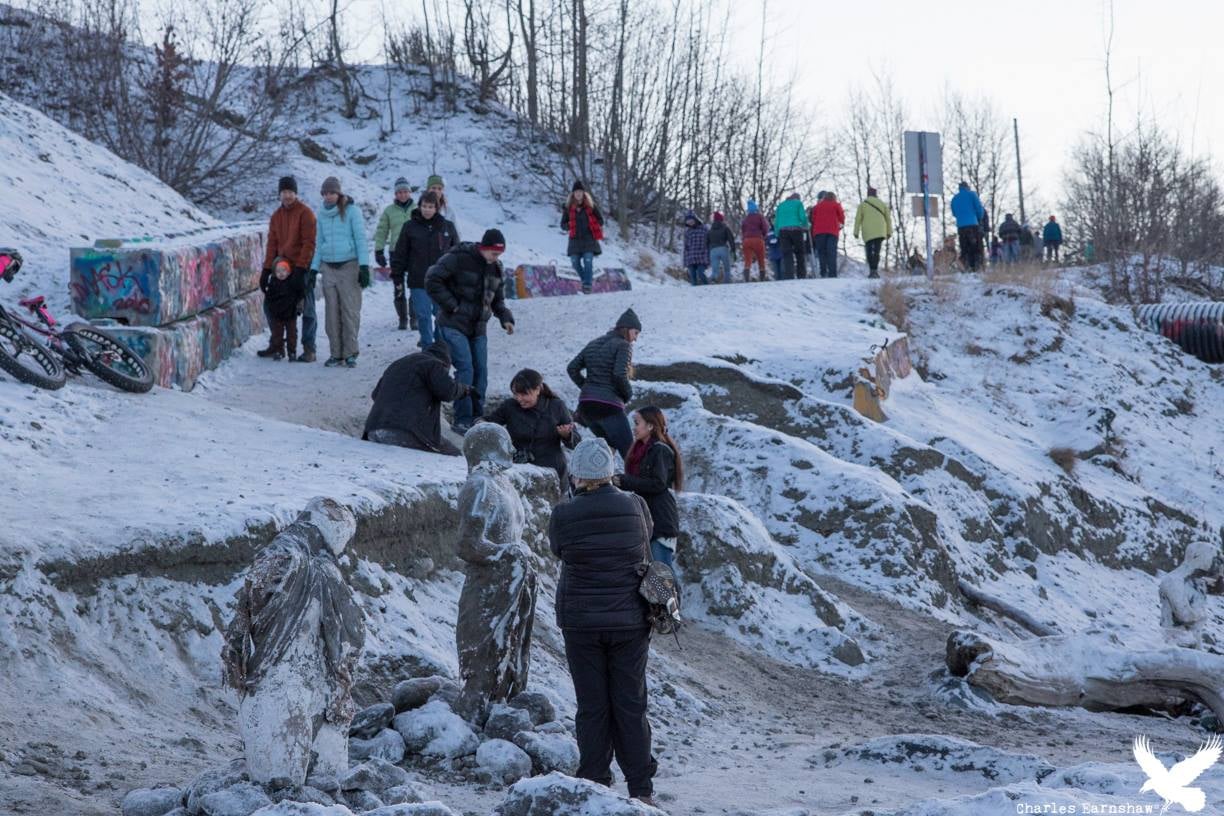
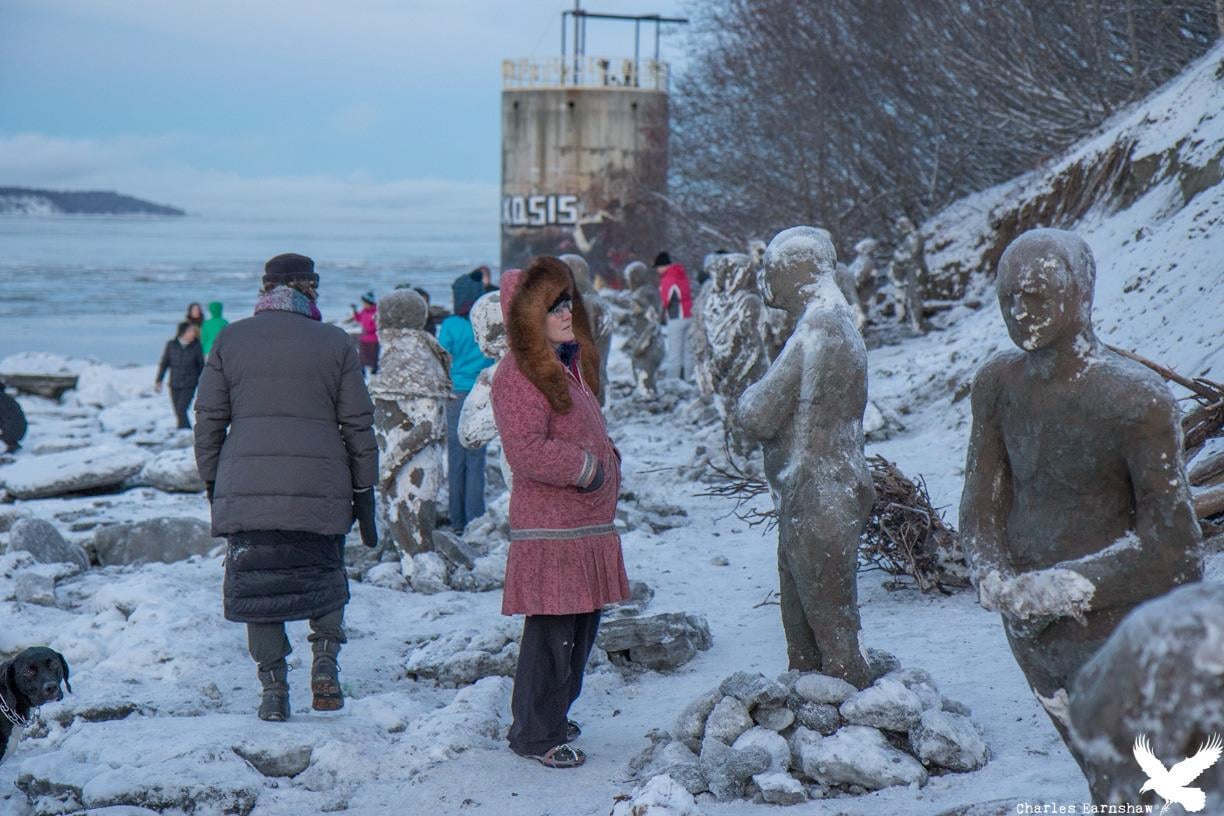
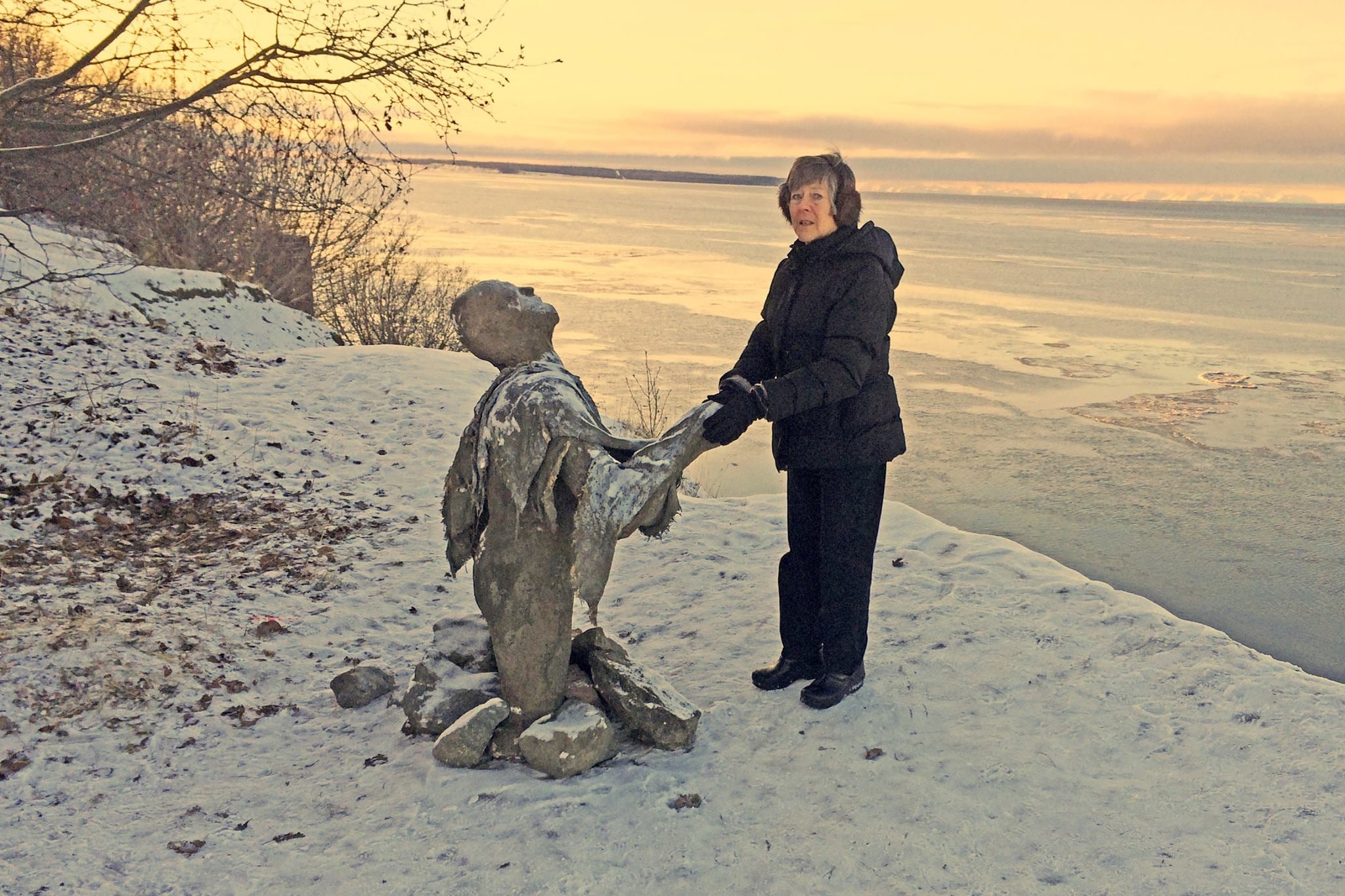
That winter thousands of viewers visited and returned to witness the evolution of 100Stone as our winter children weathered the punishing landscape of Point Woronzof. The installation took on its own story. All of life happened, as did death. The storm, a kidnapping and return of one of our Stones, vandalism evolved into voice, a two-time bluff-side rescue effort for our perched sentinel after he was tossed twice over the edge, the lighting of candles, the releasing of lamps, the placing of flowers, the hiding of letters, and a memorial built upon the life-blood of a twenty year old mother murdered at the foot of a Stone.
School groups and treatment centers went to see these sculptural stories. The installation became a platform of discussion, where one could find the courage to discuss their interpretations instead of their own vulnerabilities, and perhaps begin on the path of personal healing. Fathers came to teach their sons about the diversity of human experience. Families came to remember their own lost. People came to rage at their own reflections. The beach was a sanctified space.
In All Our Winter Children: 100Stone and the ways we are humaned, Lu-Ann Haukaas Lopez (Anchorage Press, 12/10/15) uses her remarkable voice in the poetic telling of what she witnessed on that icy beach:
In 100Stone: Anchorage art installation makes a powerful statement about suffering, caring, Mary Katzke of AffinityFilms, Inc. (Alaska Dispatch News, 12/09/15) described how she, and our community, has been forever changed:
PHASE VI
THE SURVIVORS
The Stones stood until the following April, when we were satisfied that our voices were heard.
It was expected that more than half of the installation would be swallowed by spring. The Stones were intentionally built to show the effects of the tides, ice and weather at an accelerated rate. The plaster-water ratios were intentionally mis-portioned during production, the concrete was poorly mixed, the cement exterior was unsealed. Vulnerability was built-in. However, by spring, fifty-four Stones still stood, weathered and affected, but whole. The team was faced with the dilemma of what to do with those that persisted, and the thought of them becoming landfill was repulsive.
That summer, fifty-four Stones filled half of Davies' urban back yard waiting for their next chapter. Overwhelming community concern for their wellbeing, desire to keep them on permanent public display, the impulse to possess them, and a profound sense of gratitude and indebtedness on behalf of the team—all became the cornerstones for the Stone's new lives. The team committed that summer to their restoration and a more personal presentation.
In the winter of 2016-17, forty-five of the surviving Stones went on display in the gardens of Alaska Pacific University. It was a farewell to the thousands of visitors that had come to see them as family before they were returned to their birthplaces across Alaska. At the closing of the installation, thirty-eight statues and the stories they represent were reclaimed by those who loved them, built them and identified with them. Some are now on display in public spaces, some are private. The remaining seven are in the personal garden of lead artist, Sarah Davies.
THE END
PAYING IT FORWARD
Even after 100Stone Project's conclusion and the farewell in the APU gardens, 100Stone partners and community champions continued to grow. Through the amplification of the project's message by entities such as BuzzFeed, Hyperallergic, Upworthy, Recover Alaska, the Emmy Awards, Alaska Public Media, Midas Well Films, and all our visitors, a web community of thousands of viewers and followers emerged. 100Stone Project became a creative movement.
With every individual, family and group that visited the icy beach of Point Woronzof and the winter gardens of Alaska Pacific University, the stories of 100Stone transmuted to those of true power. They became platforms of introspection and inter-family communication. The opportunity to relate to difficult truths in sanctified spaces brought an opportunity for intimate, life-sustaining community discussion. As each person formed their own relationship to 100Stone the threads of truth, humanity, resilience and peace were woven through us all into our families and communities.
In January of 2018, in partnership with the Alaska Humanities Forum, Sarah Davies founded Human:ties, a fund dedicated to the promotion of socially engaged art in Alaska, and the continued exploration of the intersection of art and public health. That fall, $10,000 was raised by the sale and sponsorship of the remaining Stones of the 100Stone Project, and paid forward to a new project that addresses issues surrounding homelessness in Alaska, lead by artists Ryan Romer and Jimmy Riordan. That project is called Home.
#wearelivingart
Collected social media images from 11/21/15 - 4/09/16
